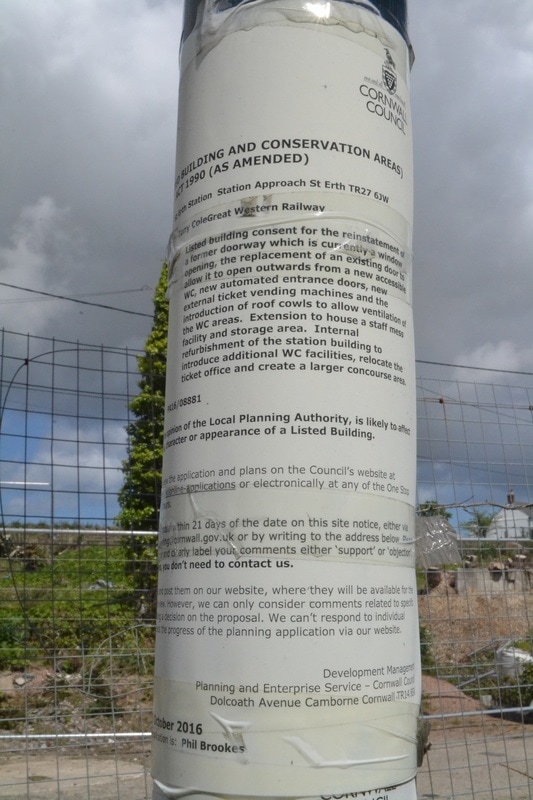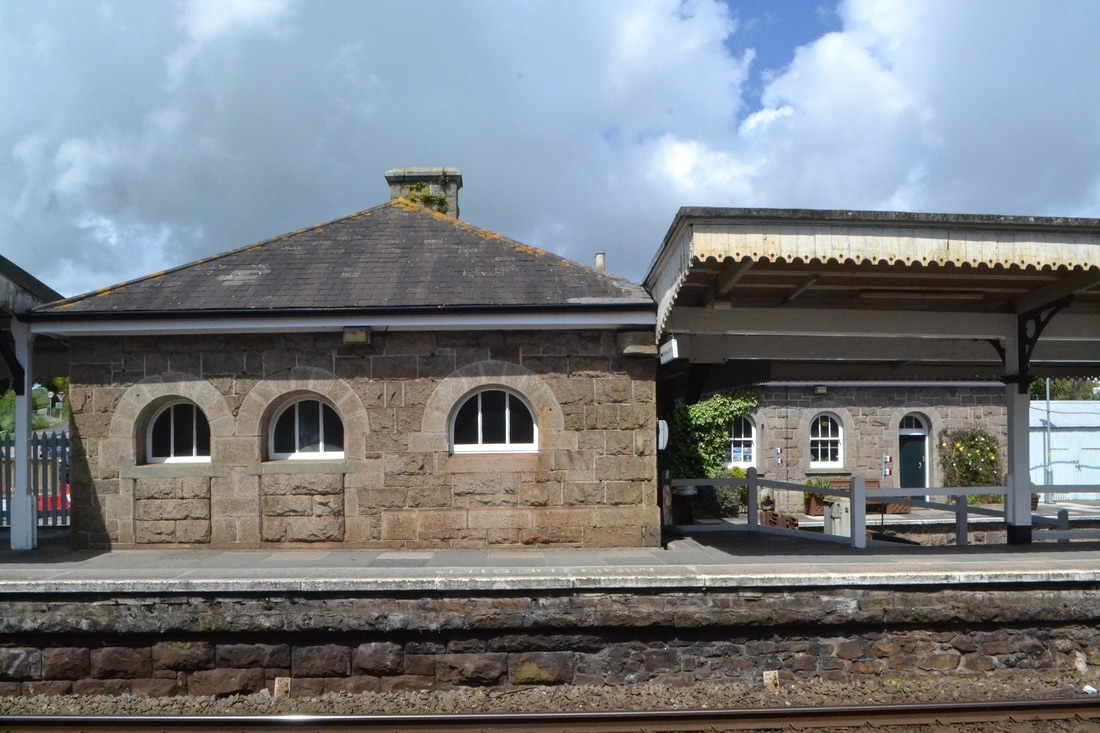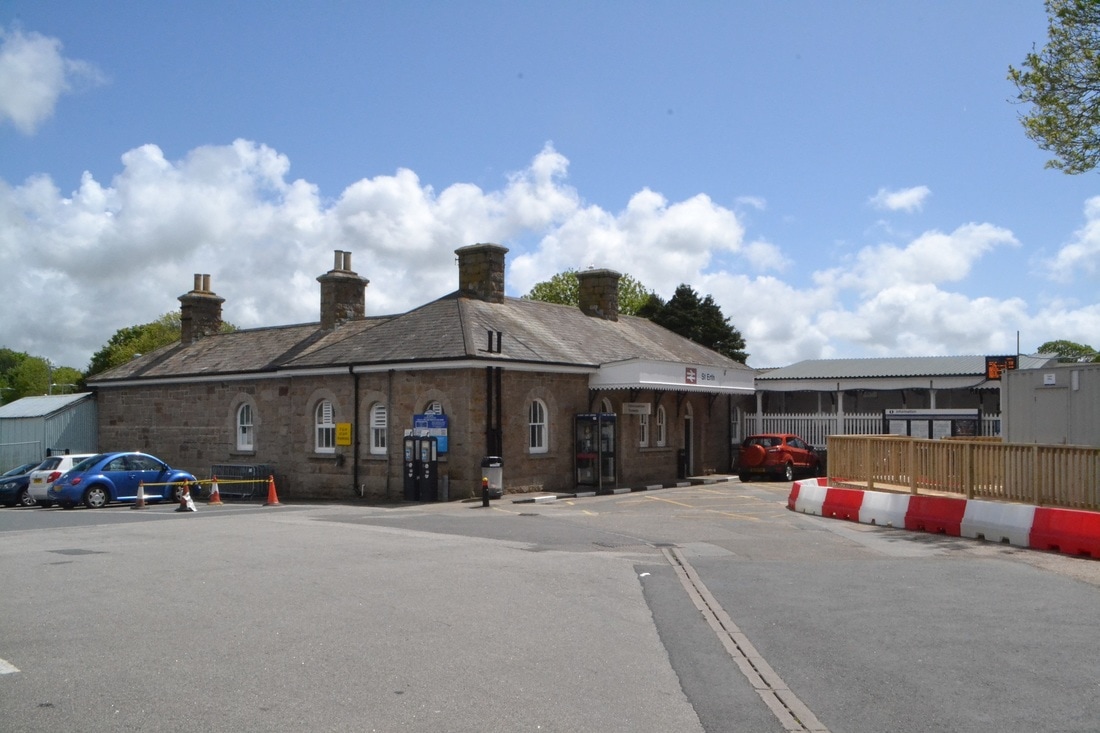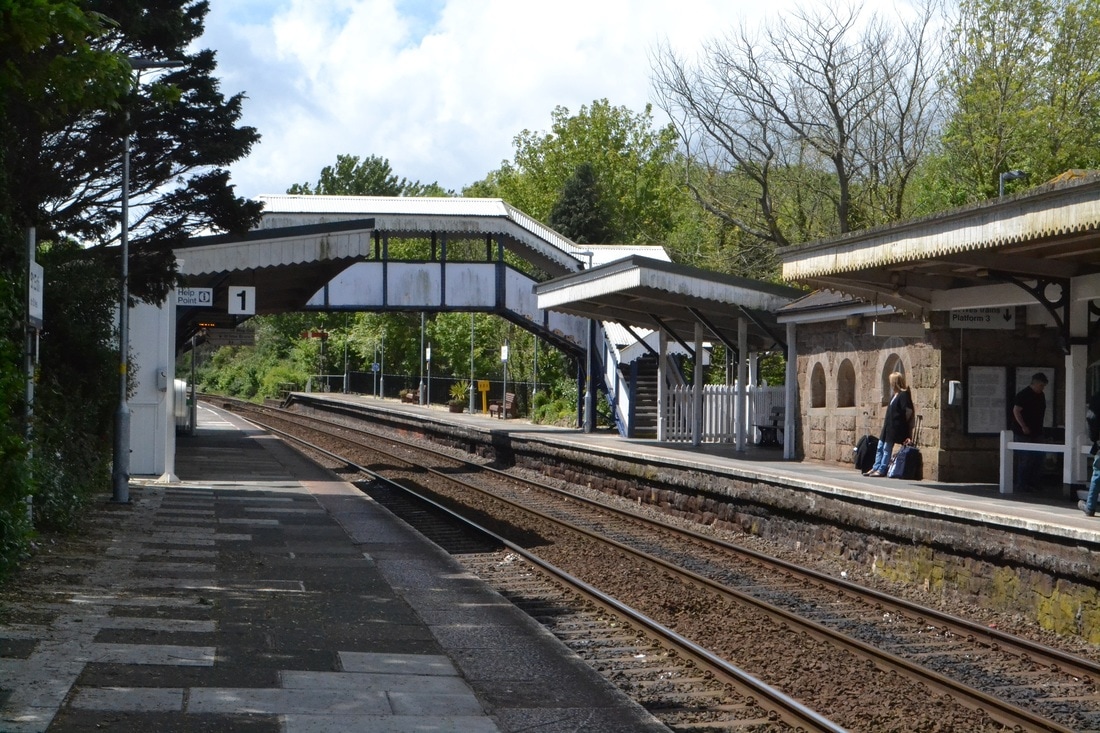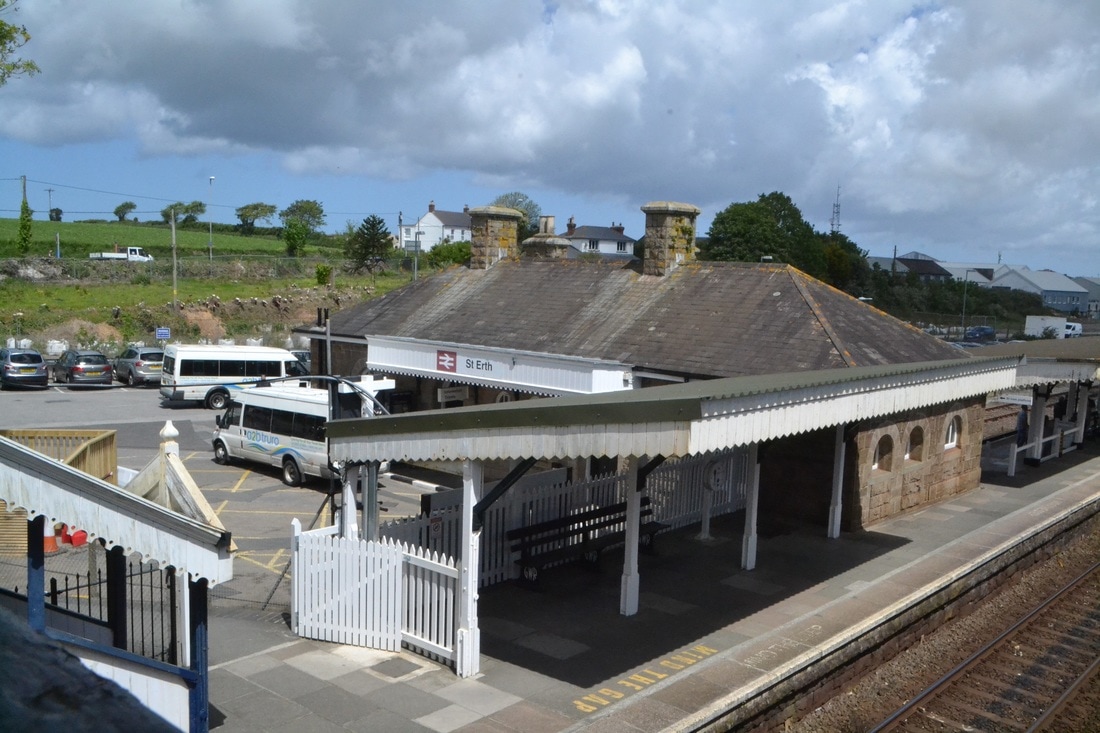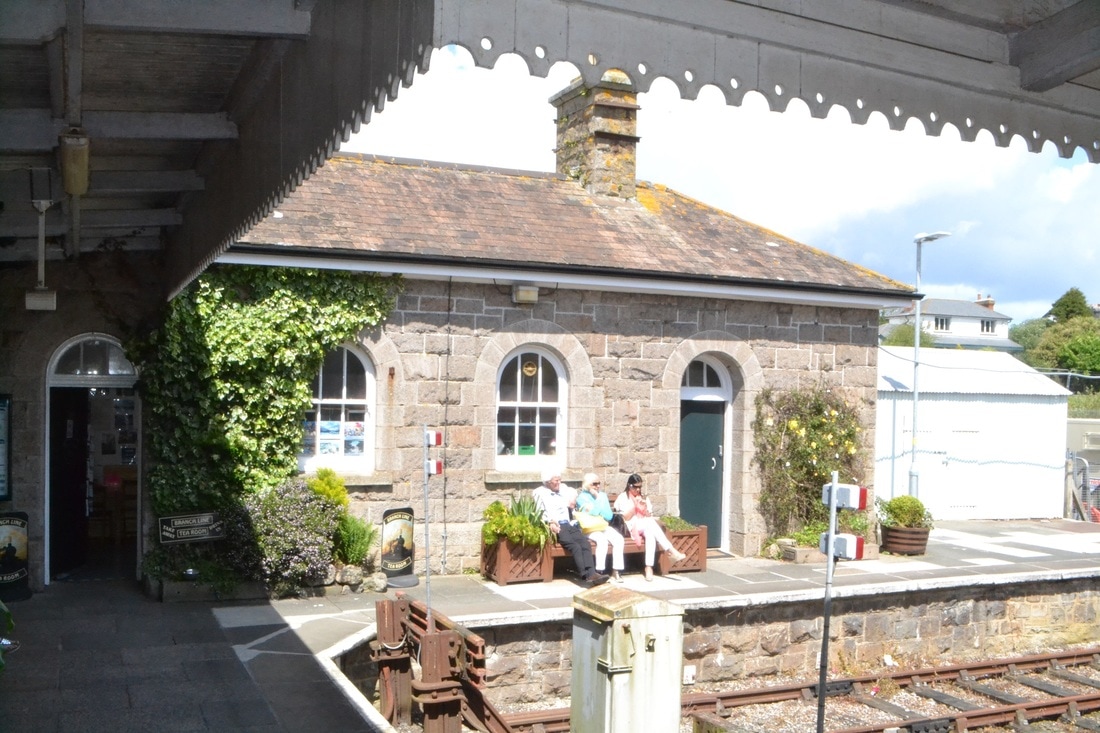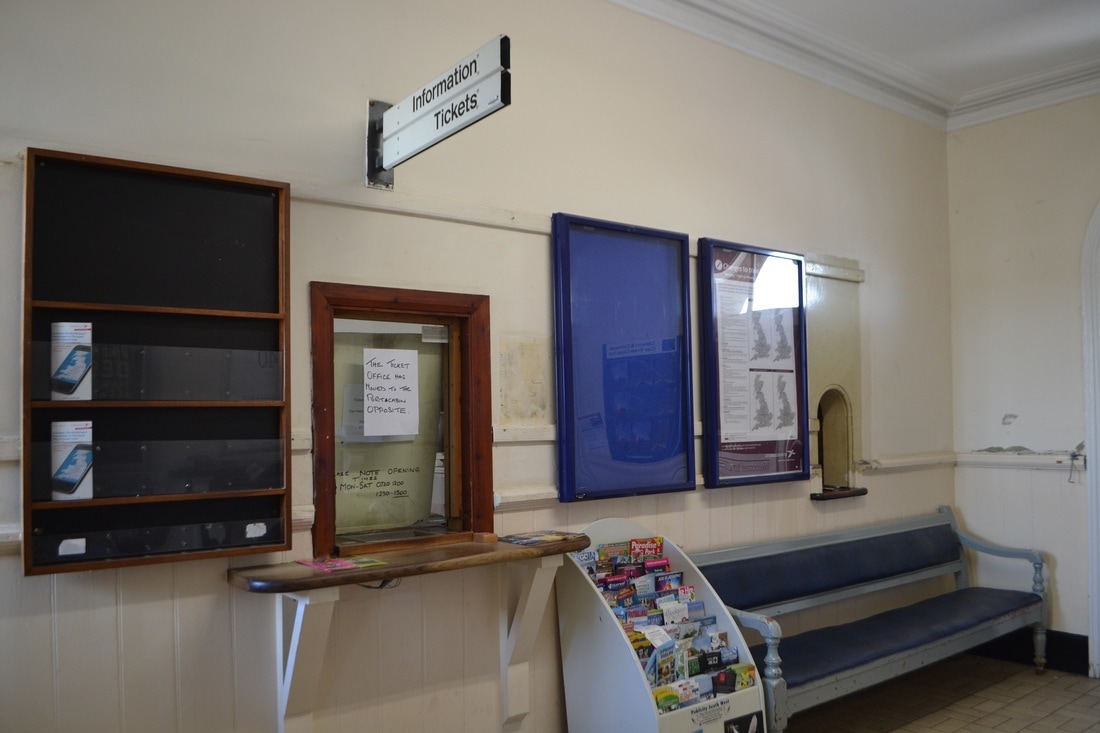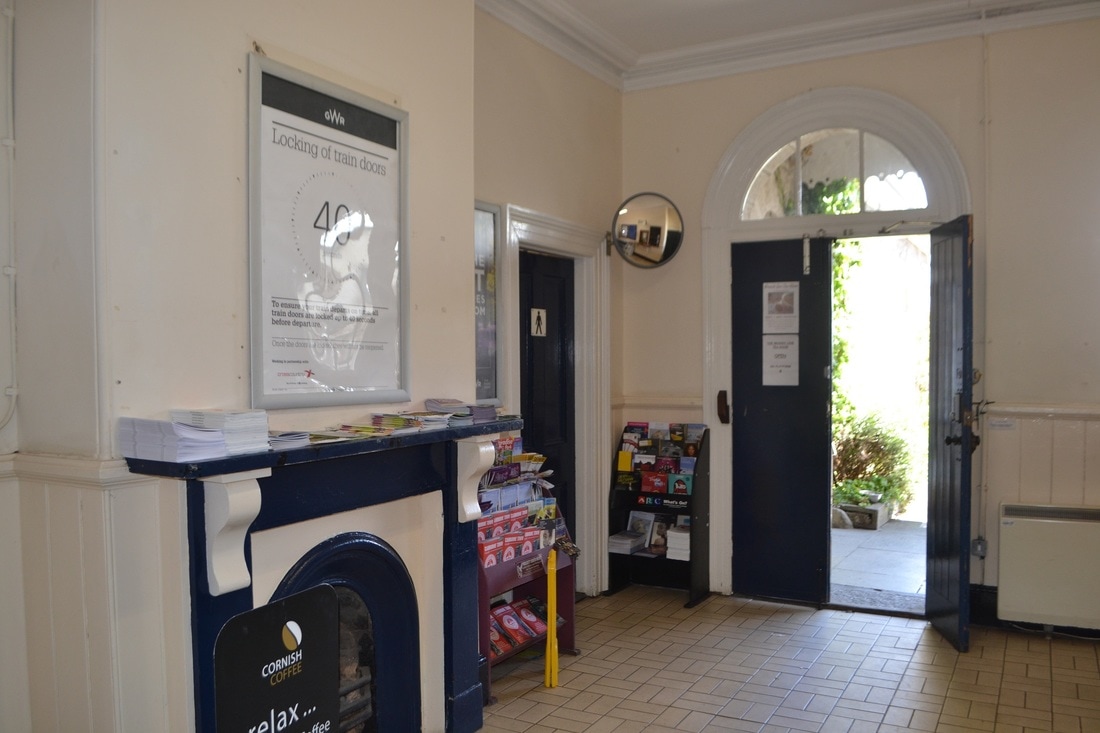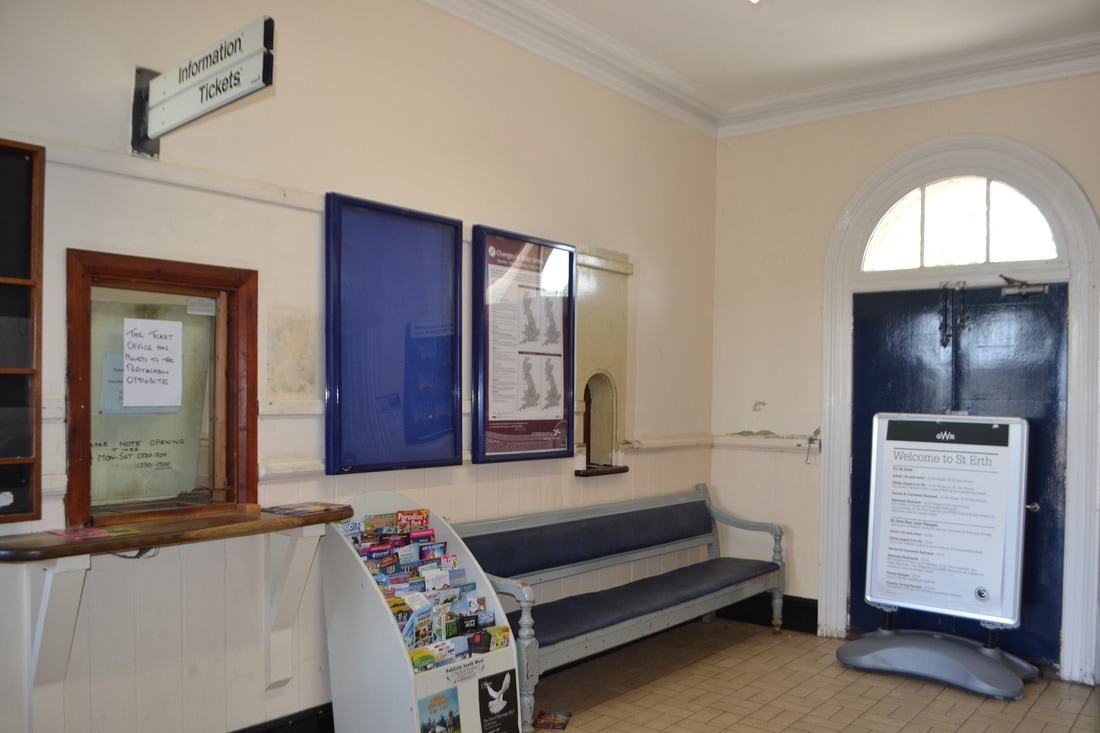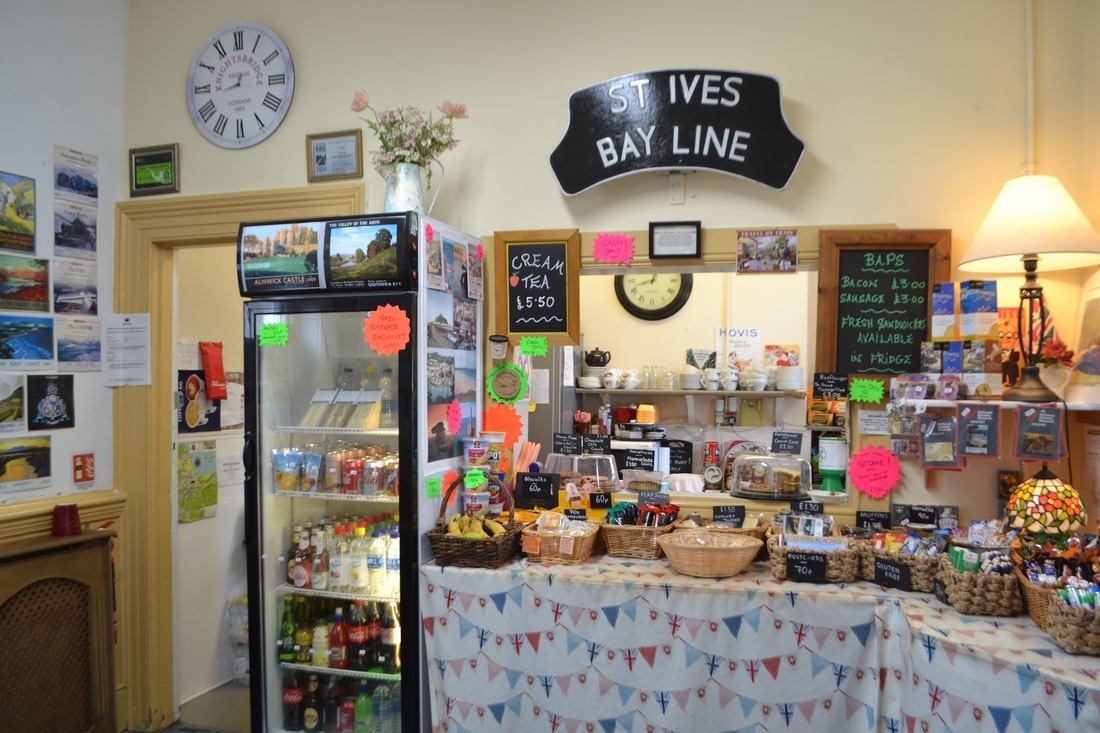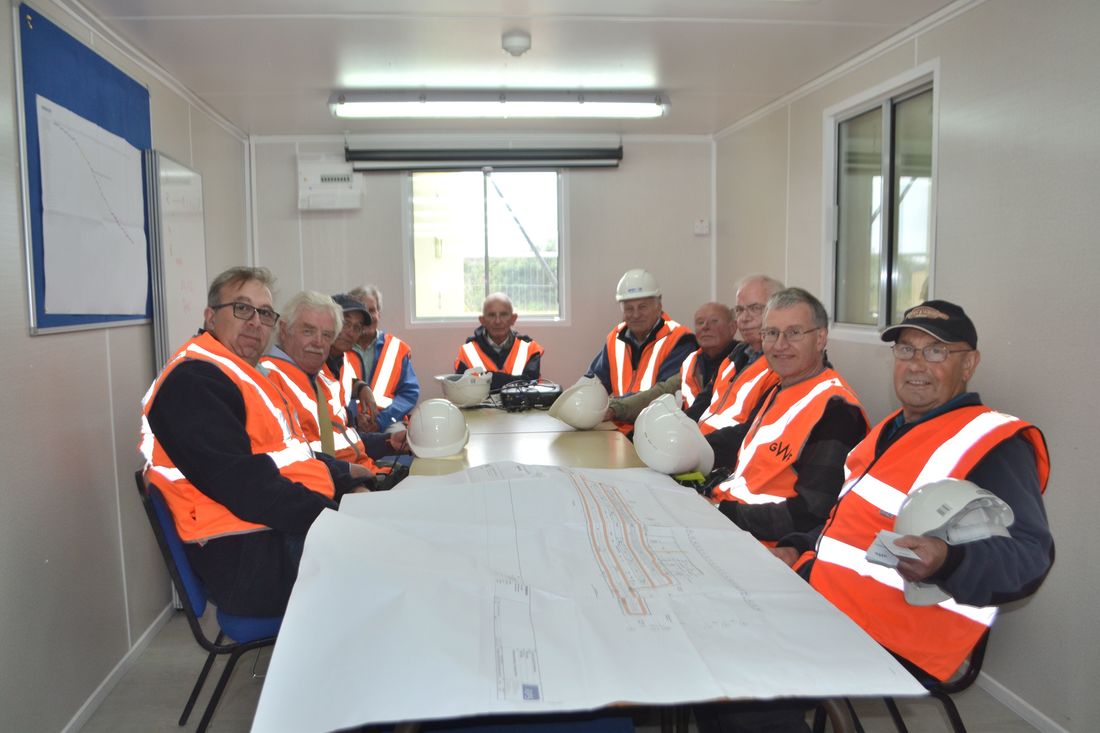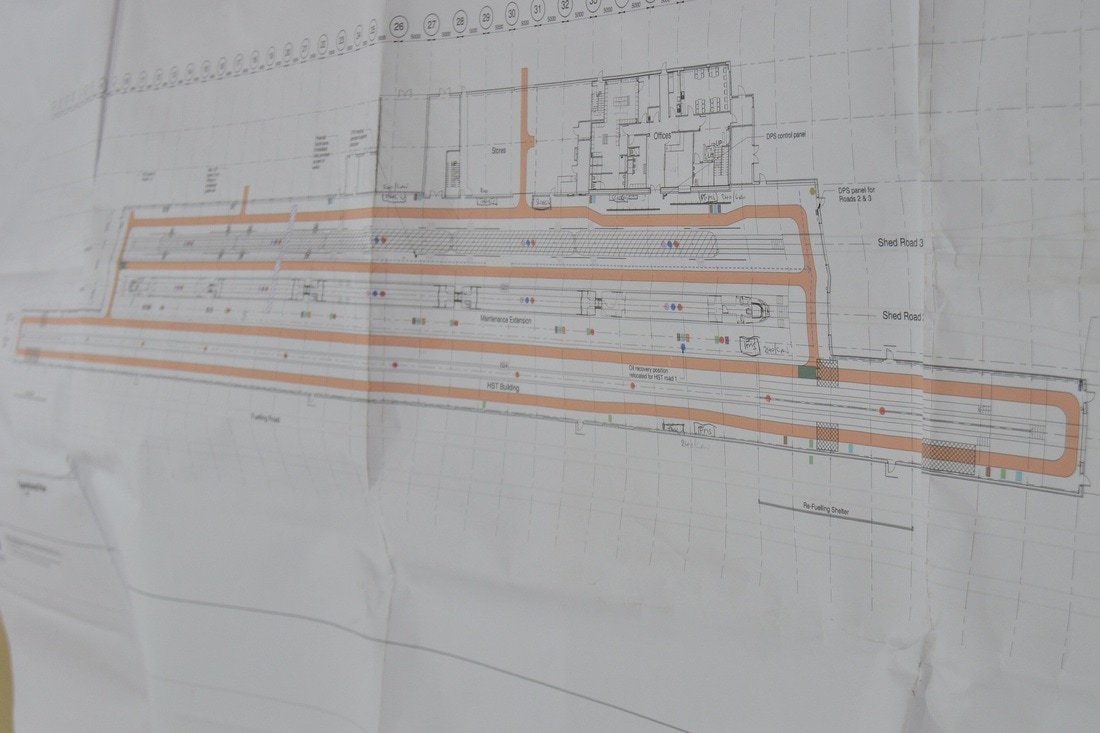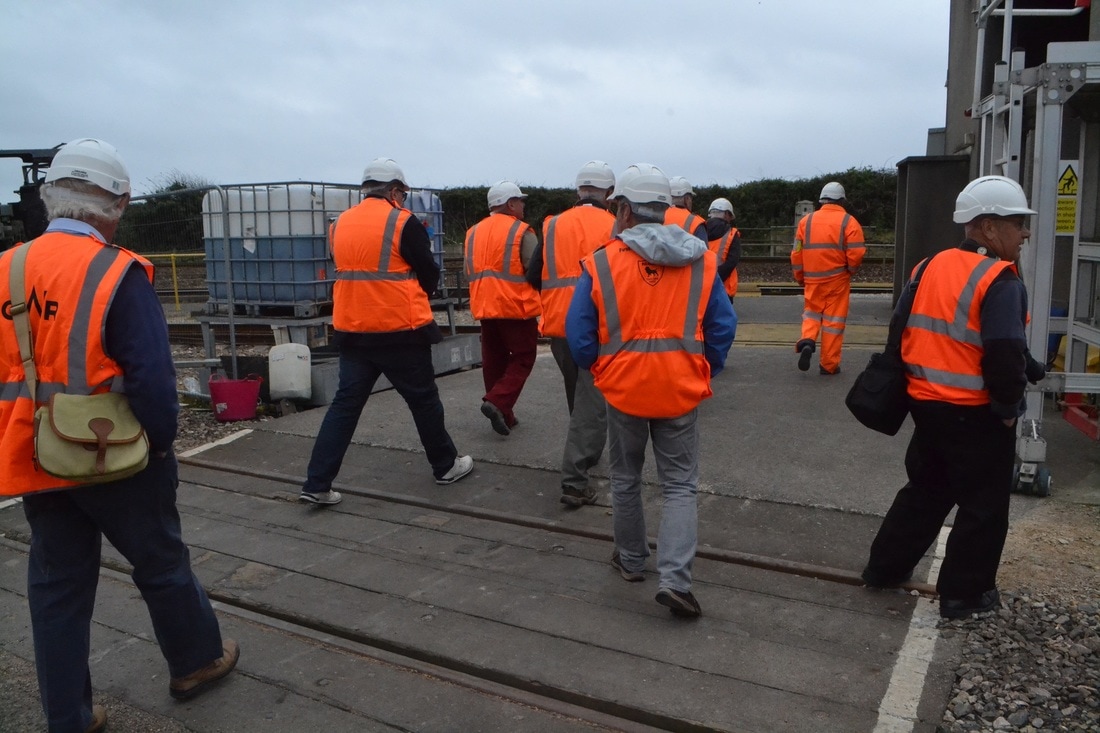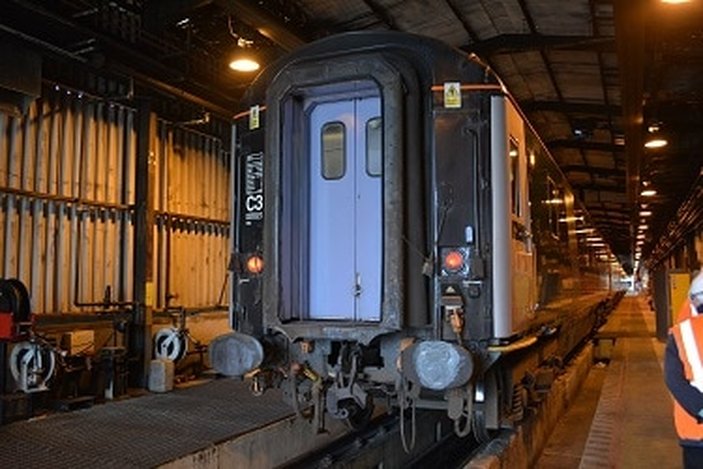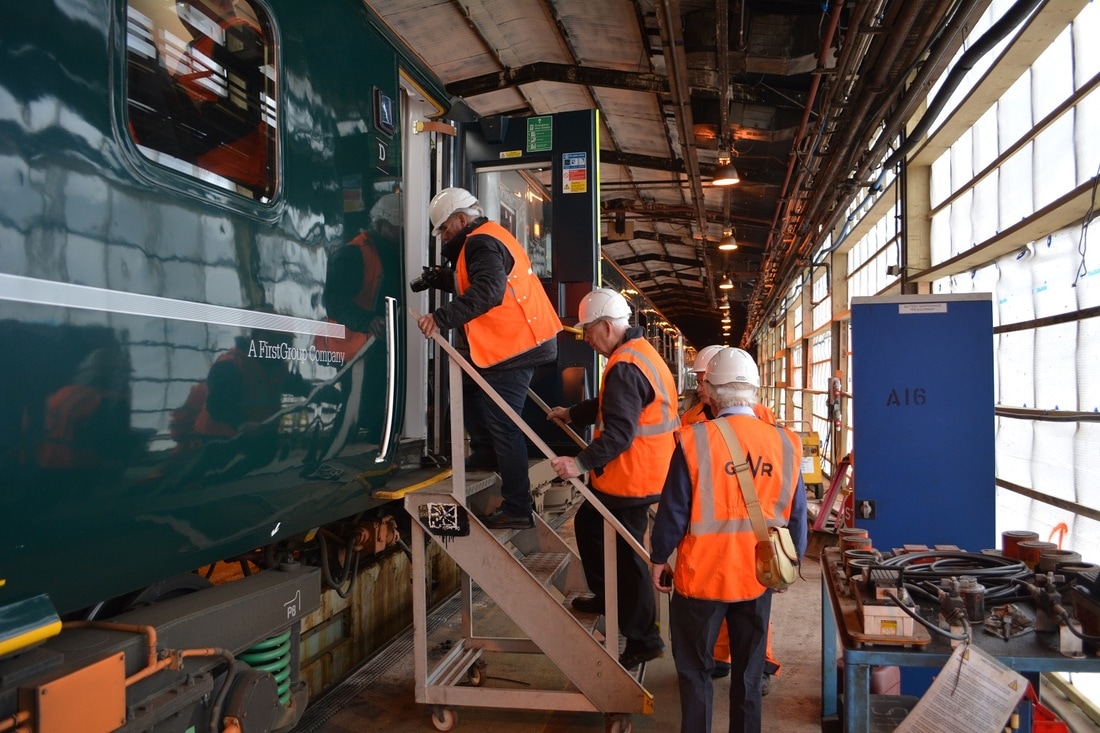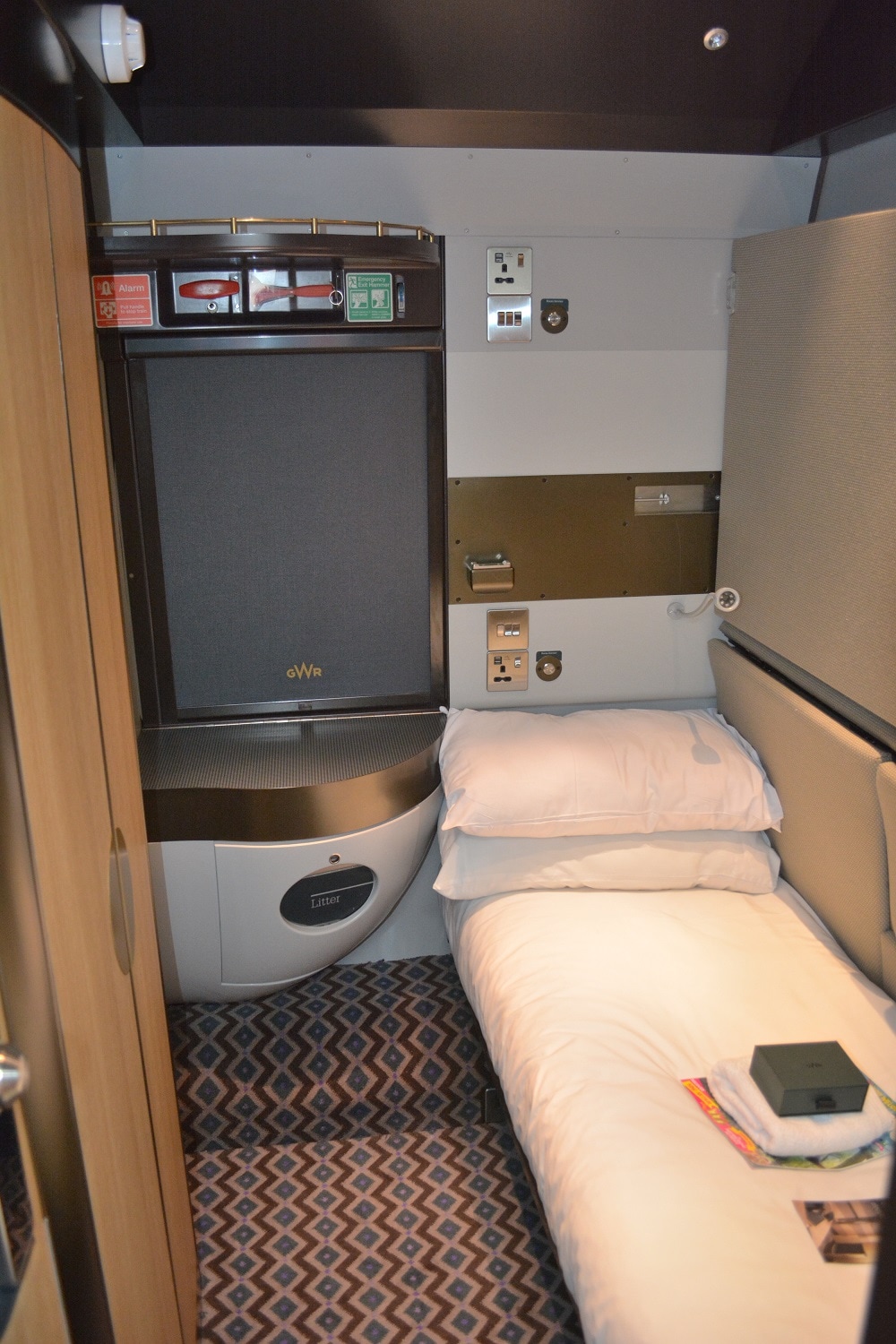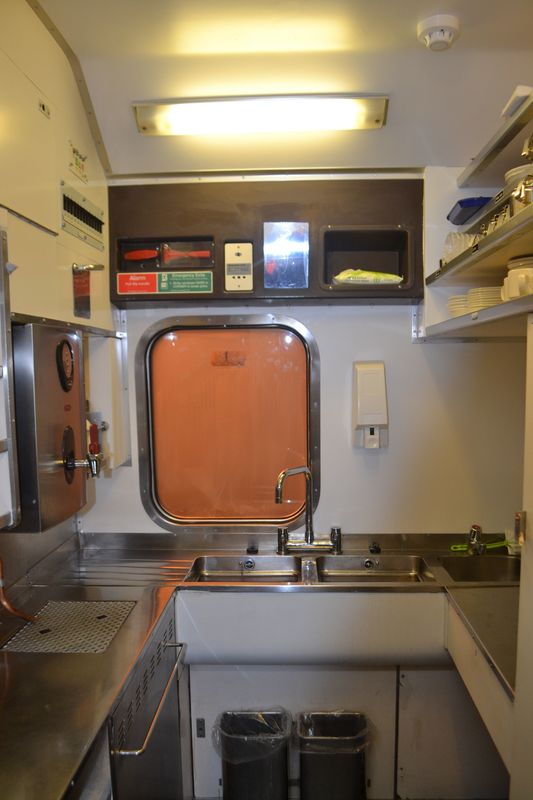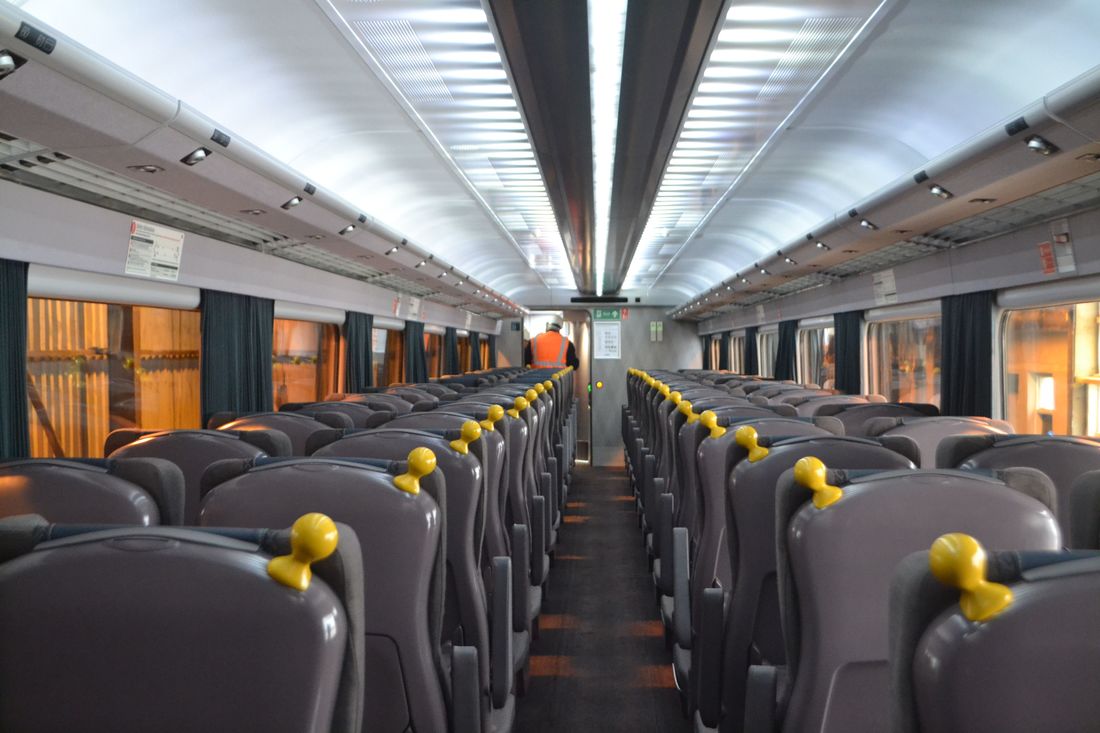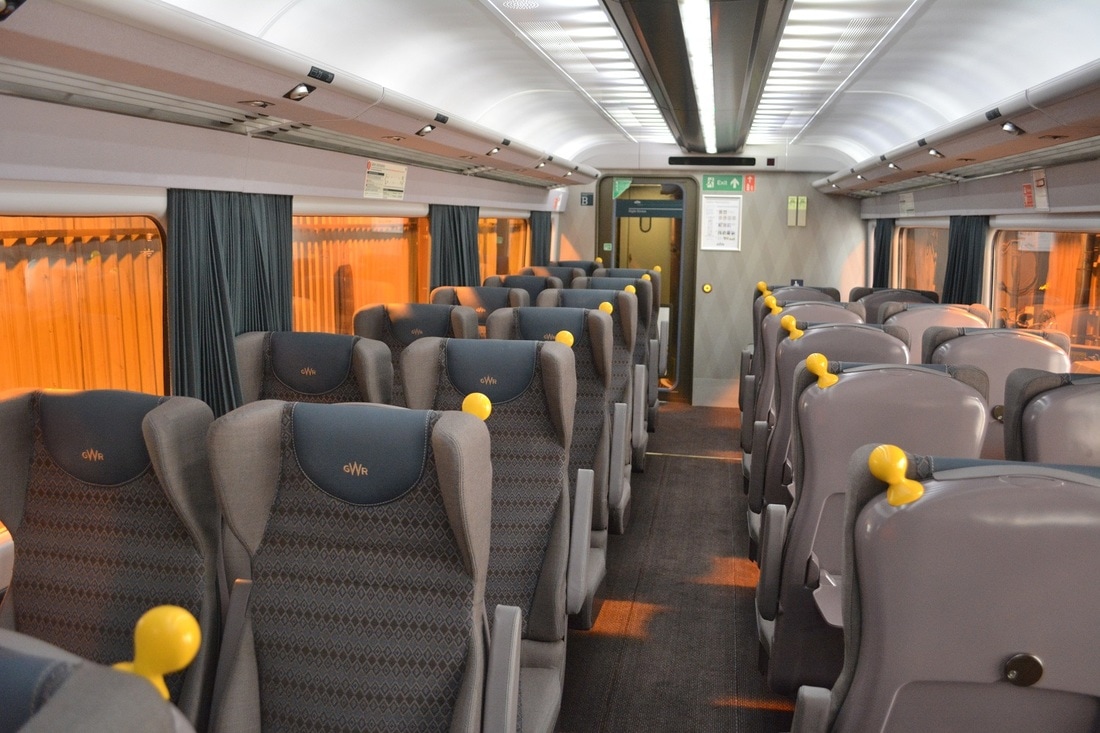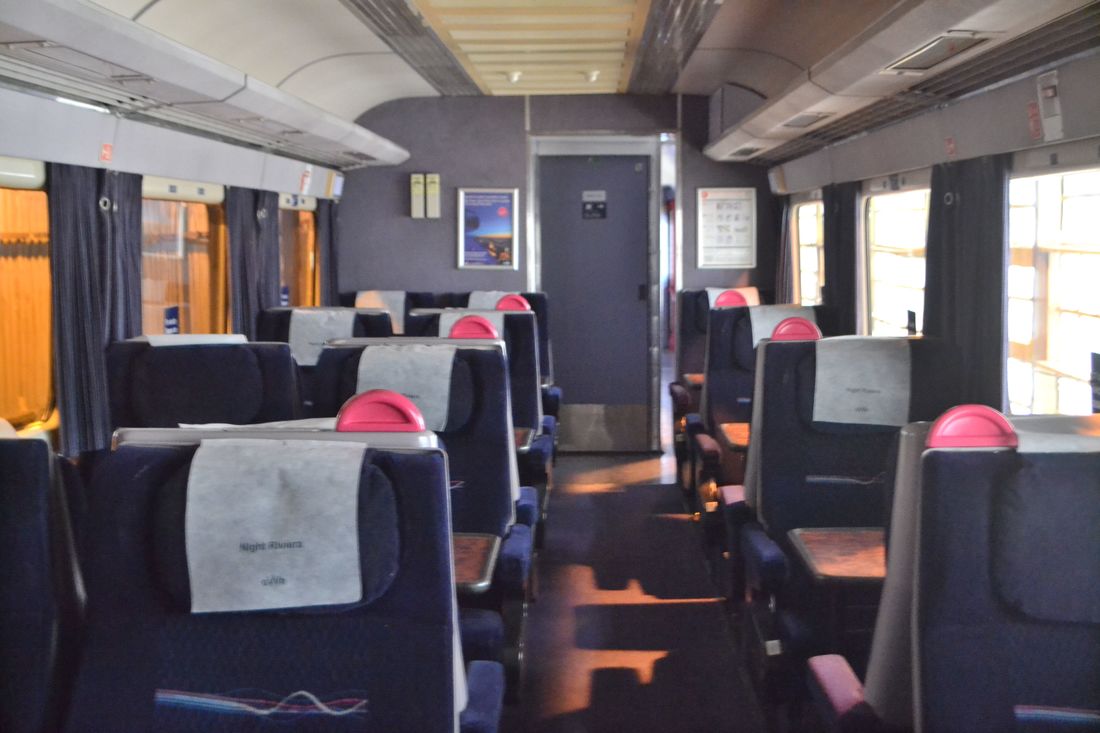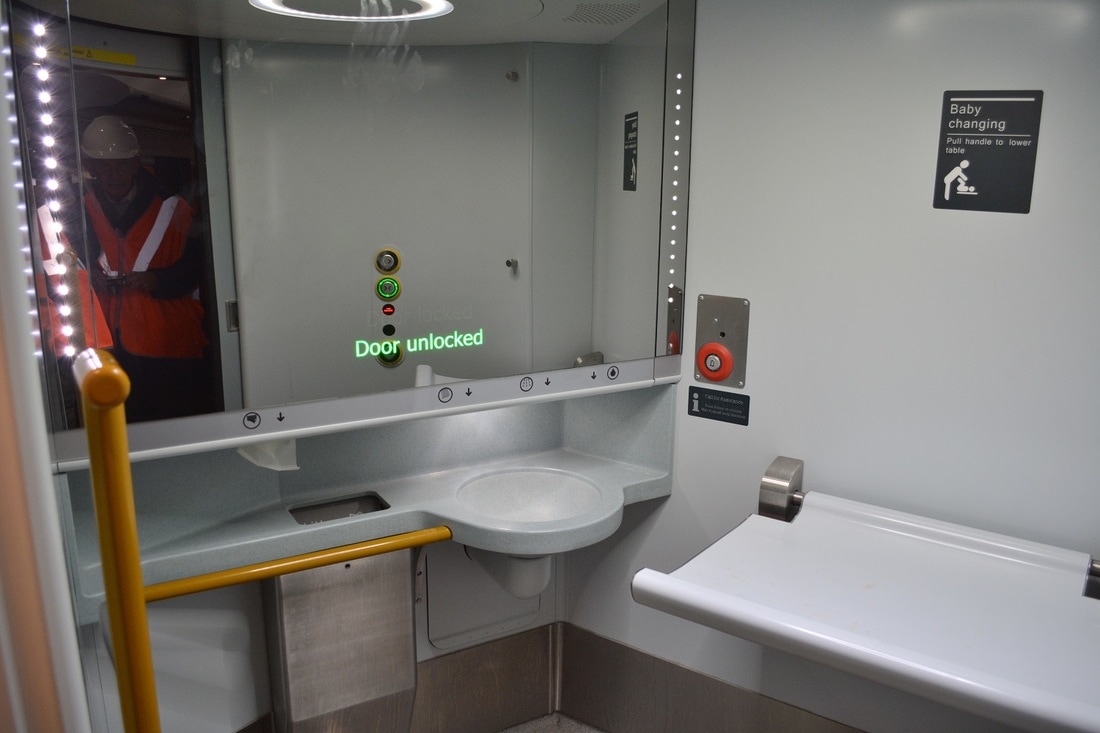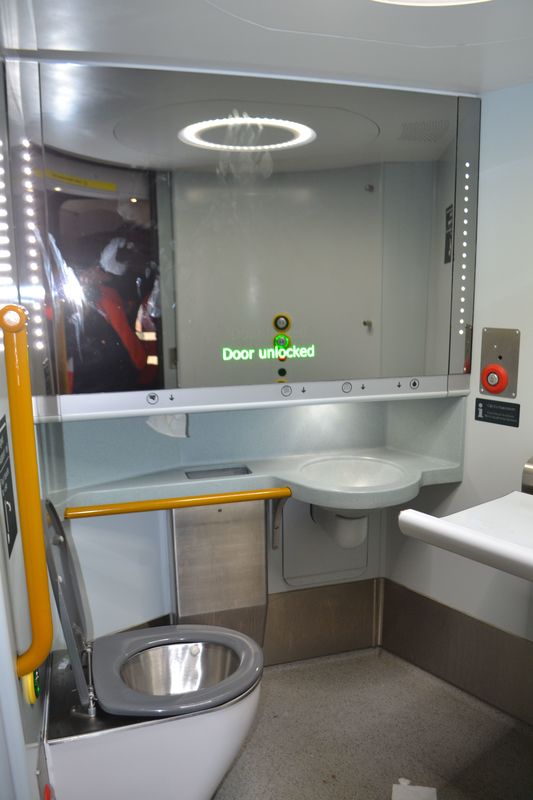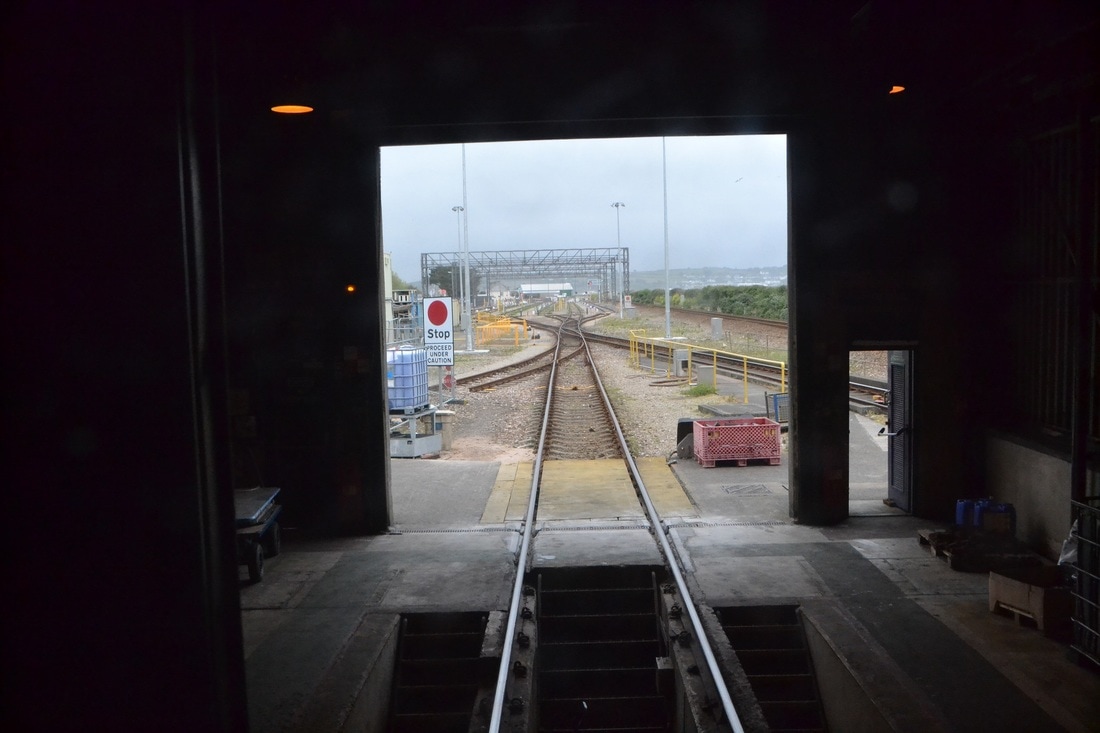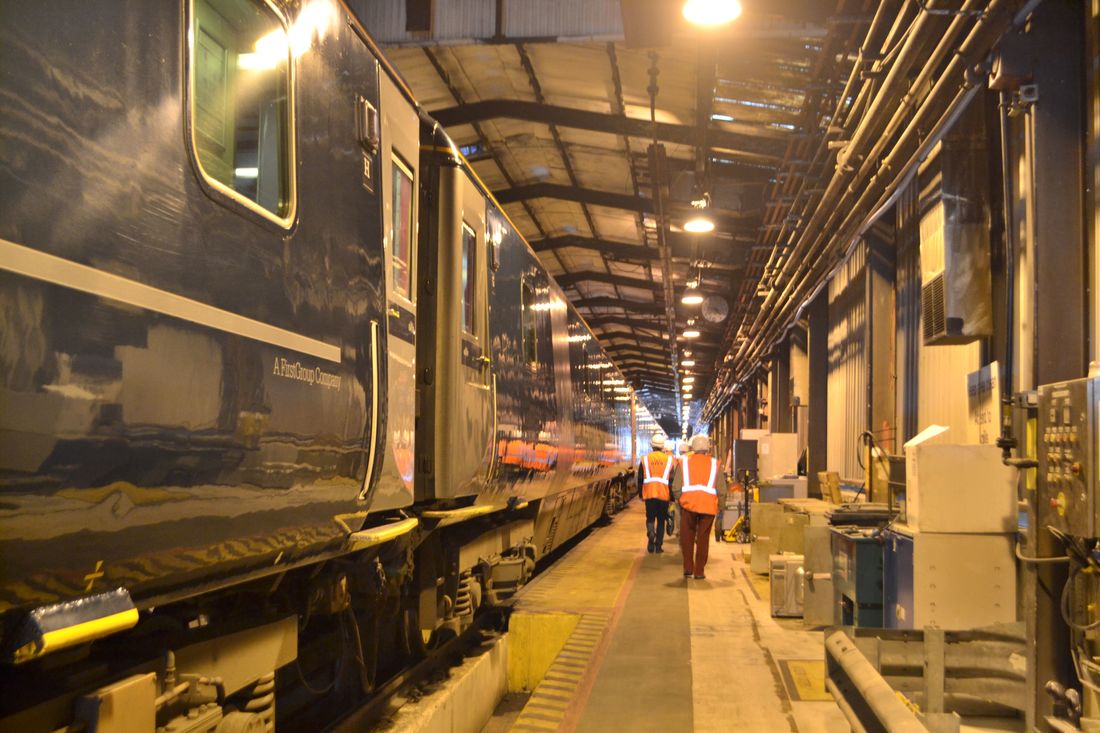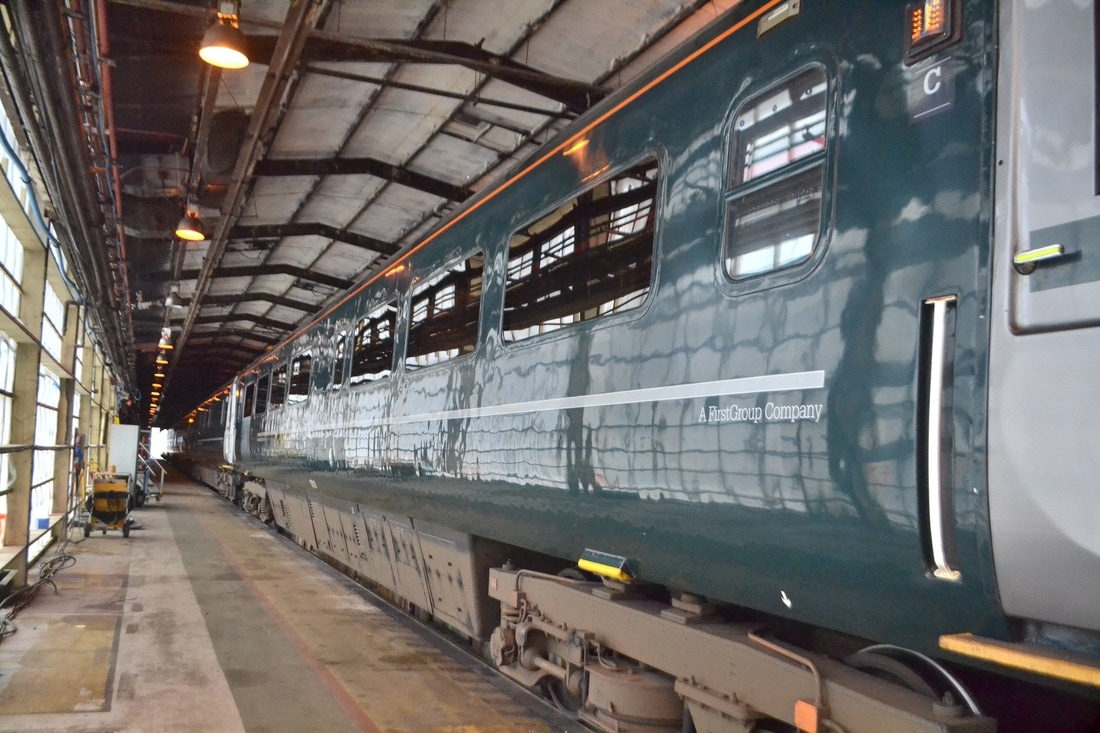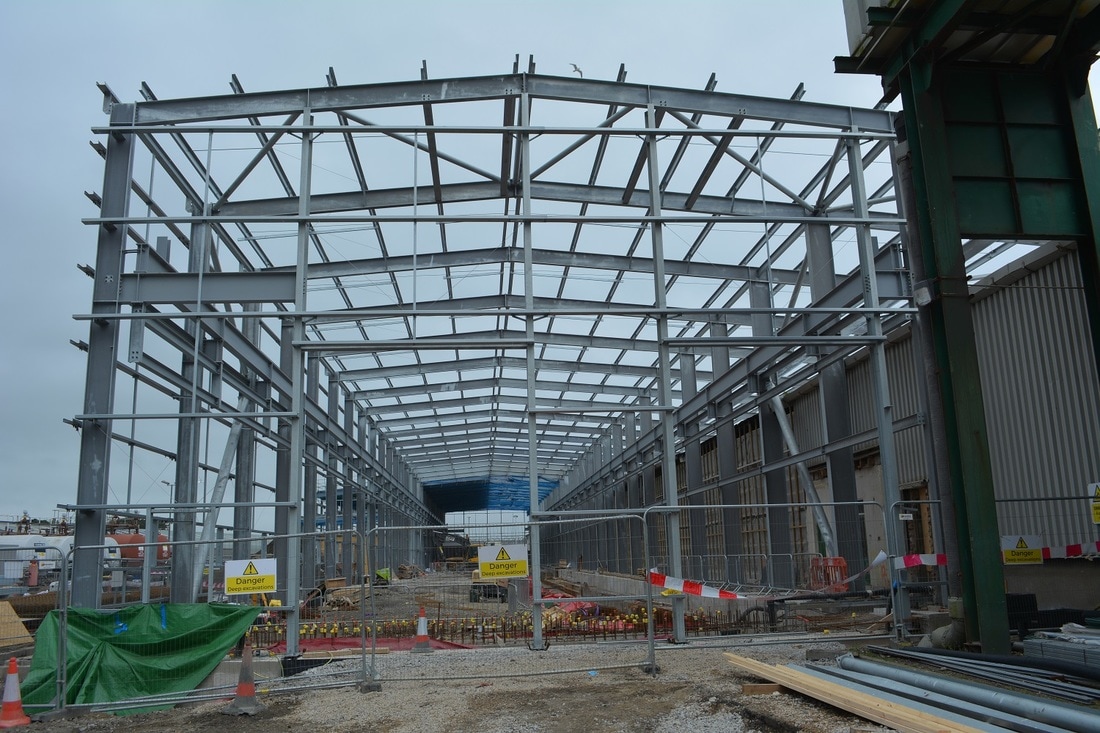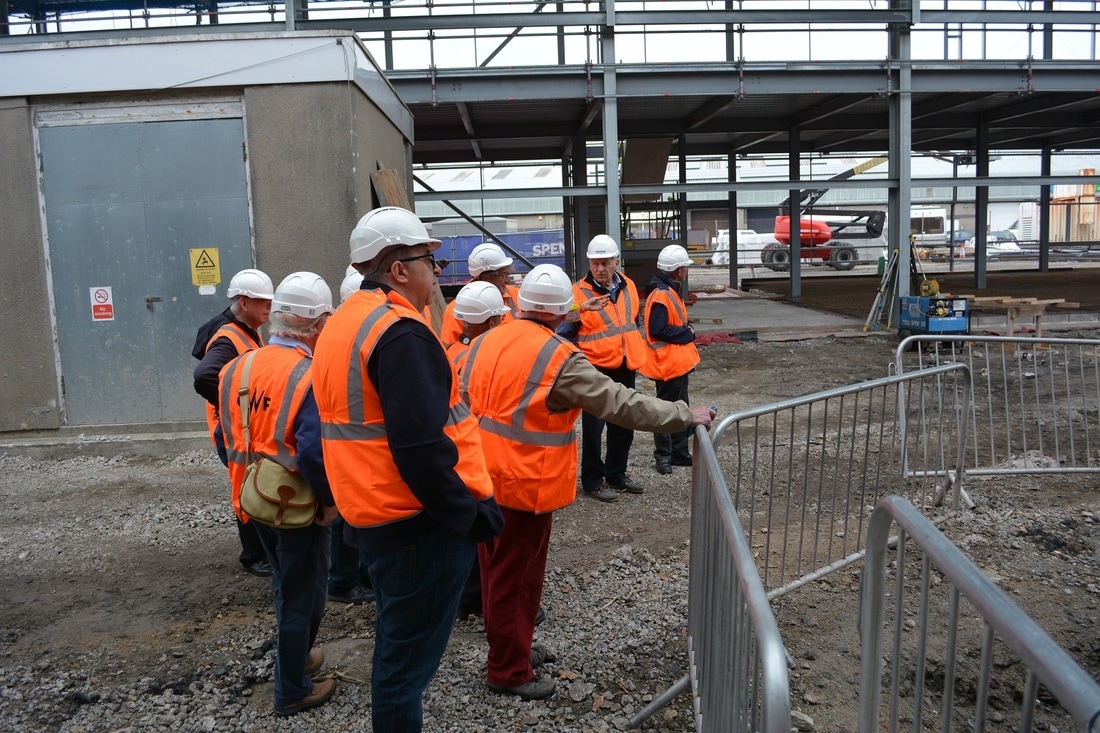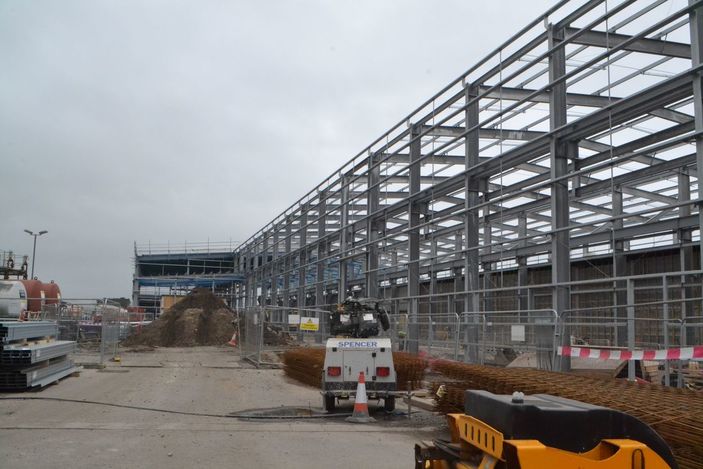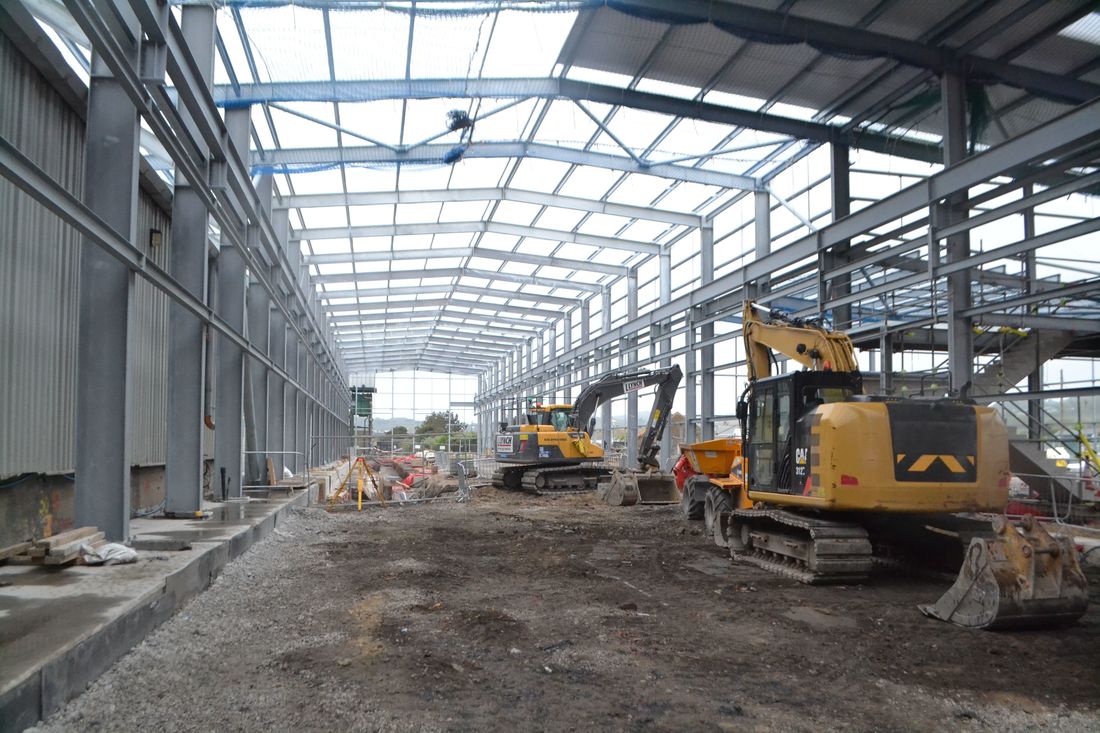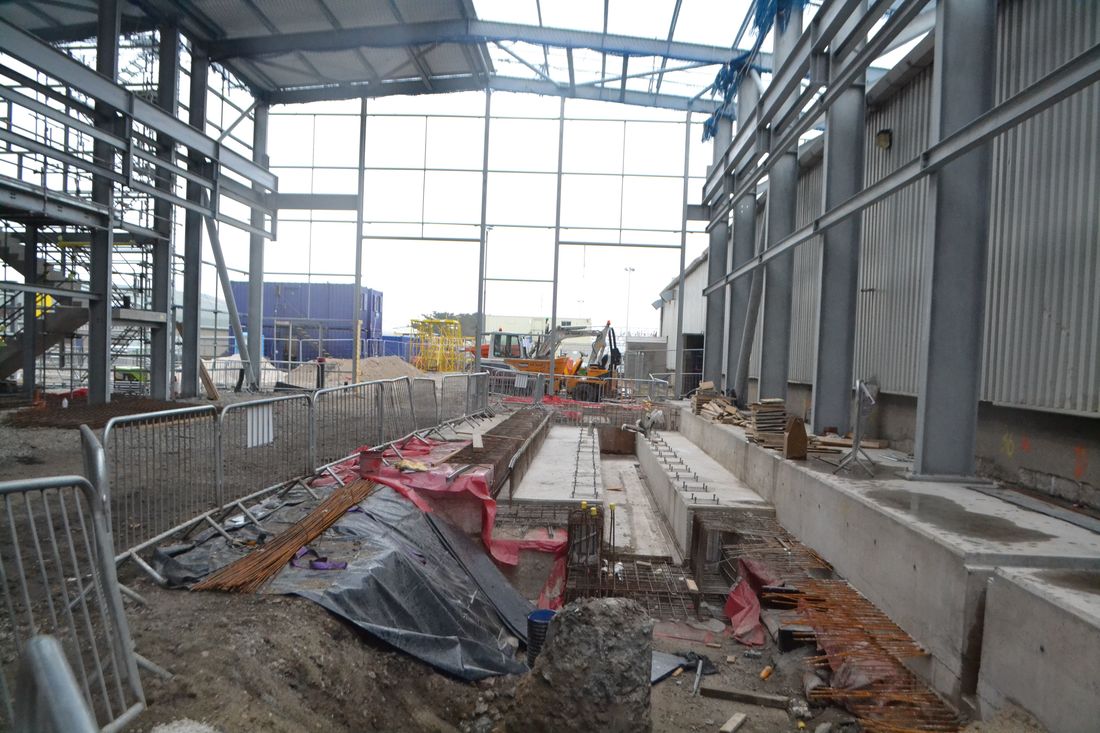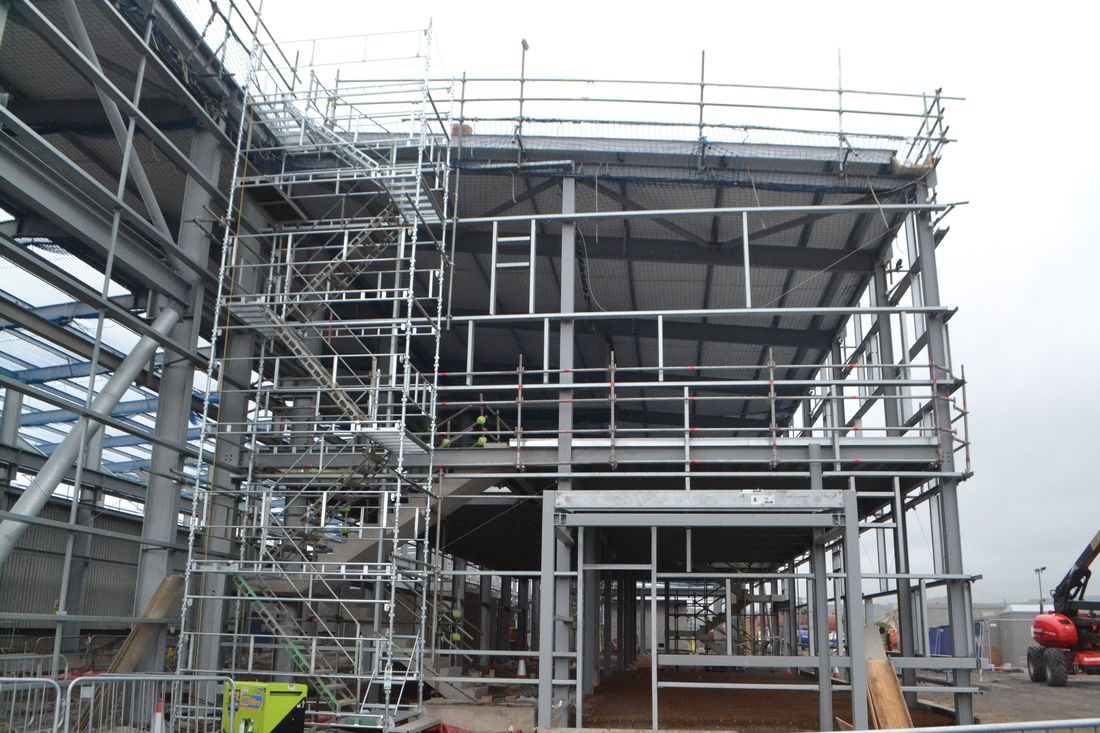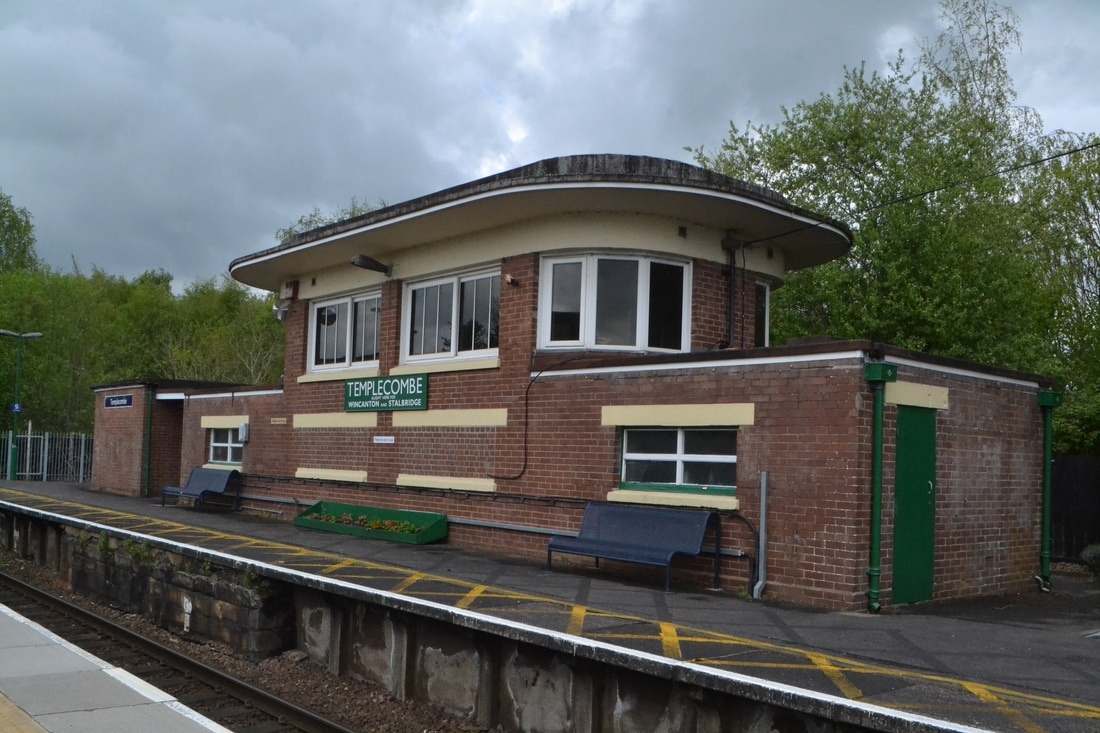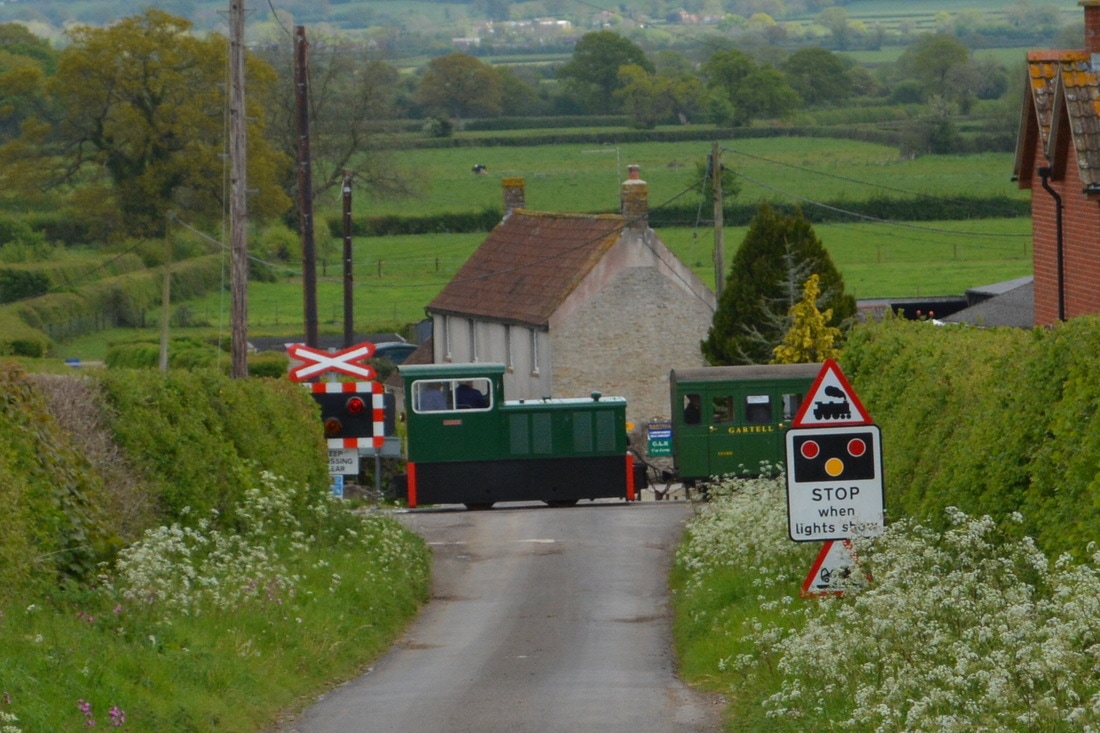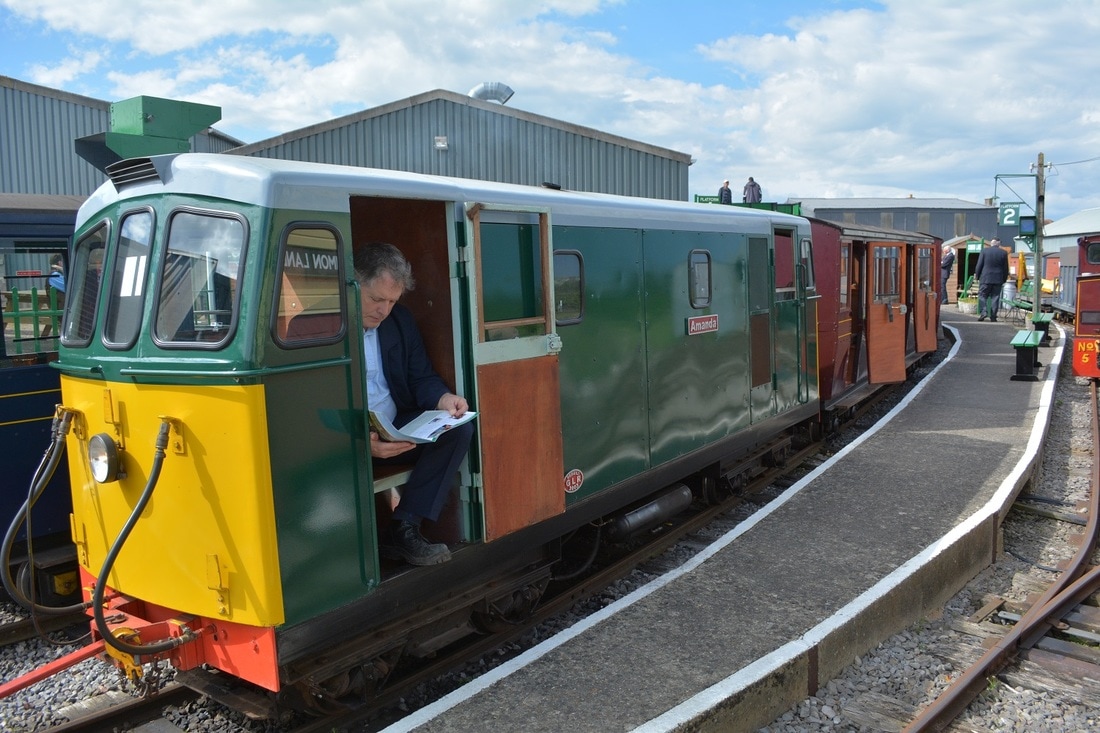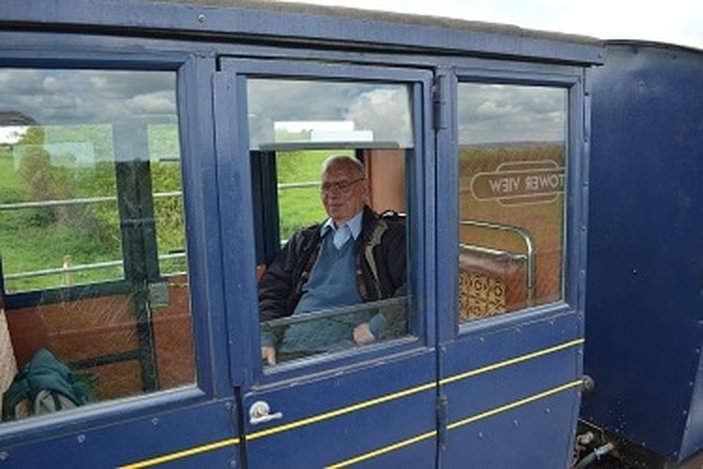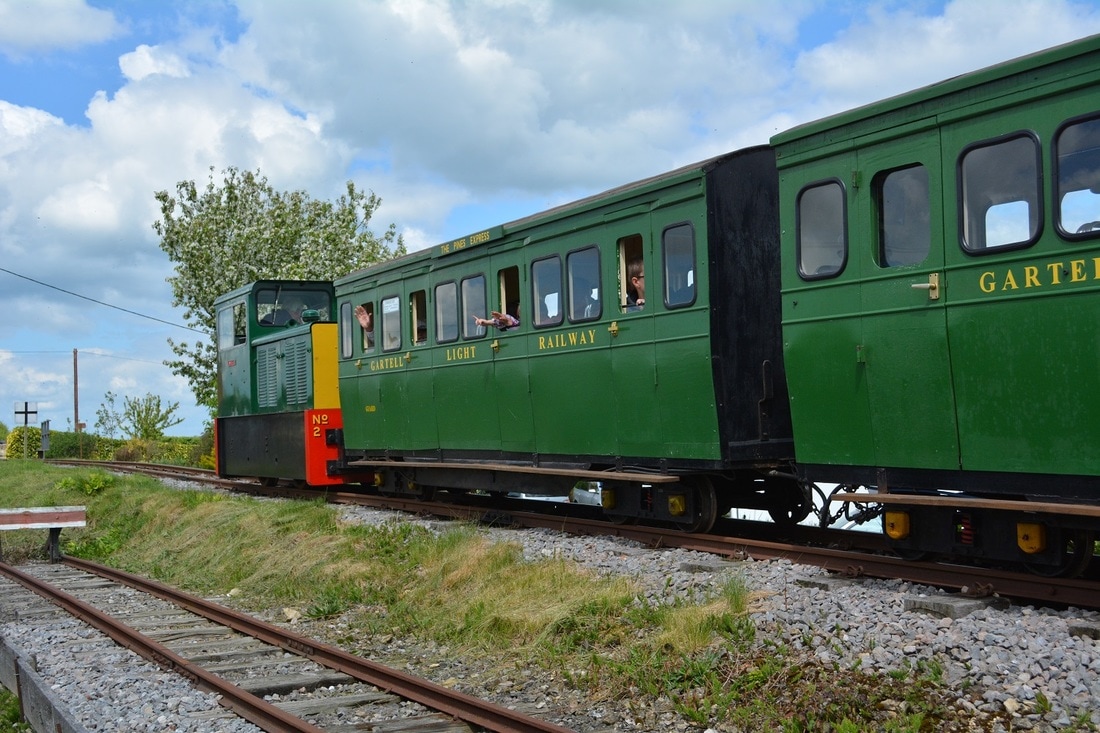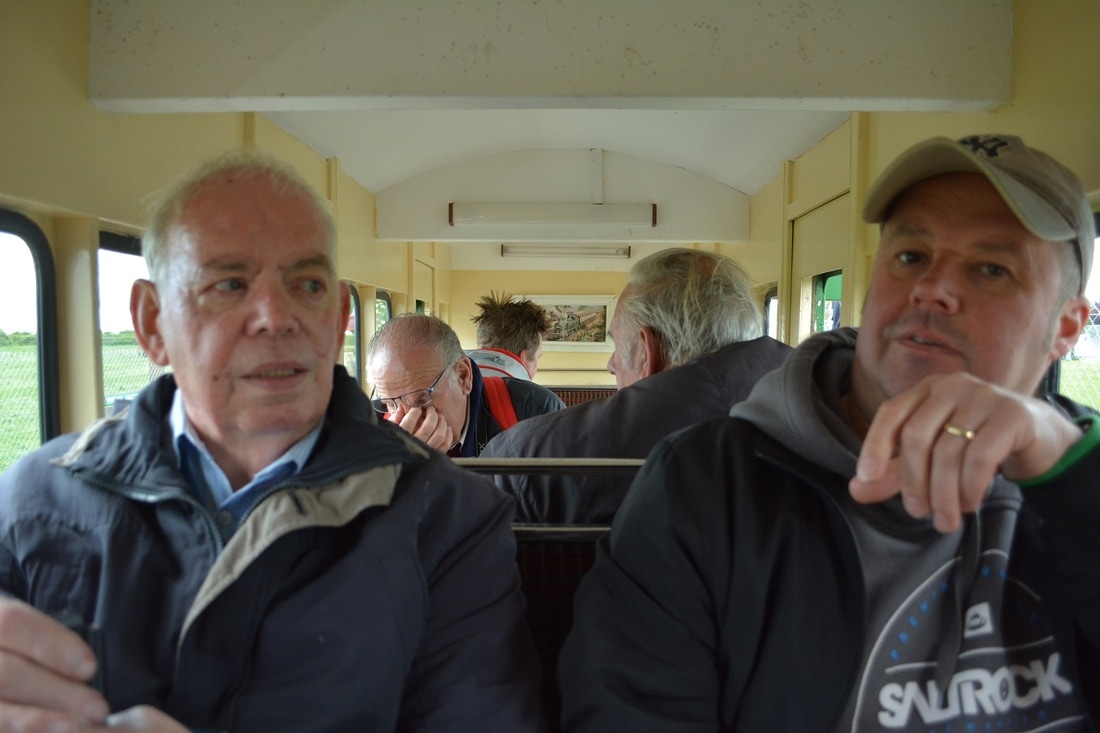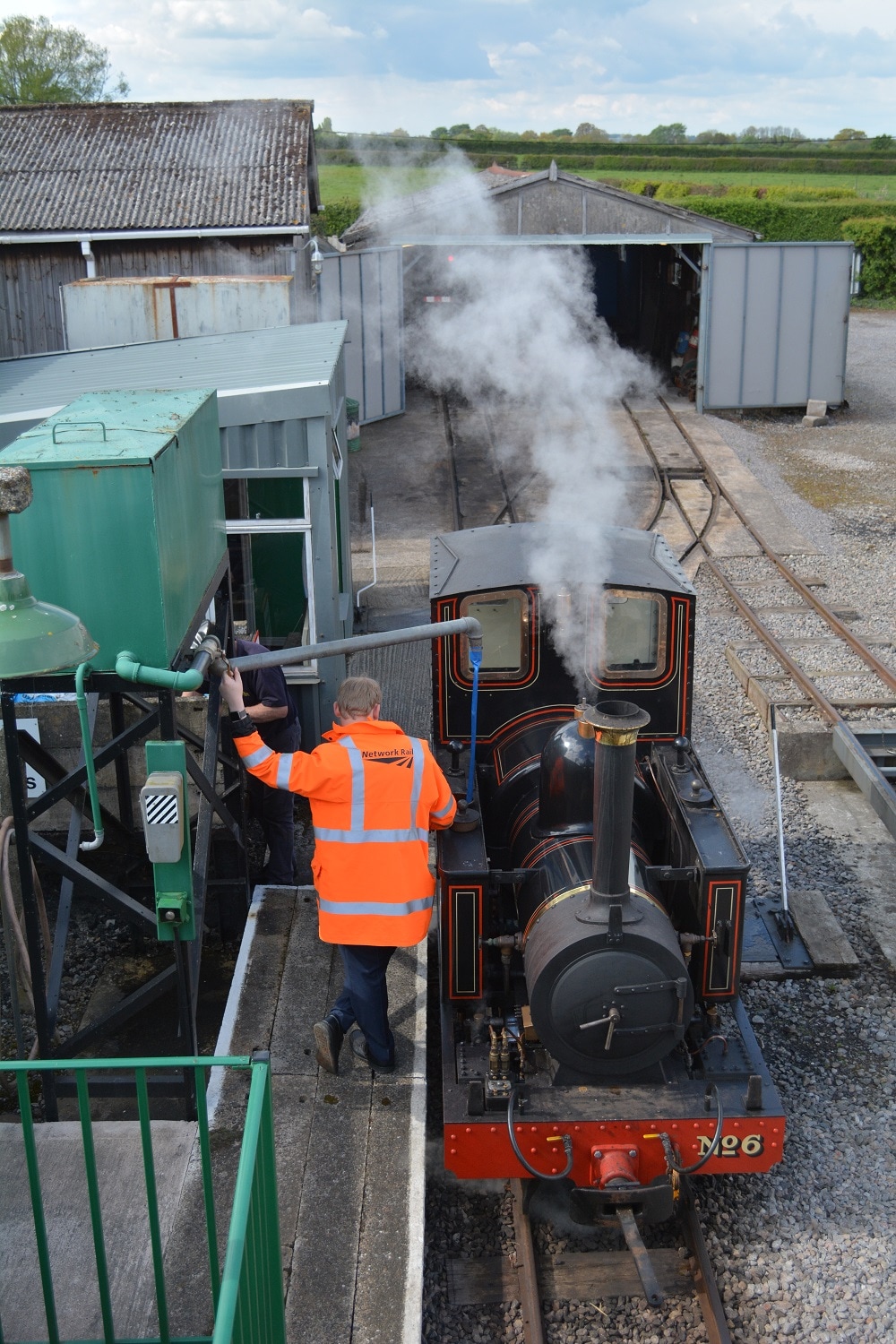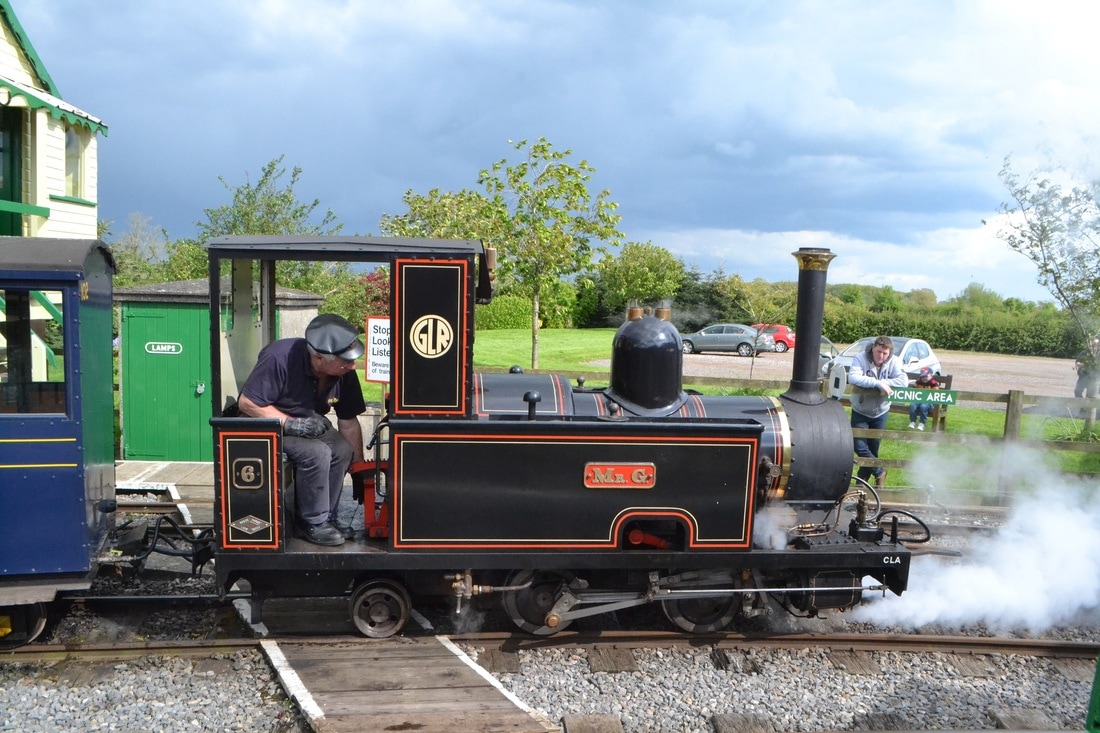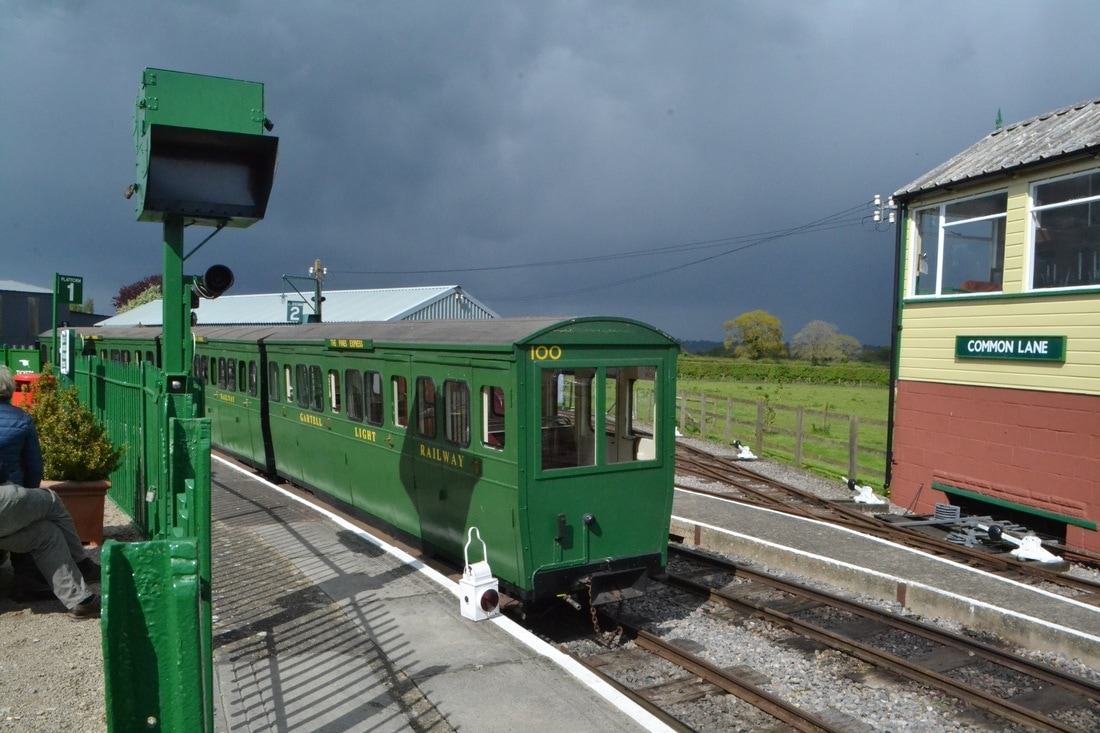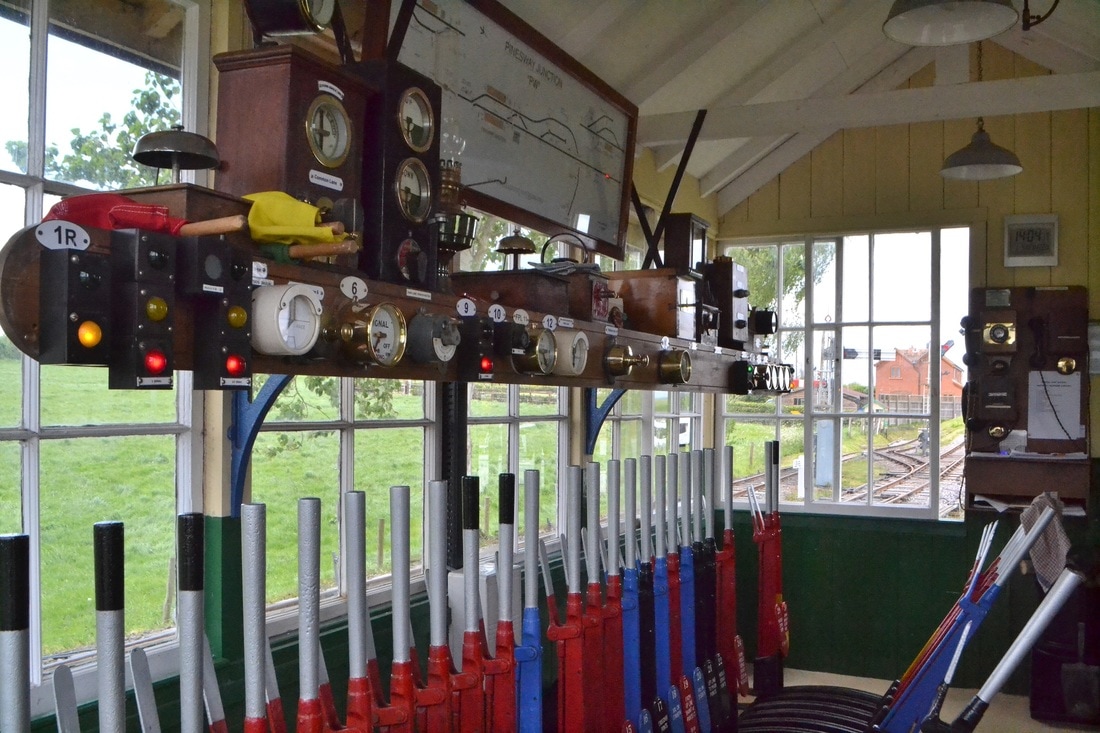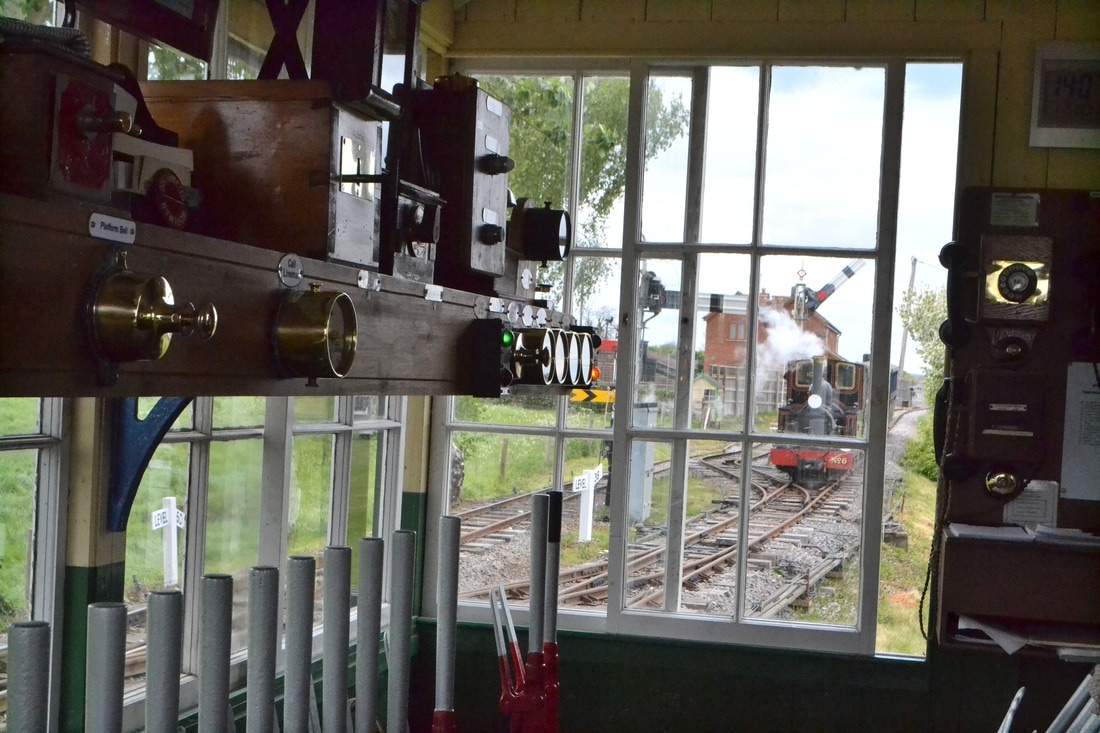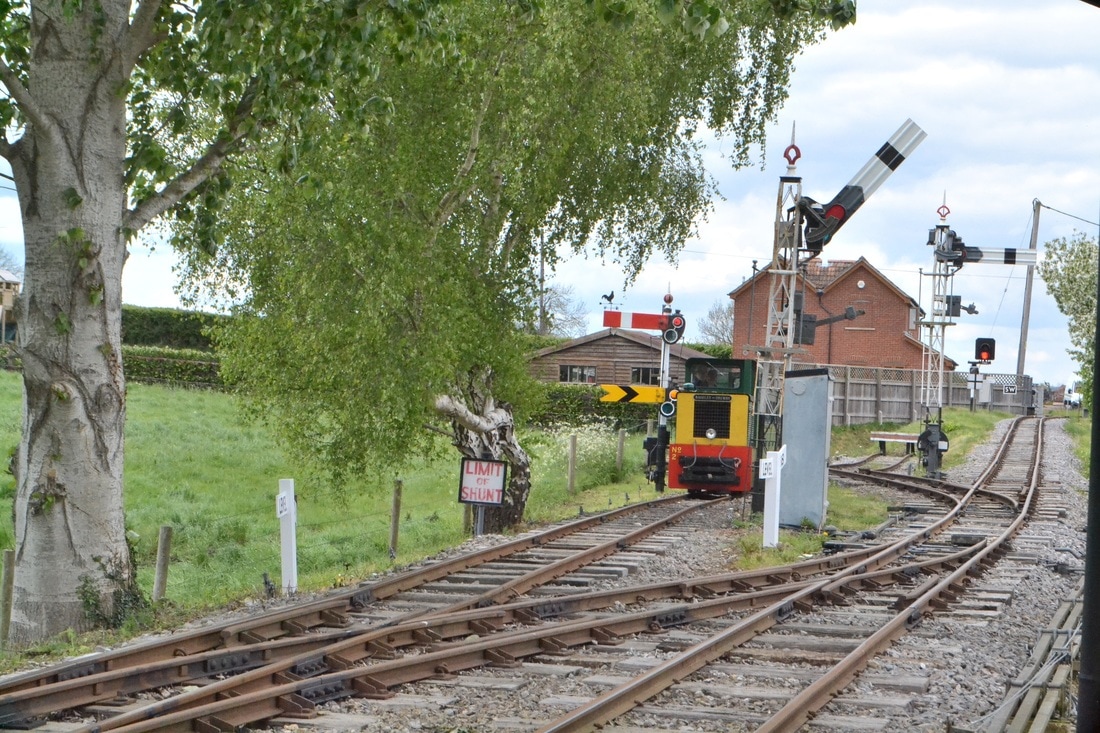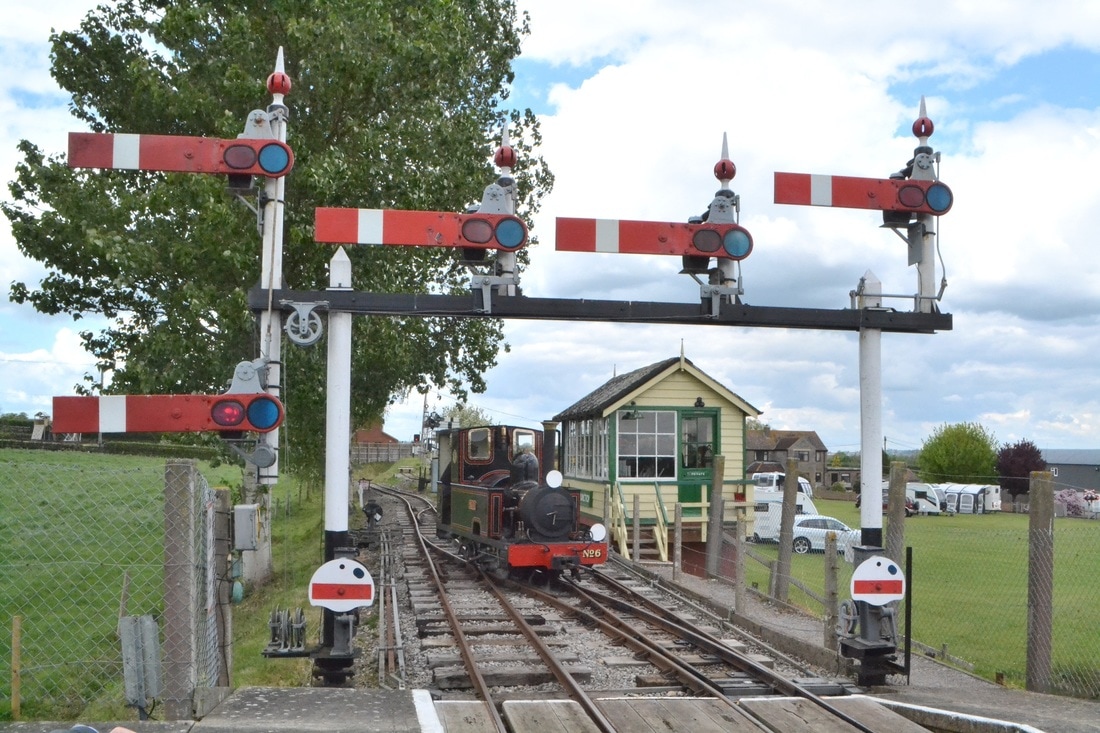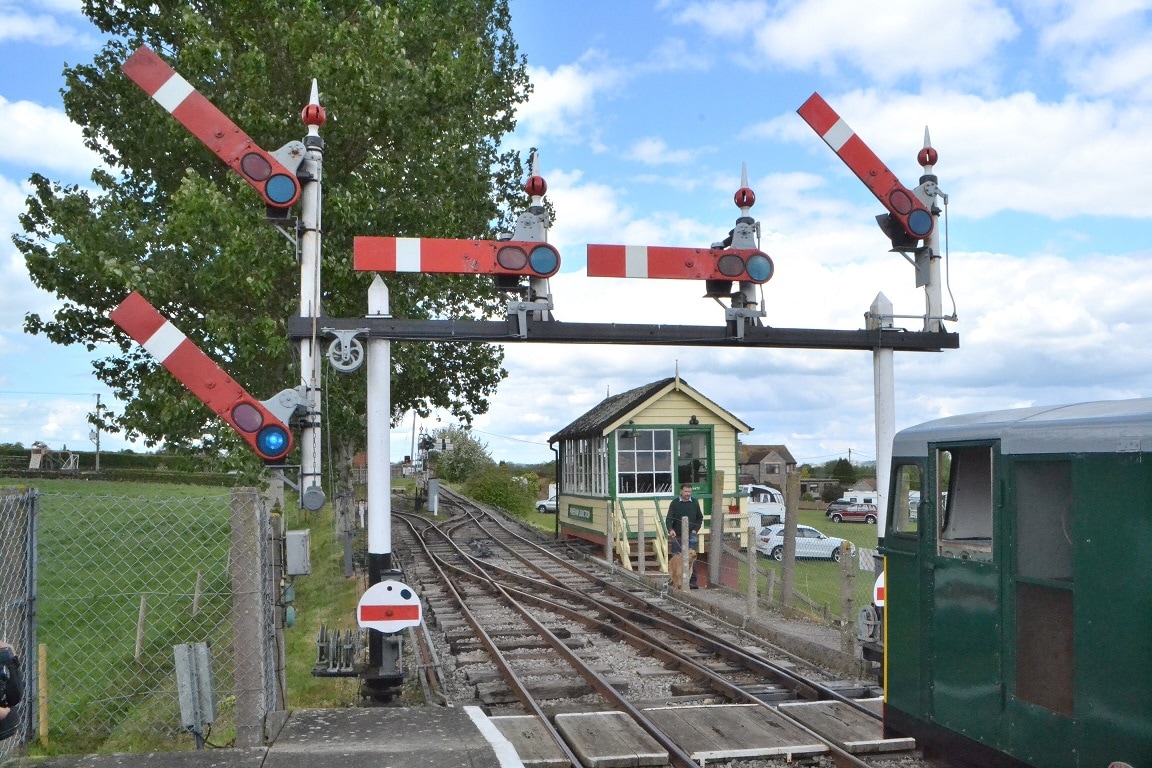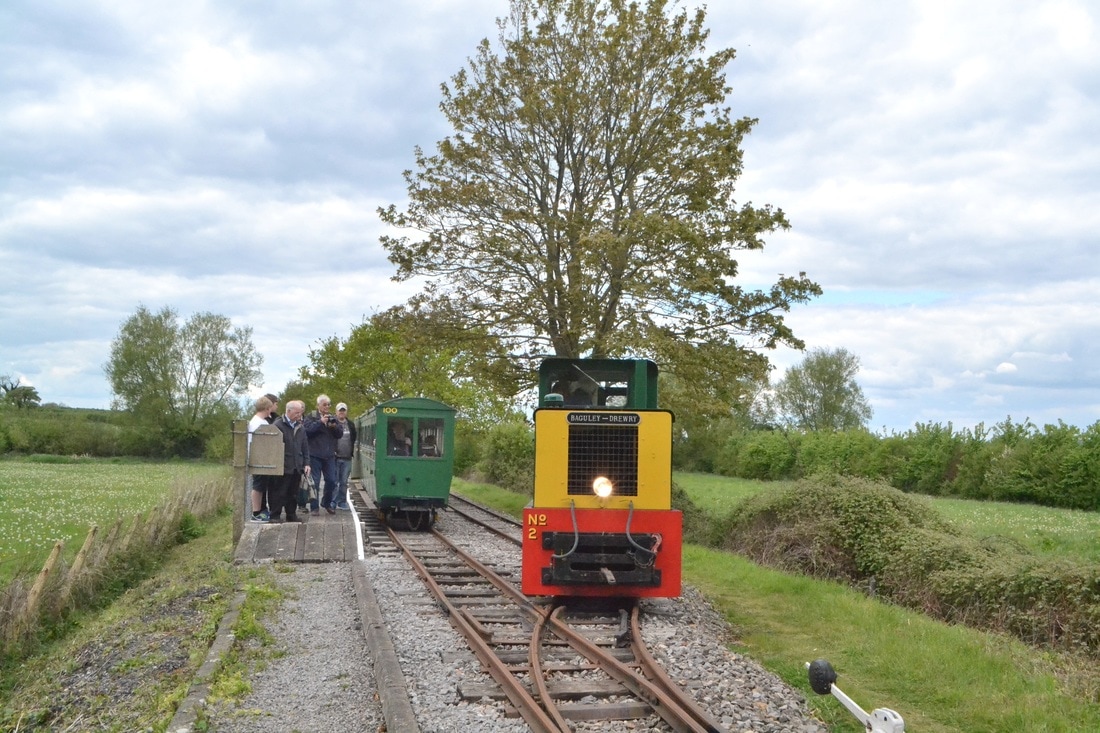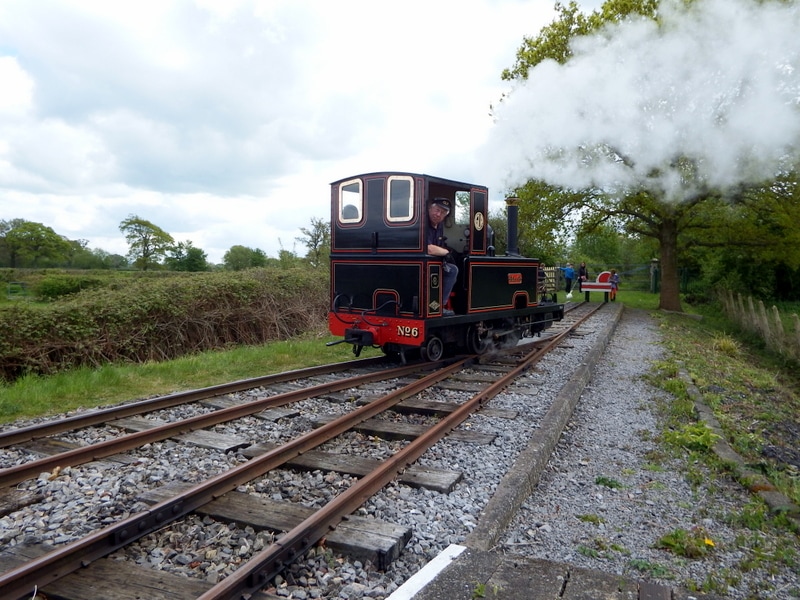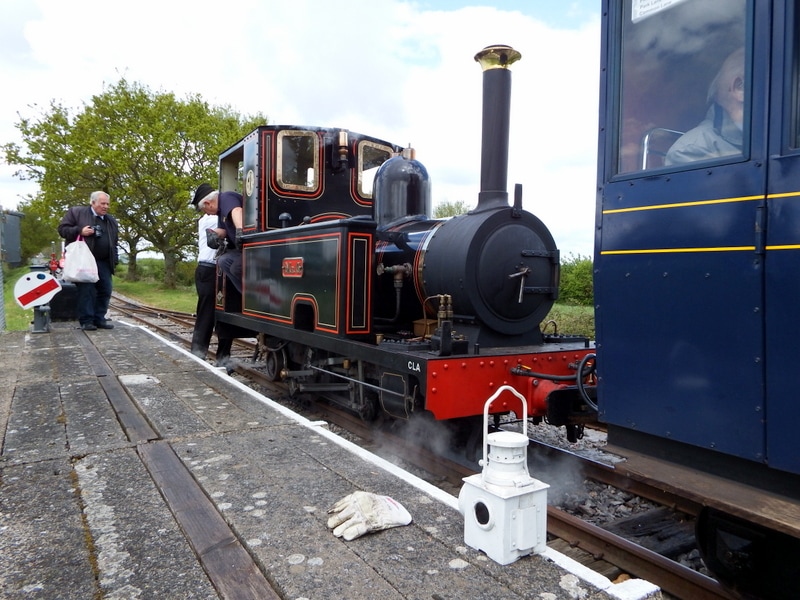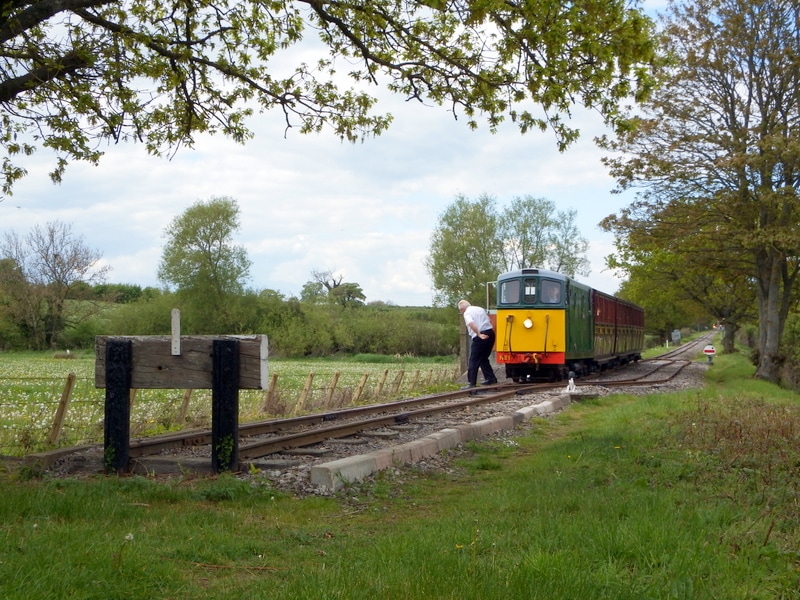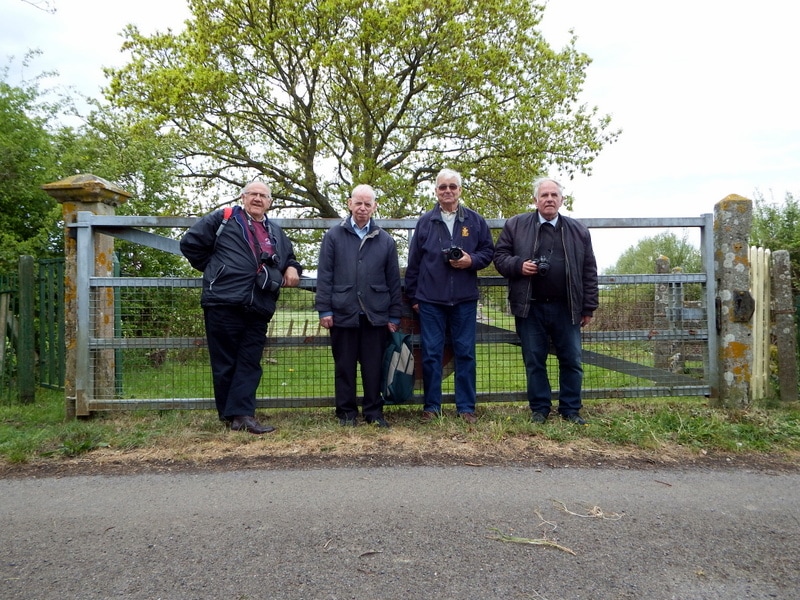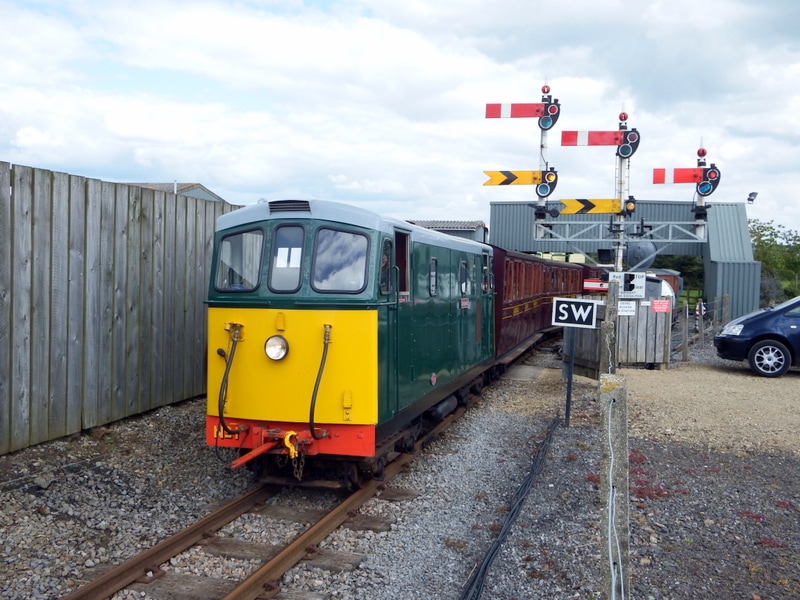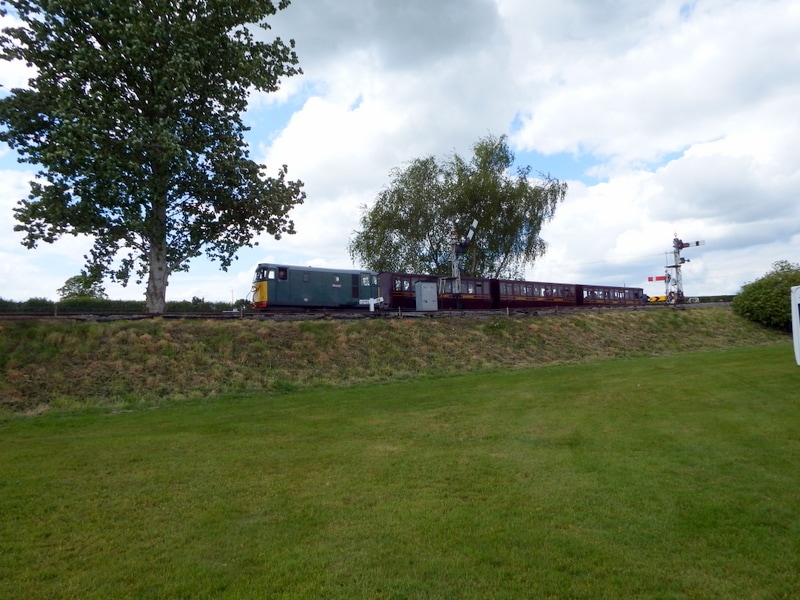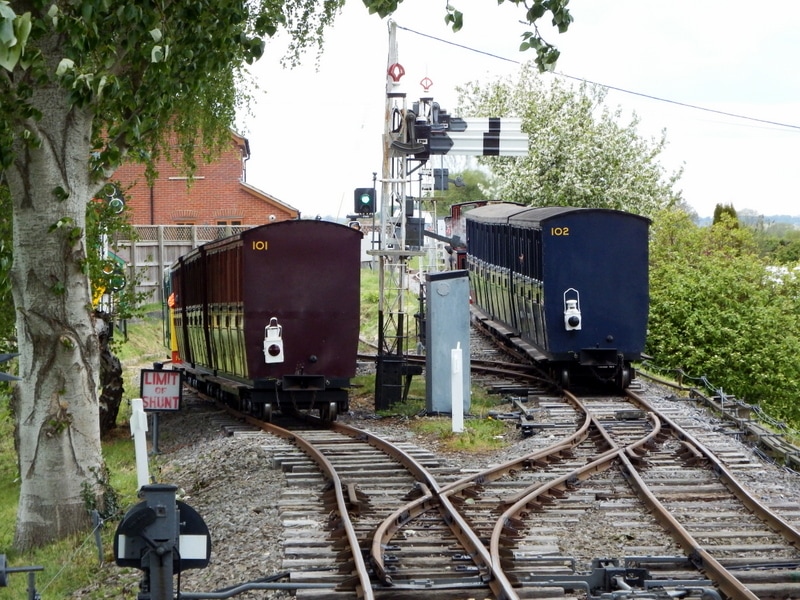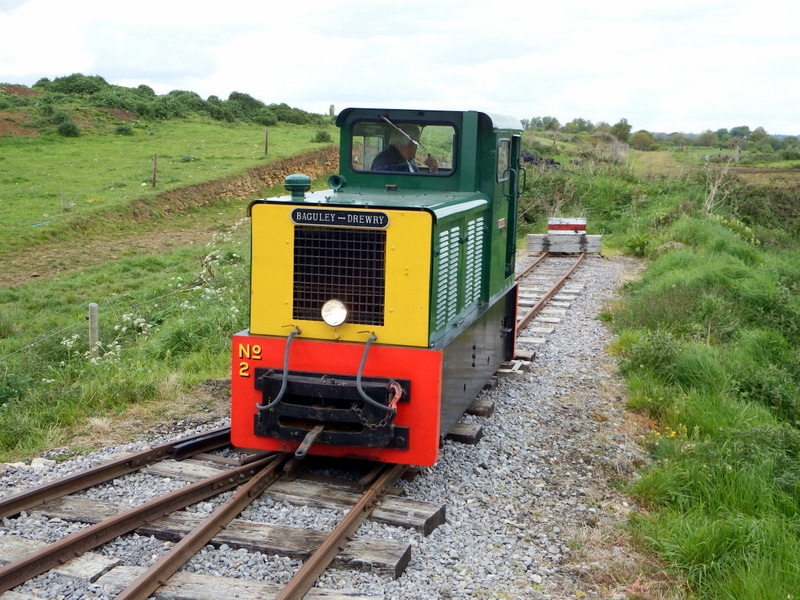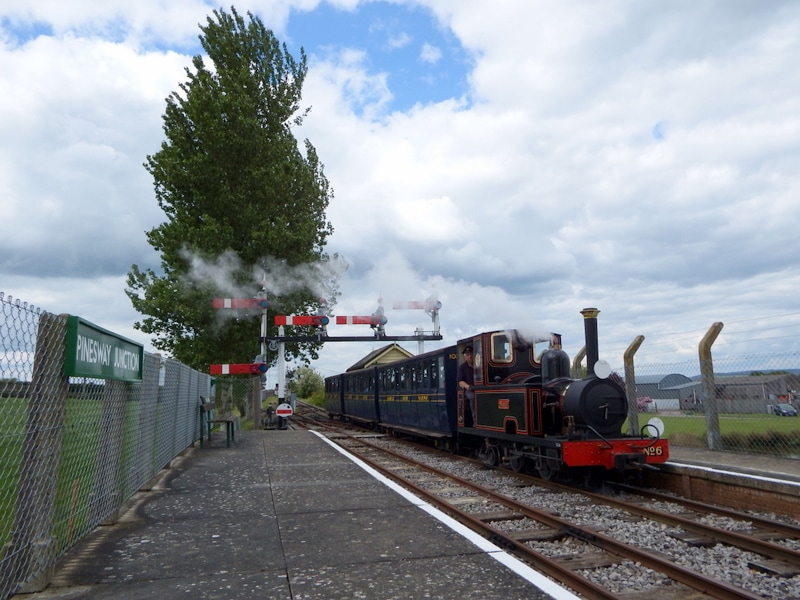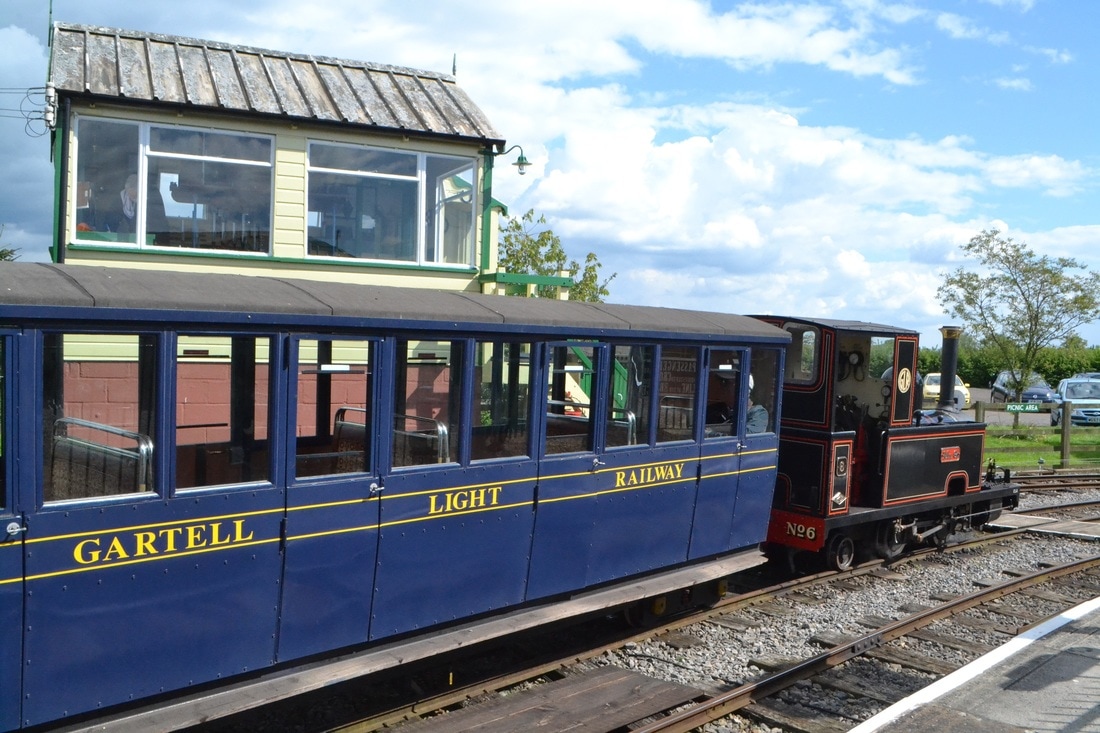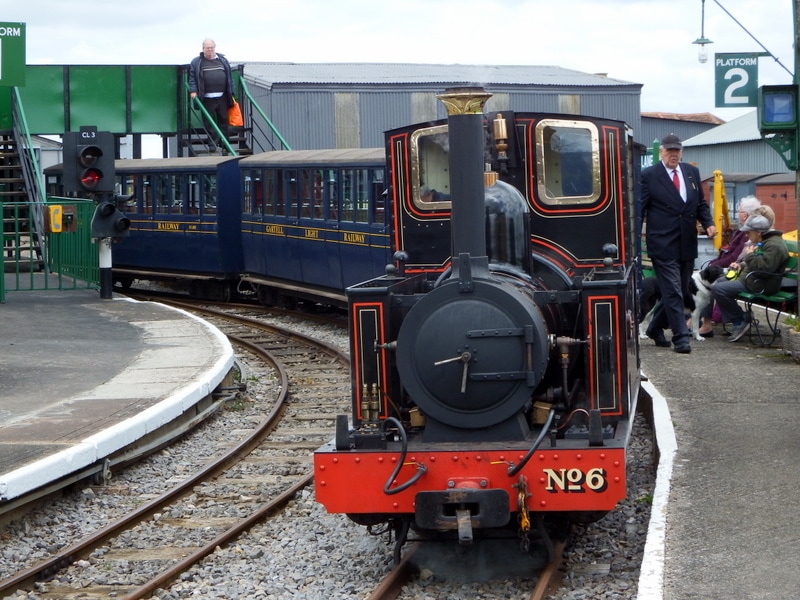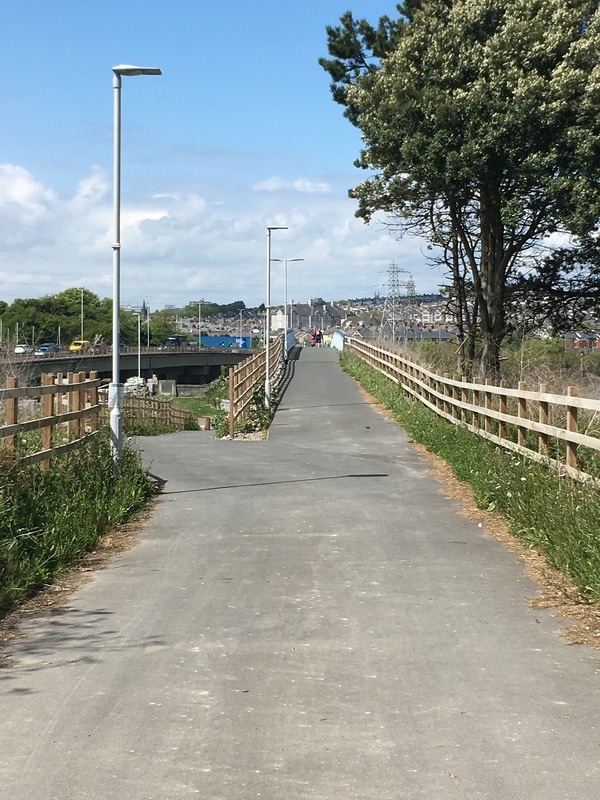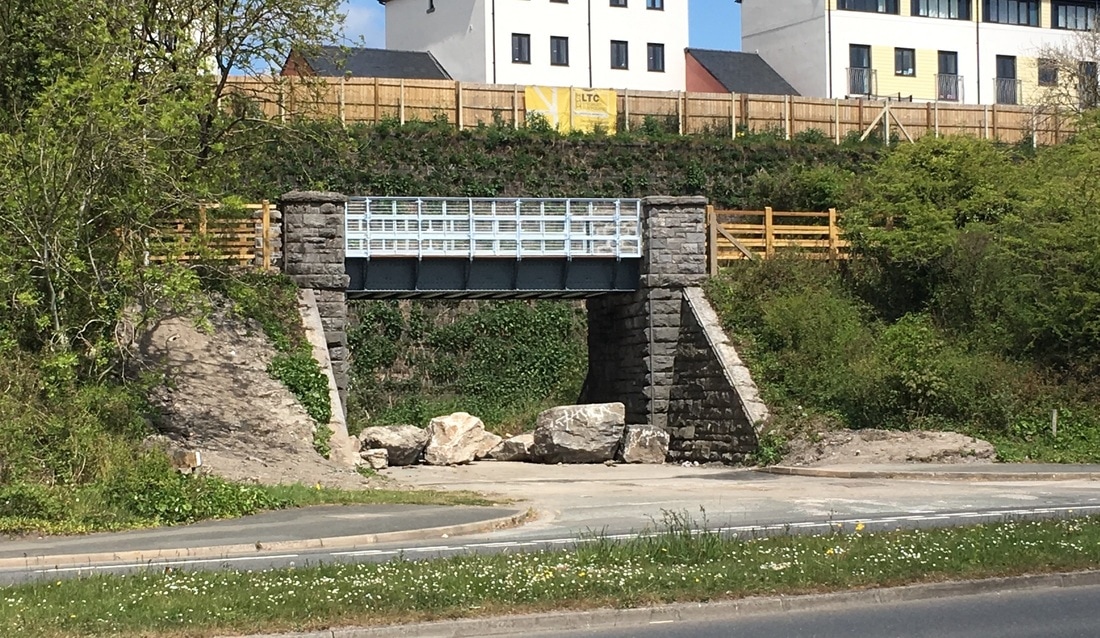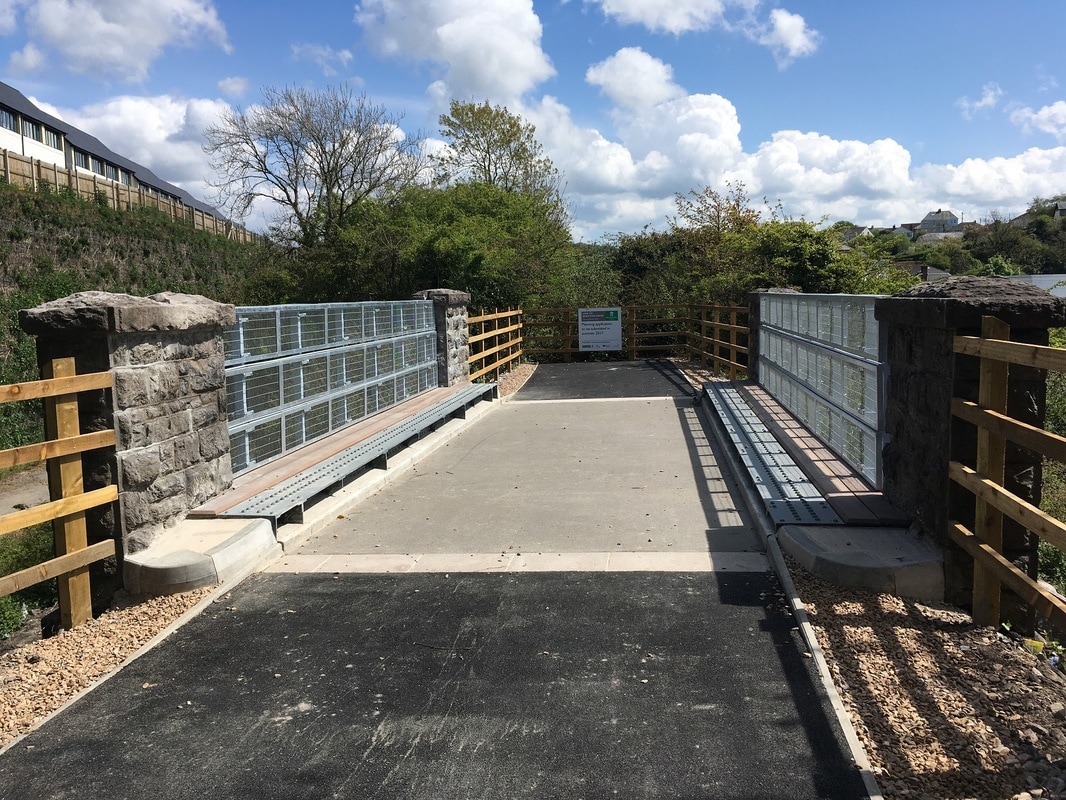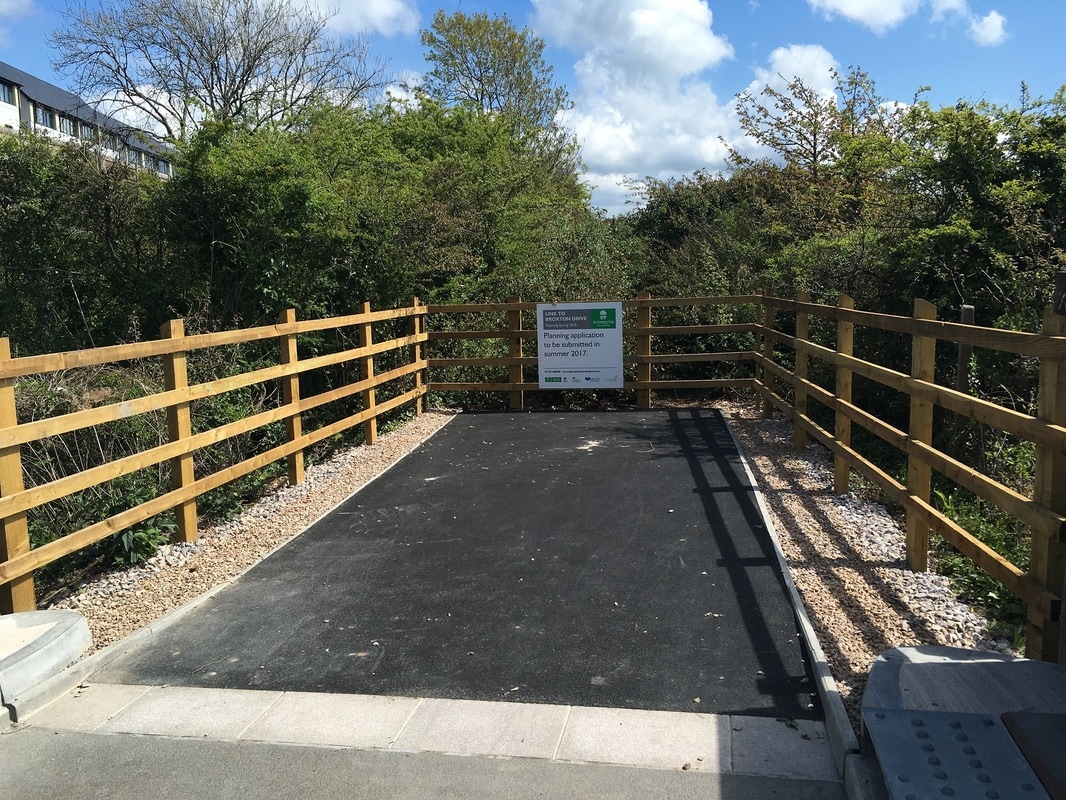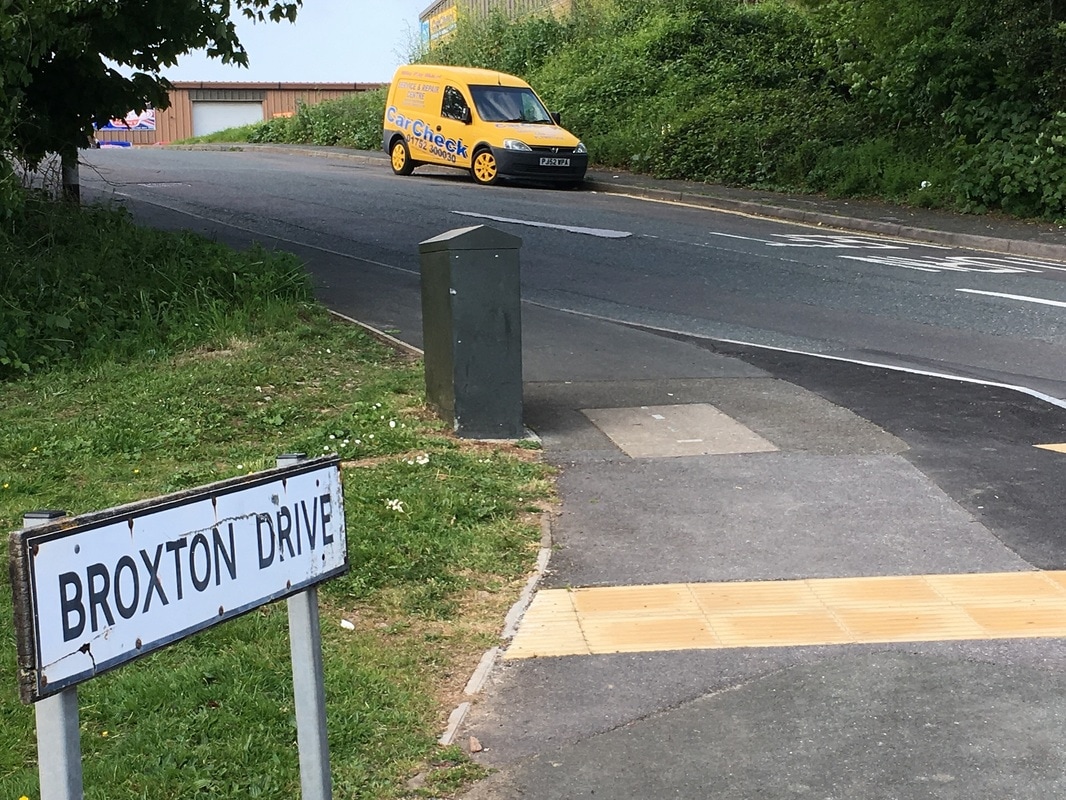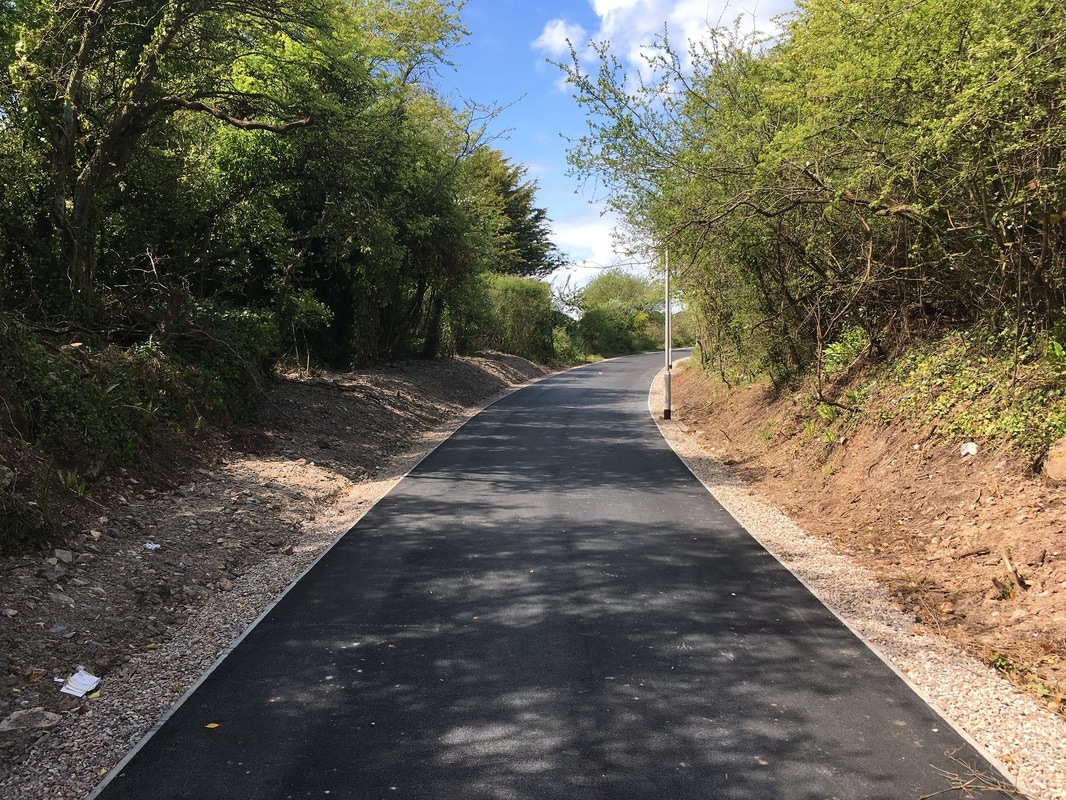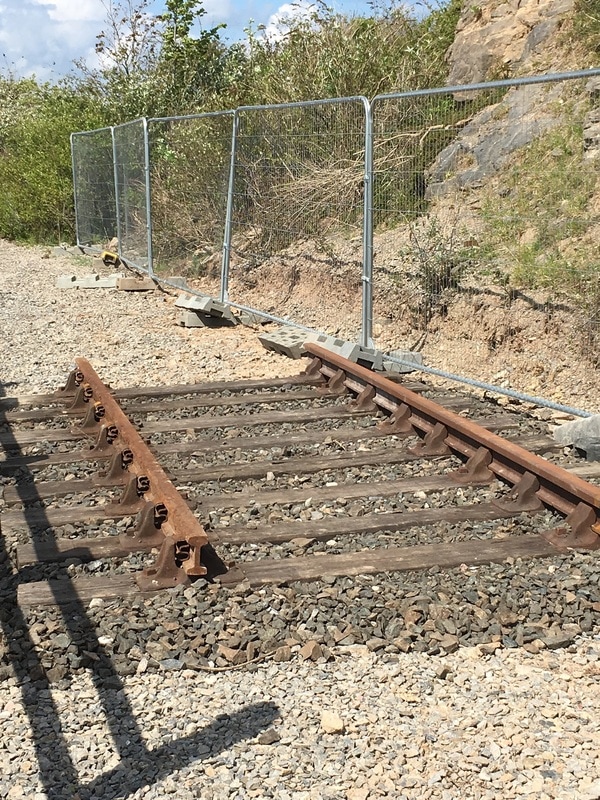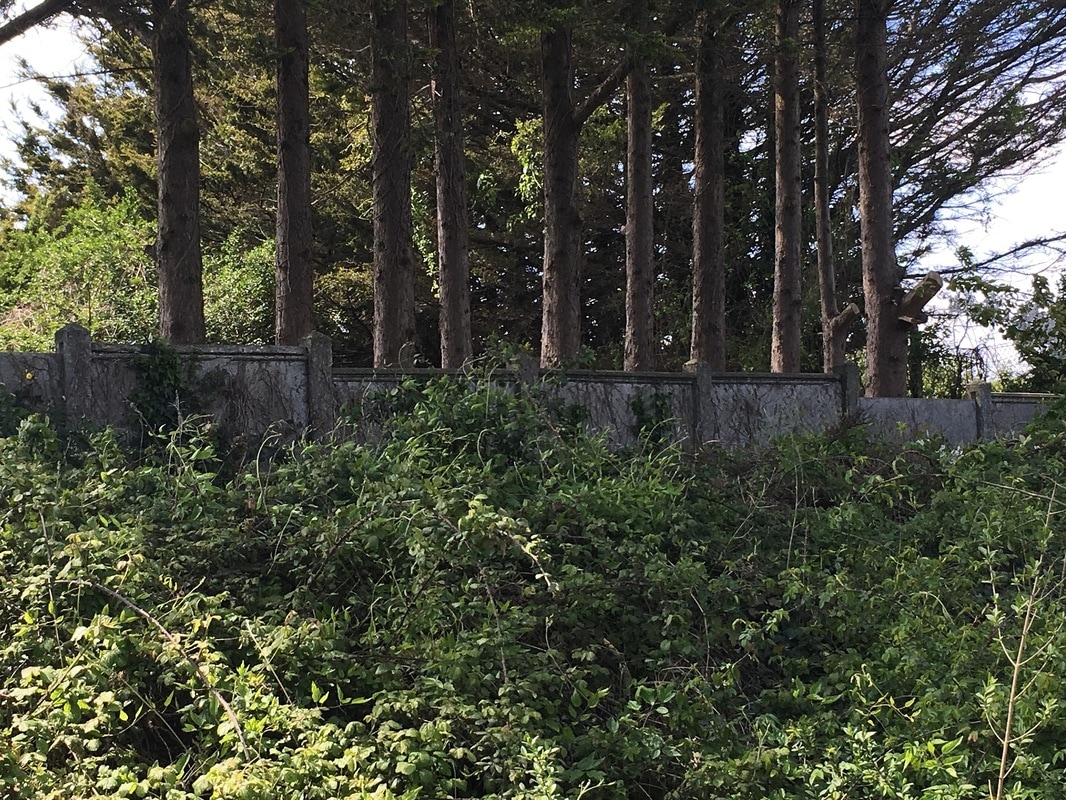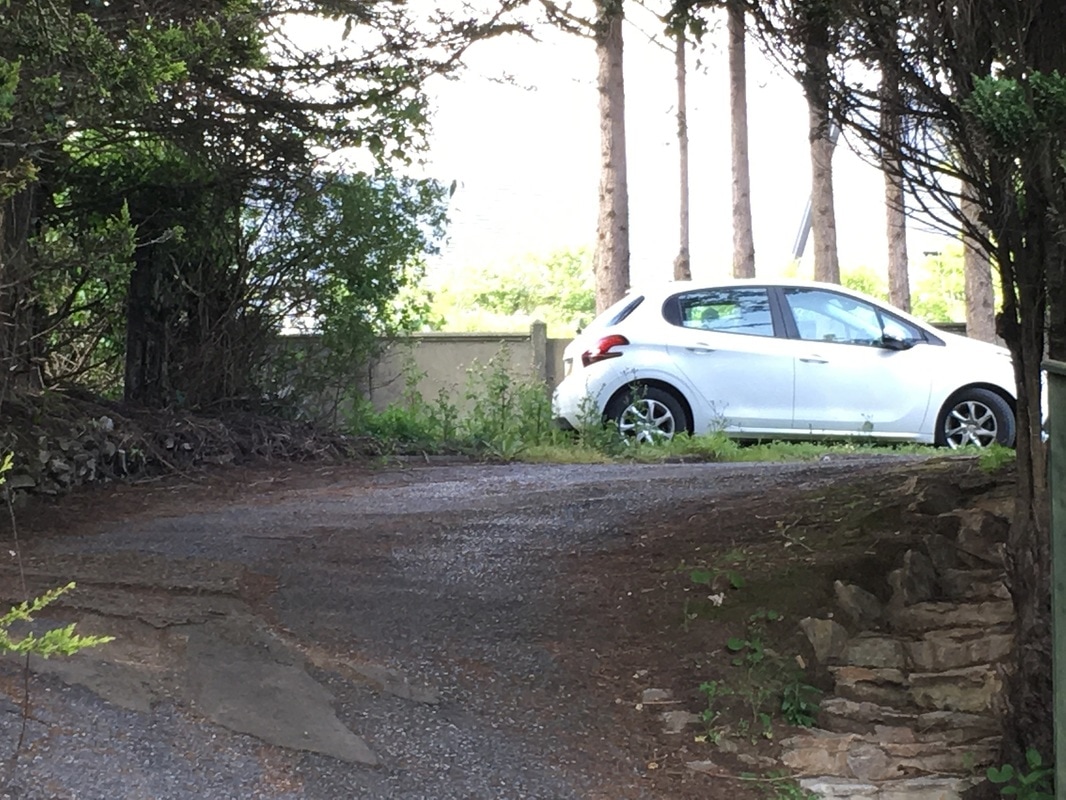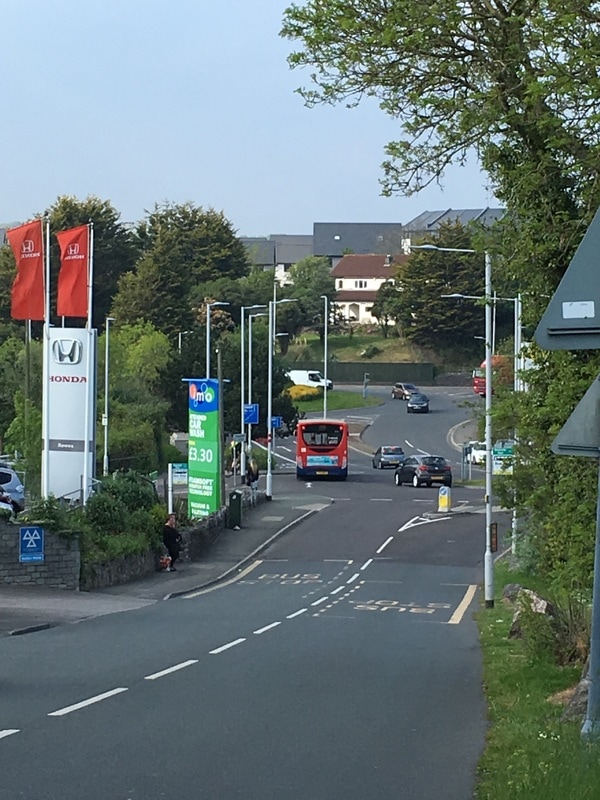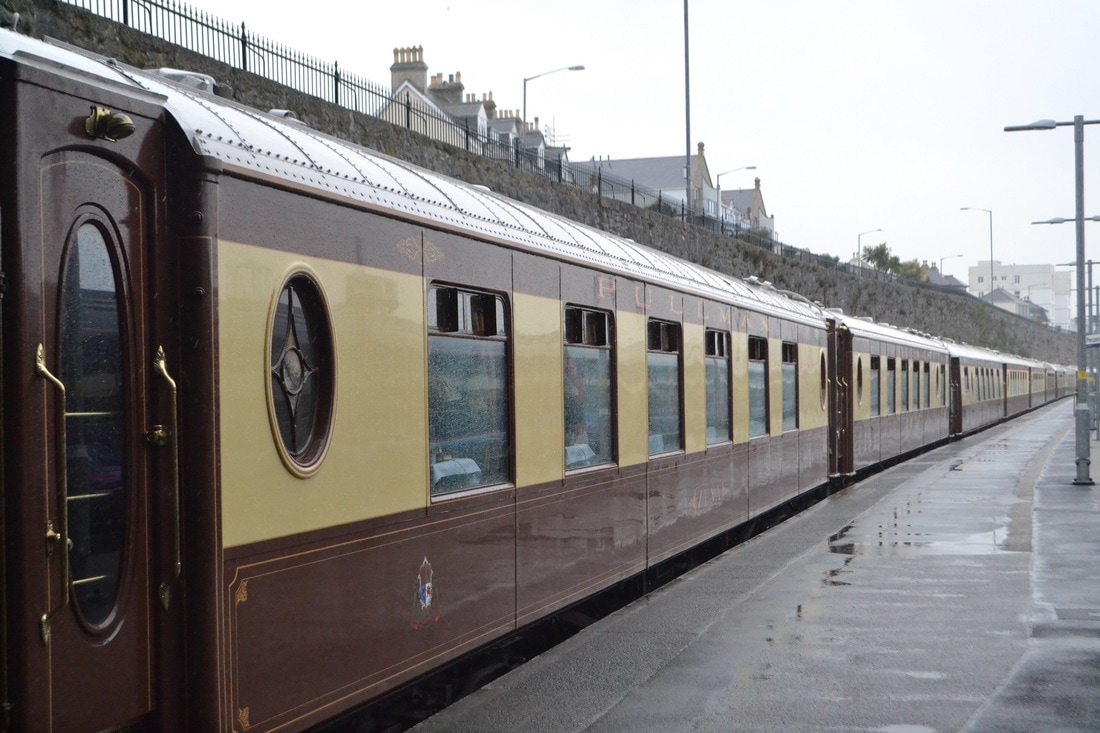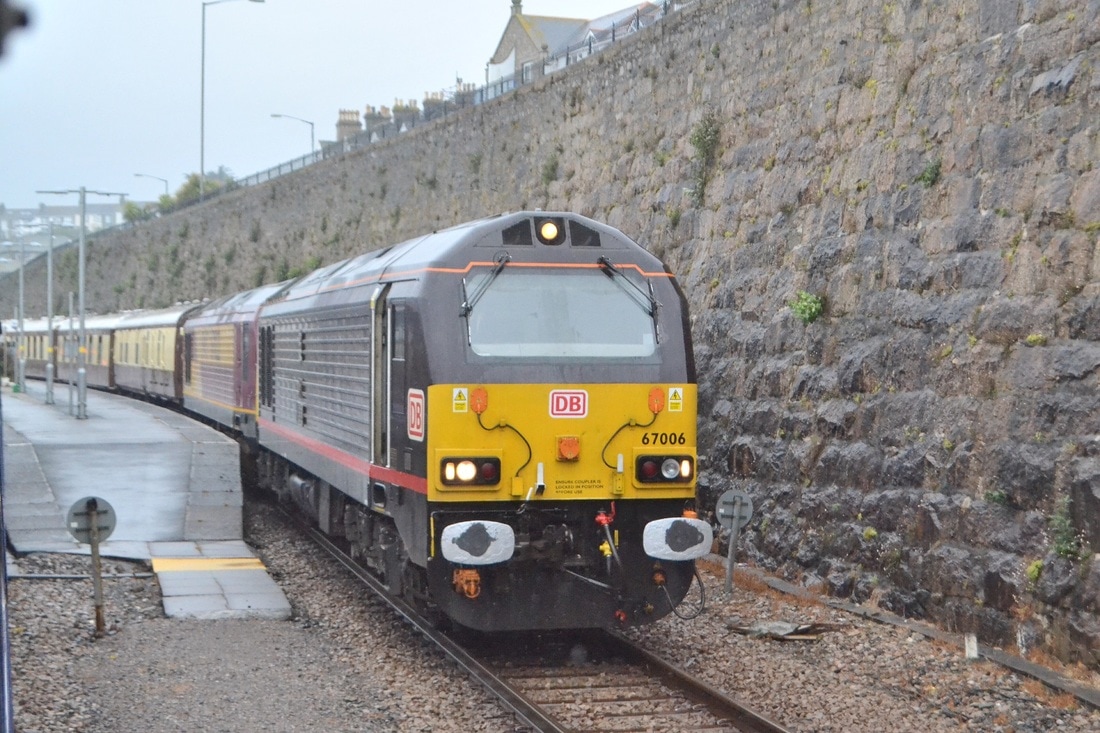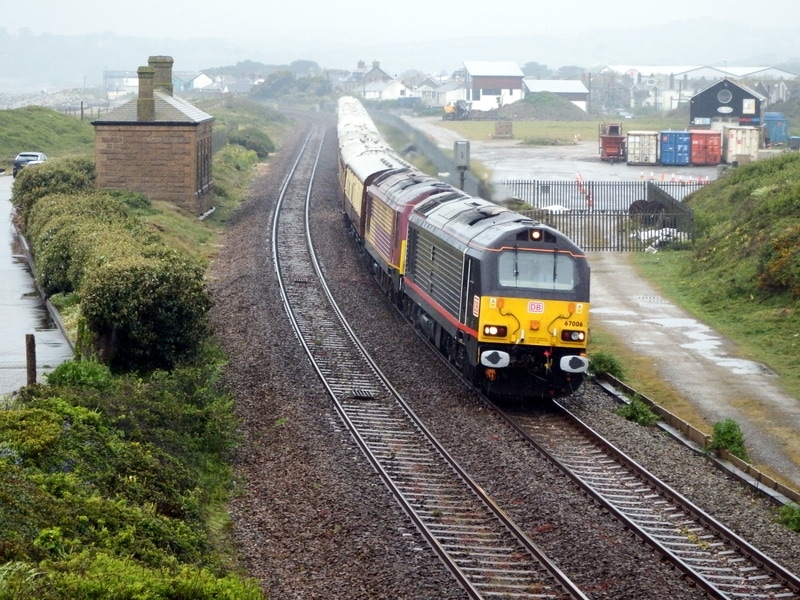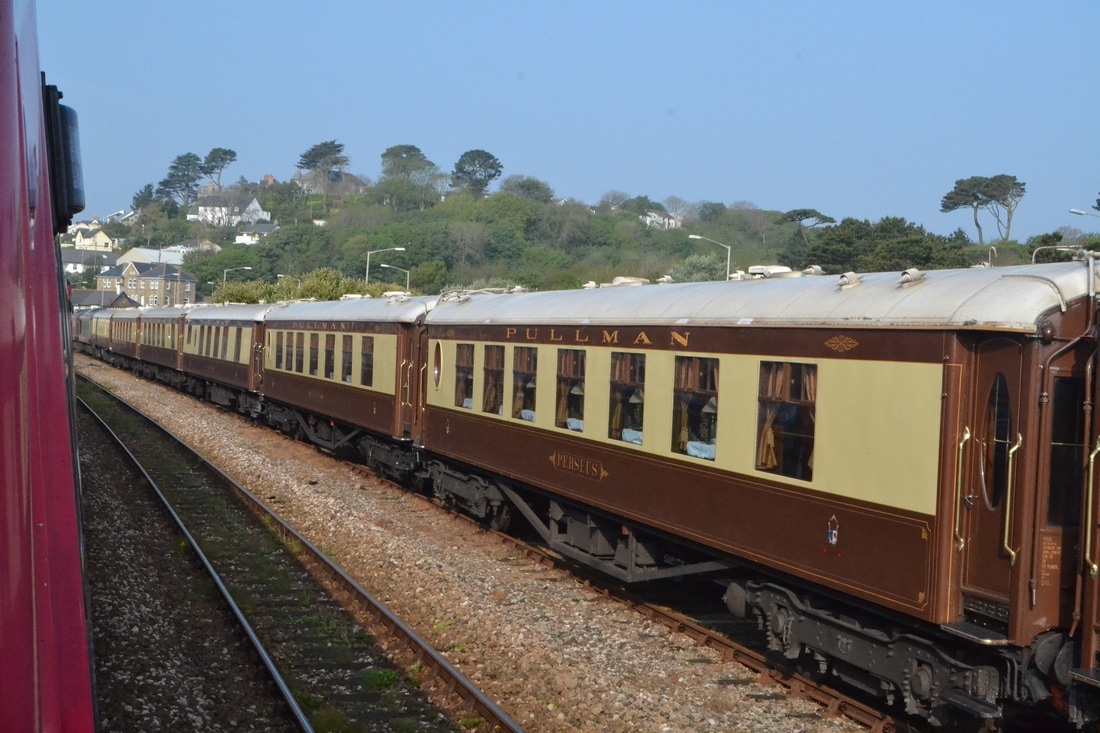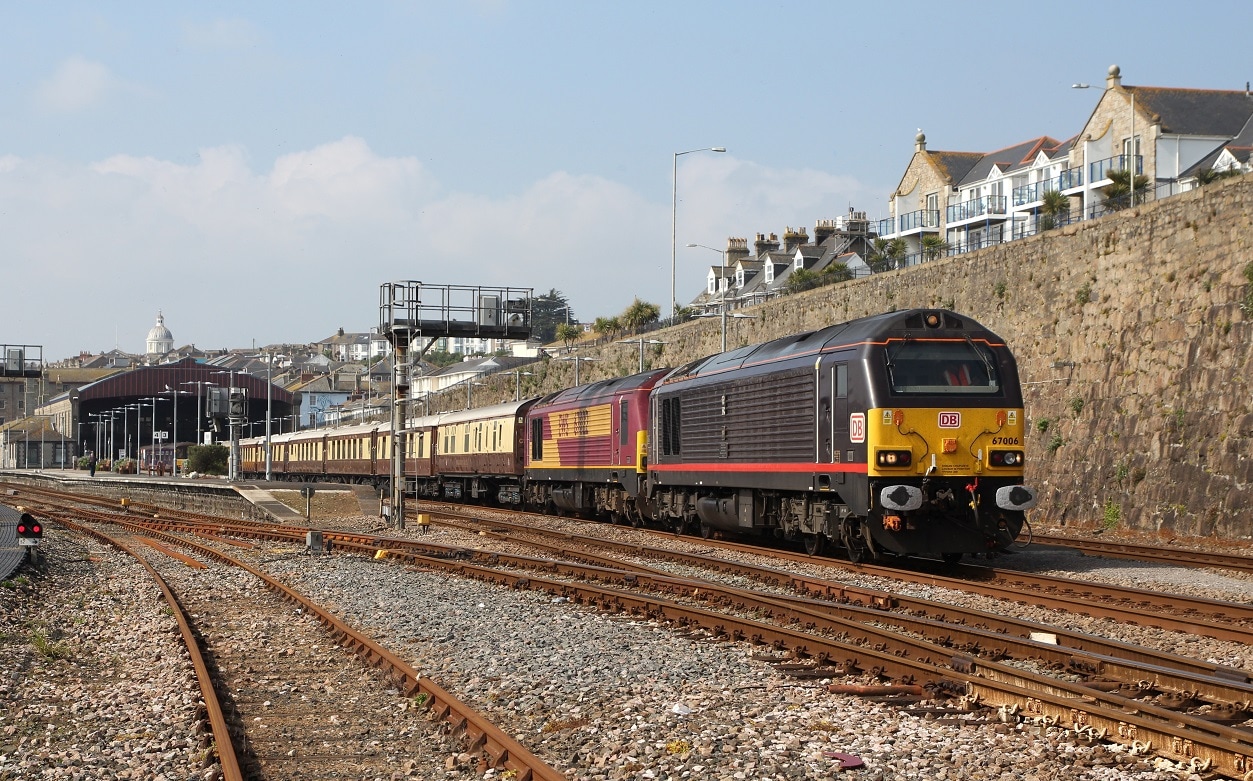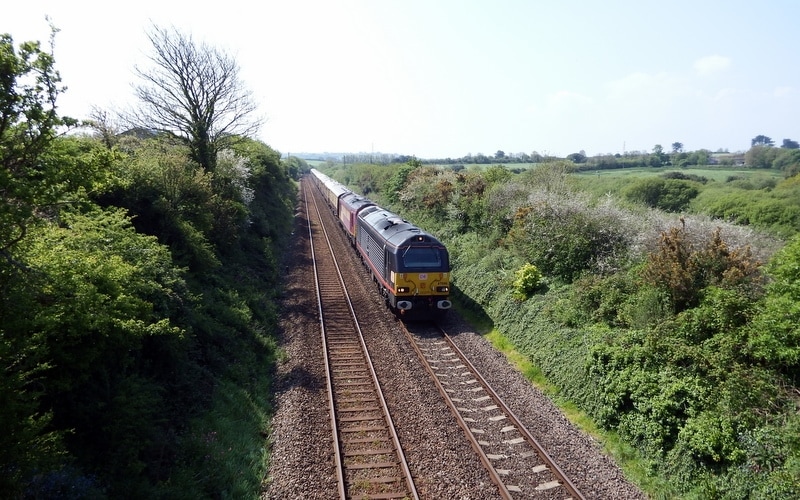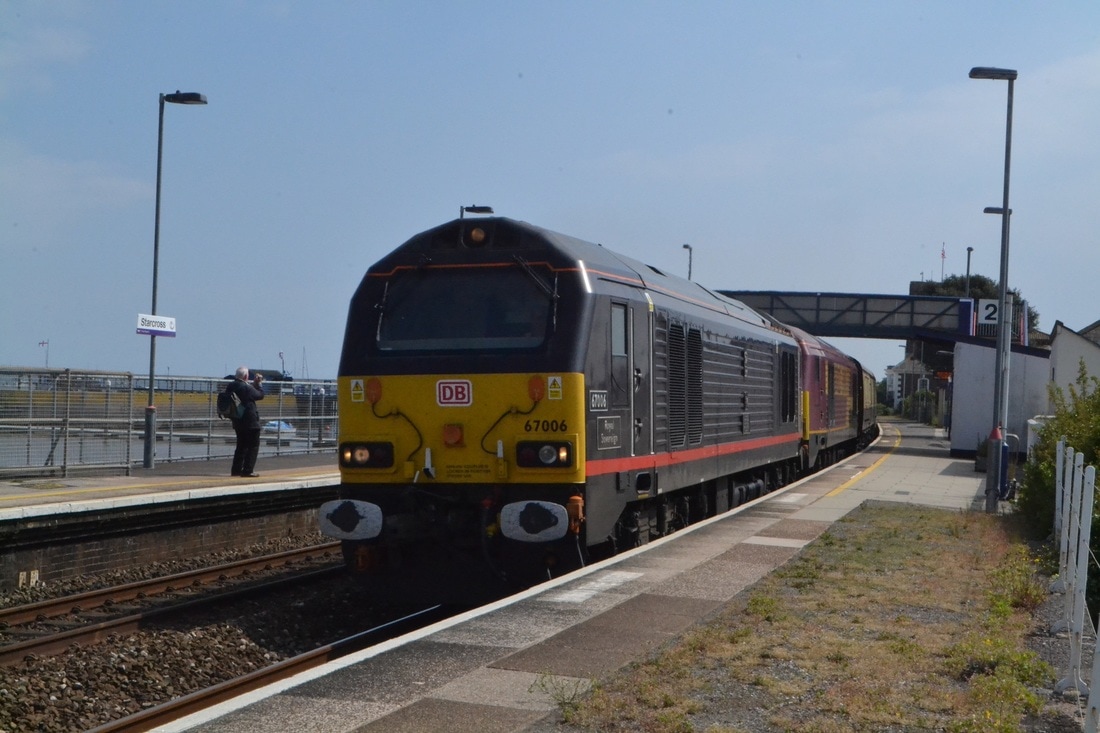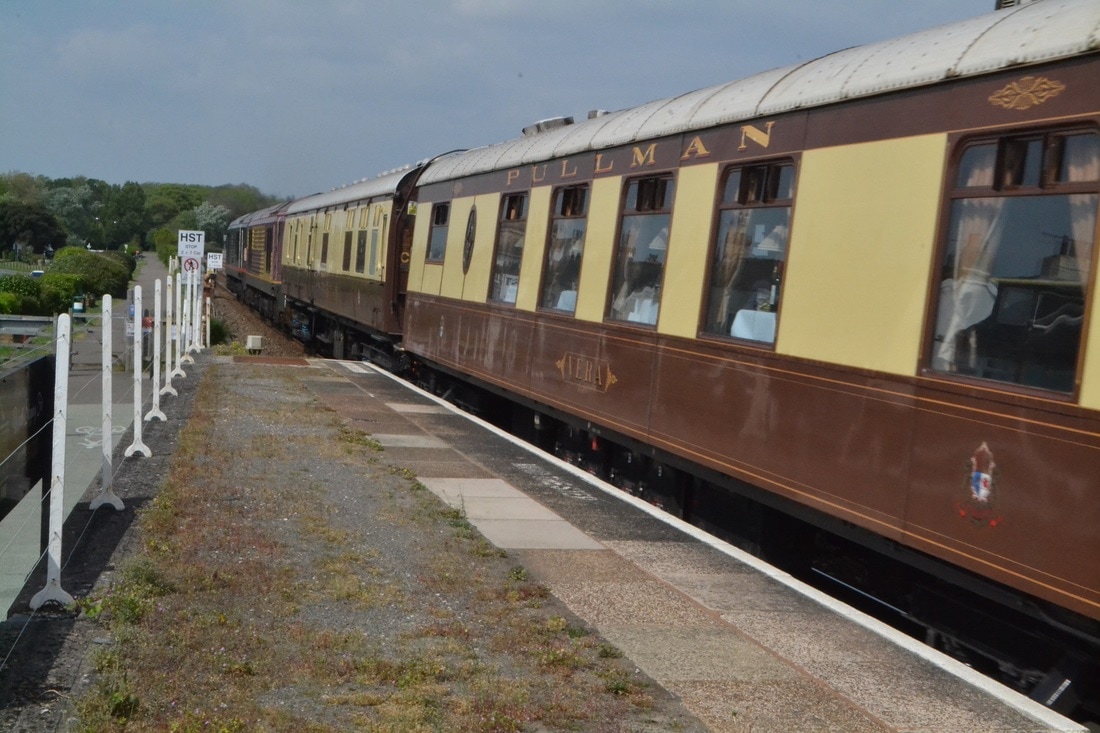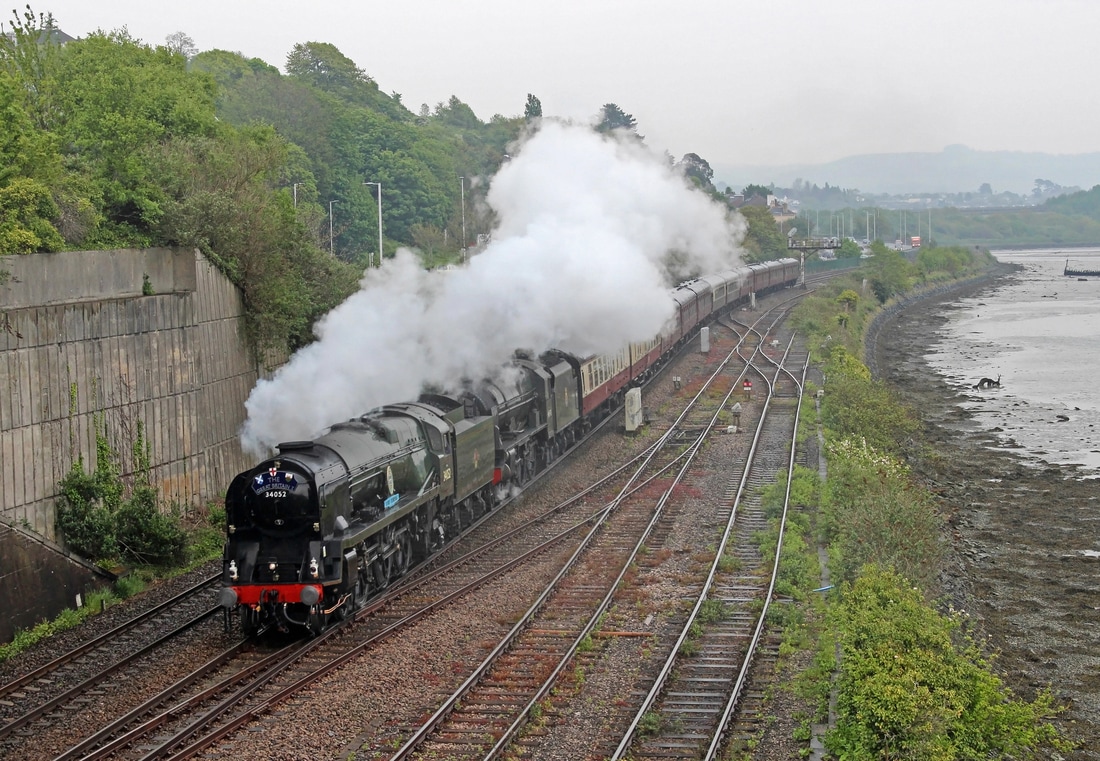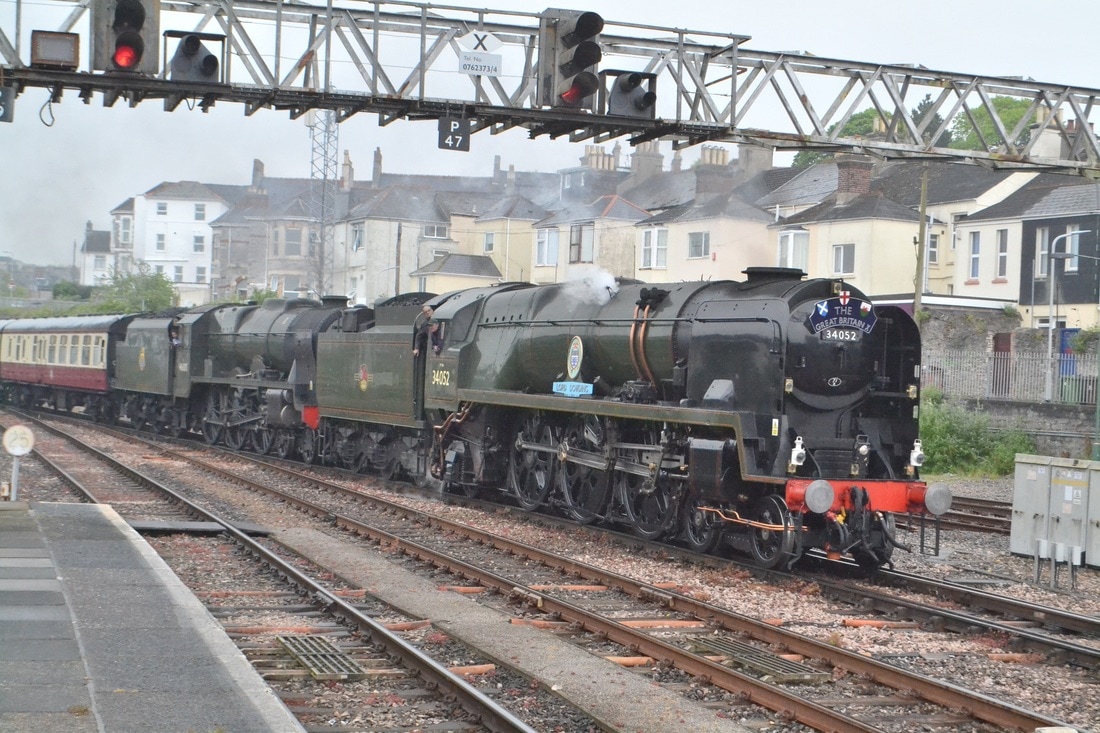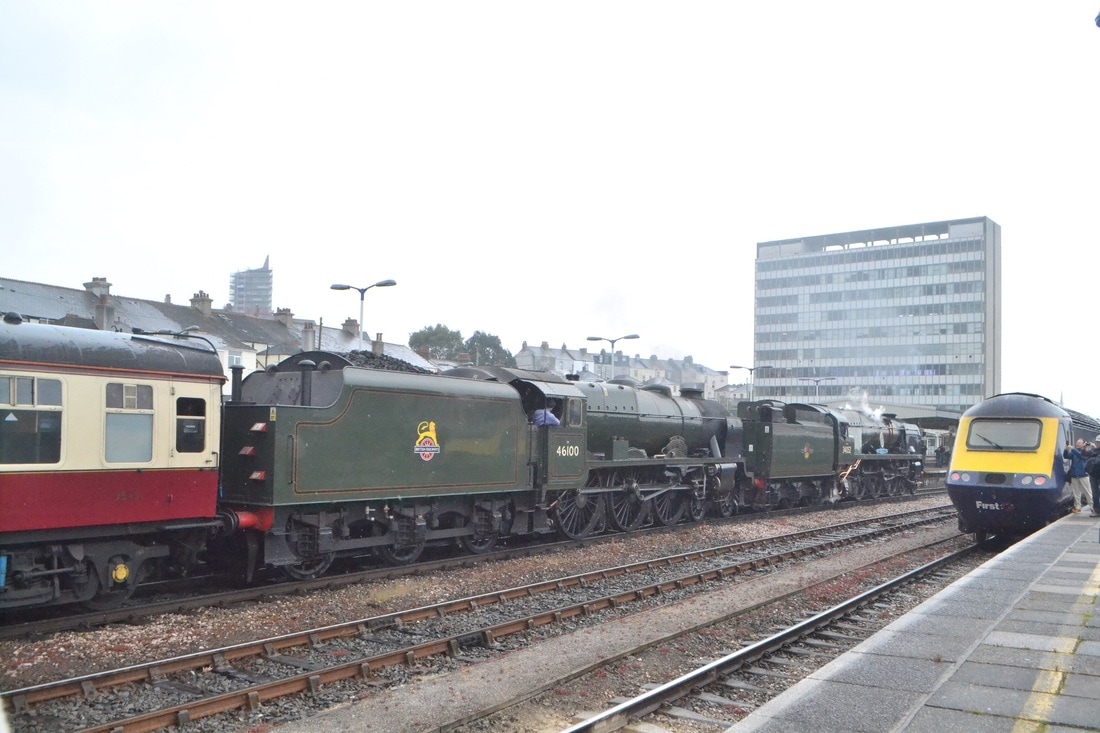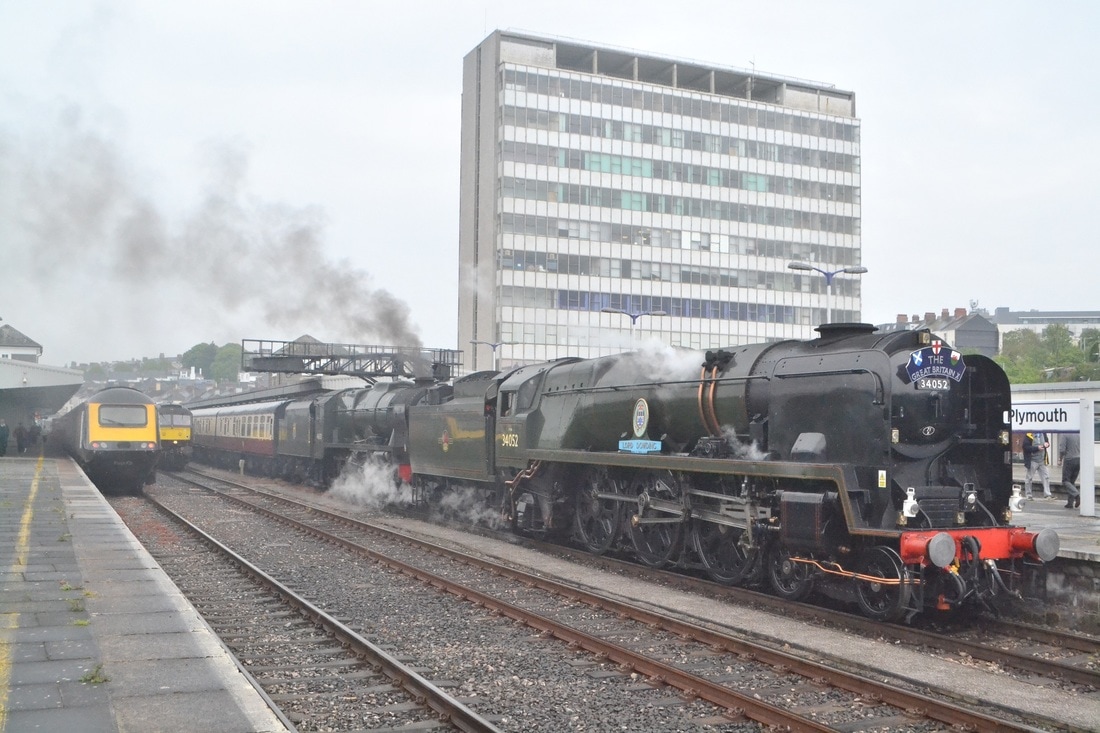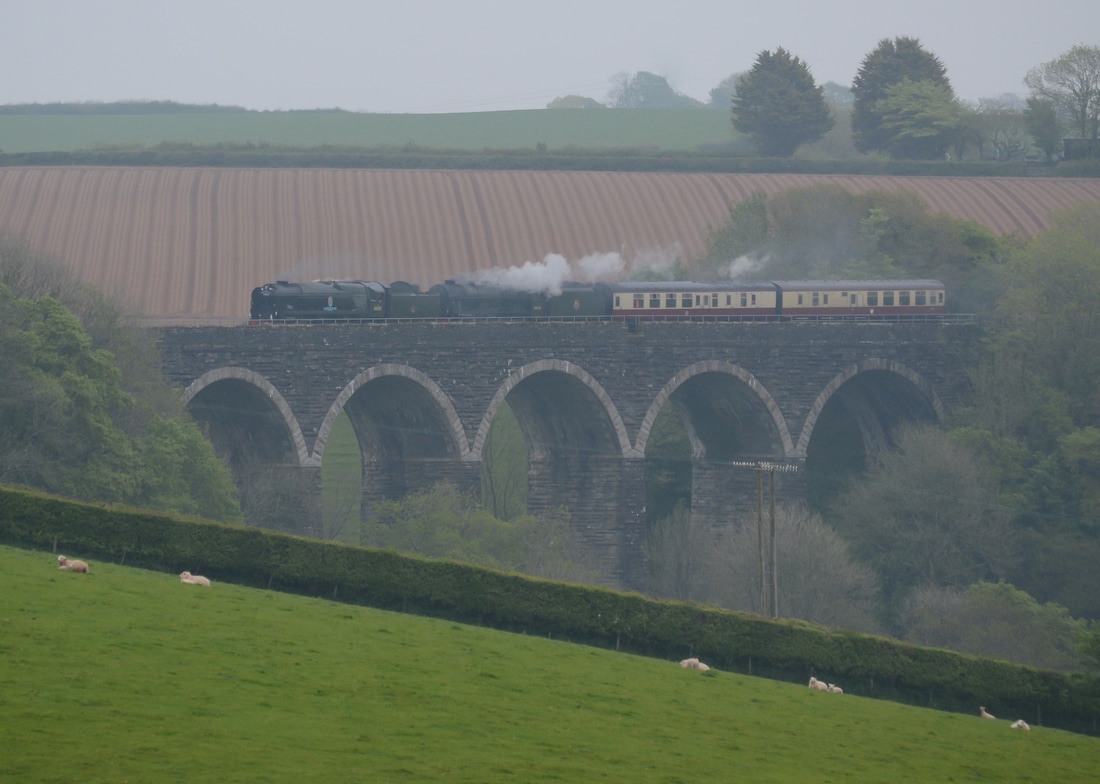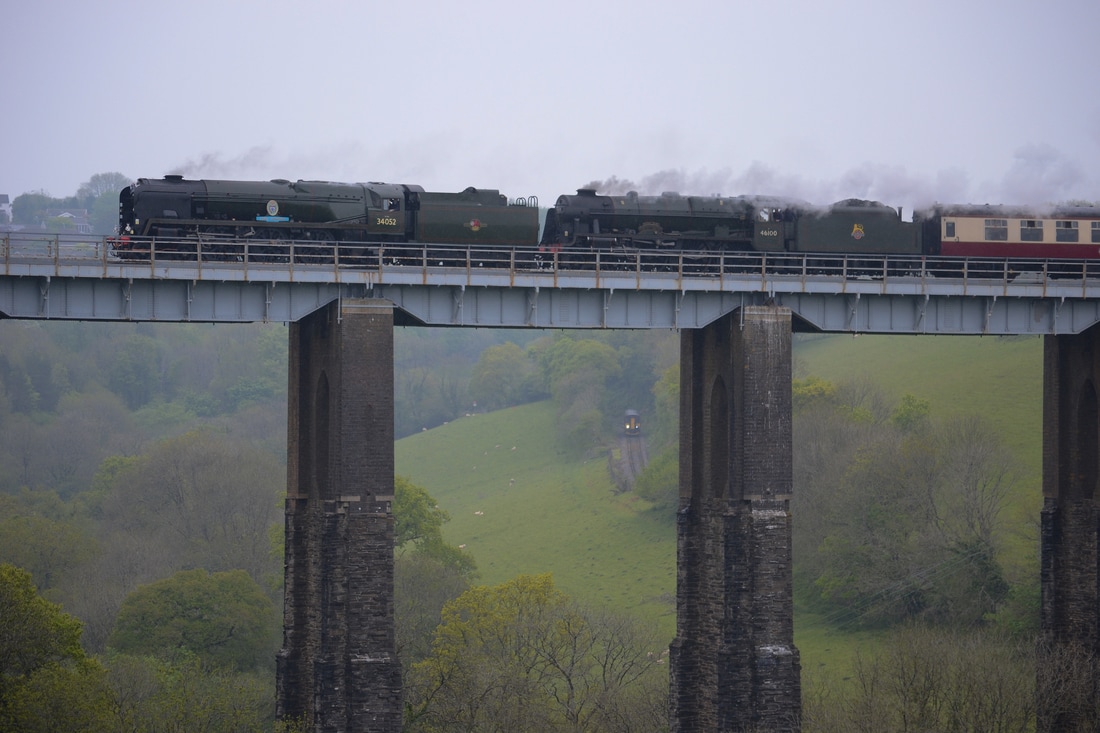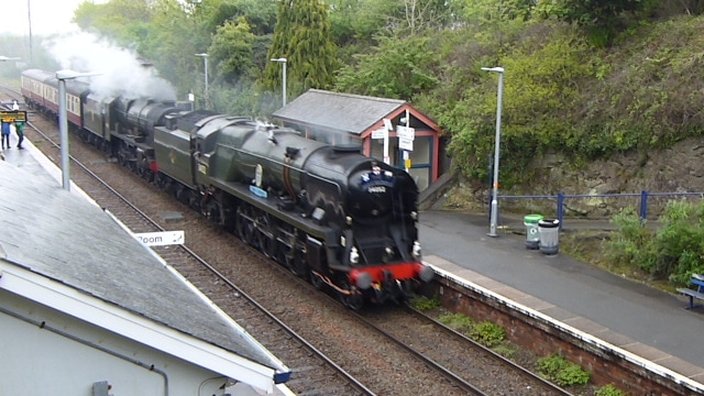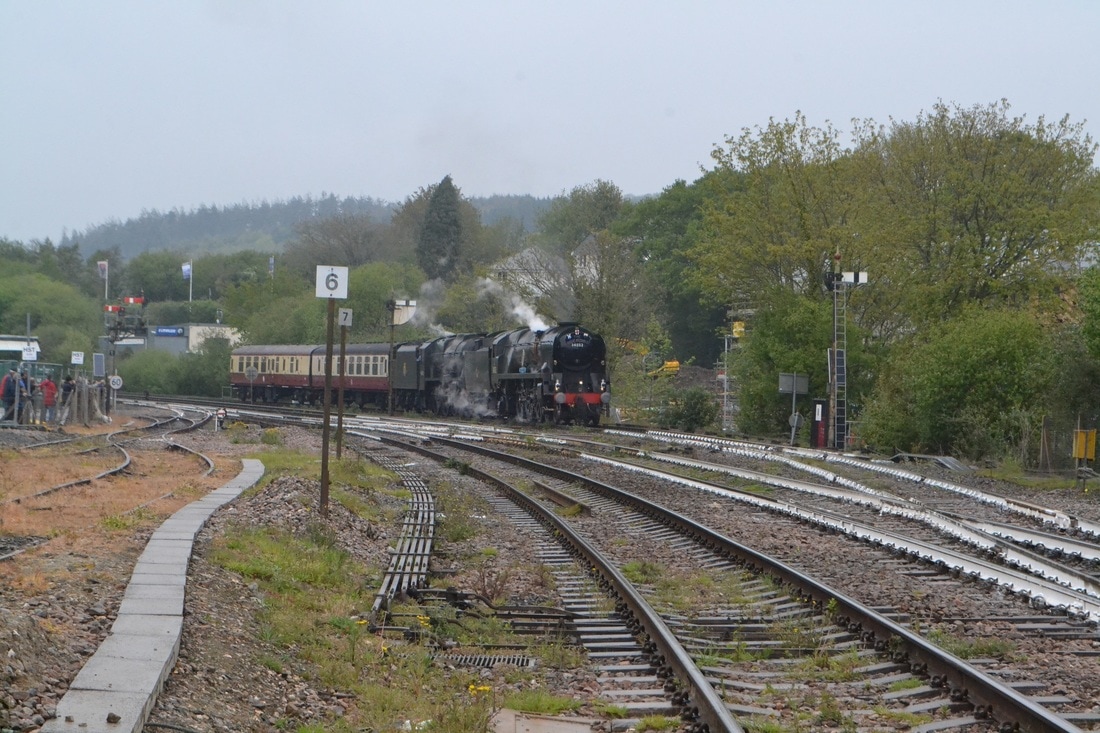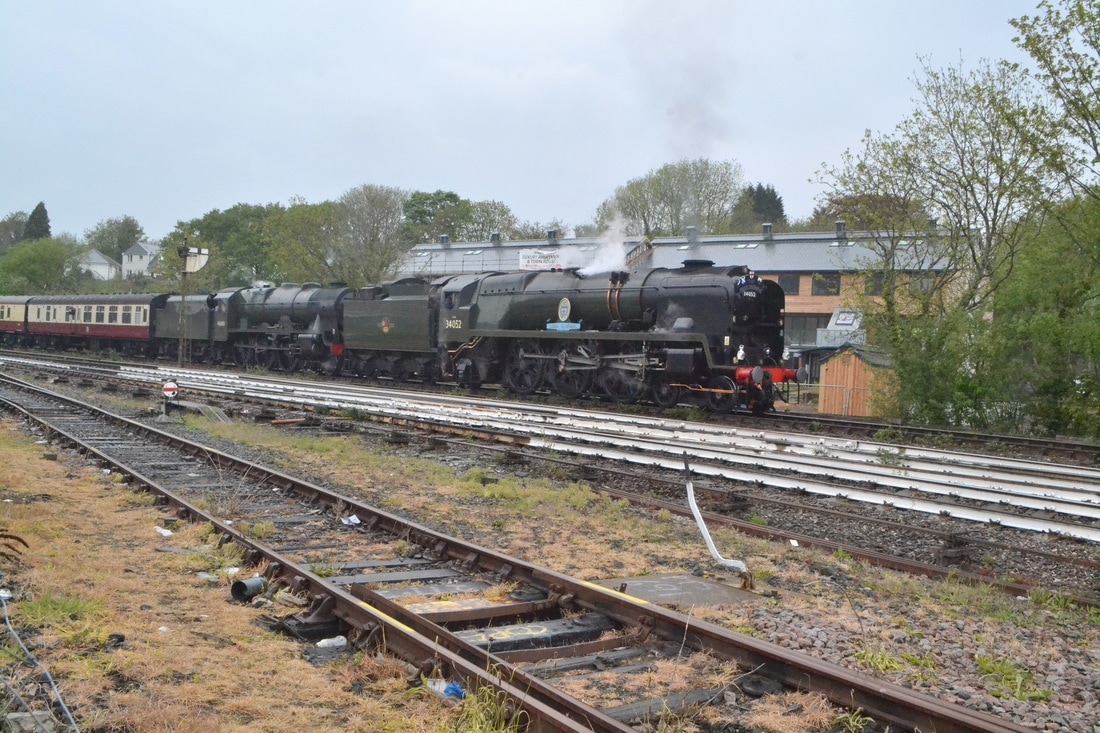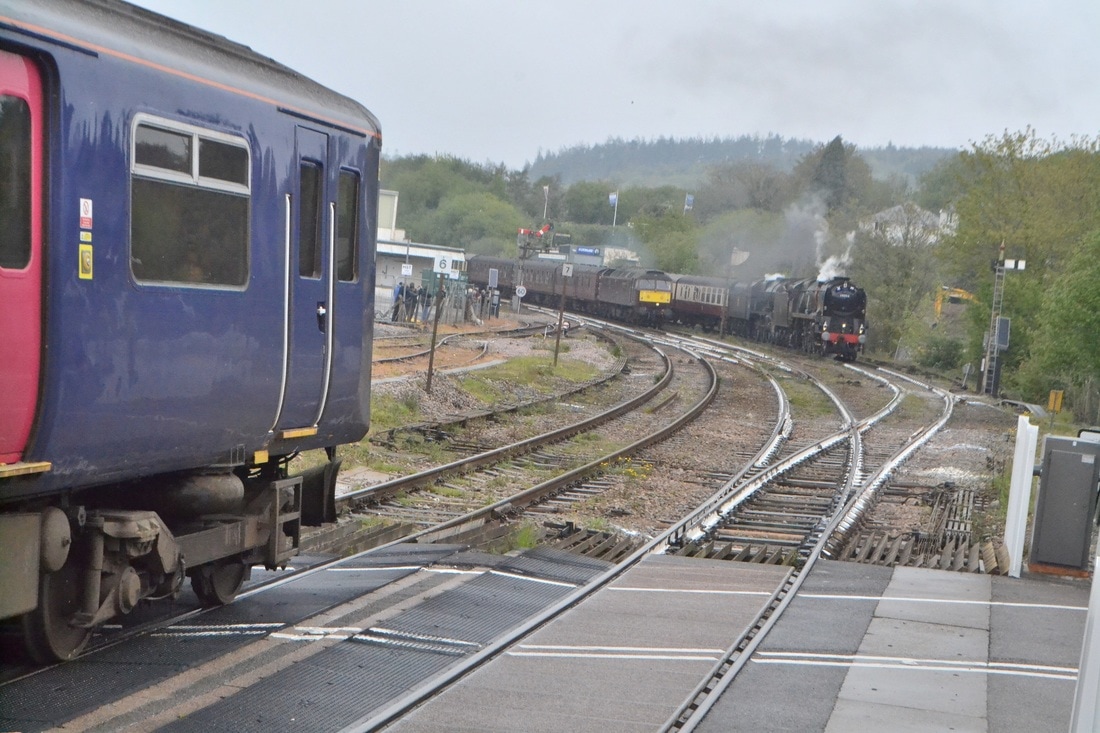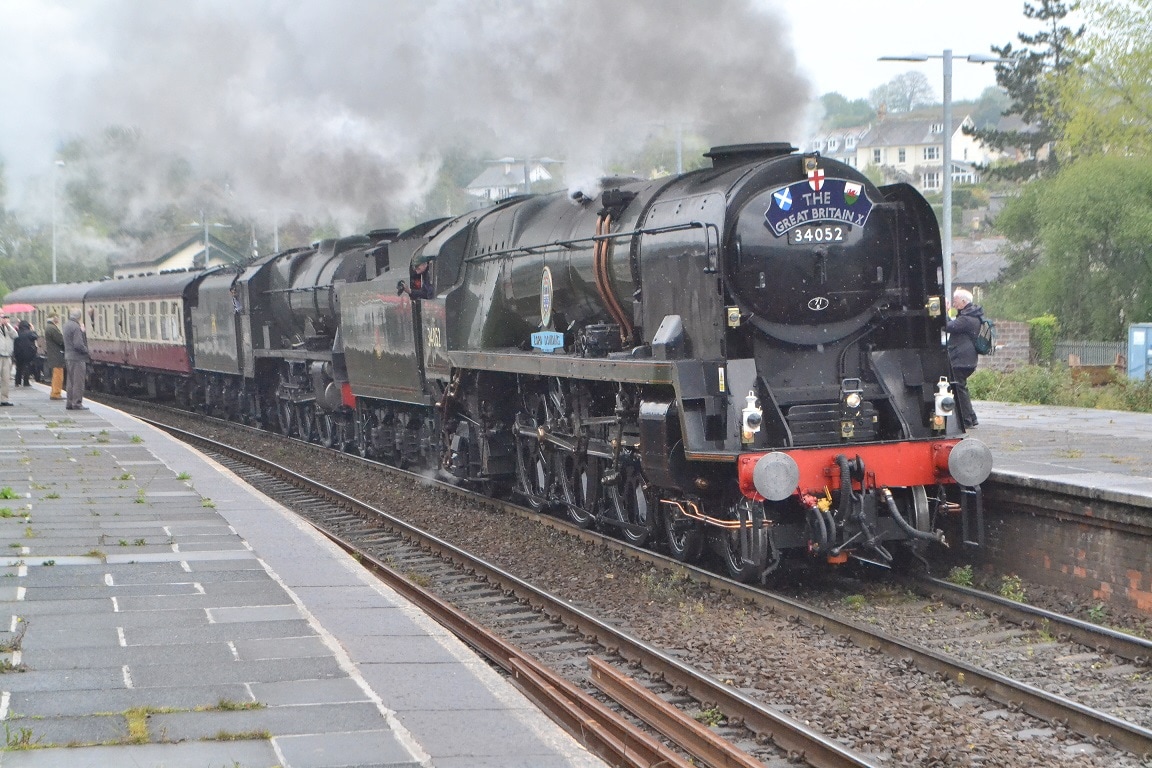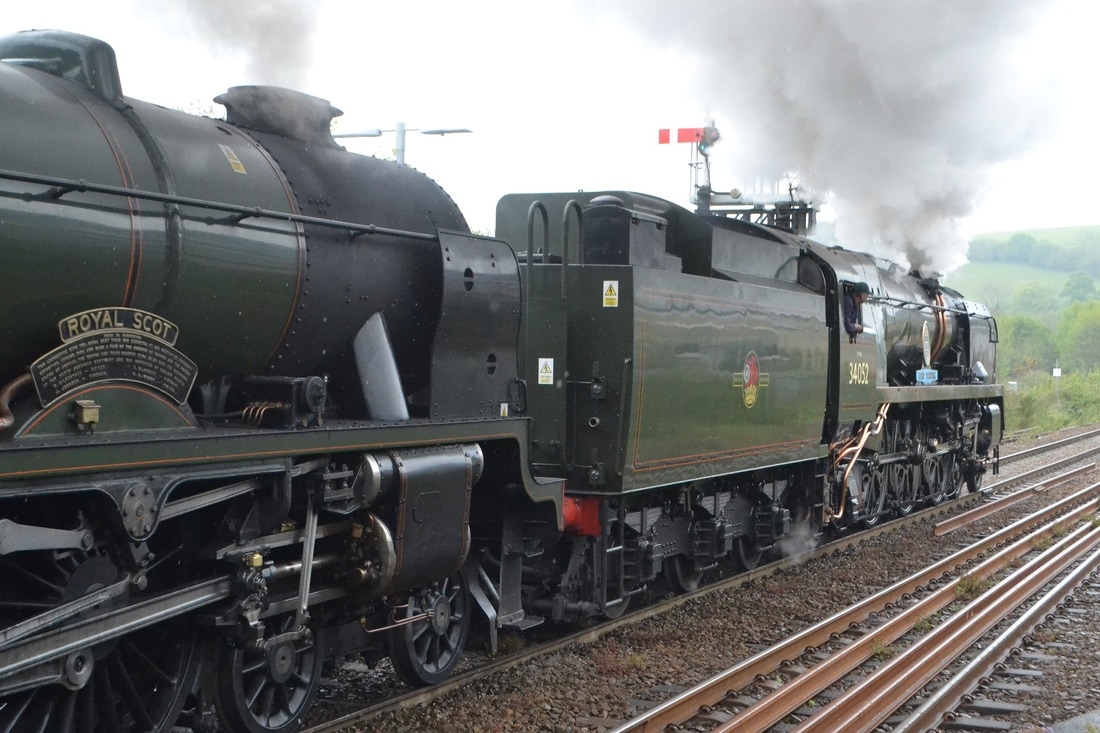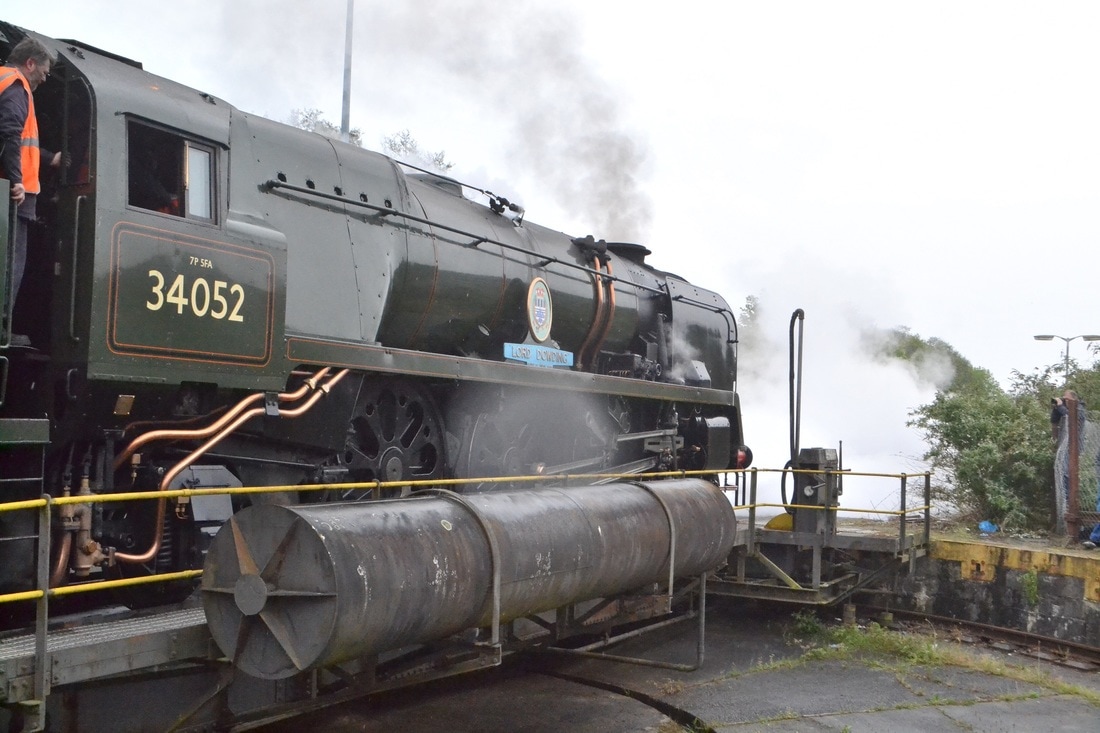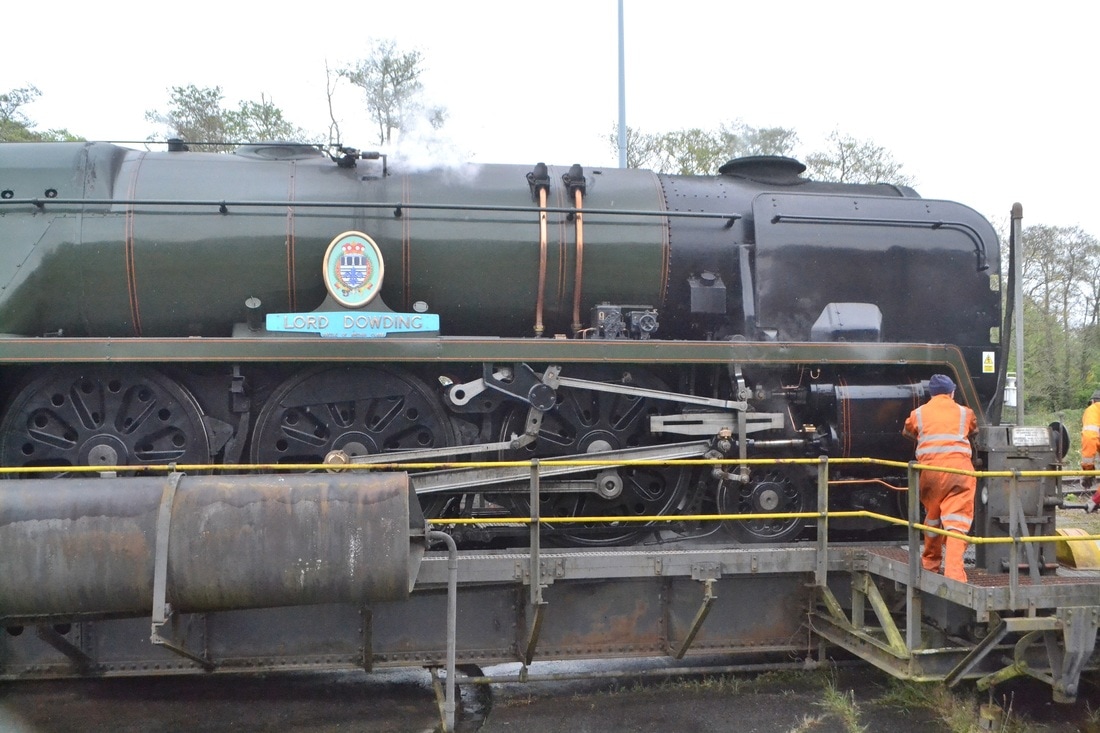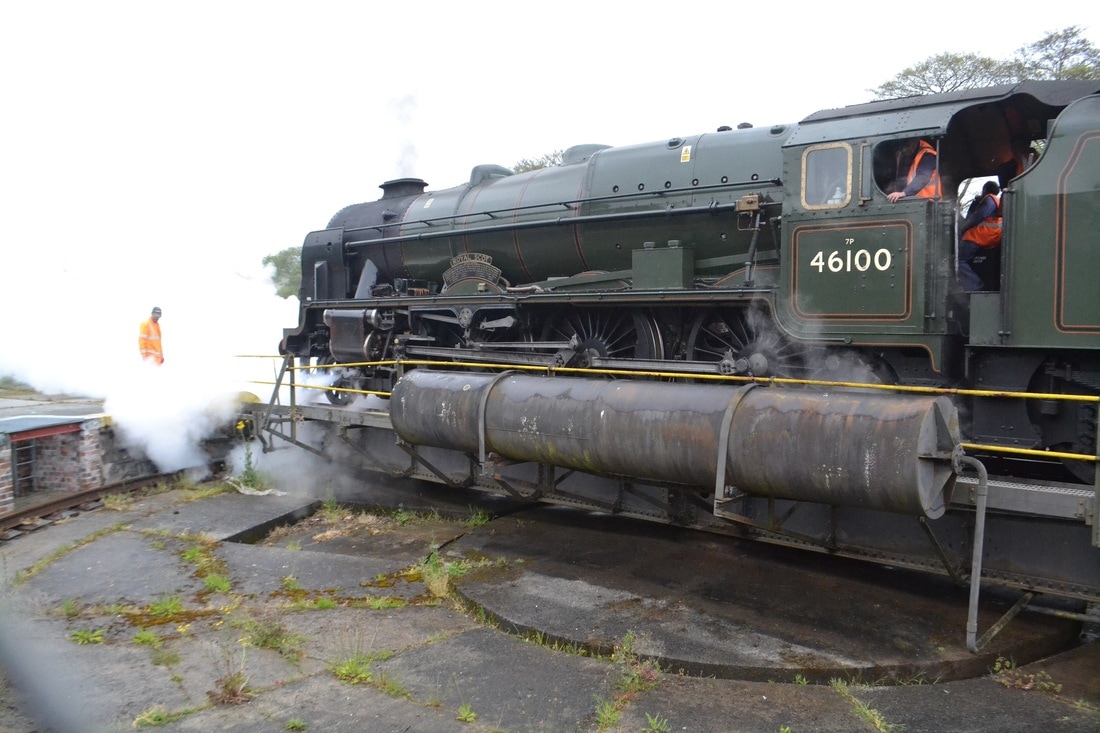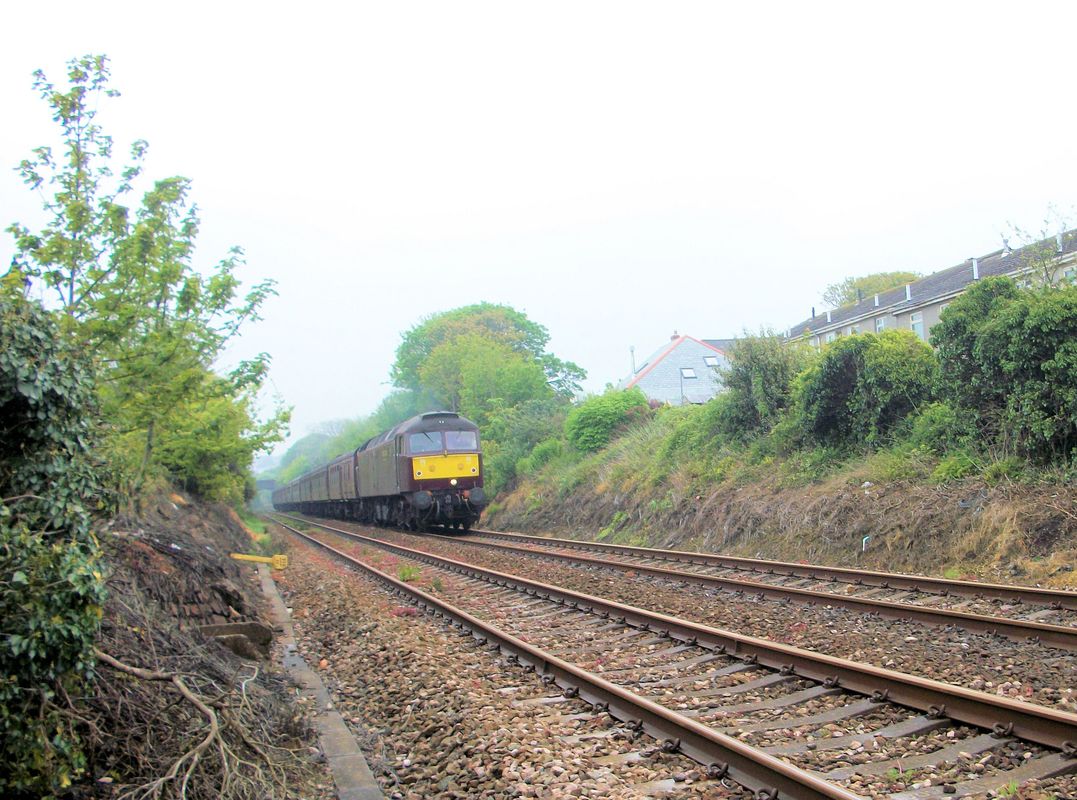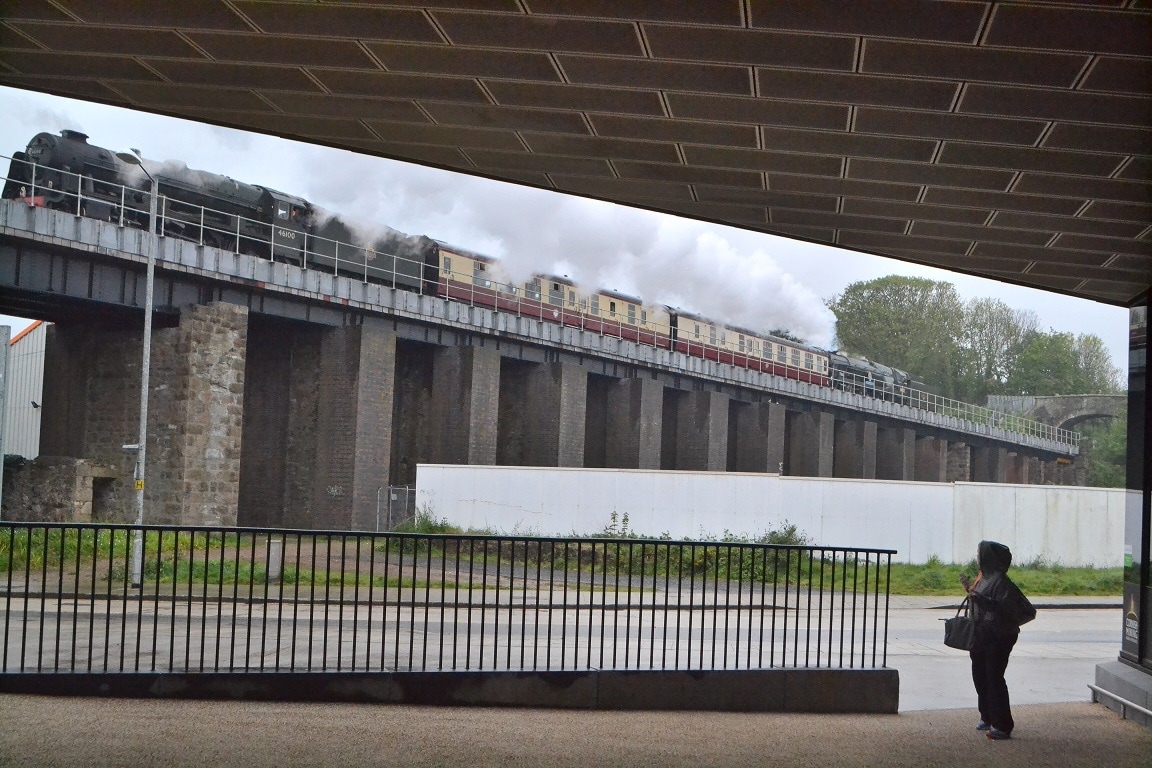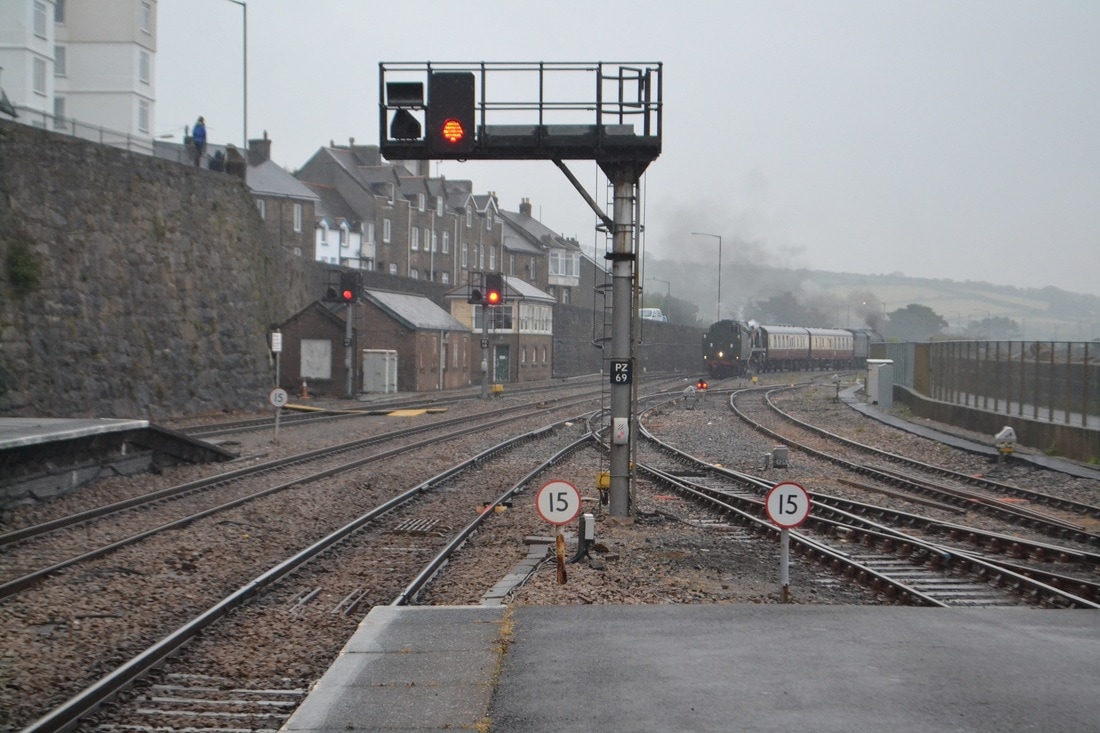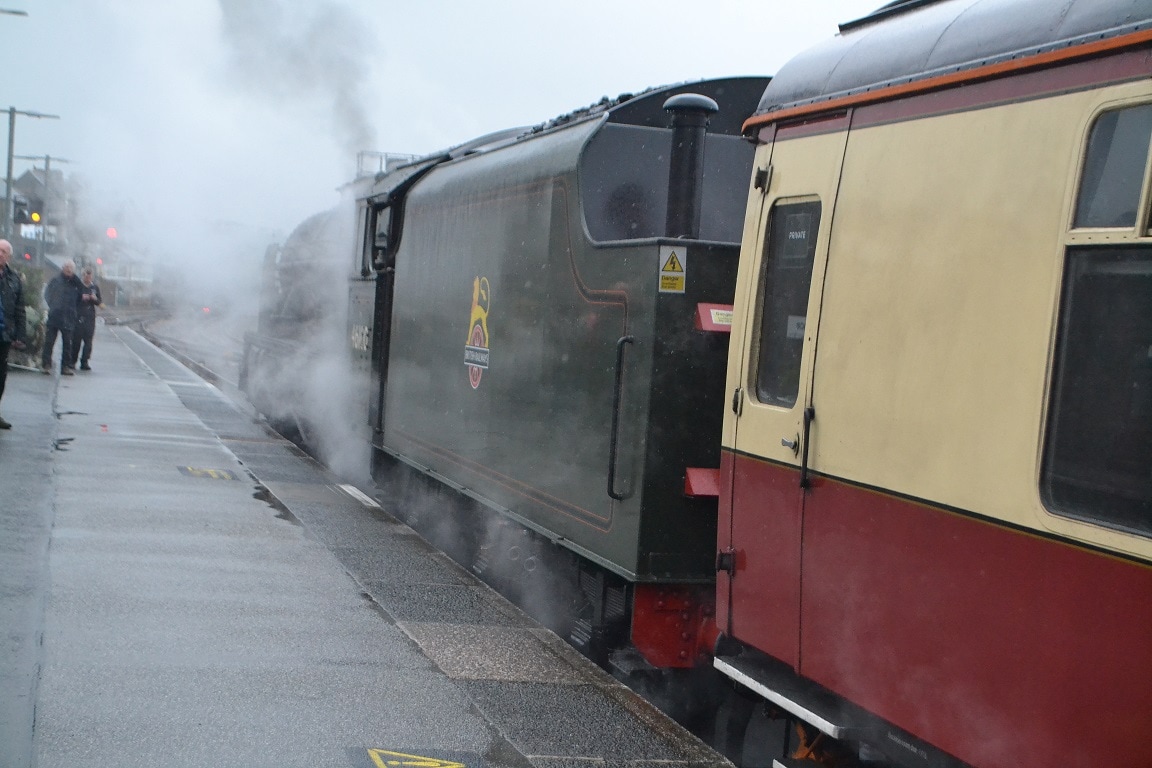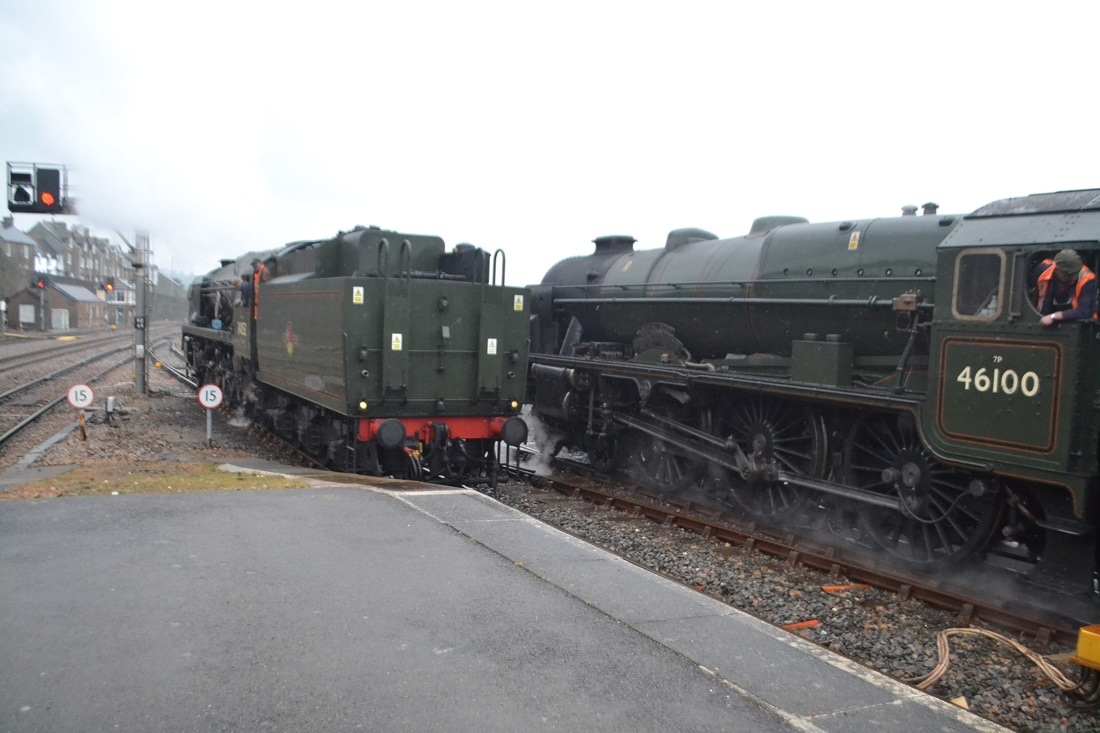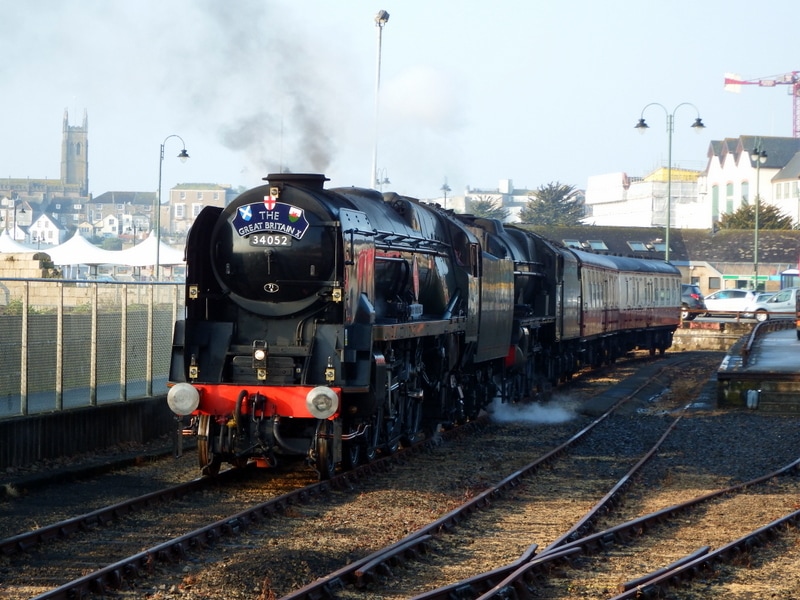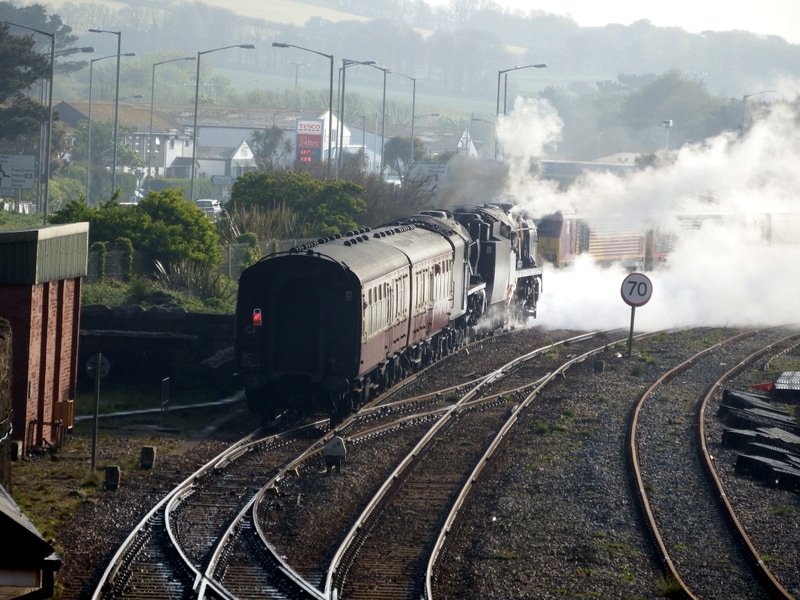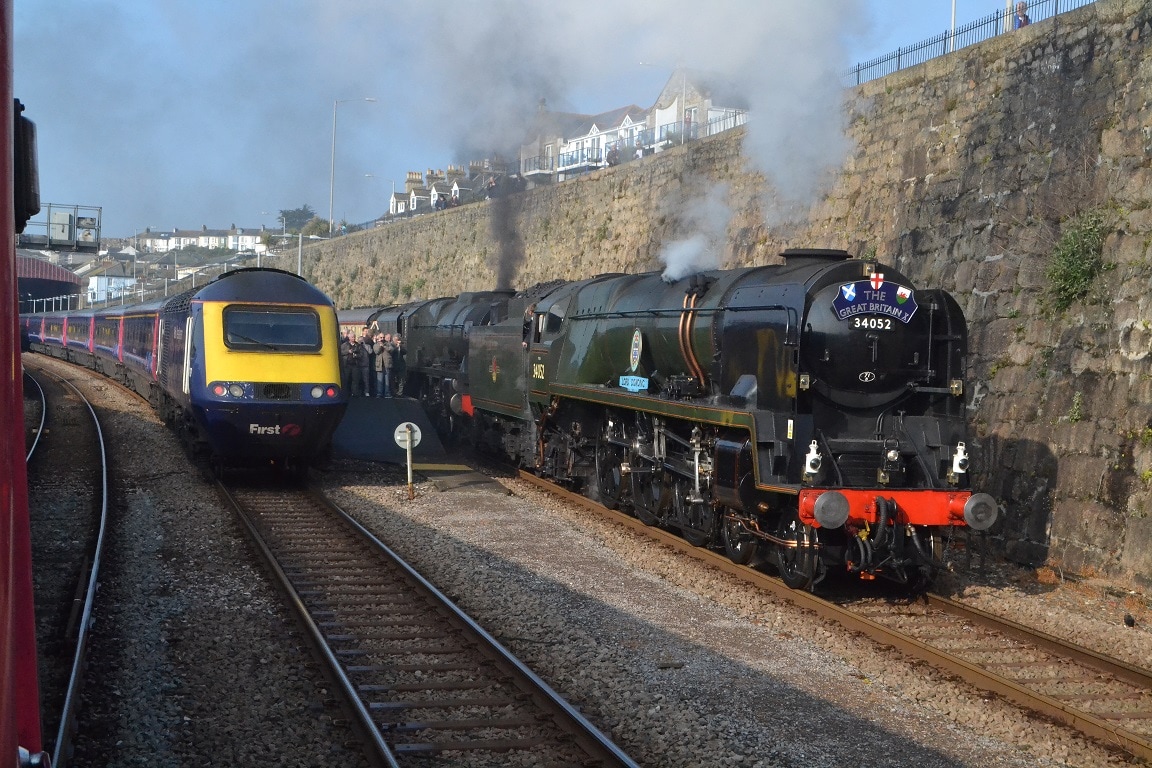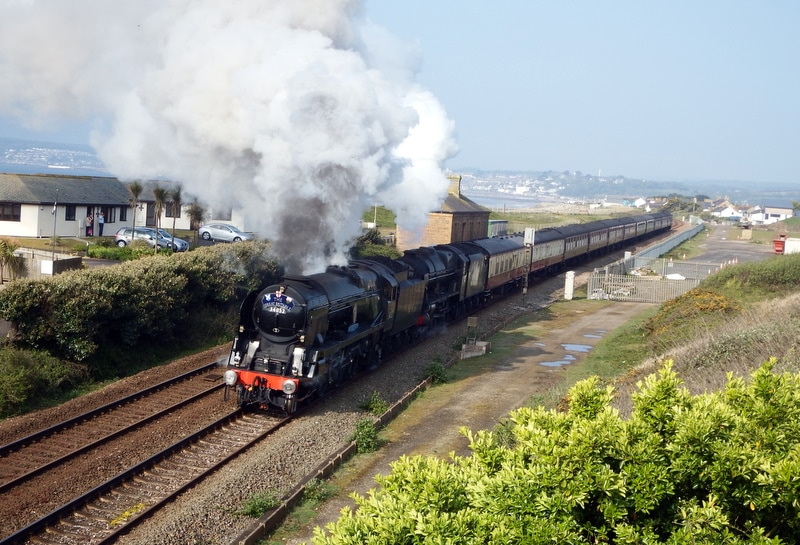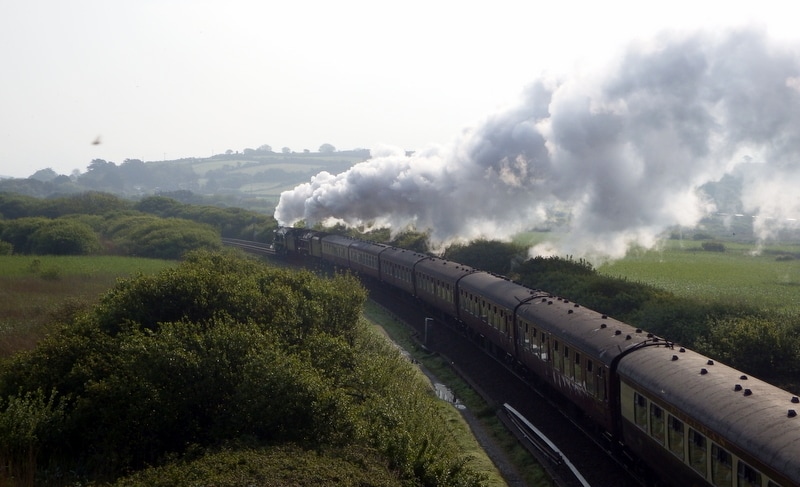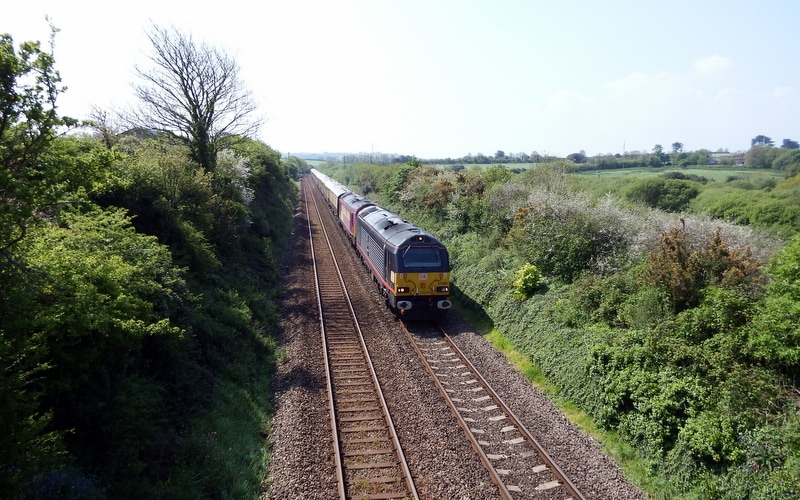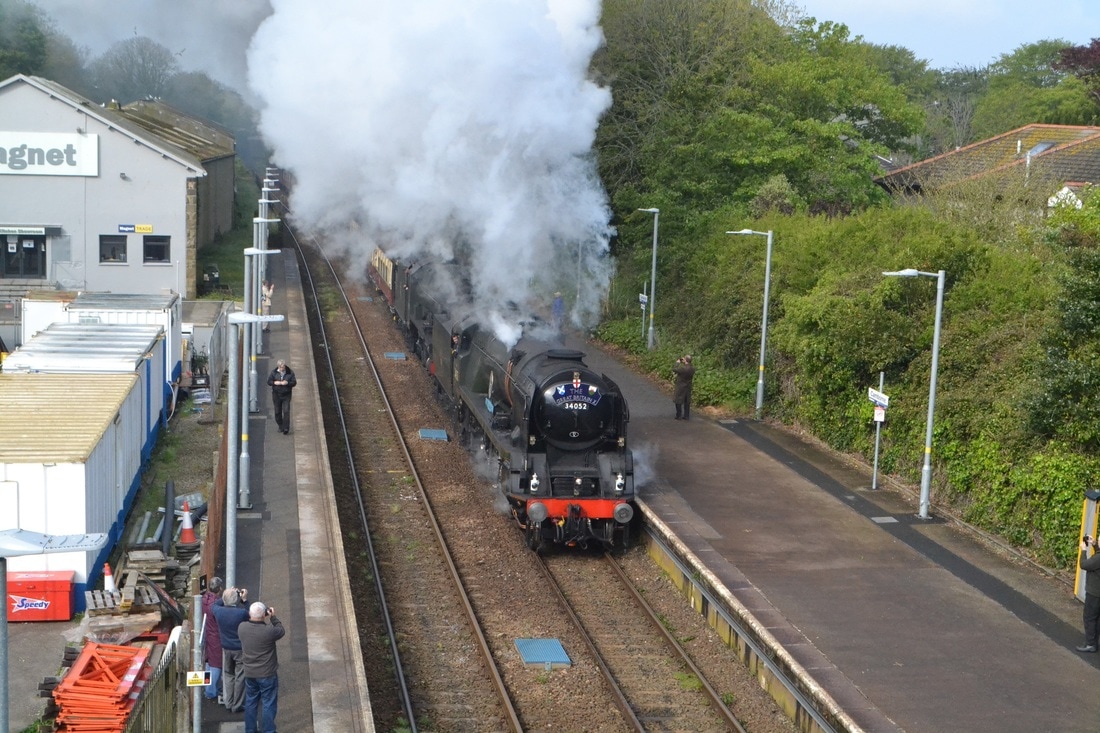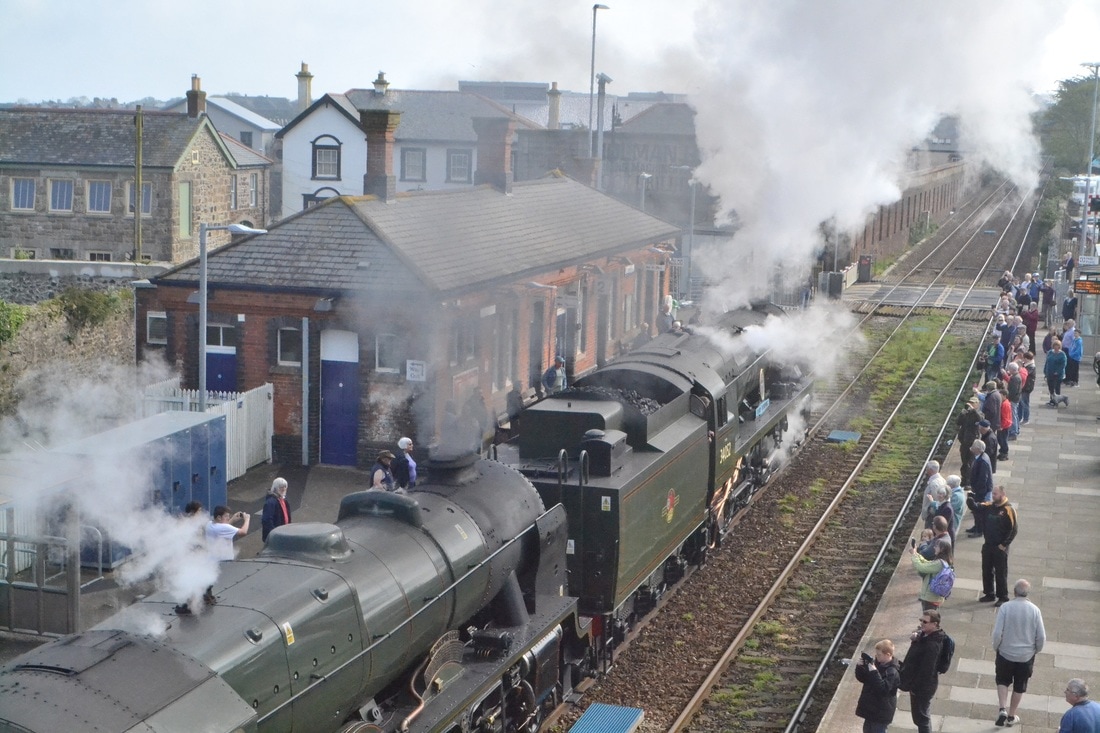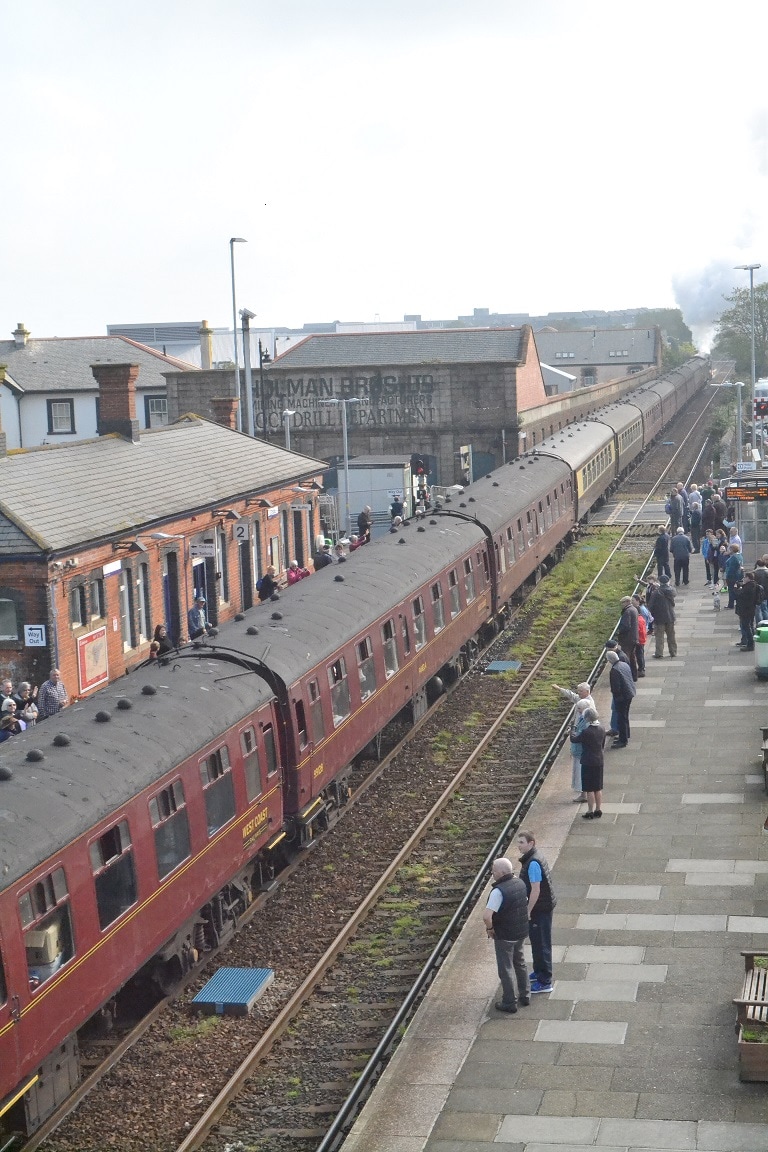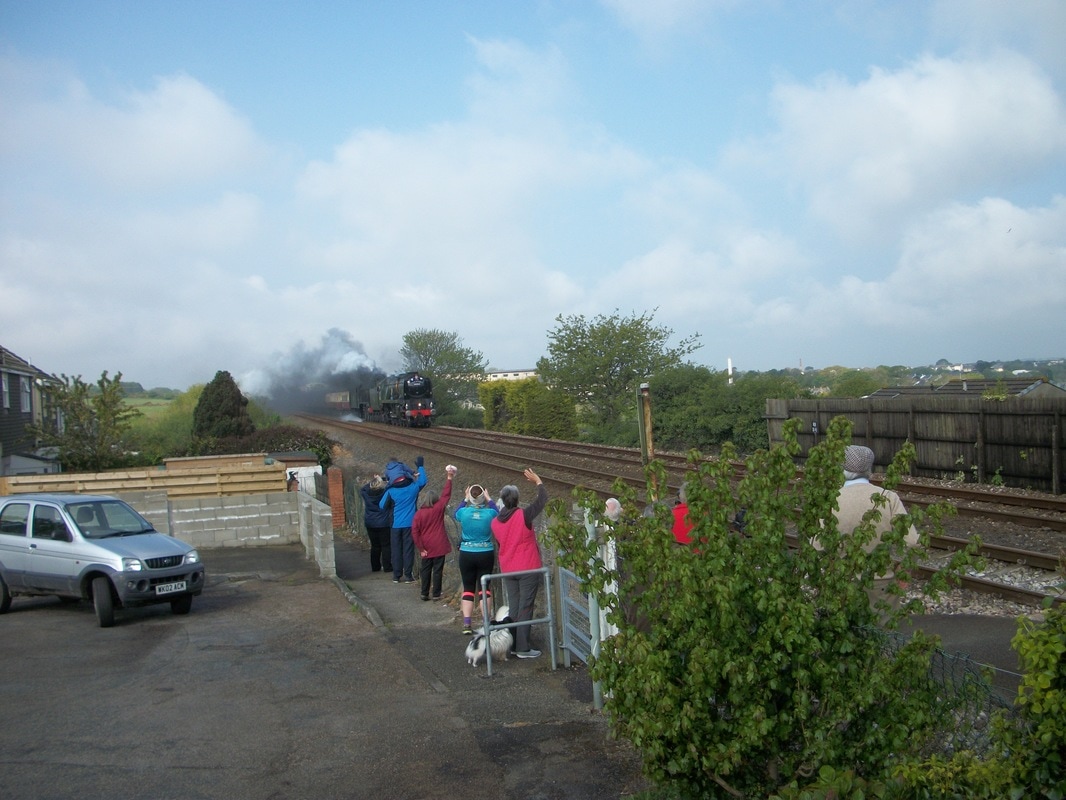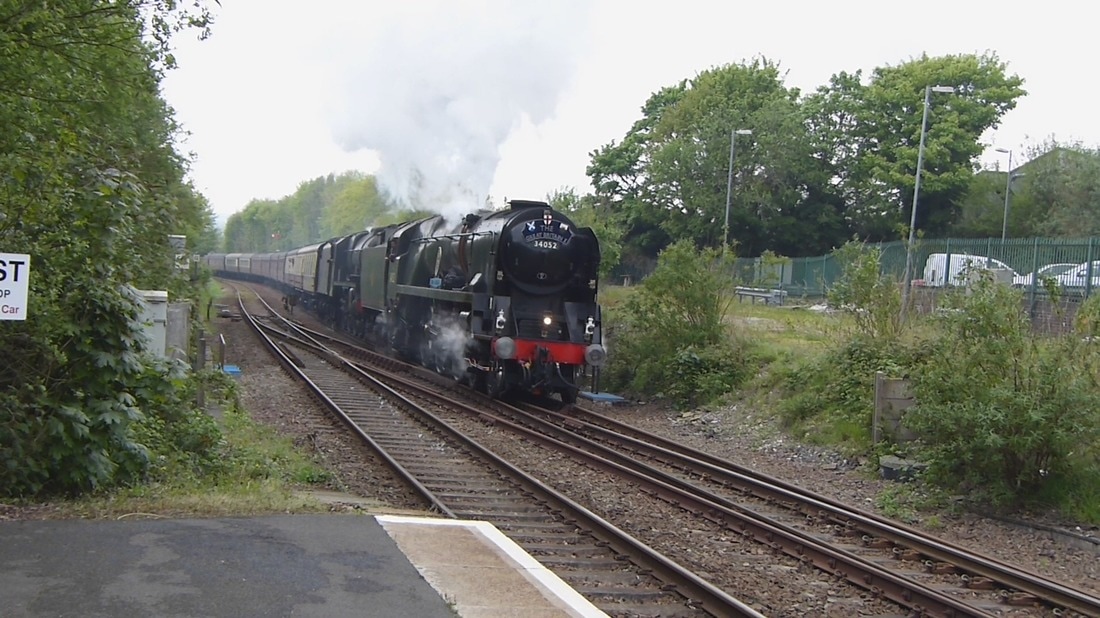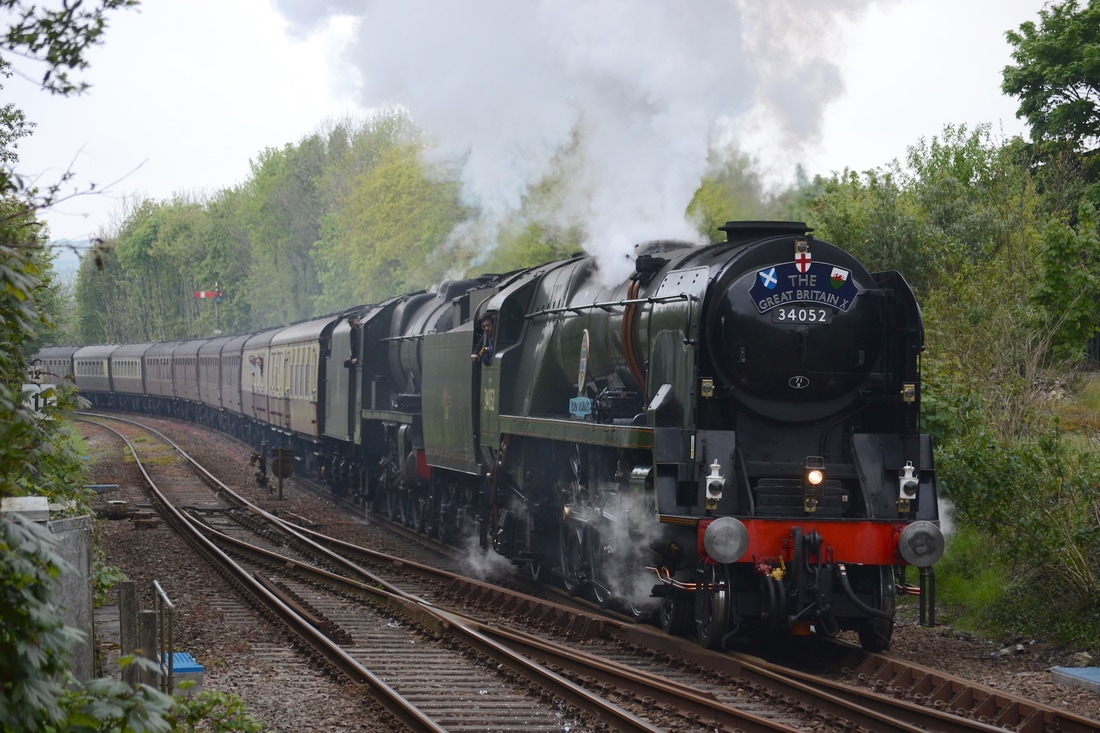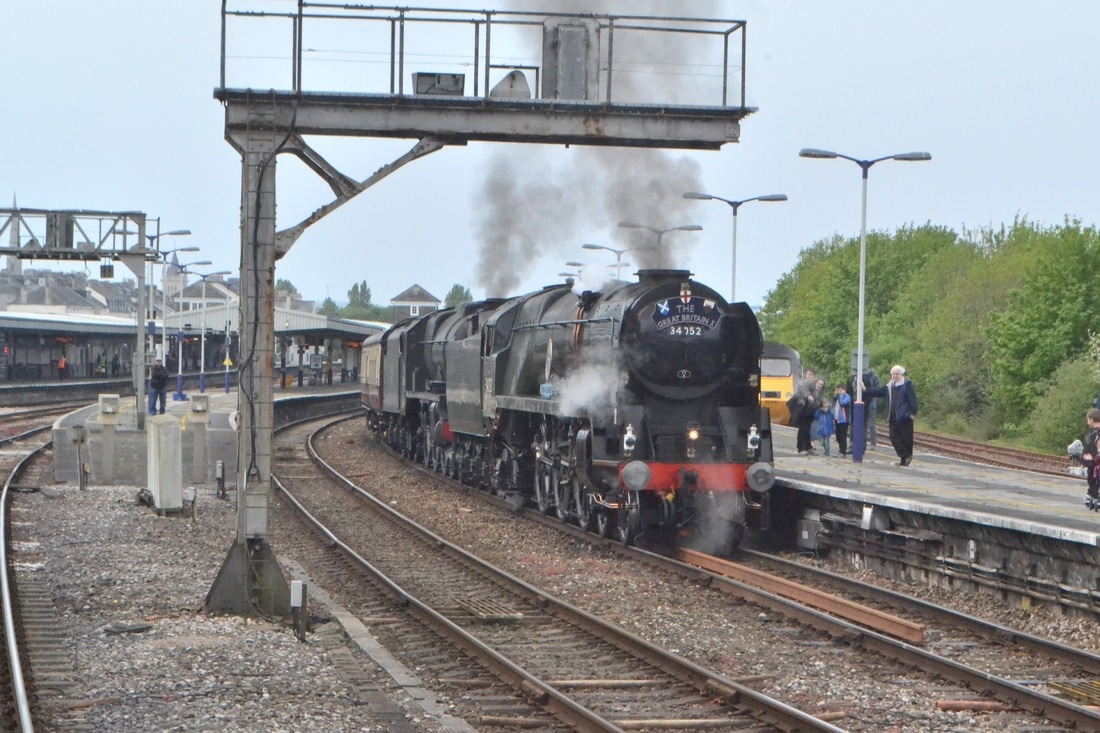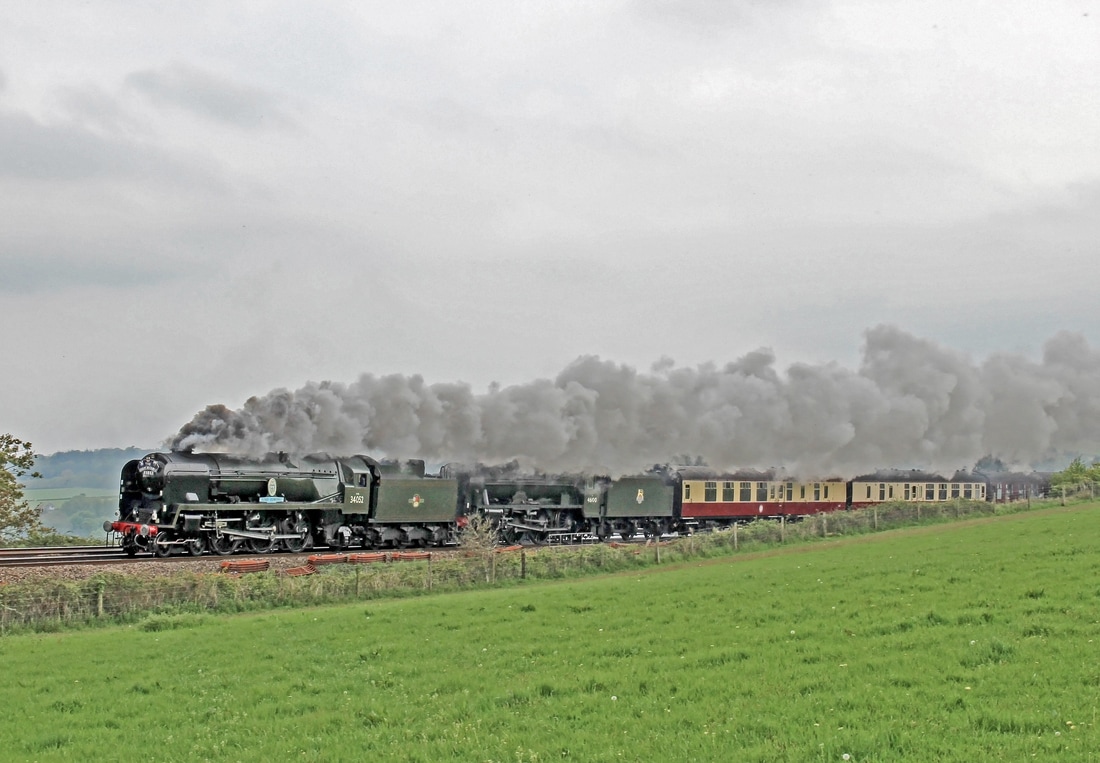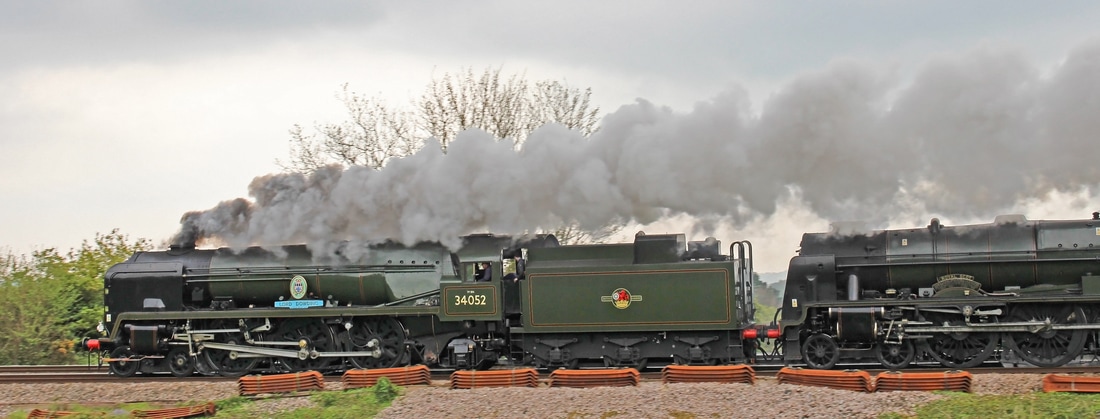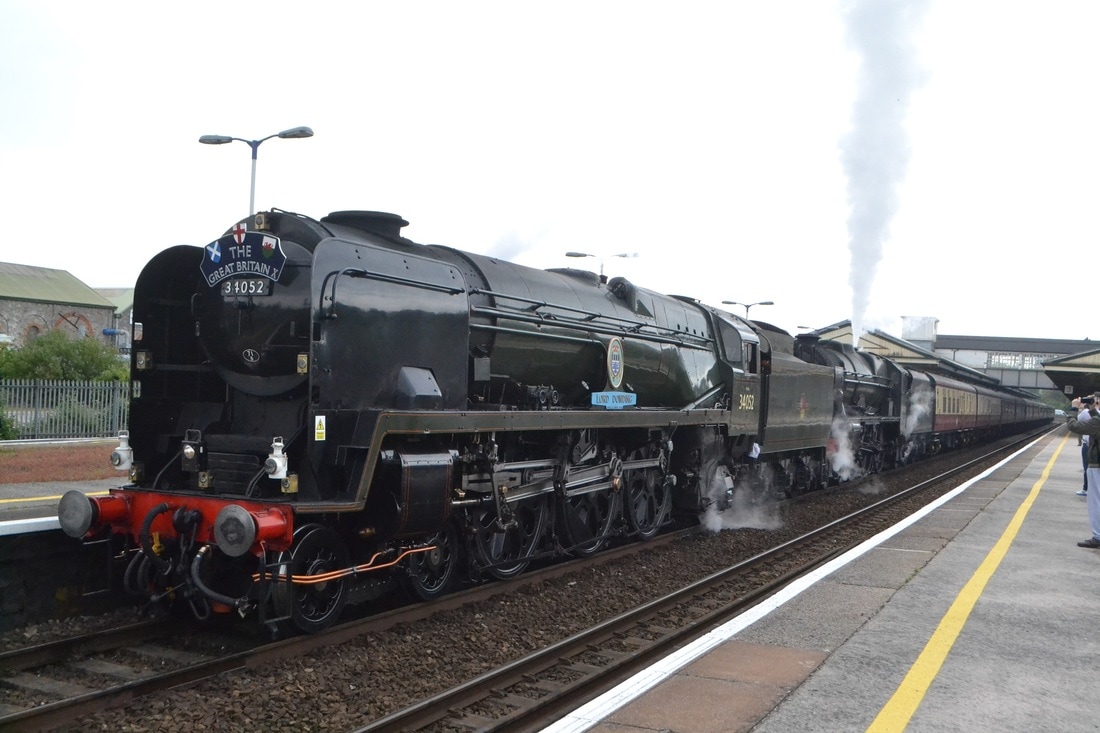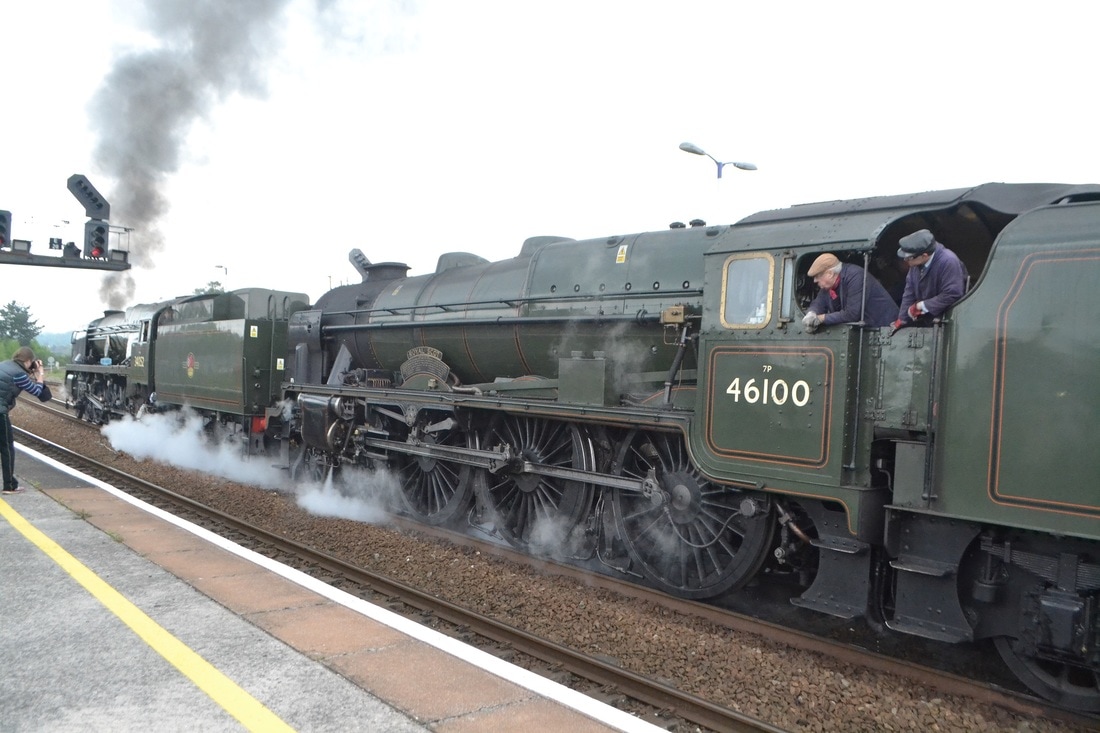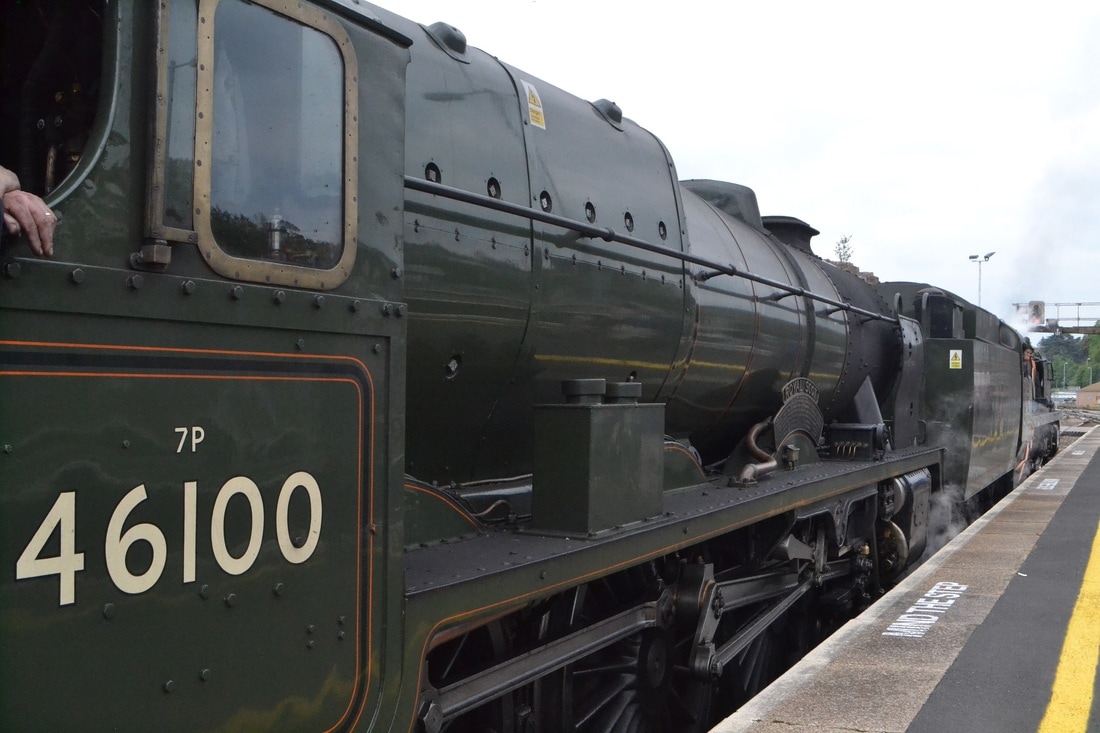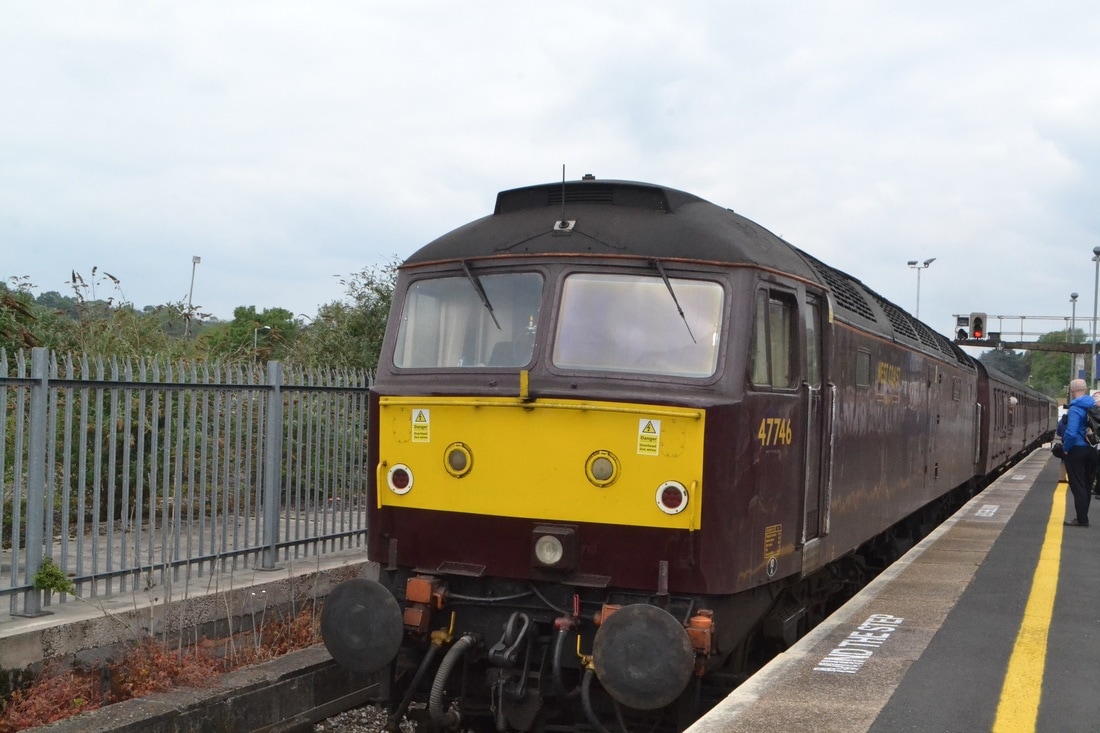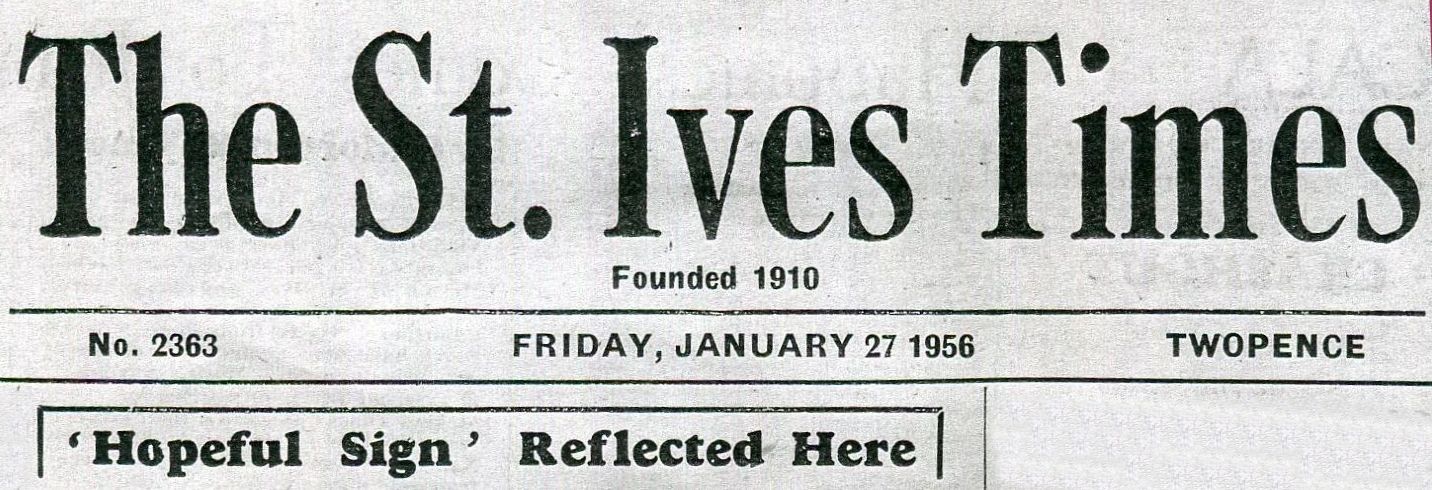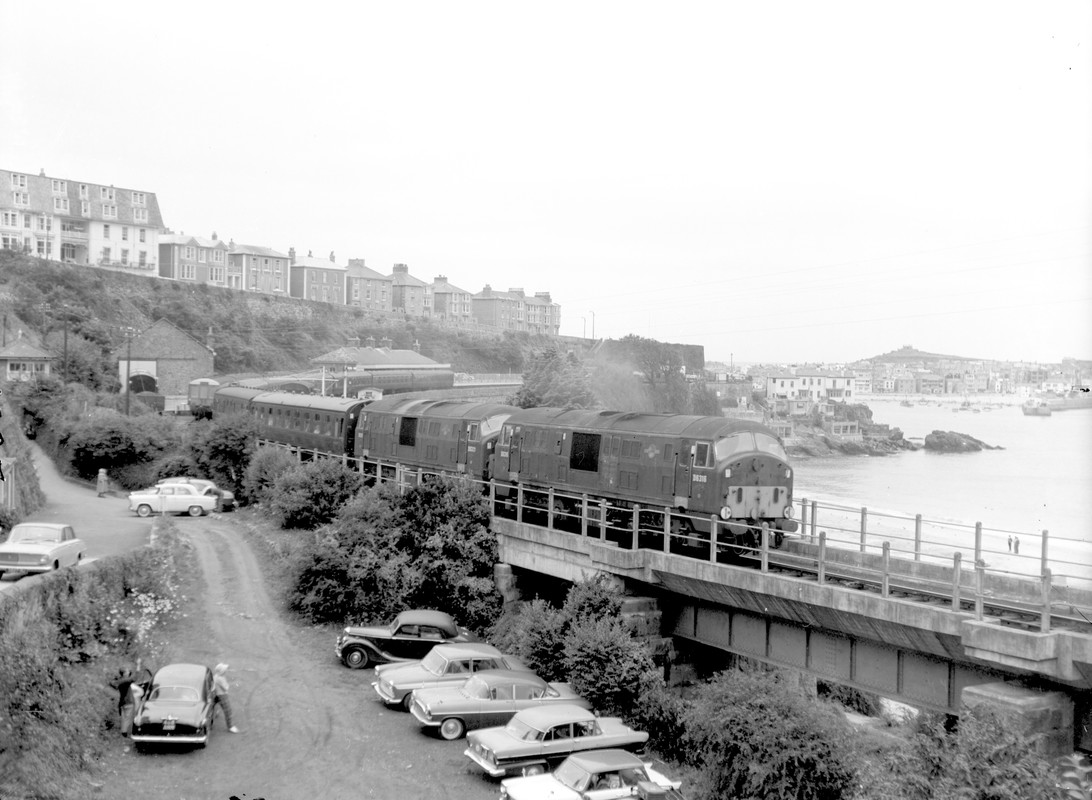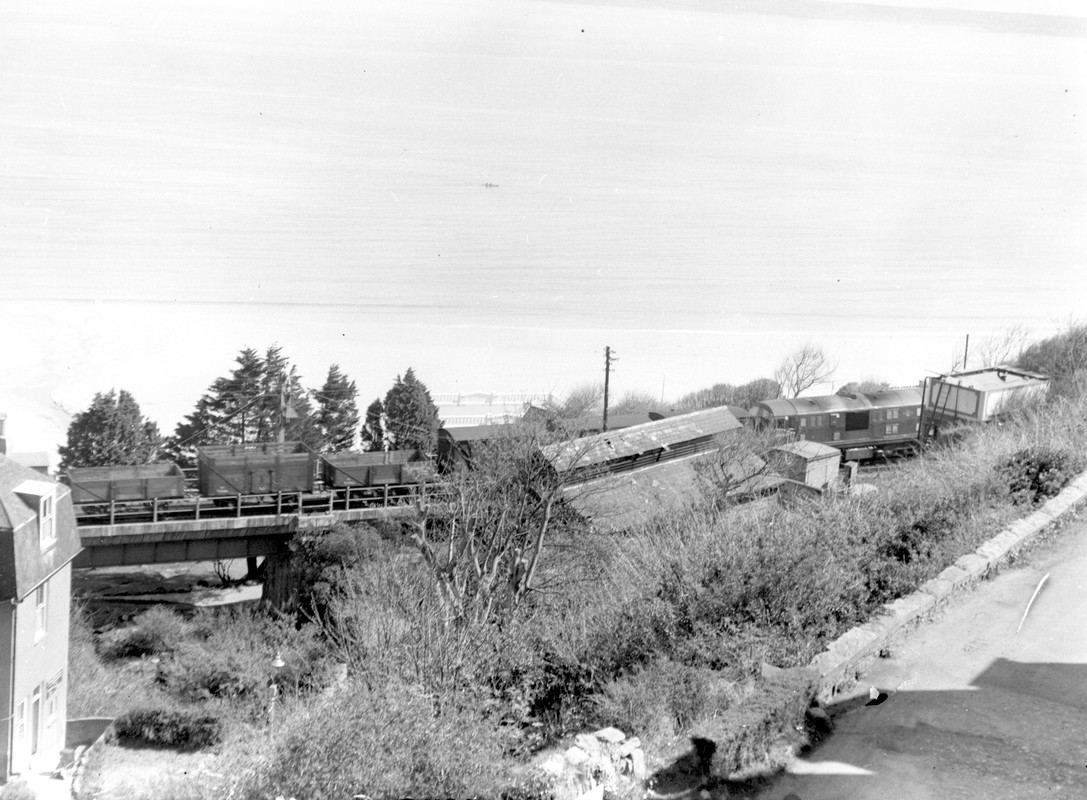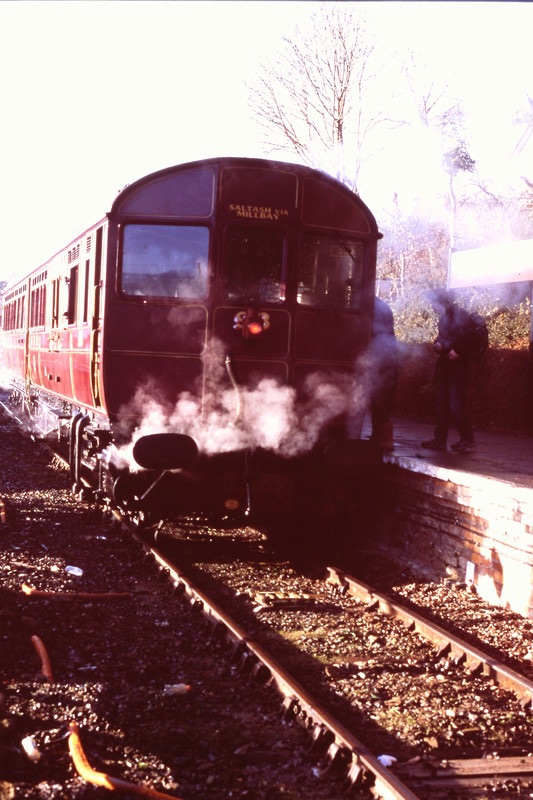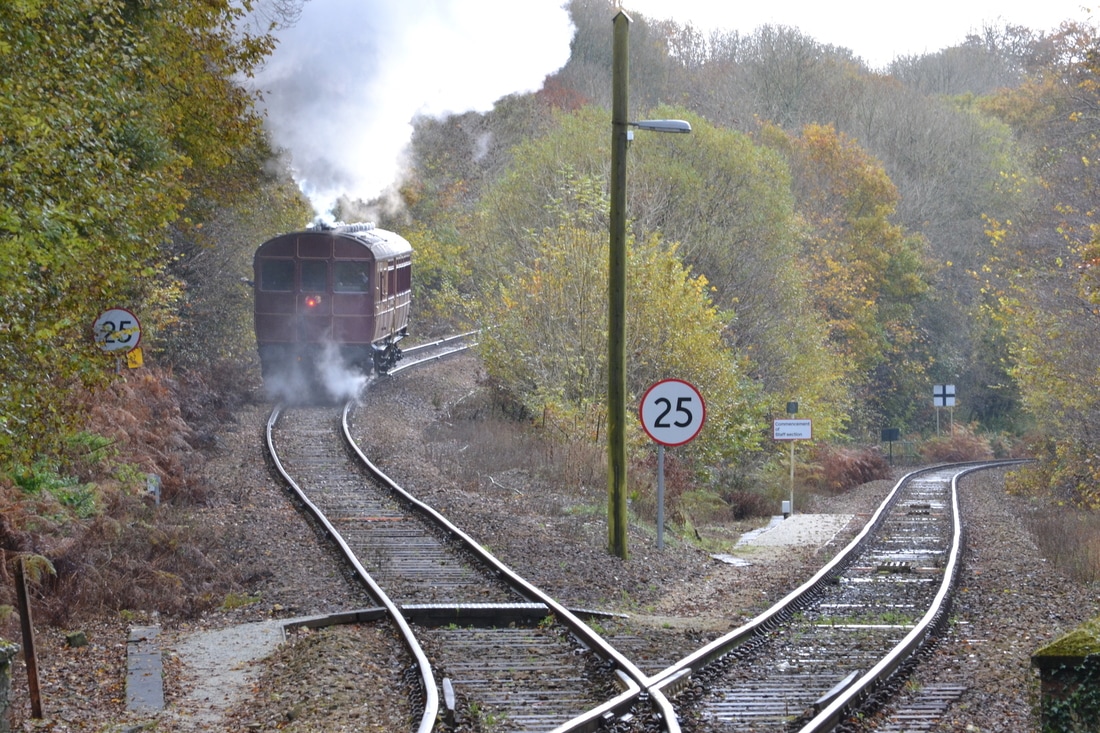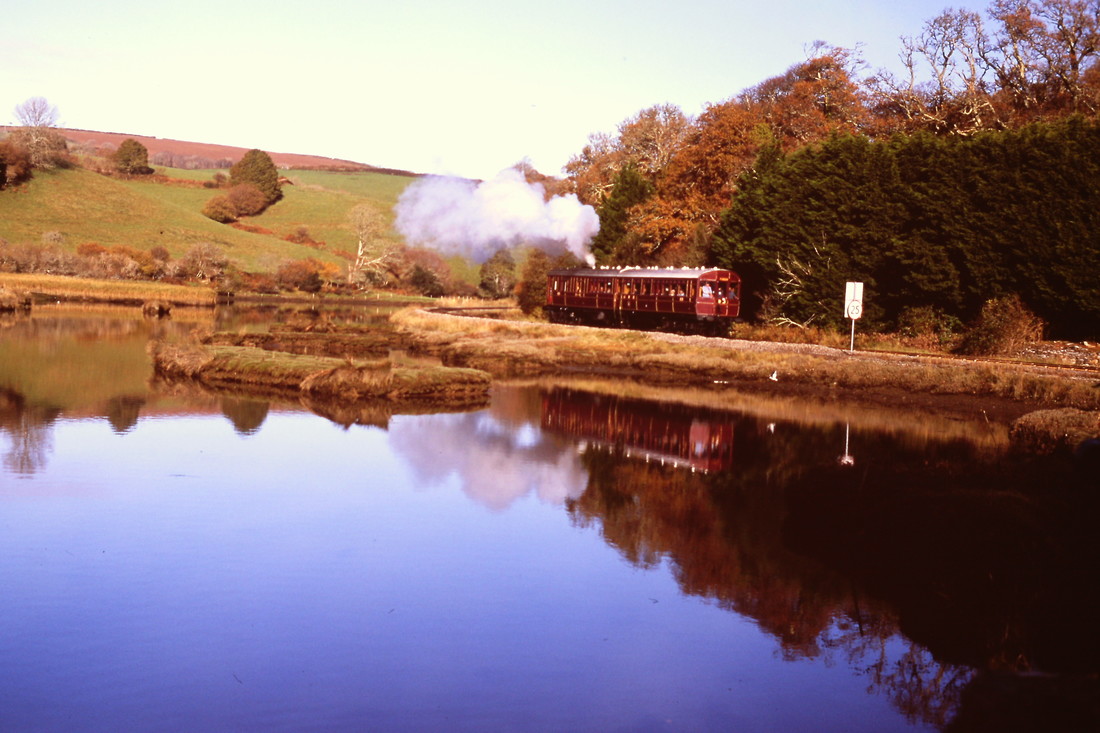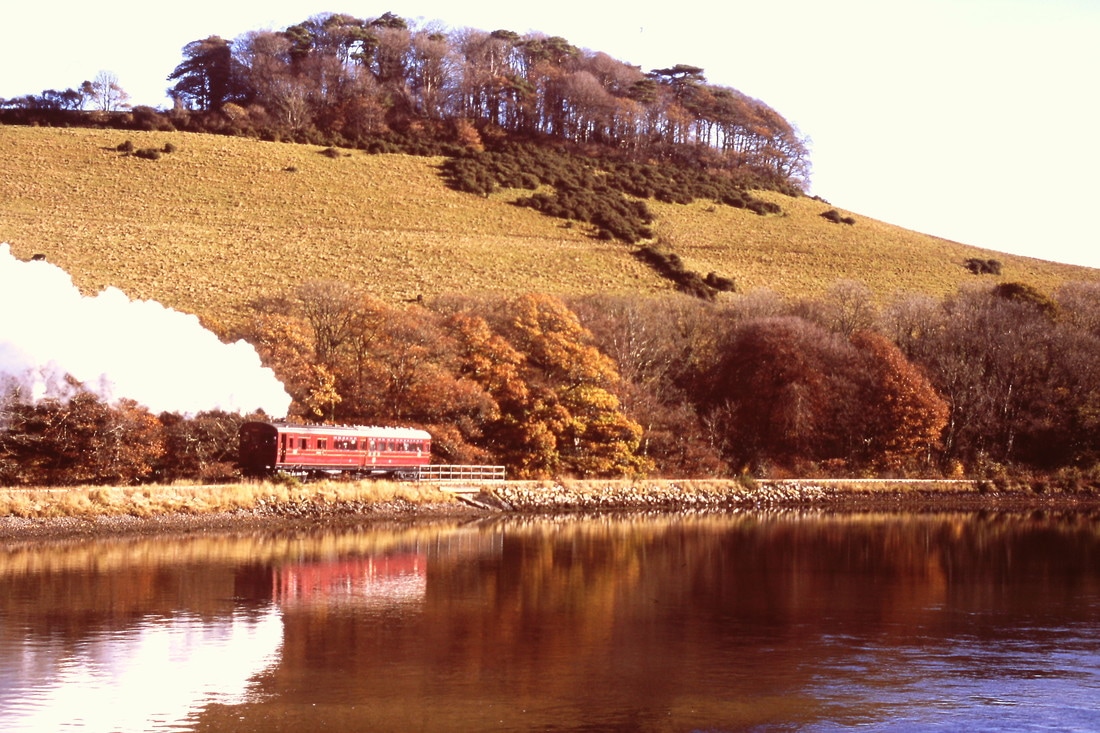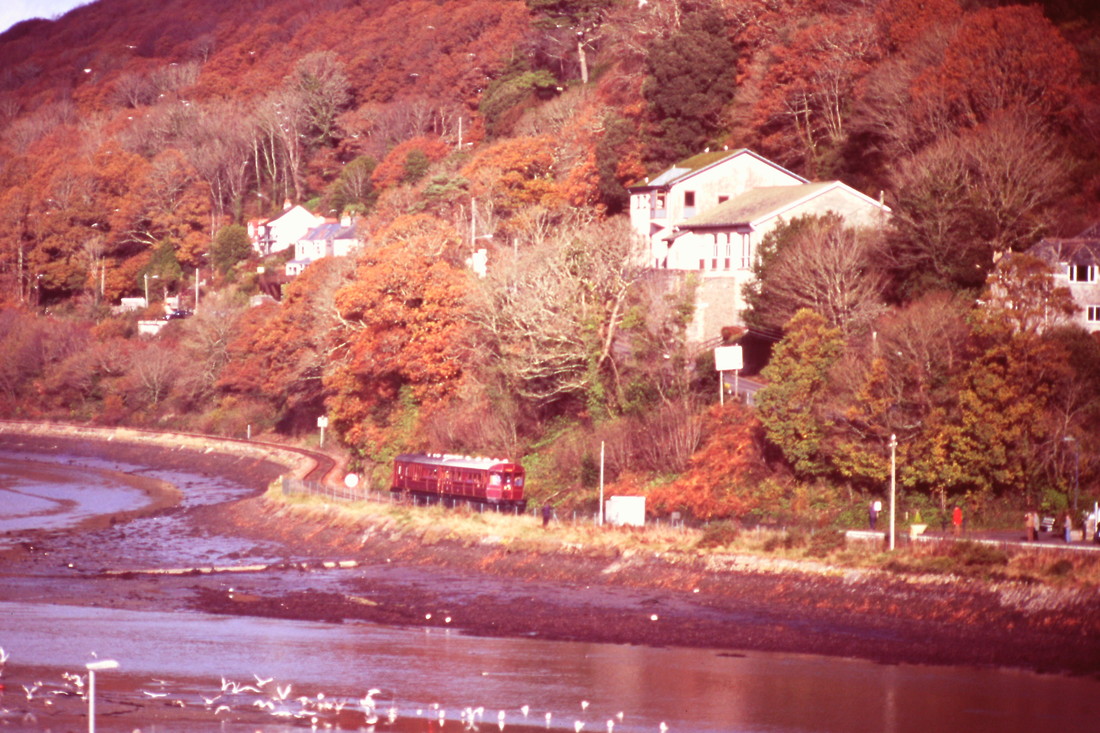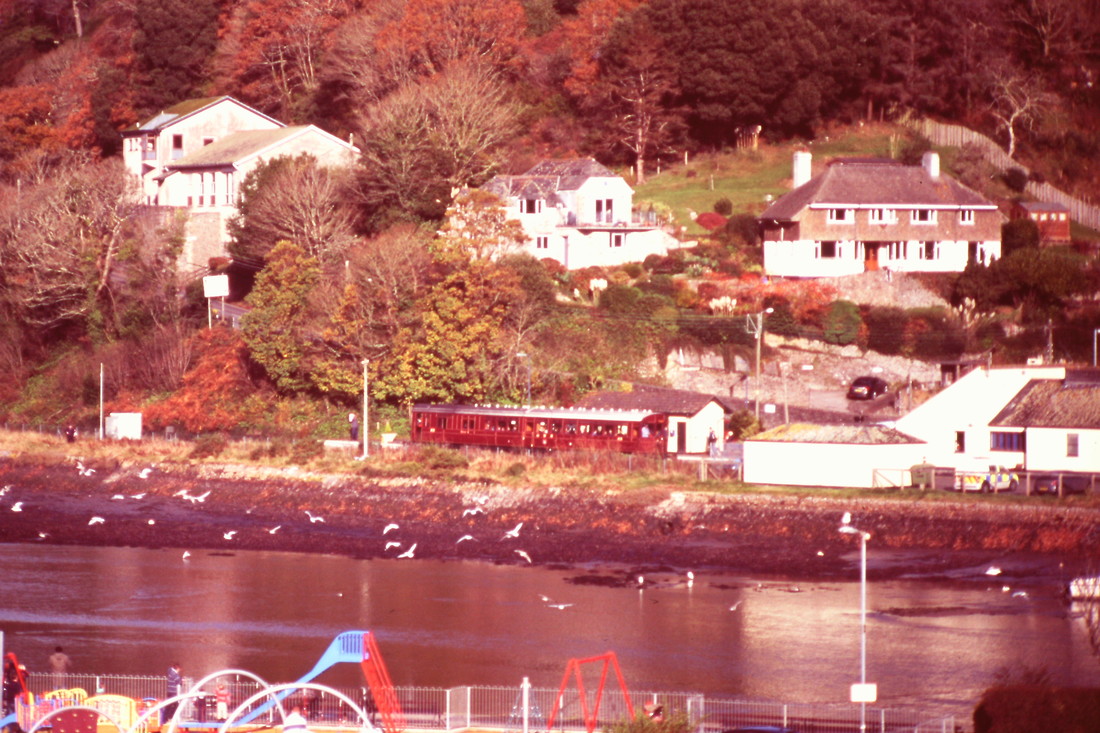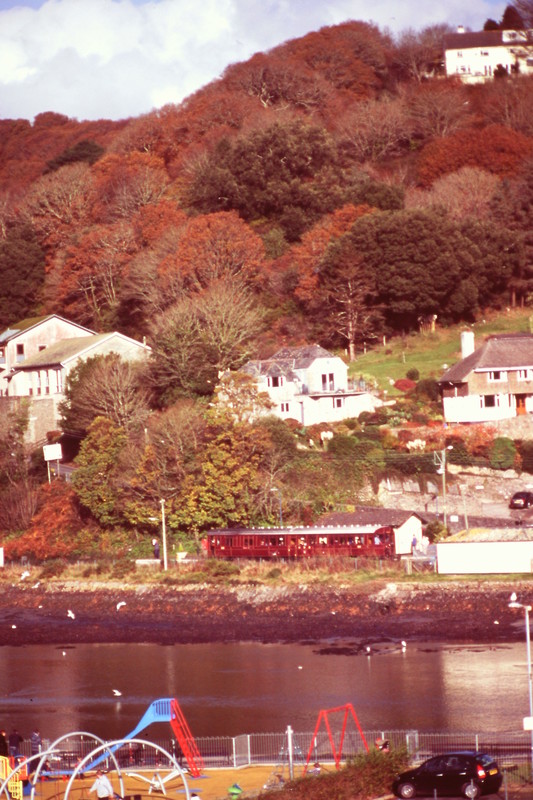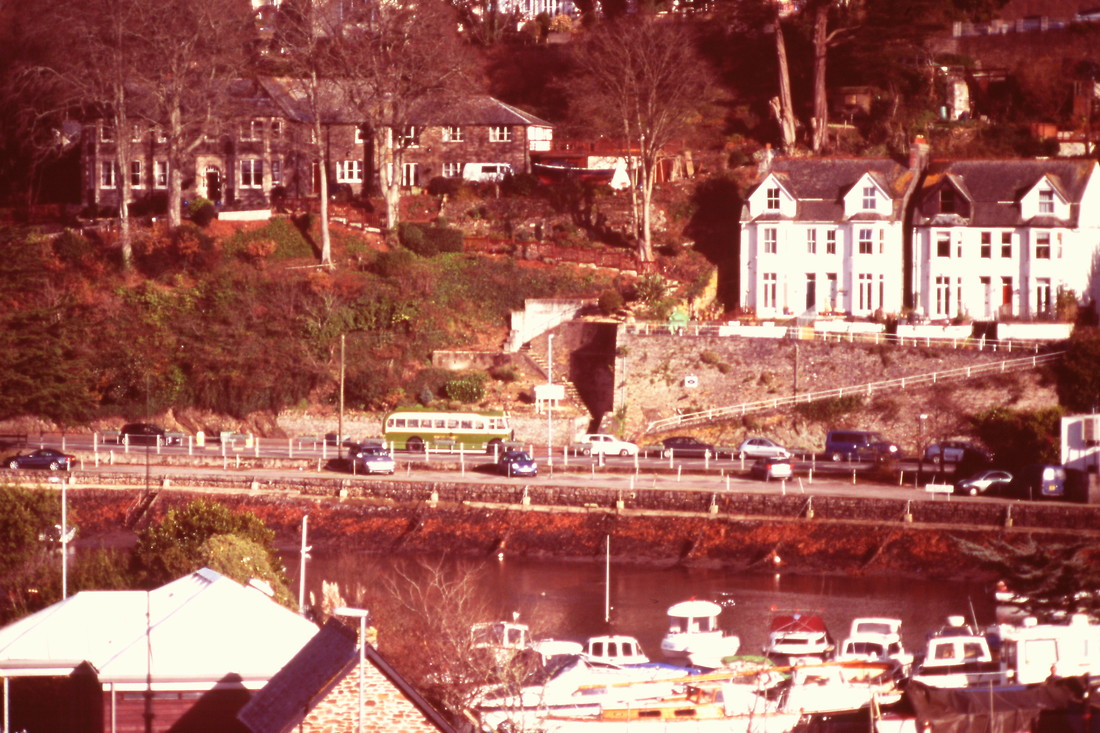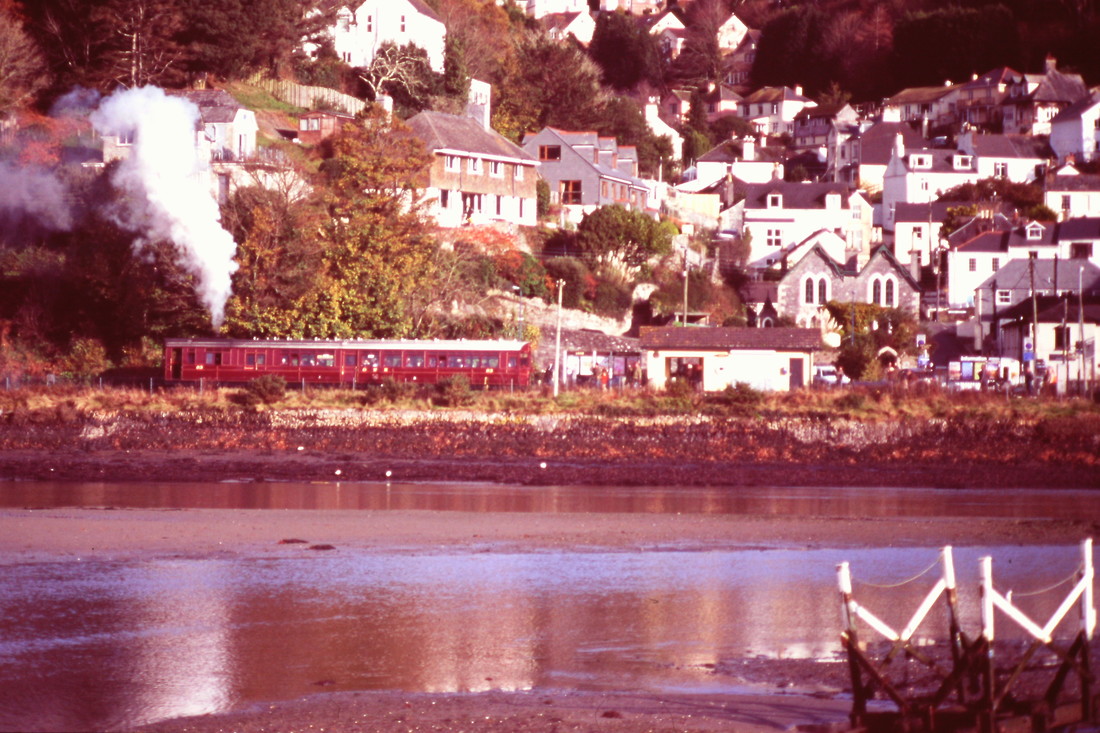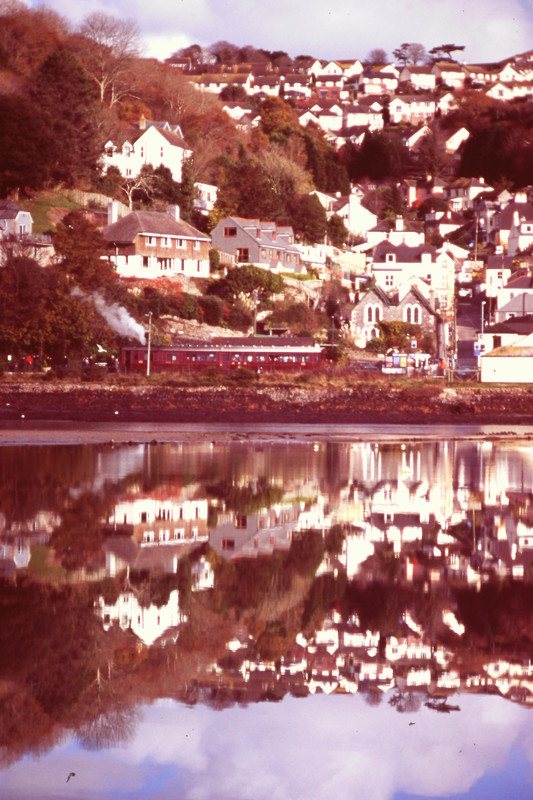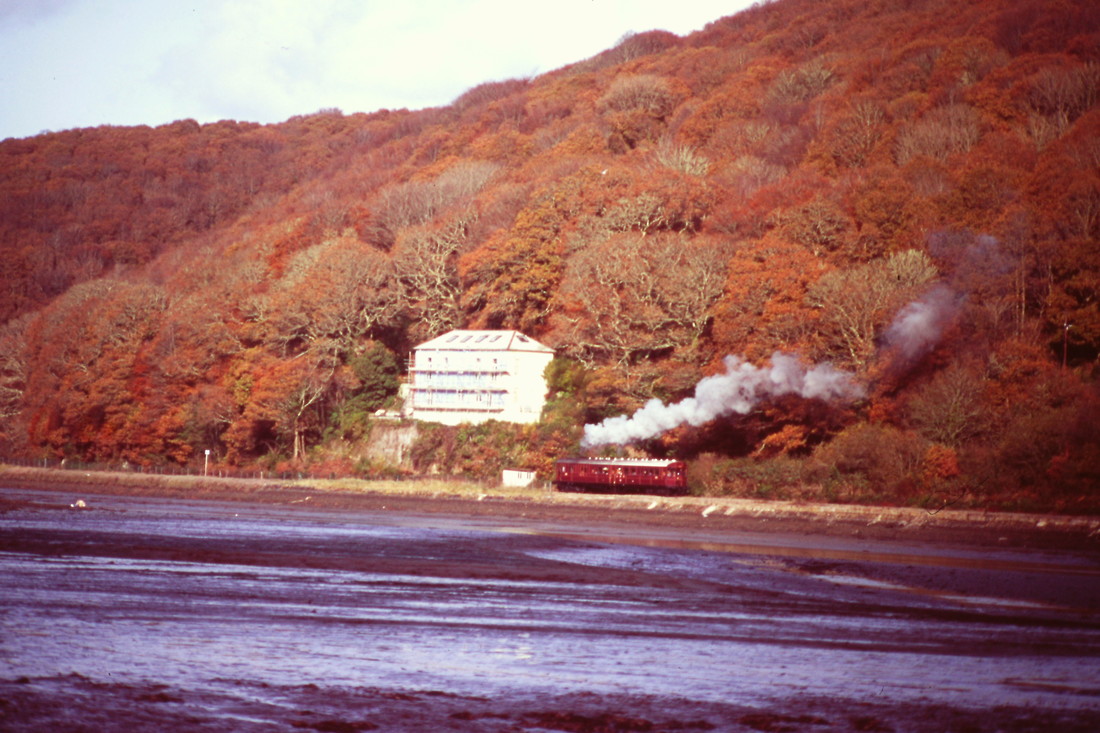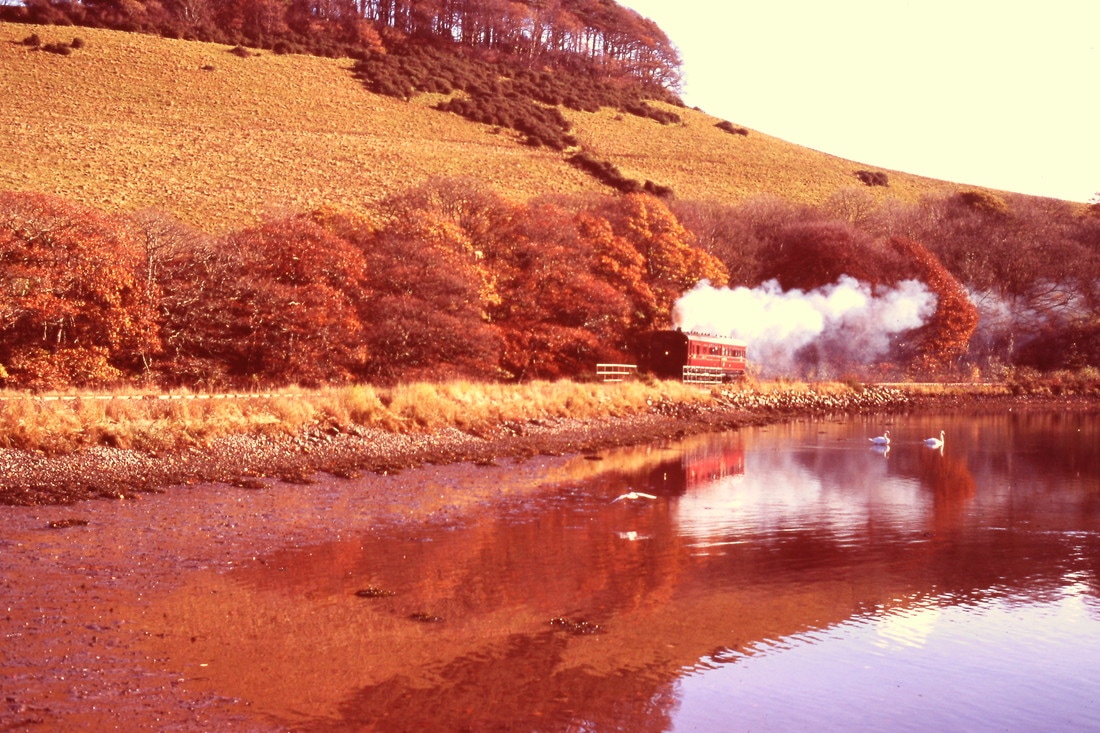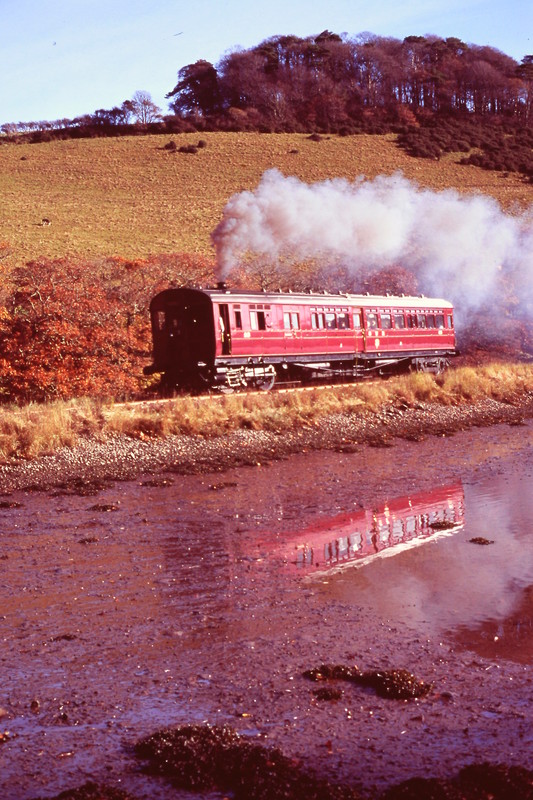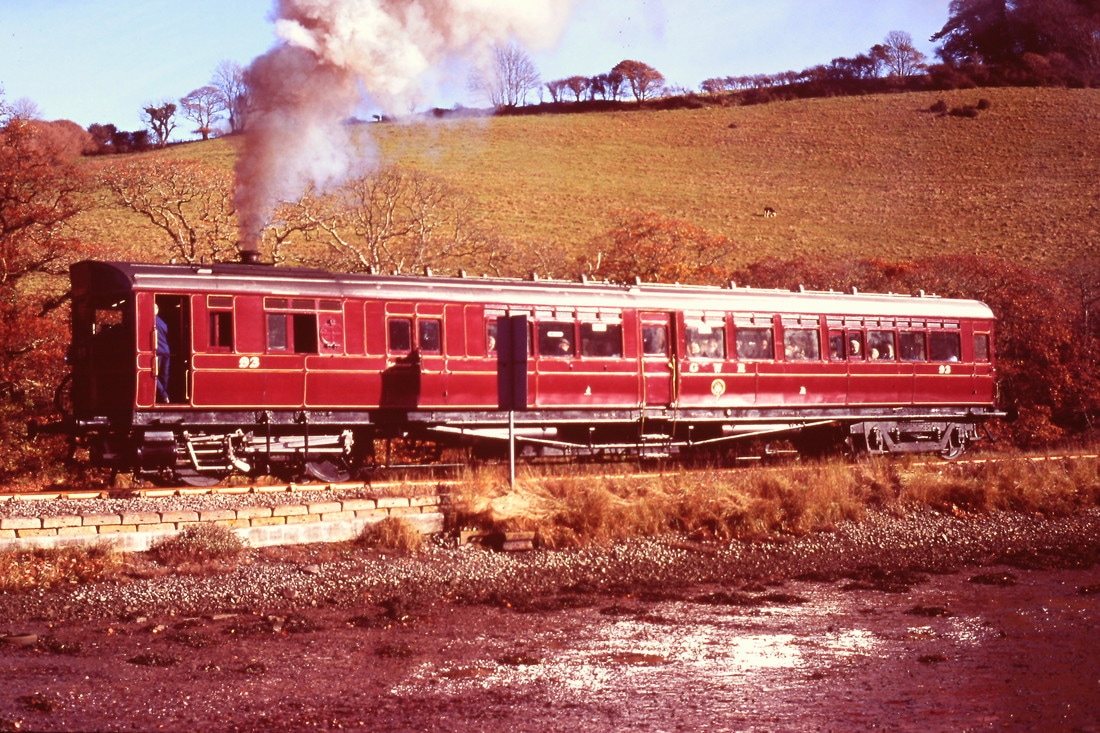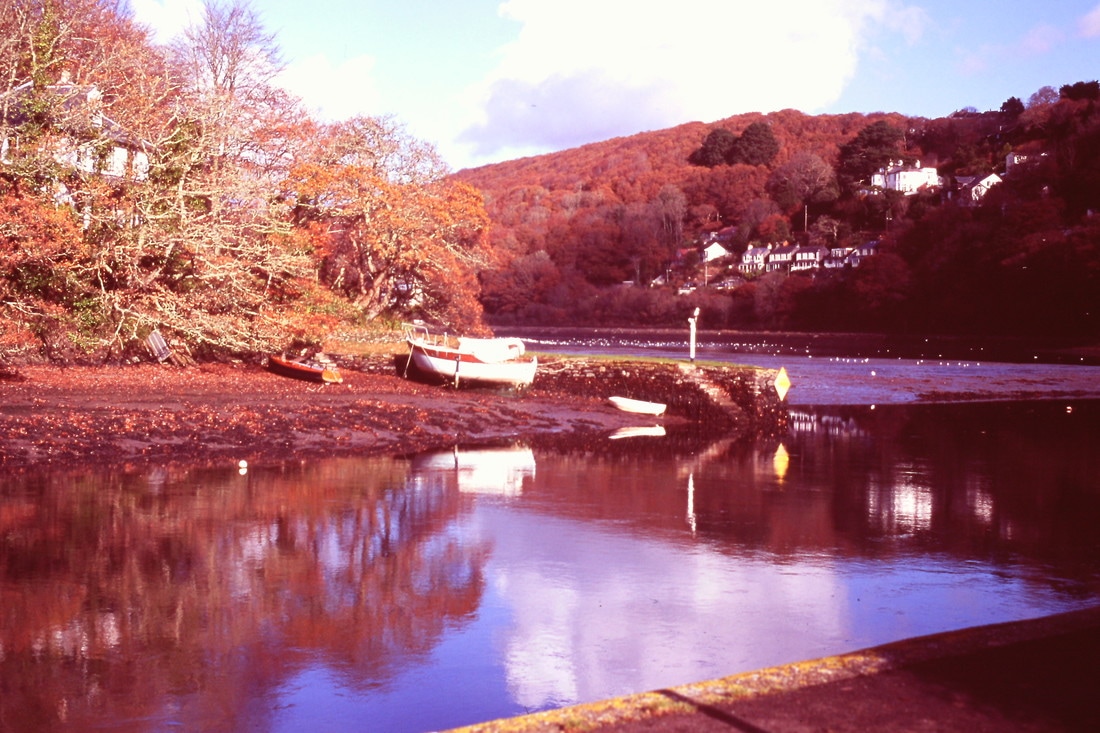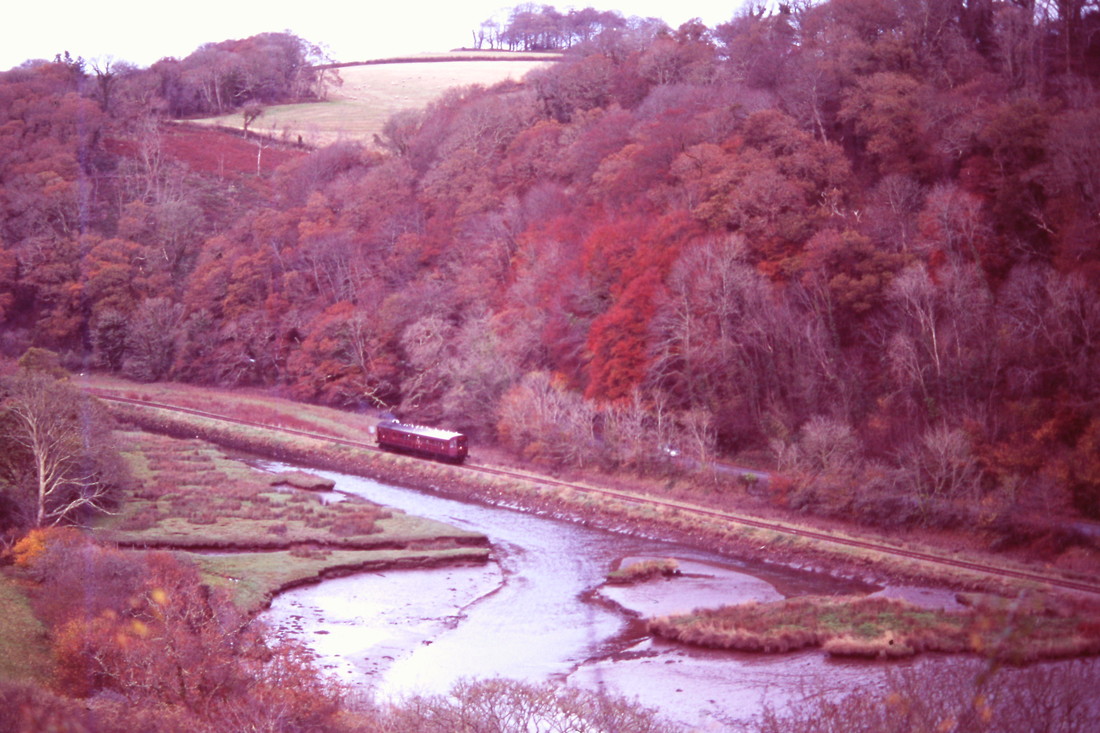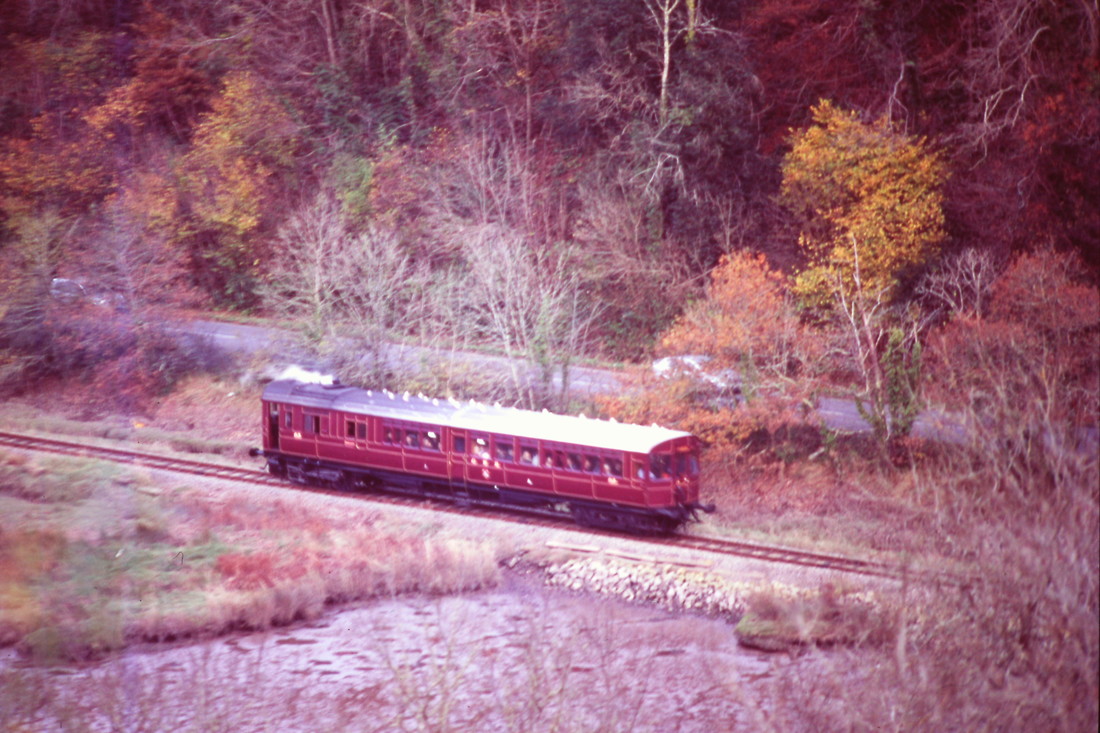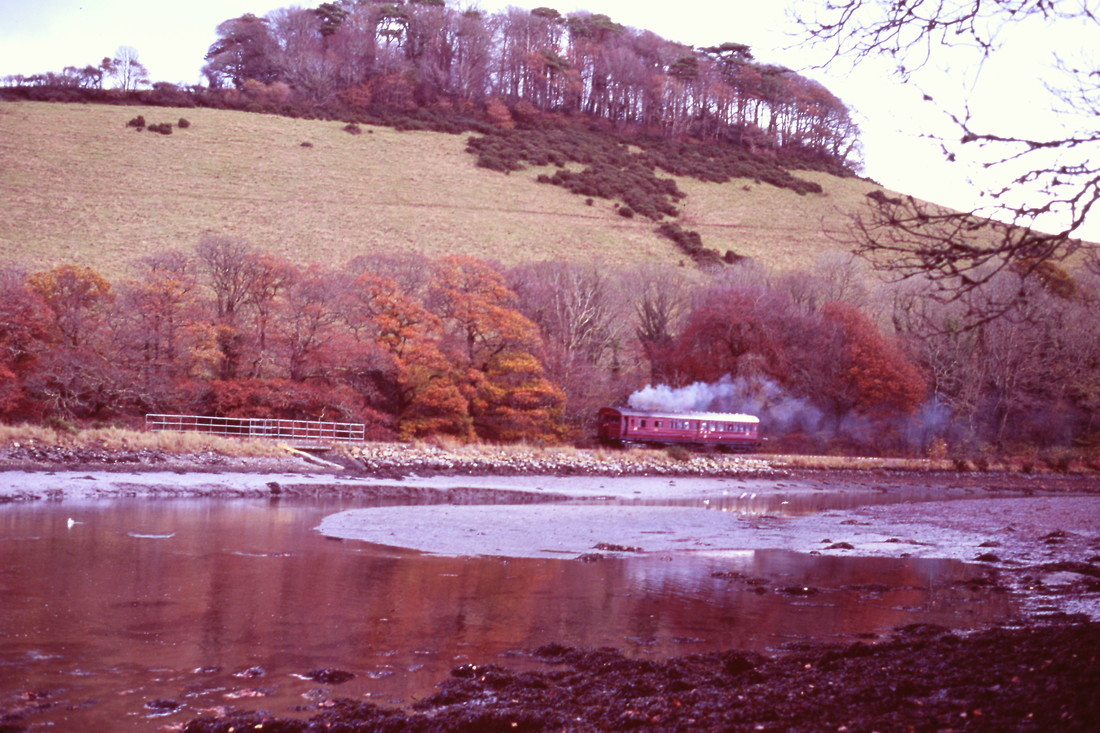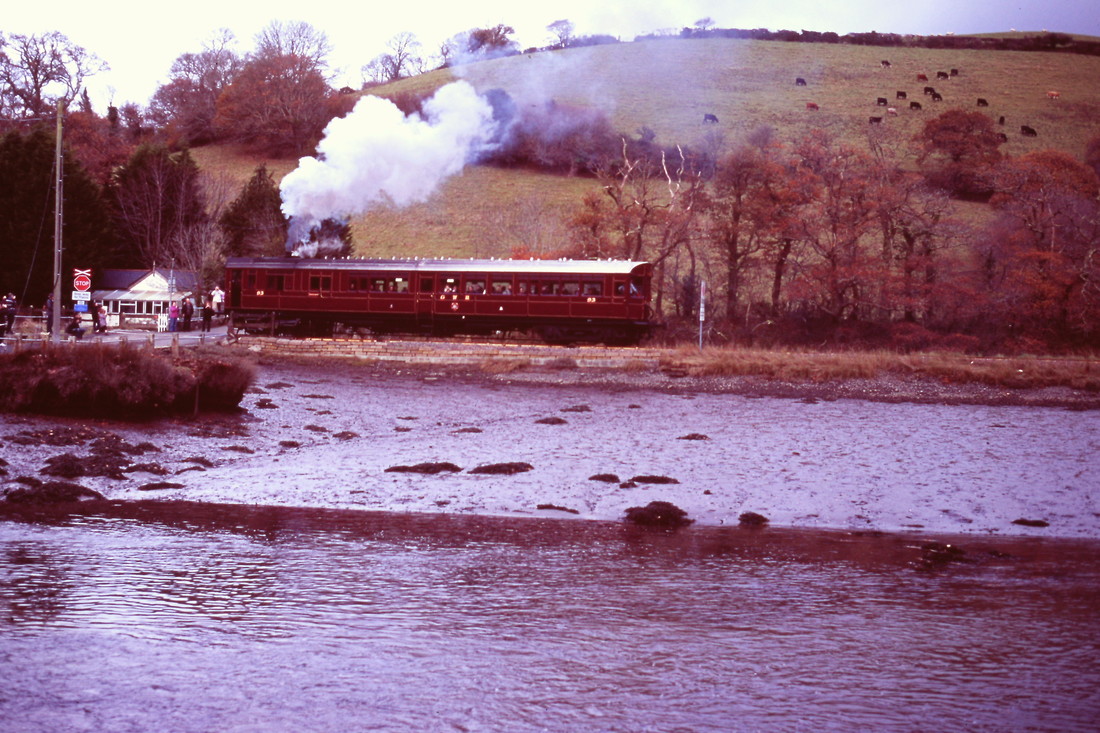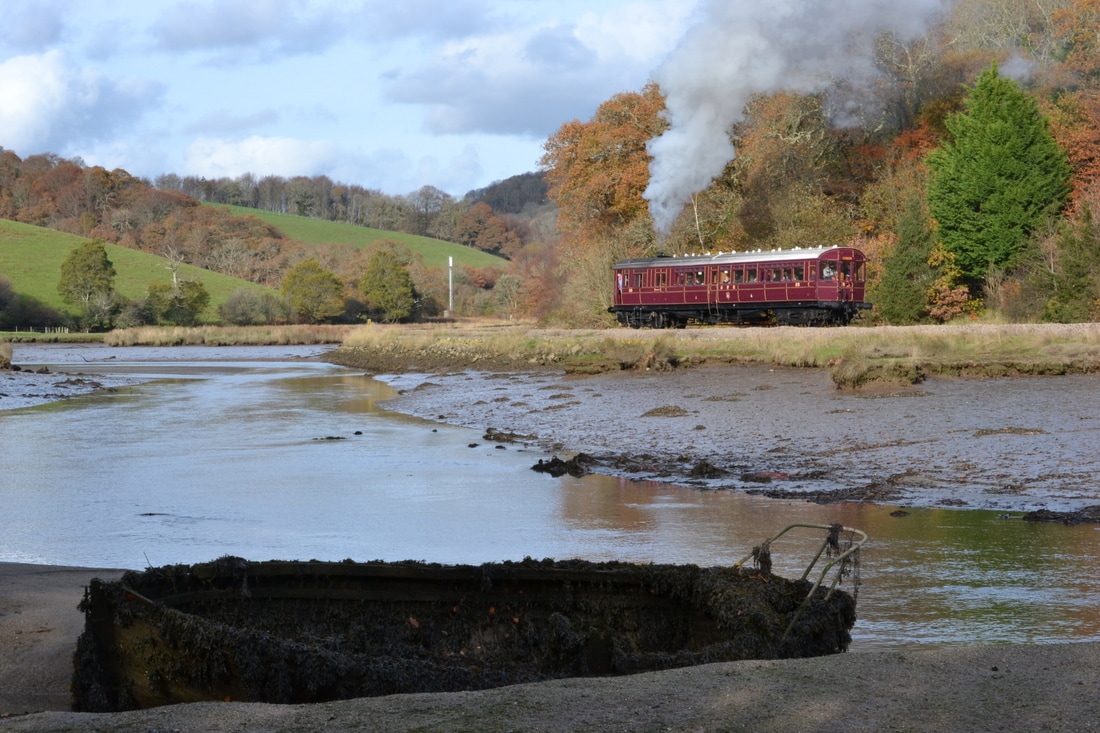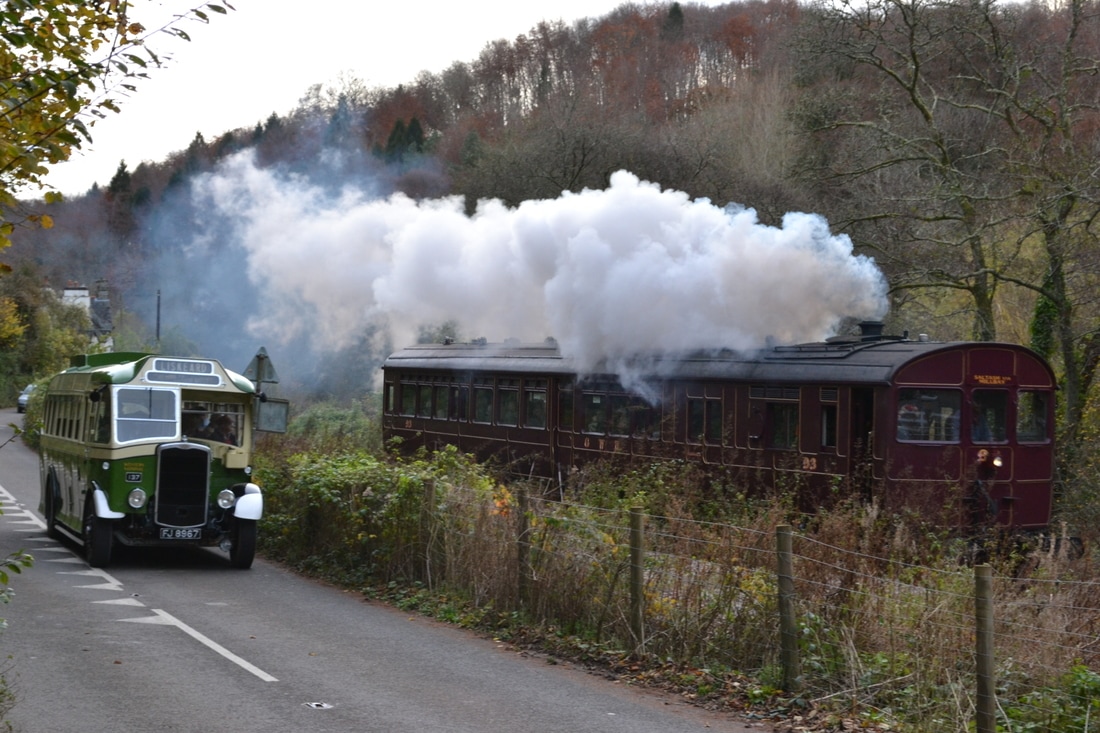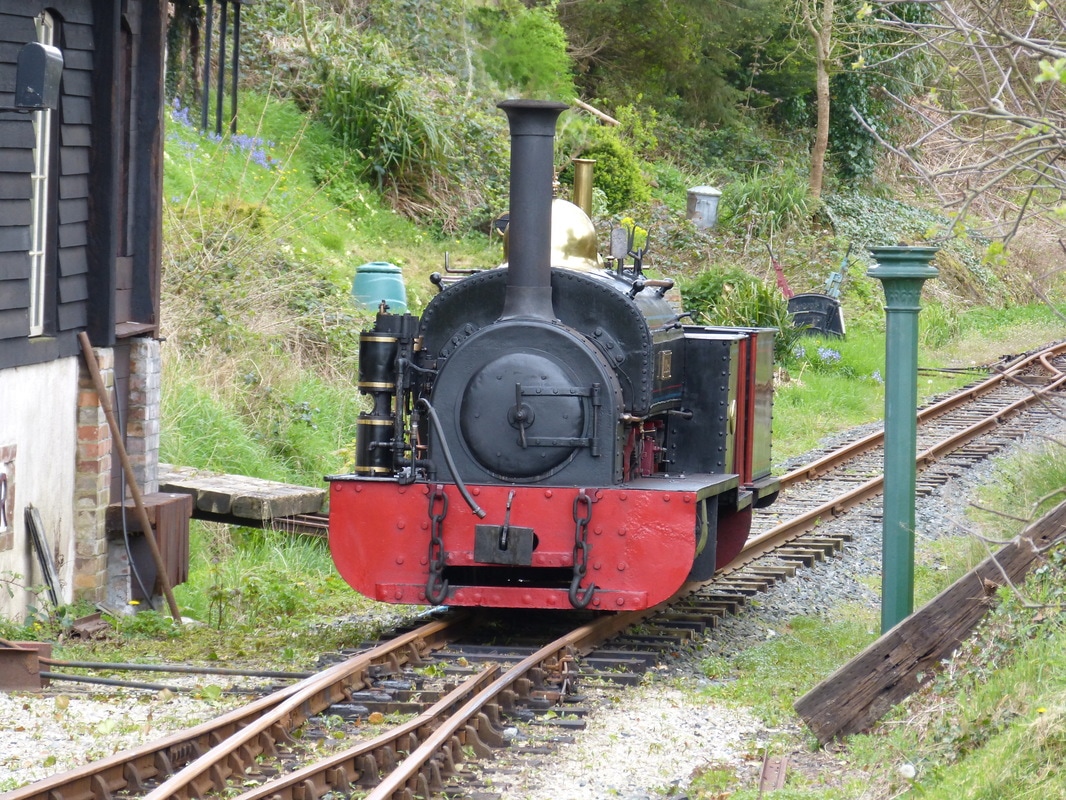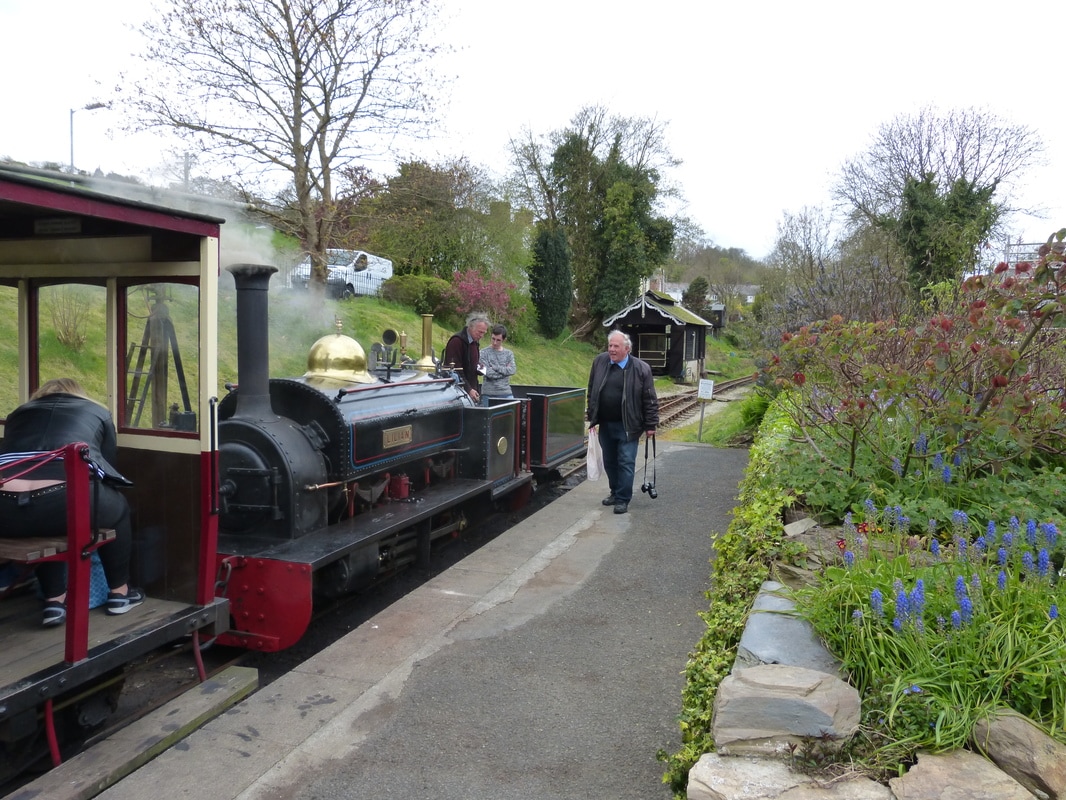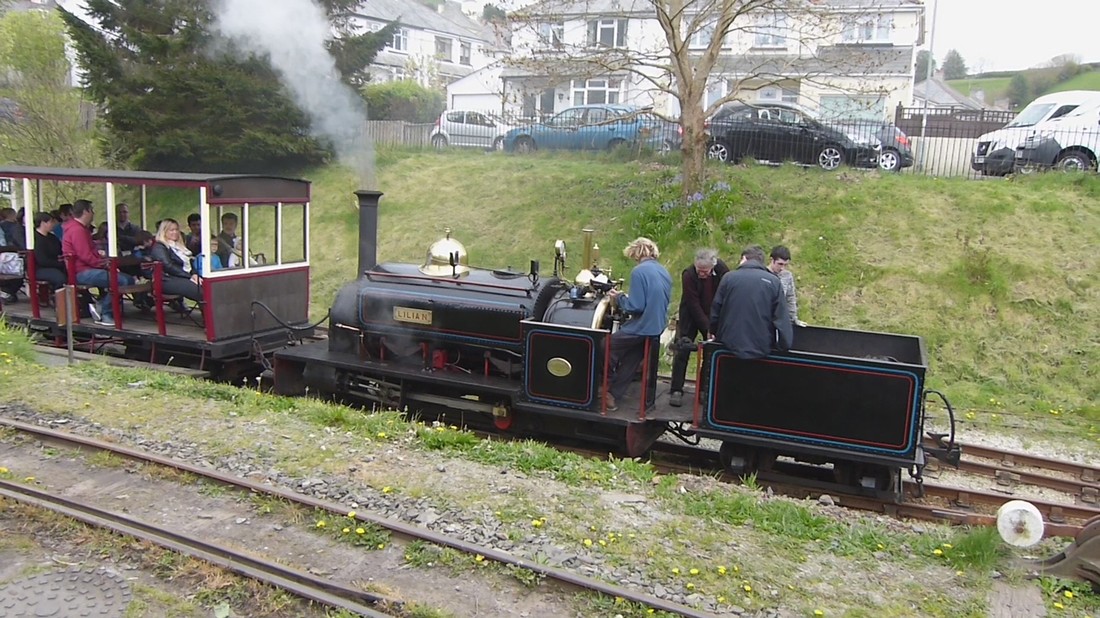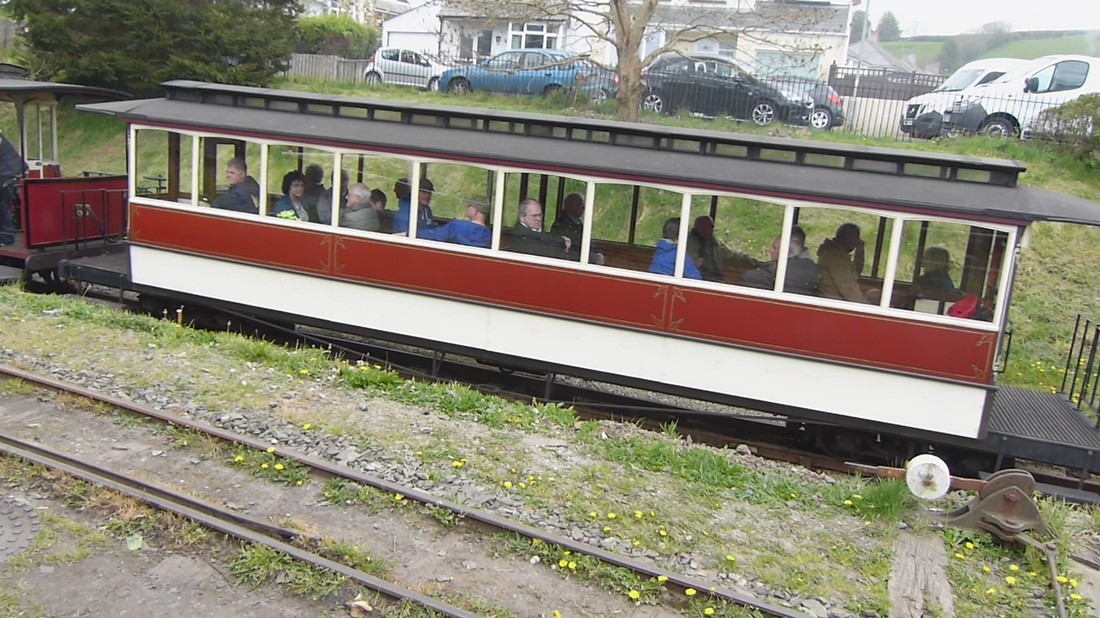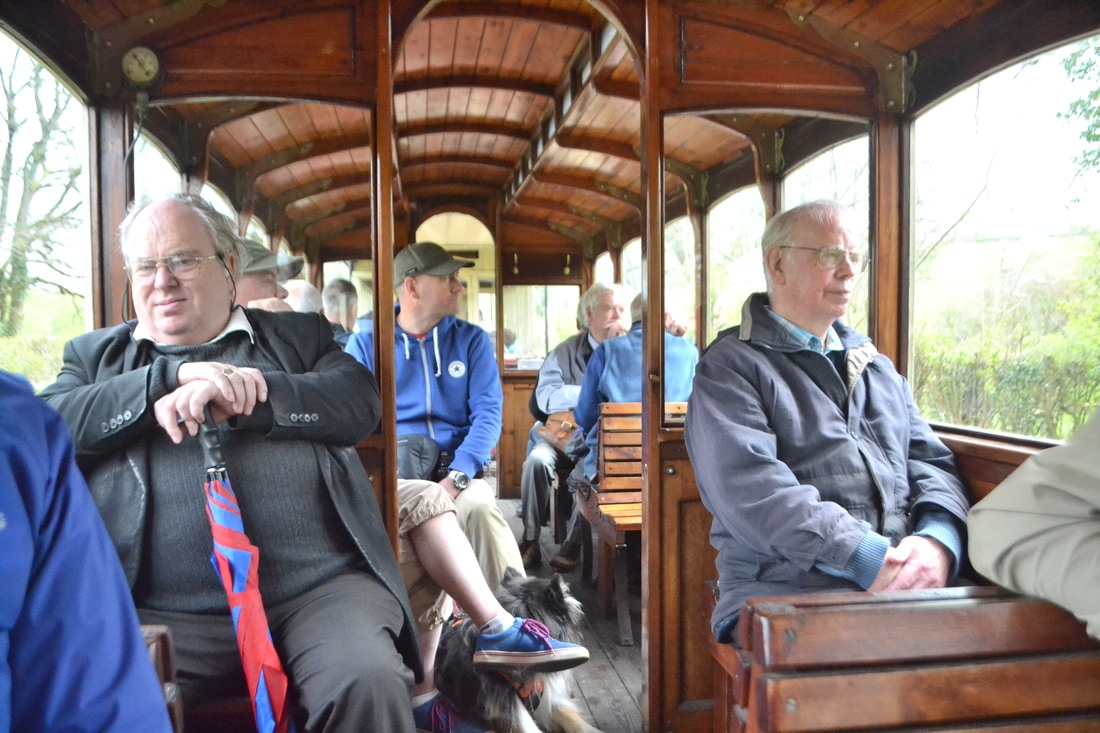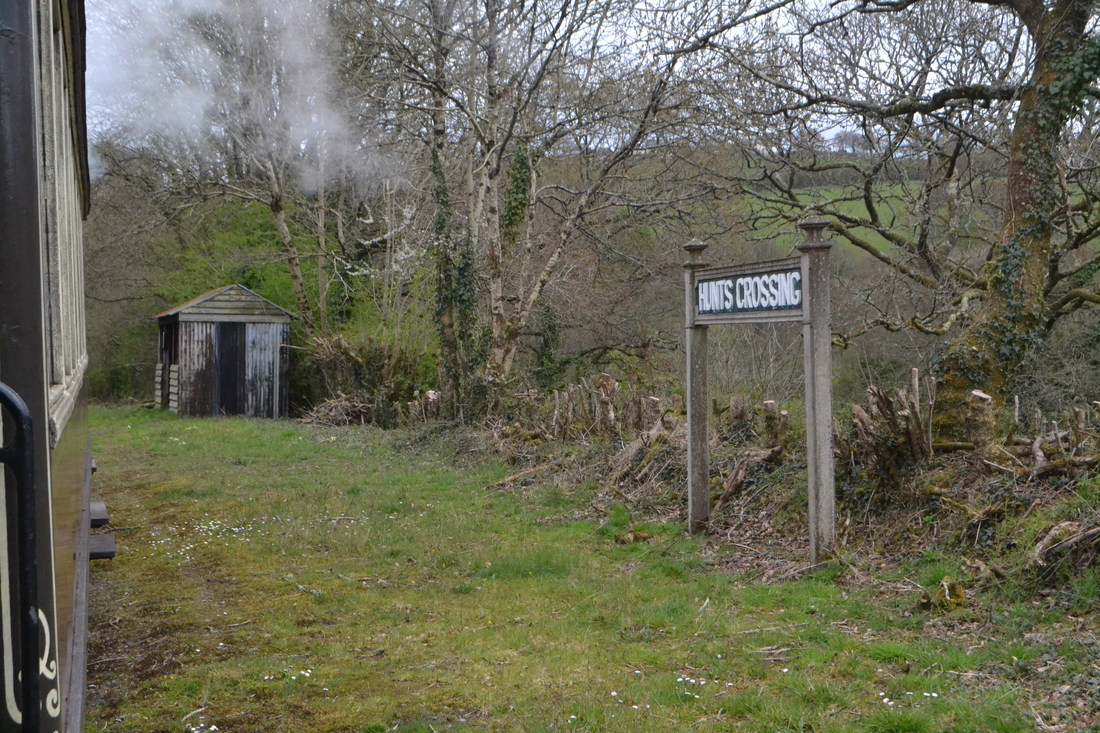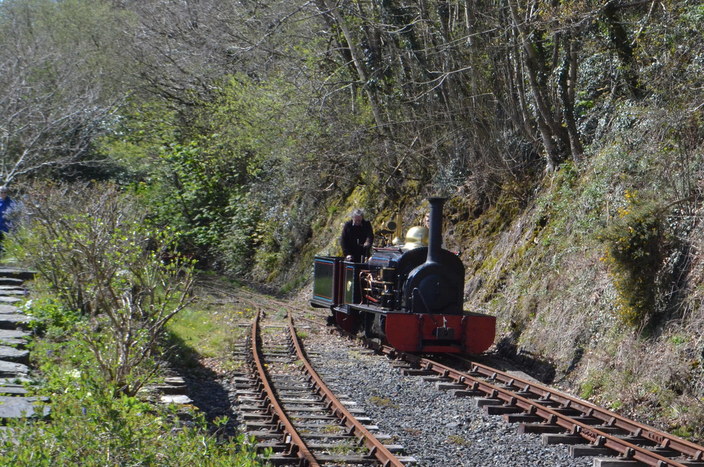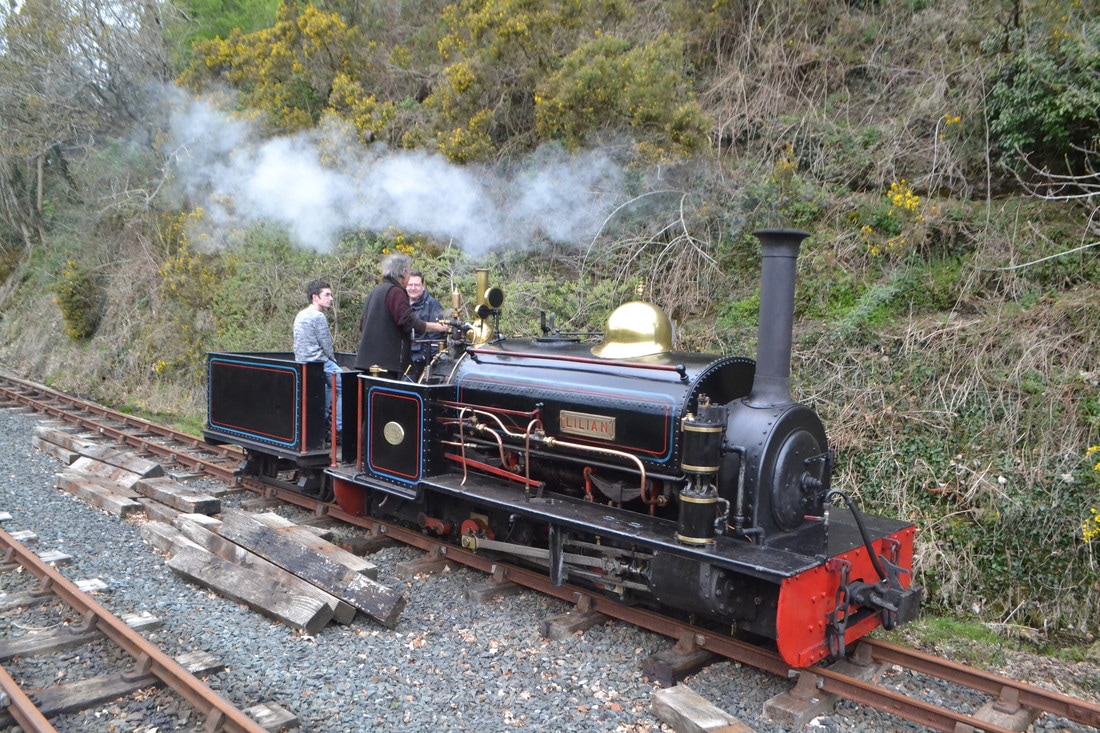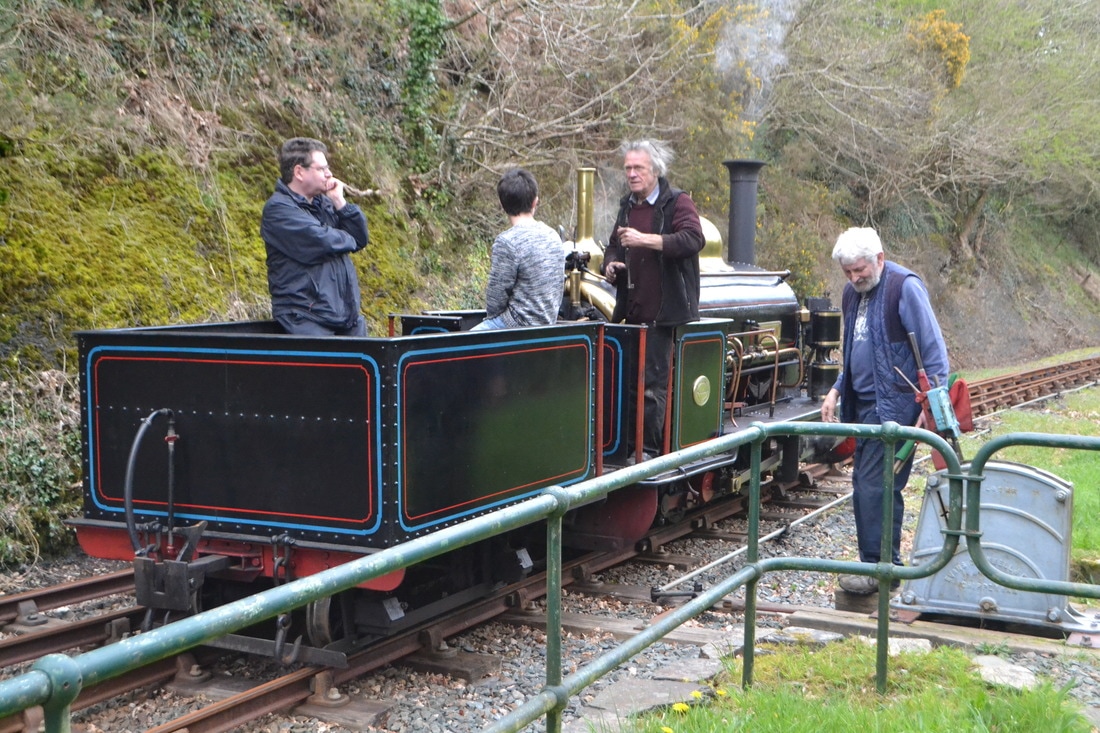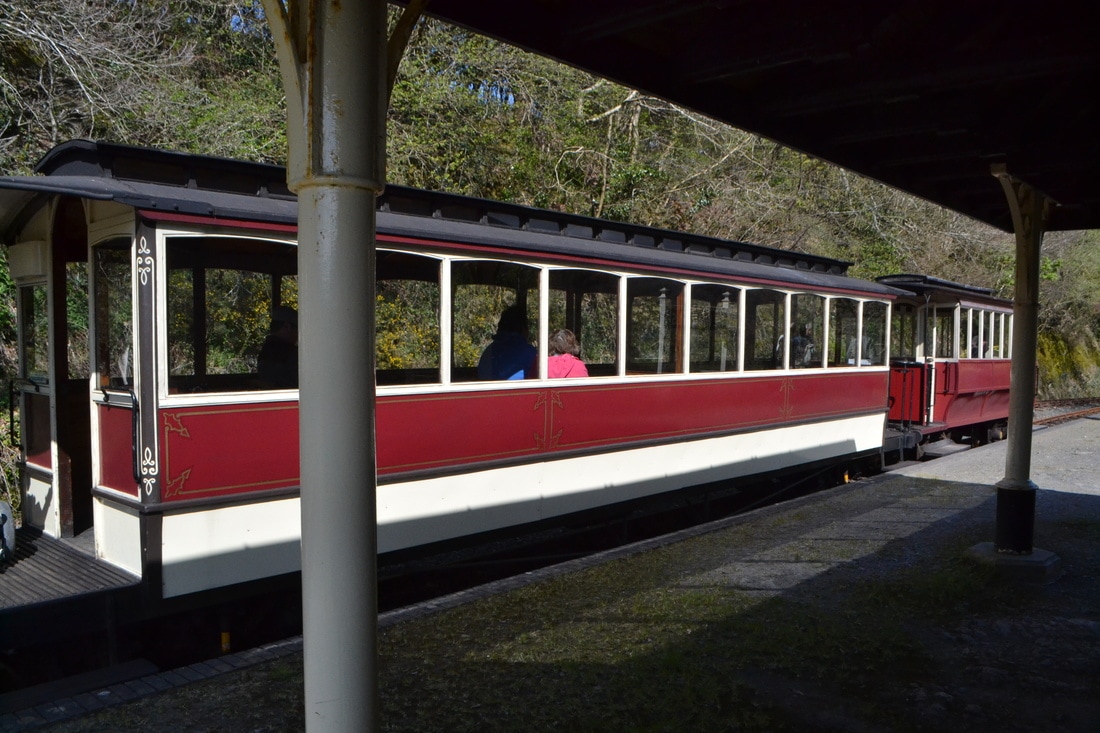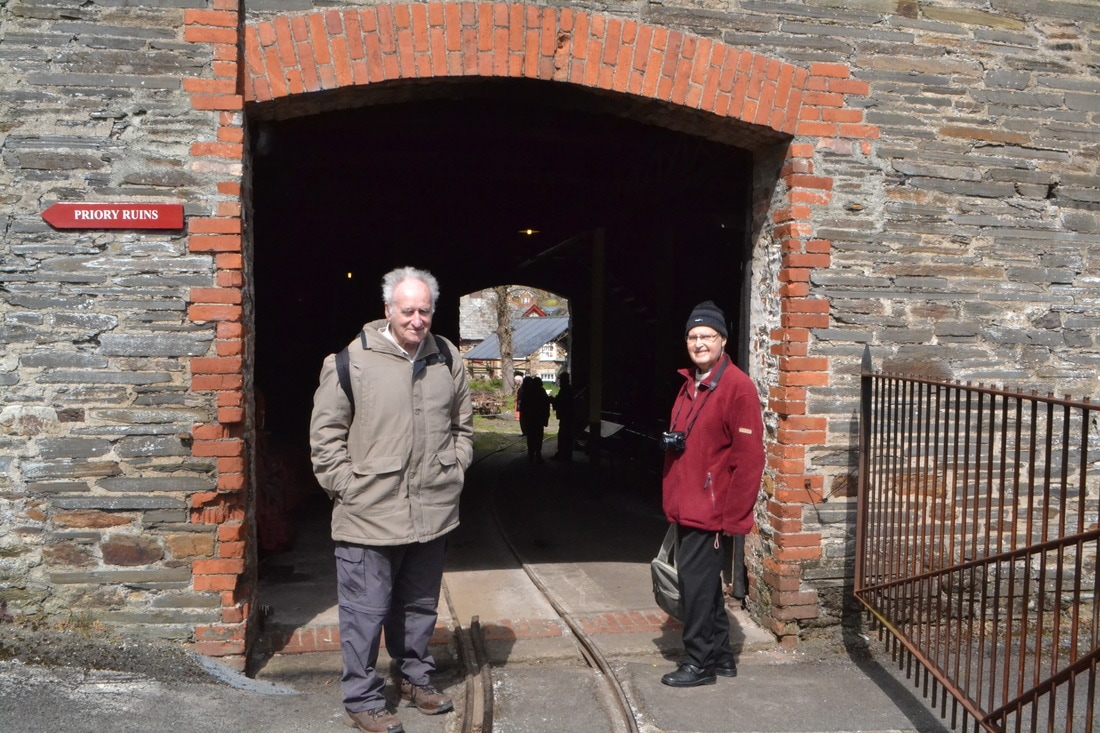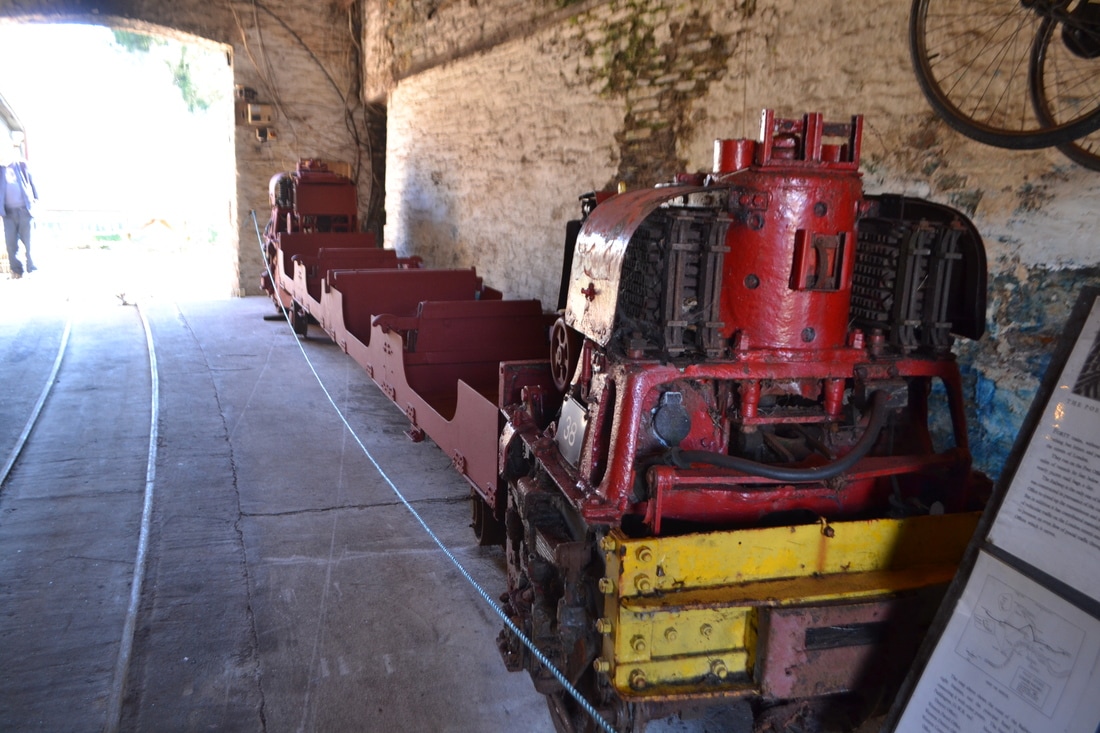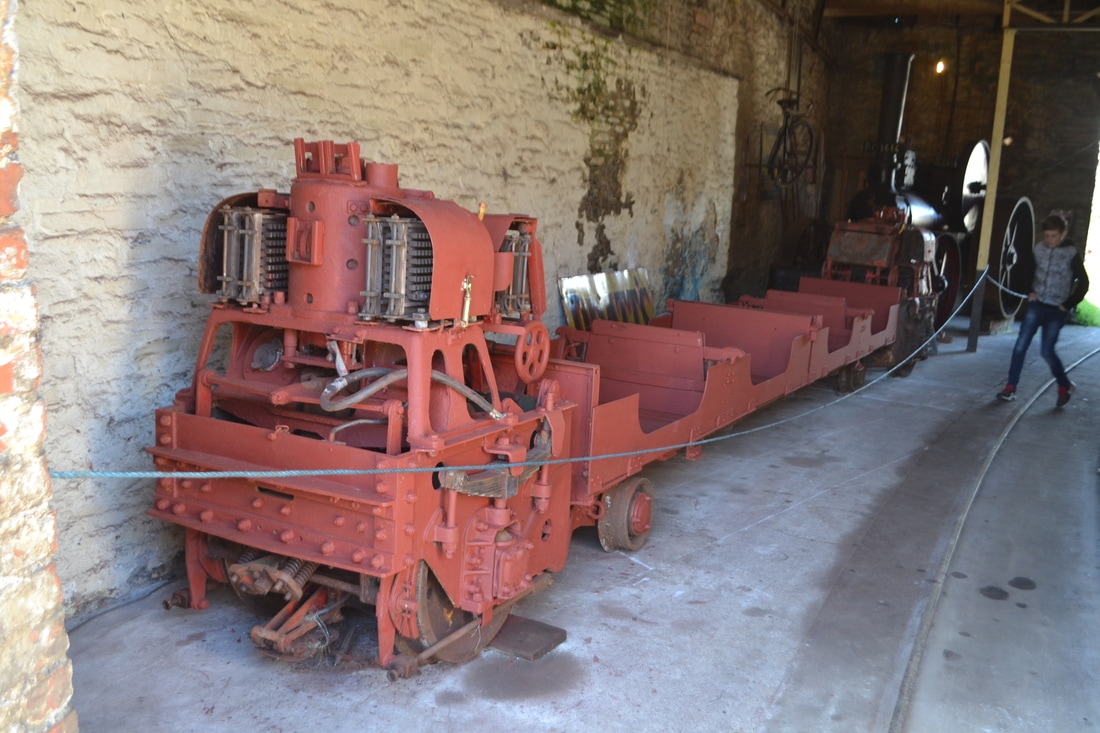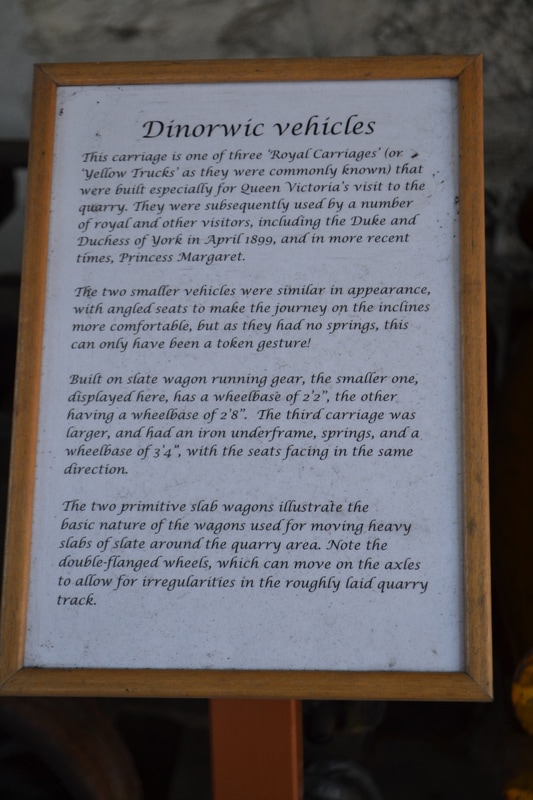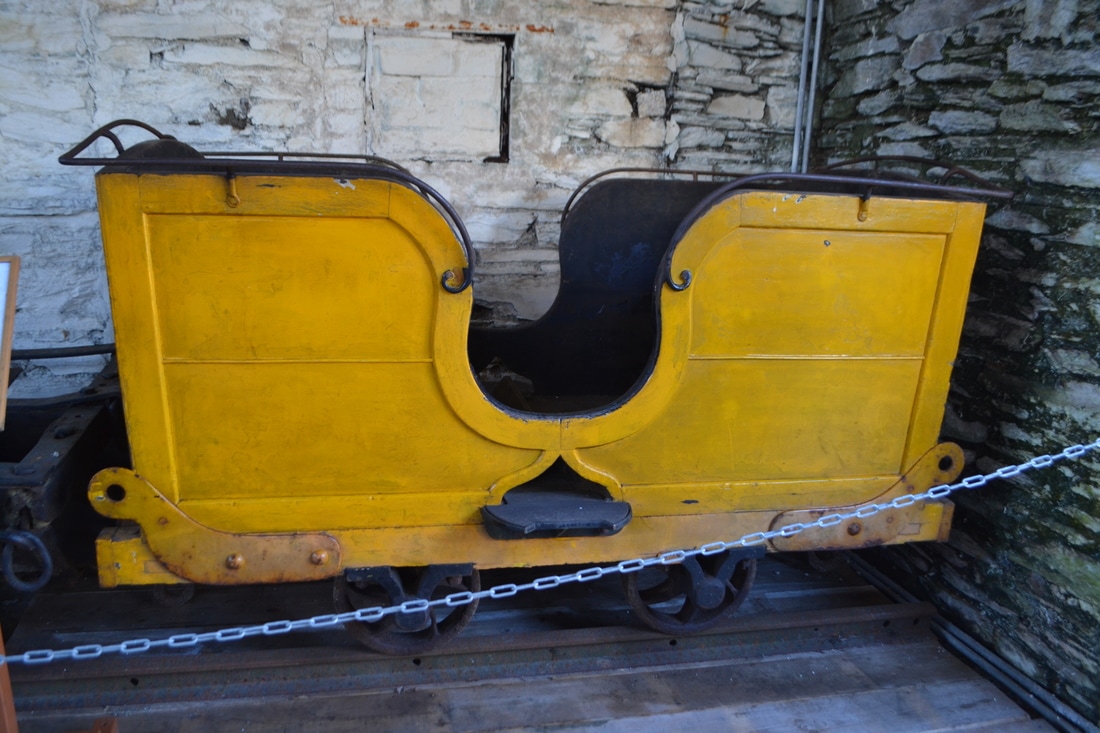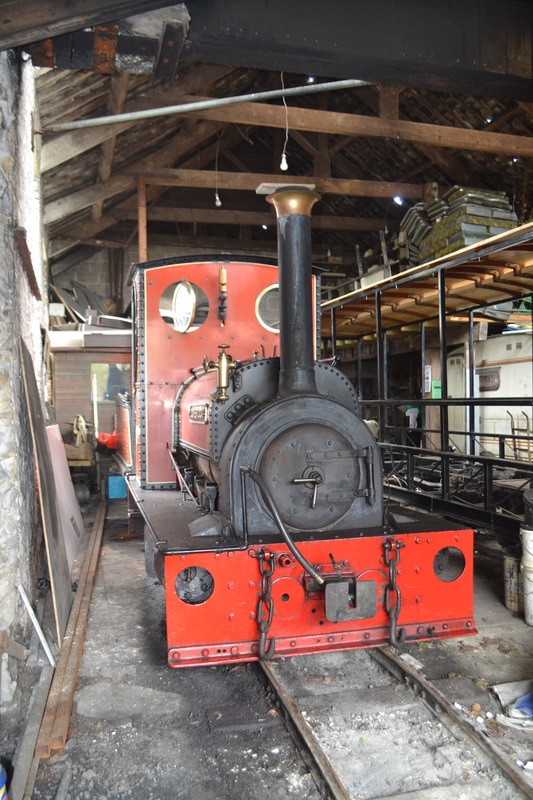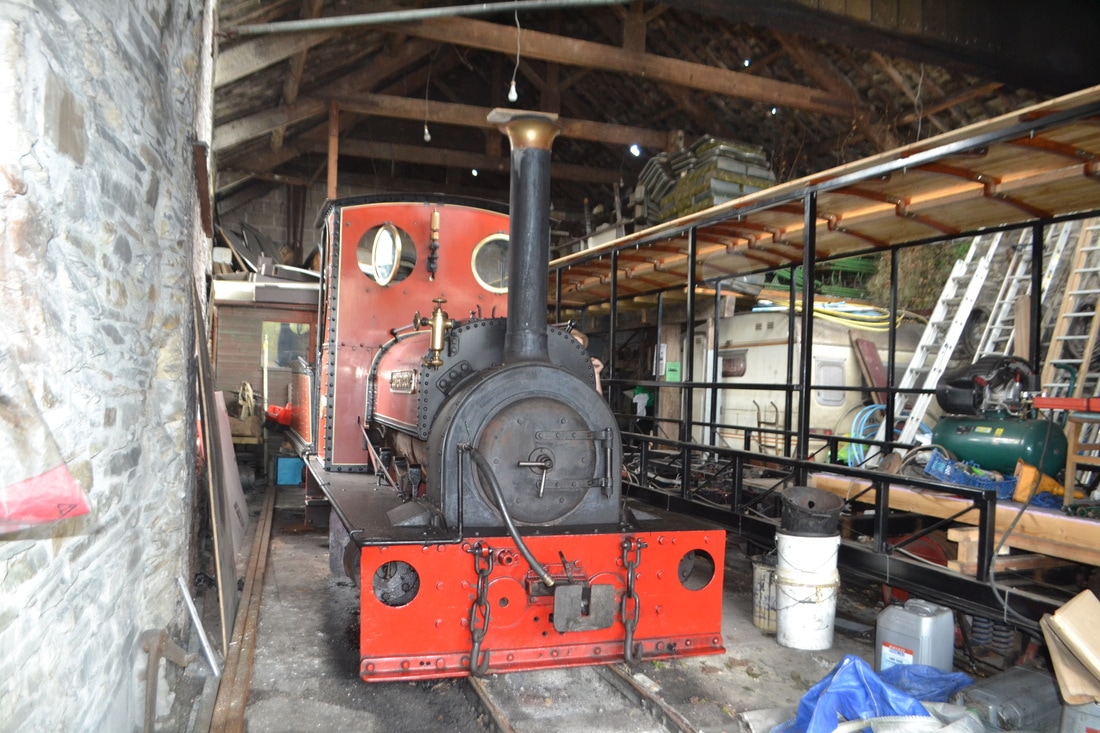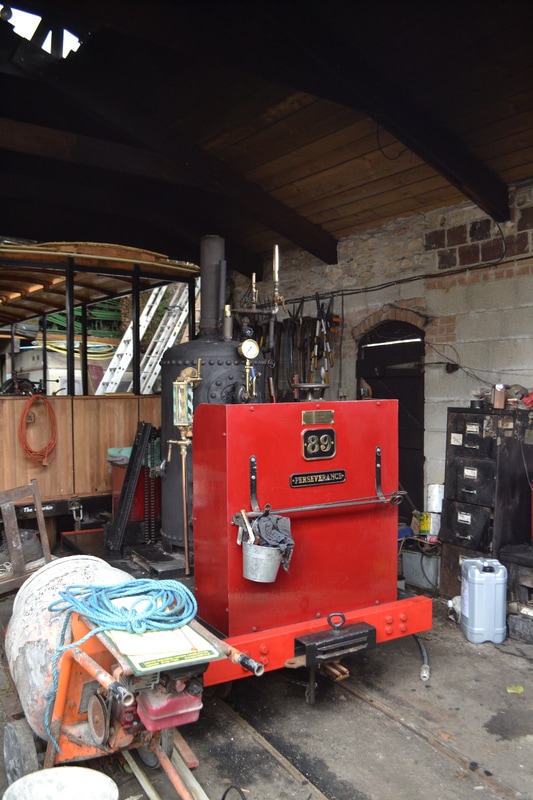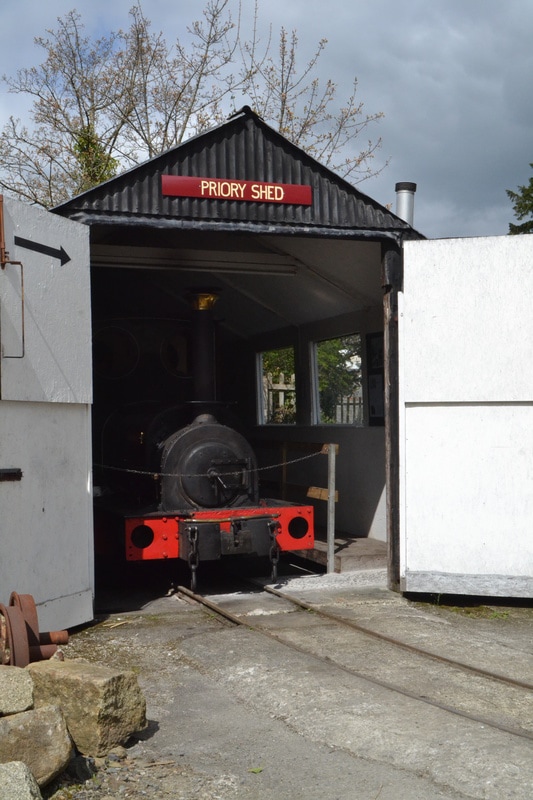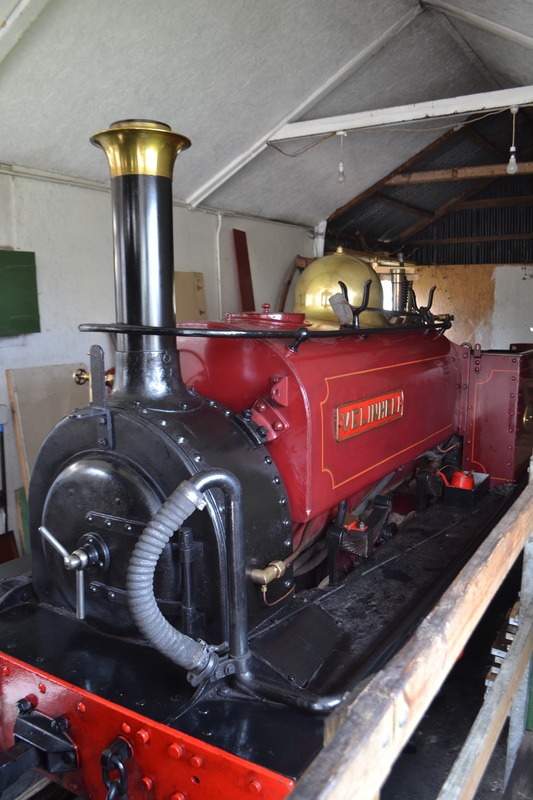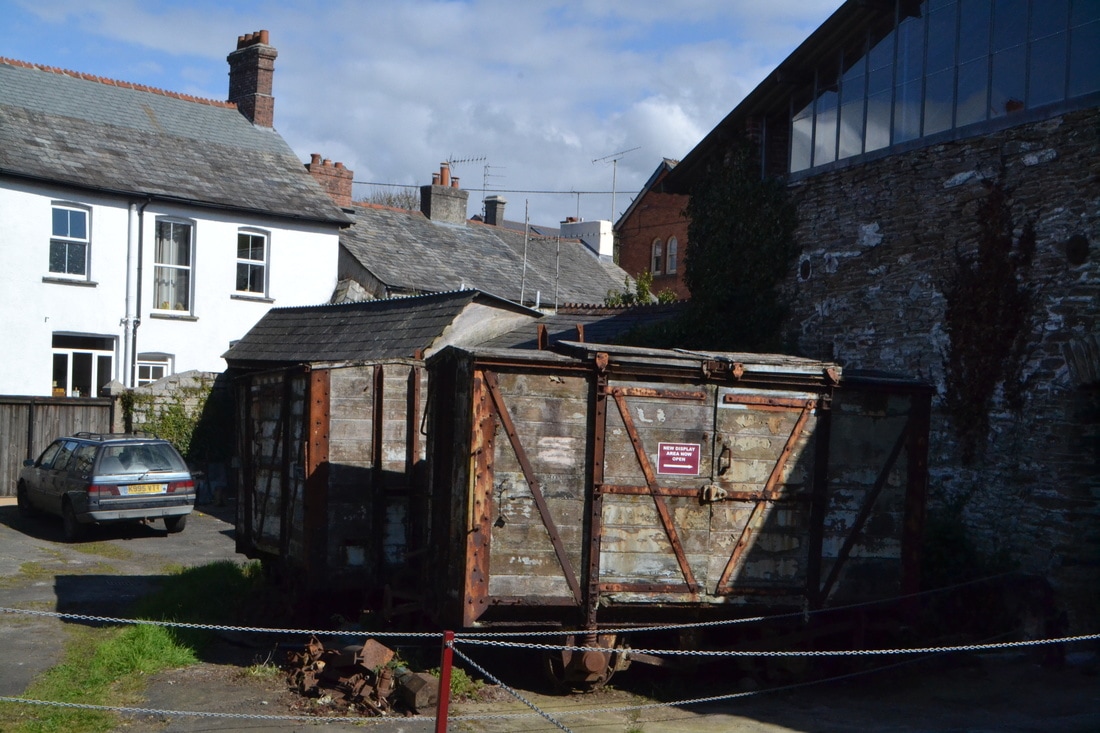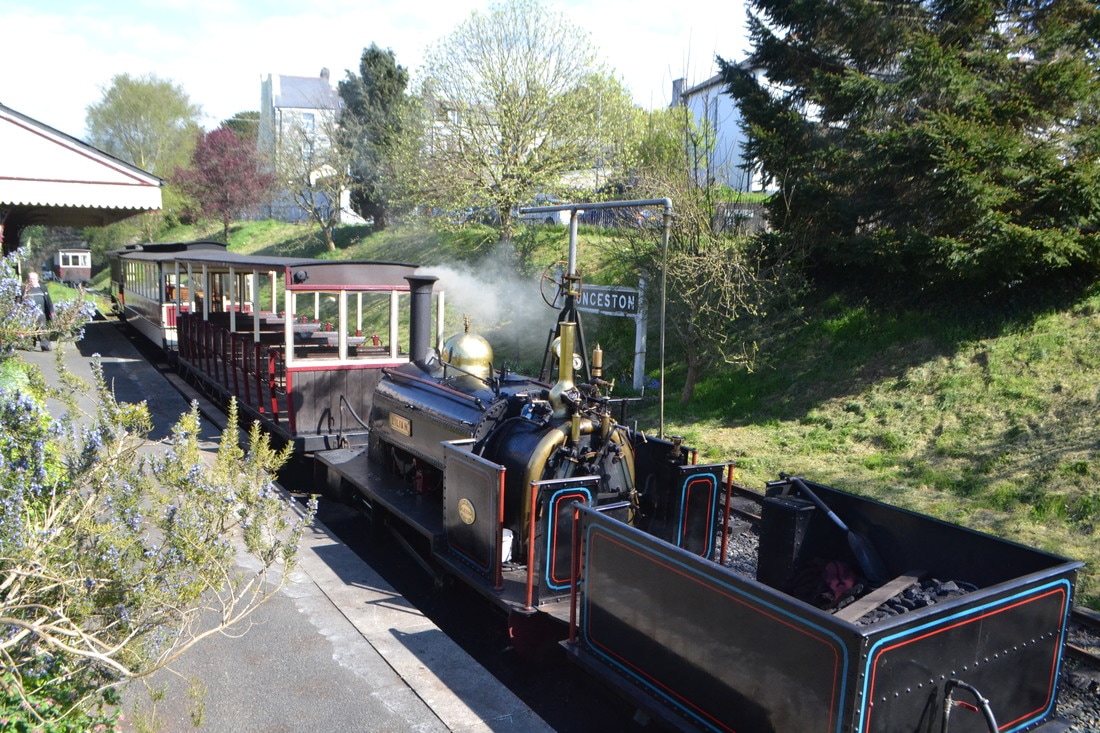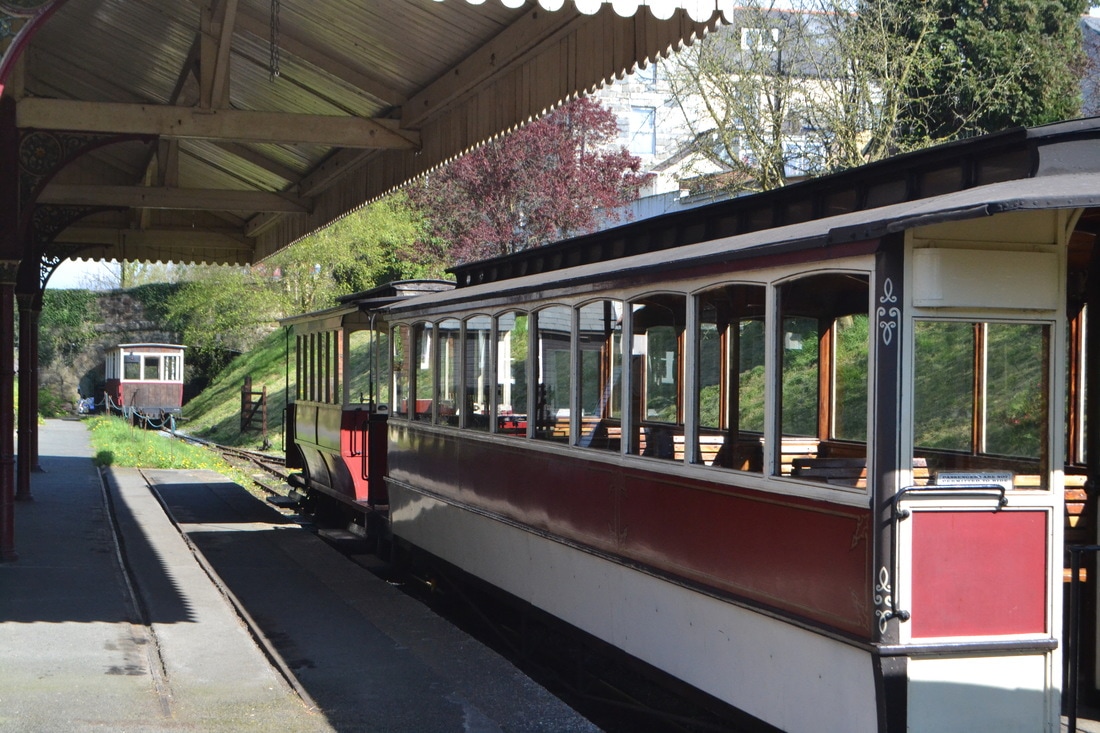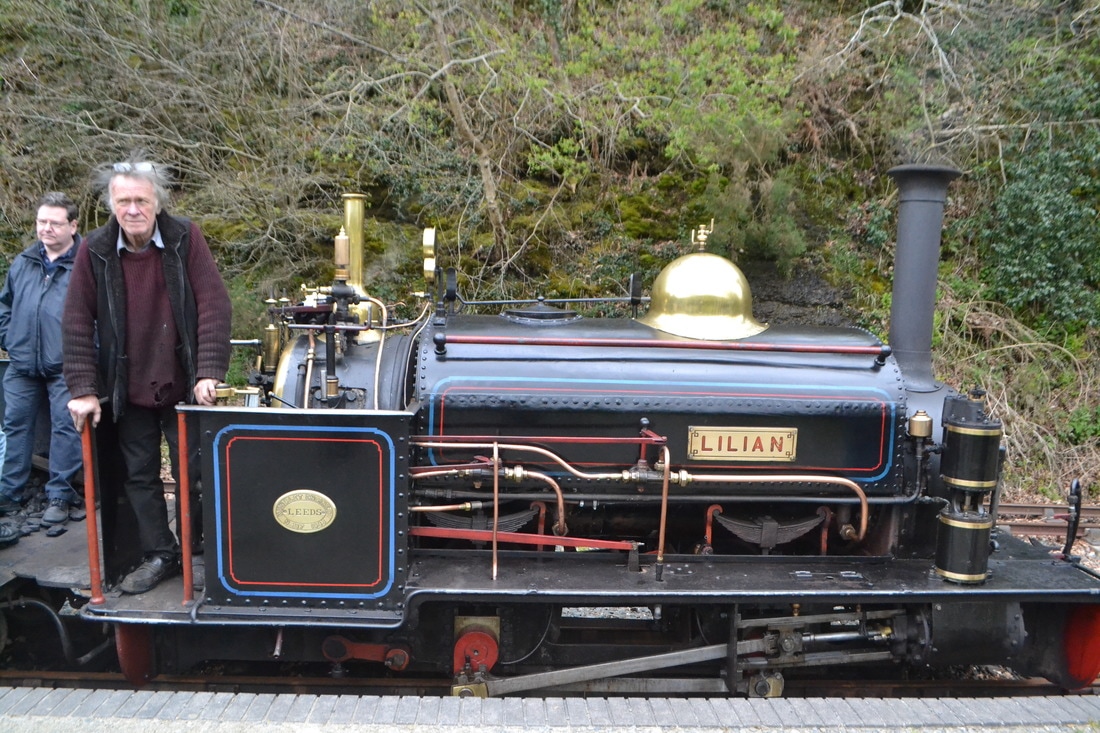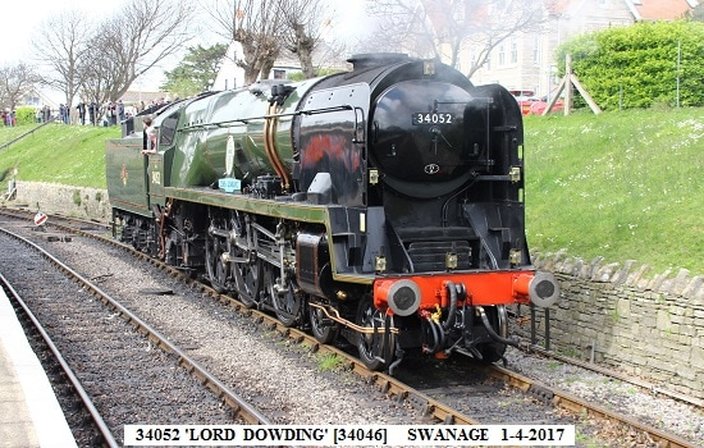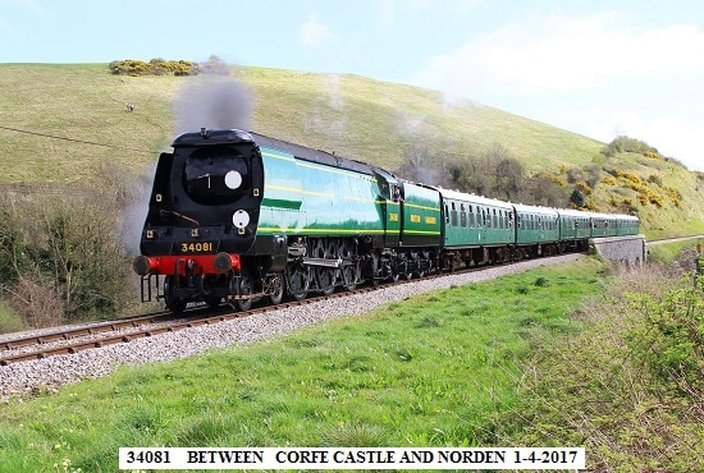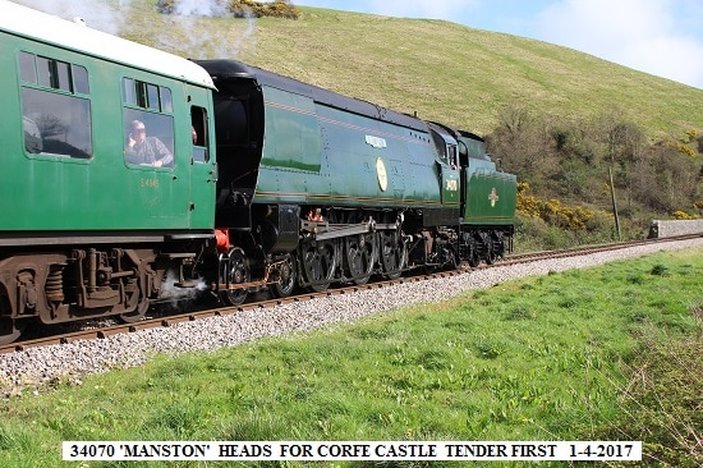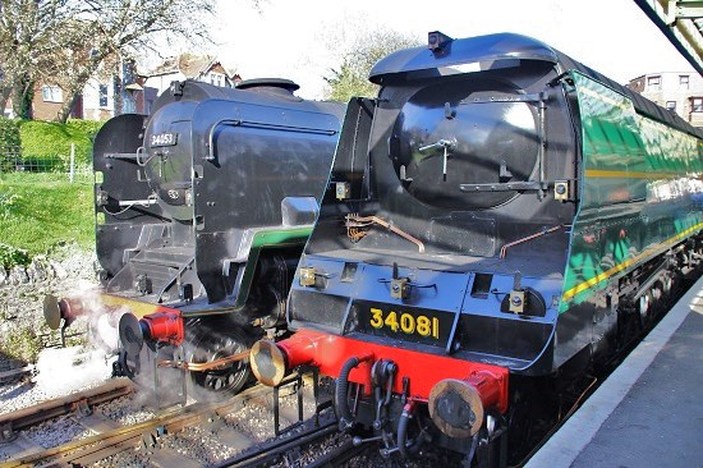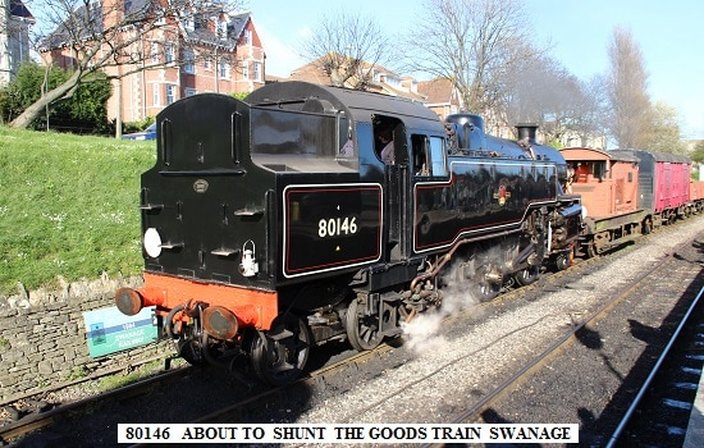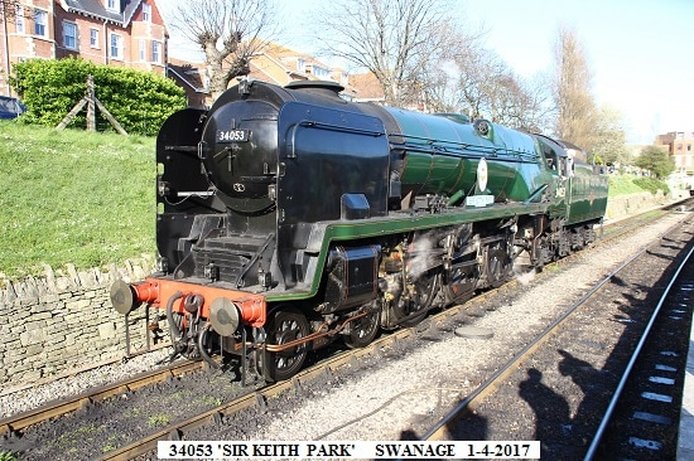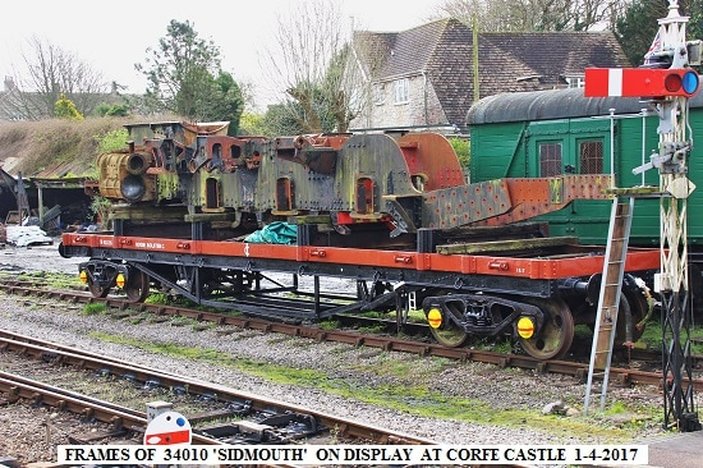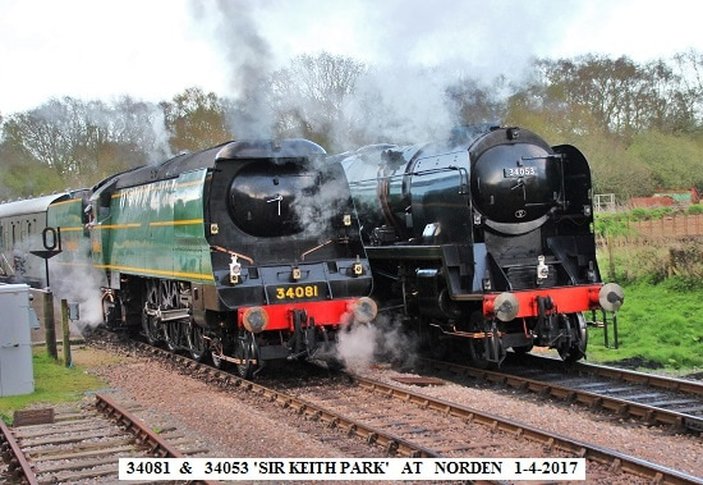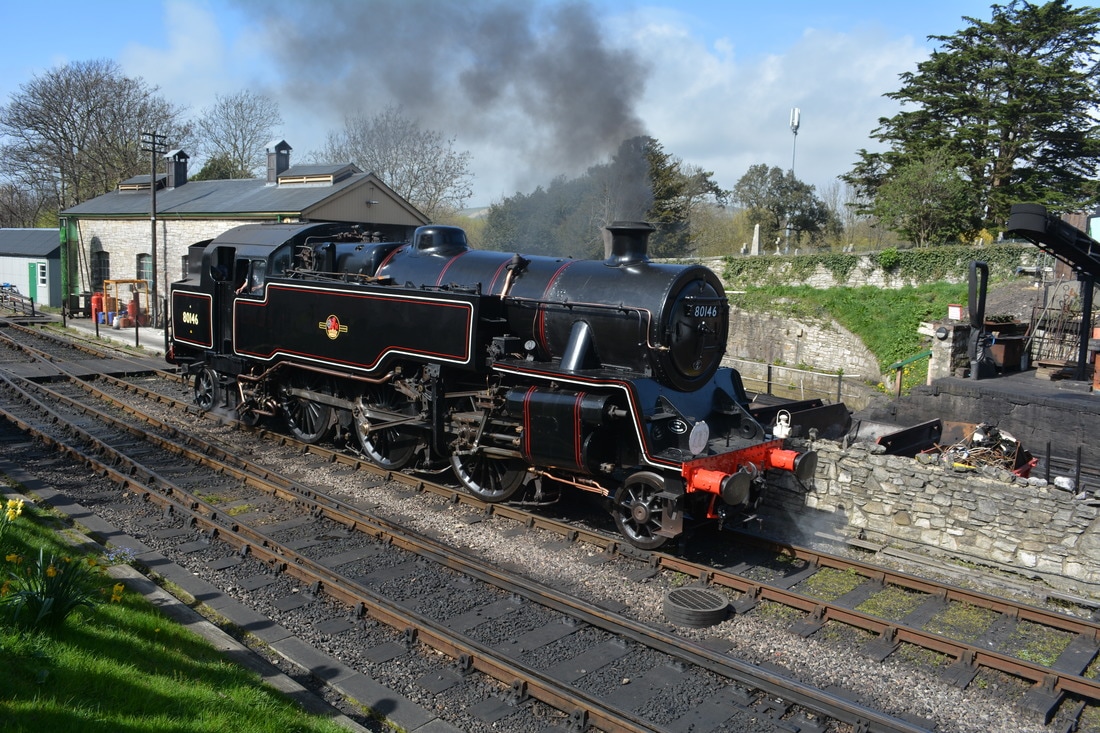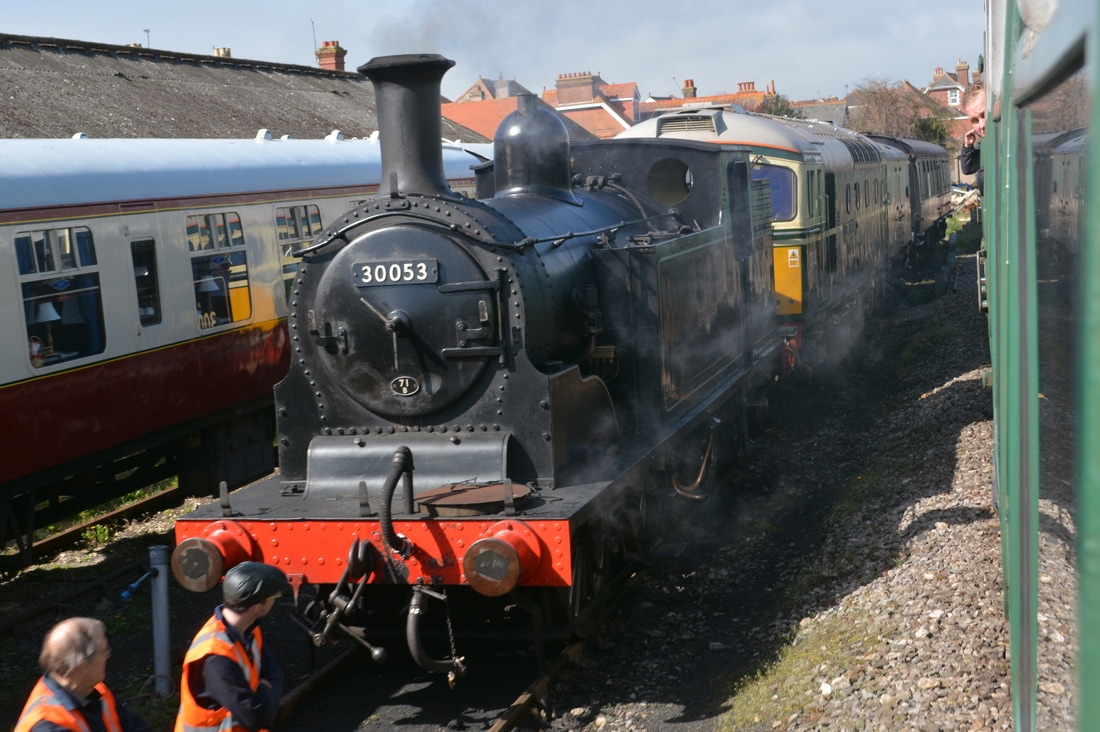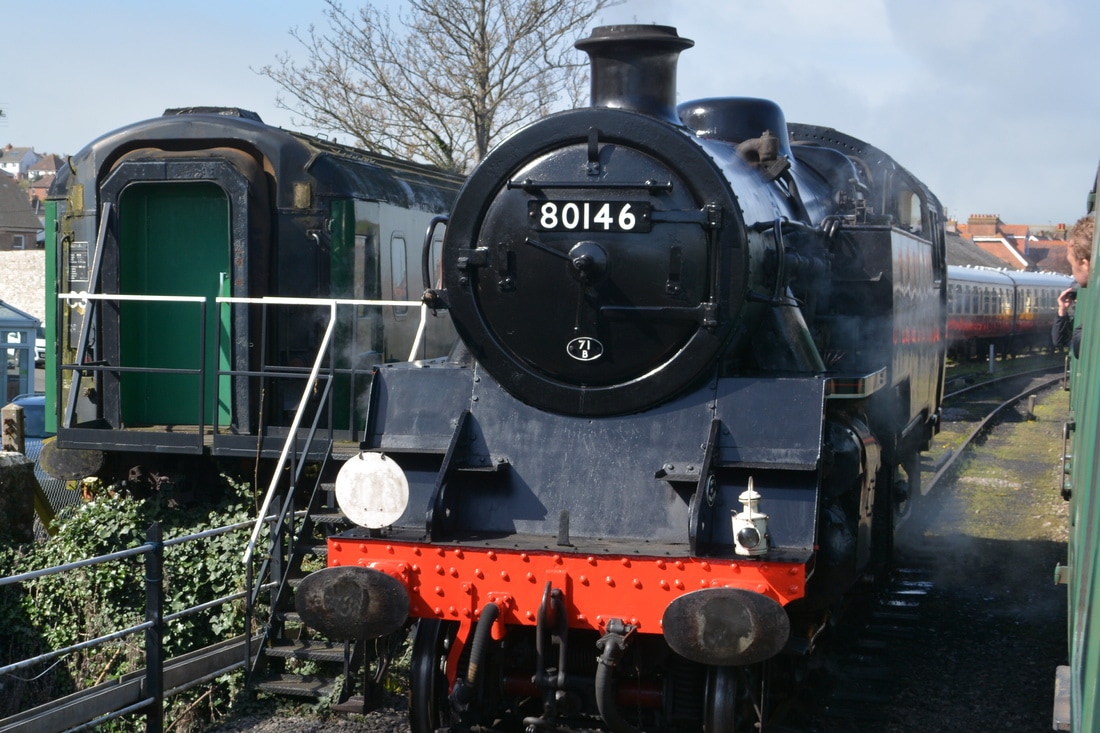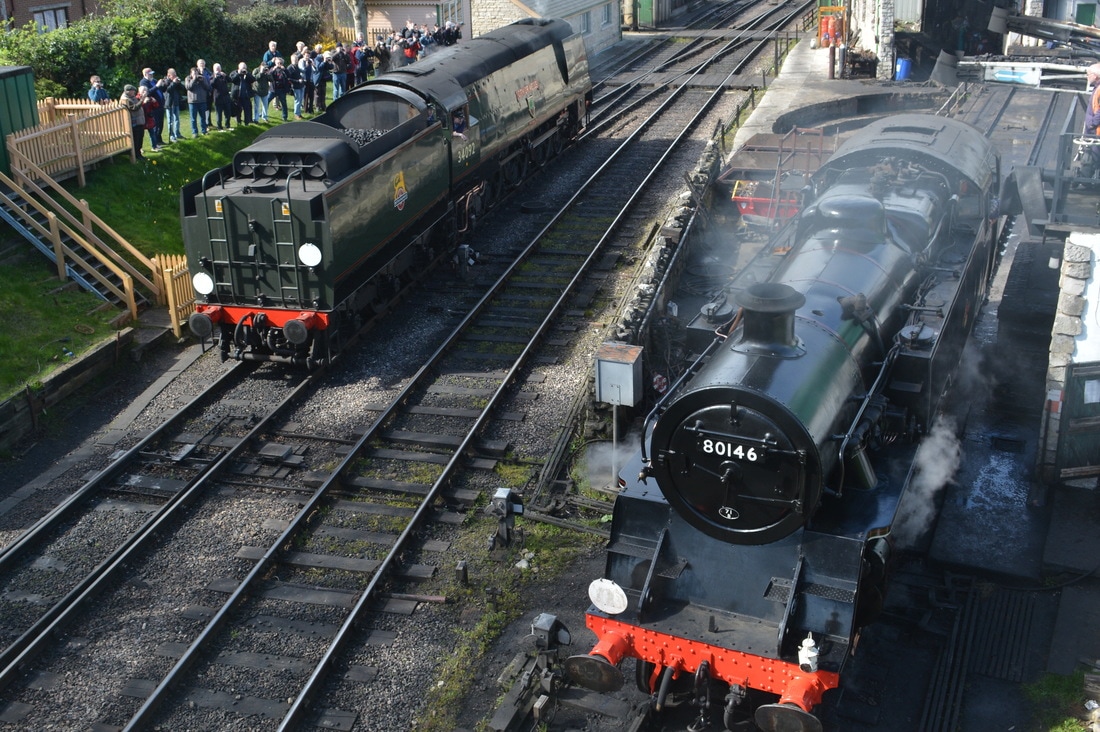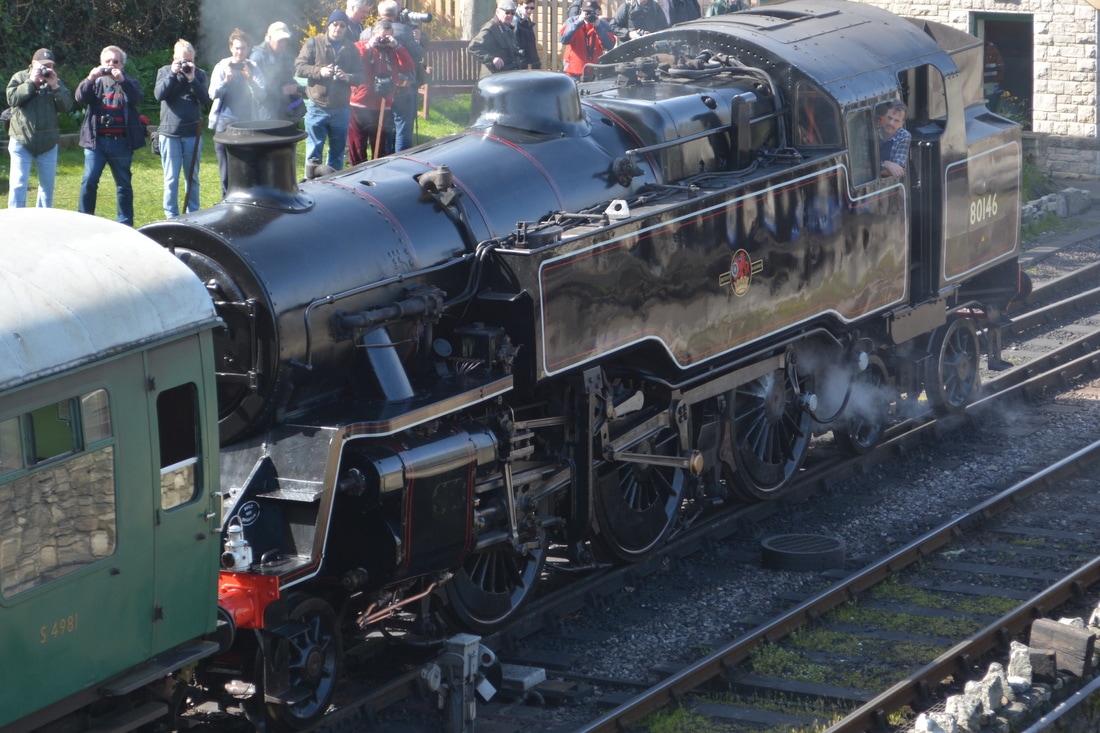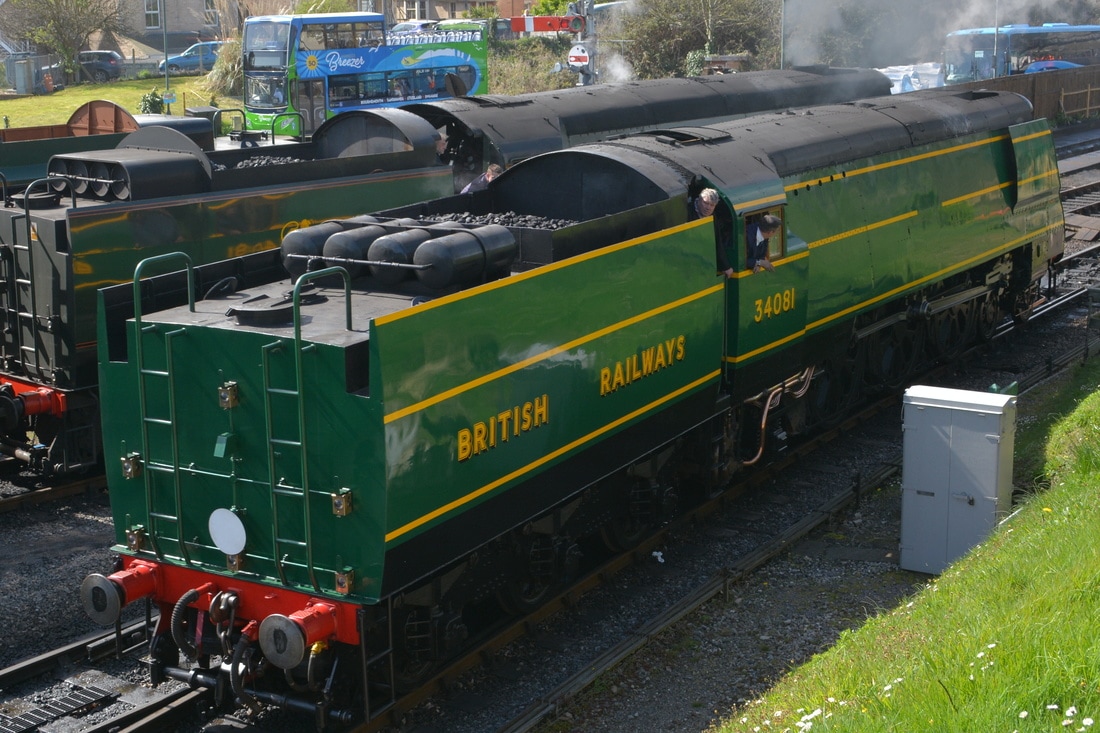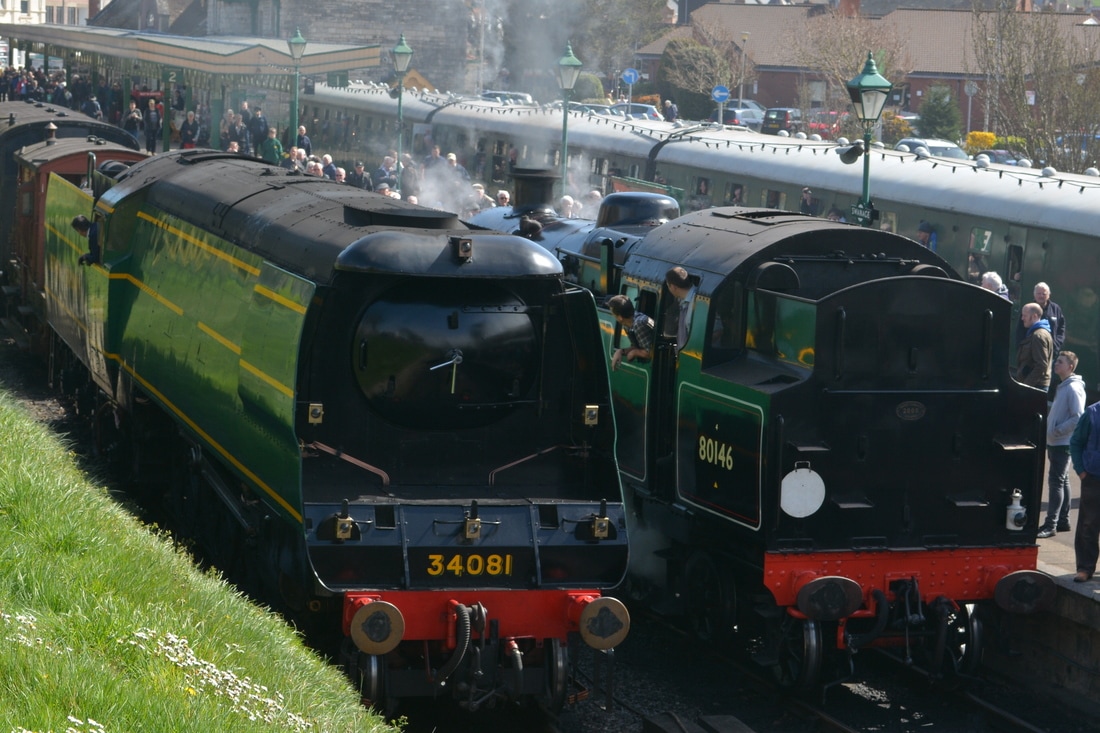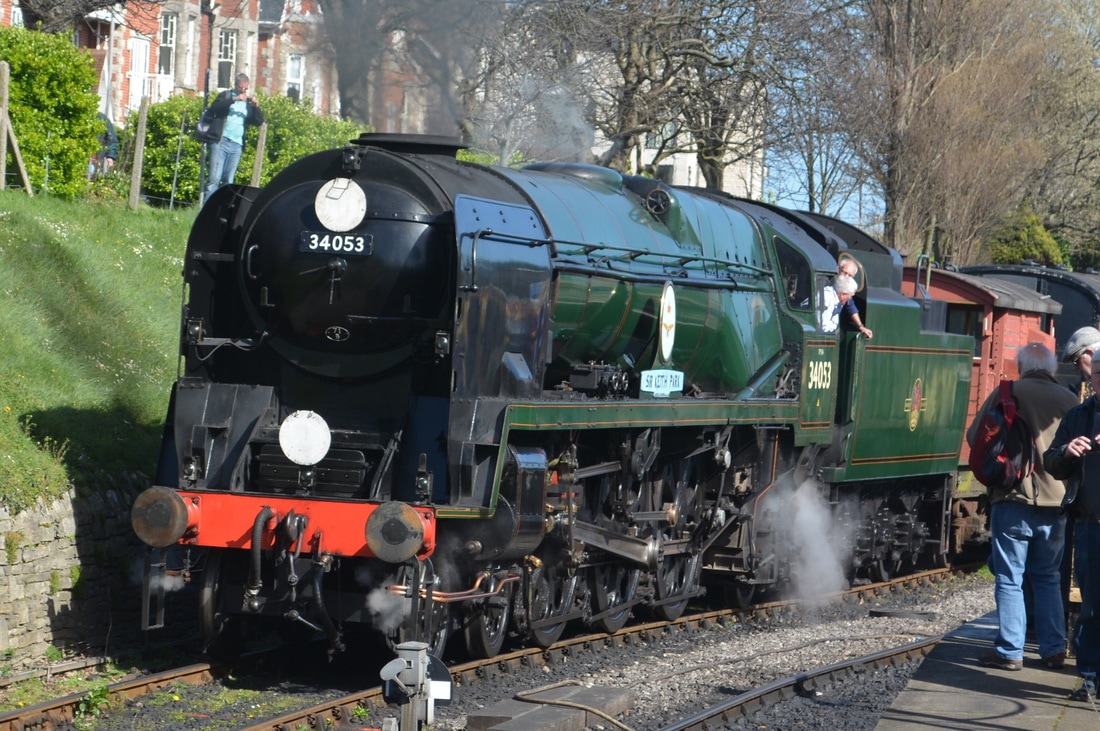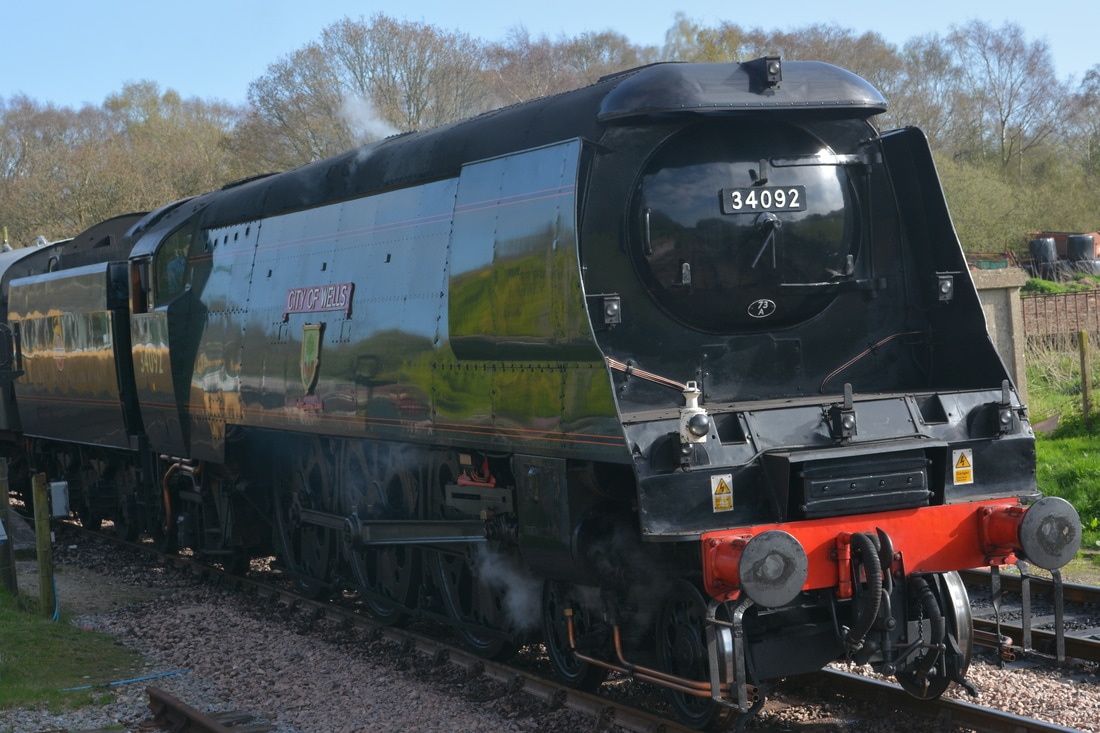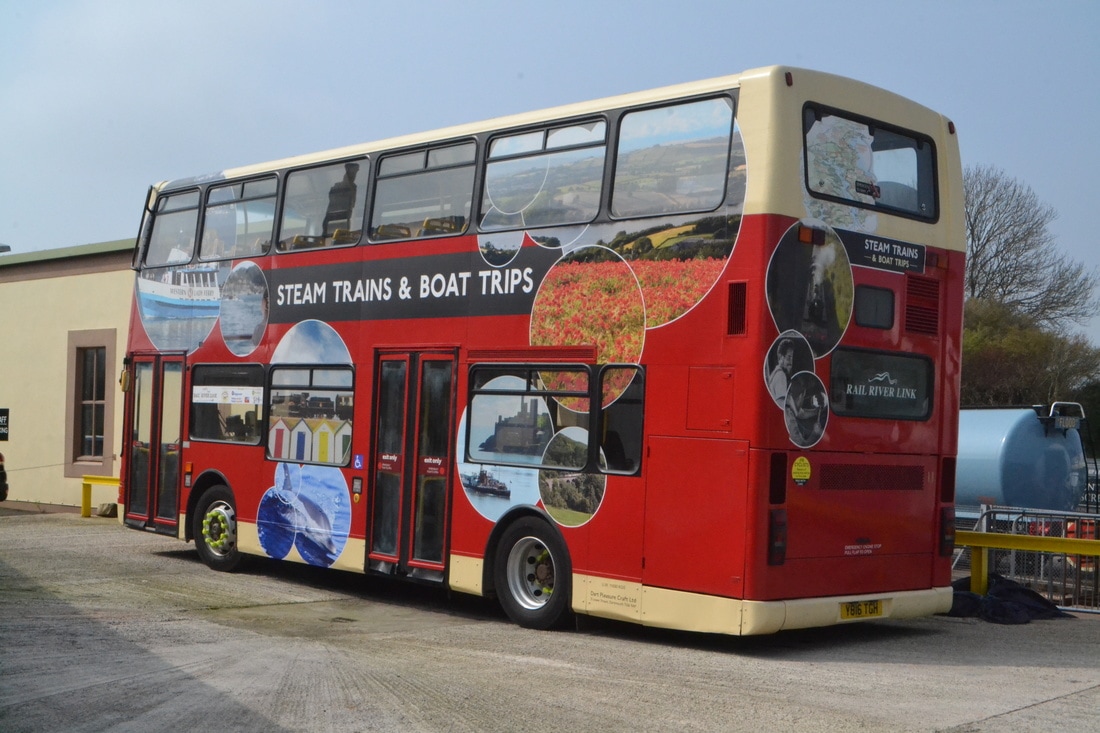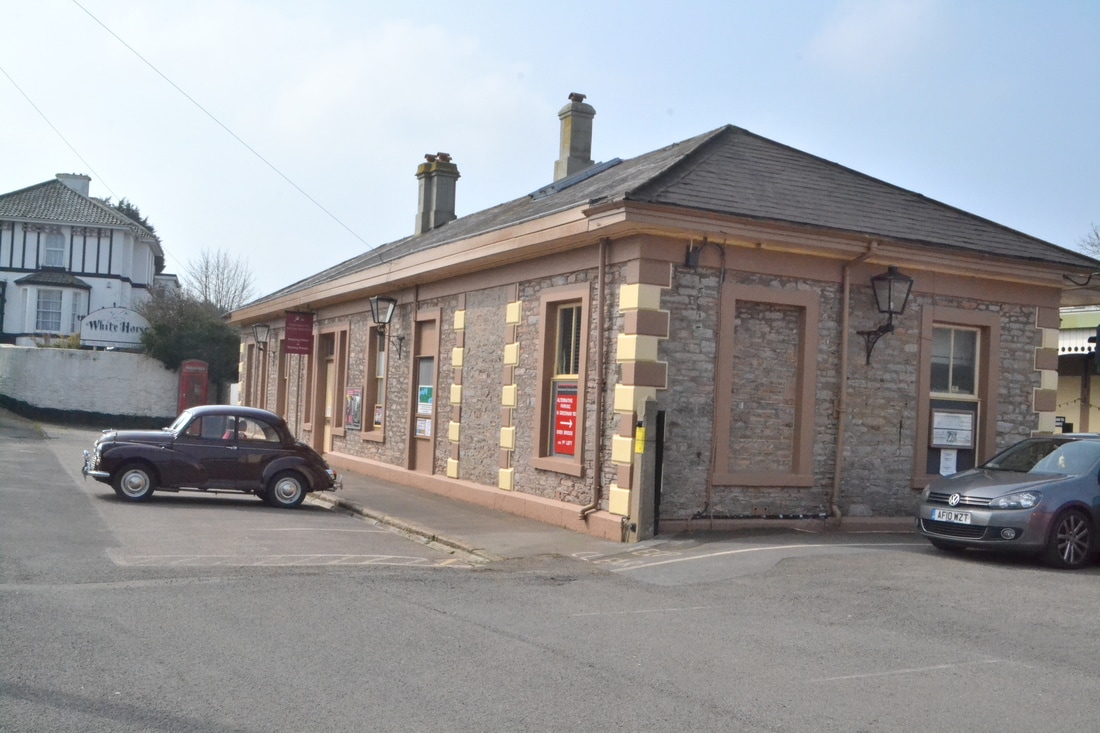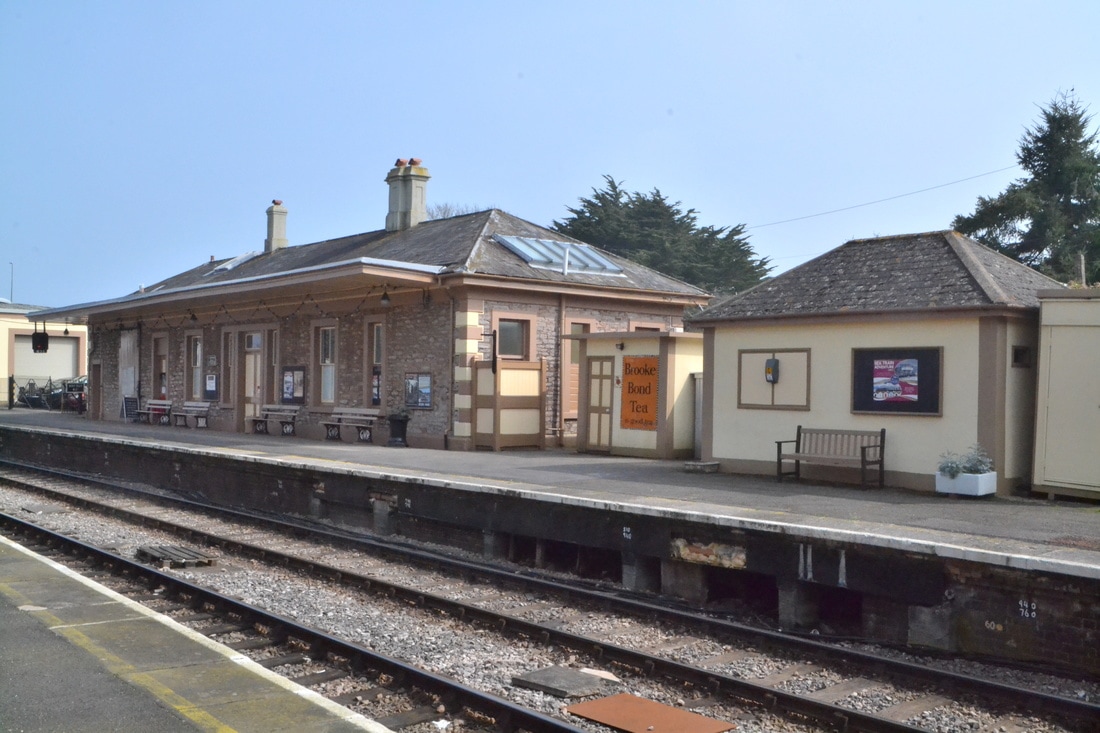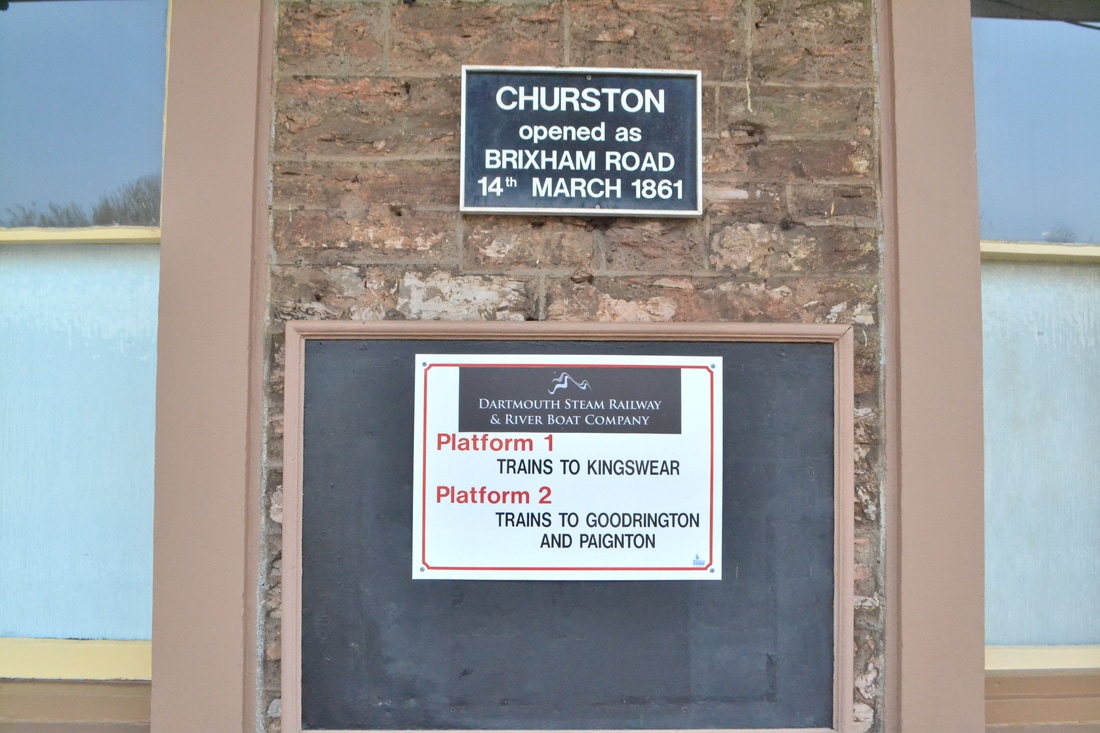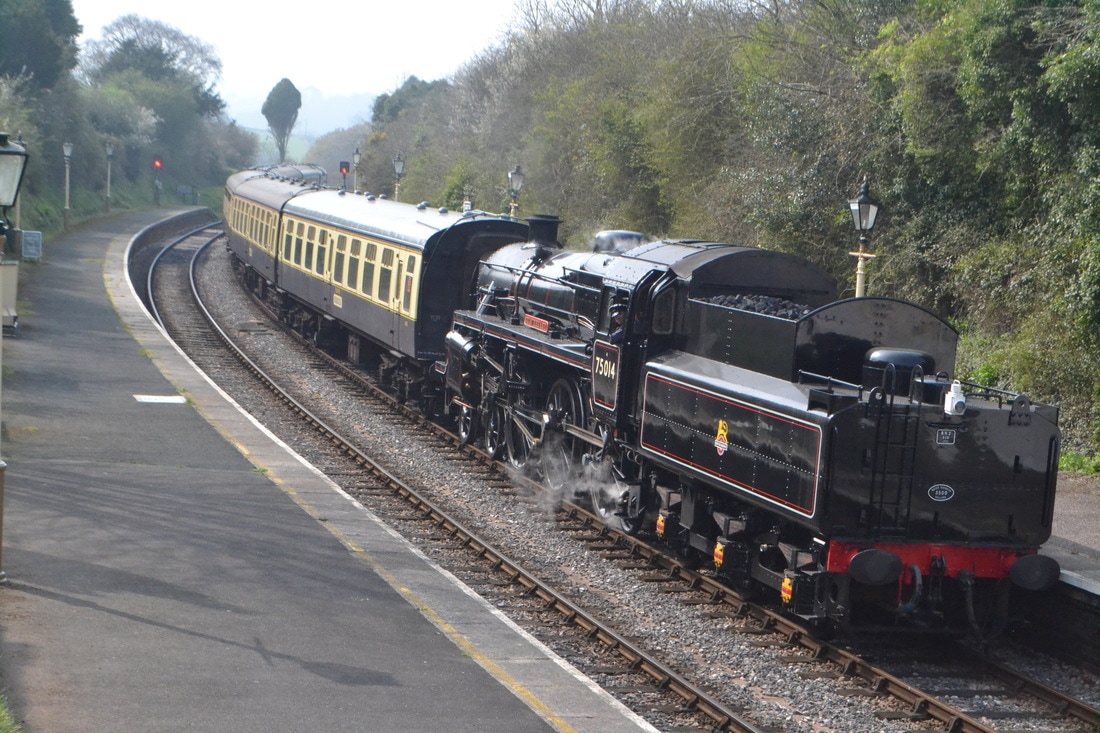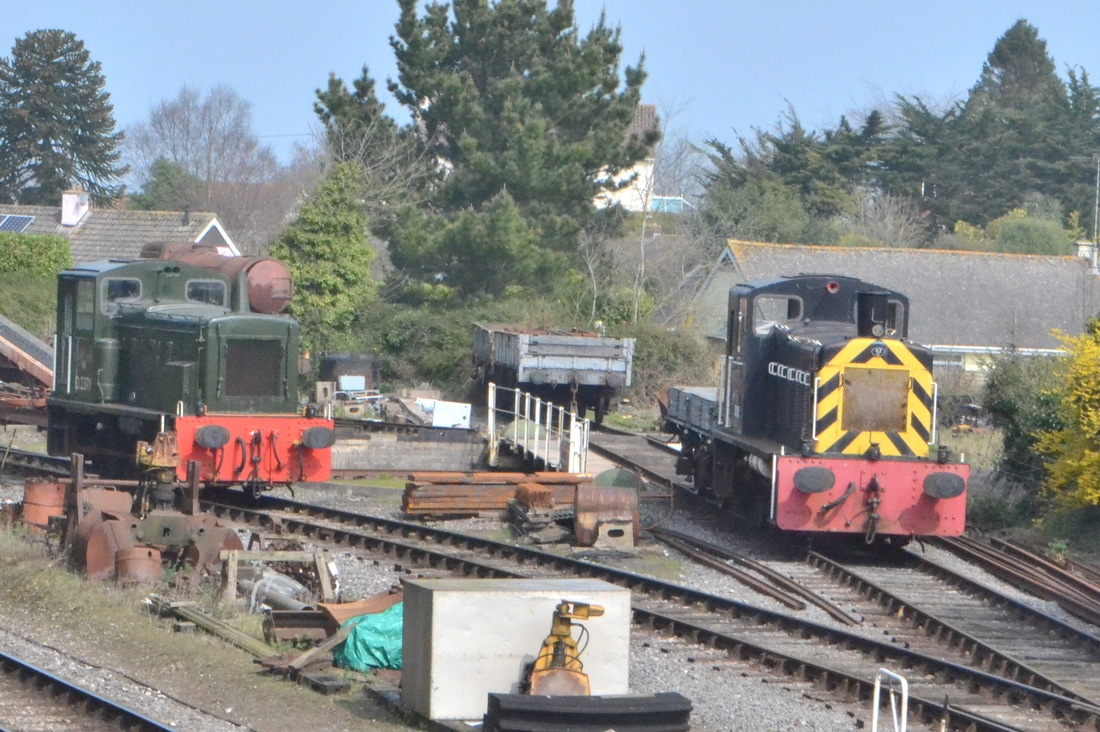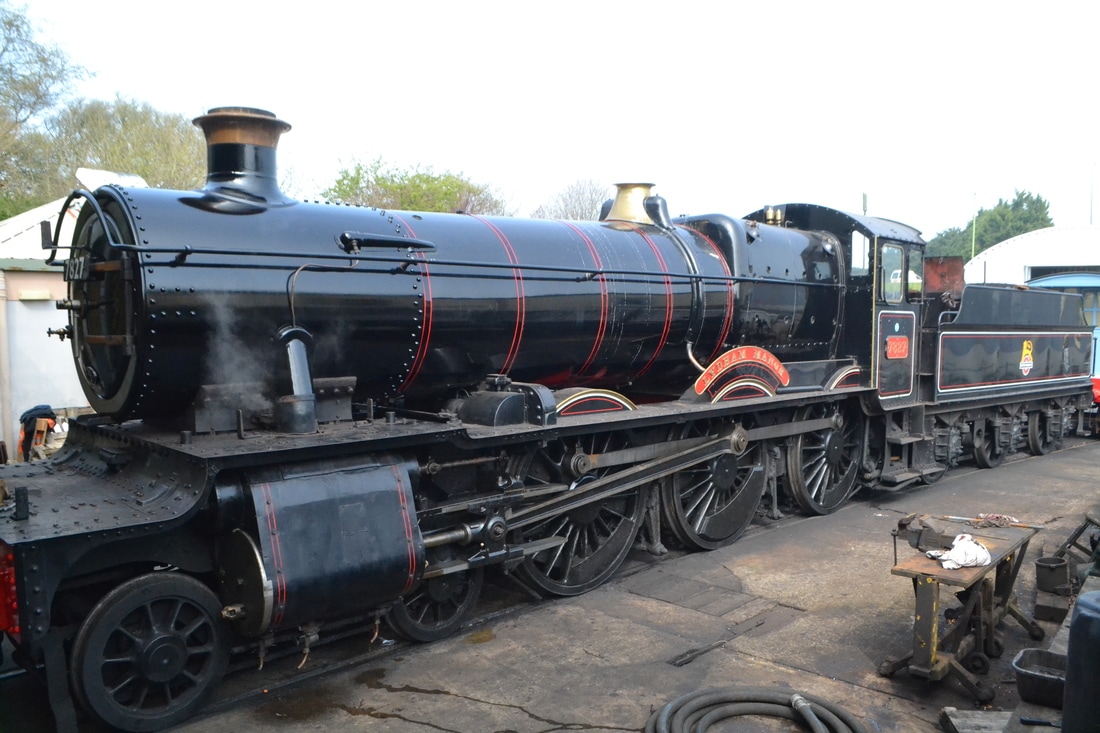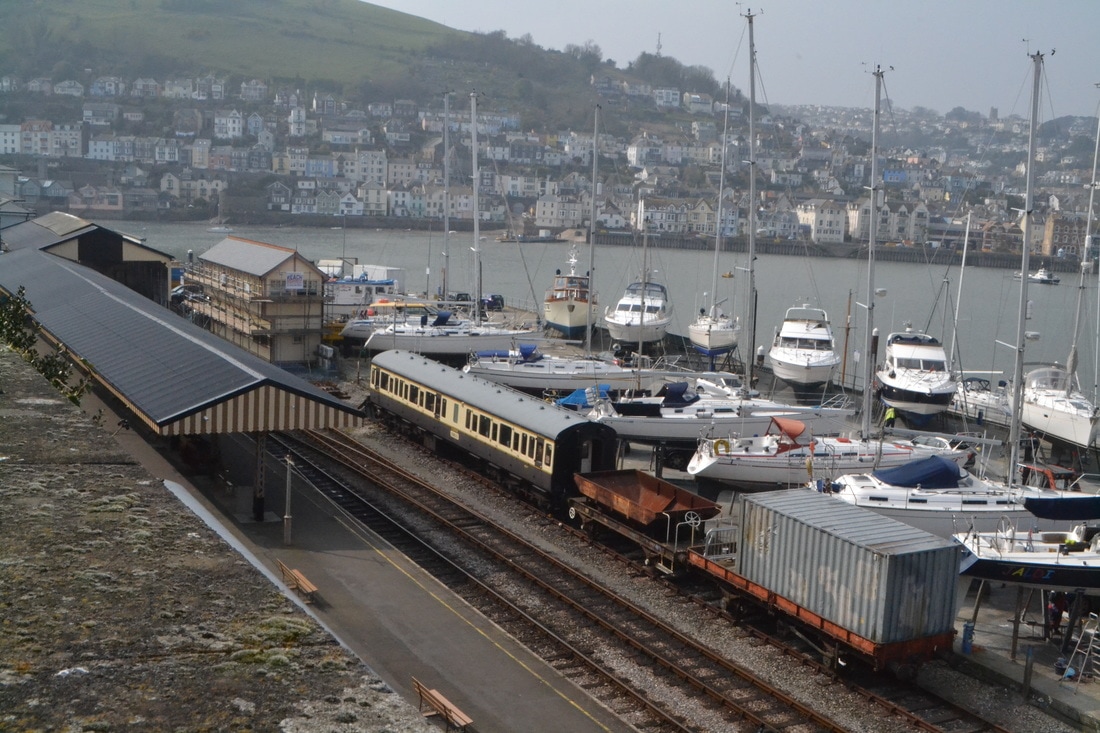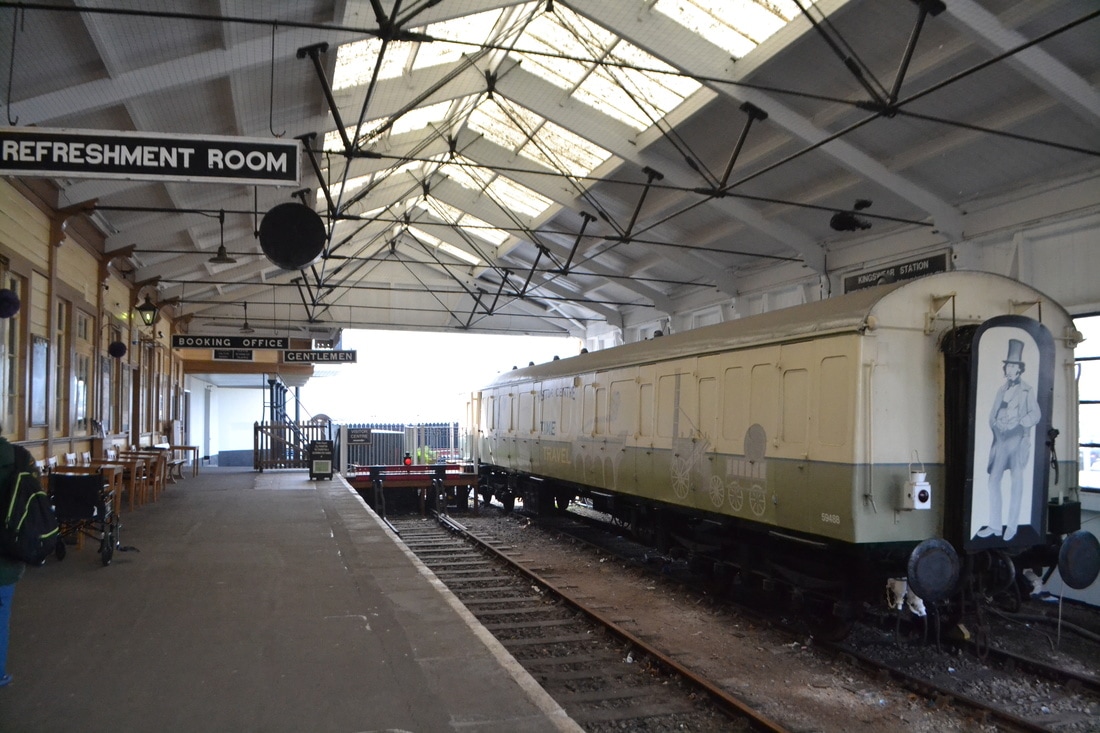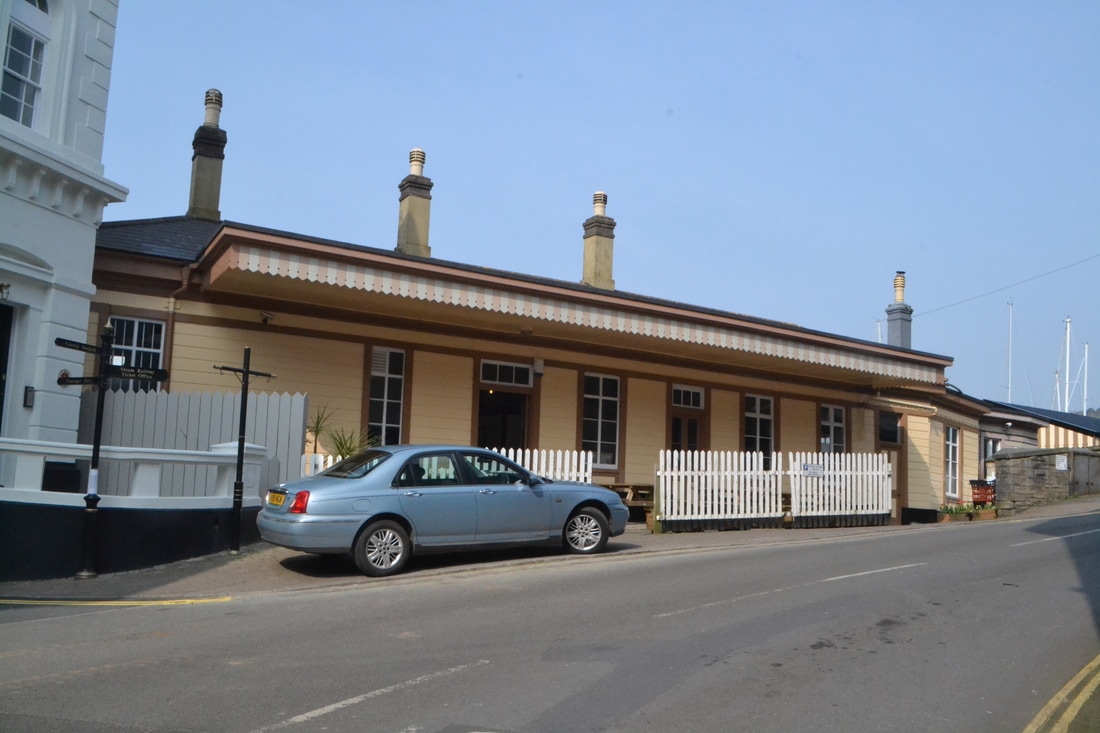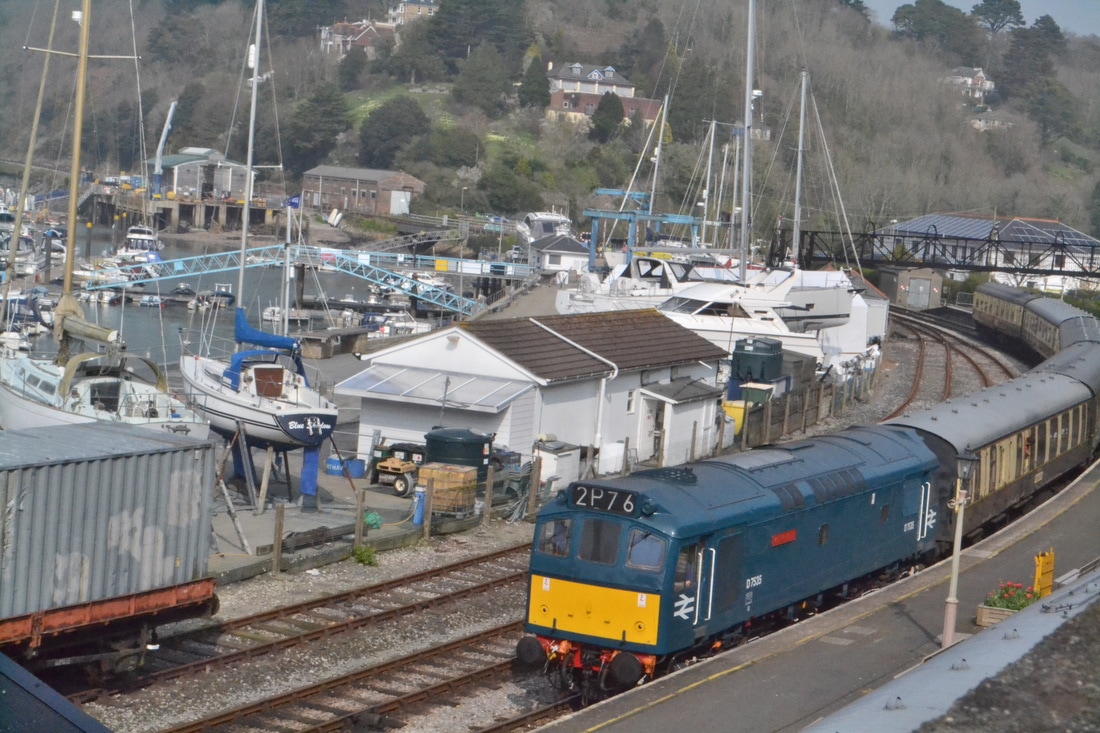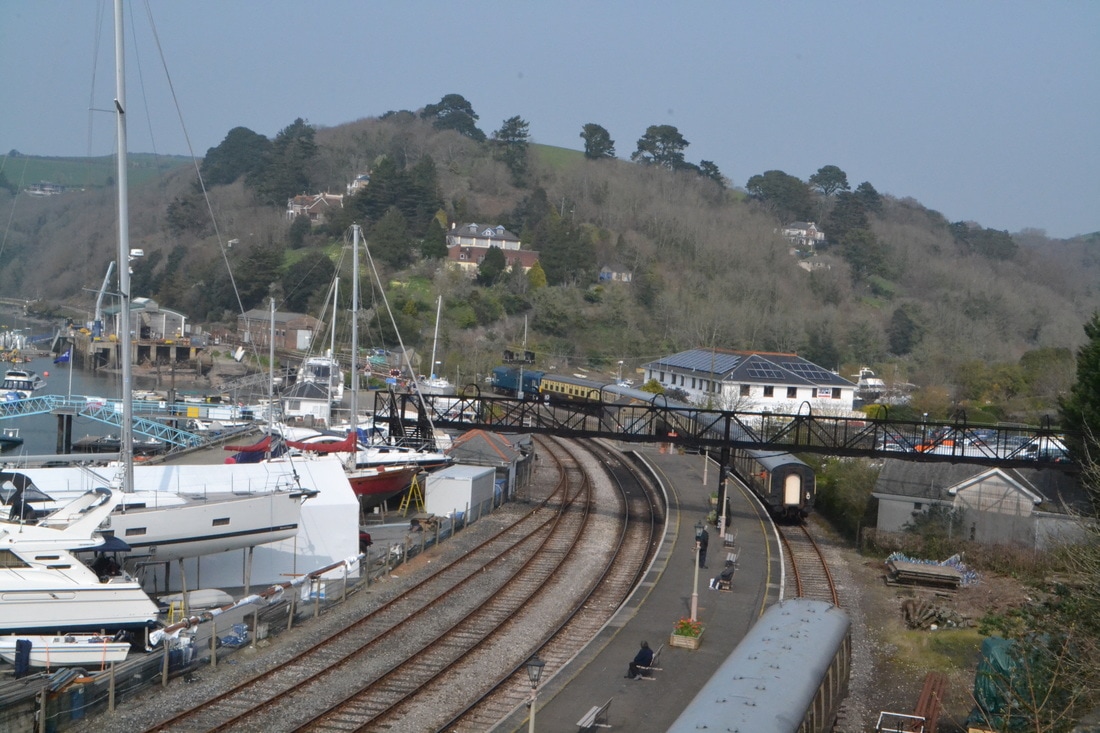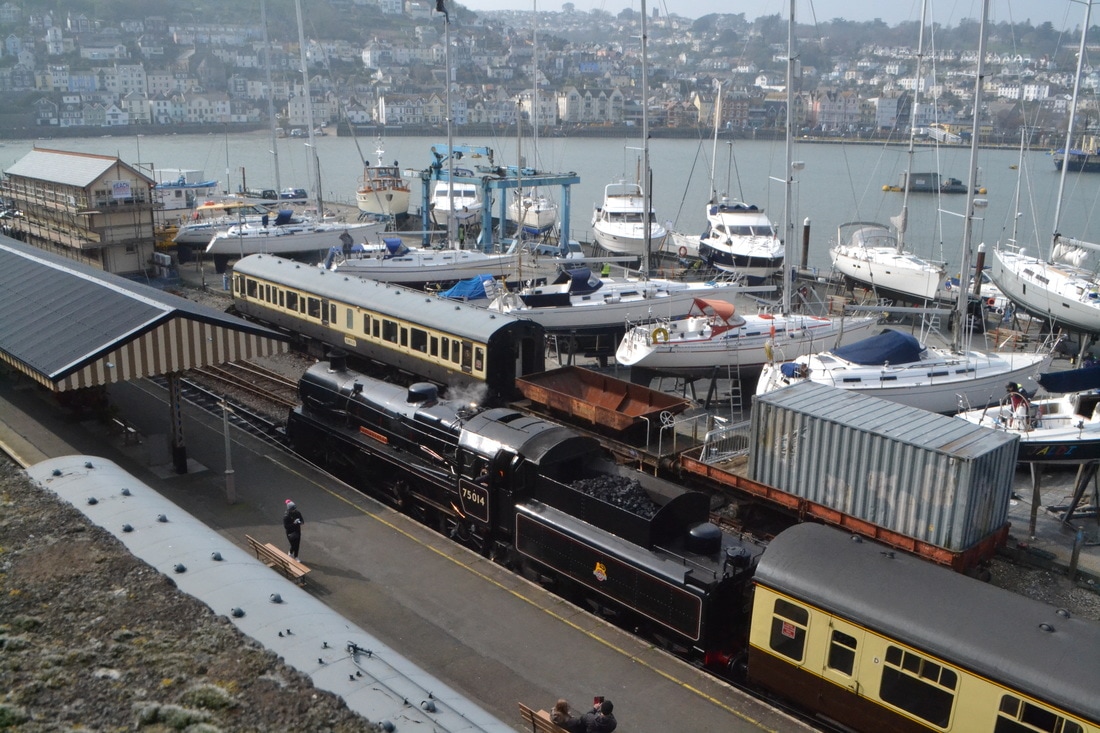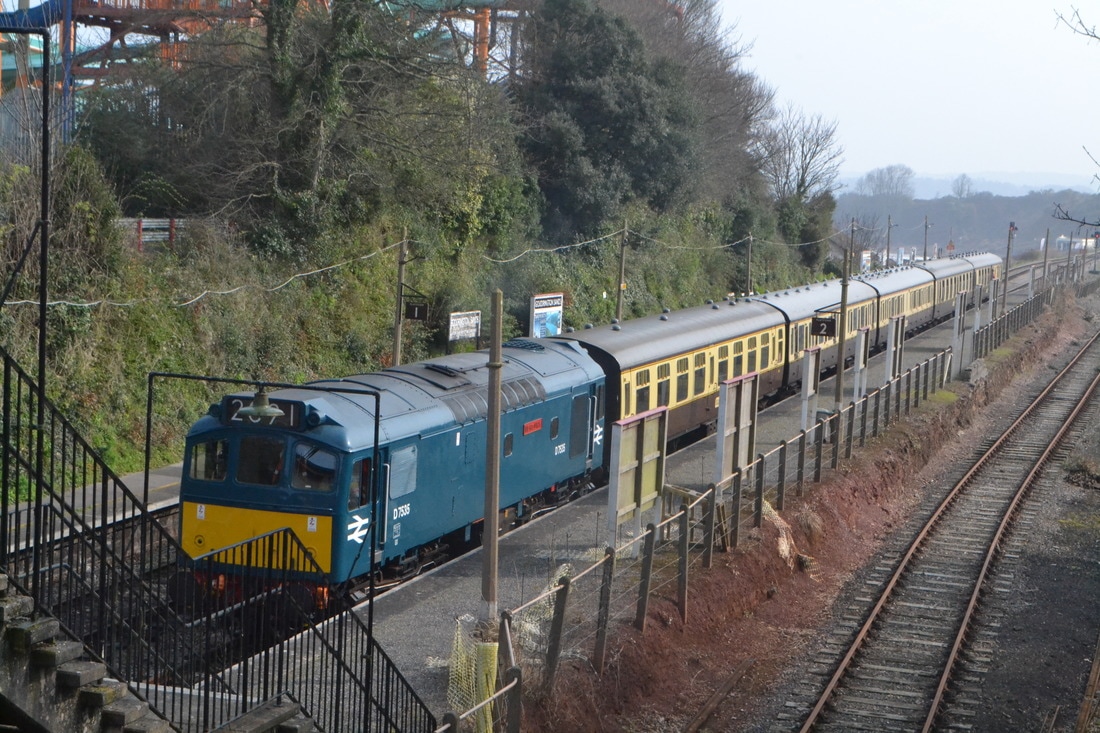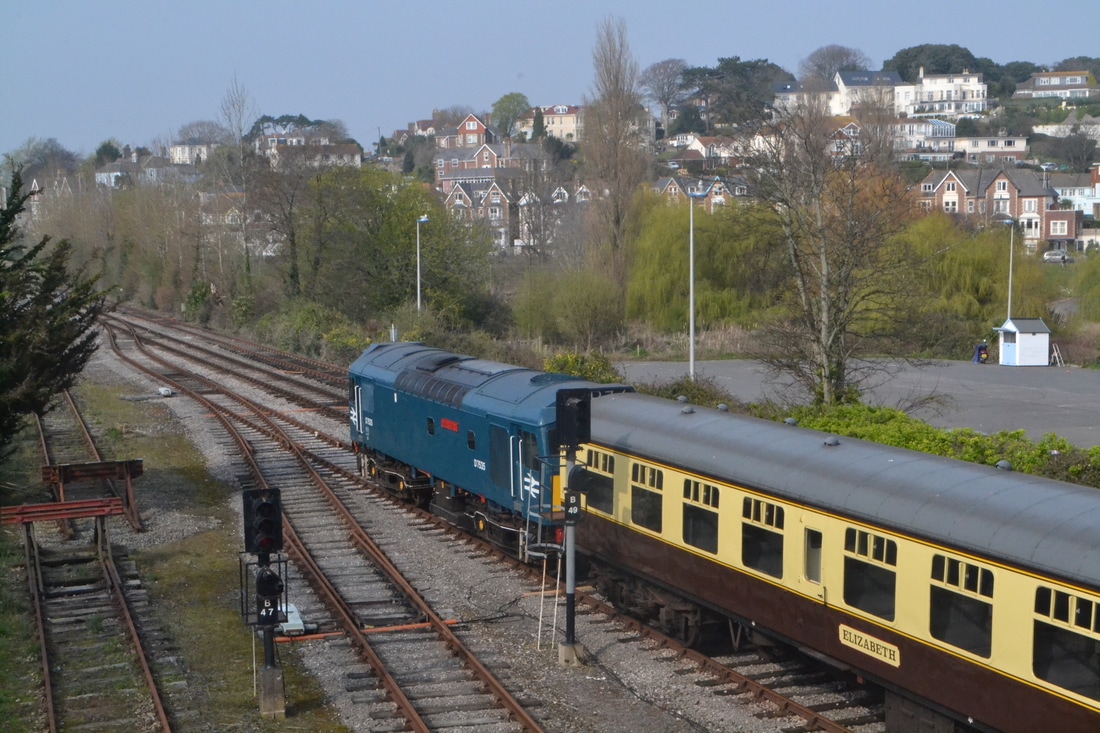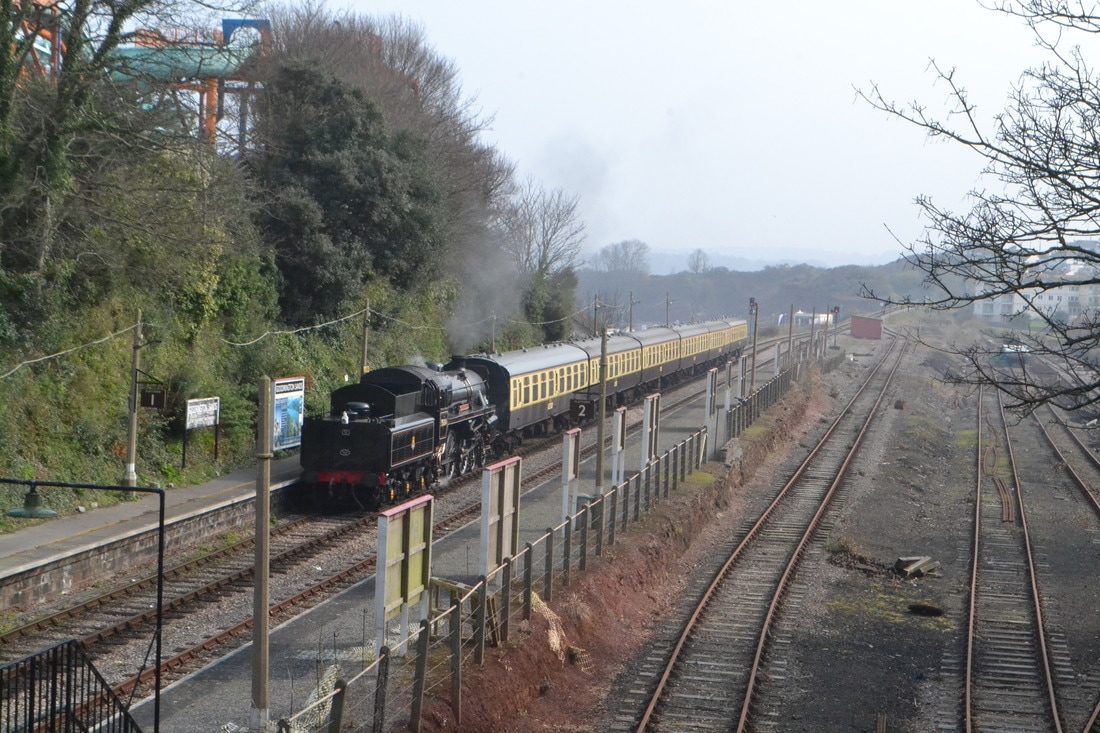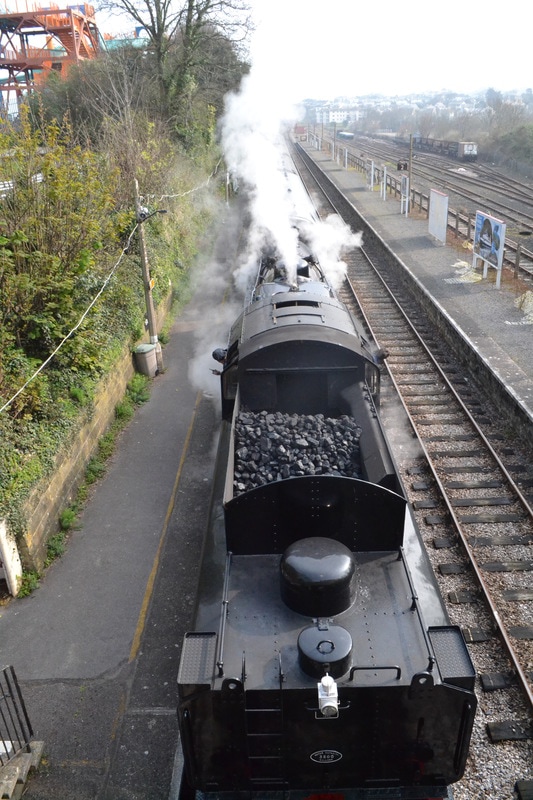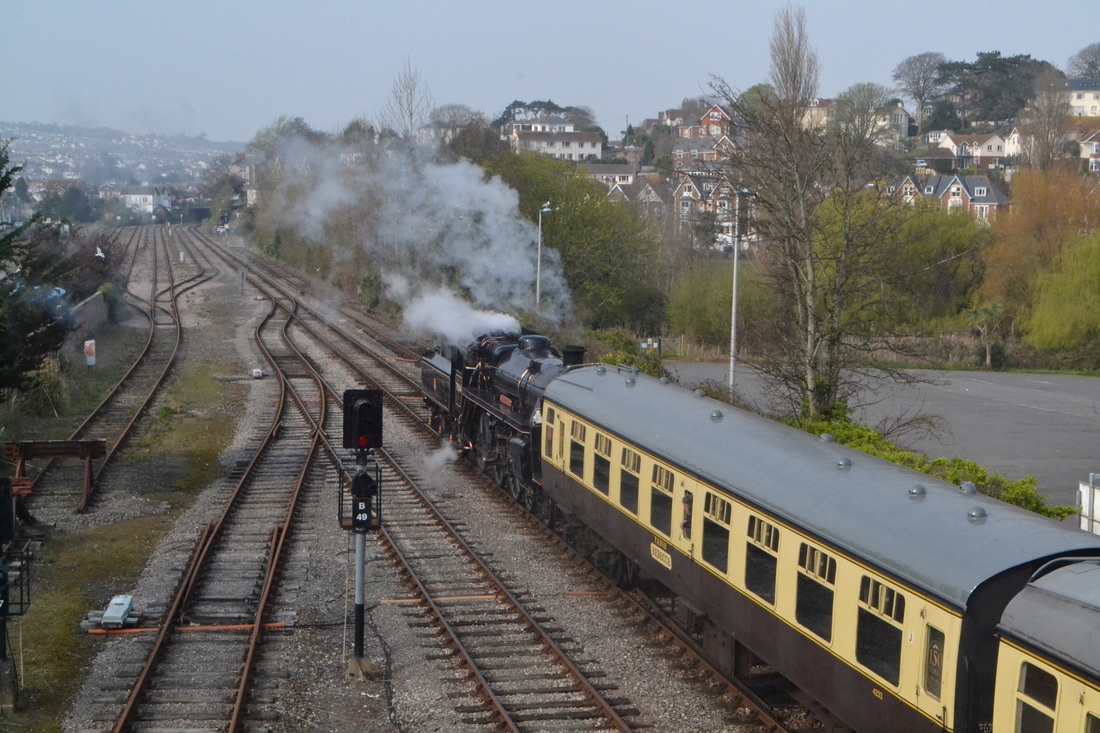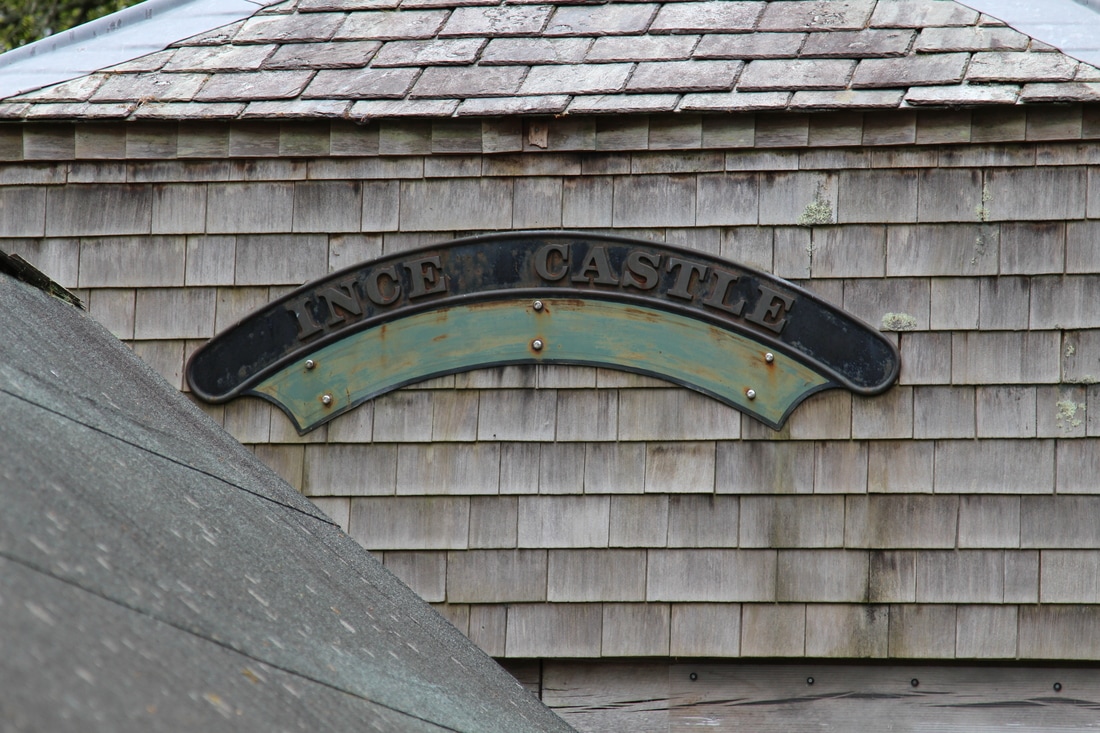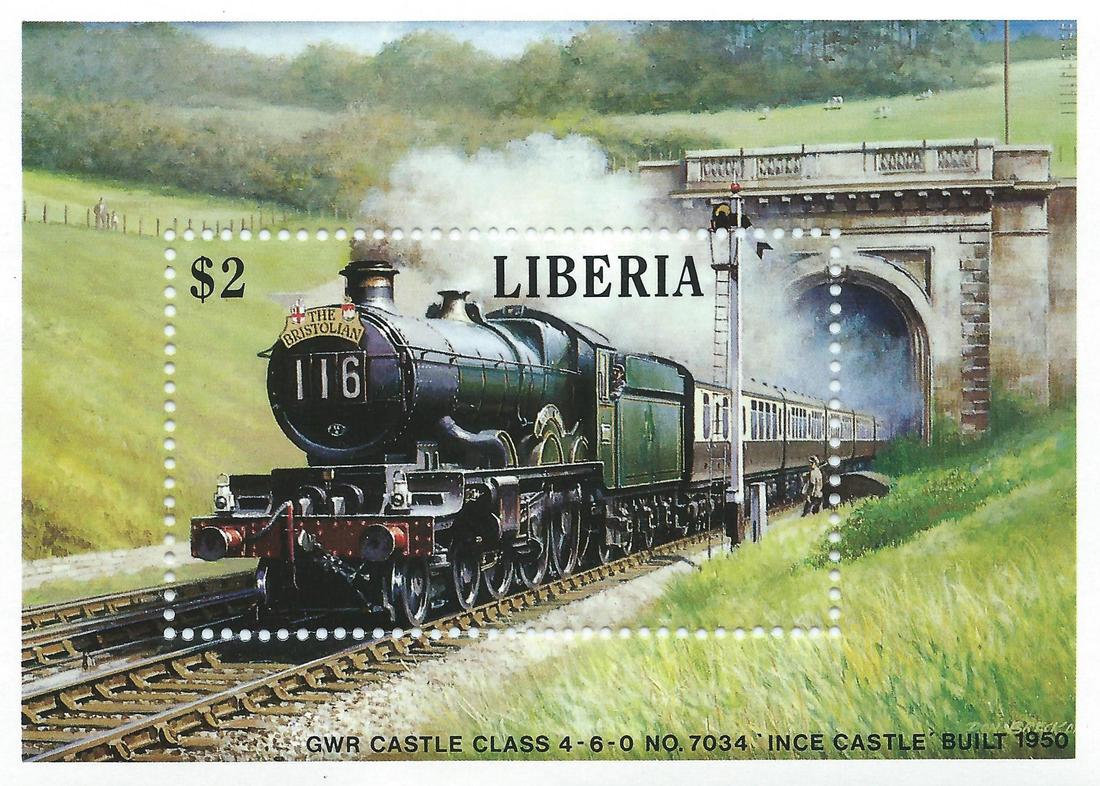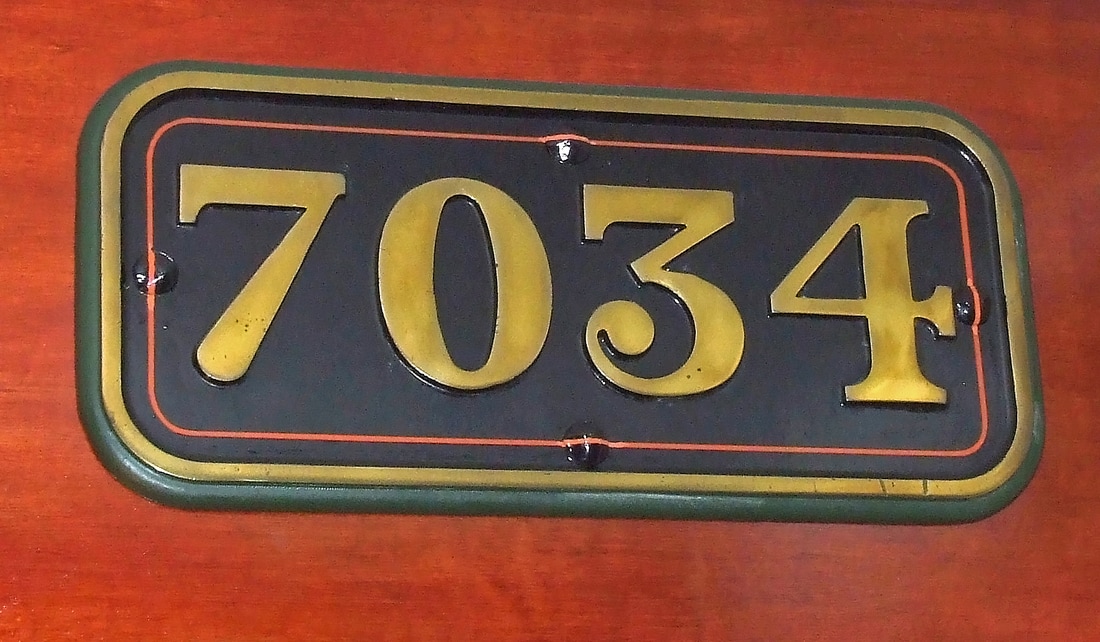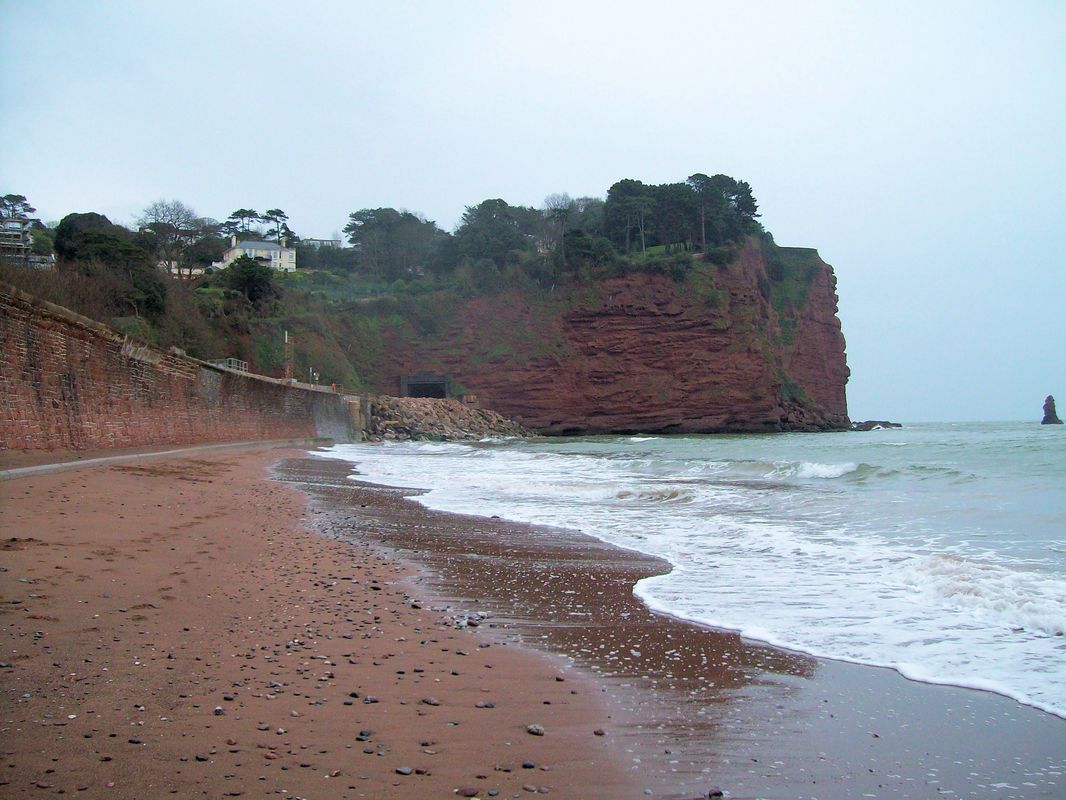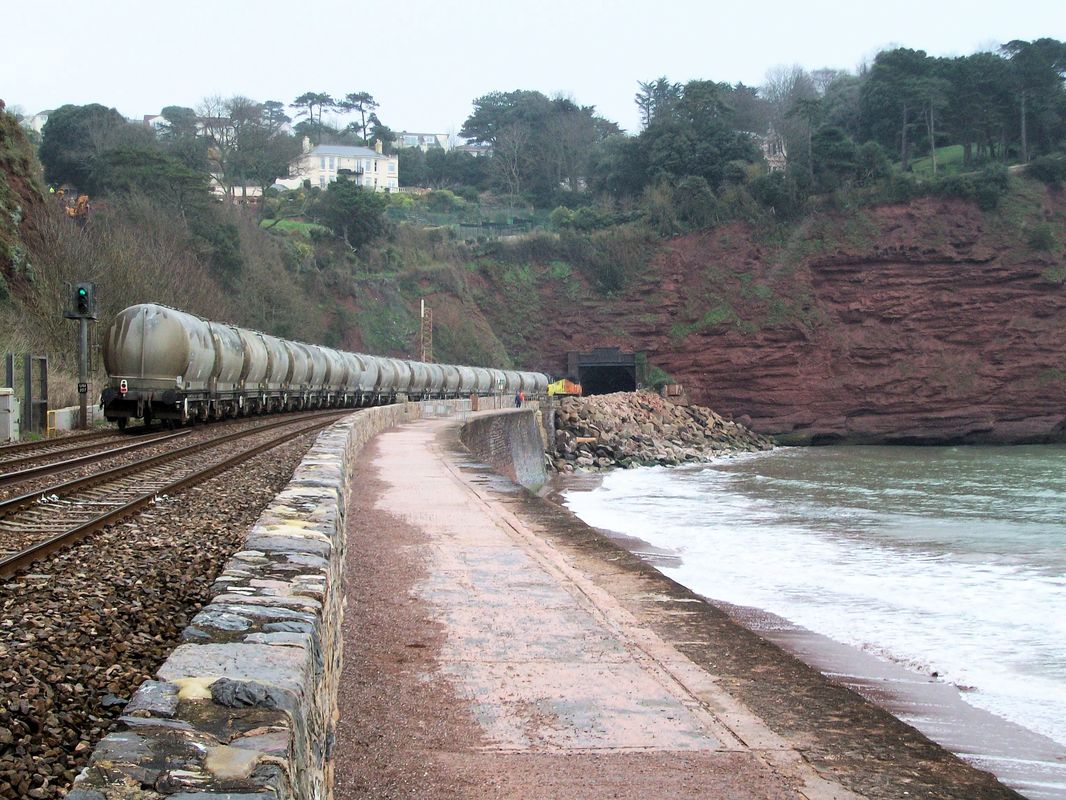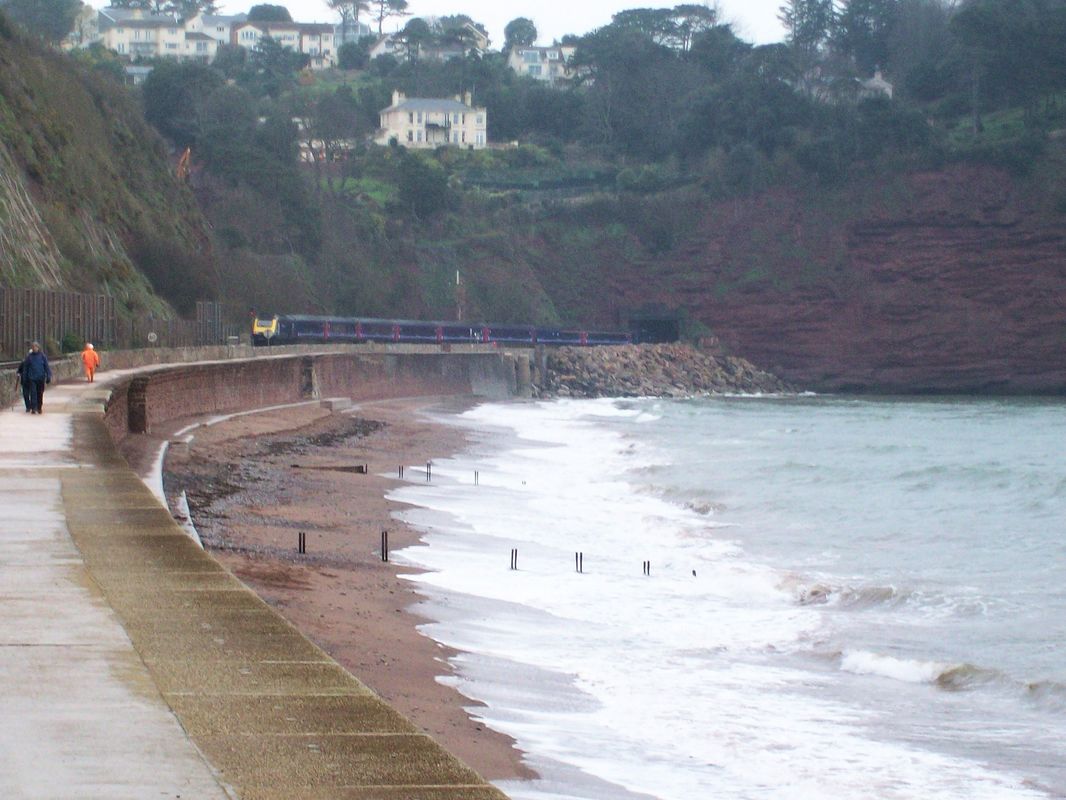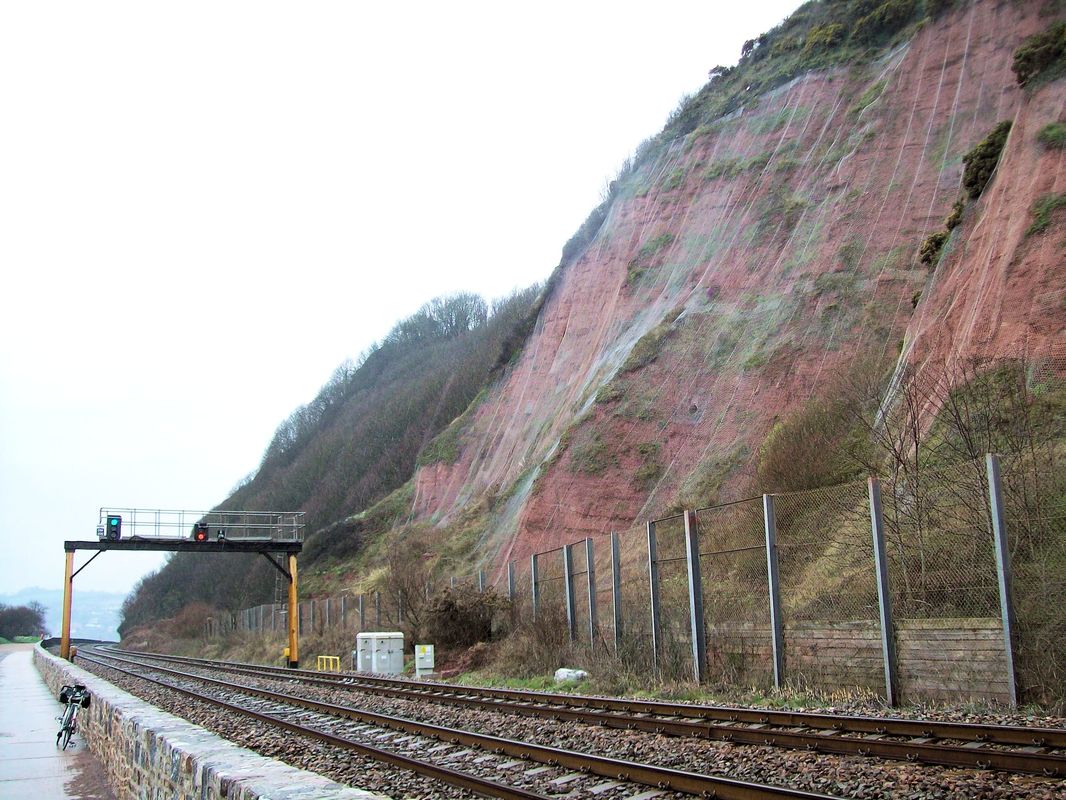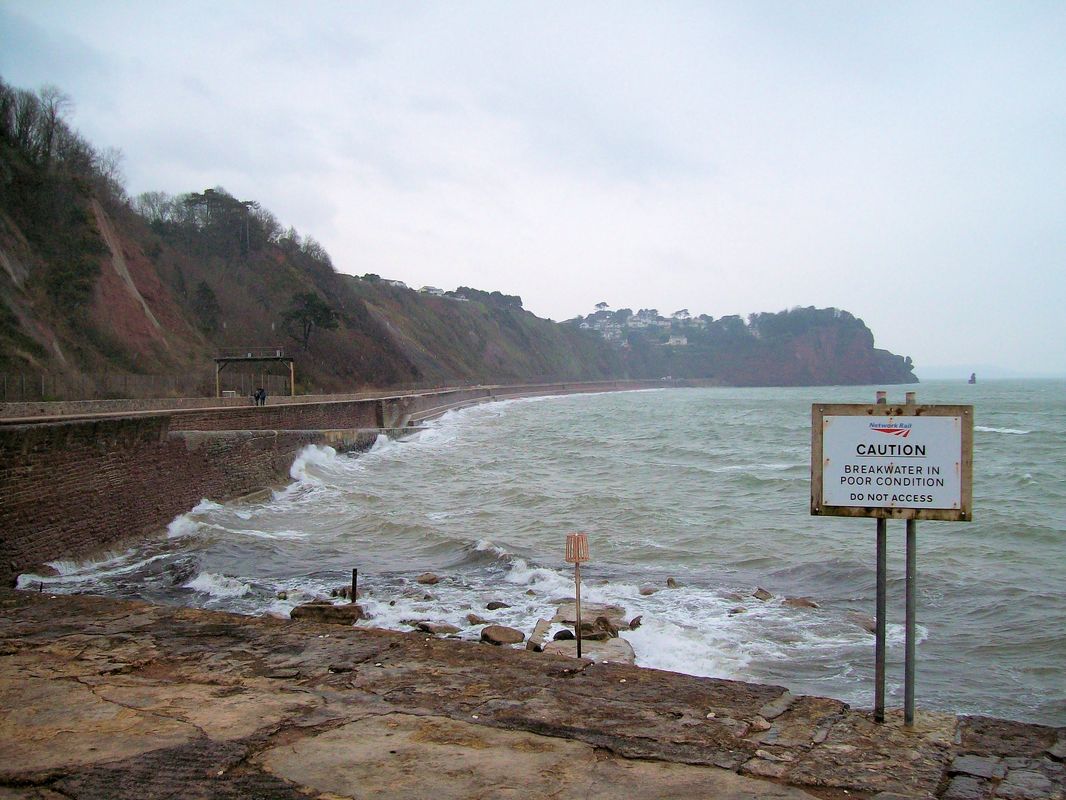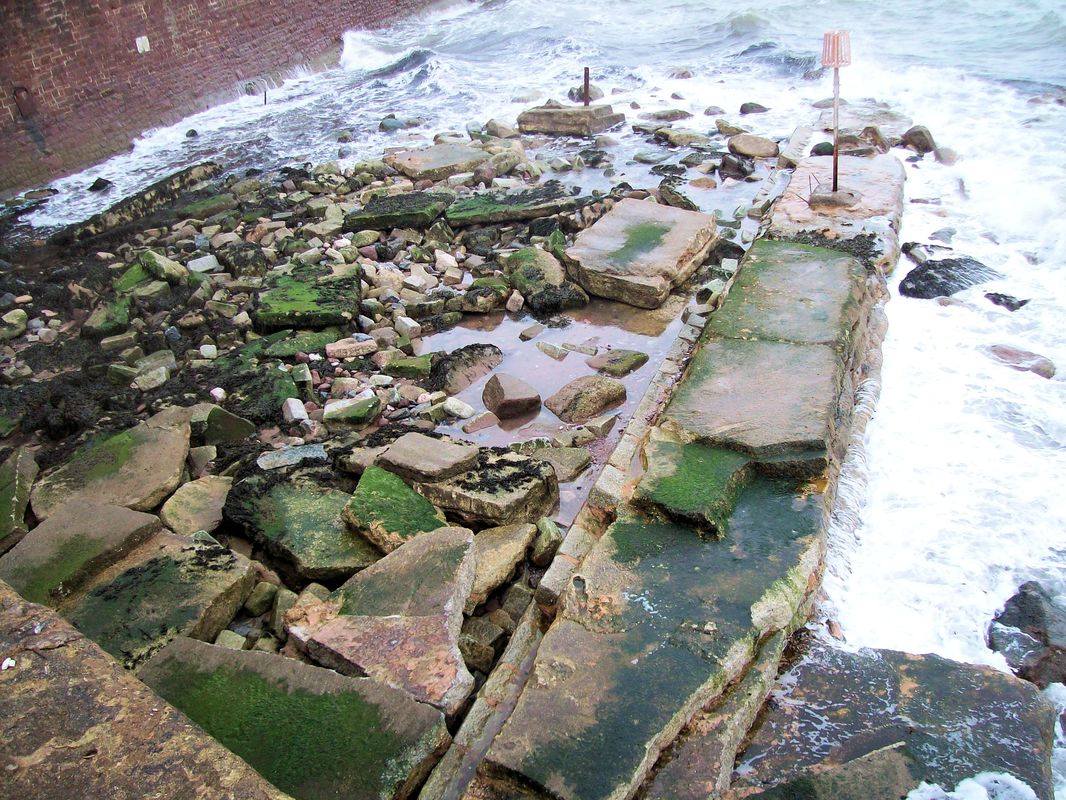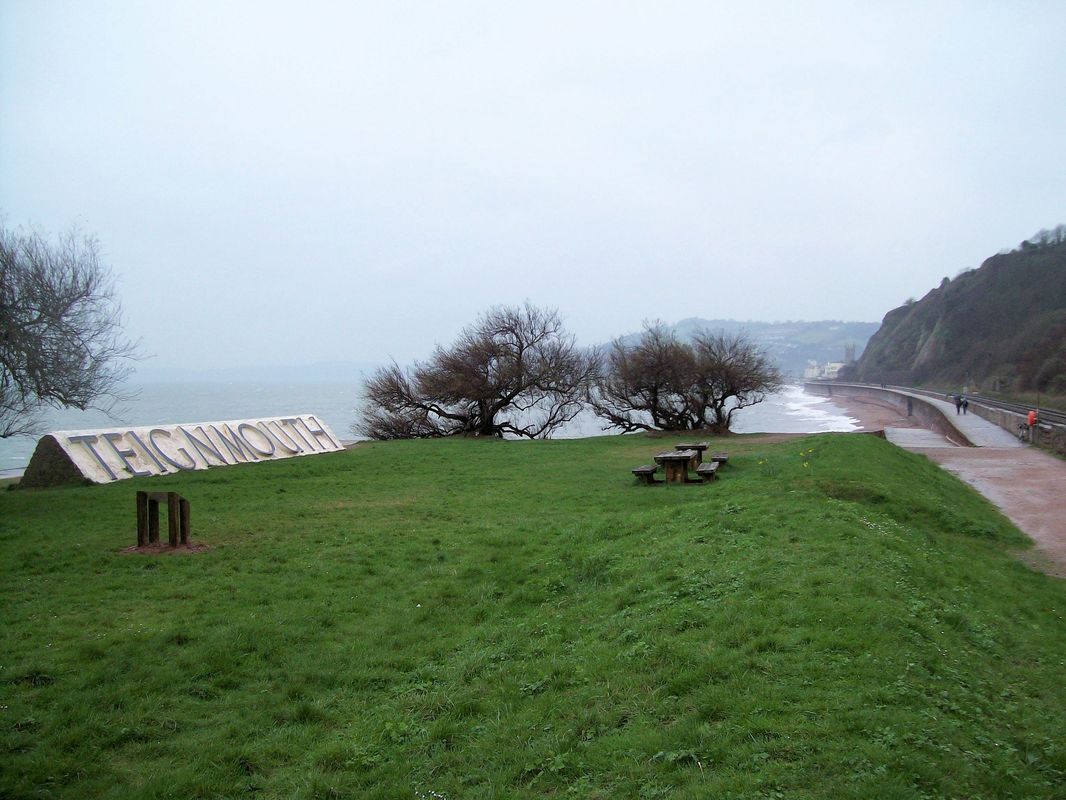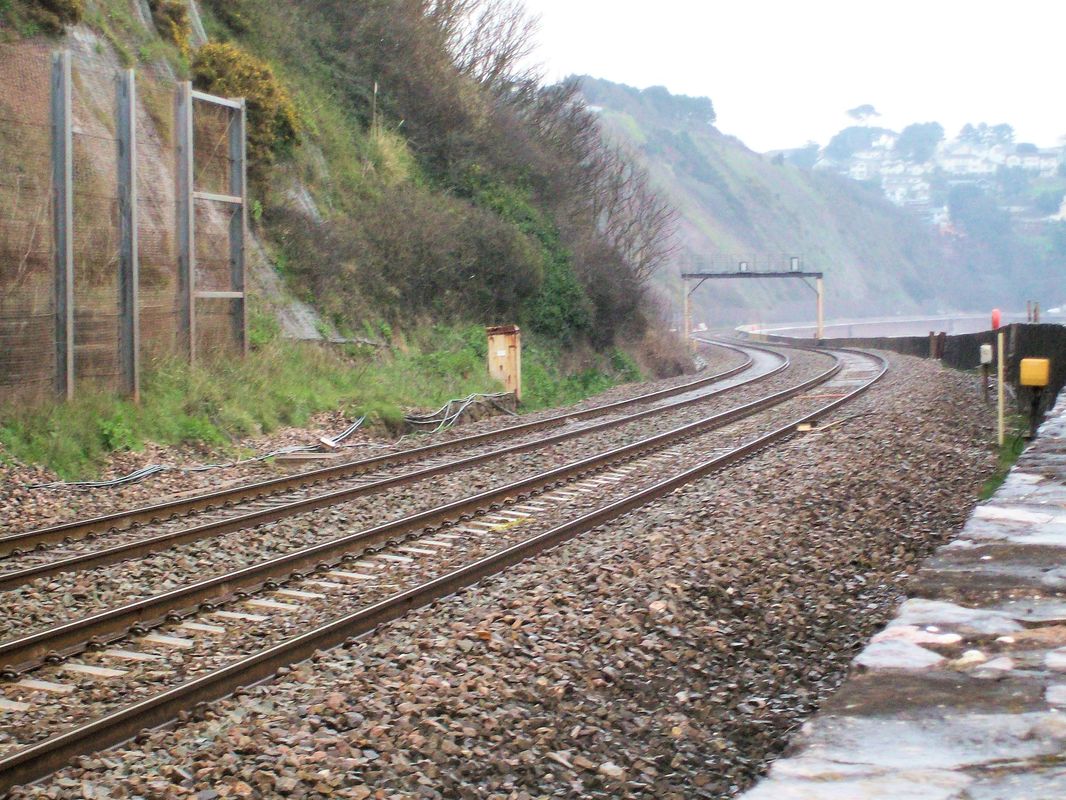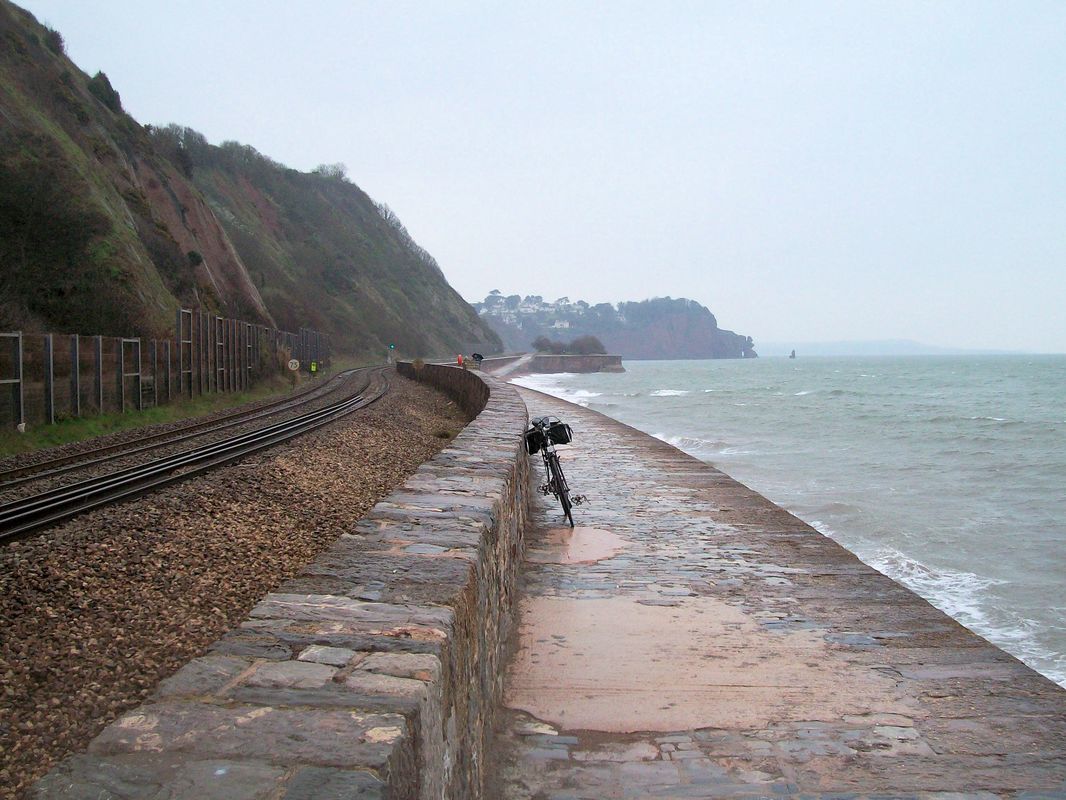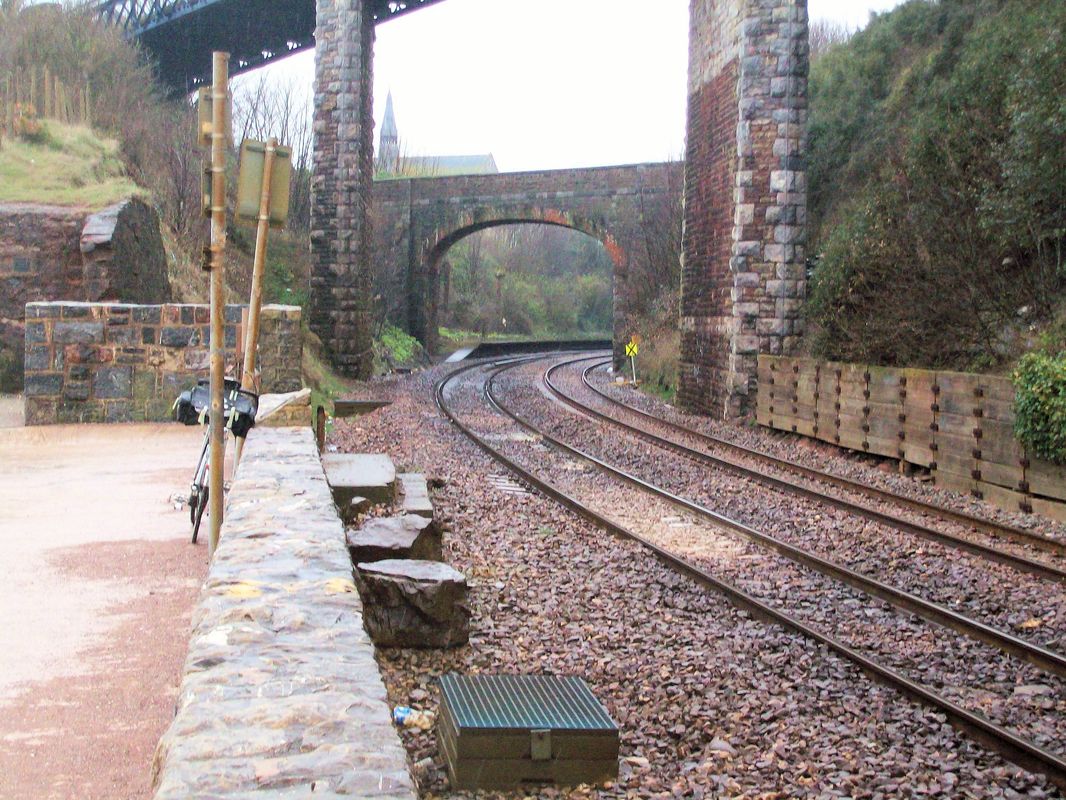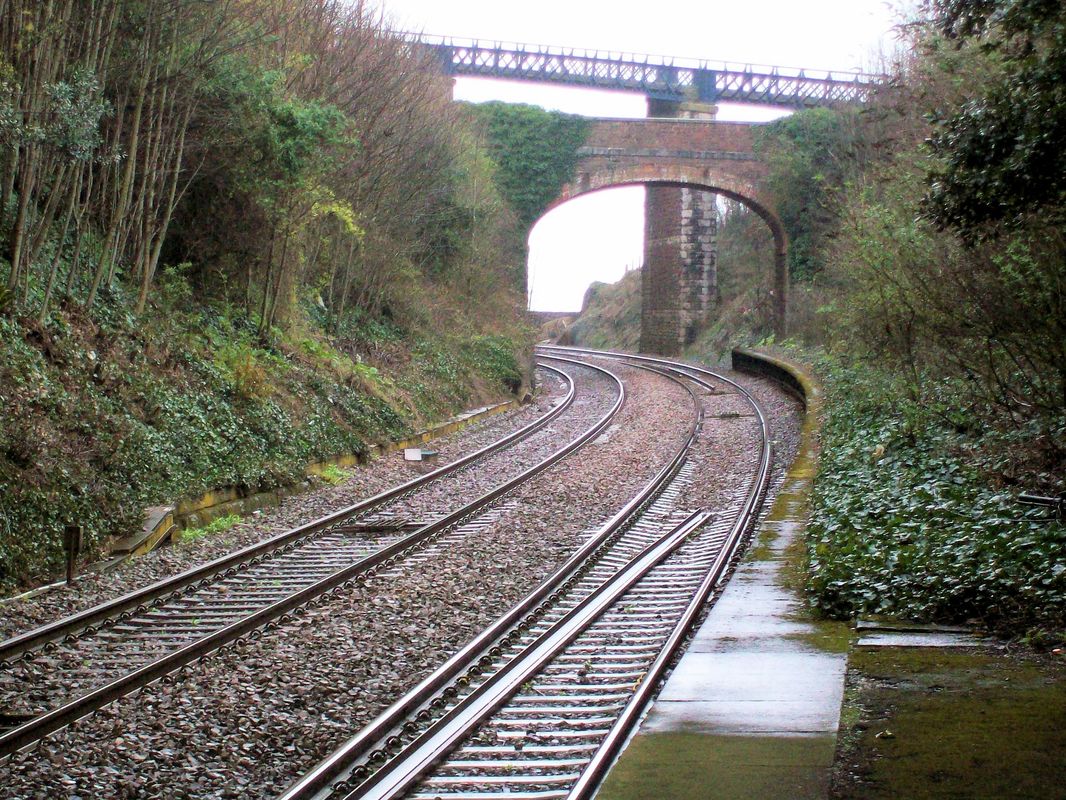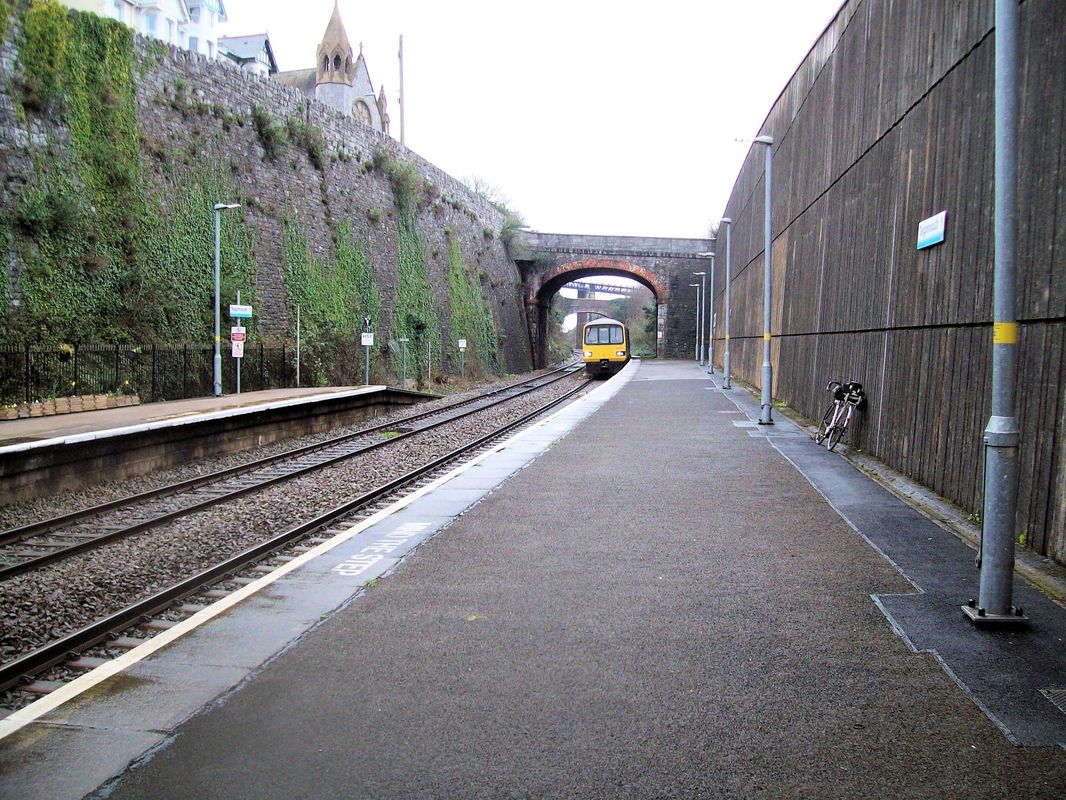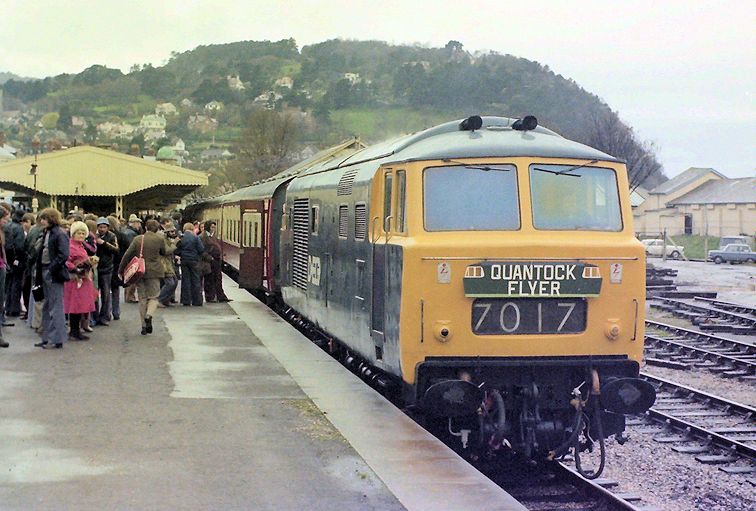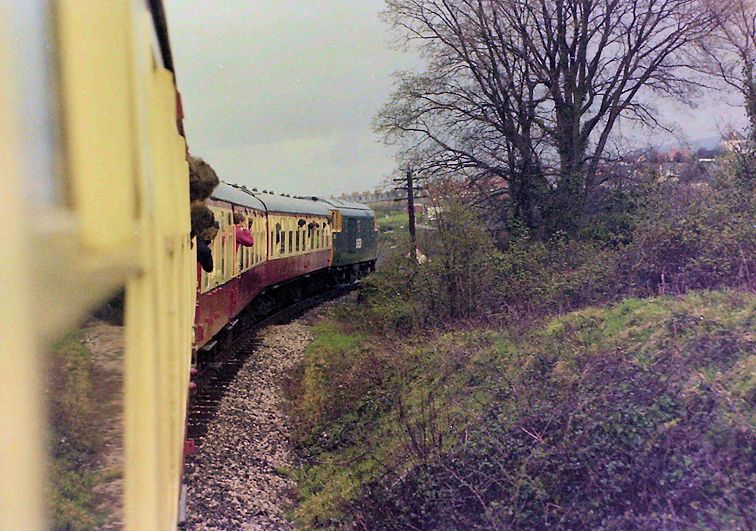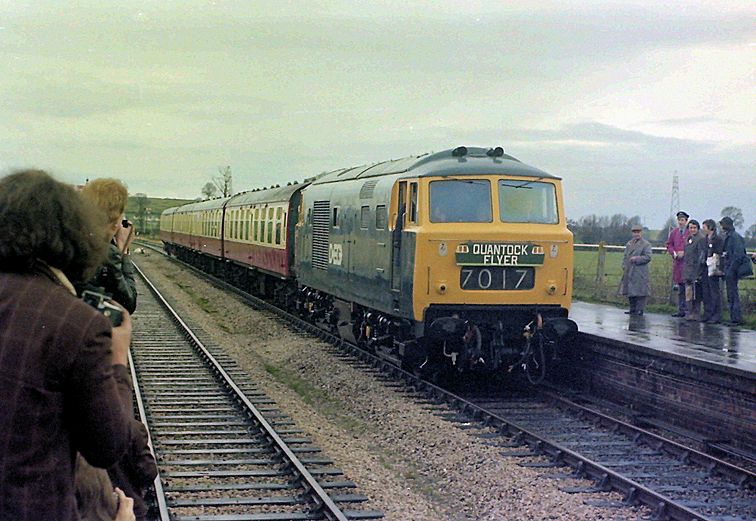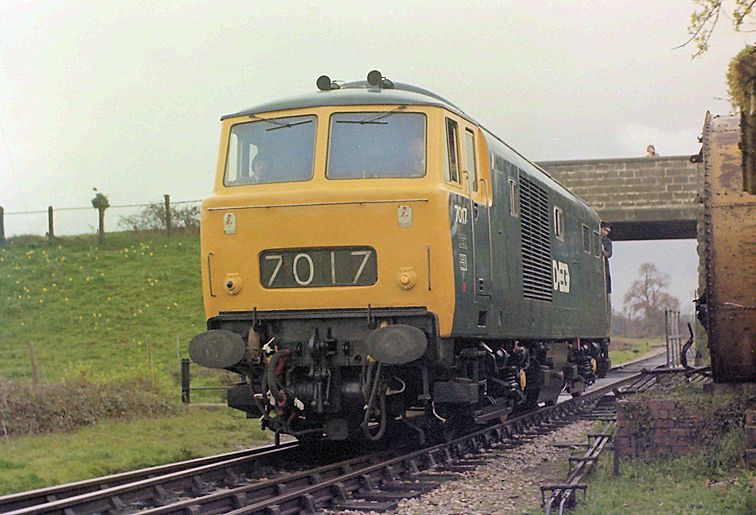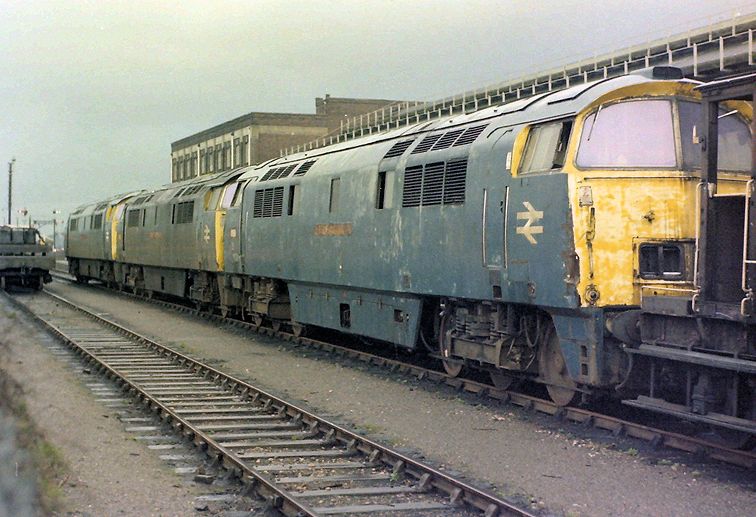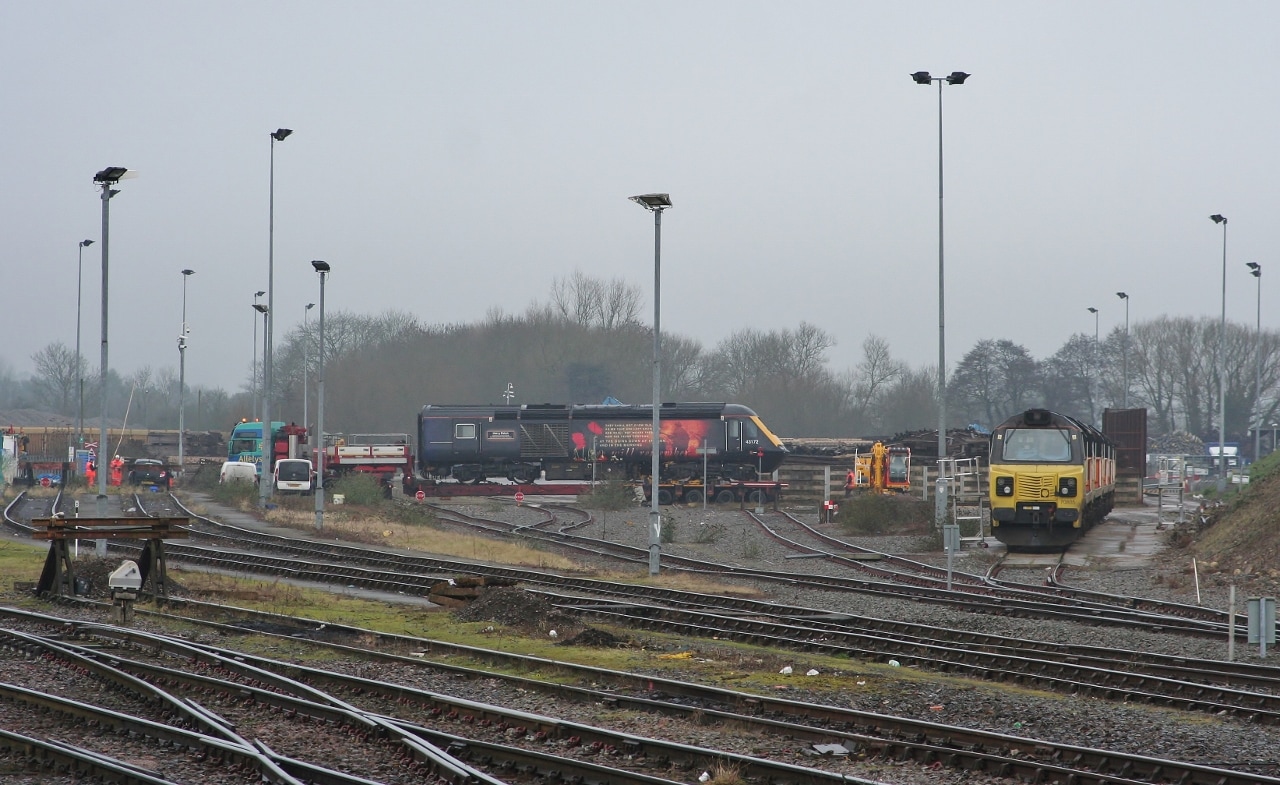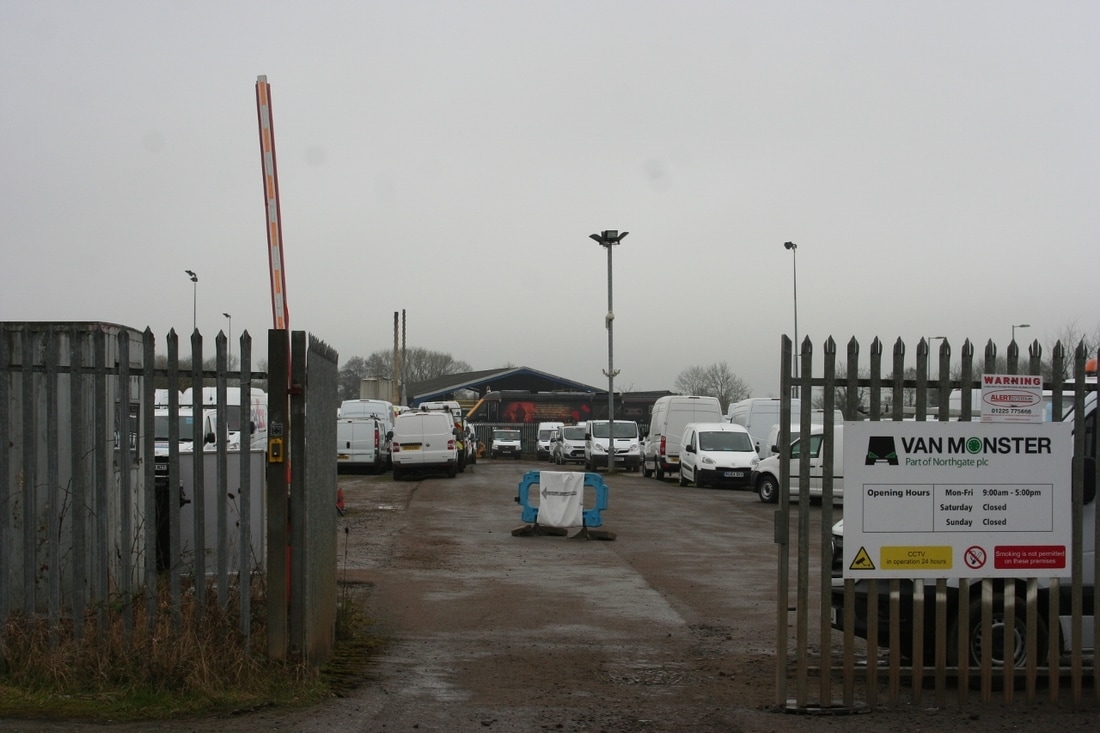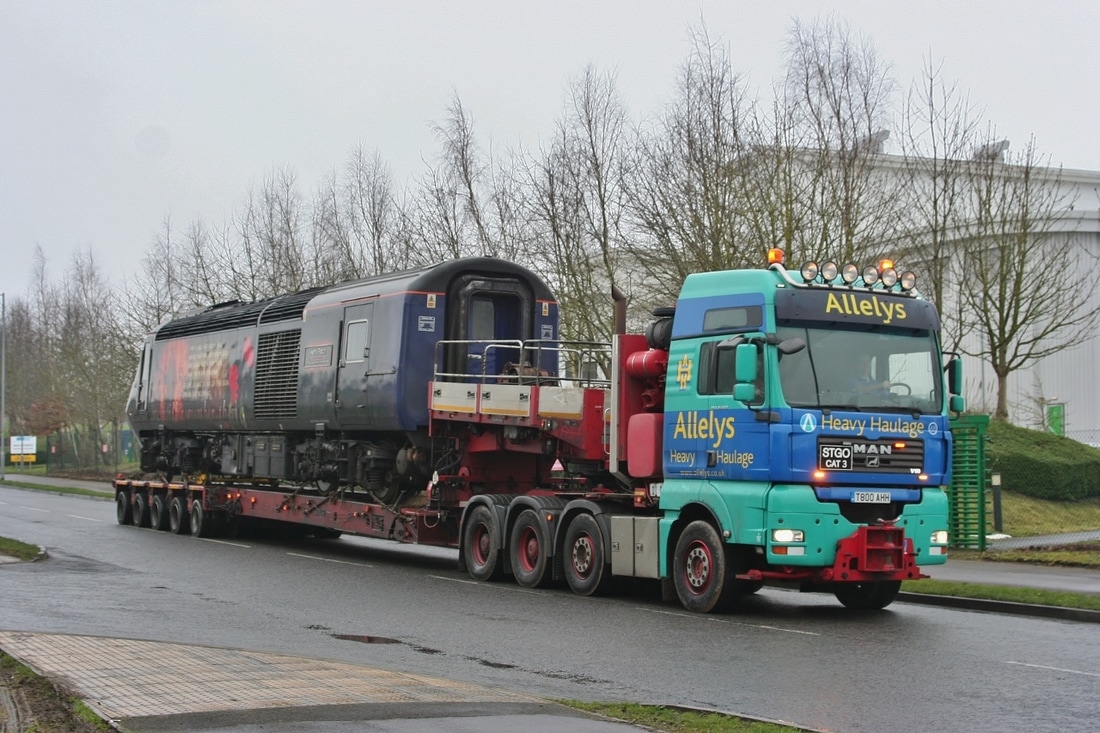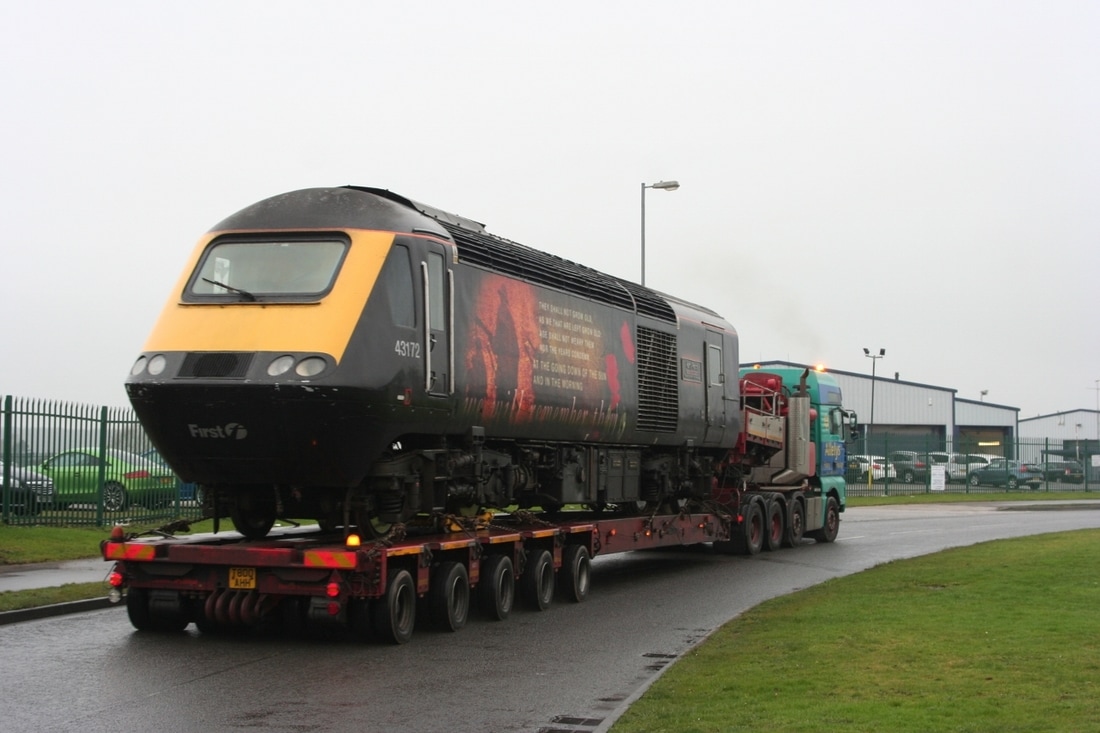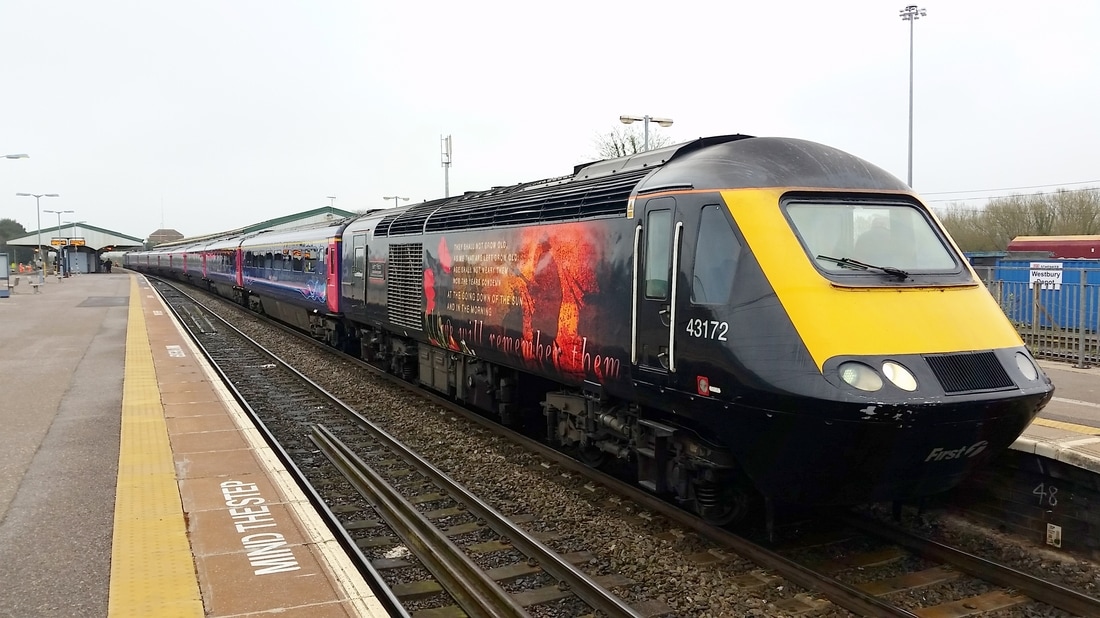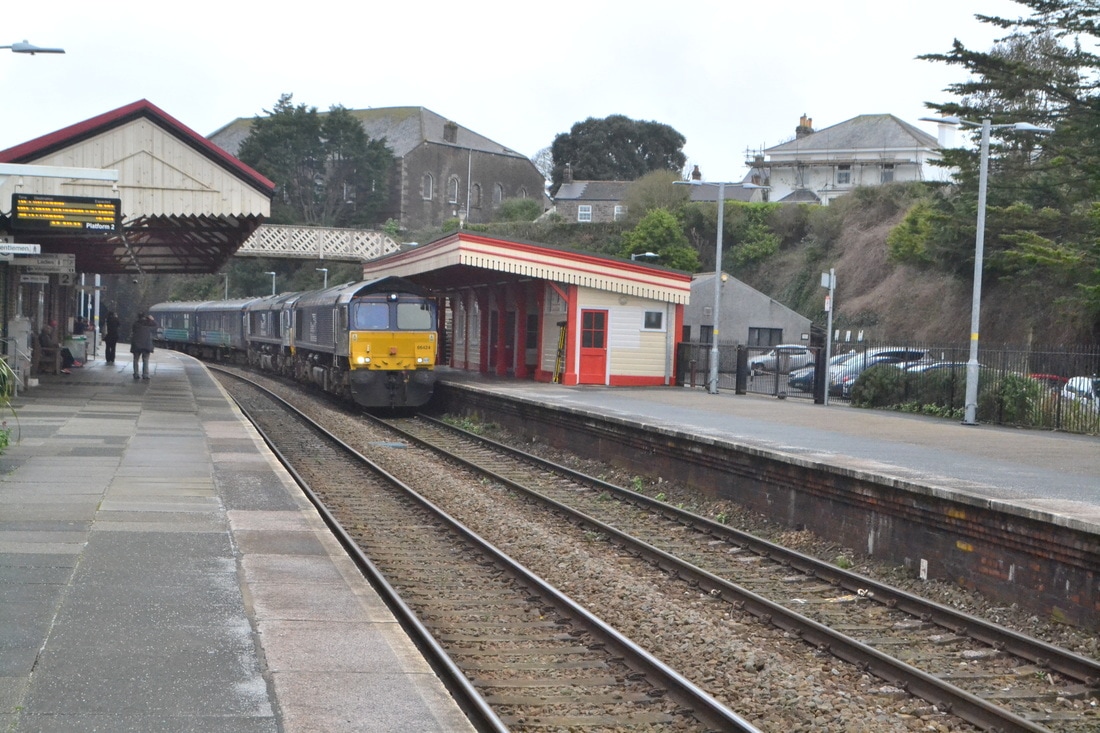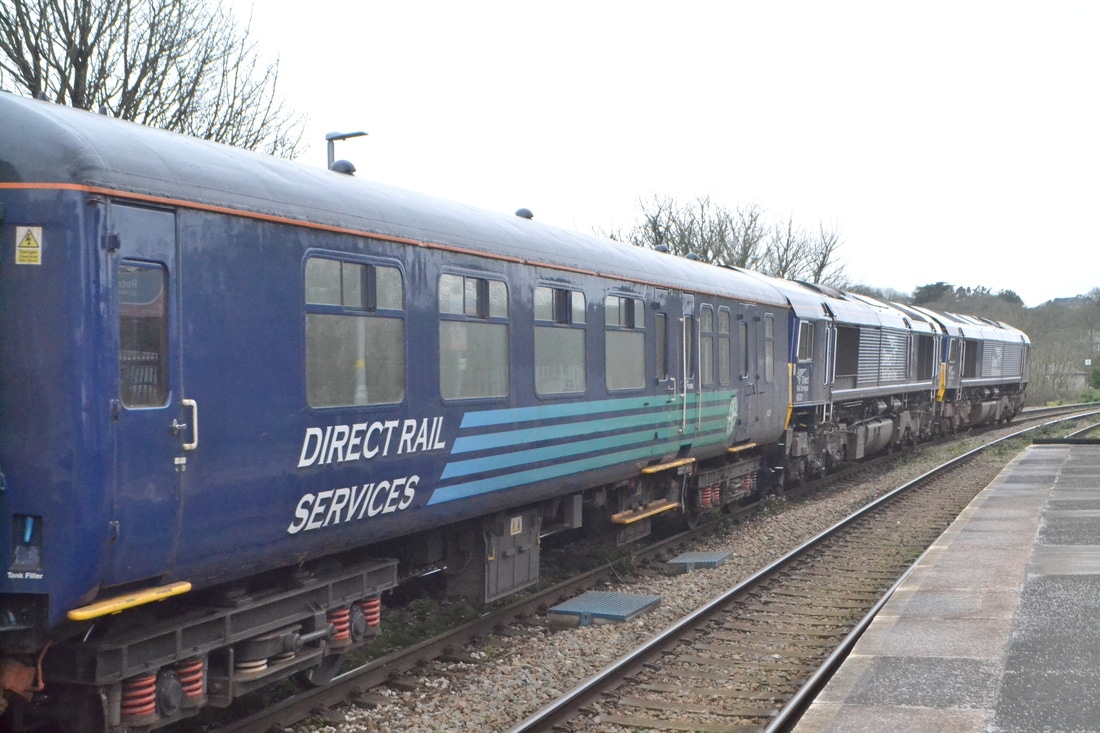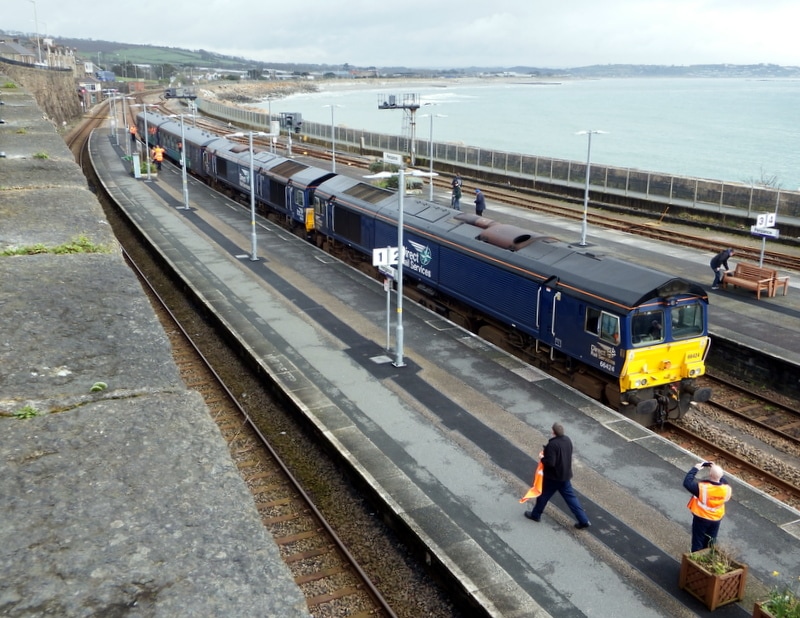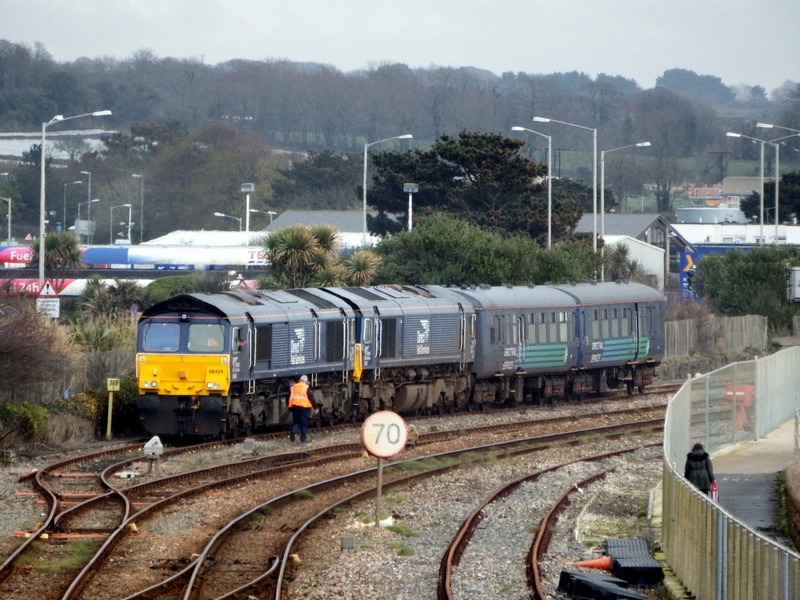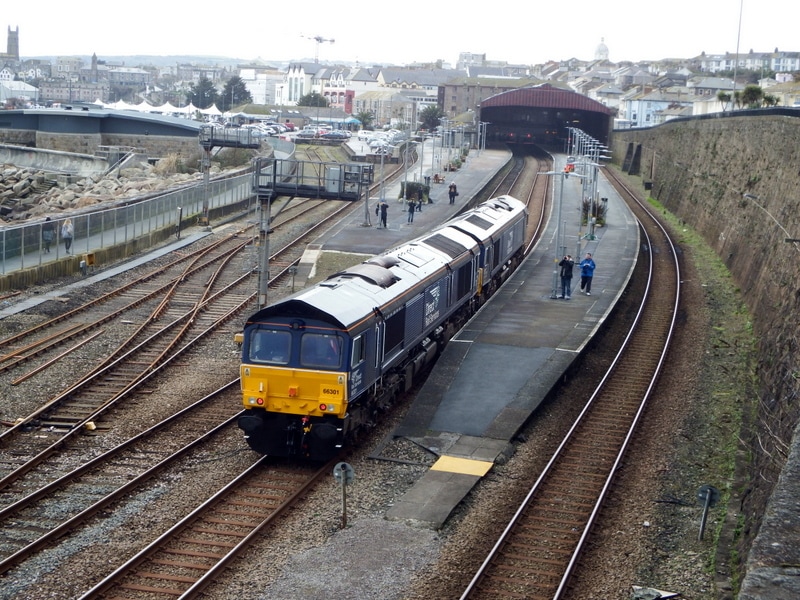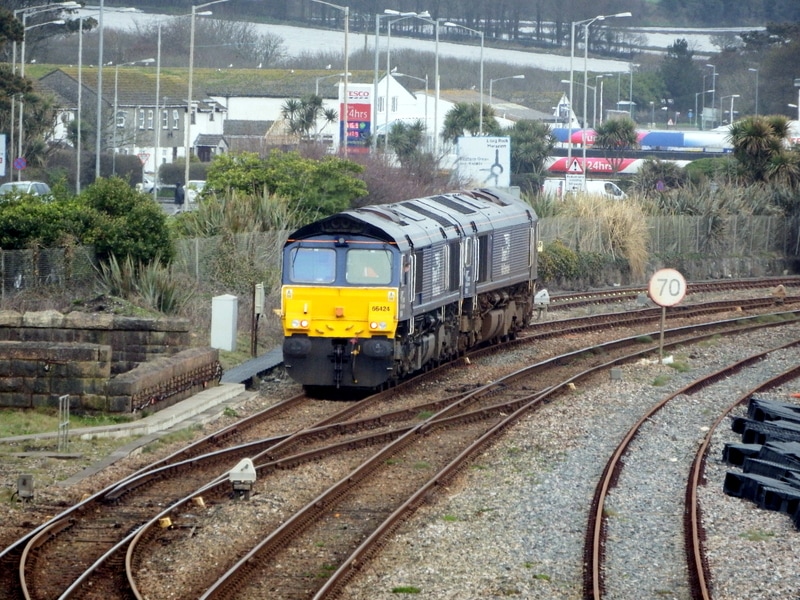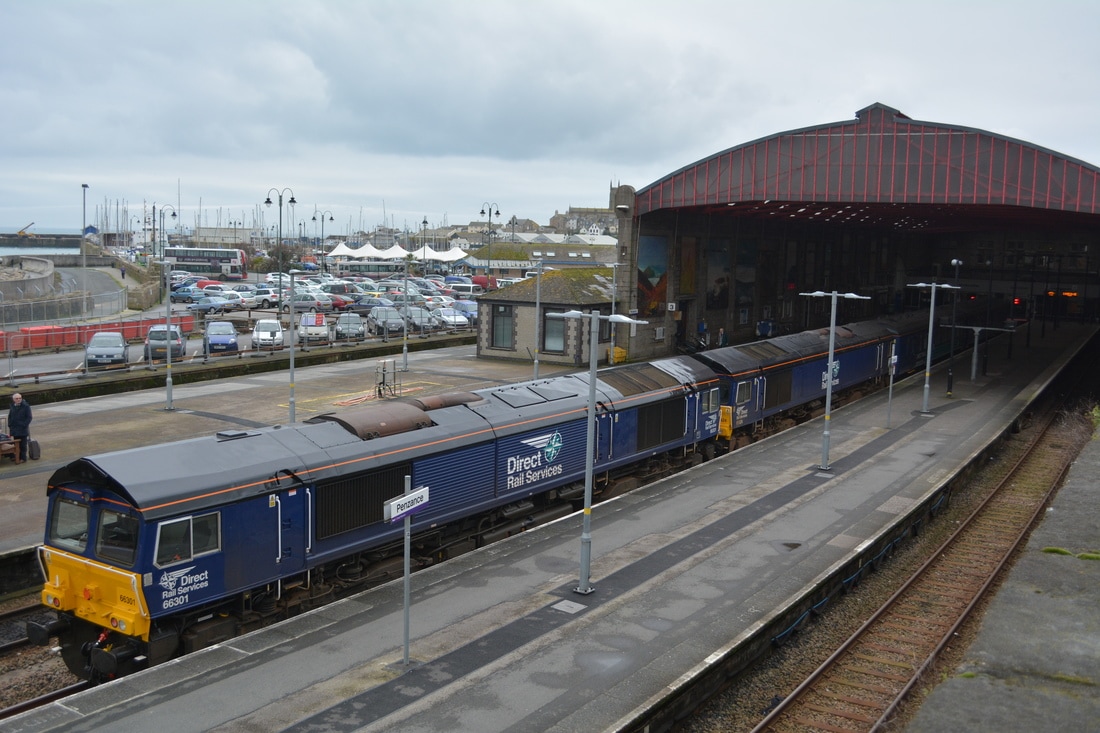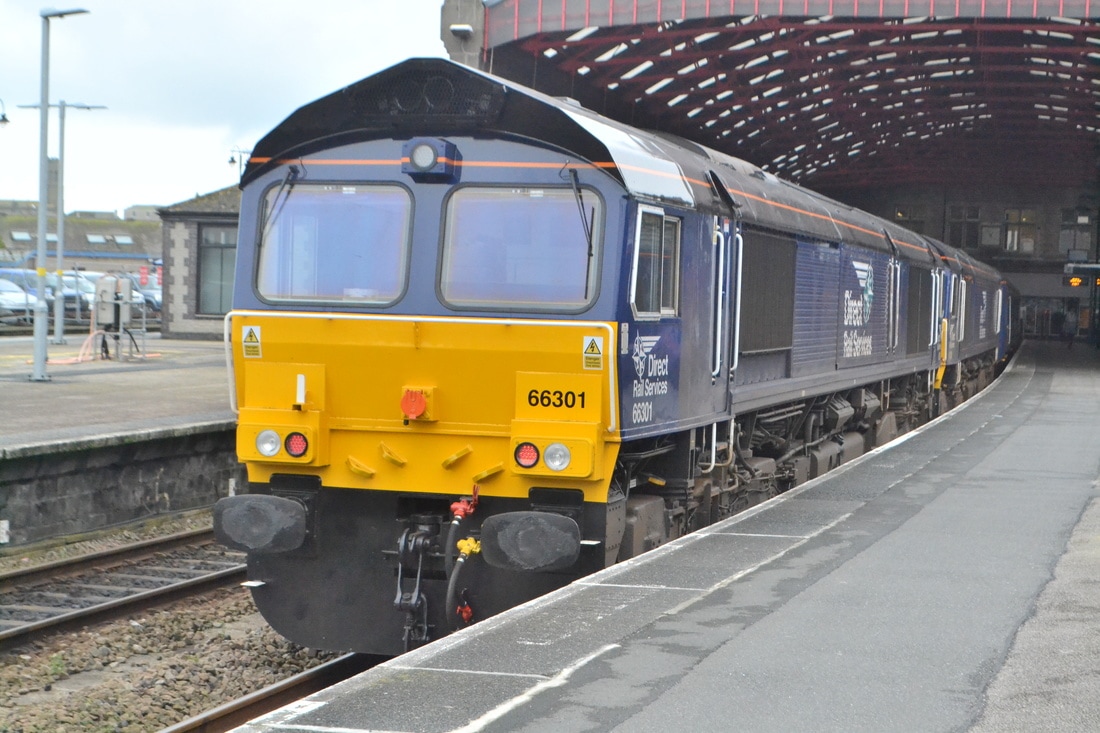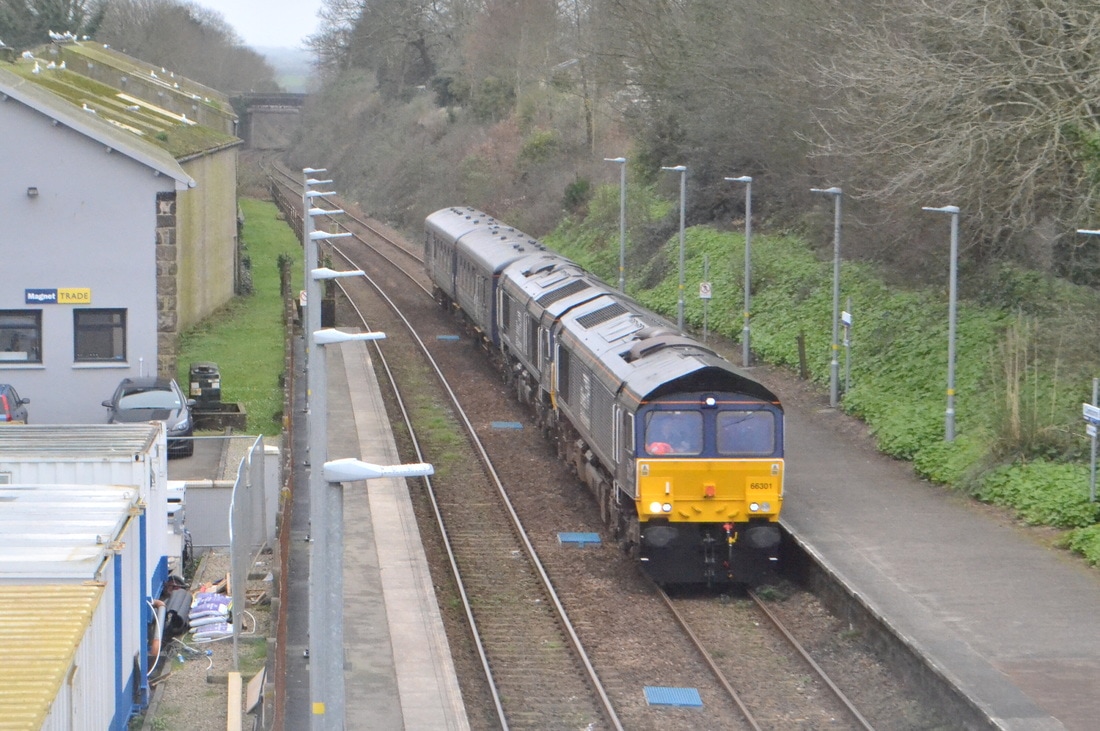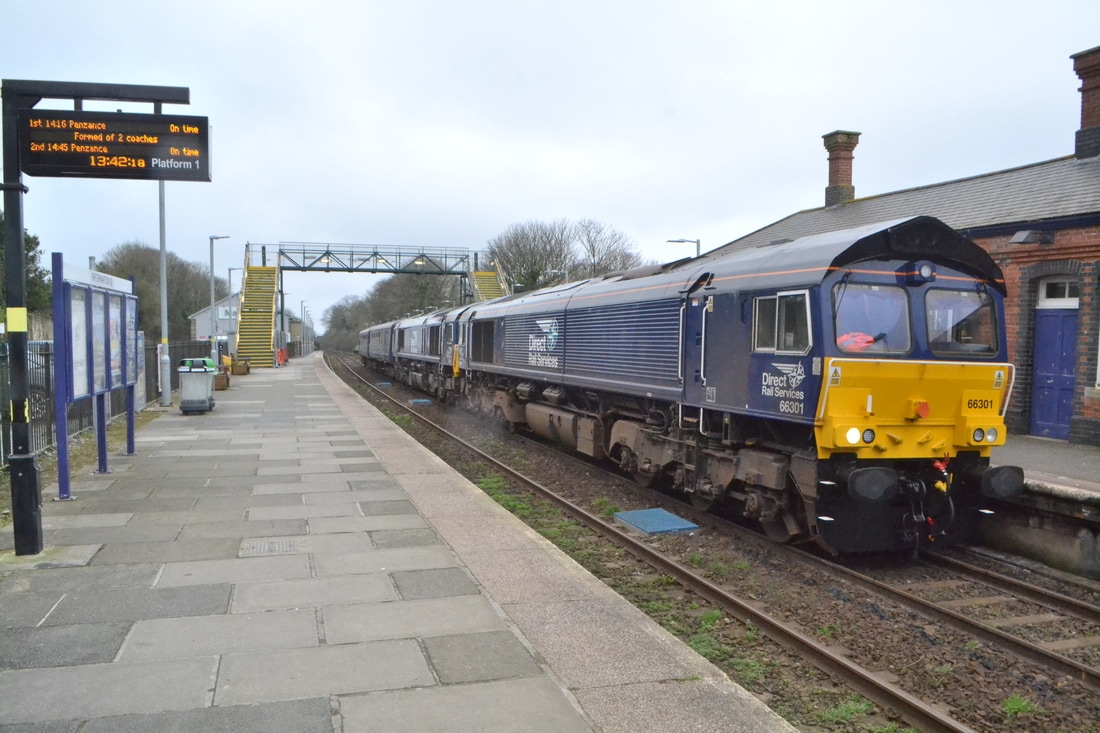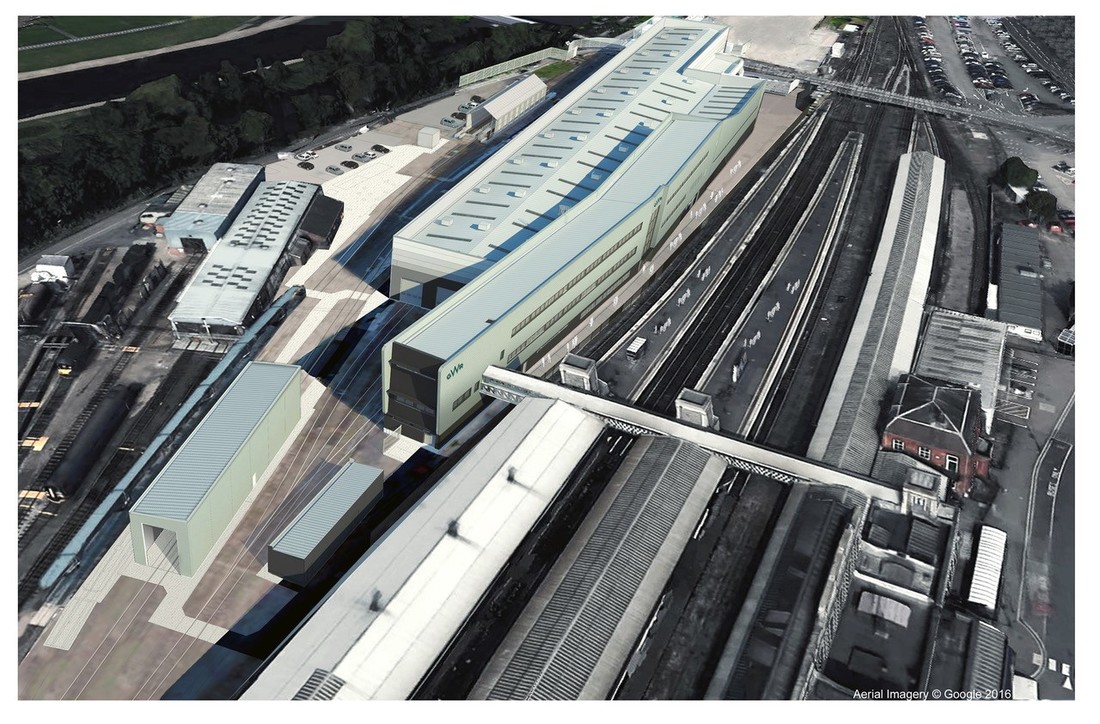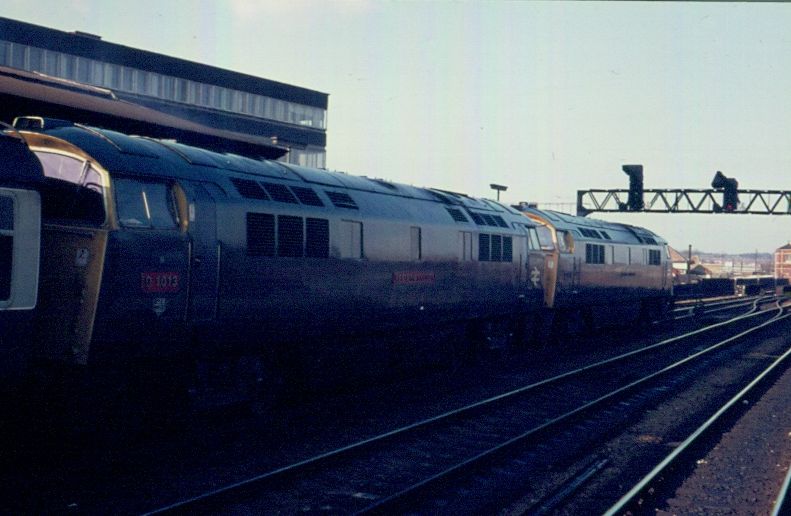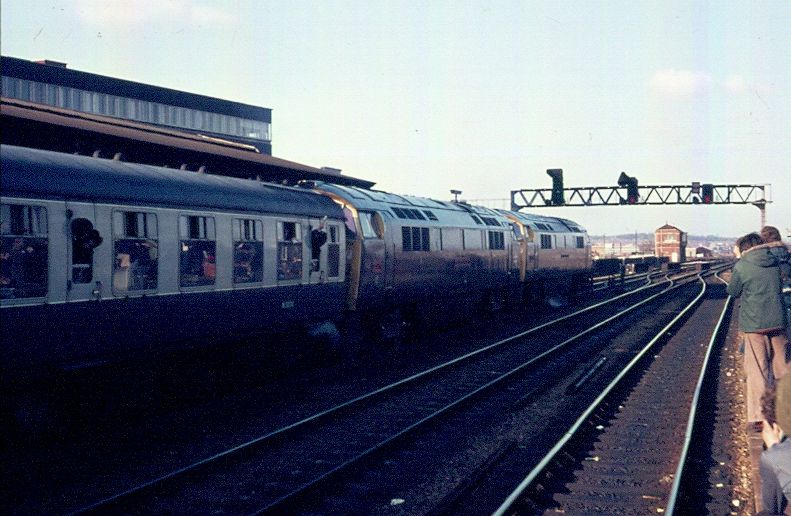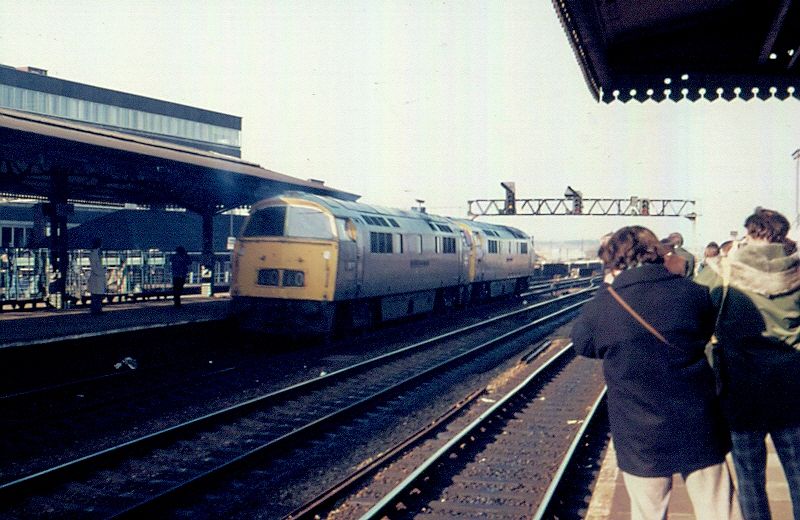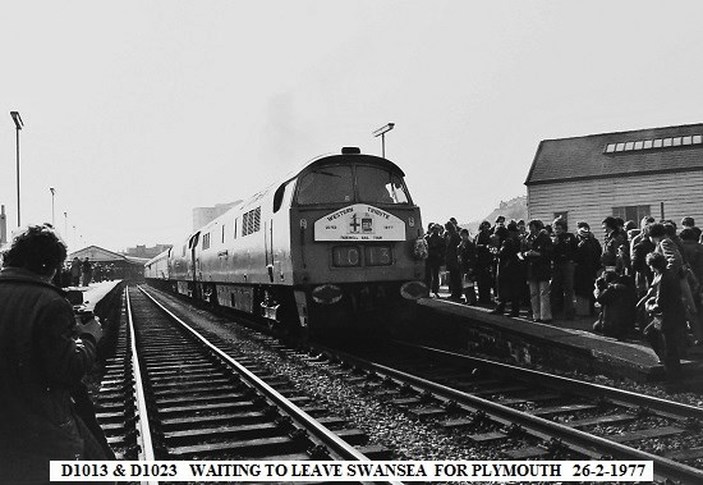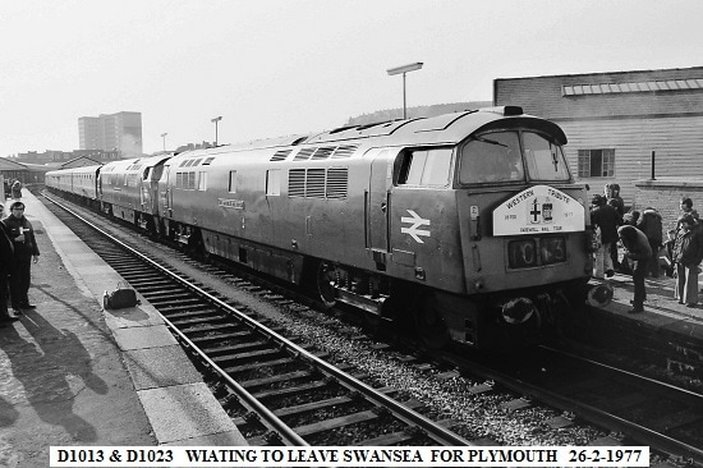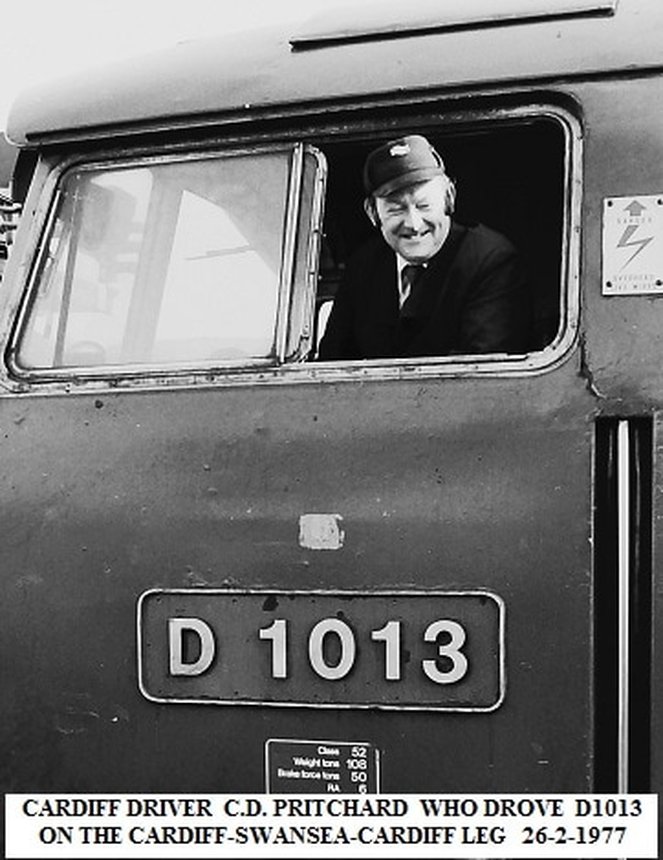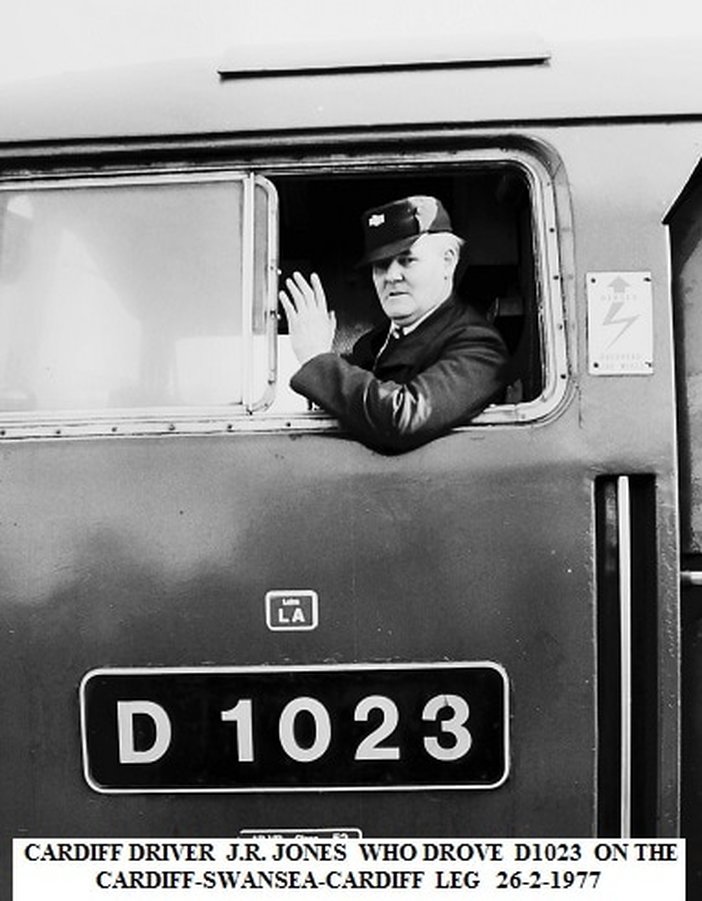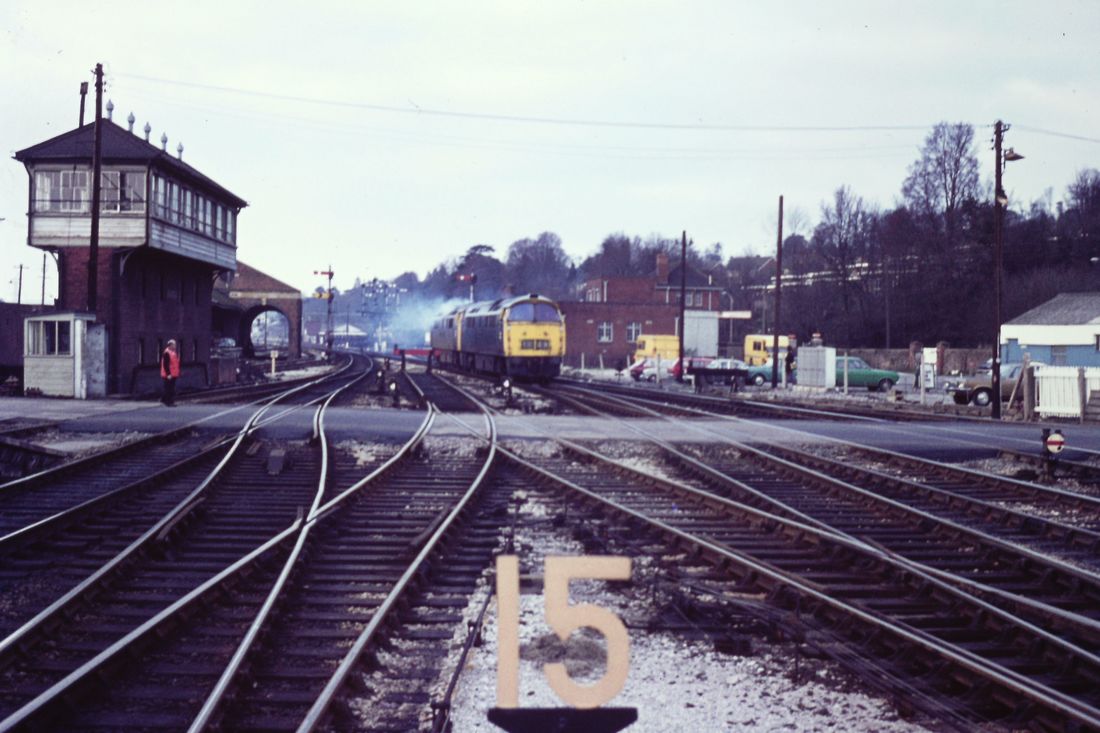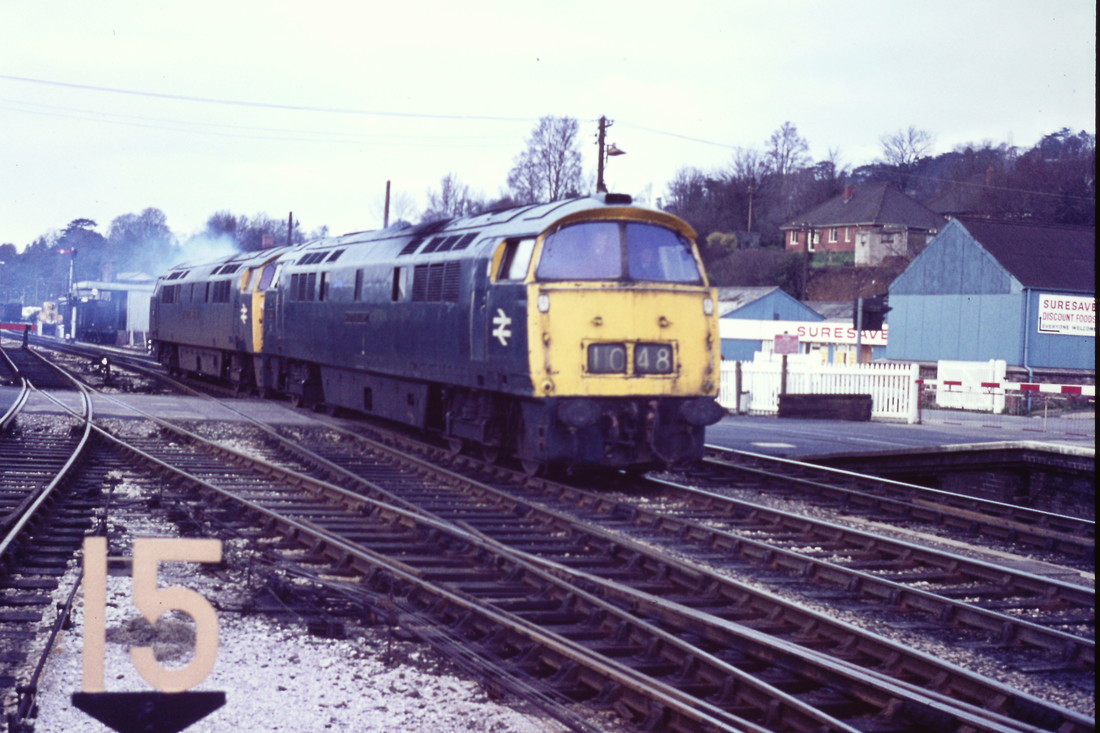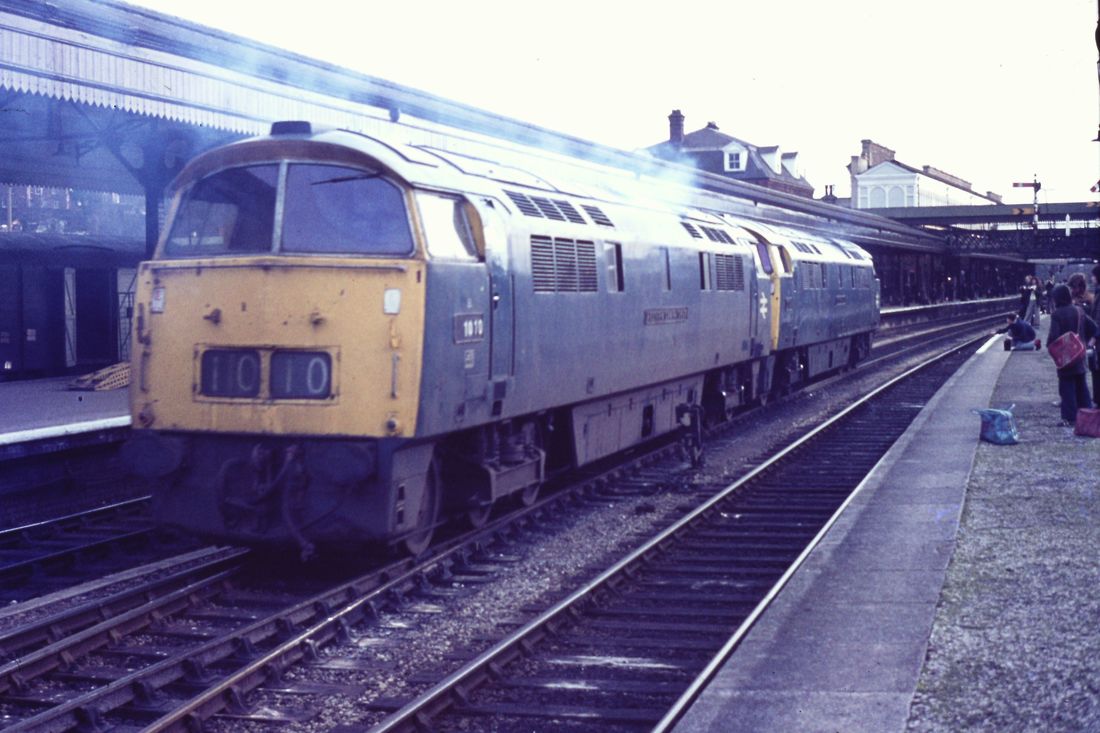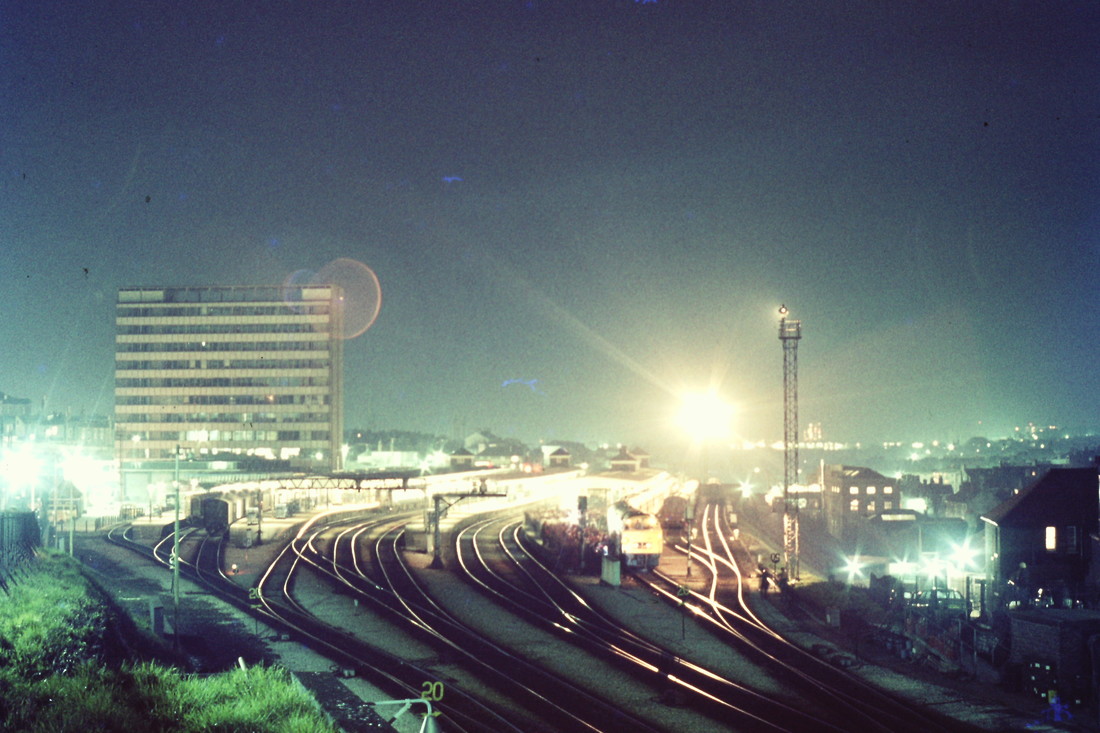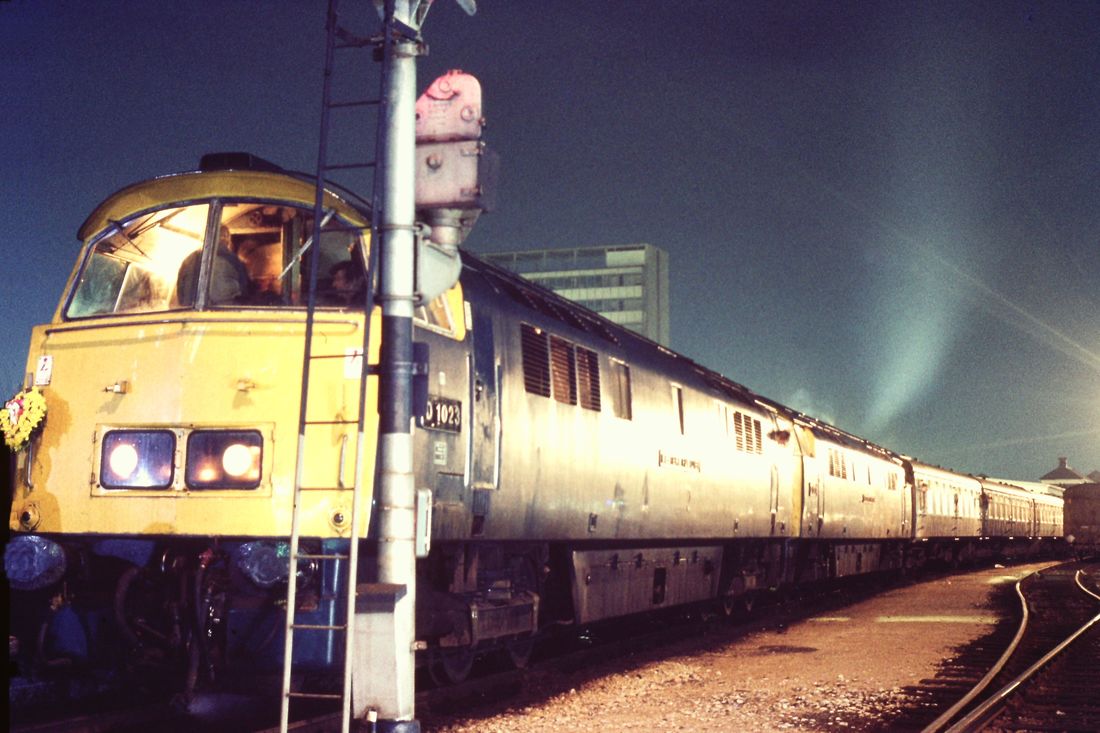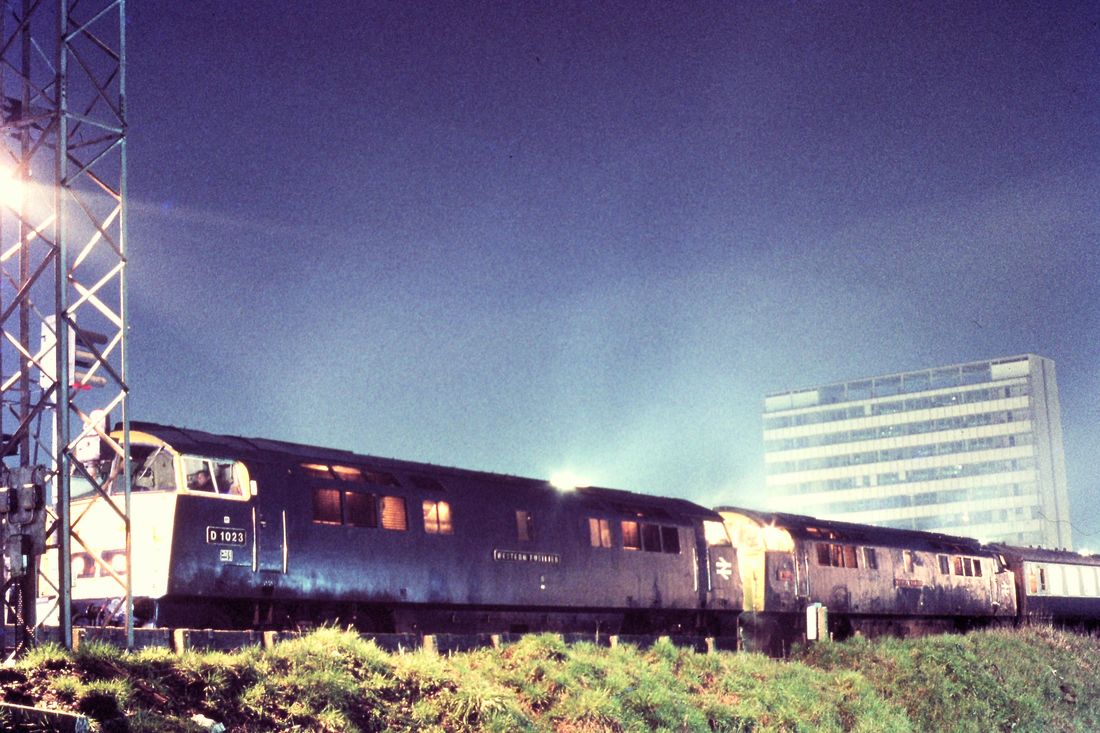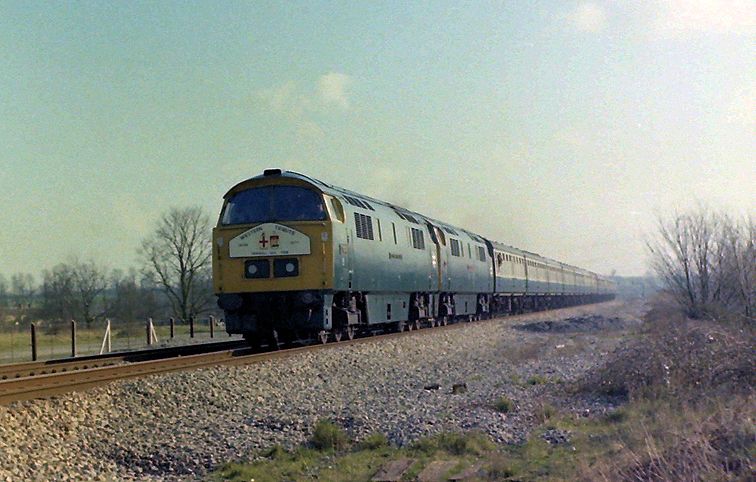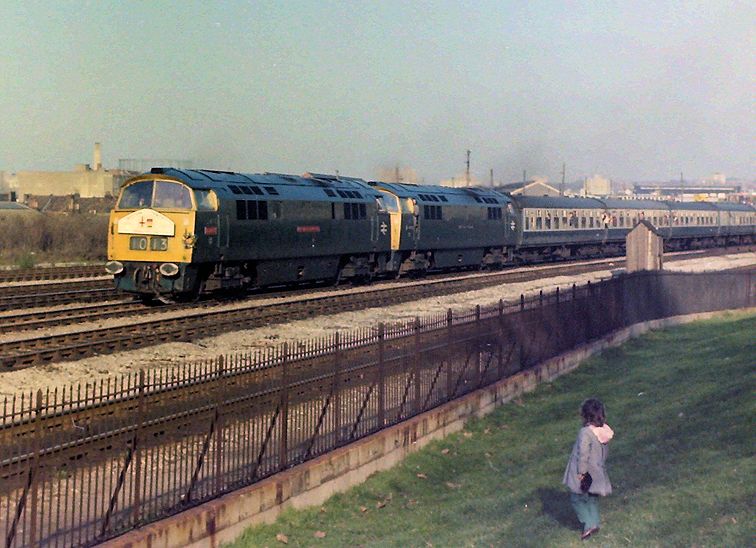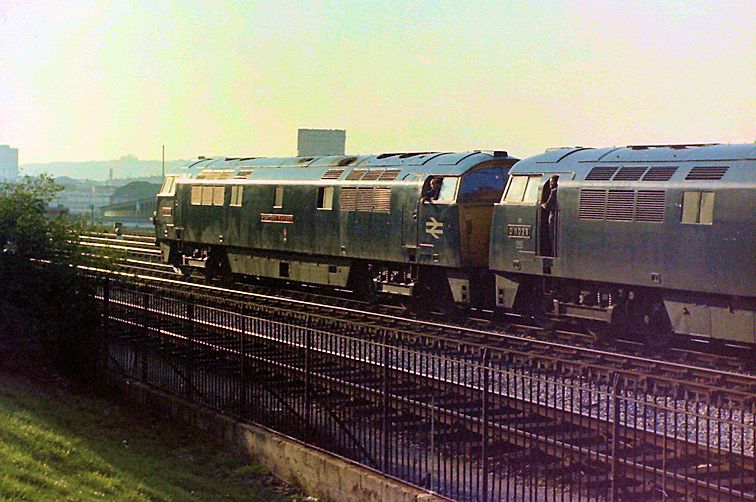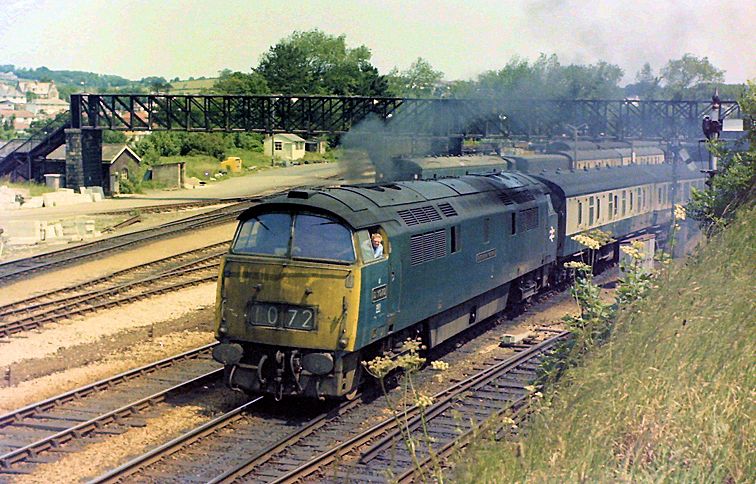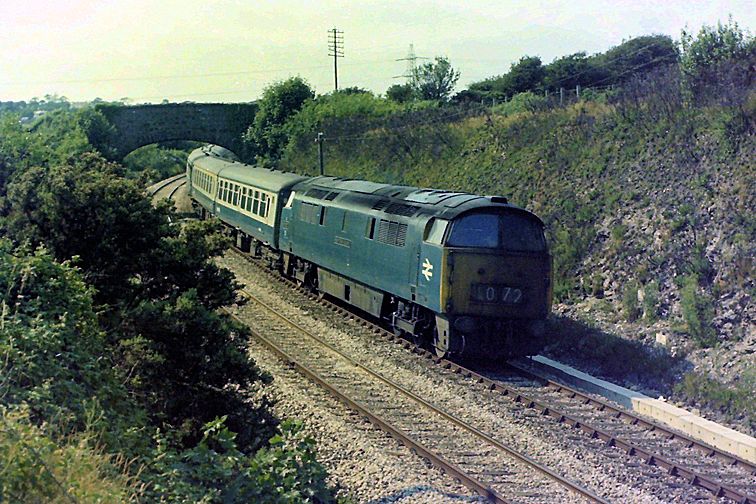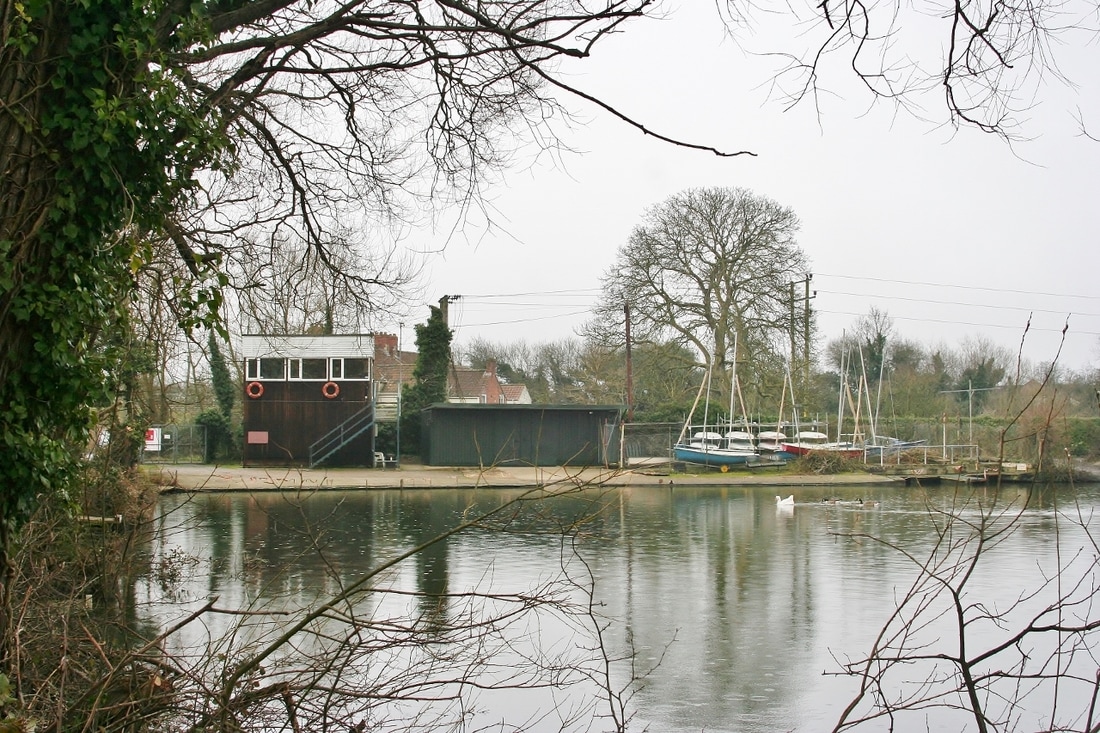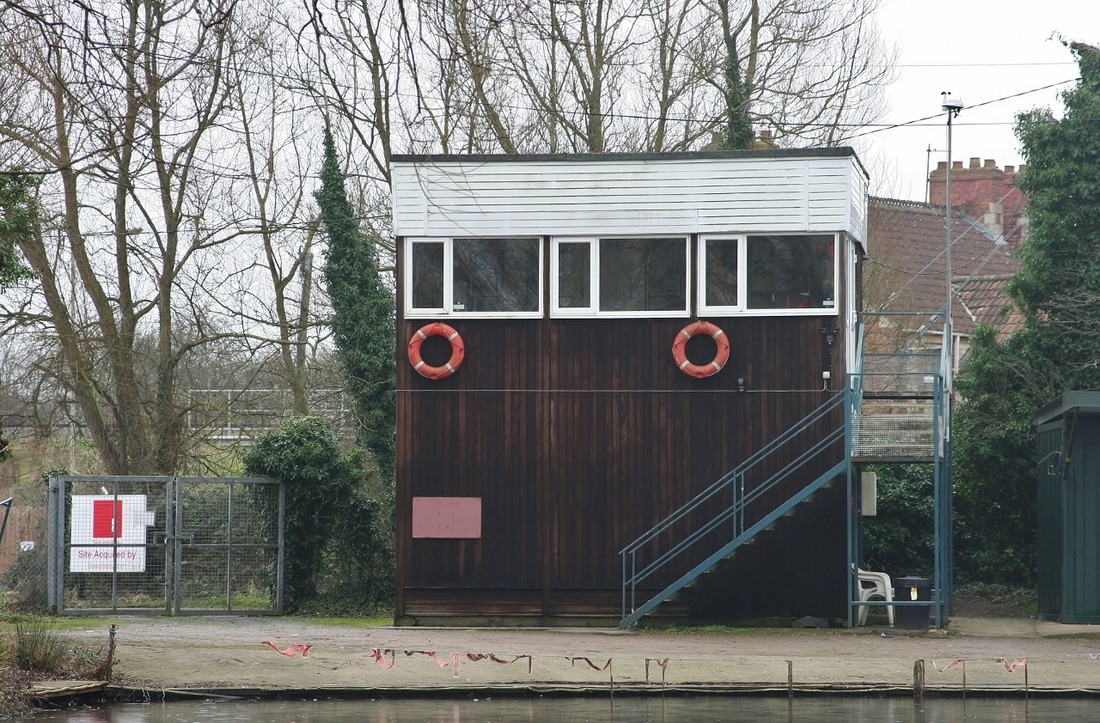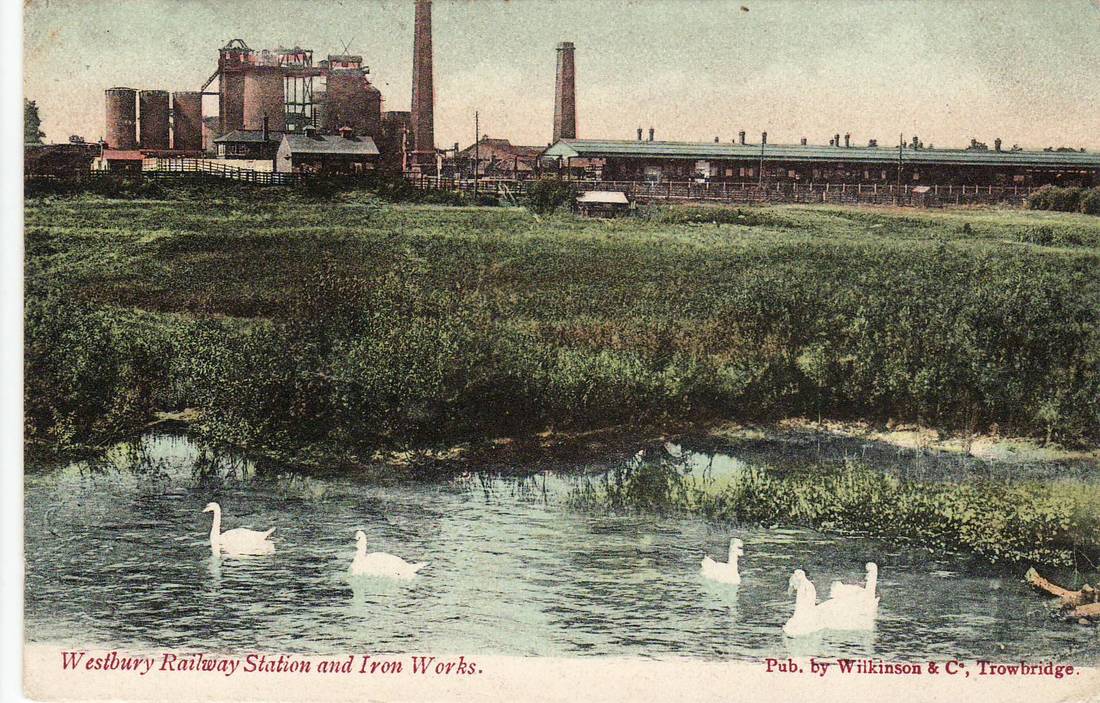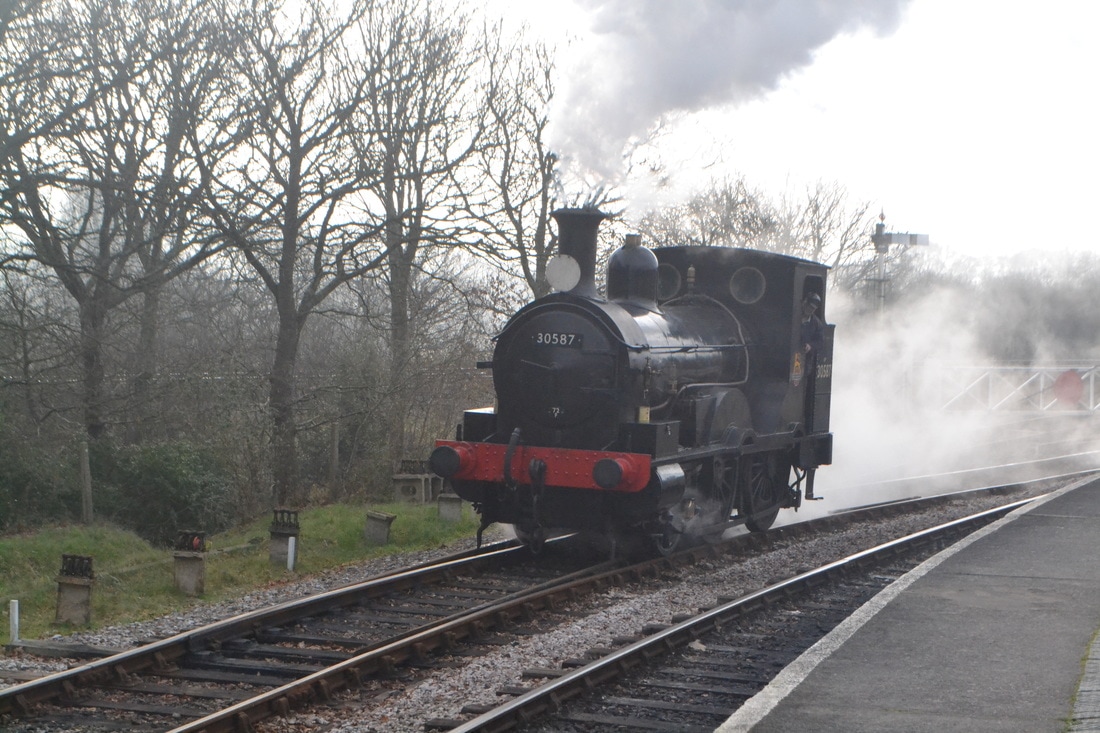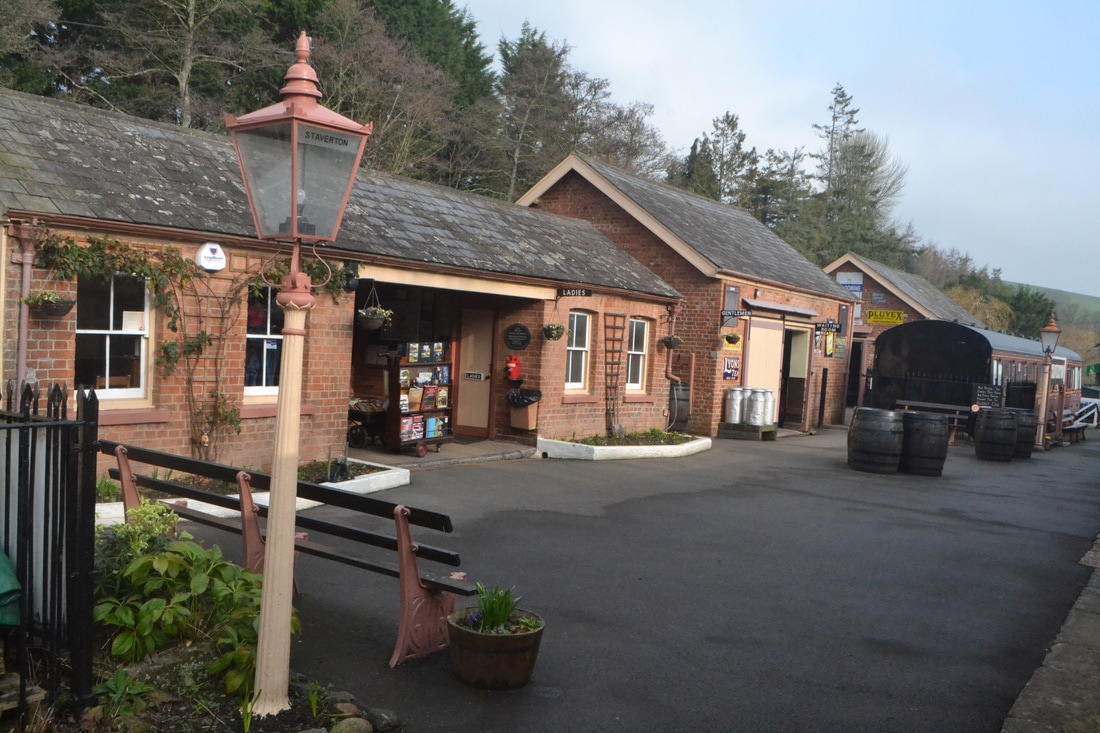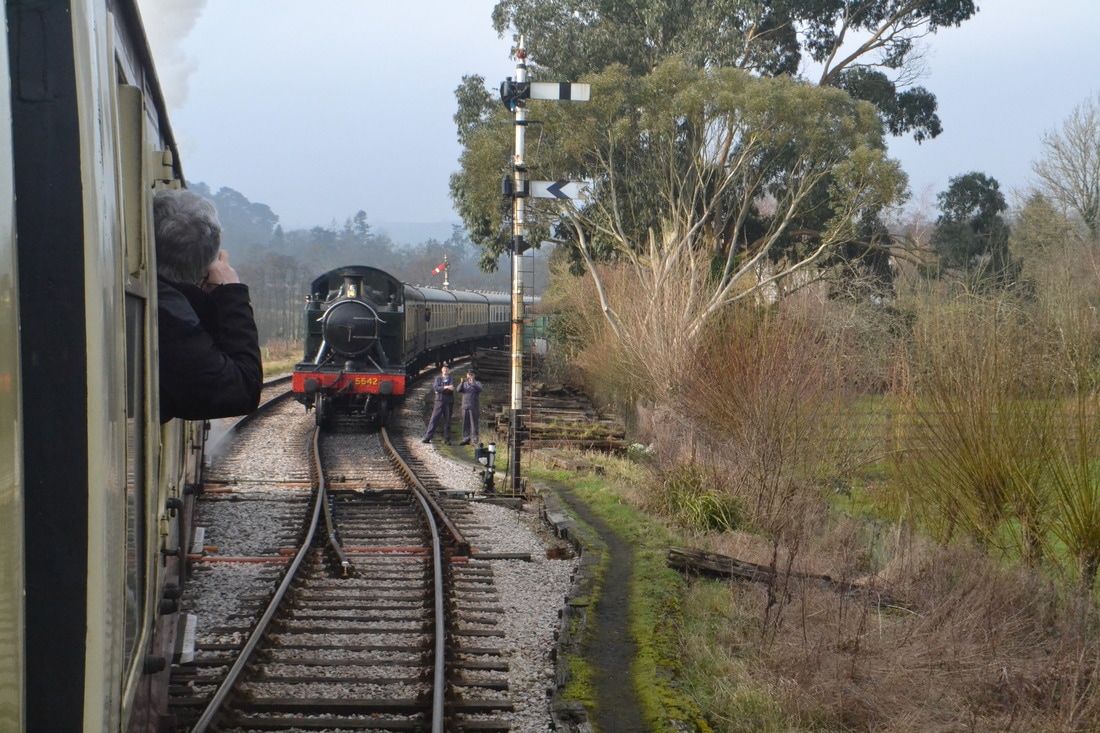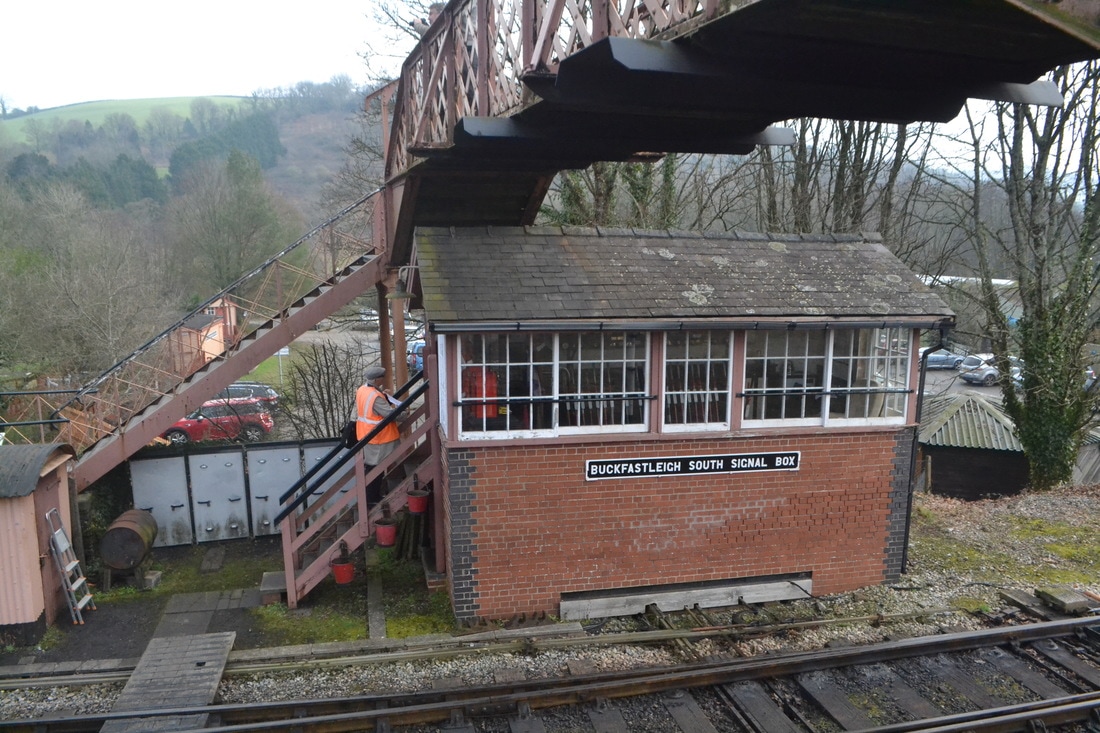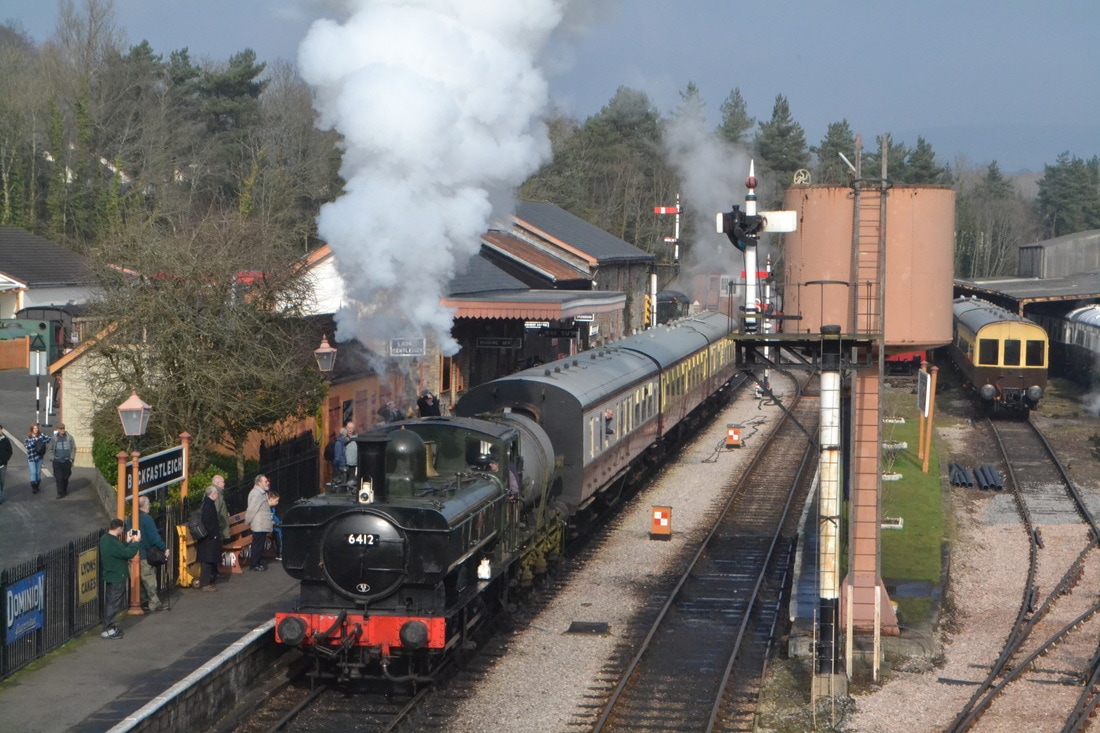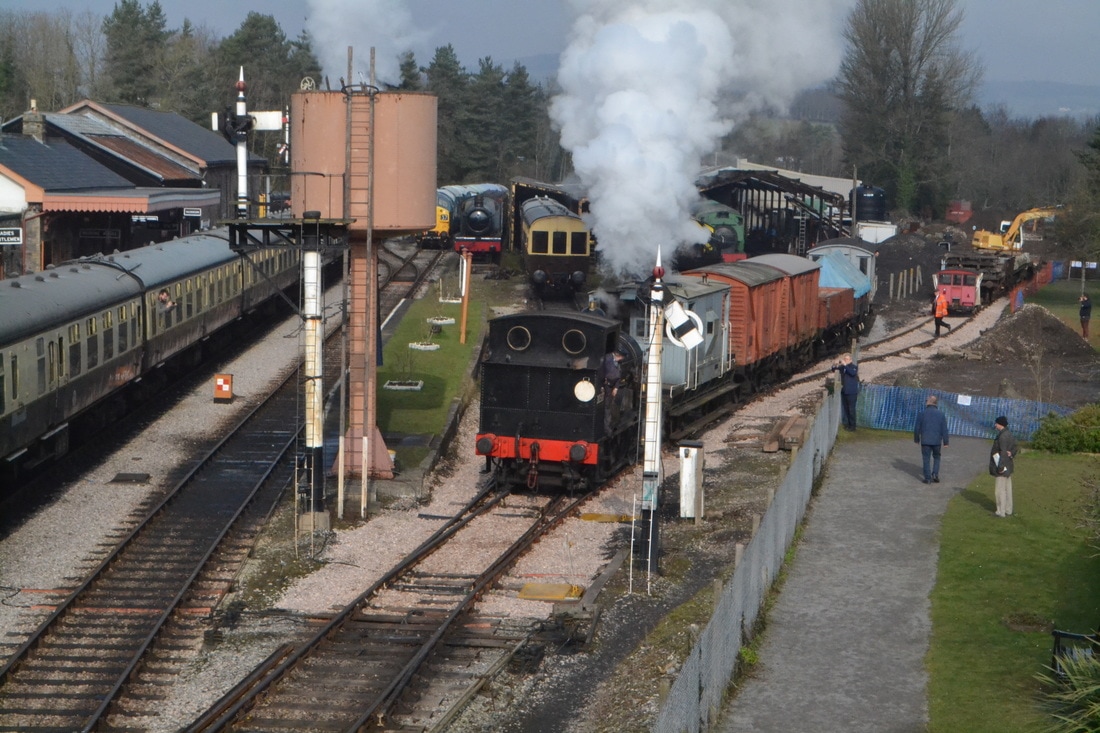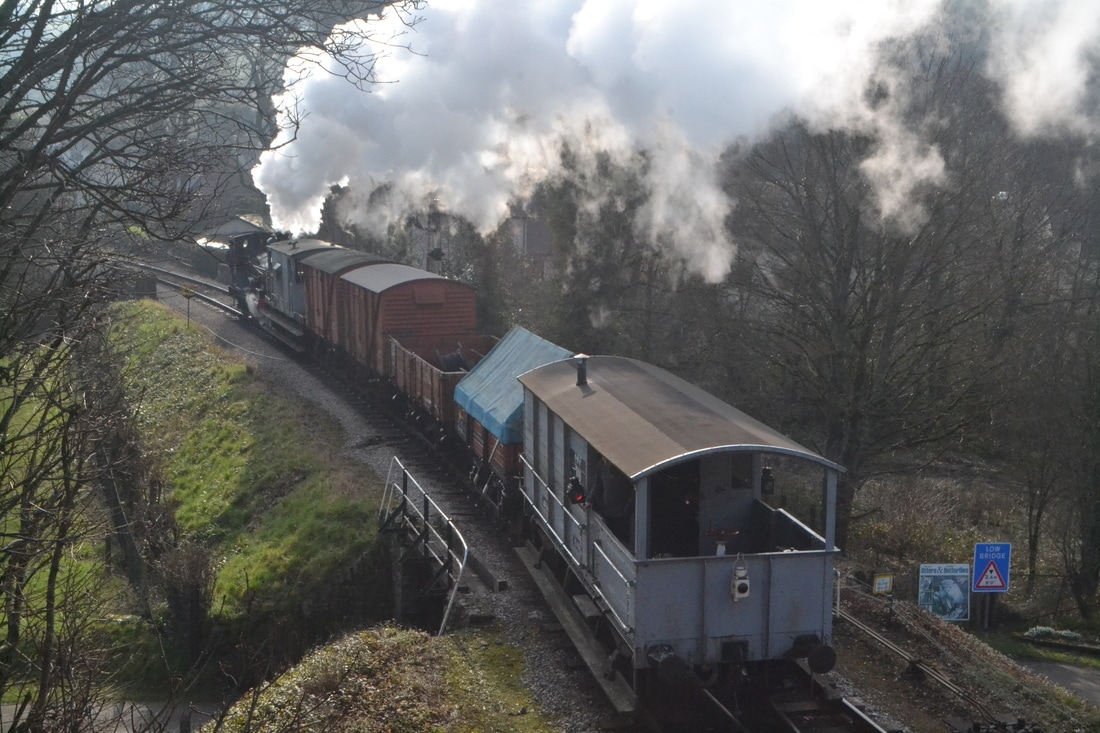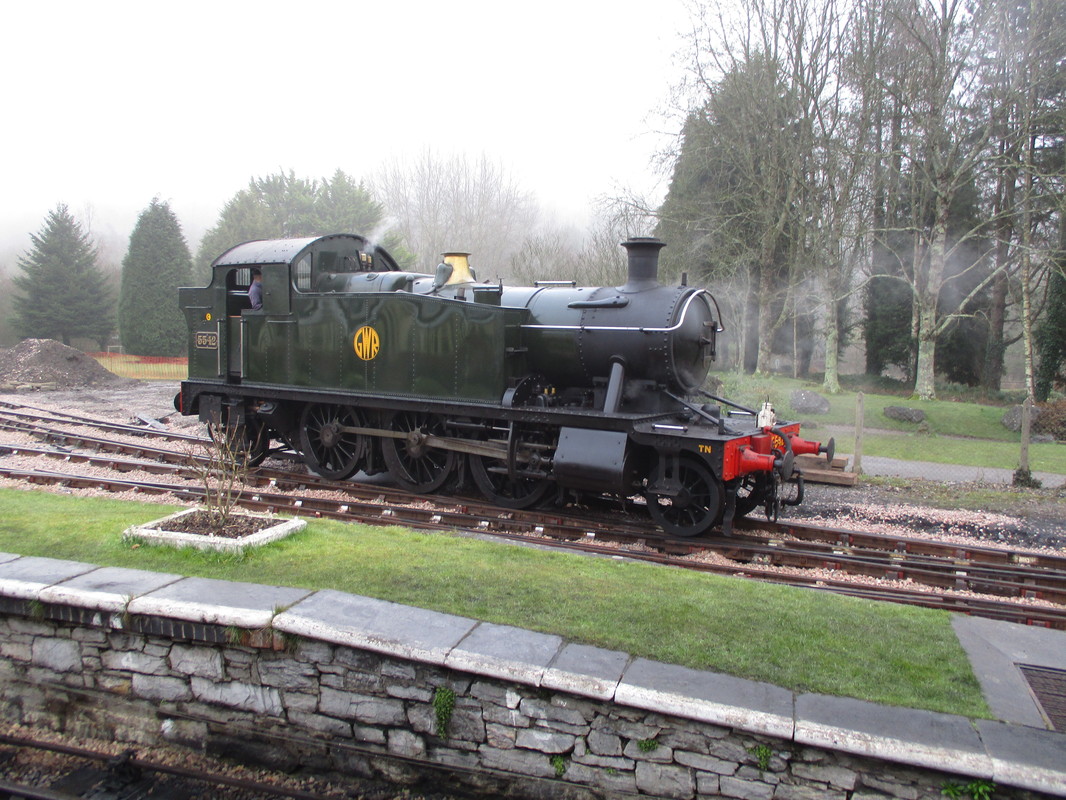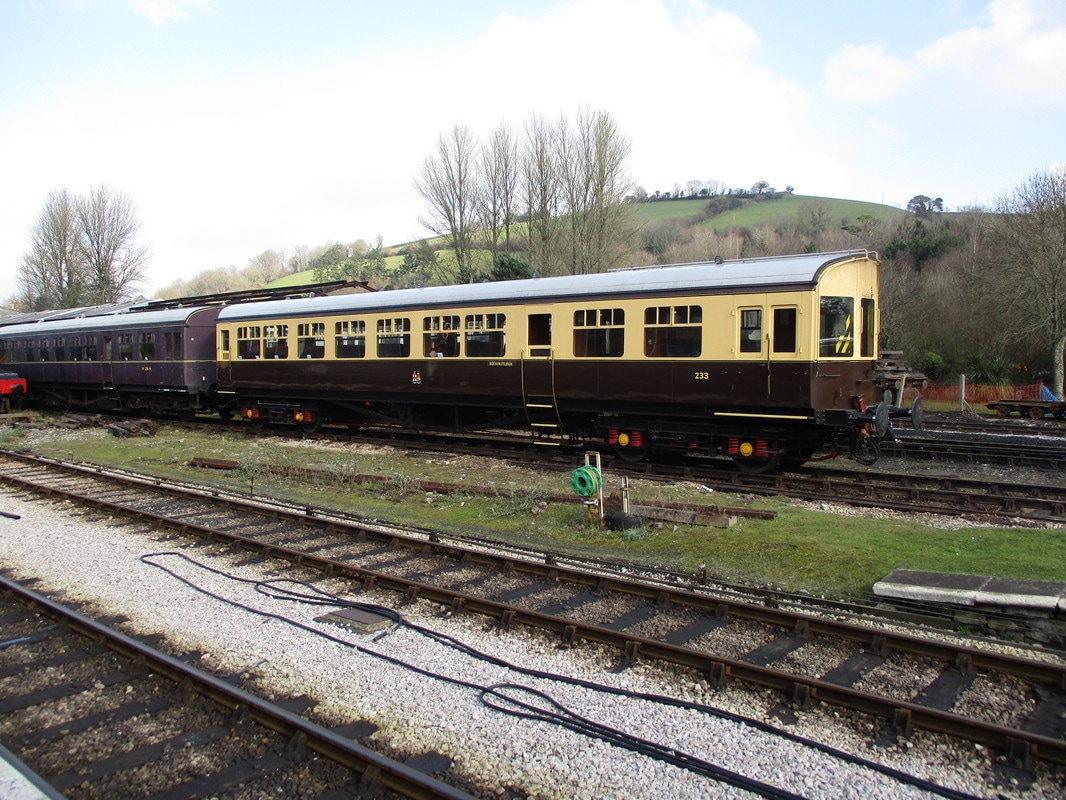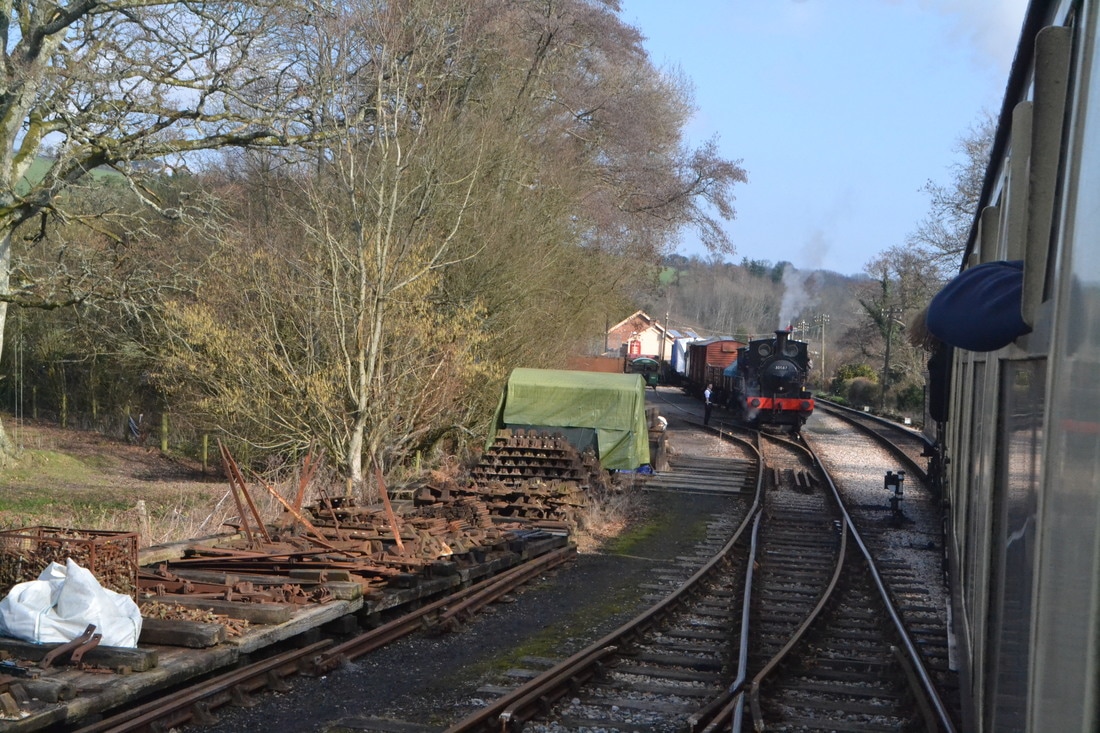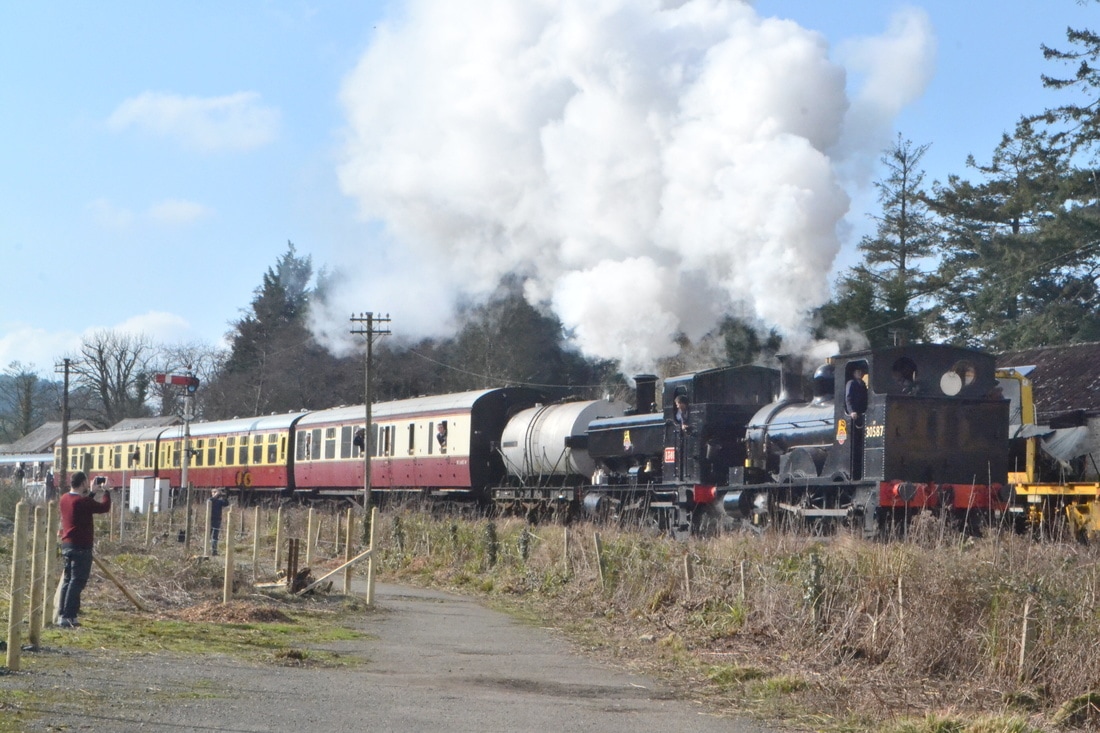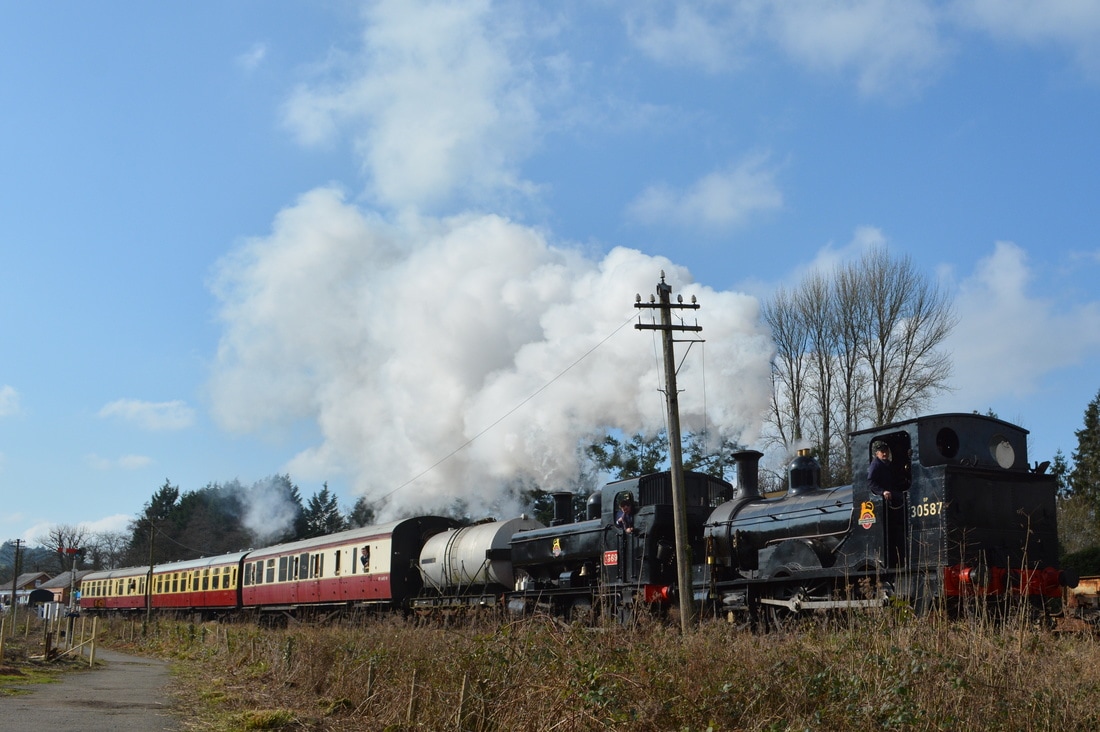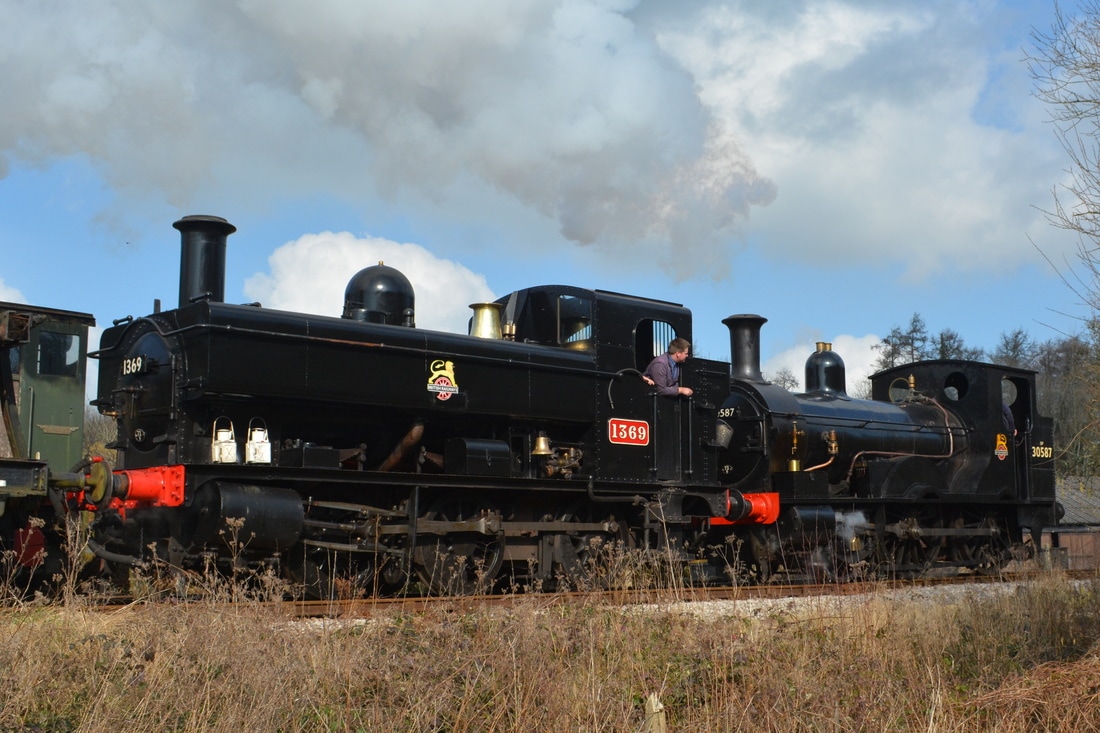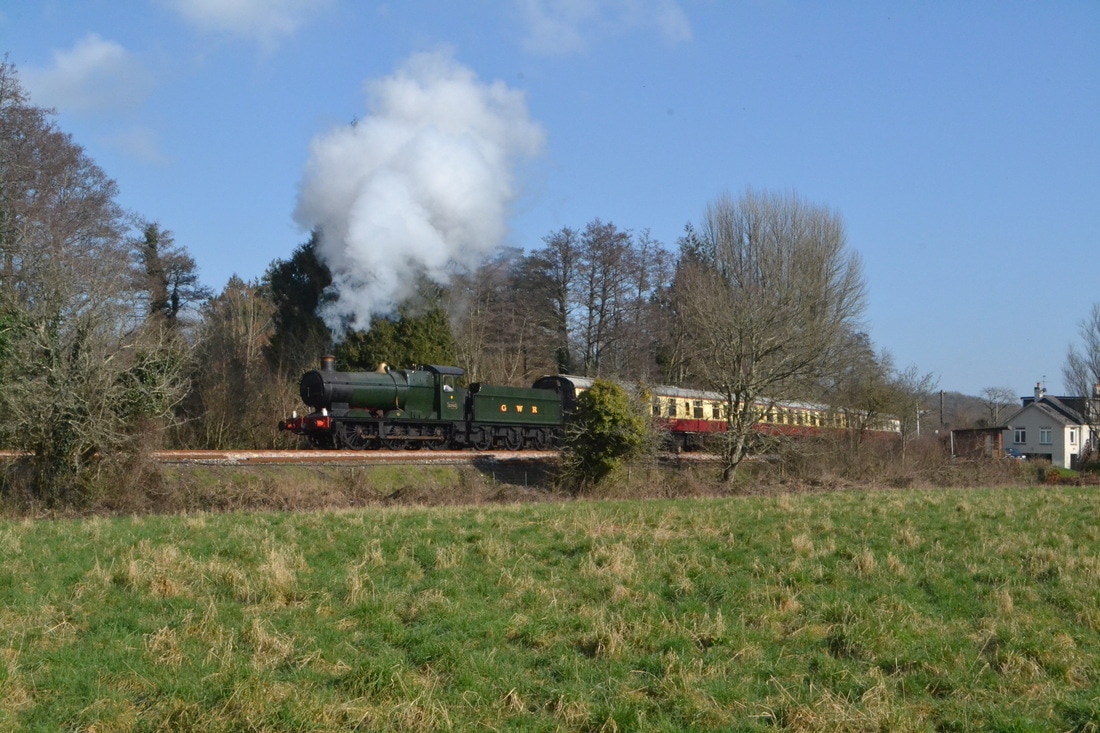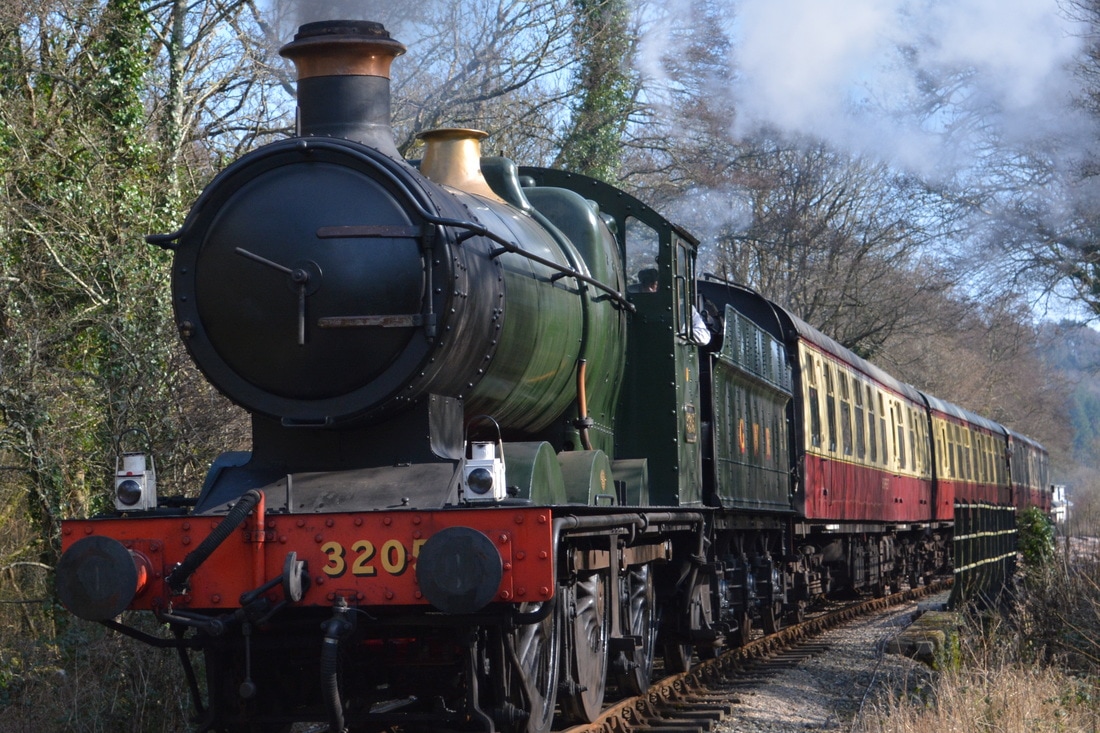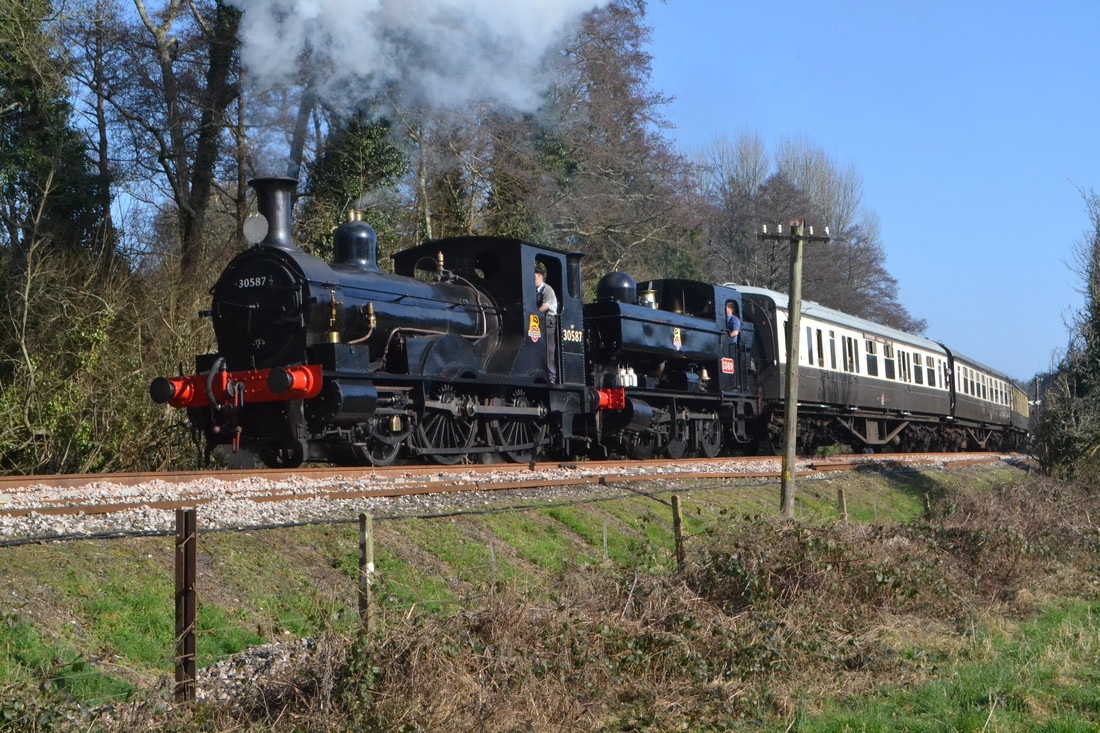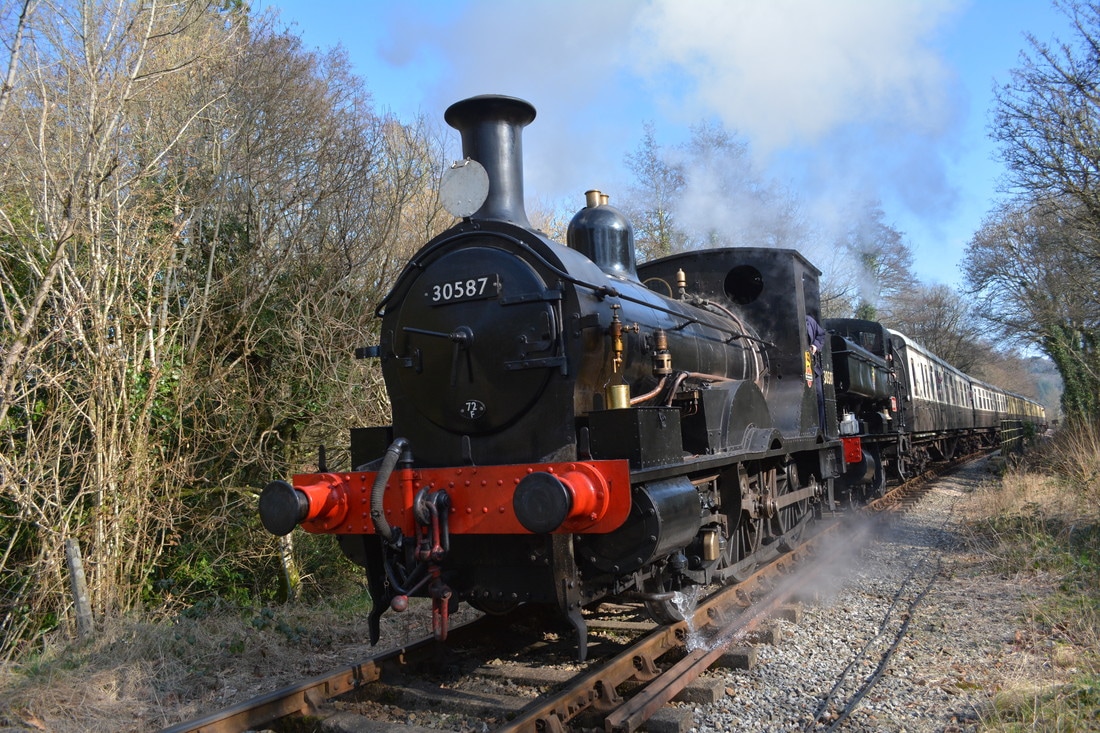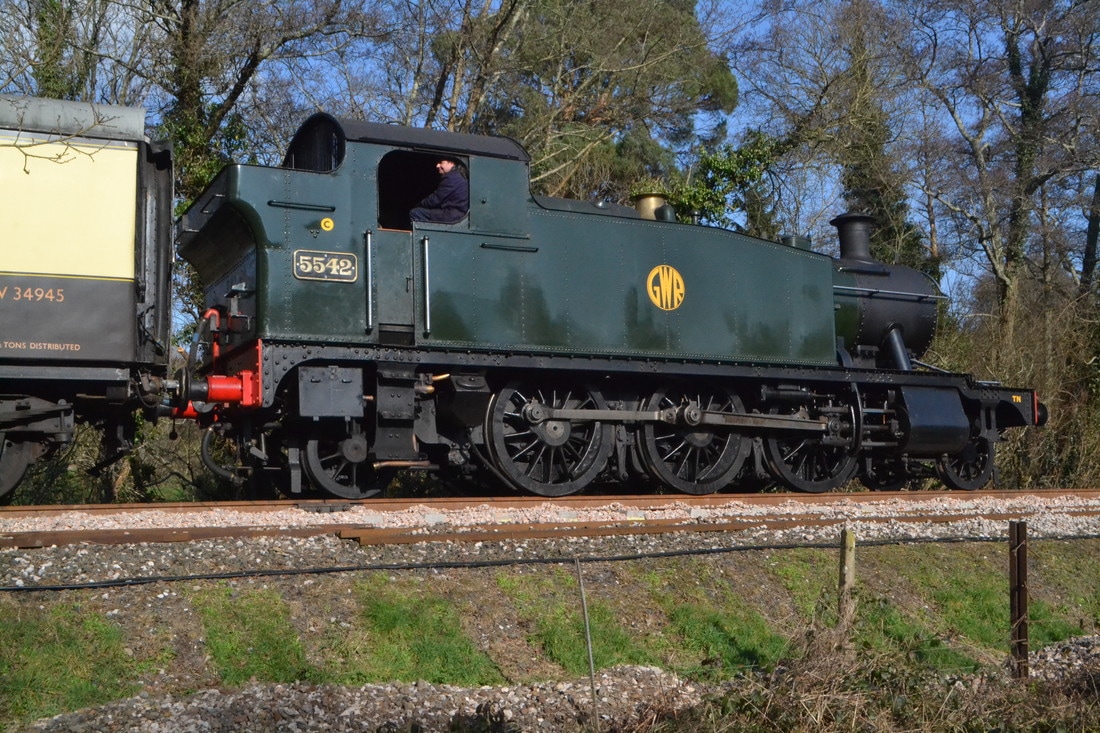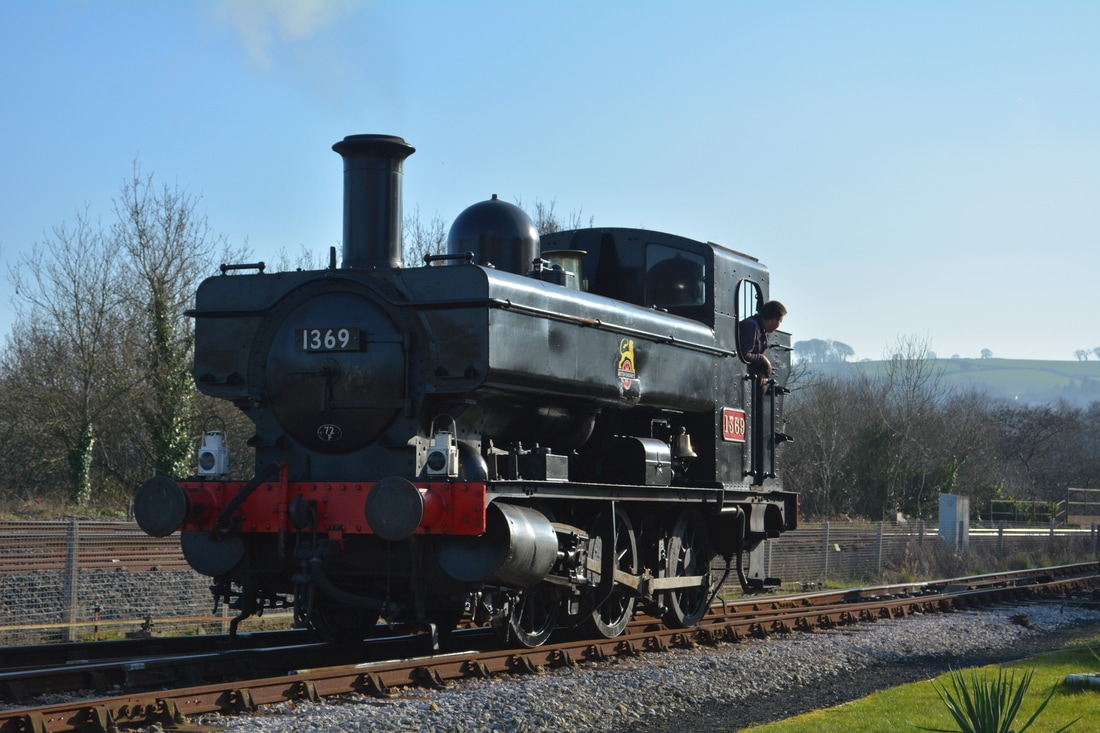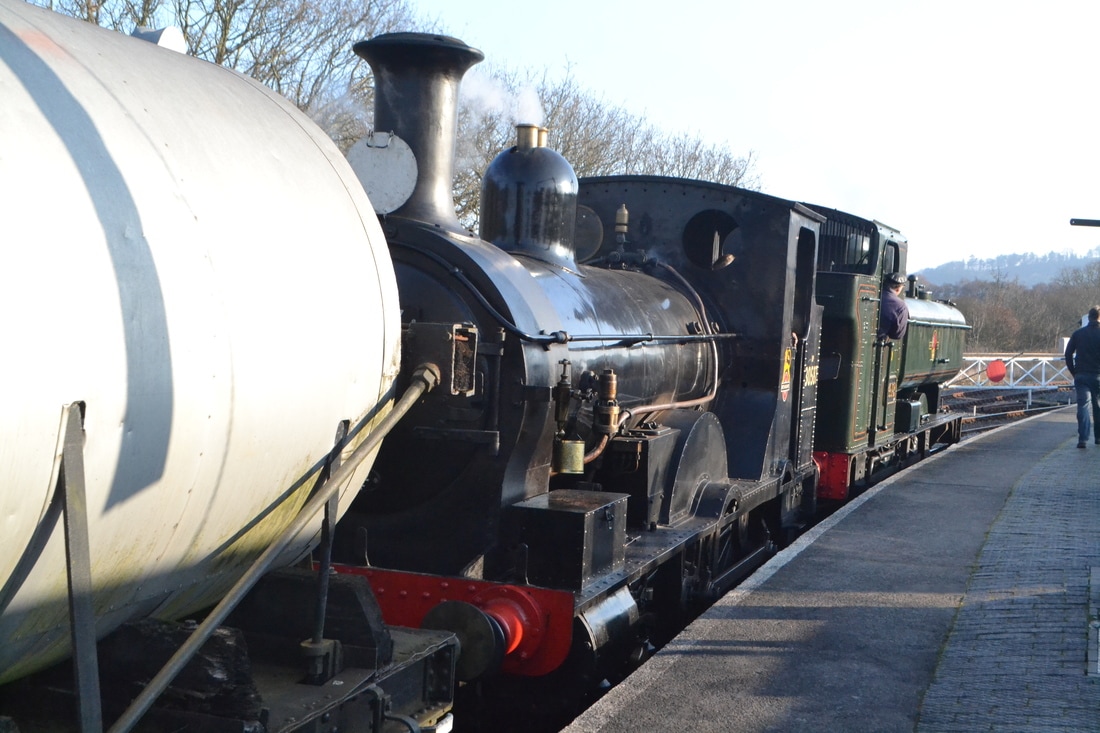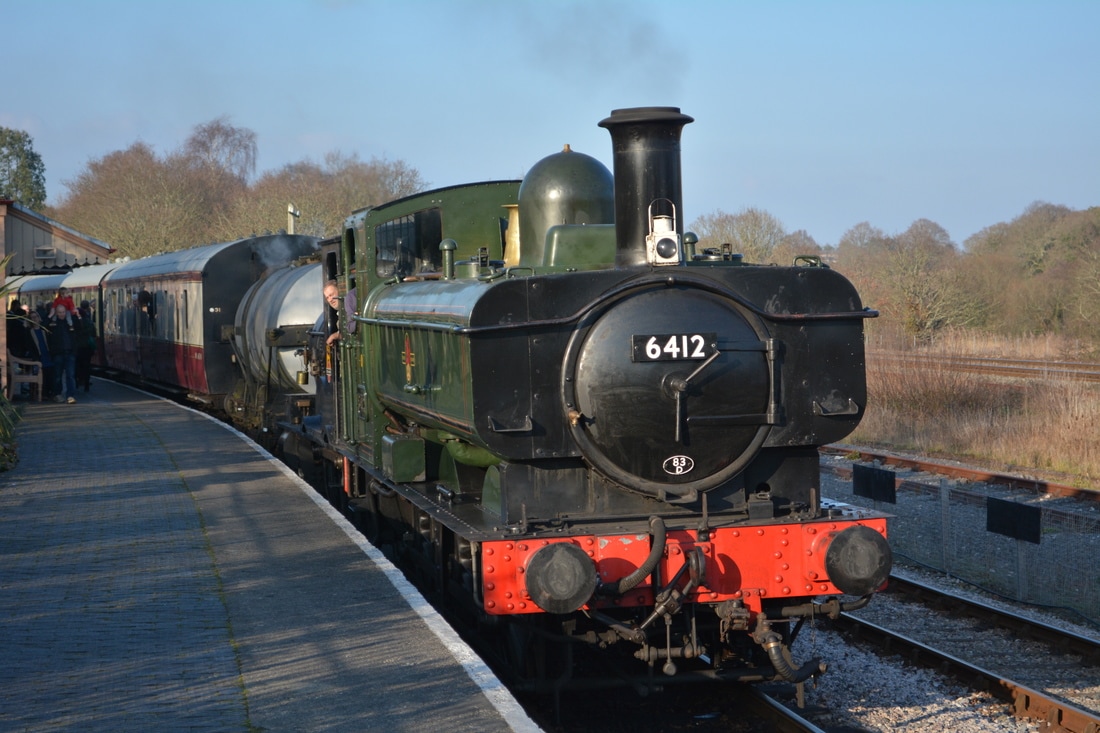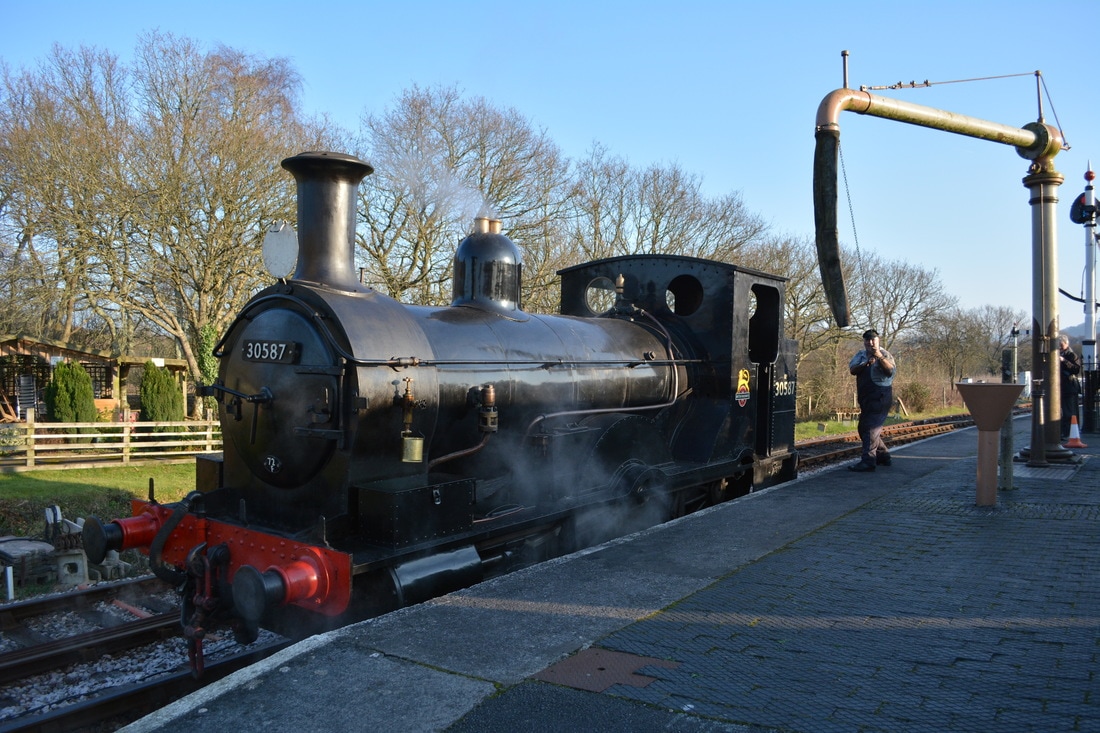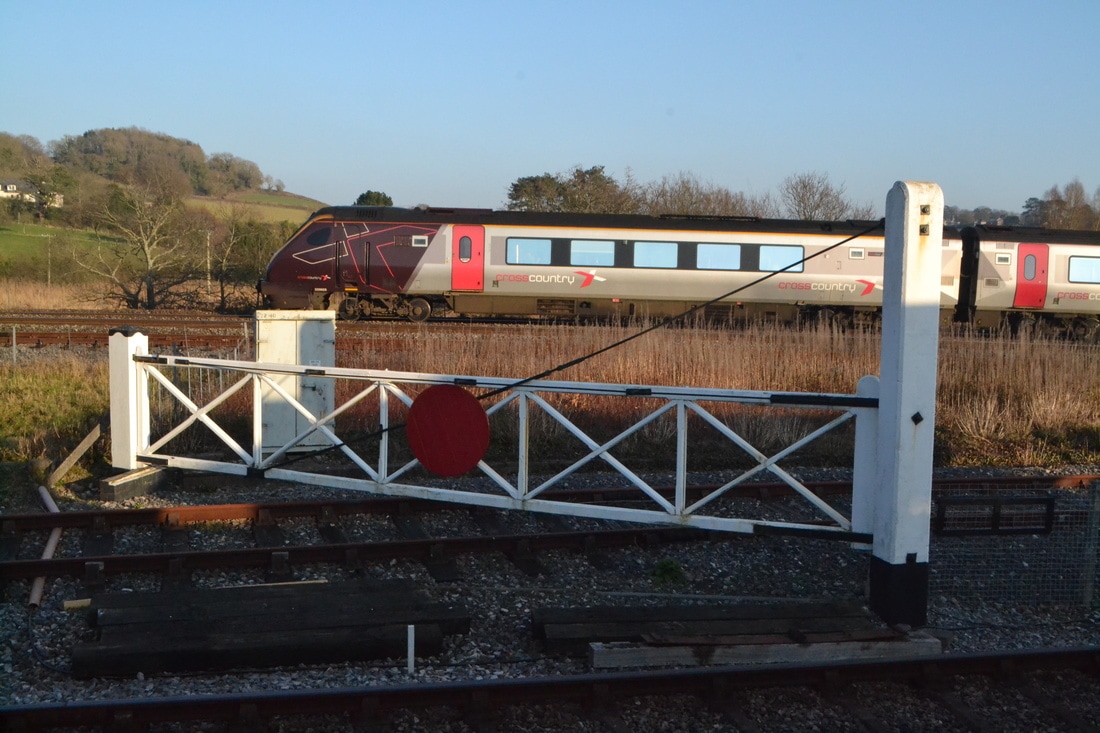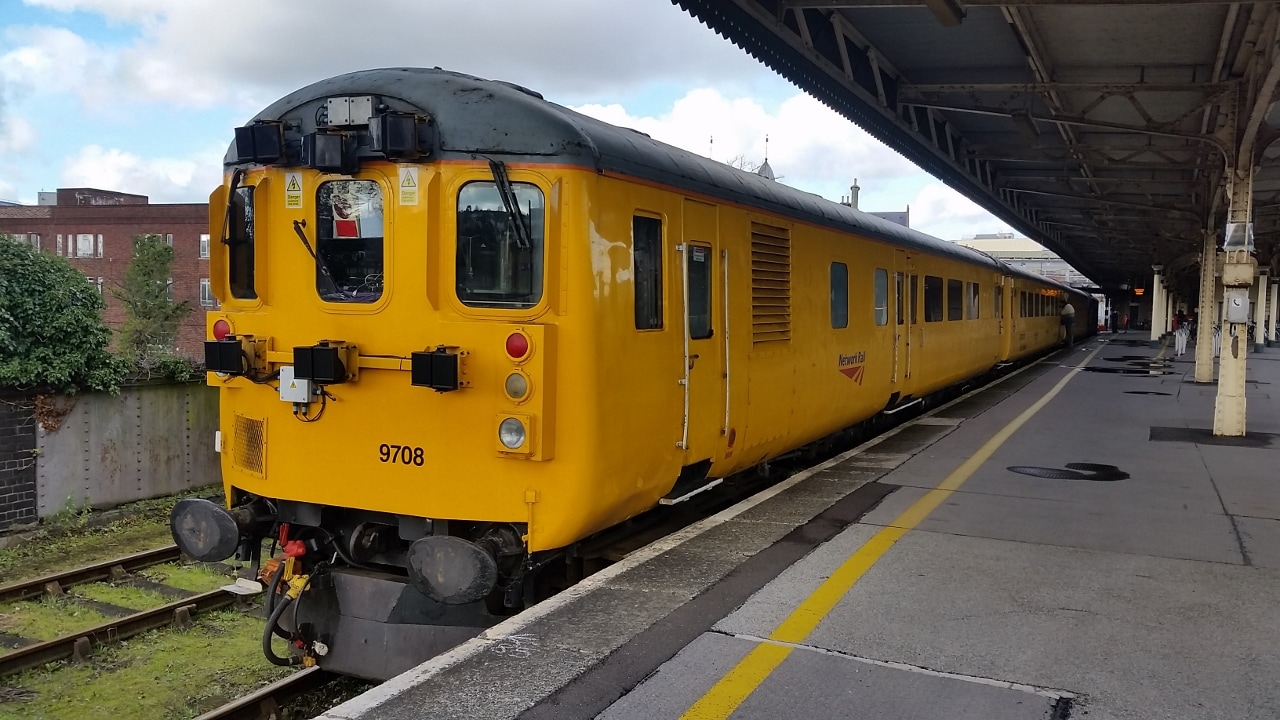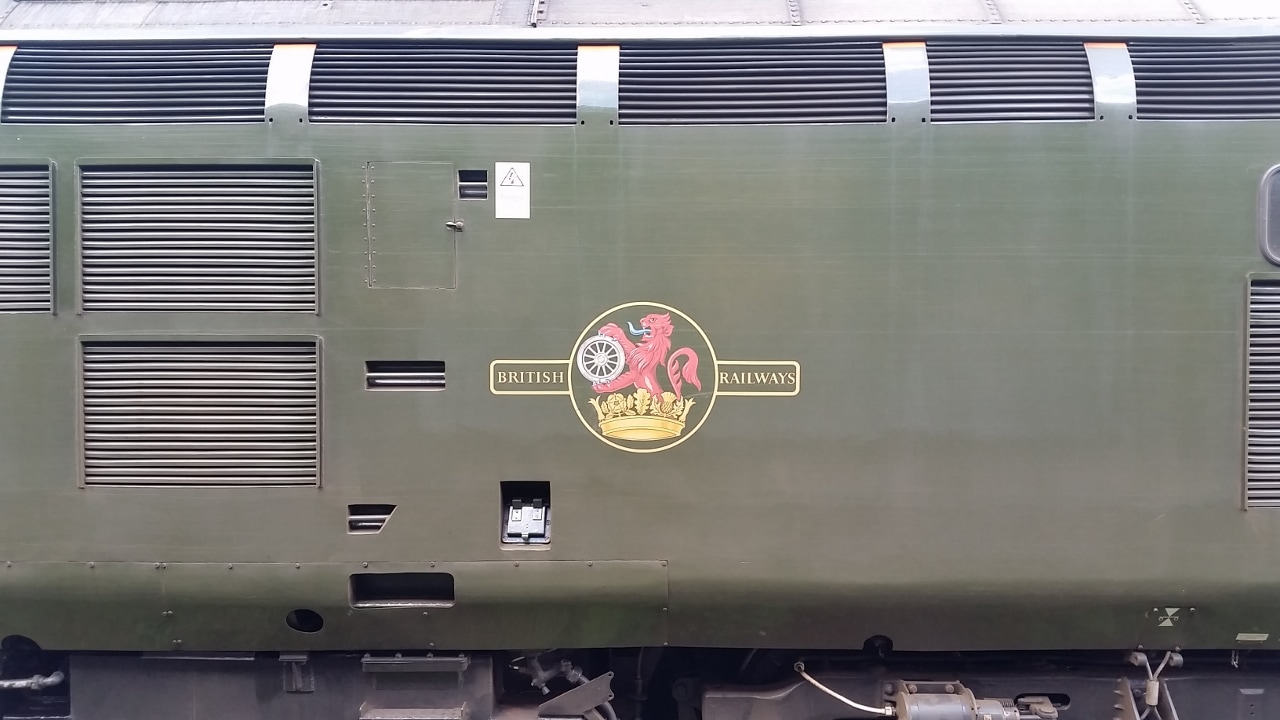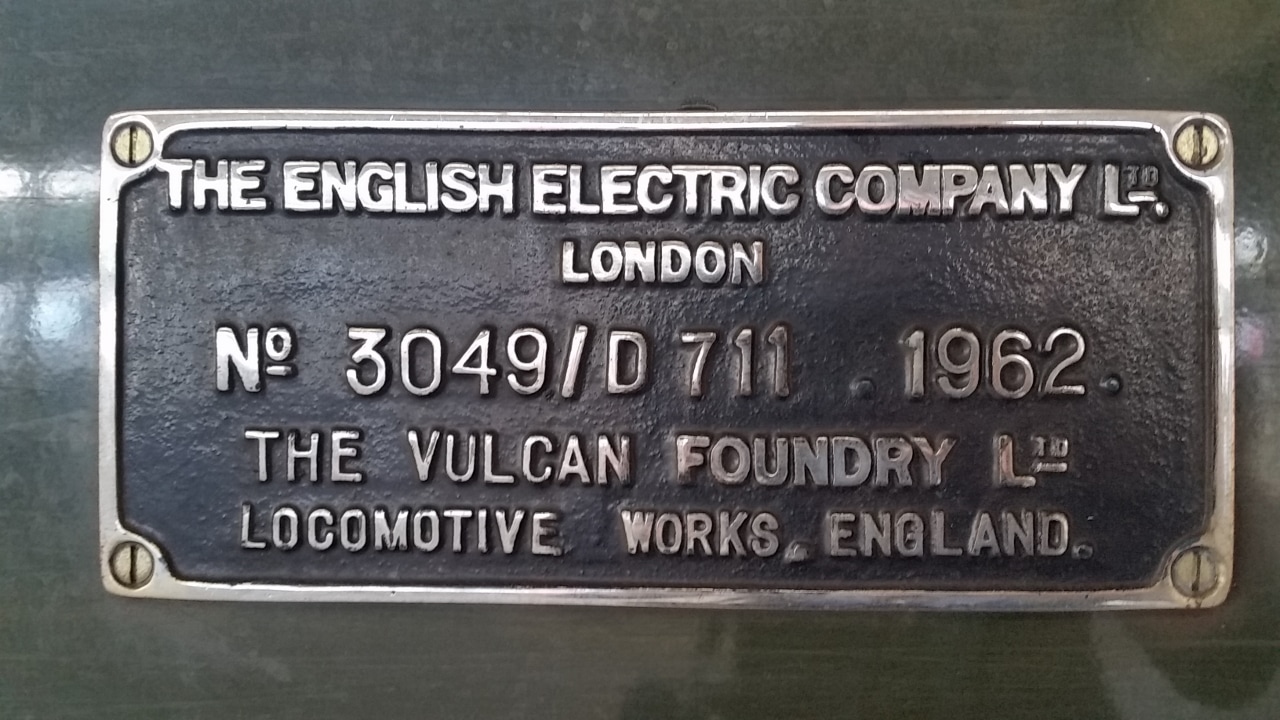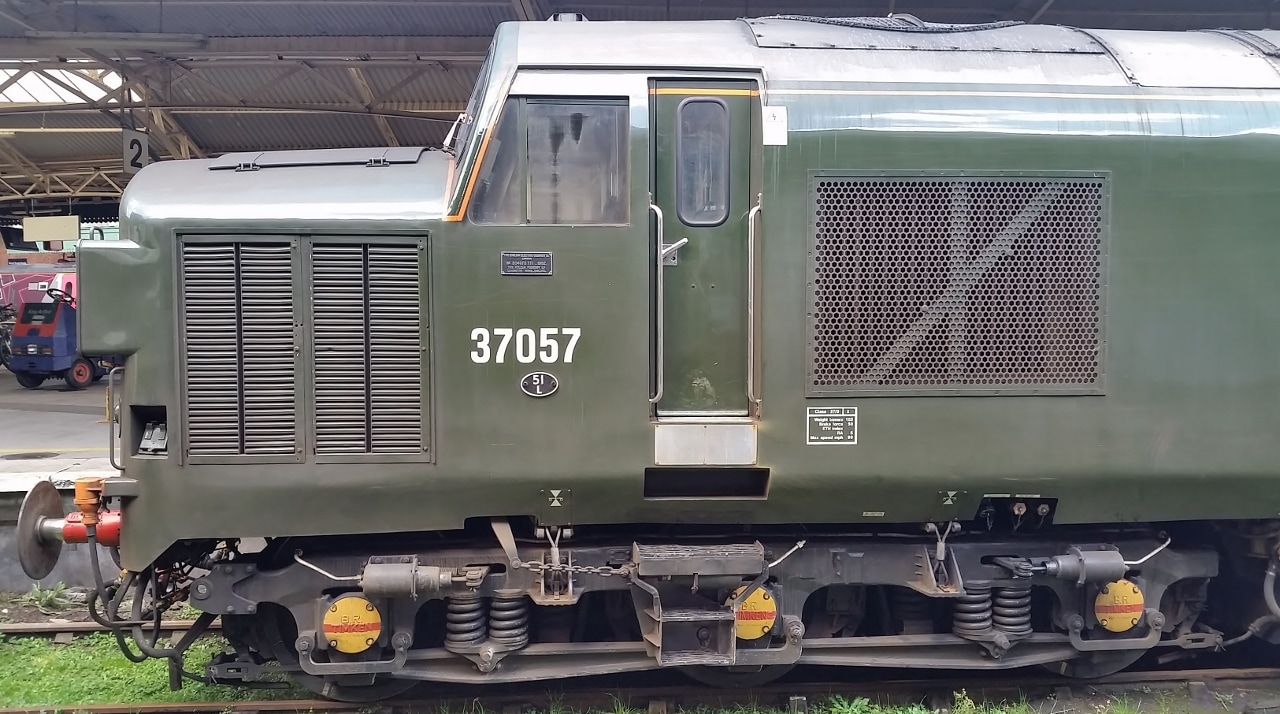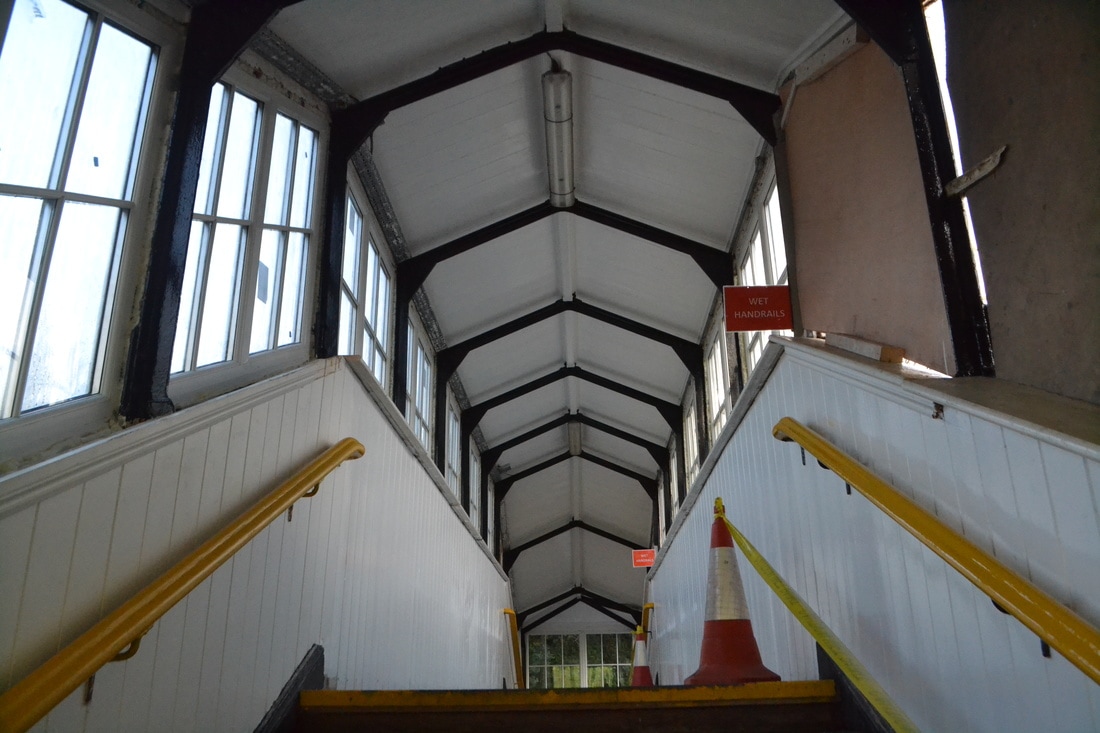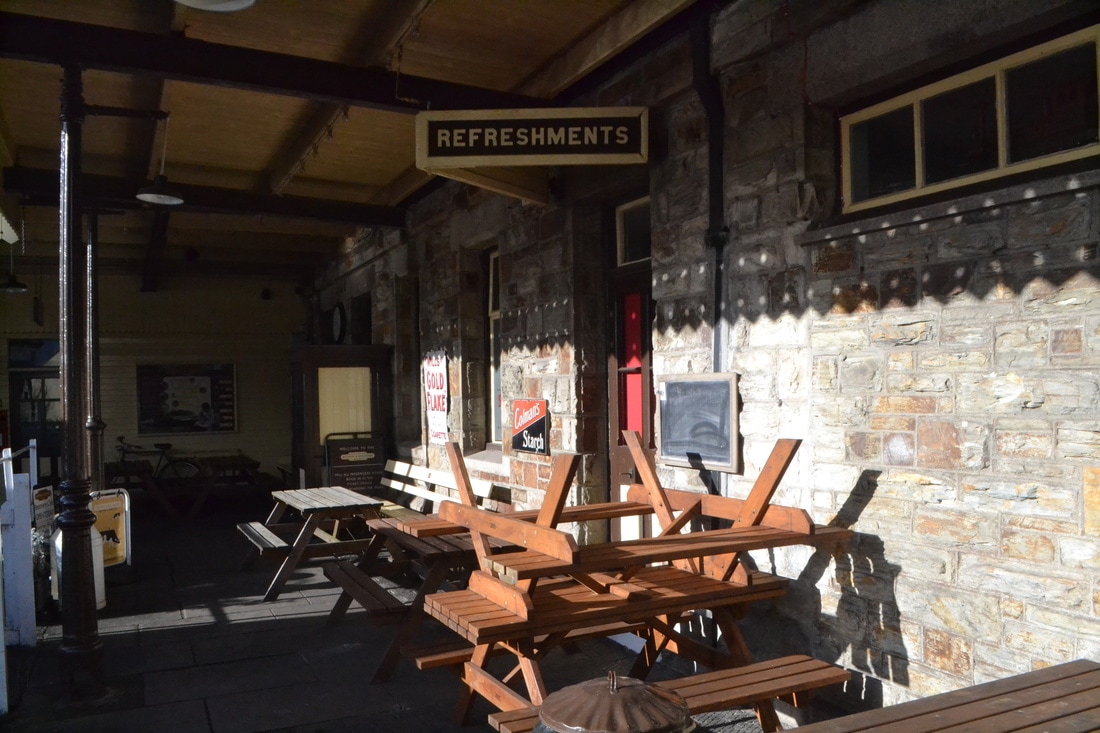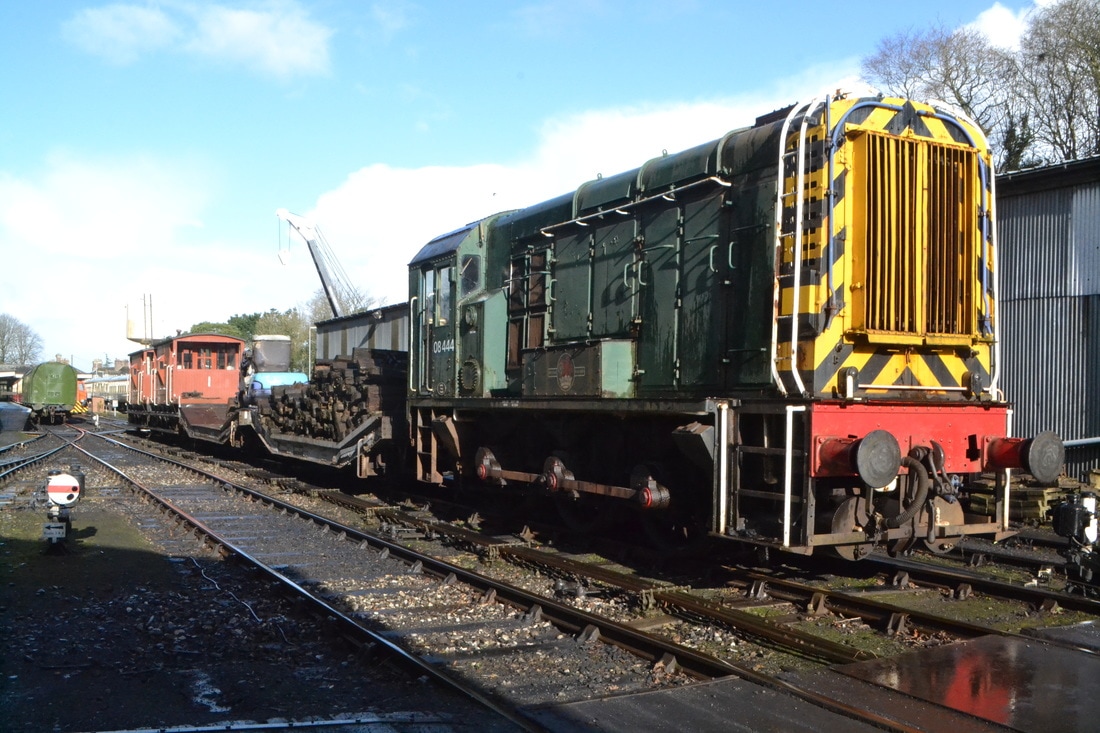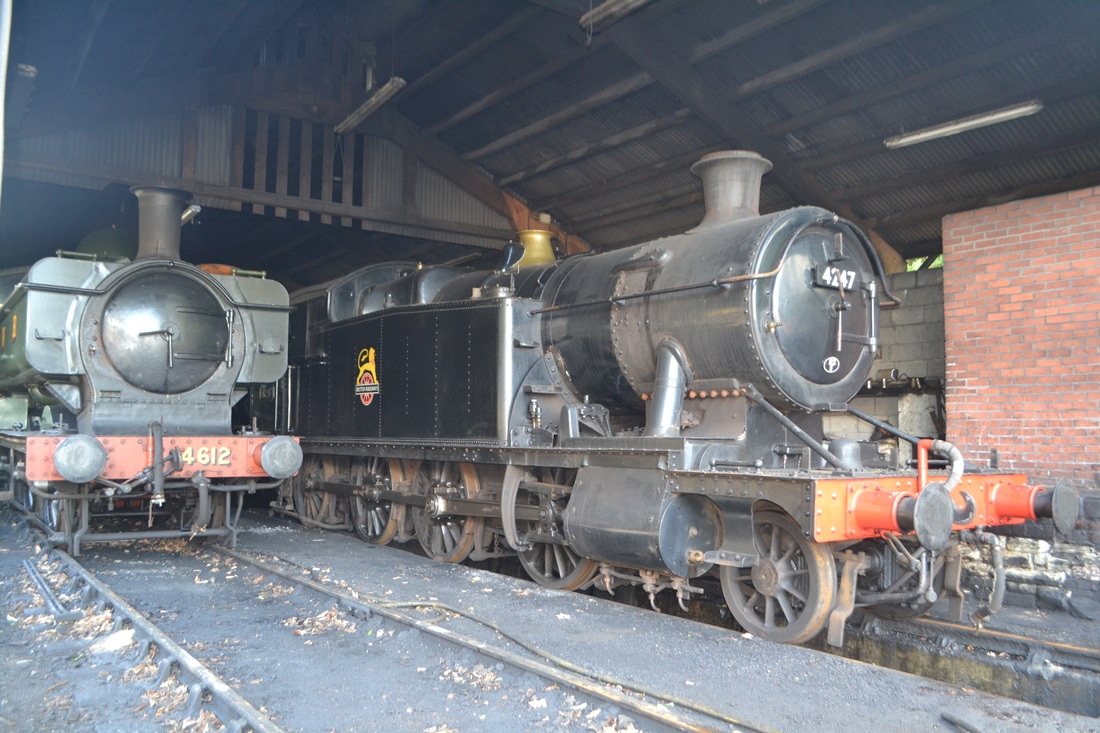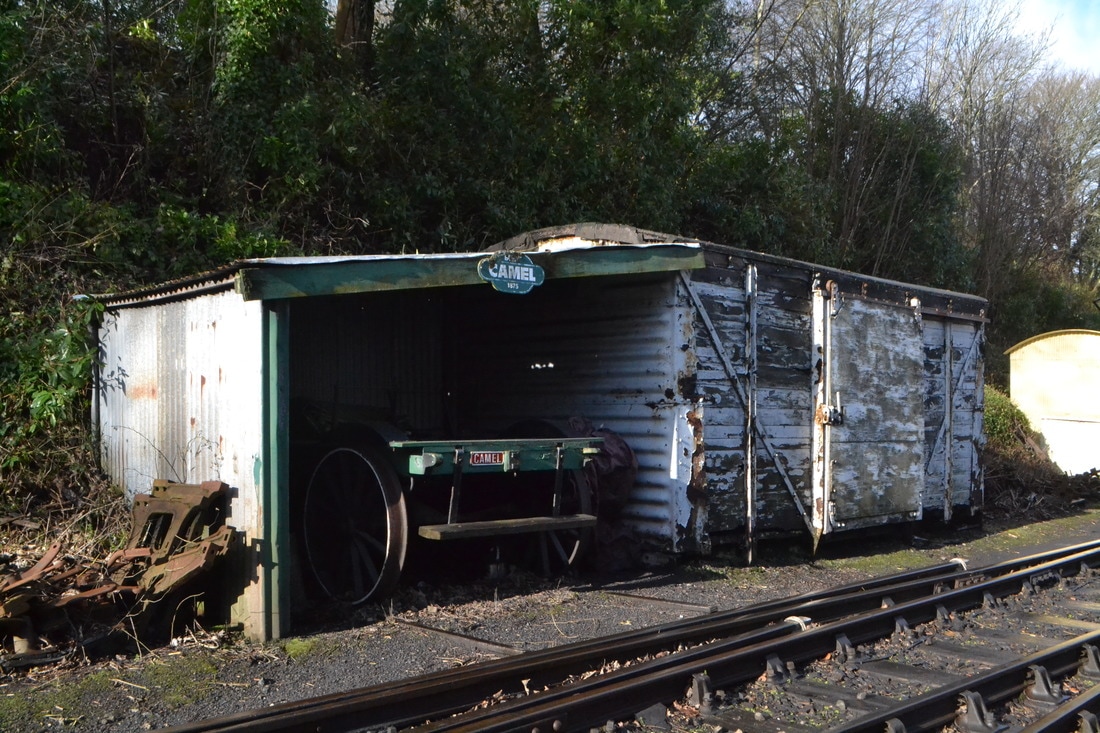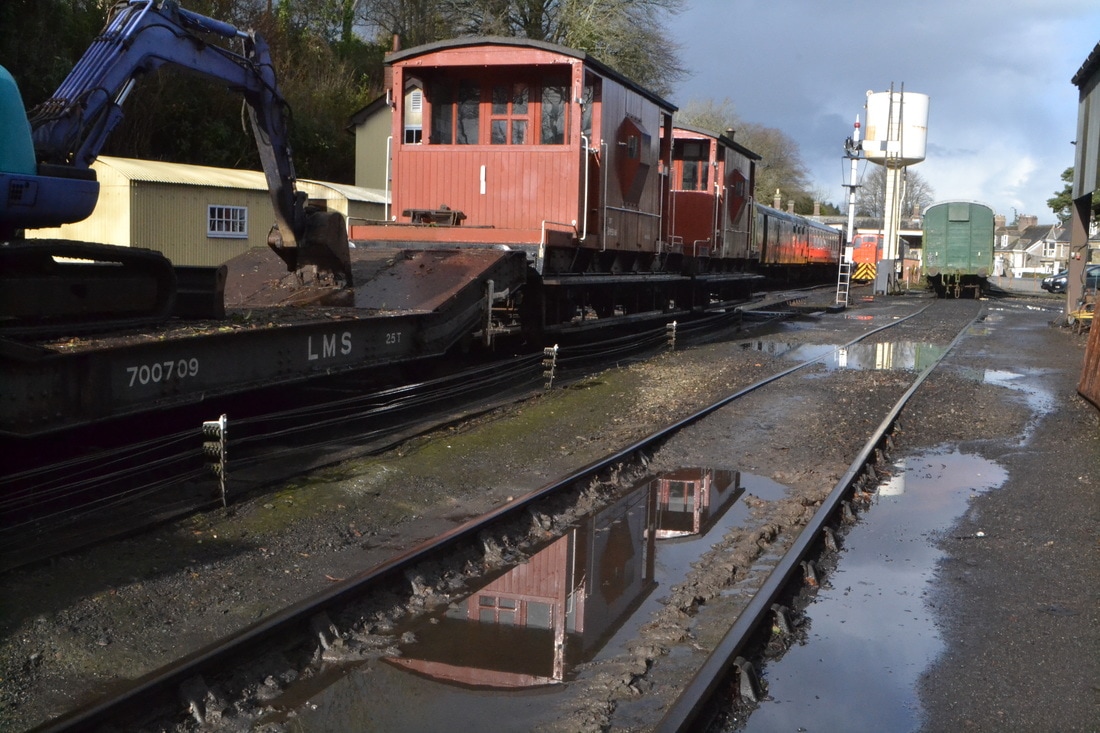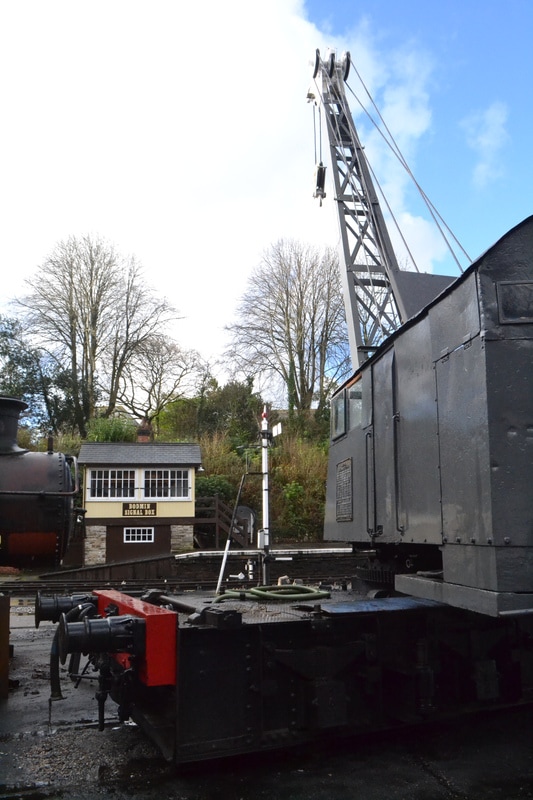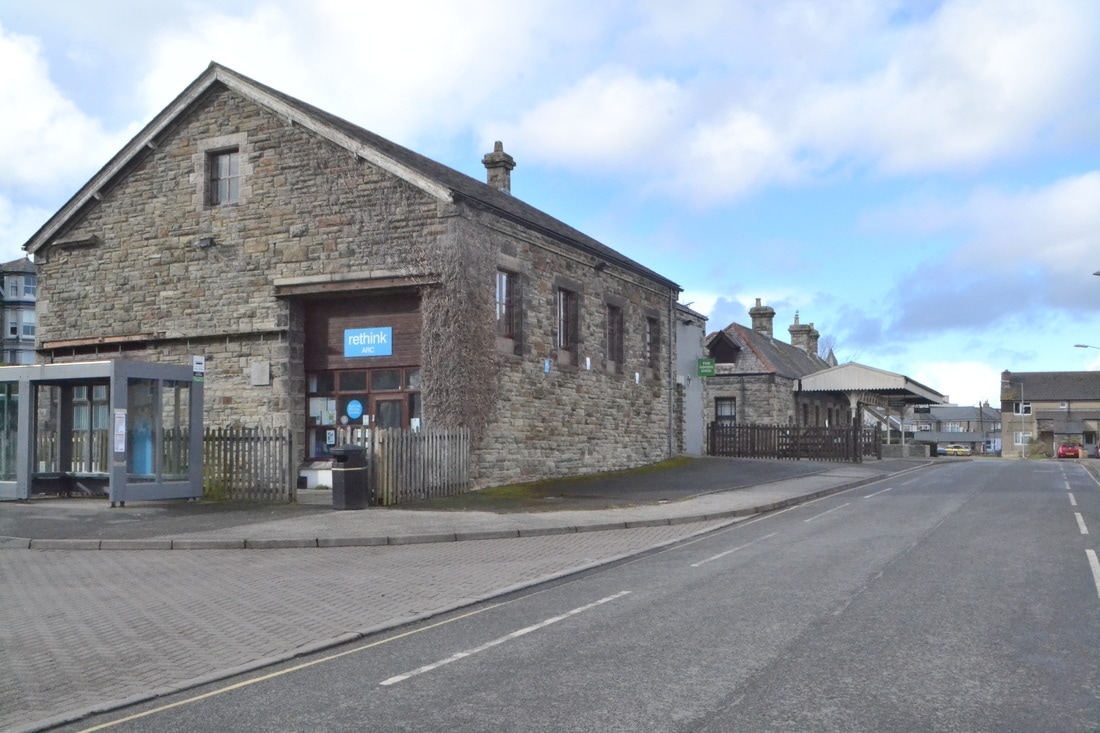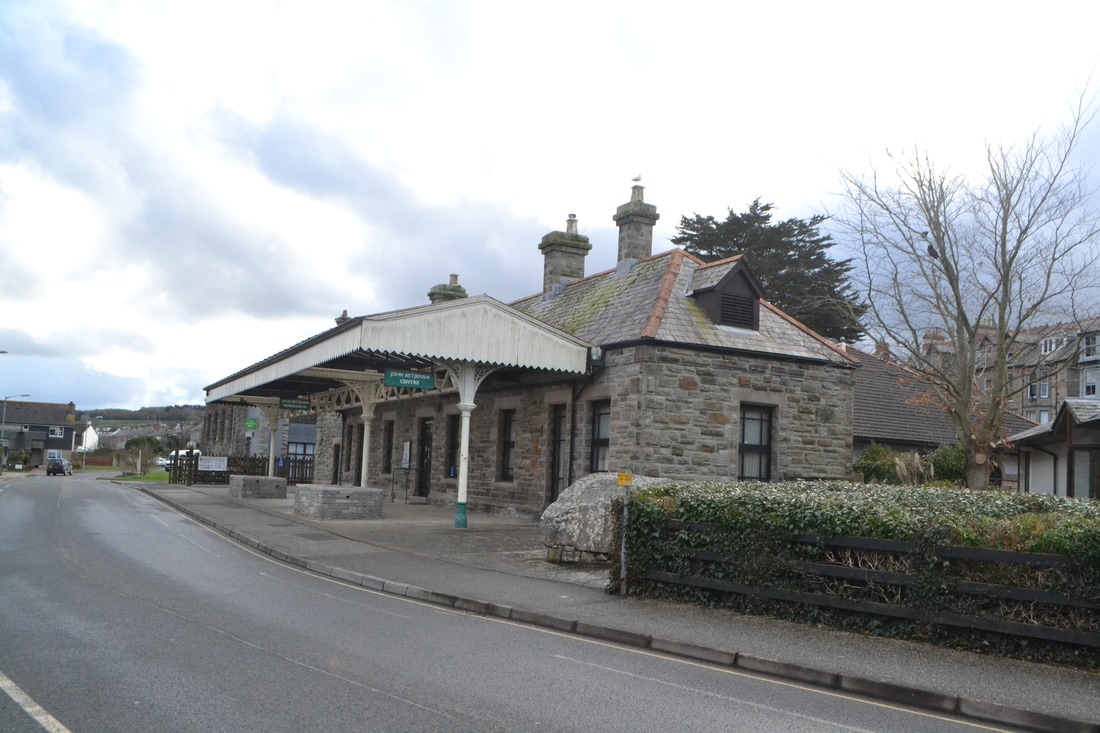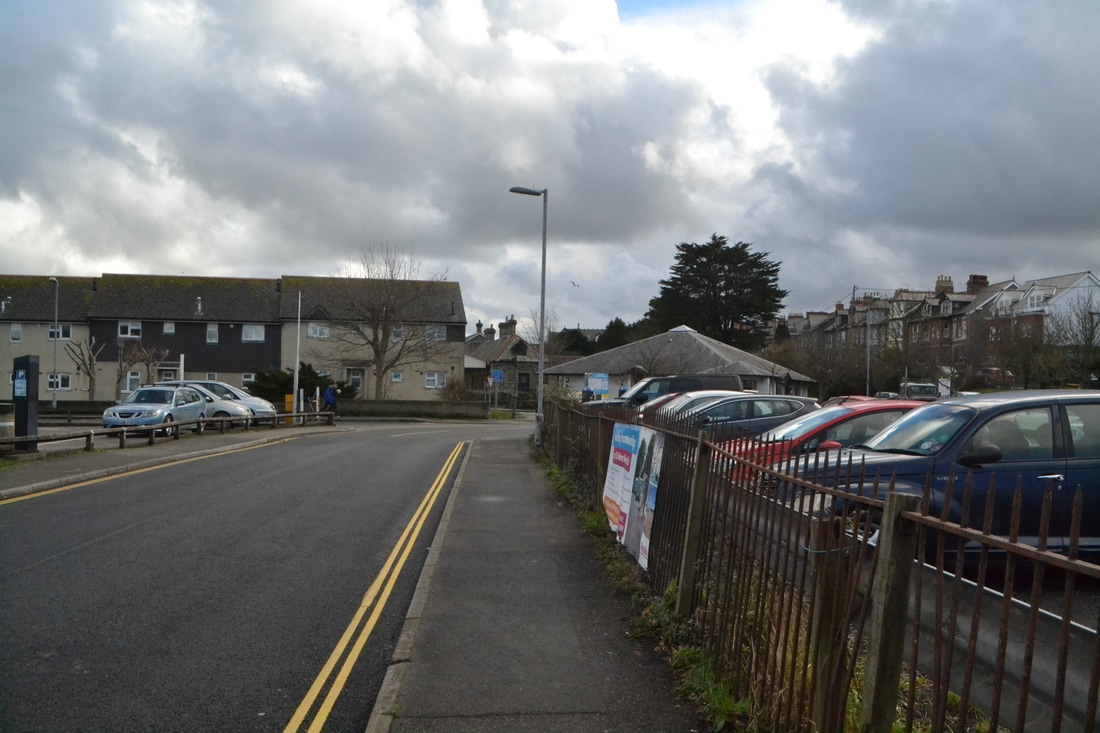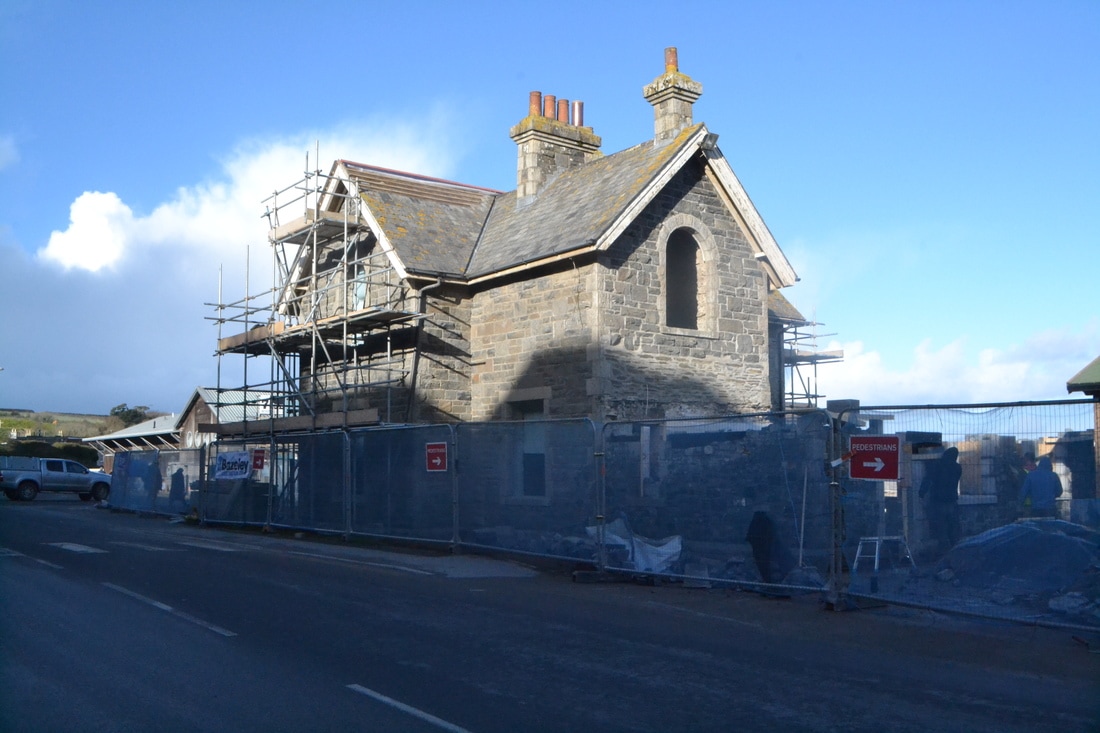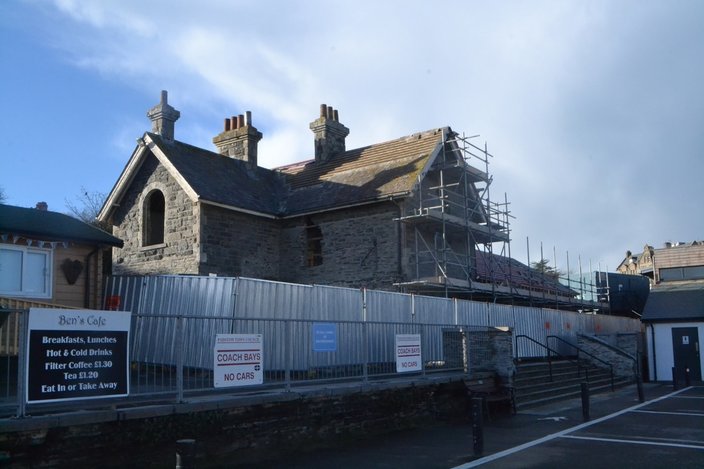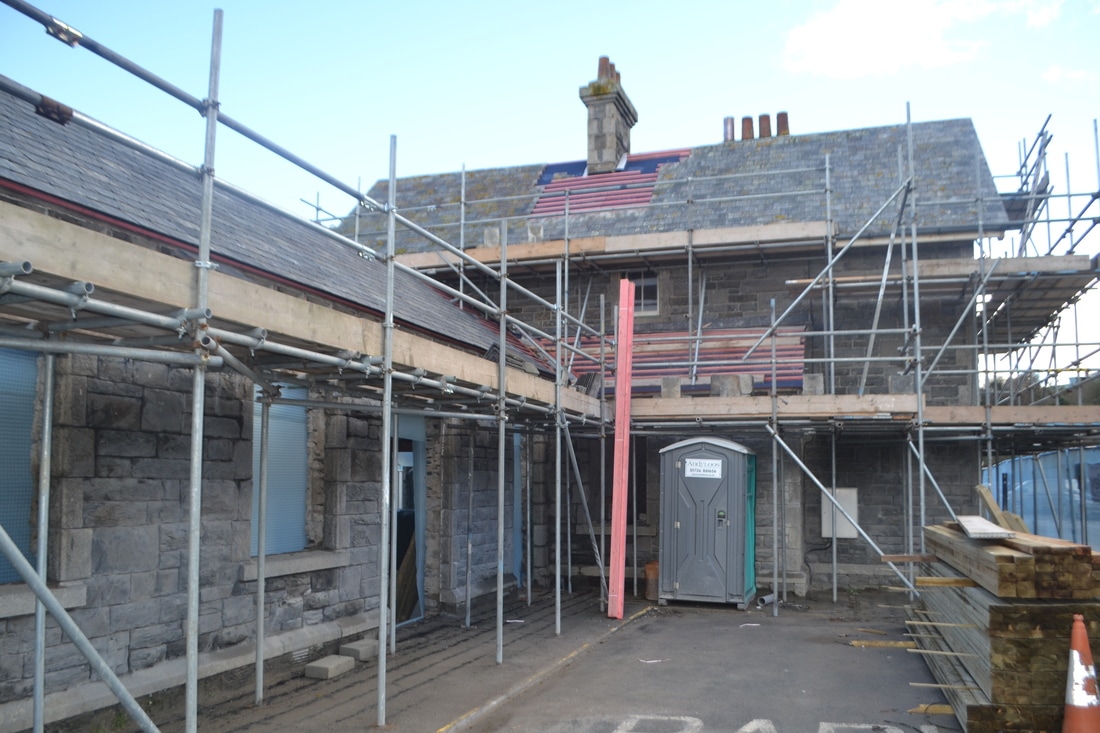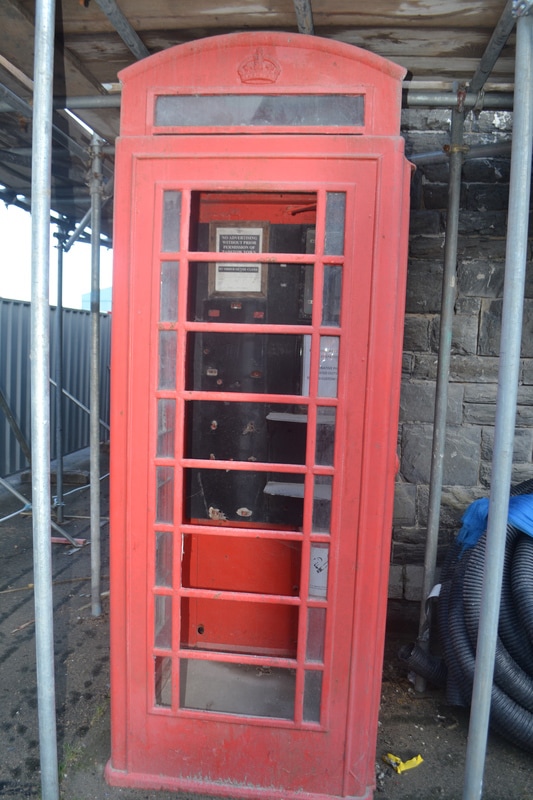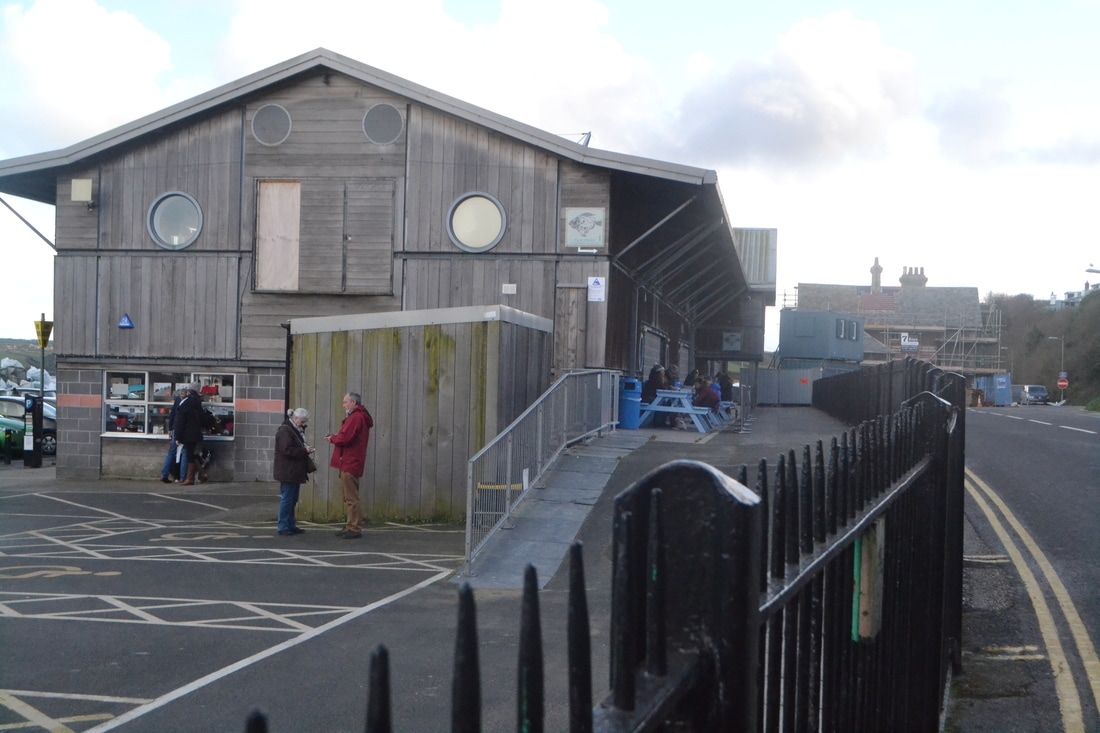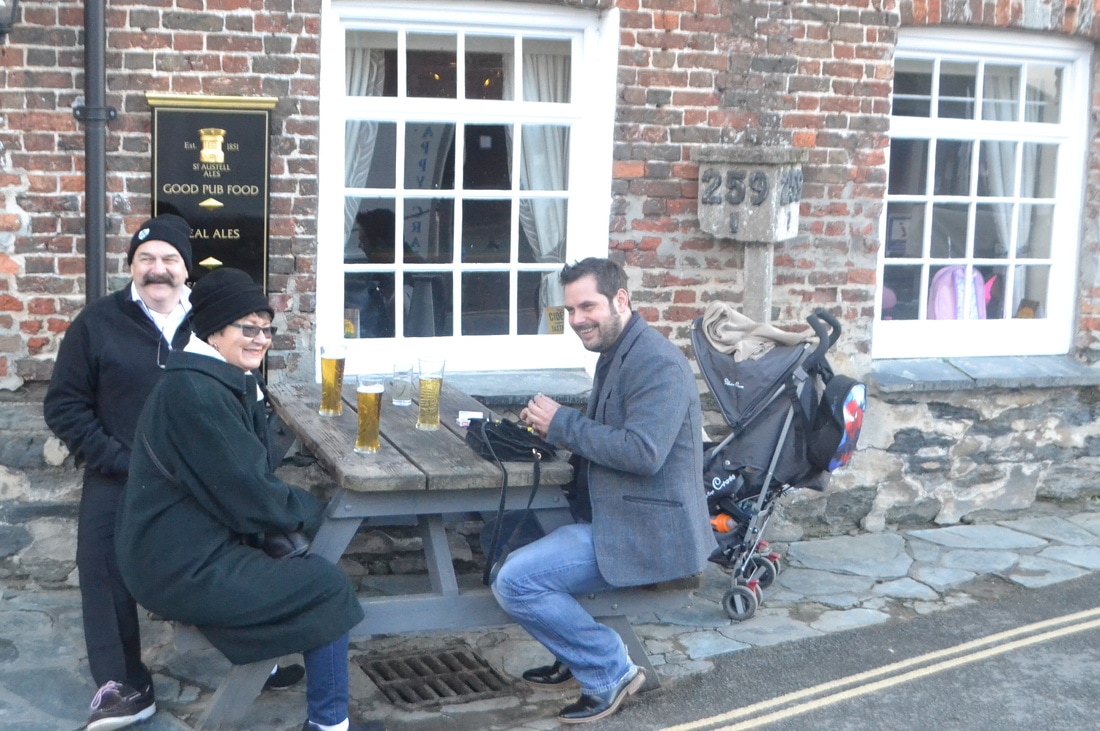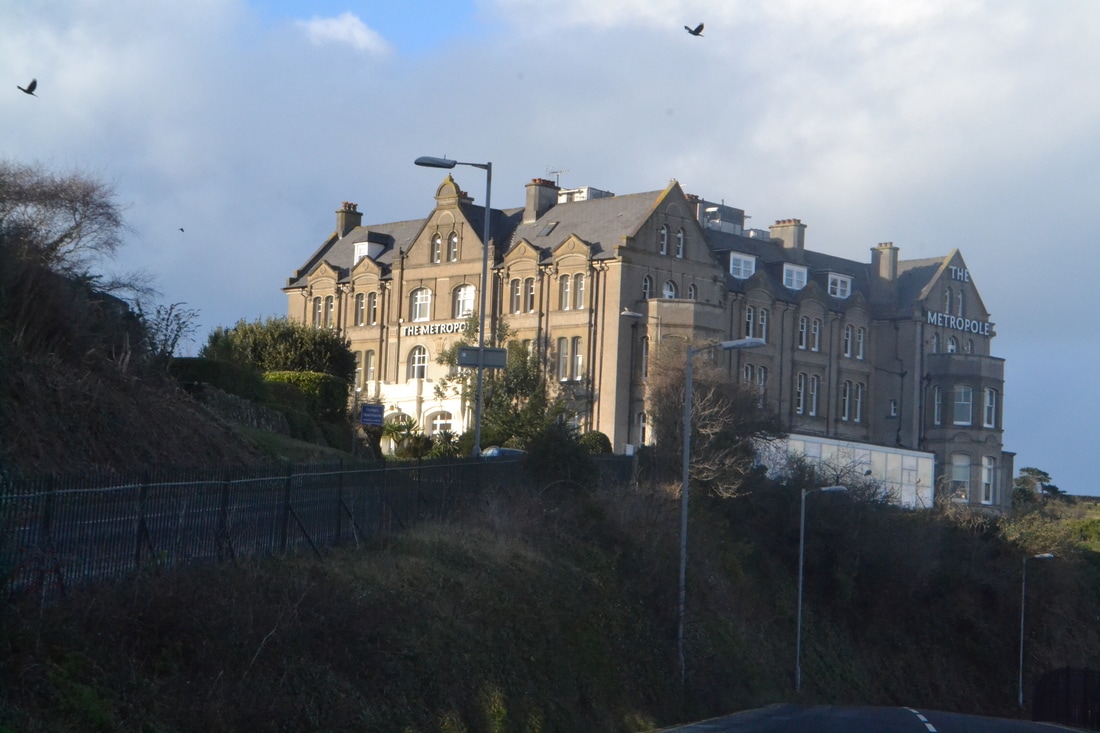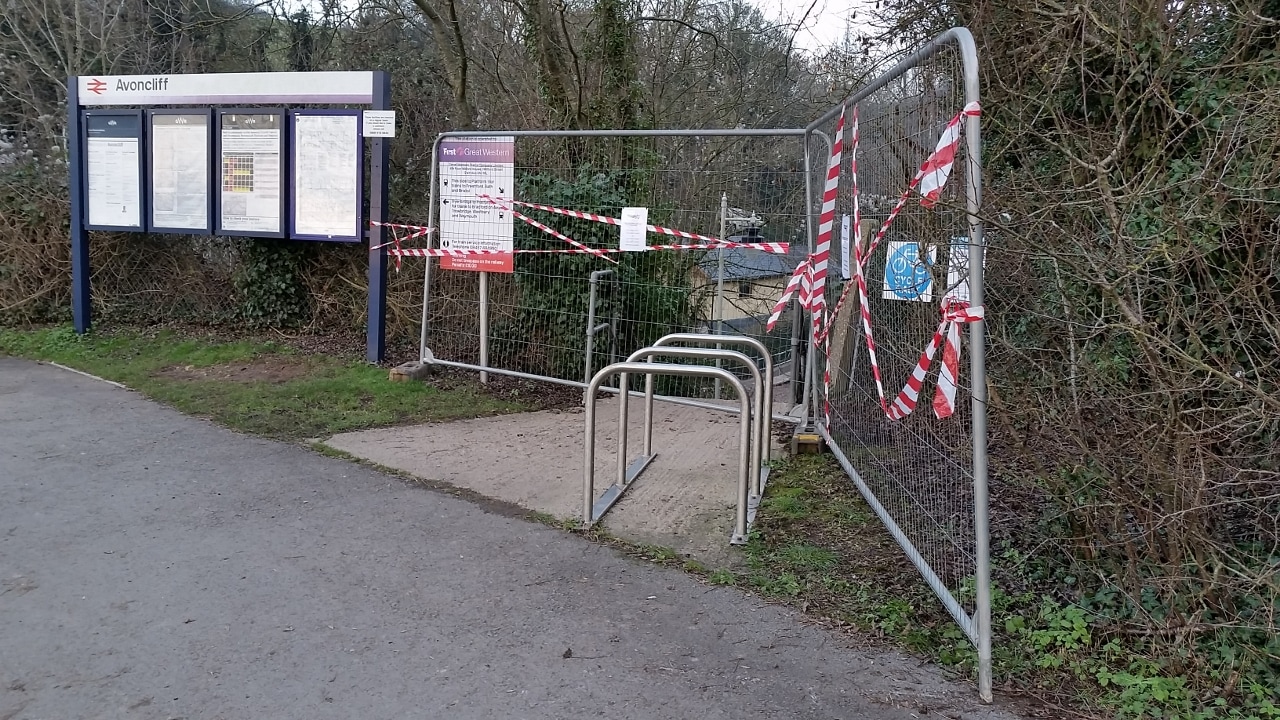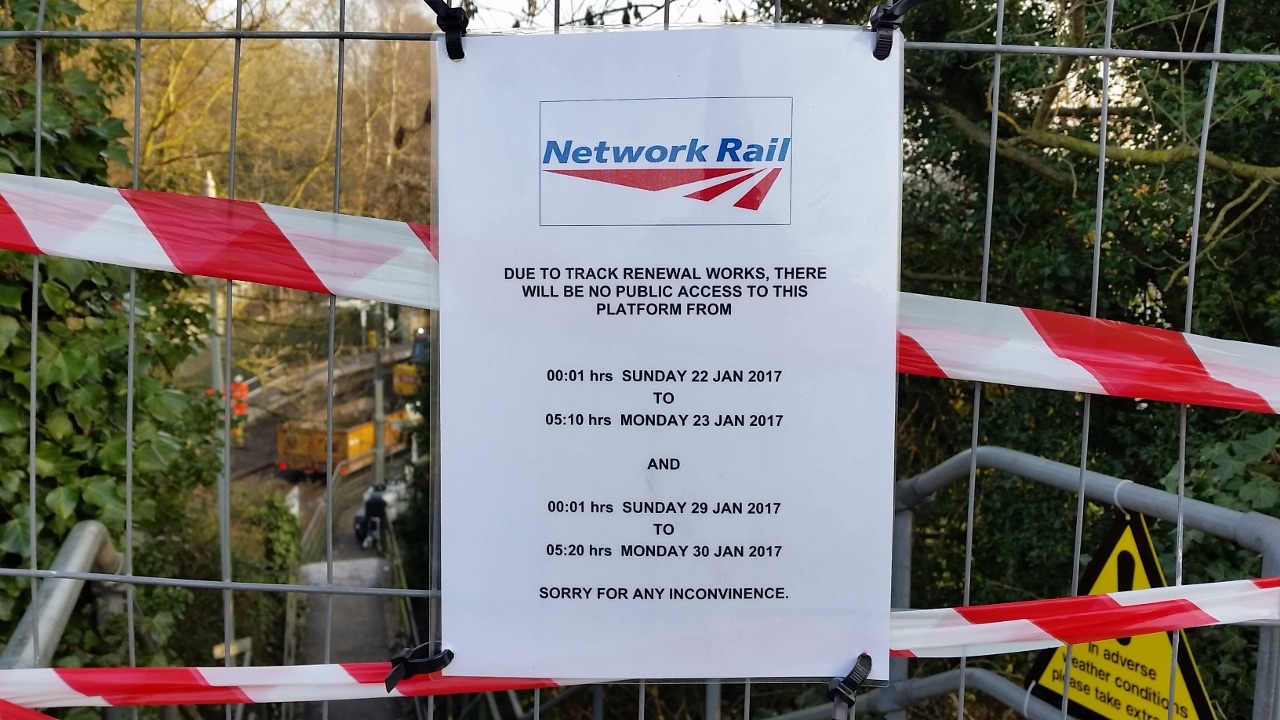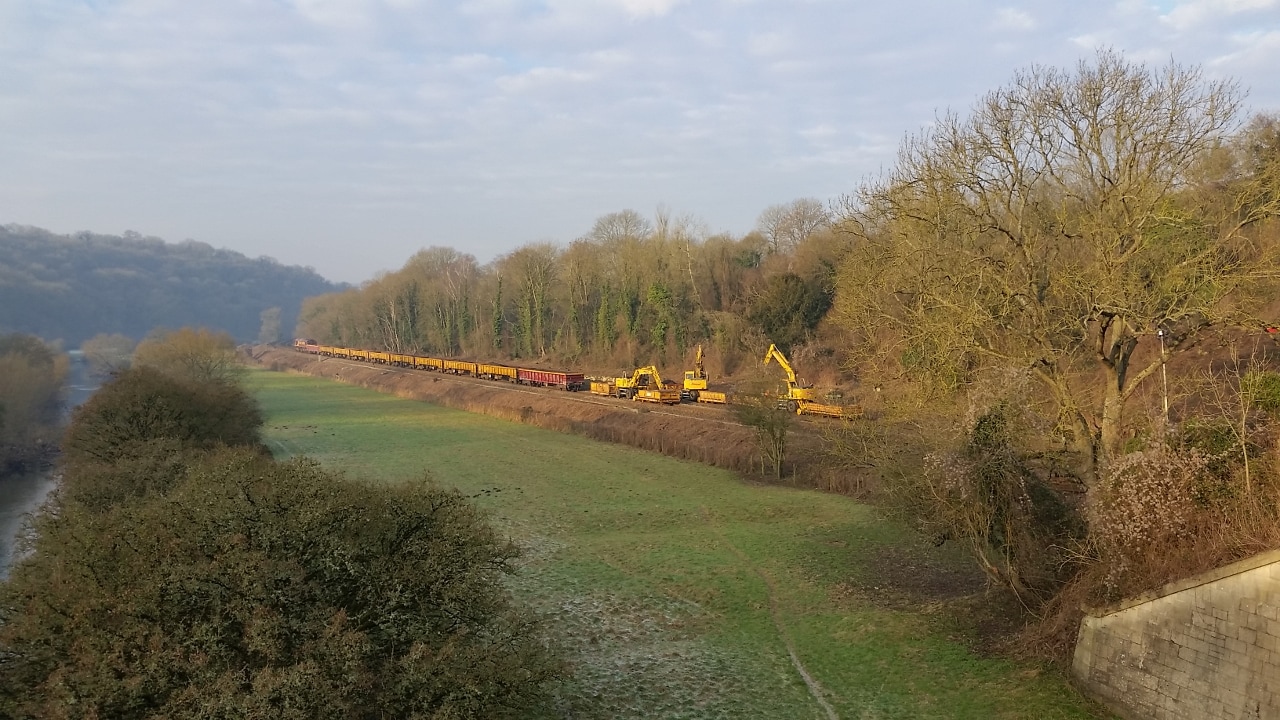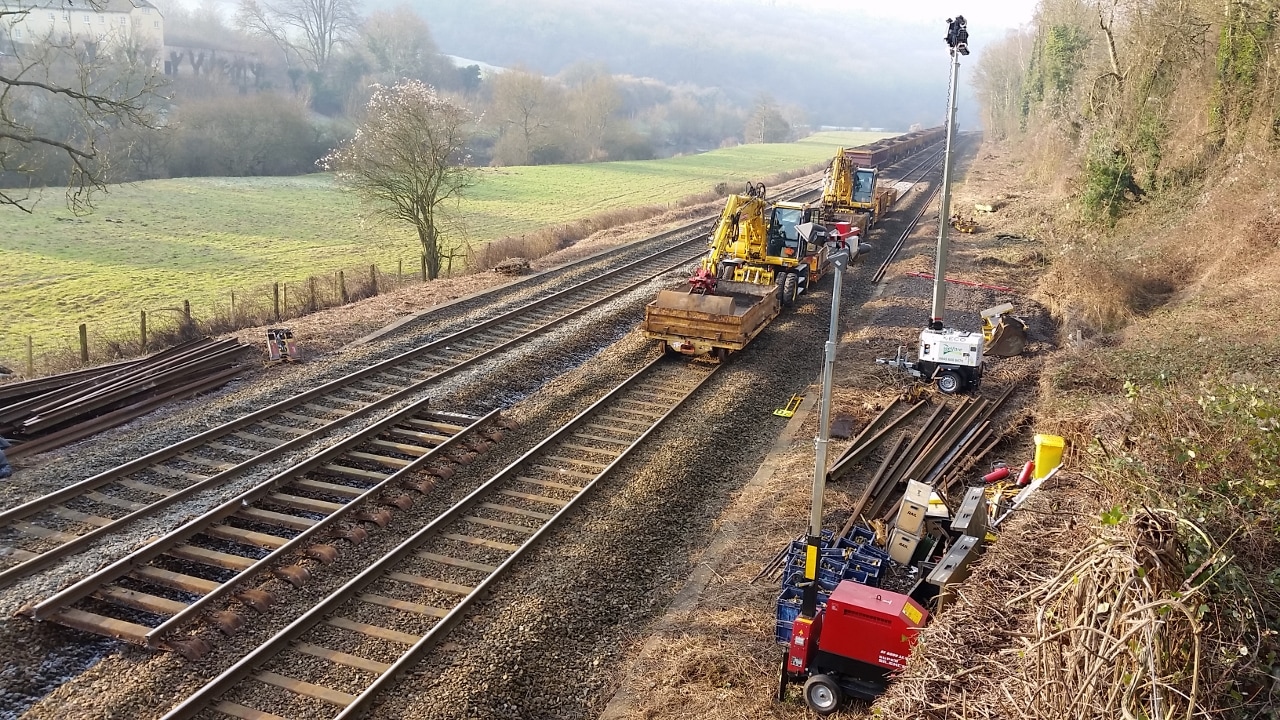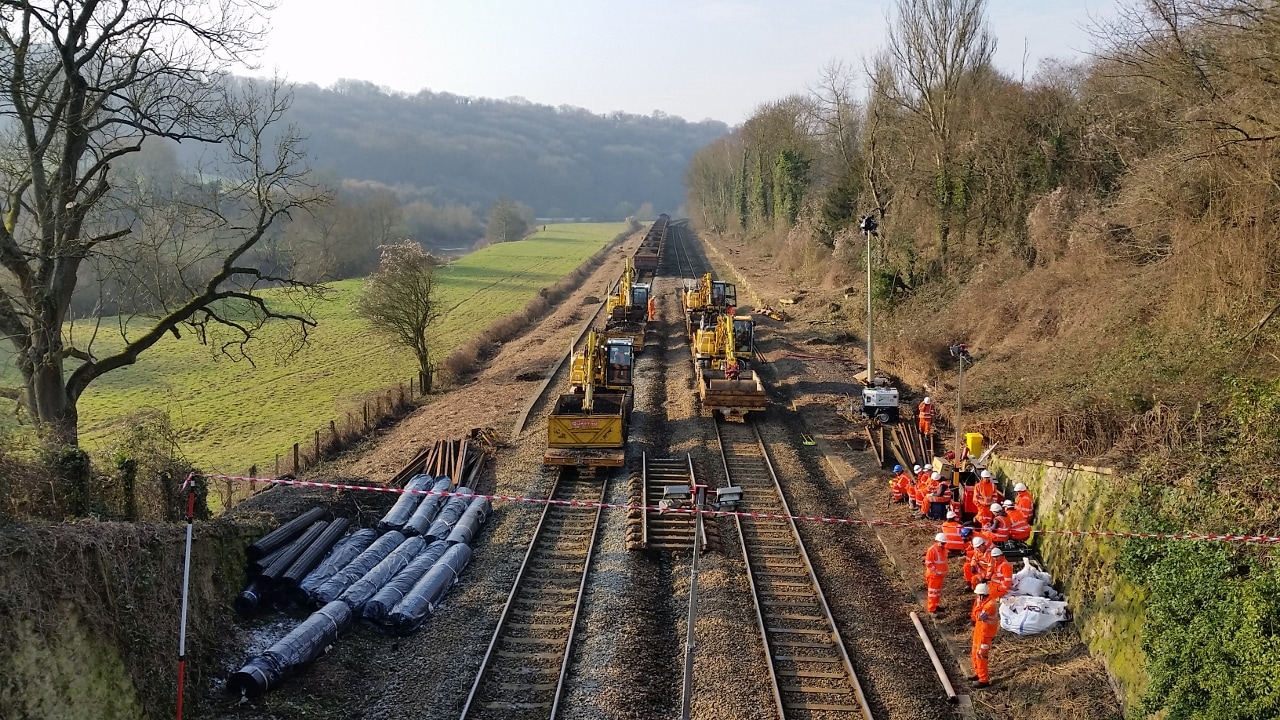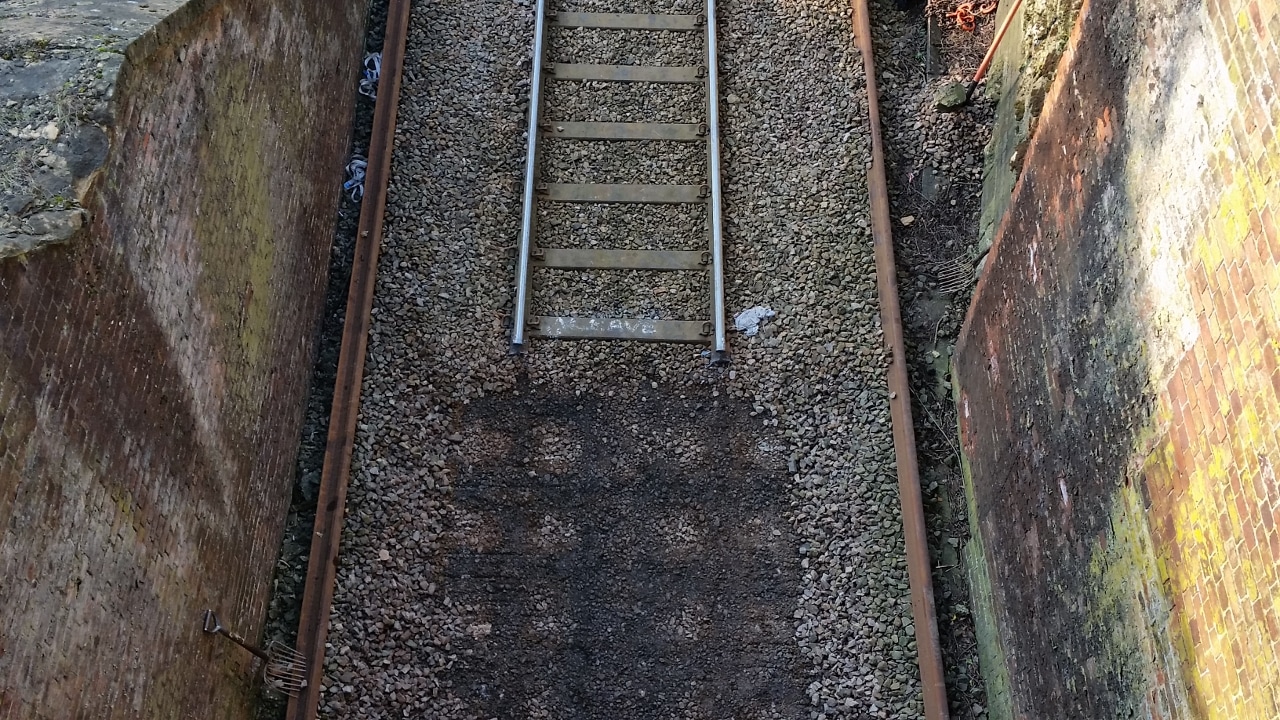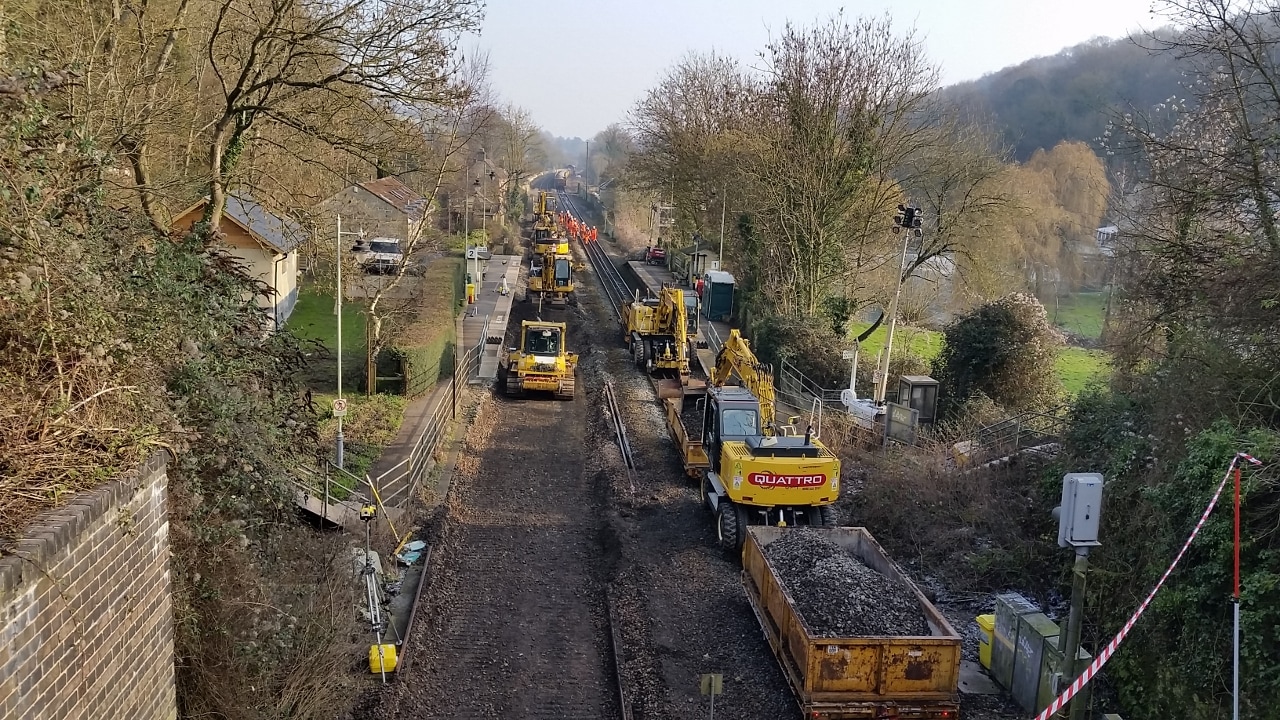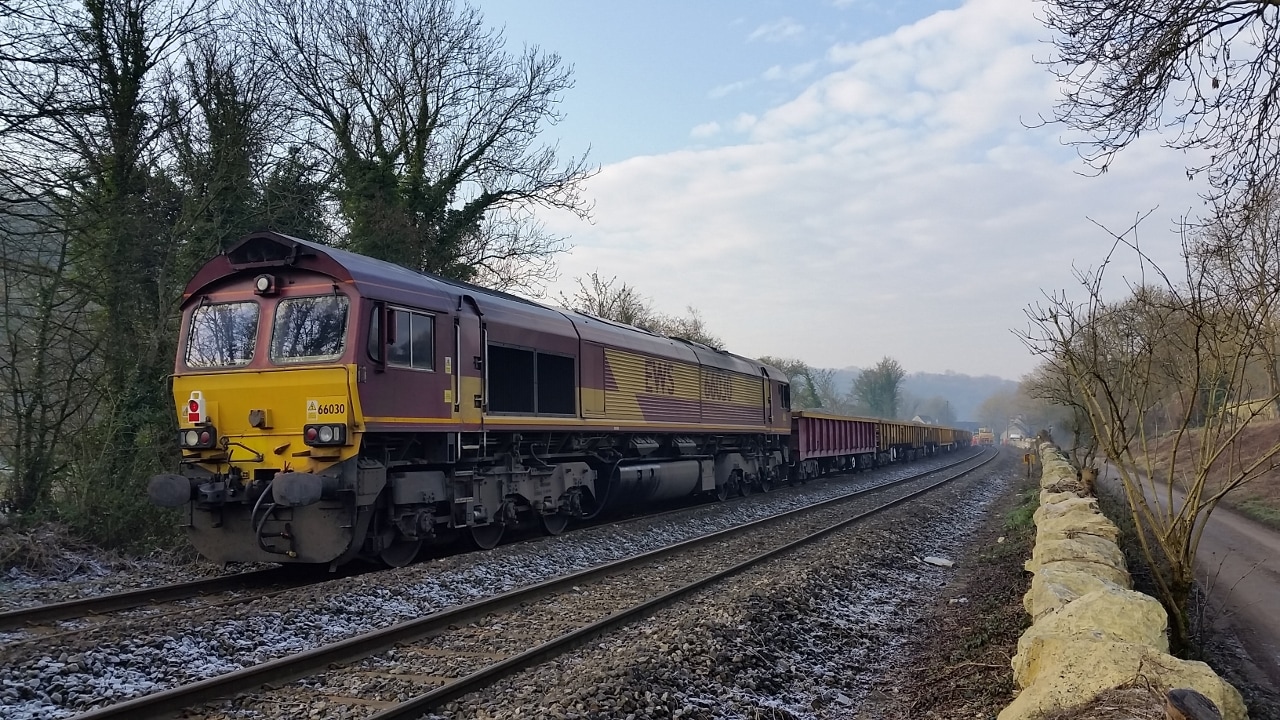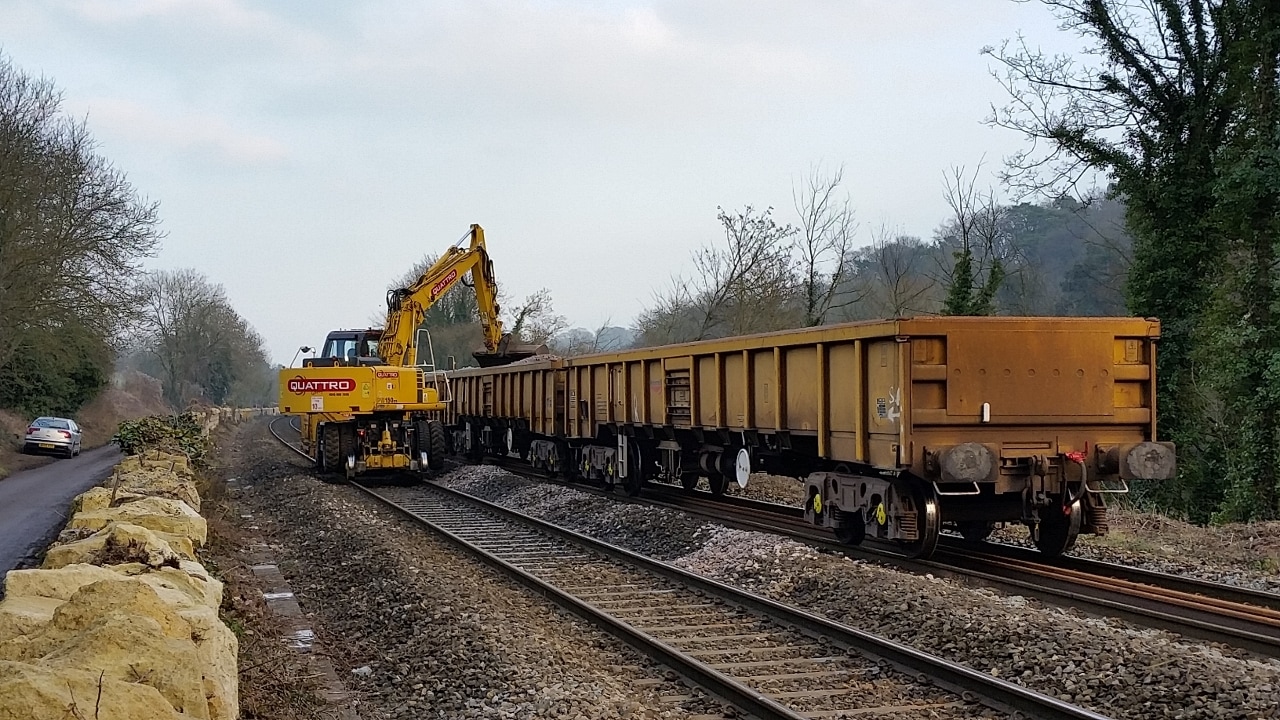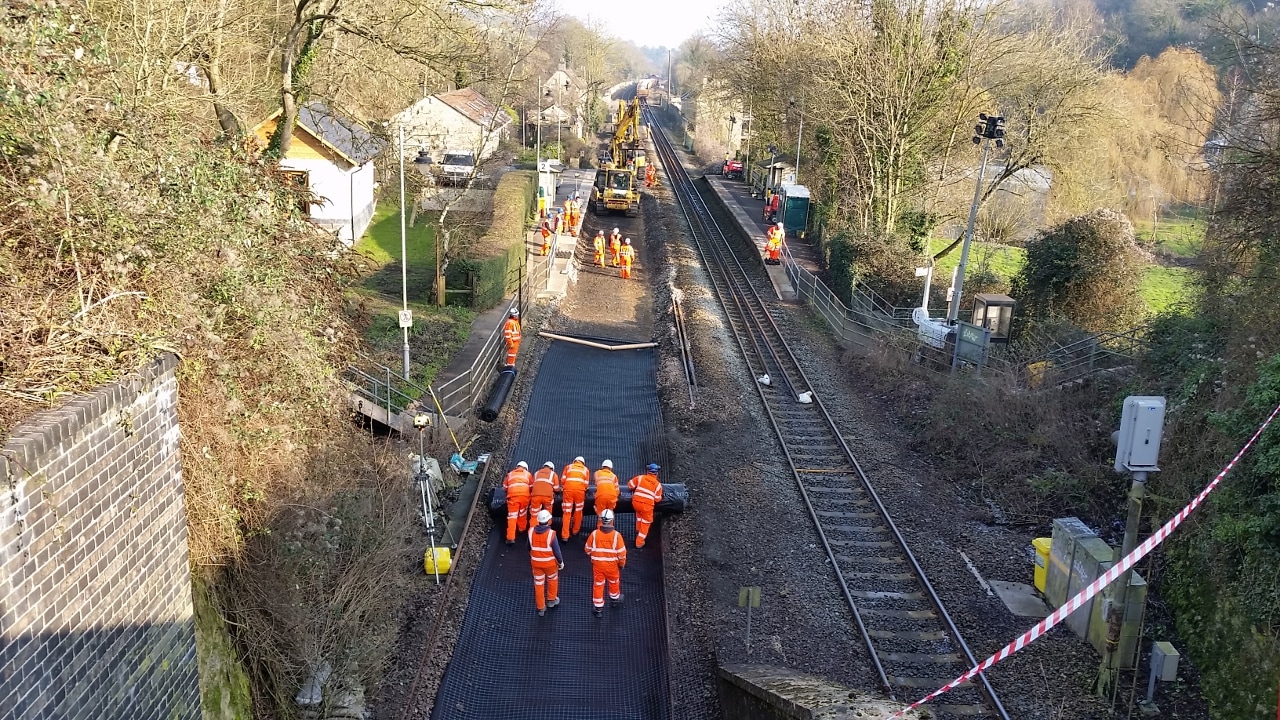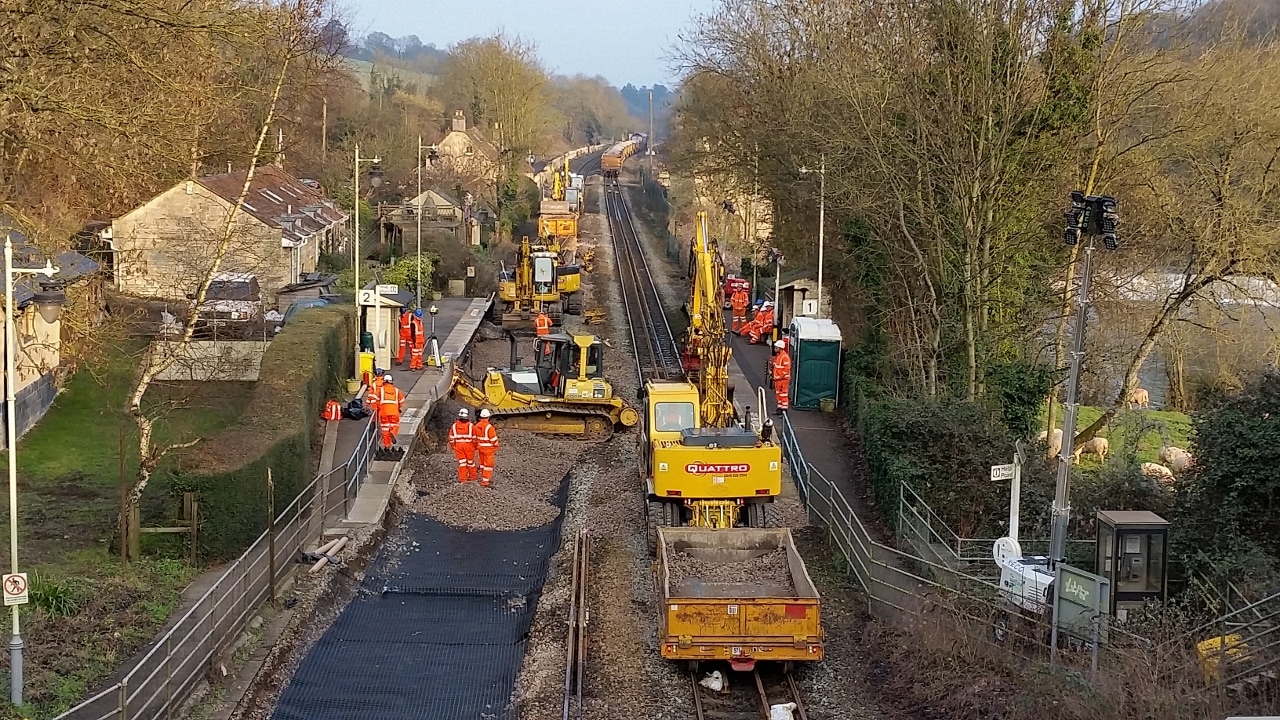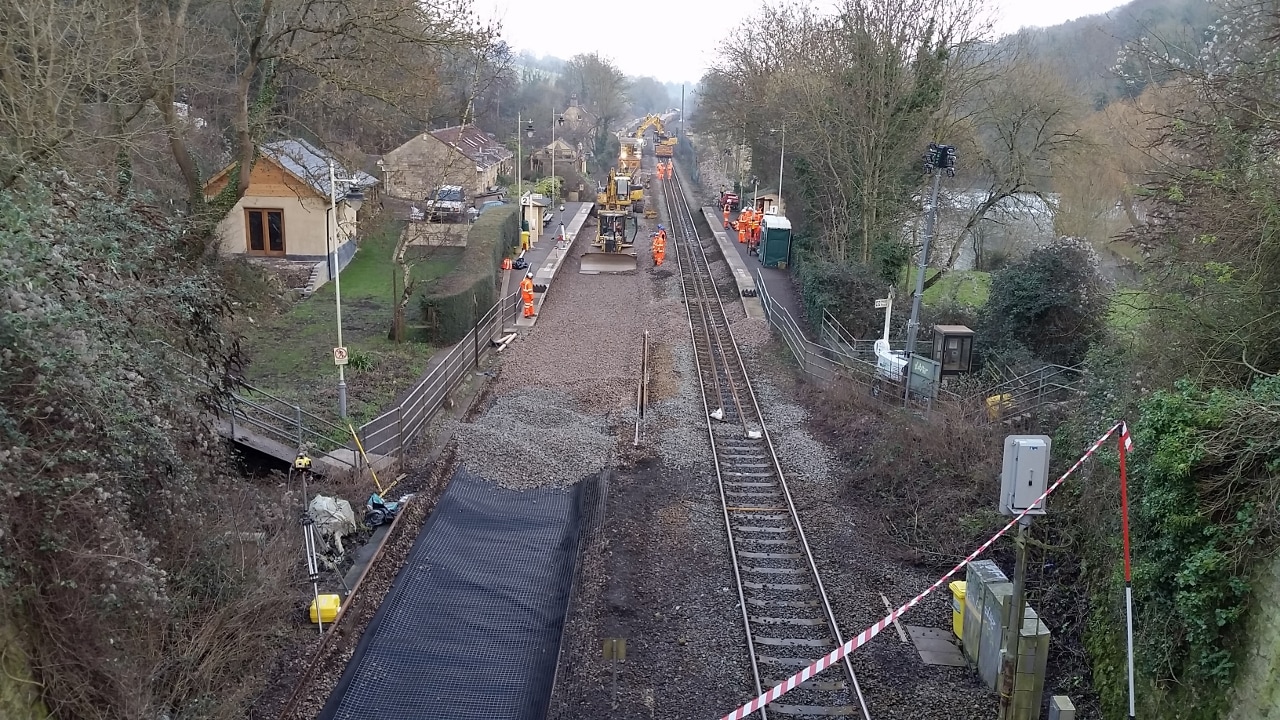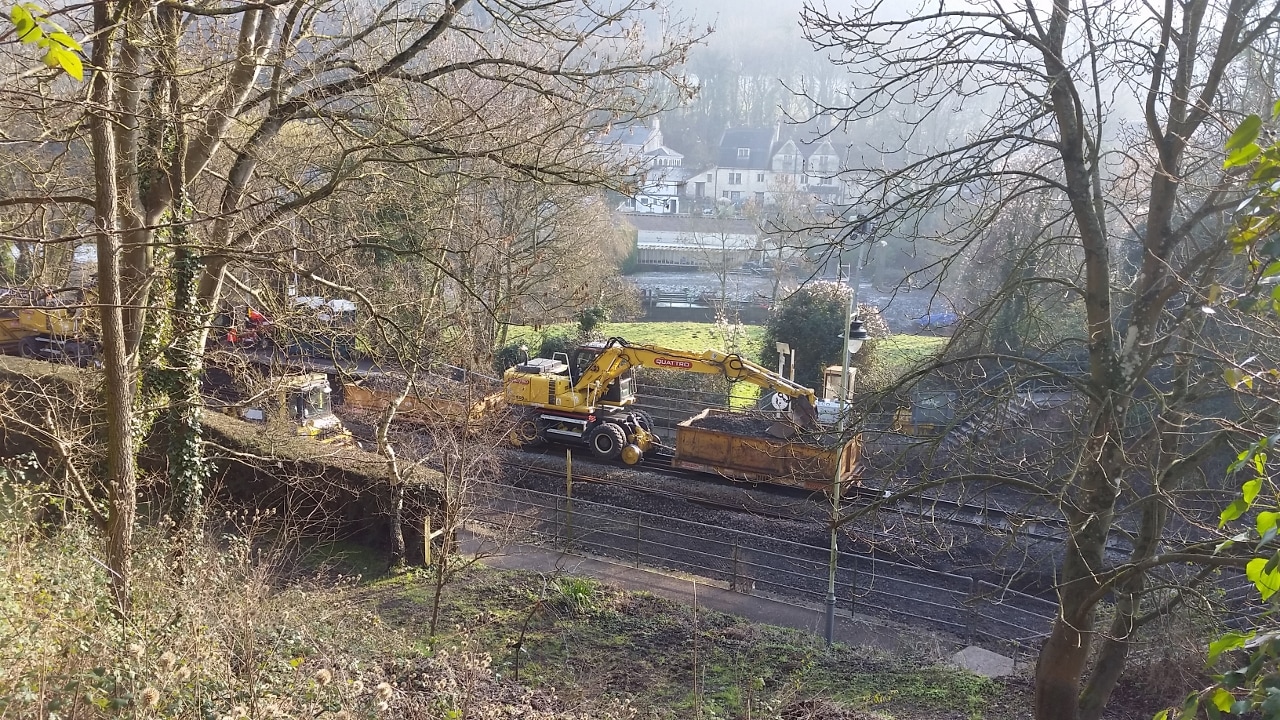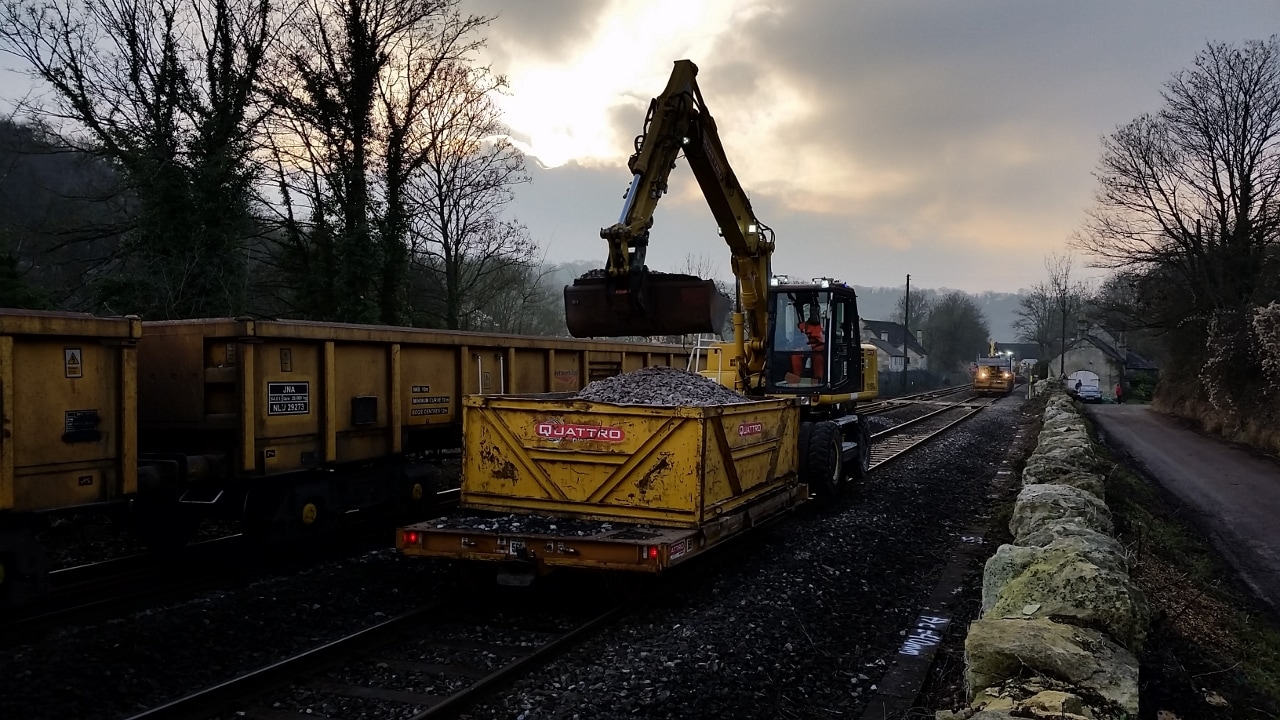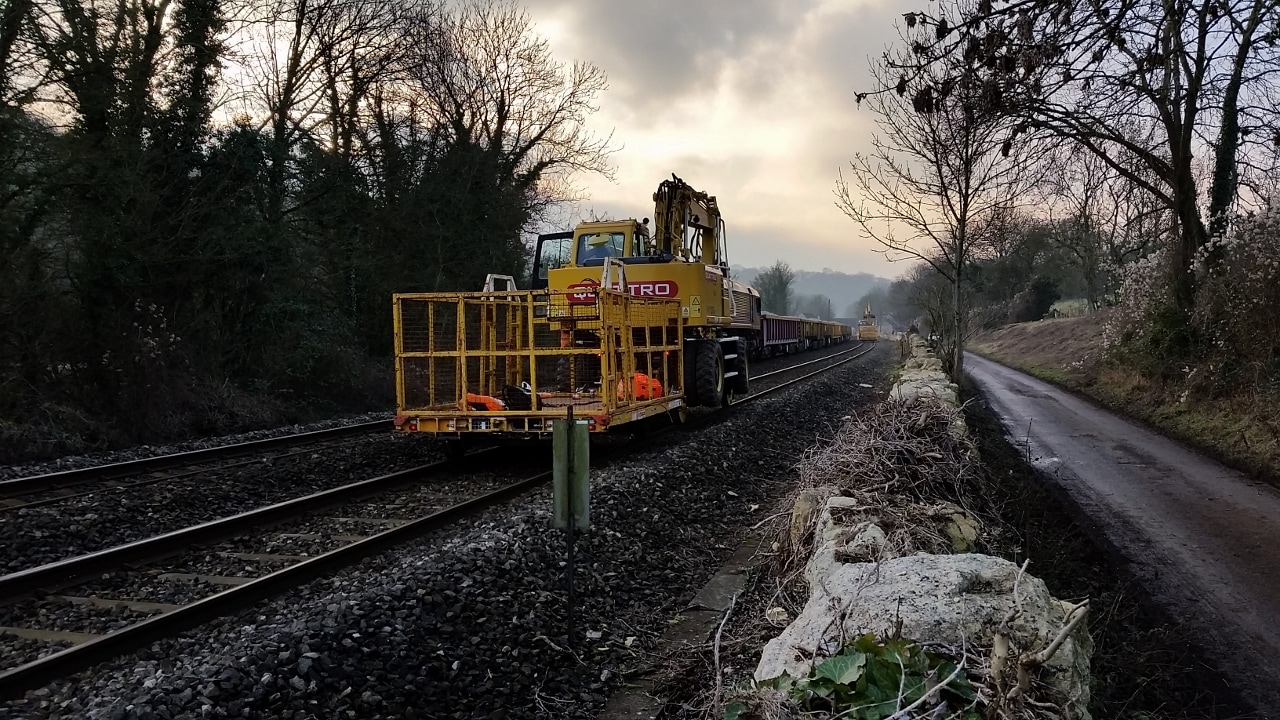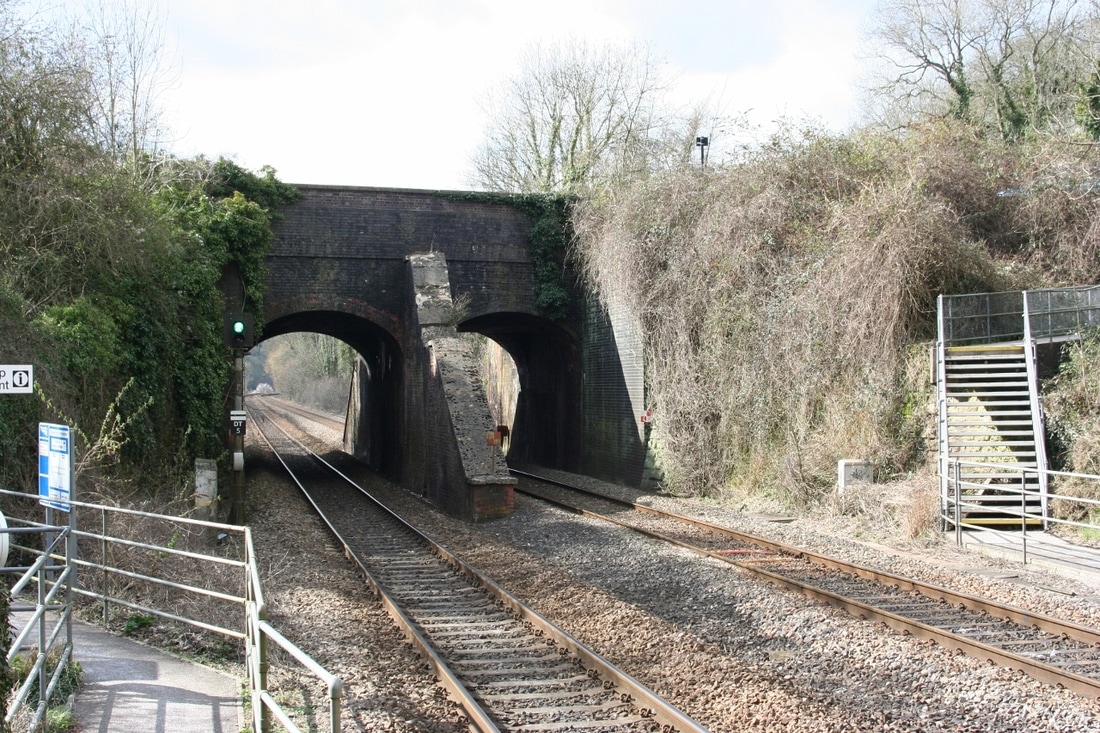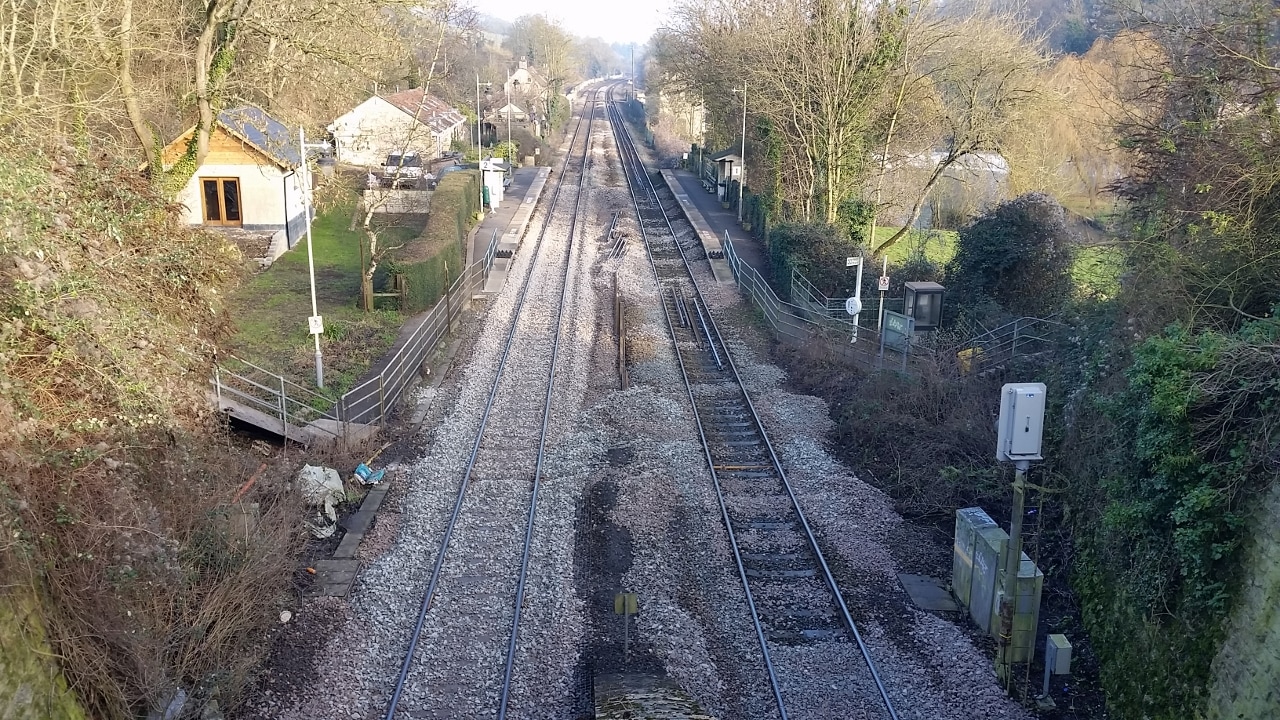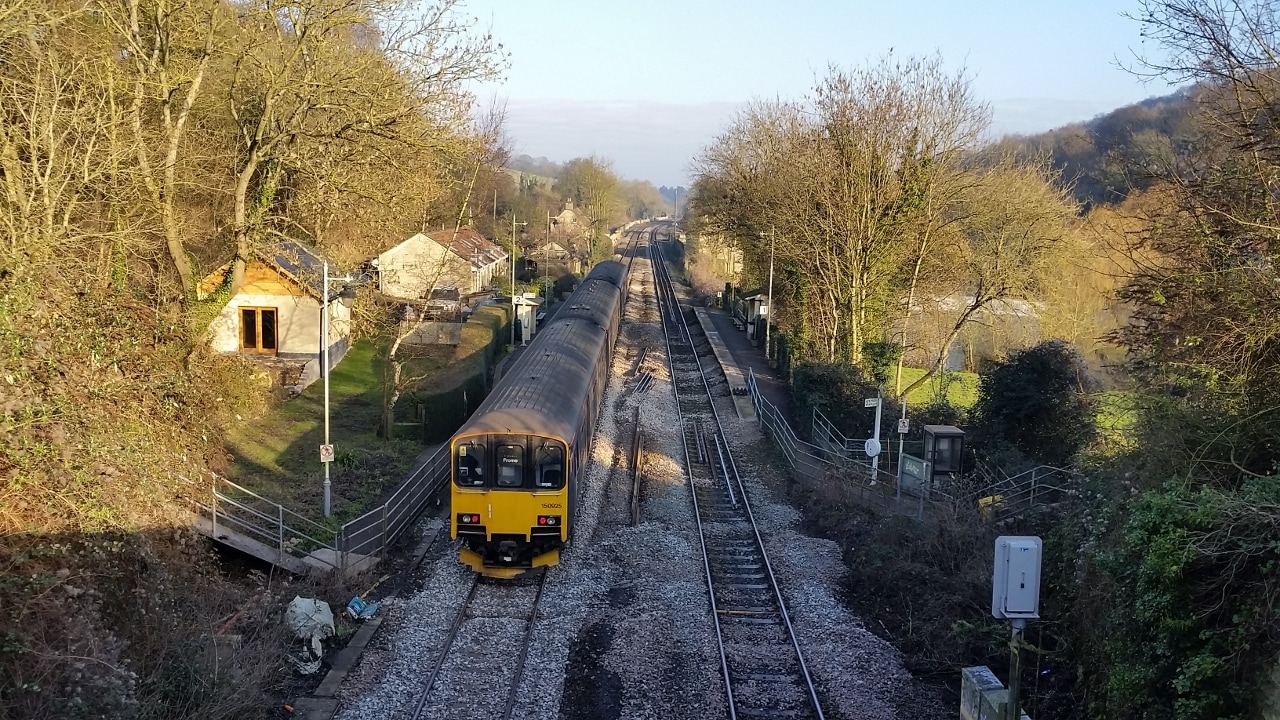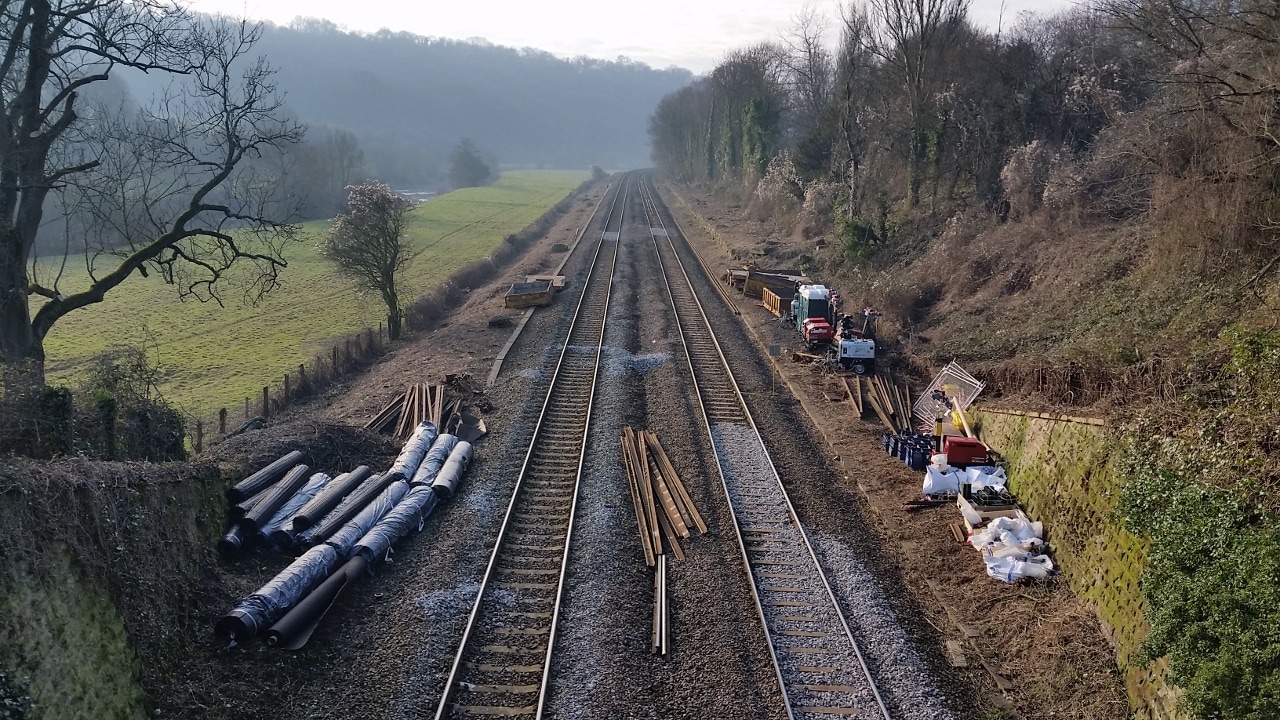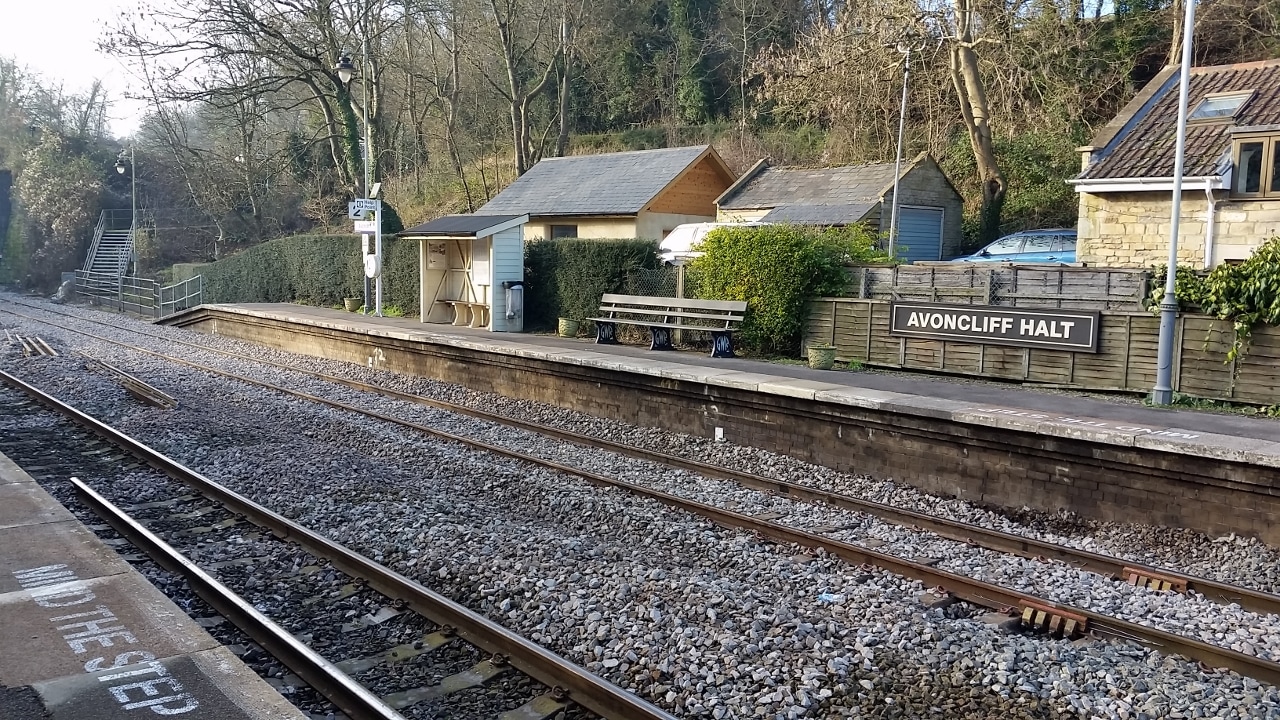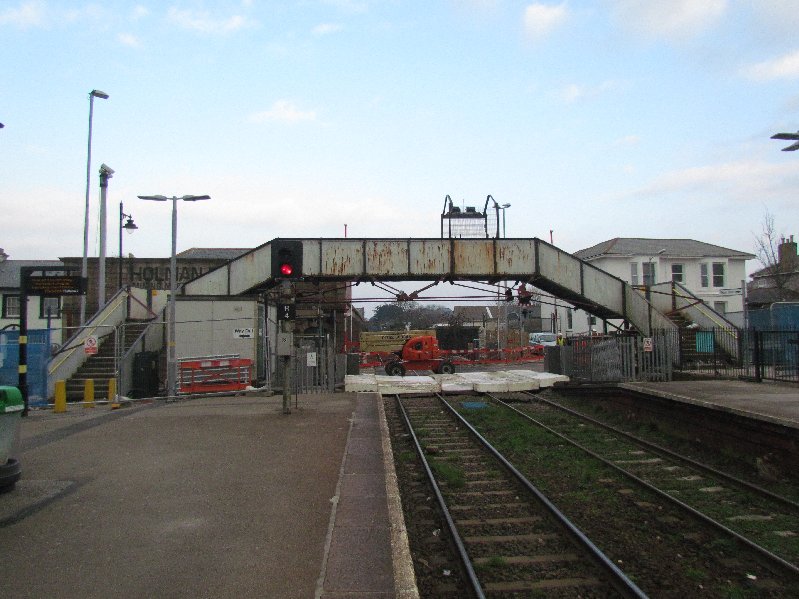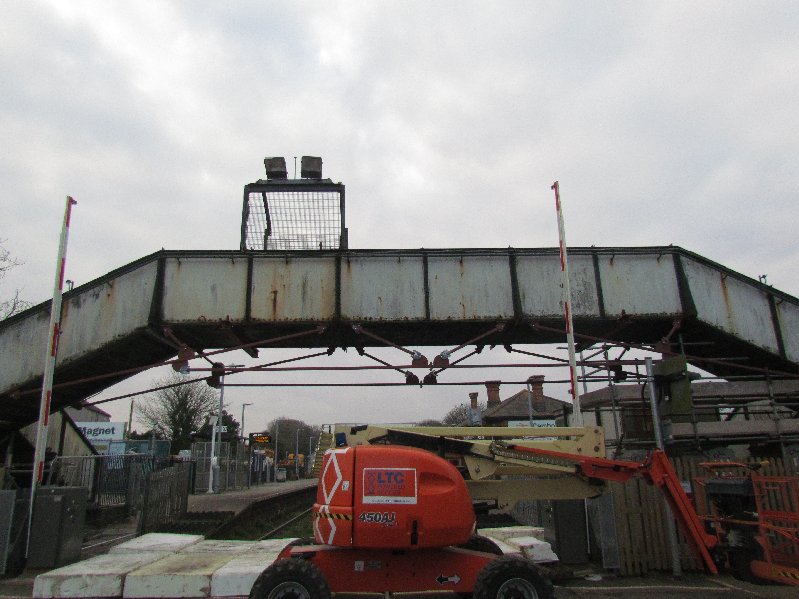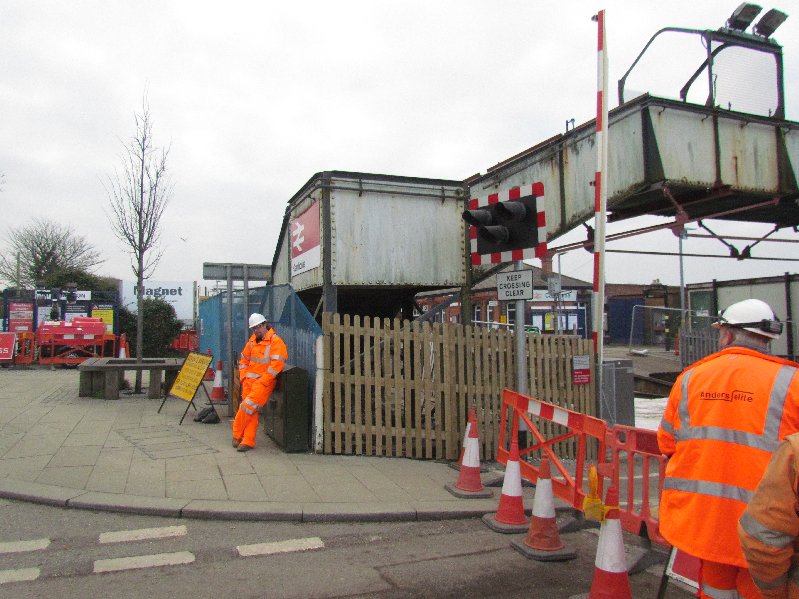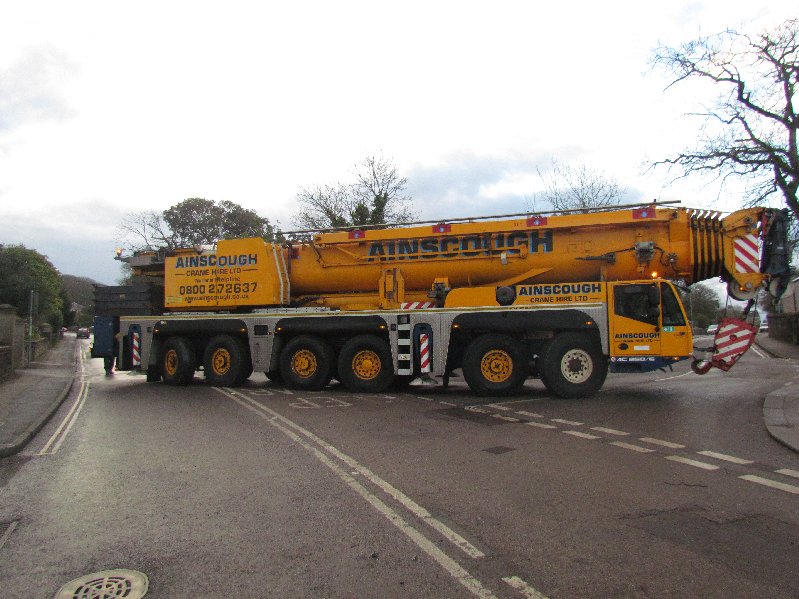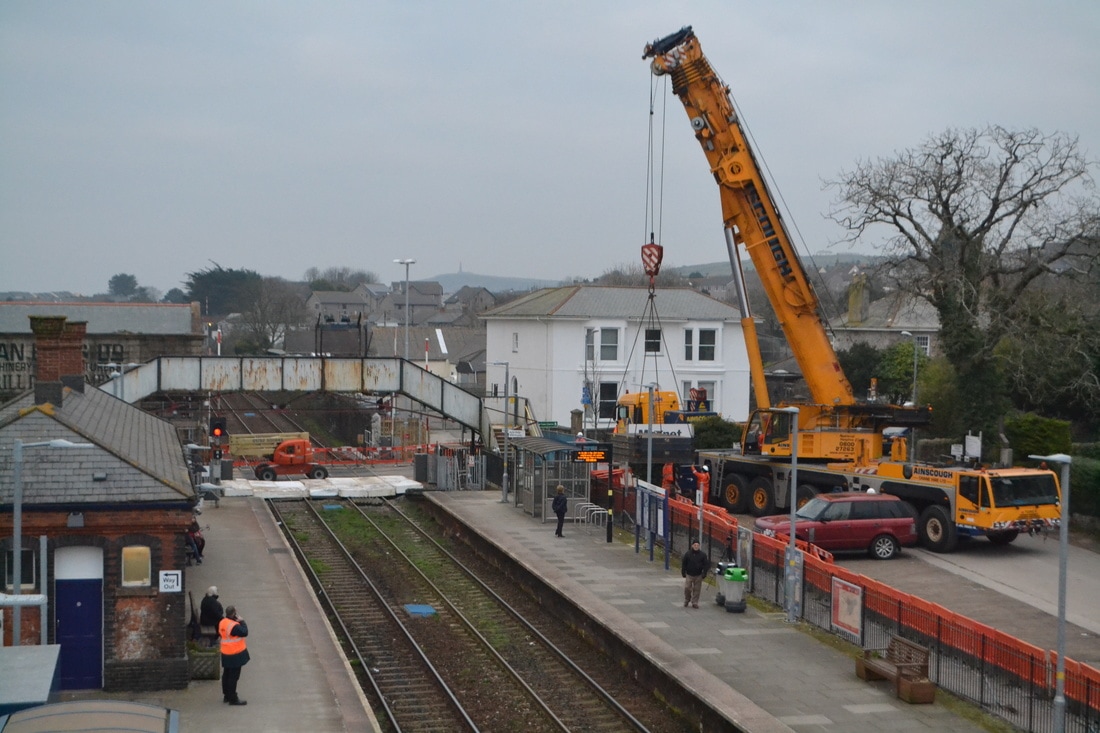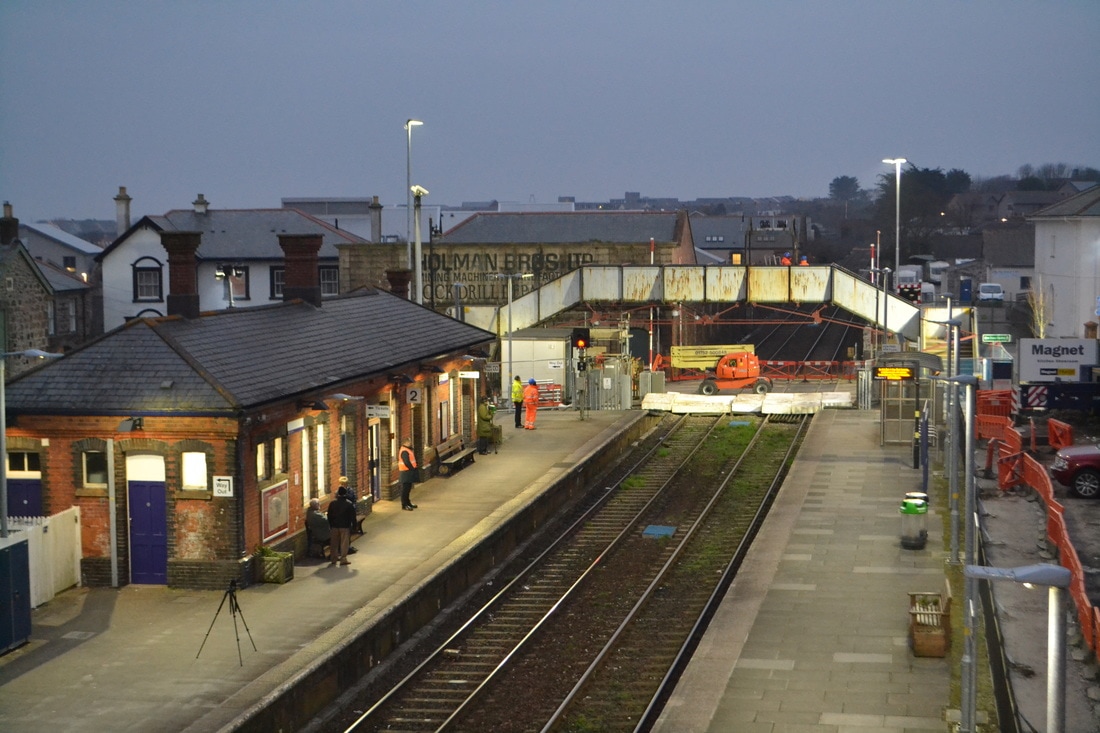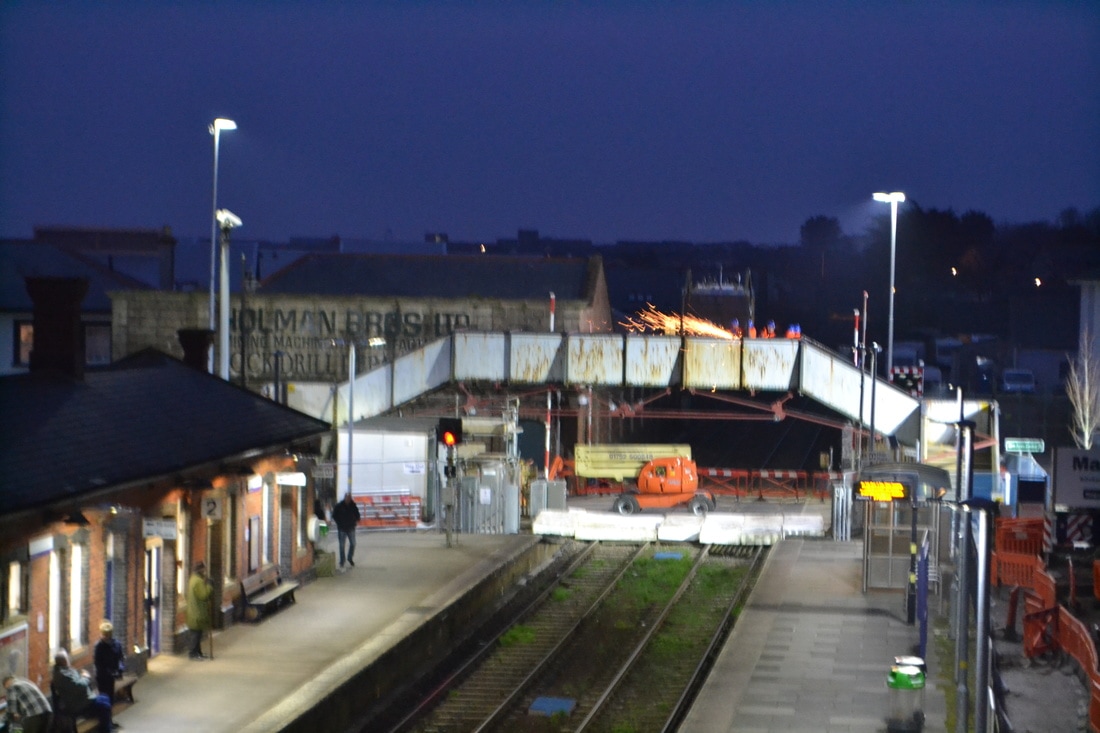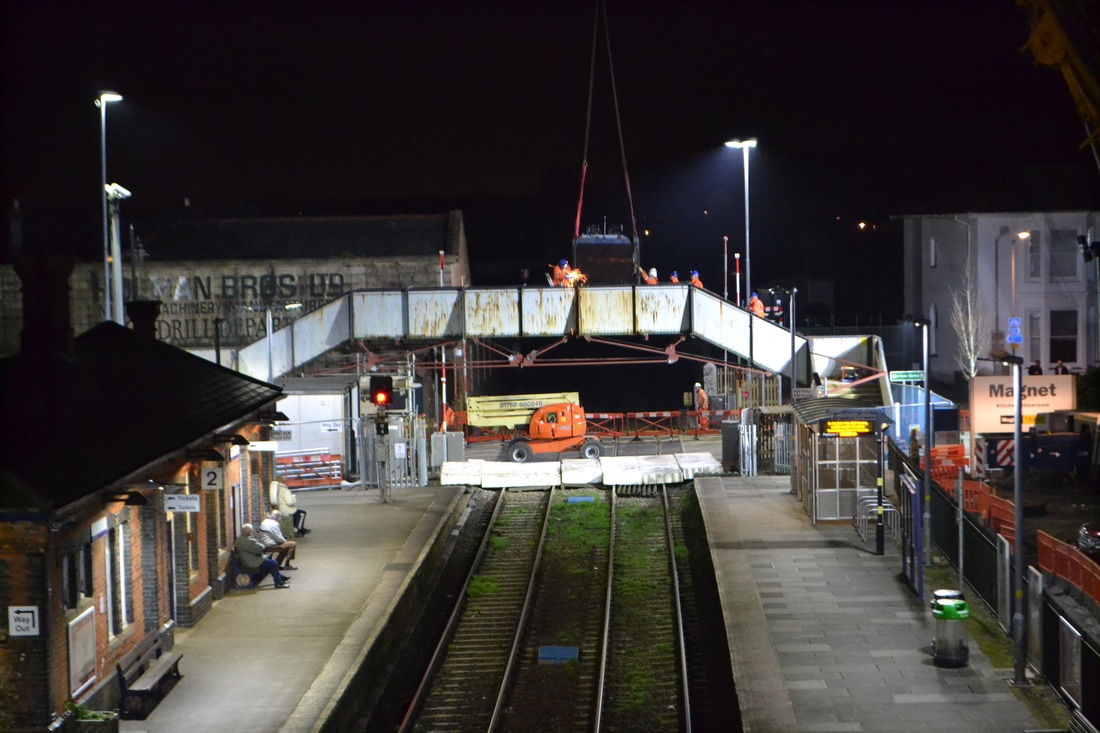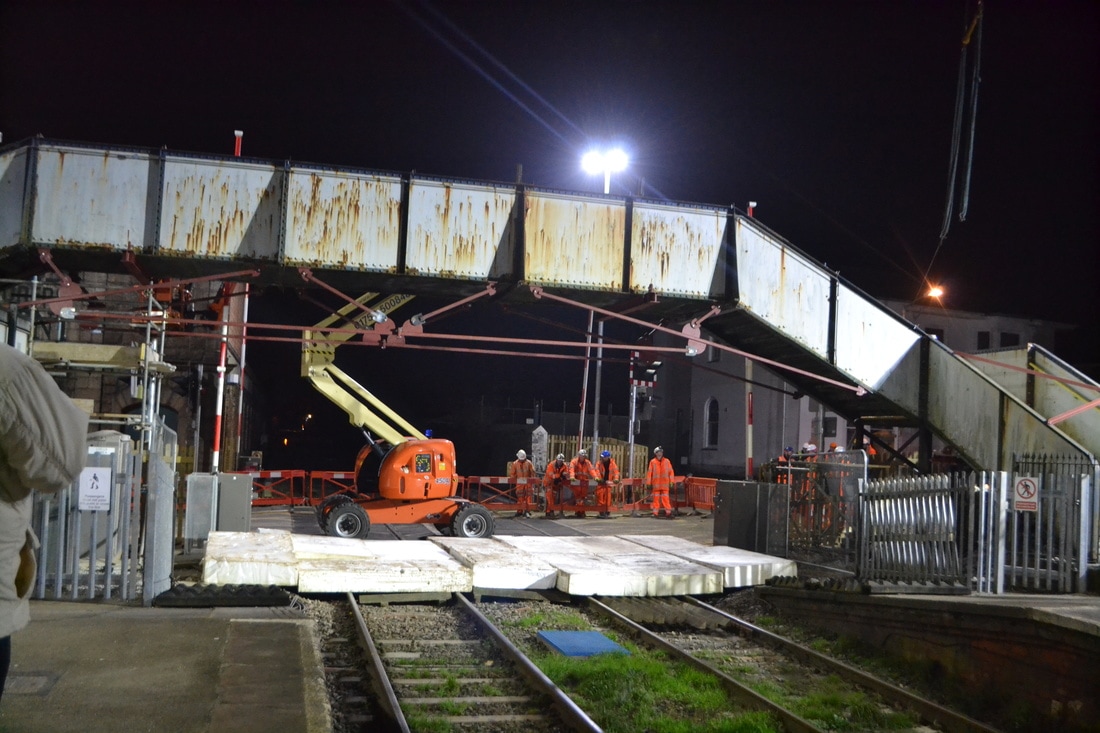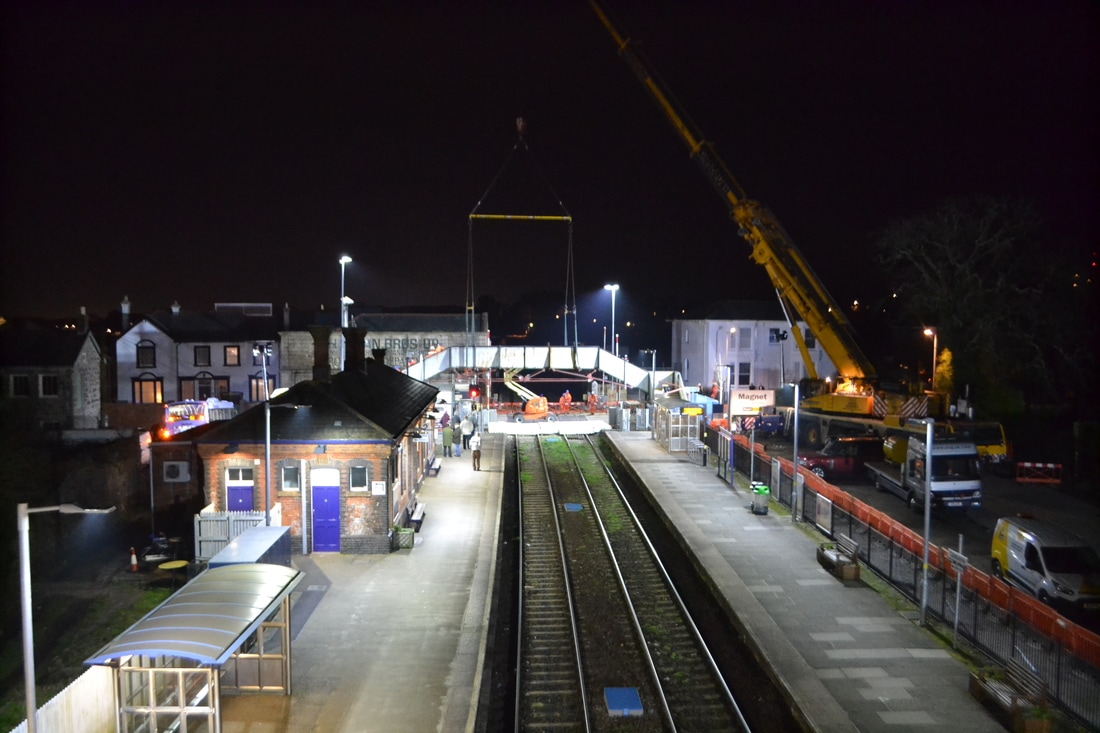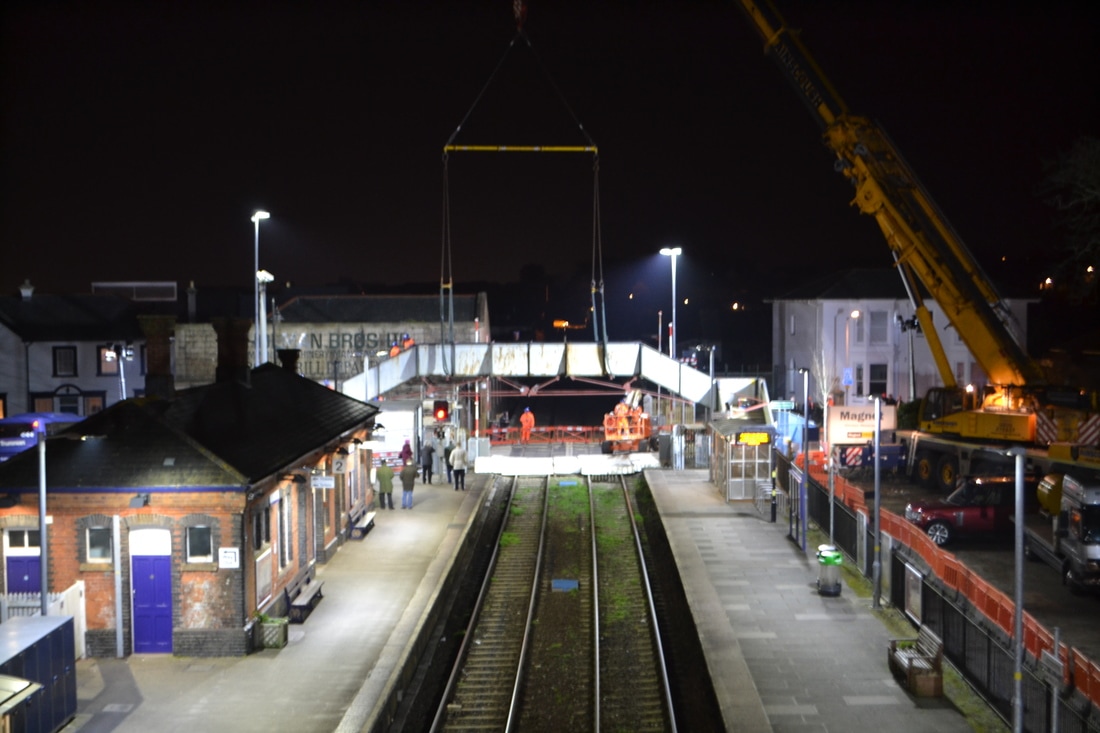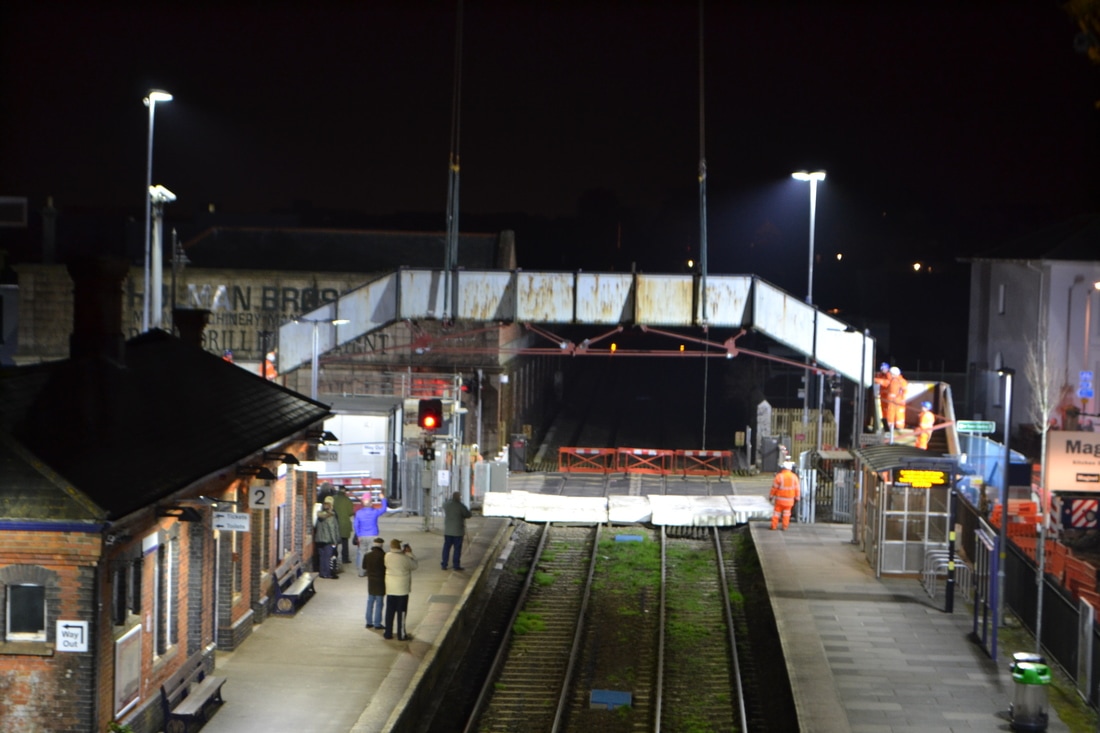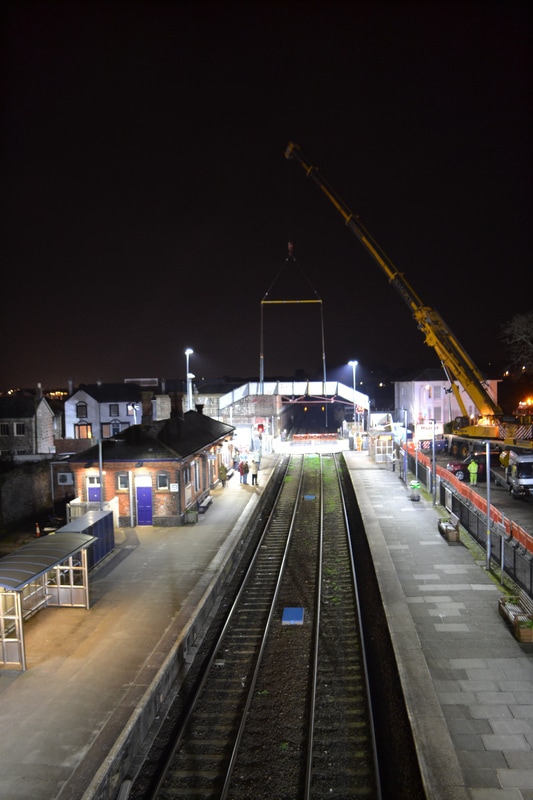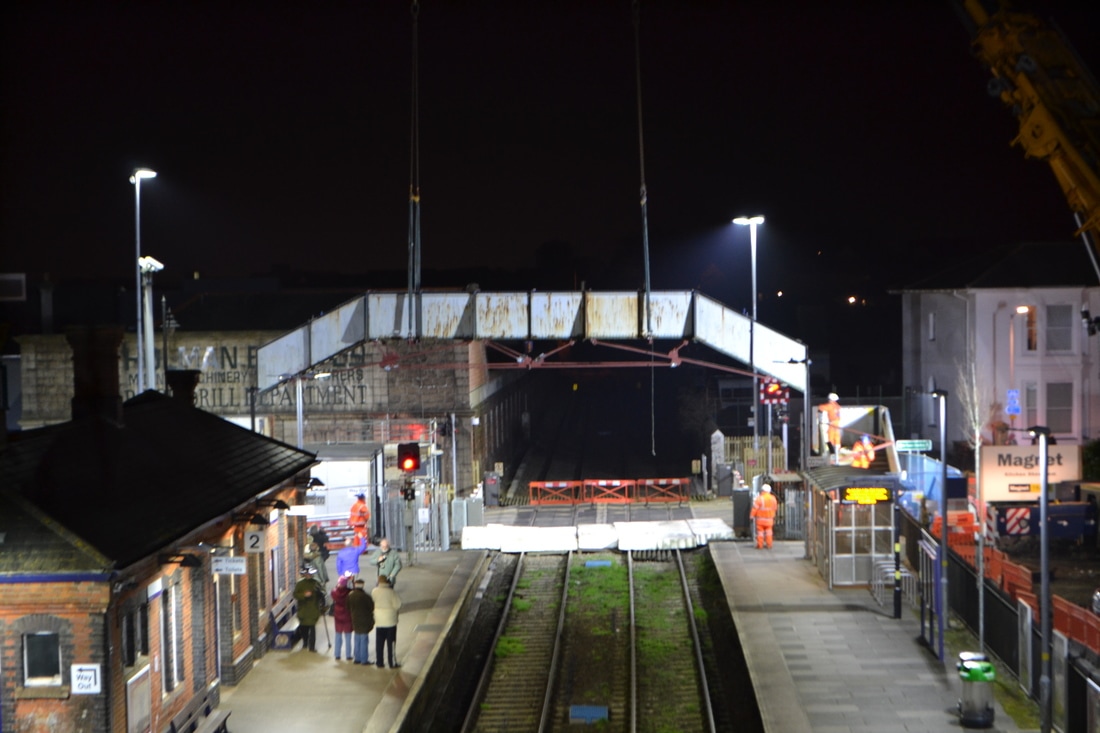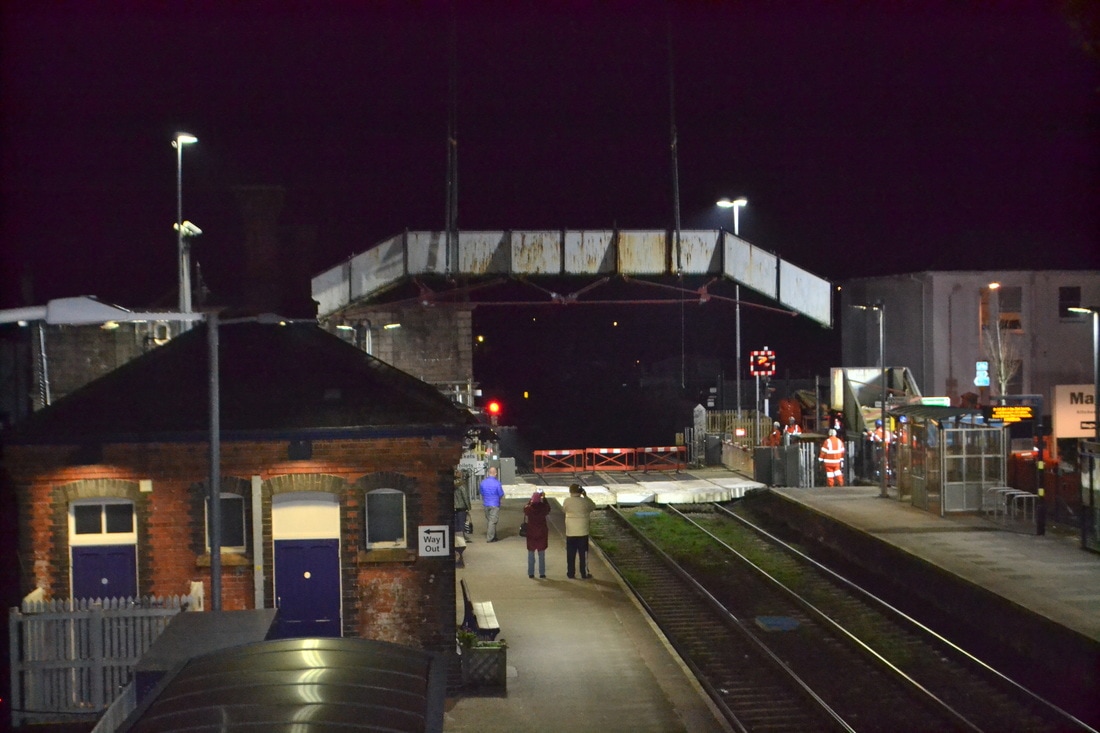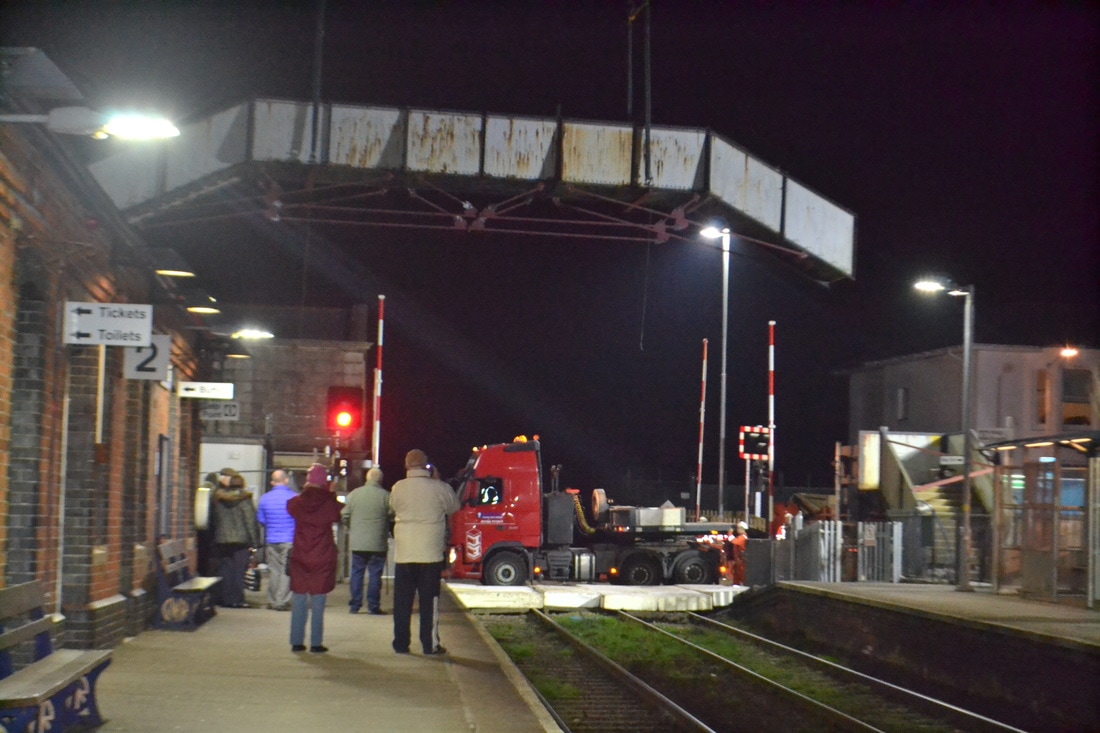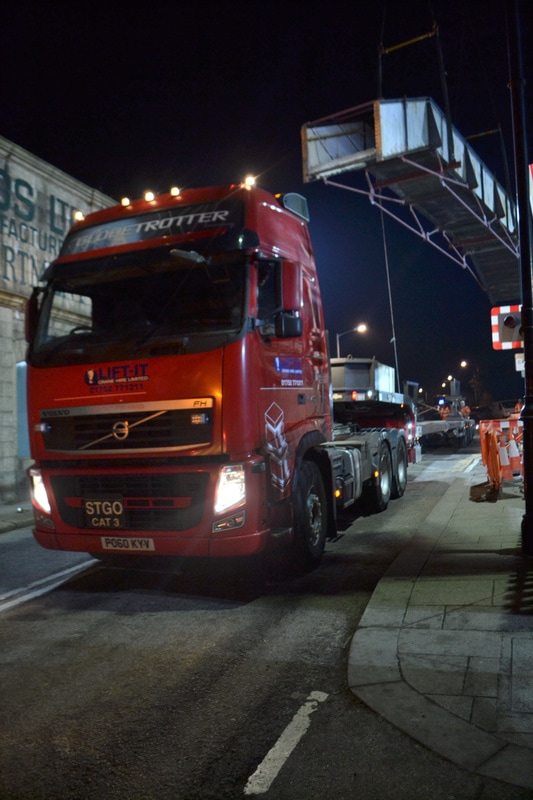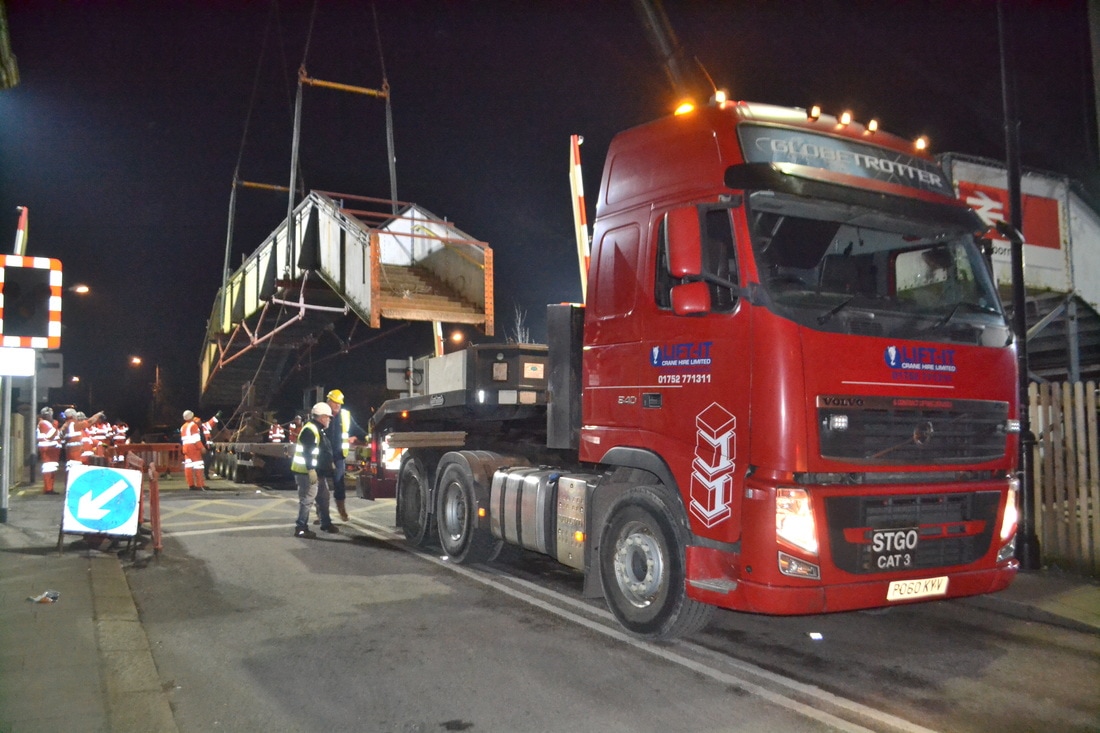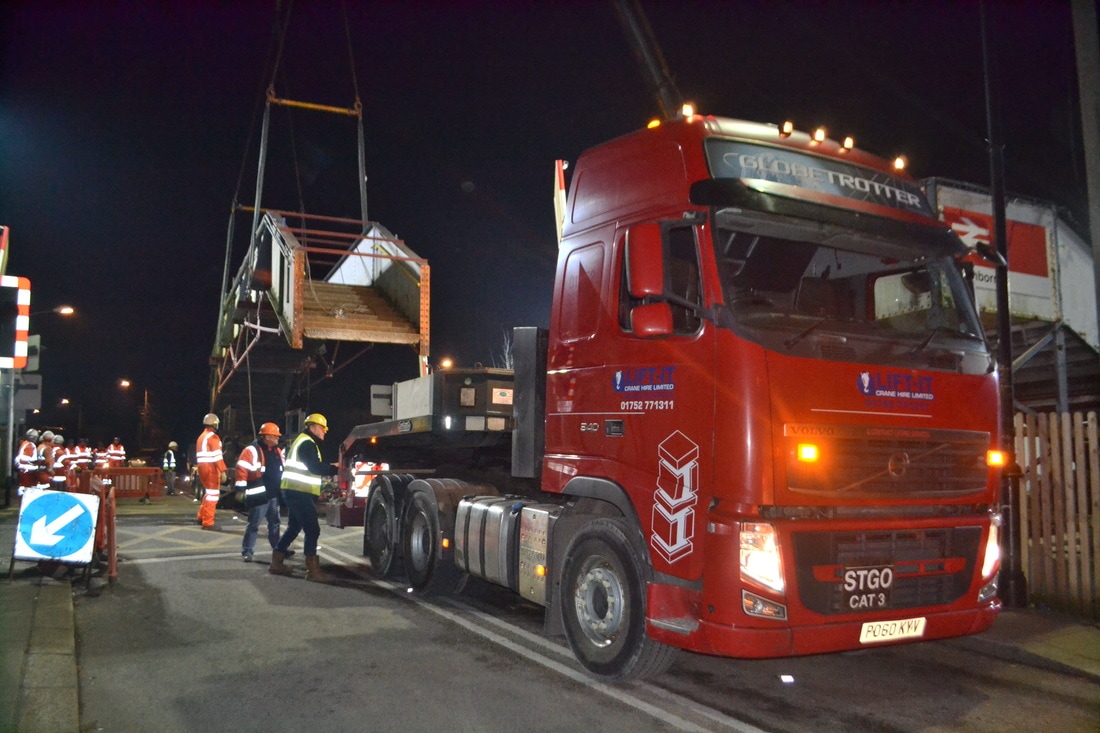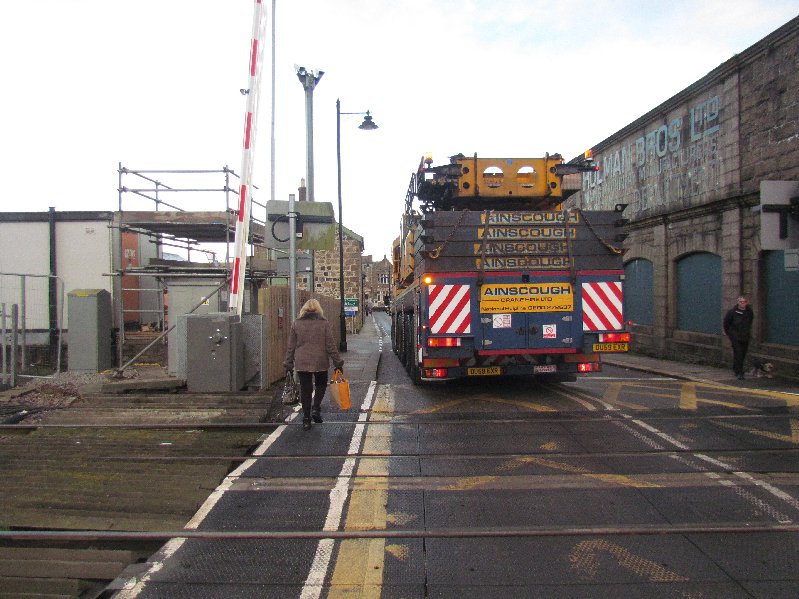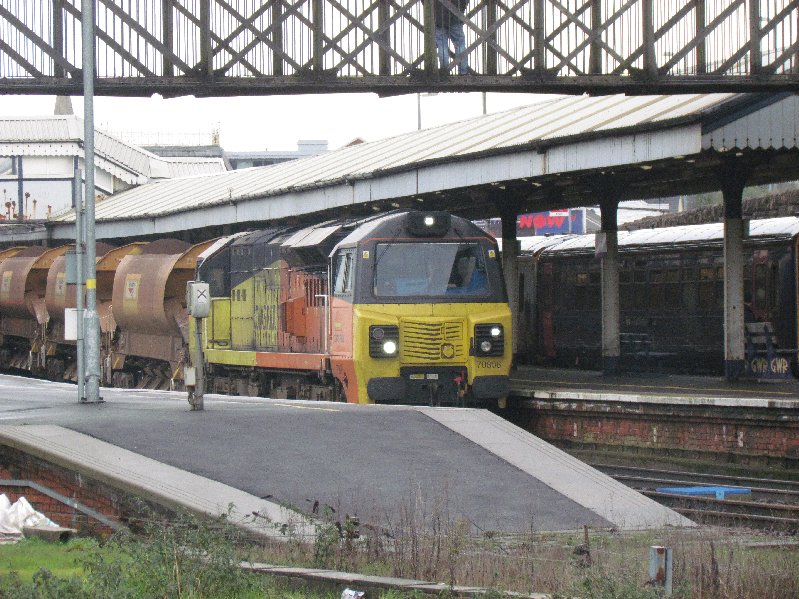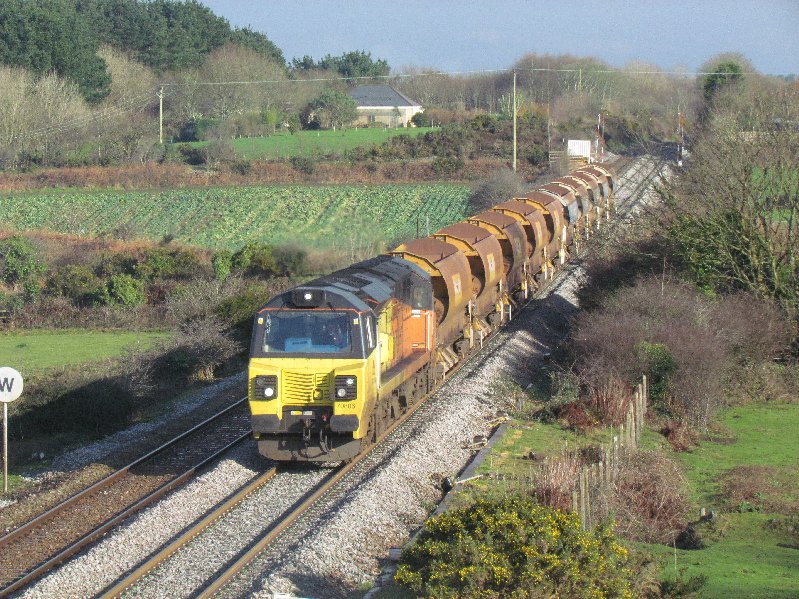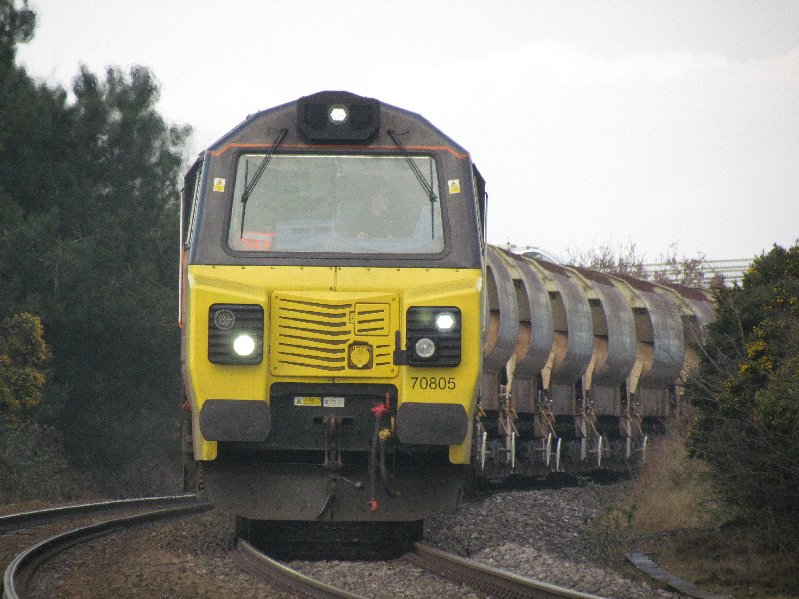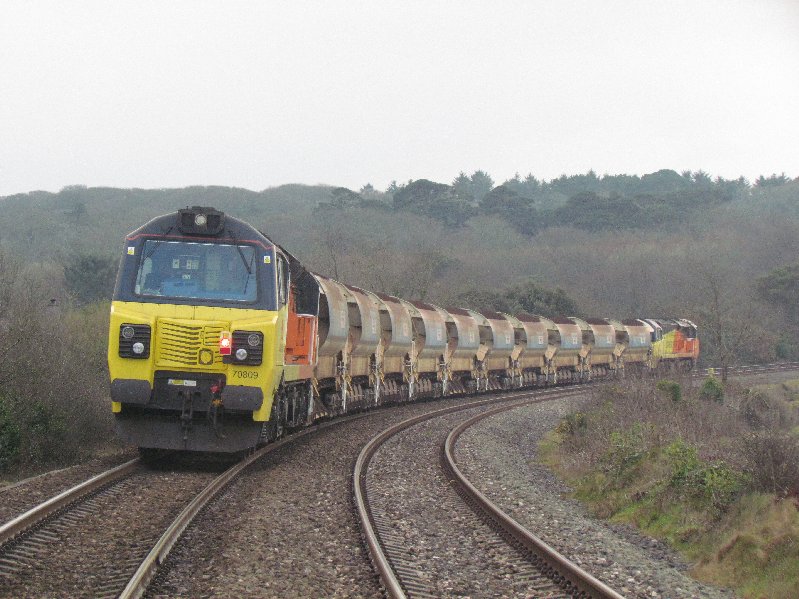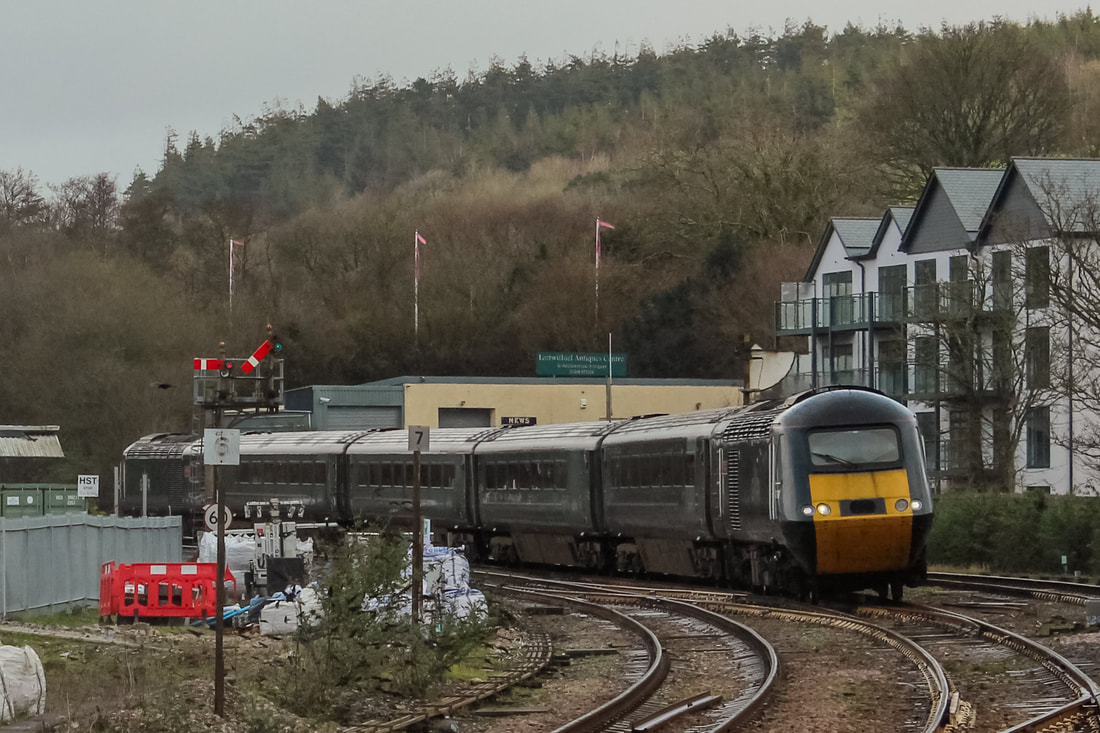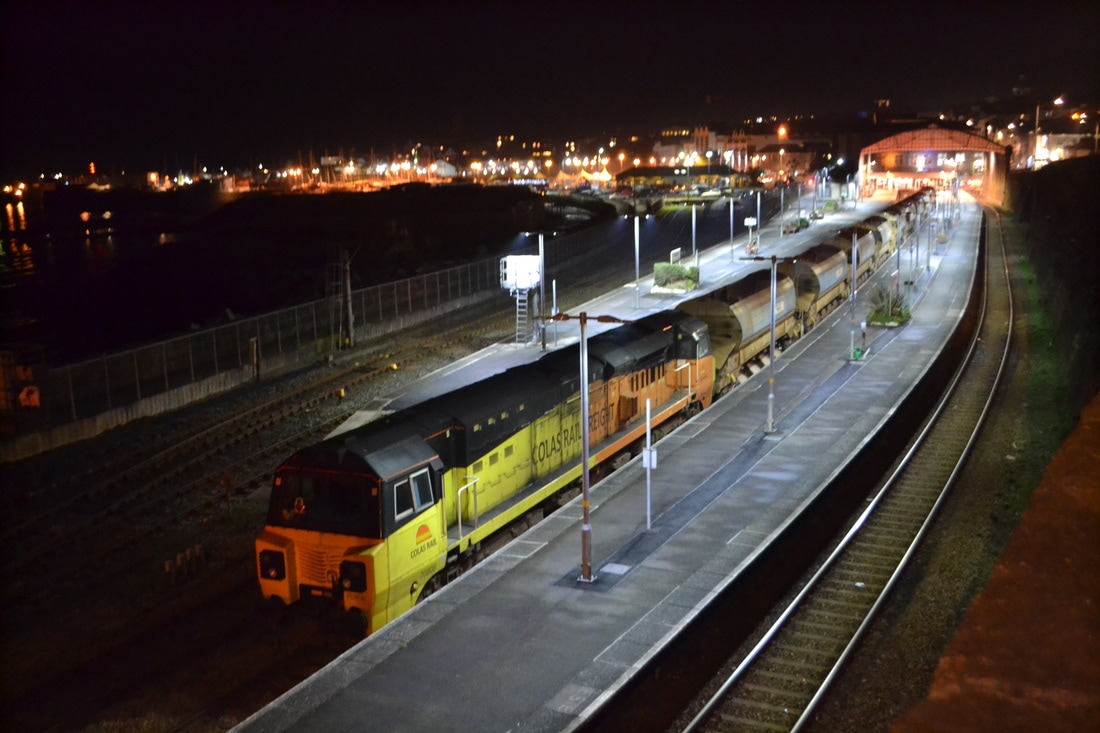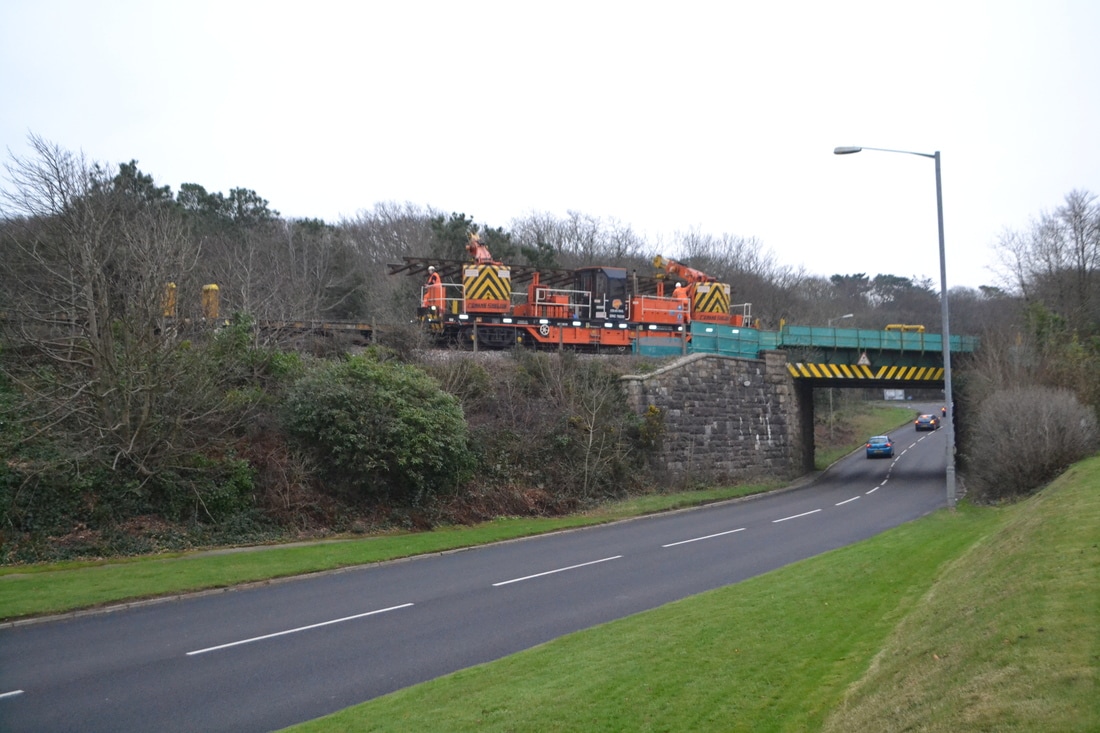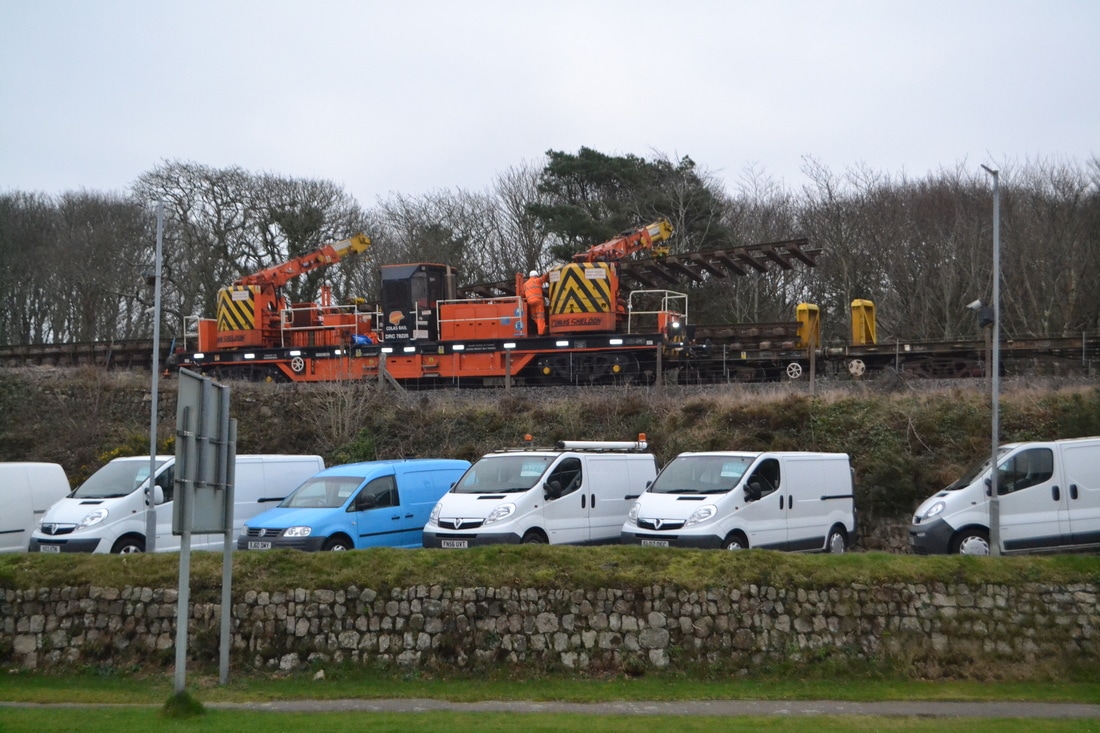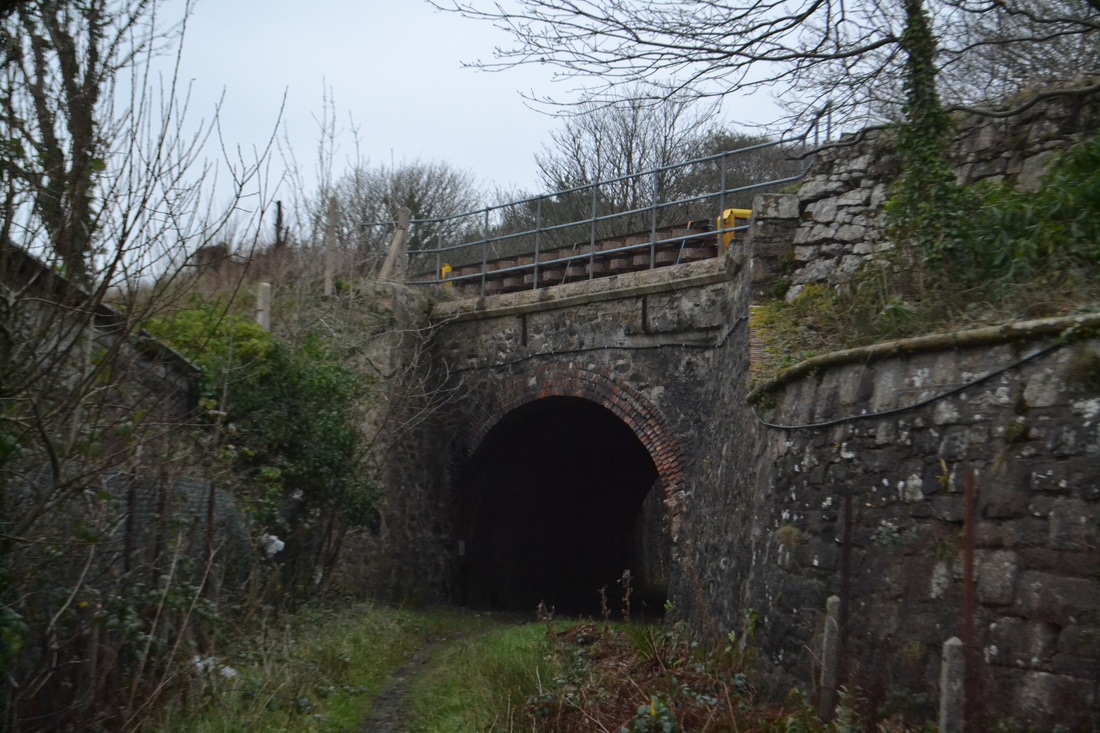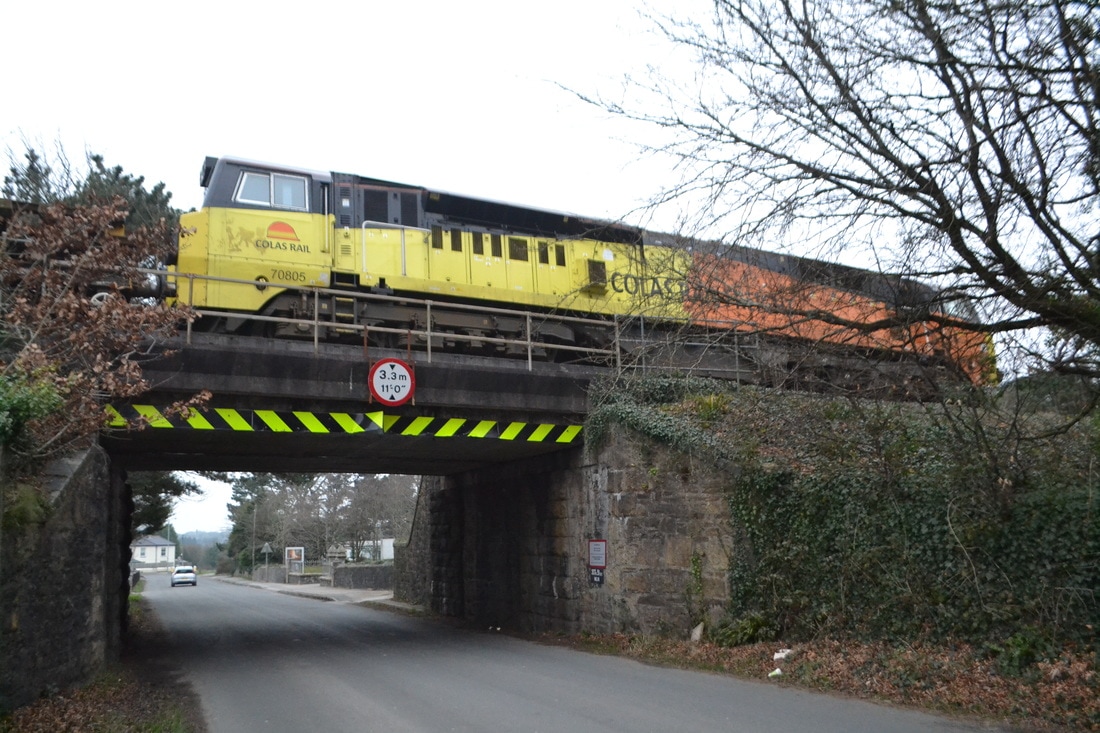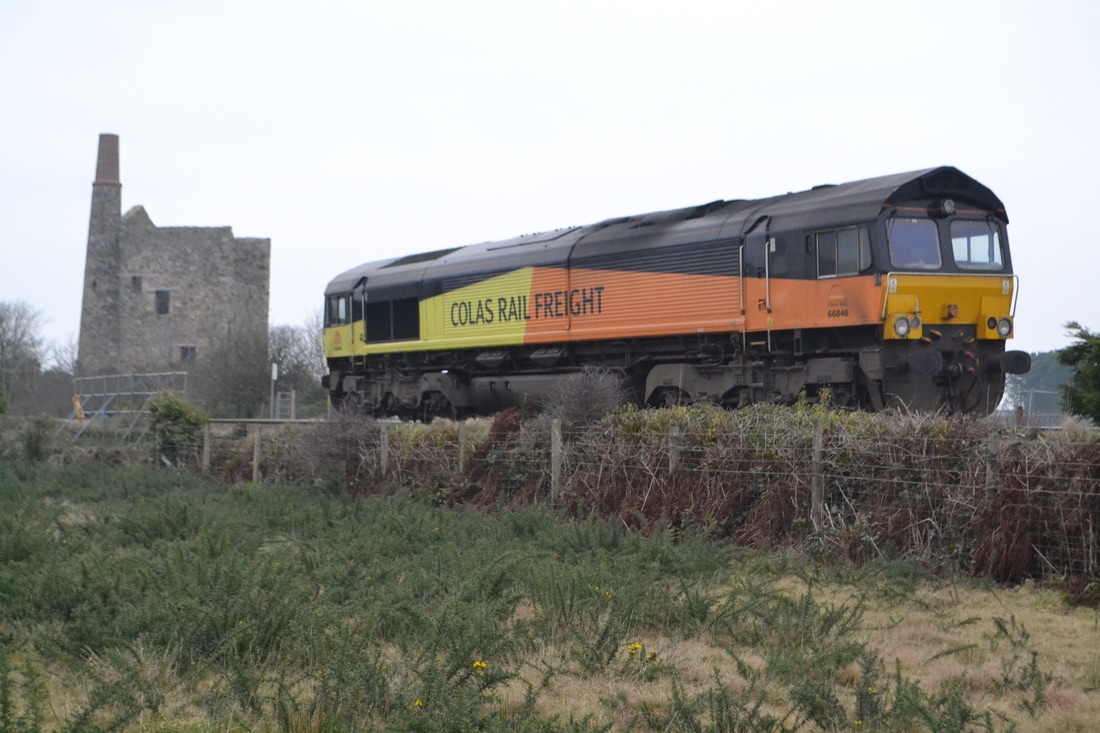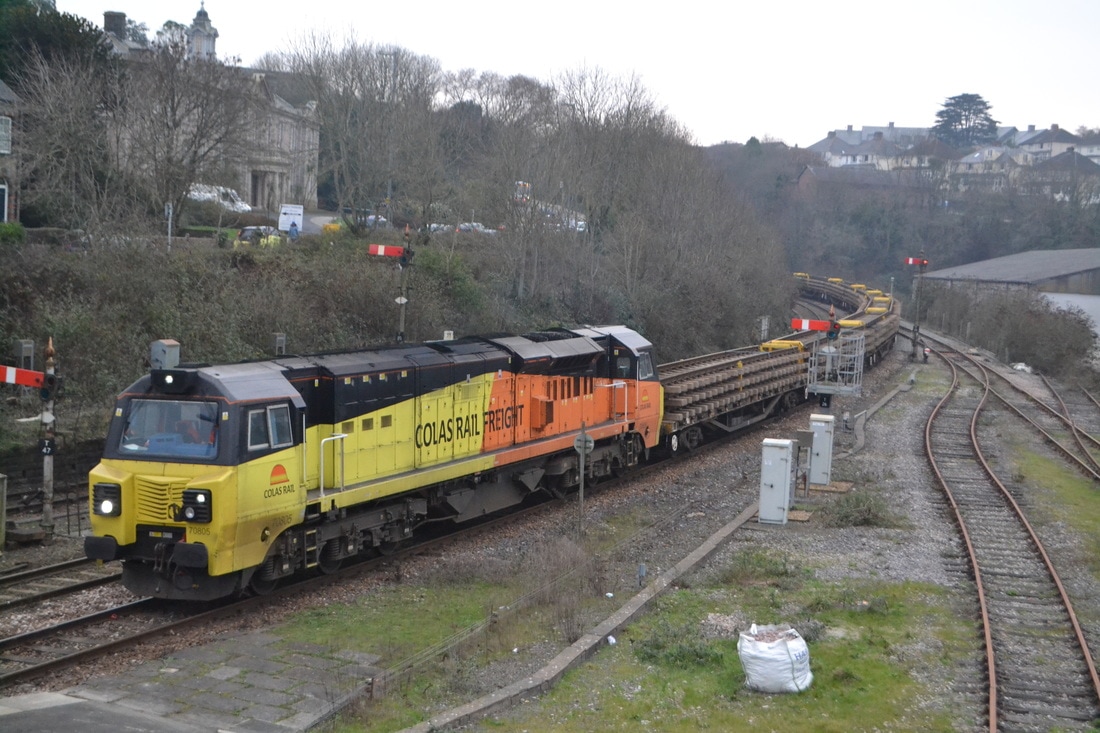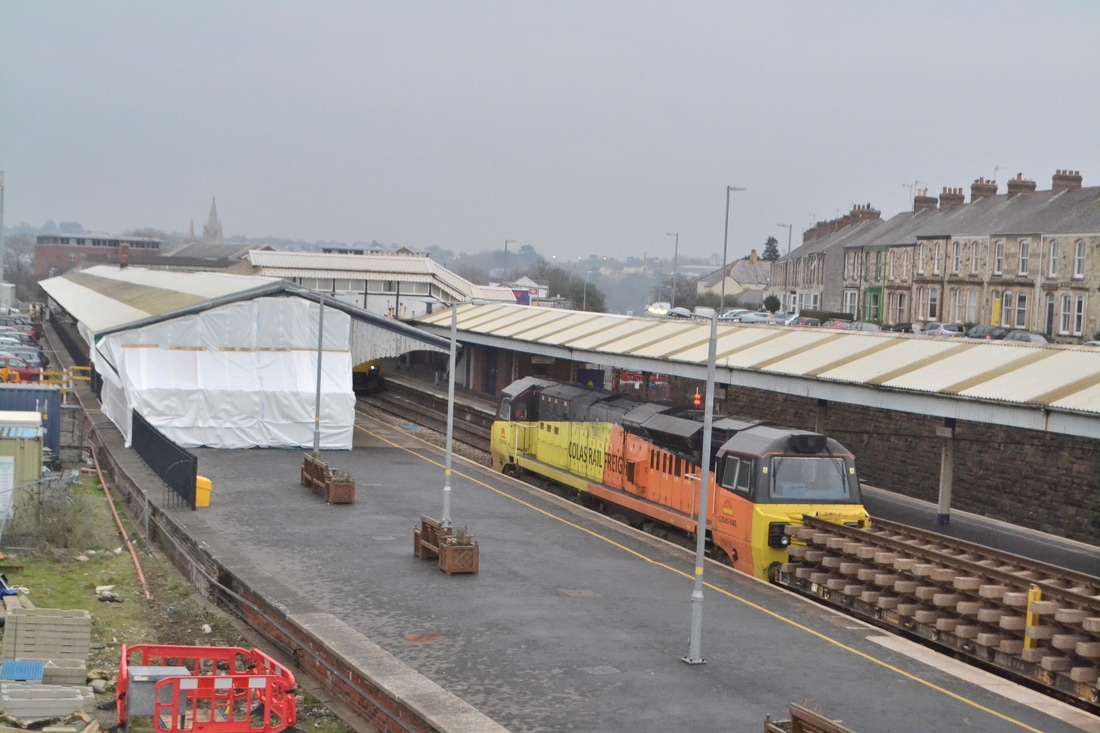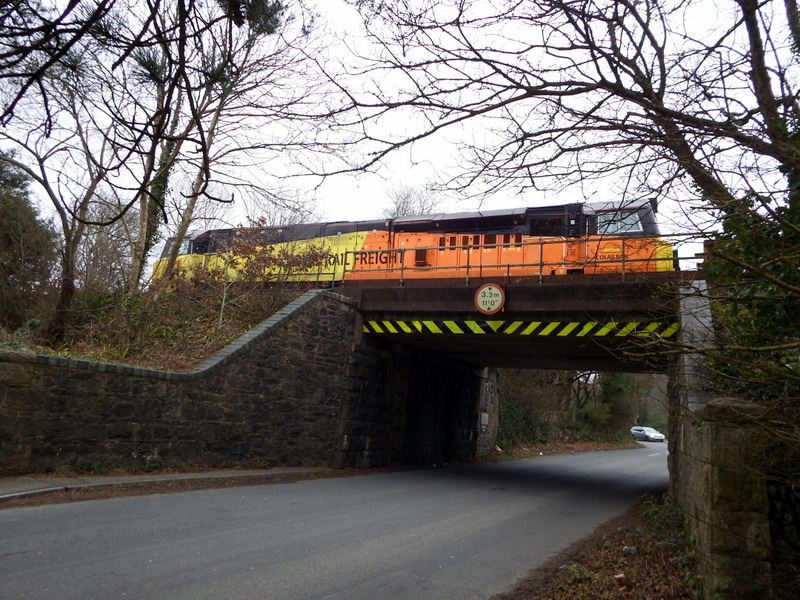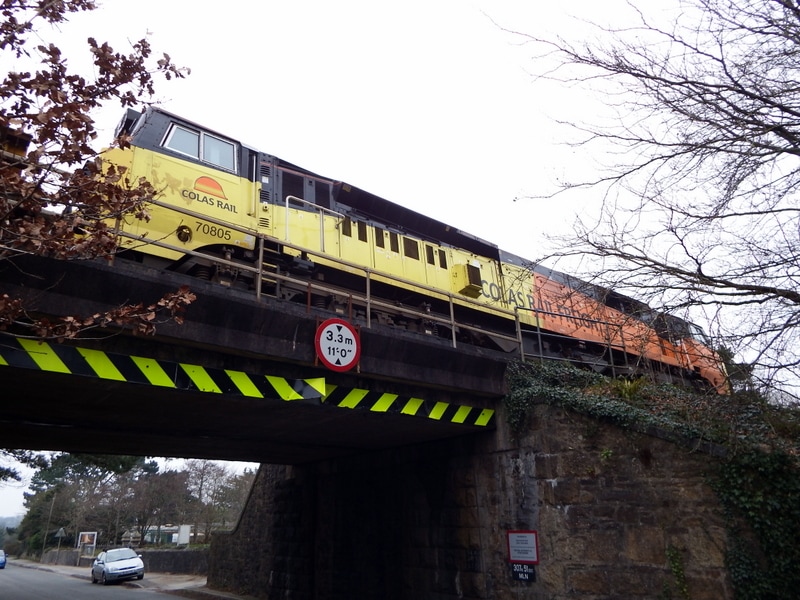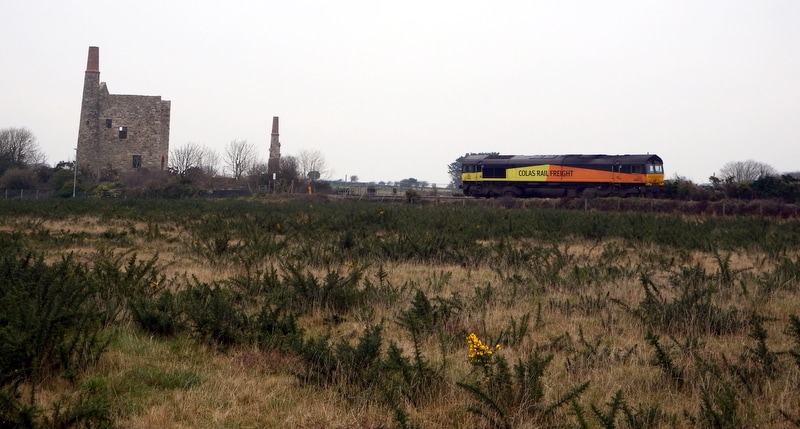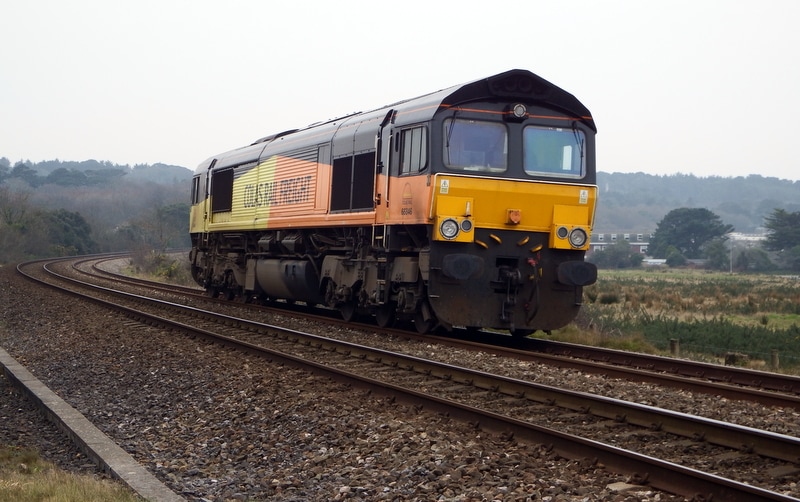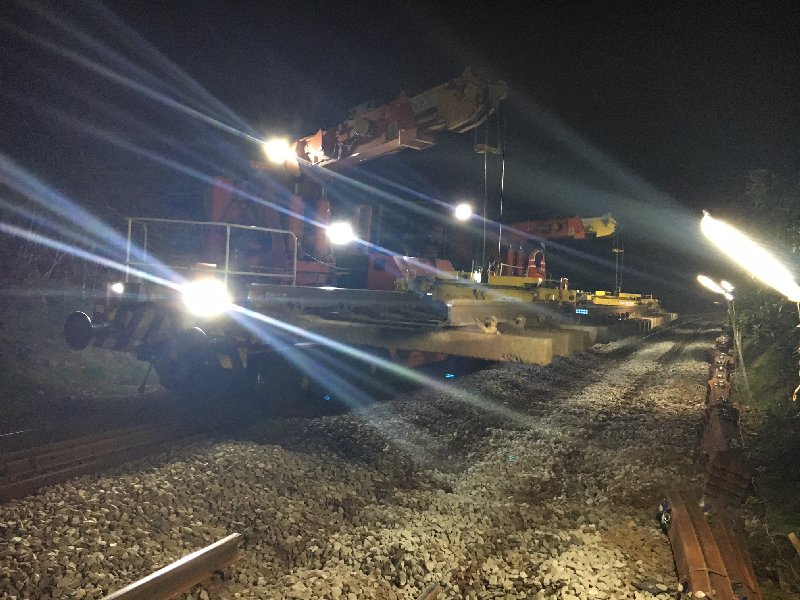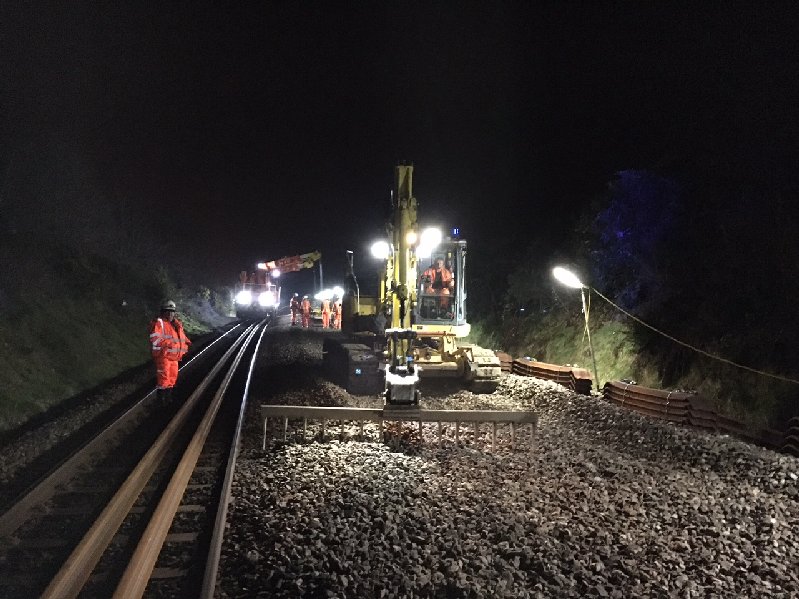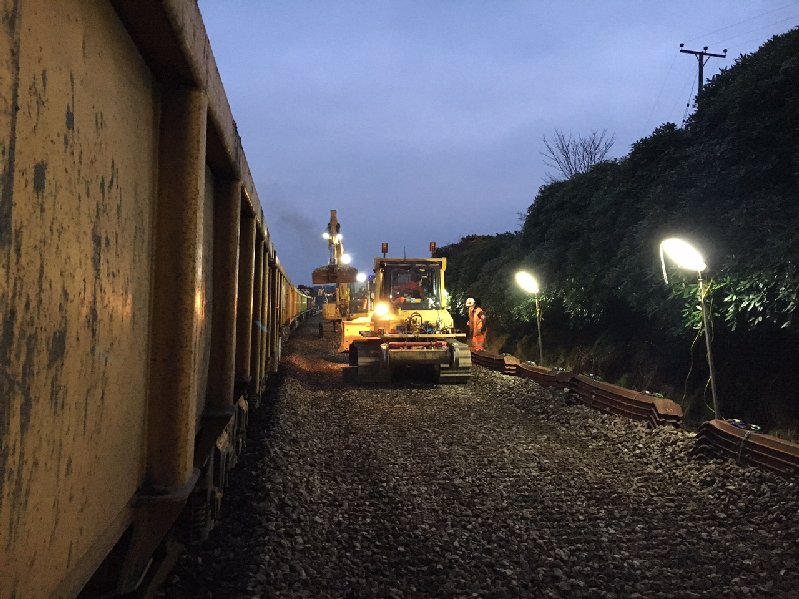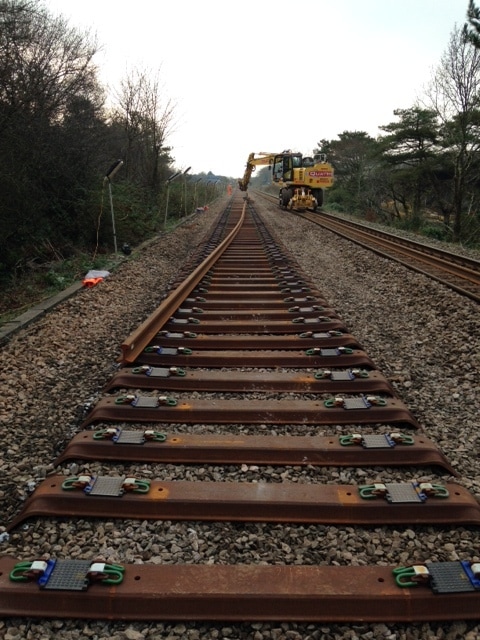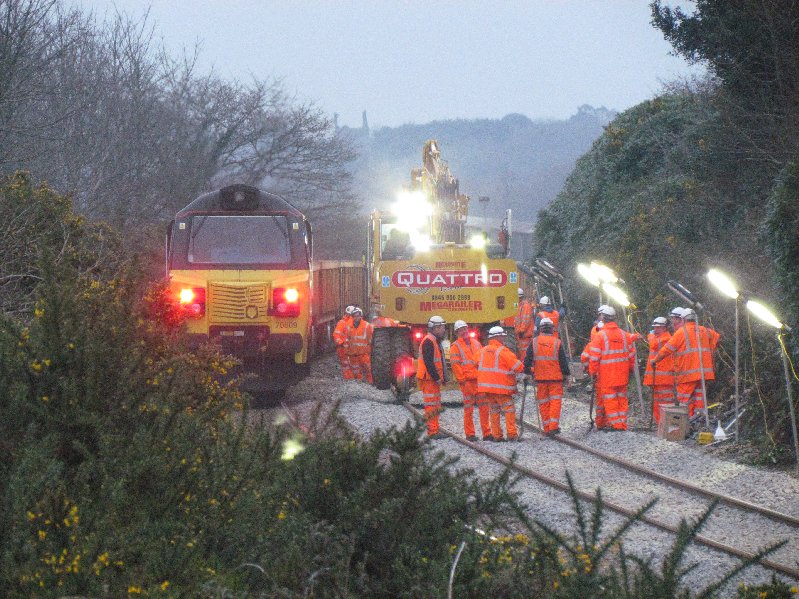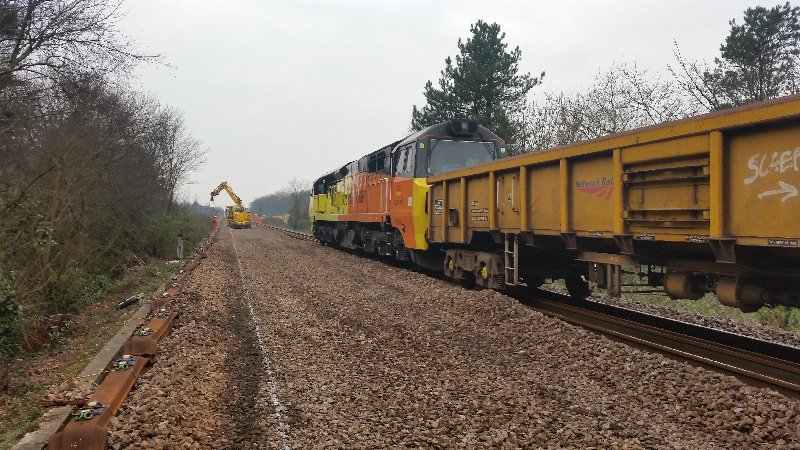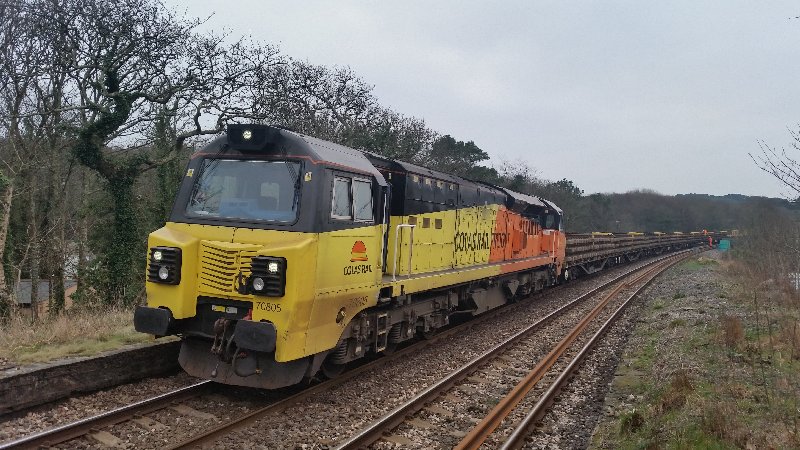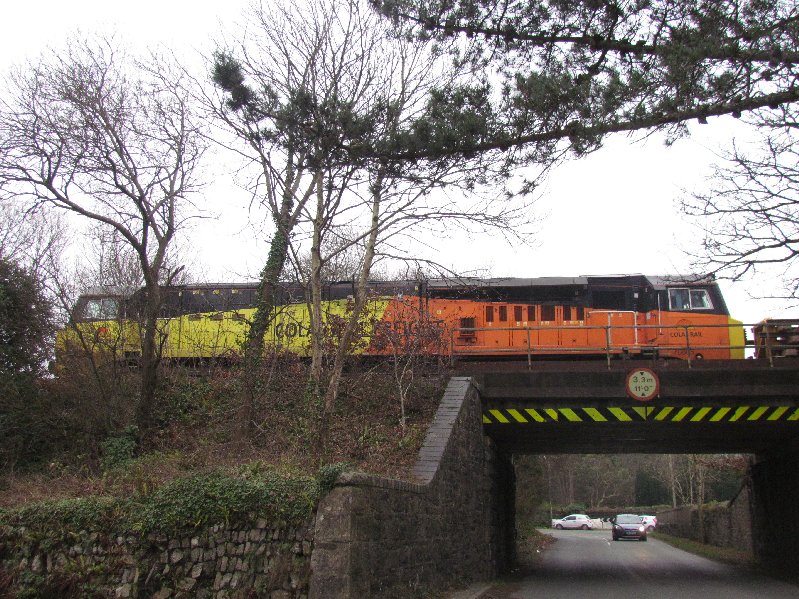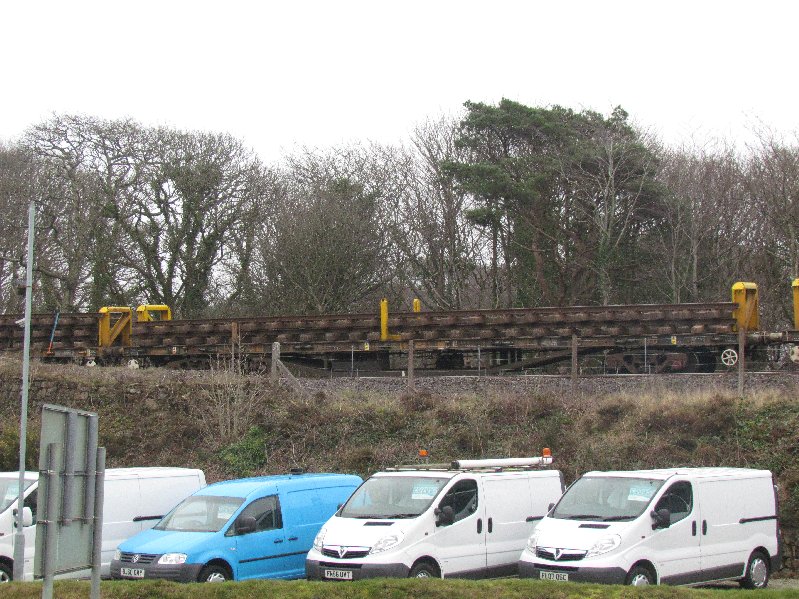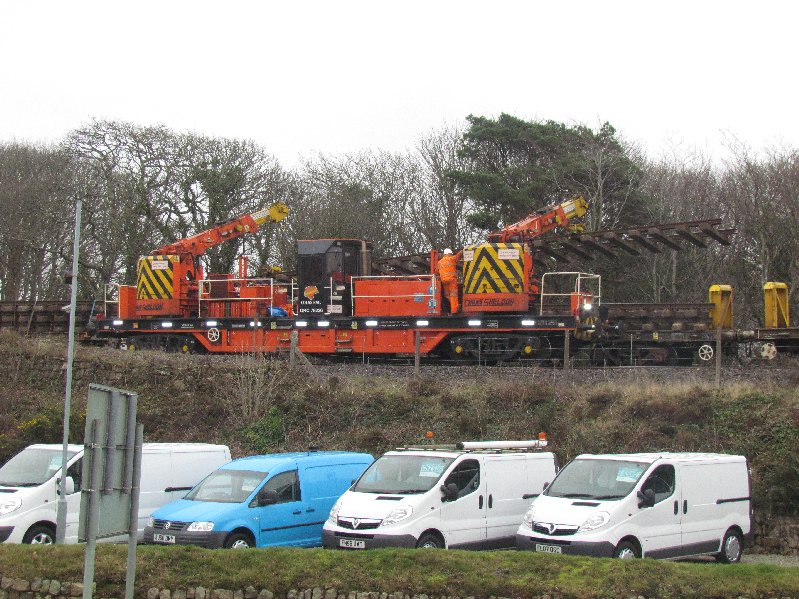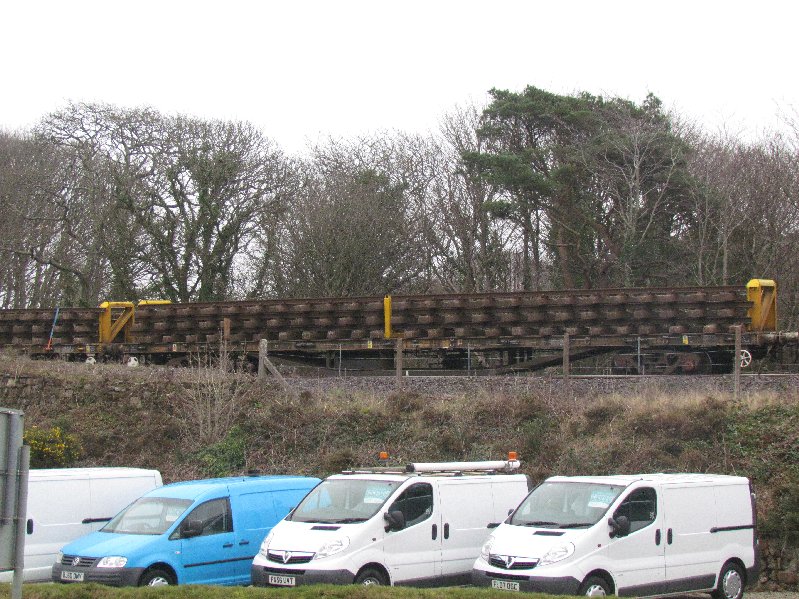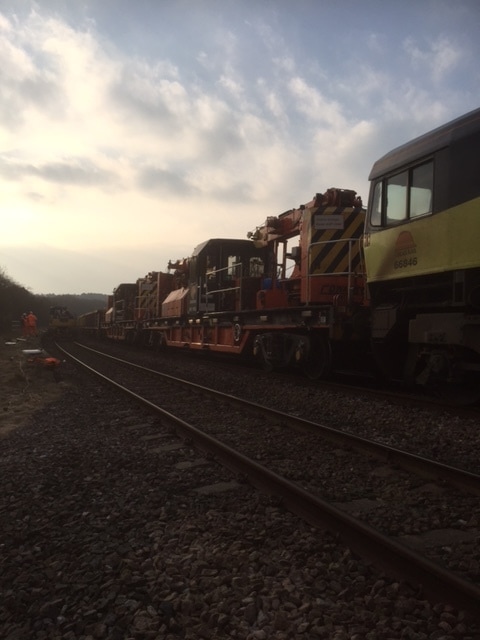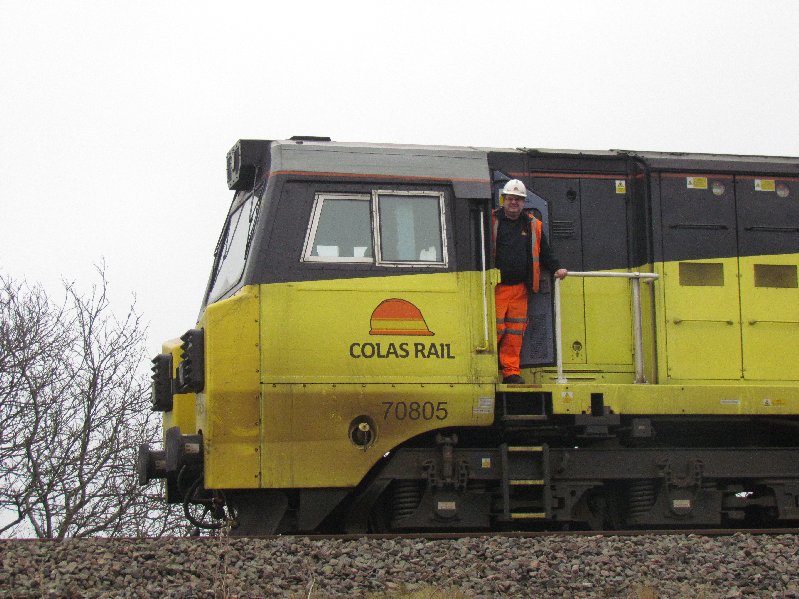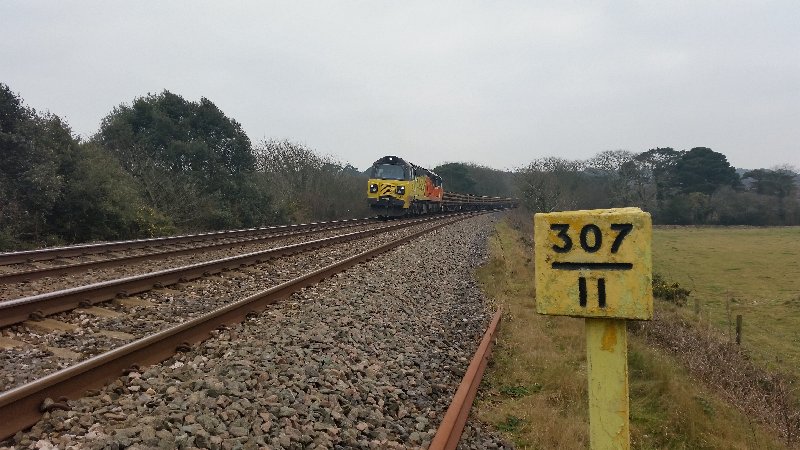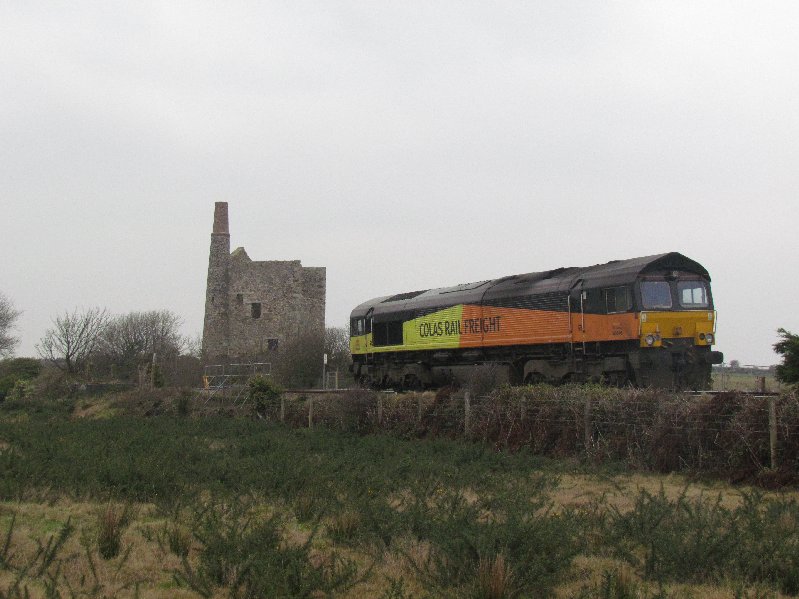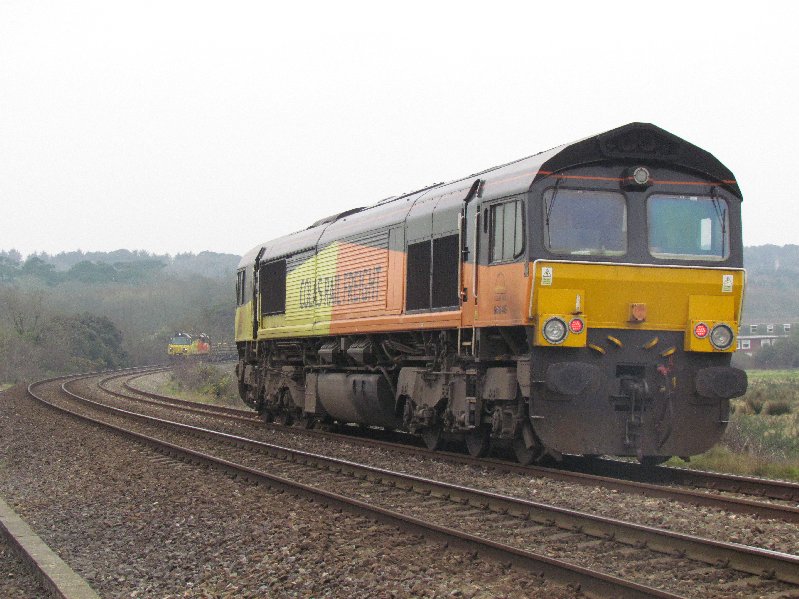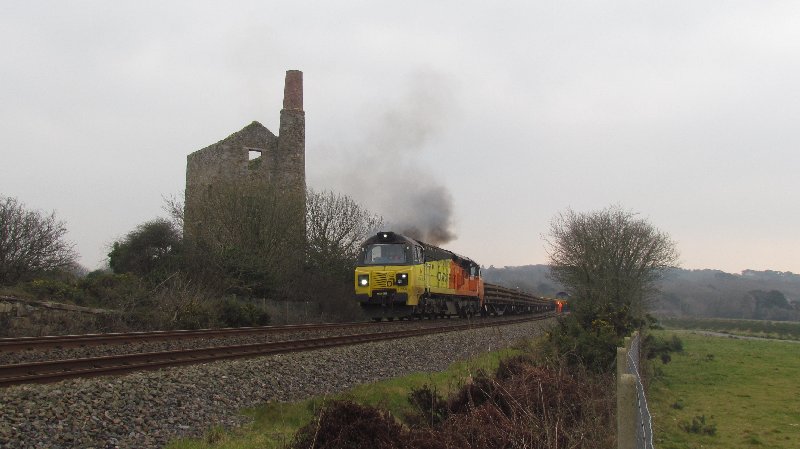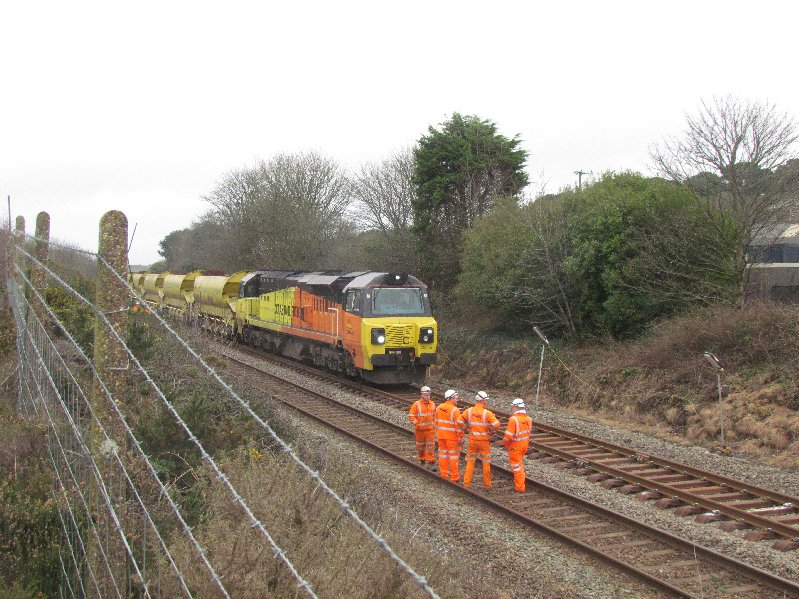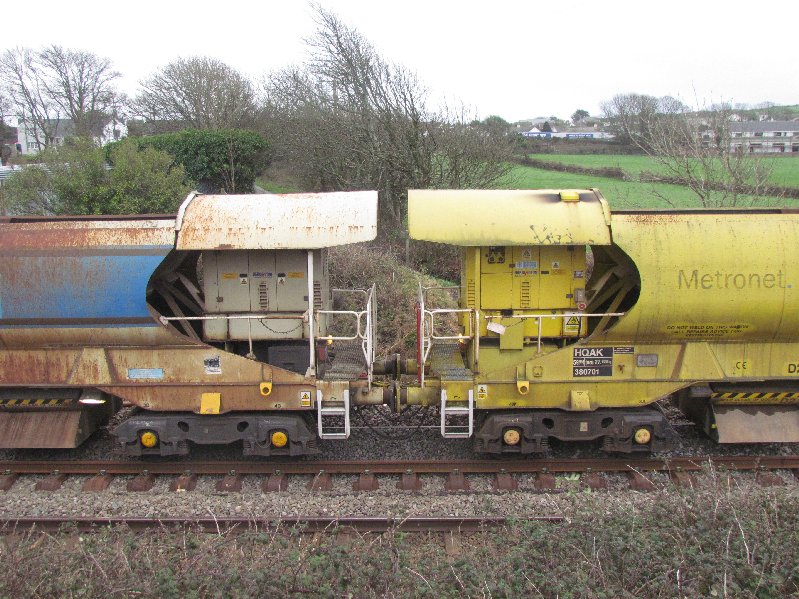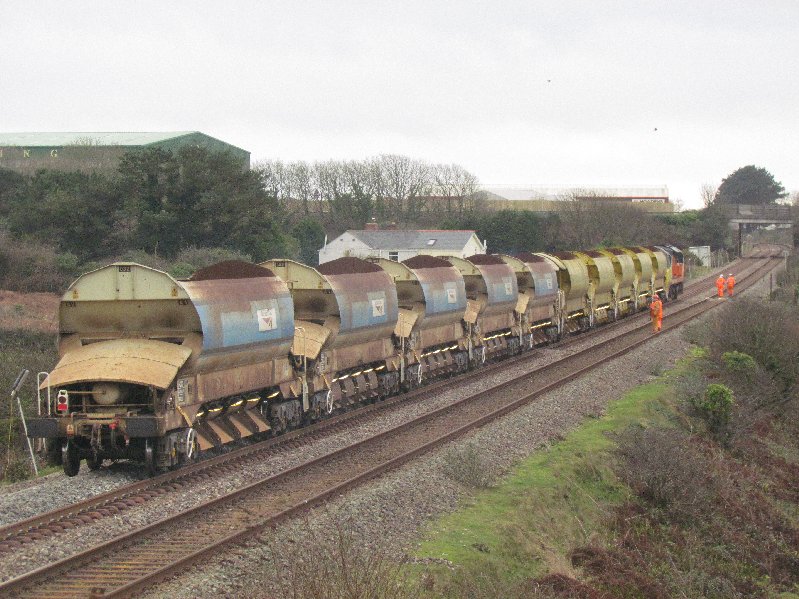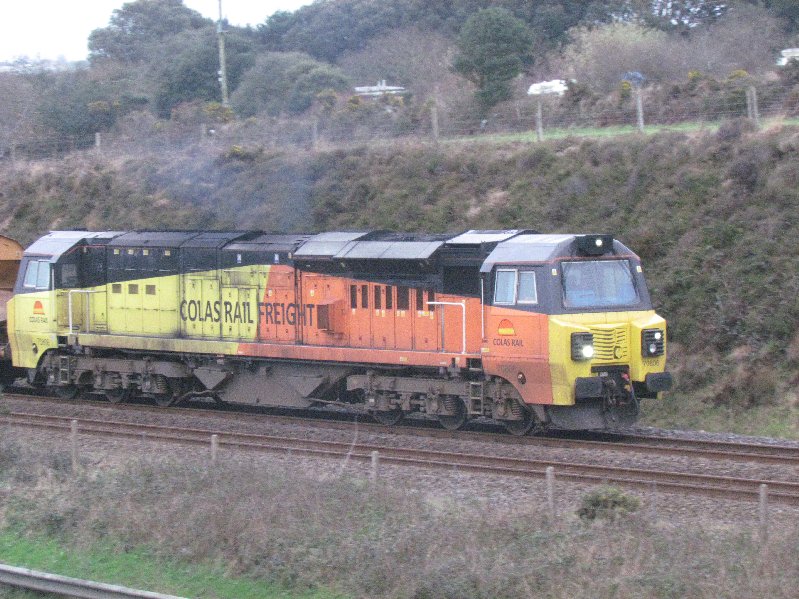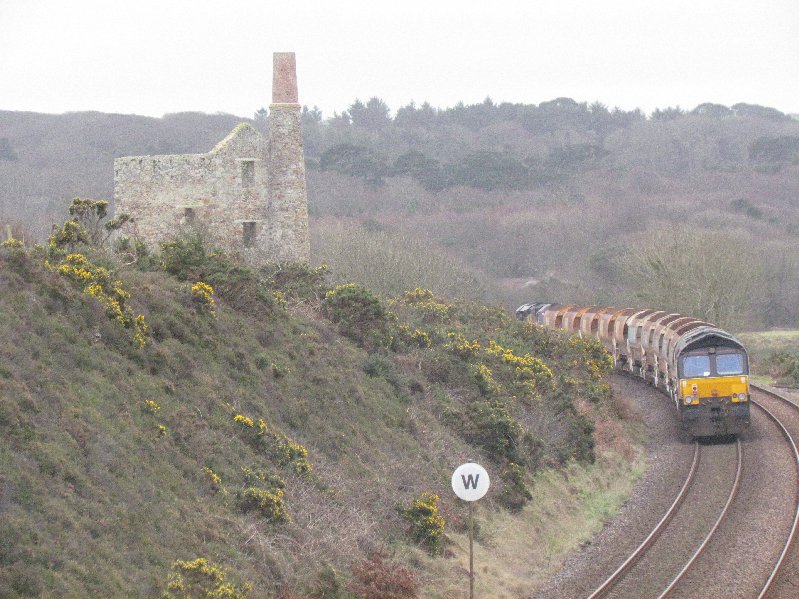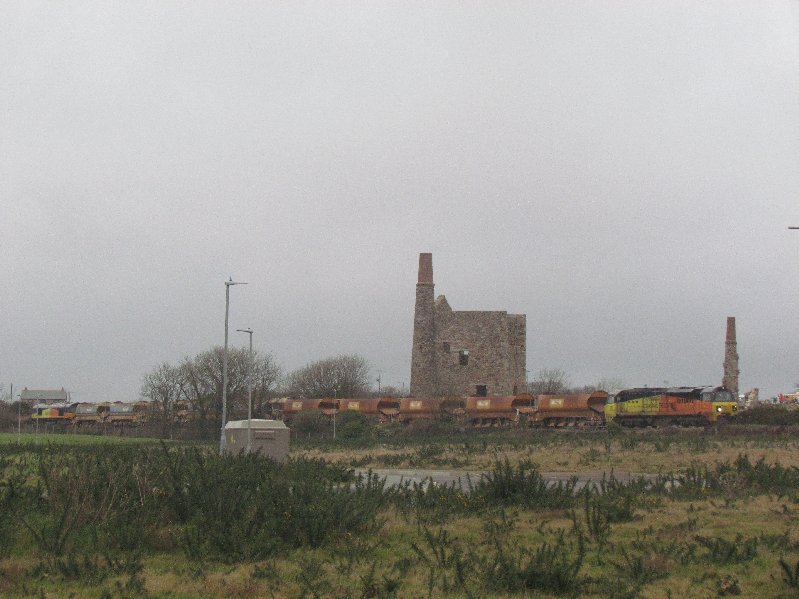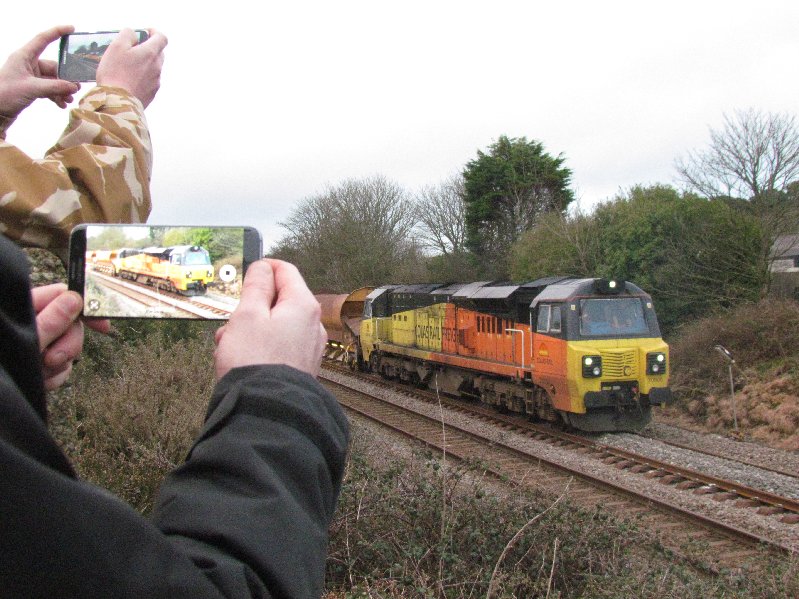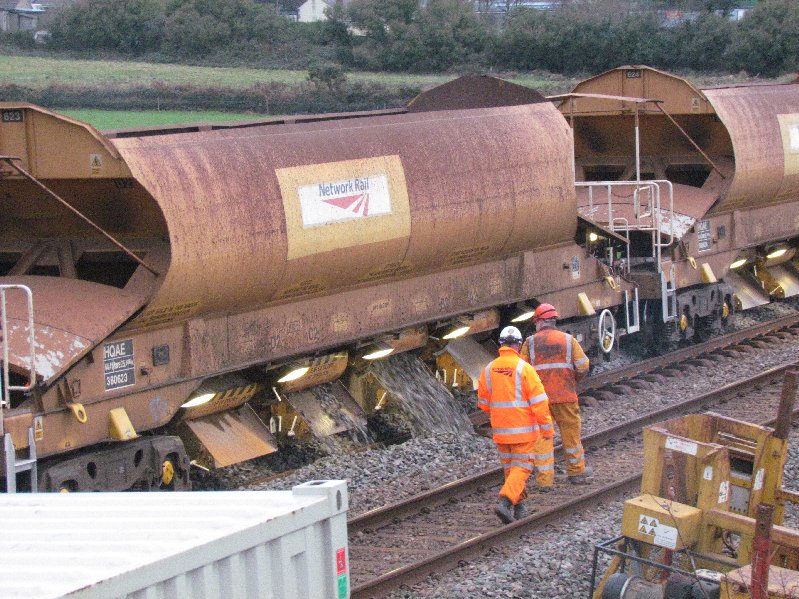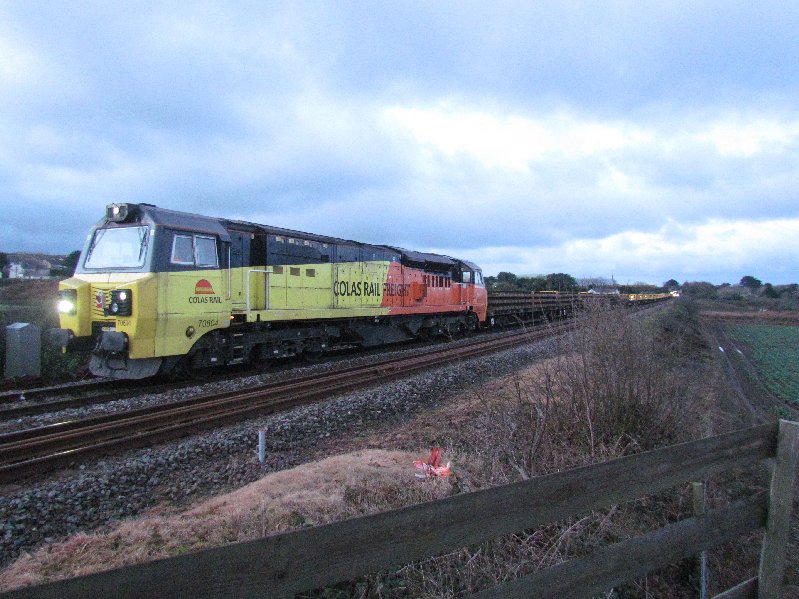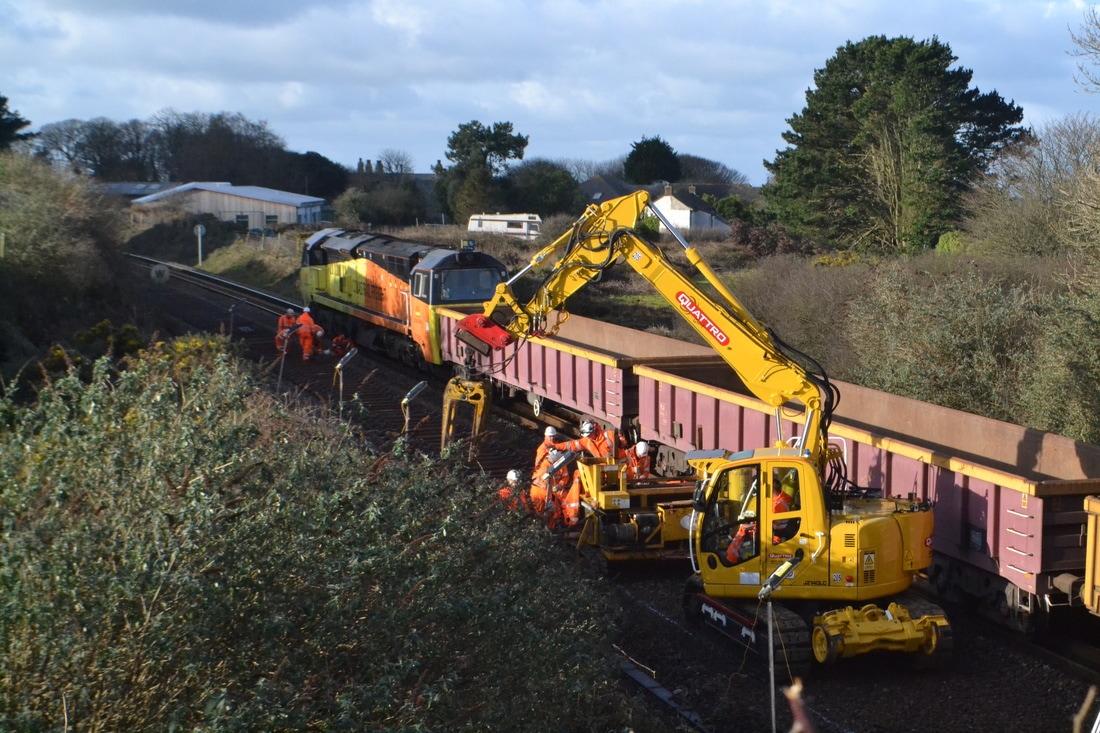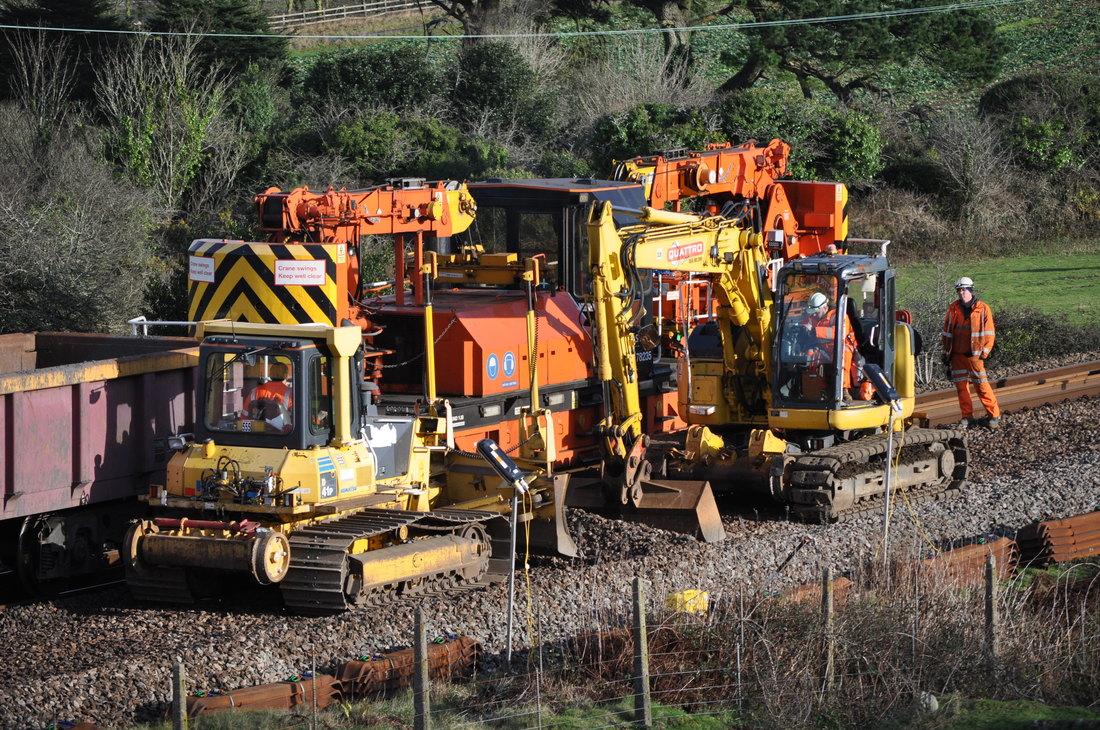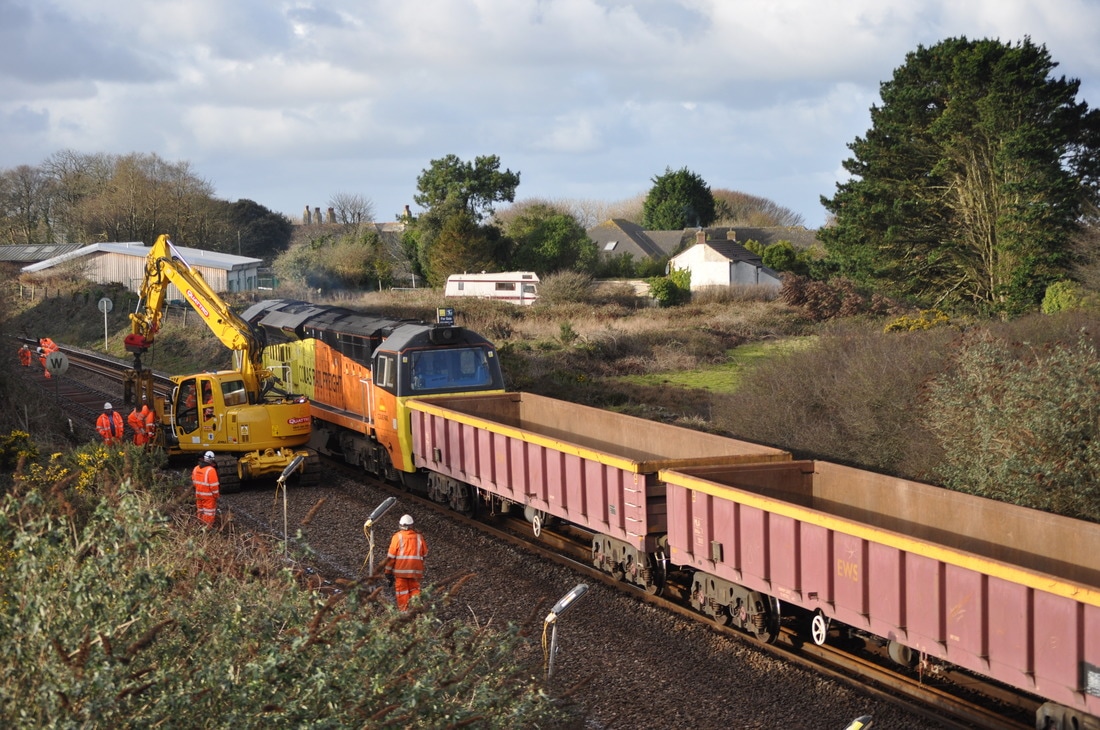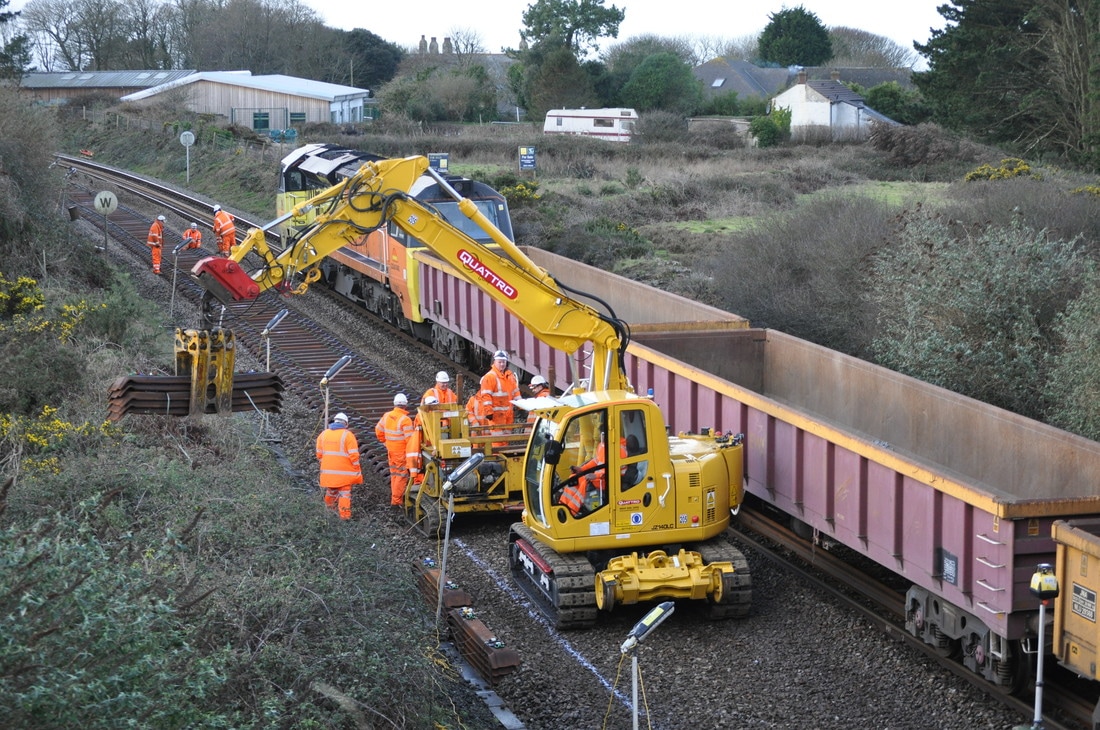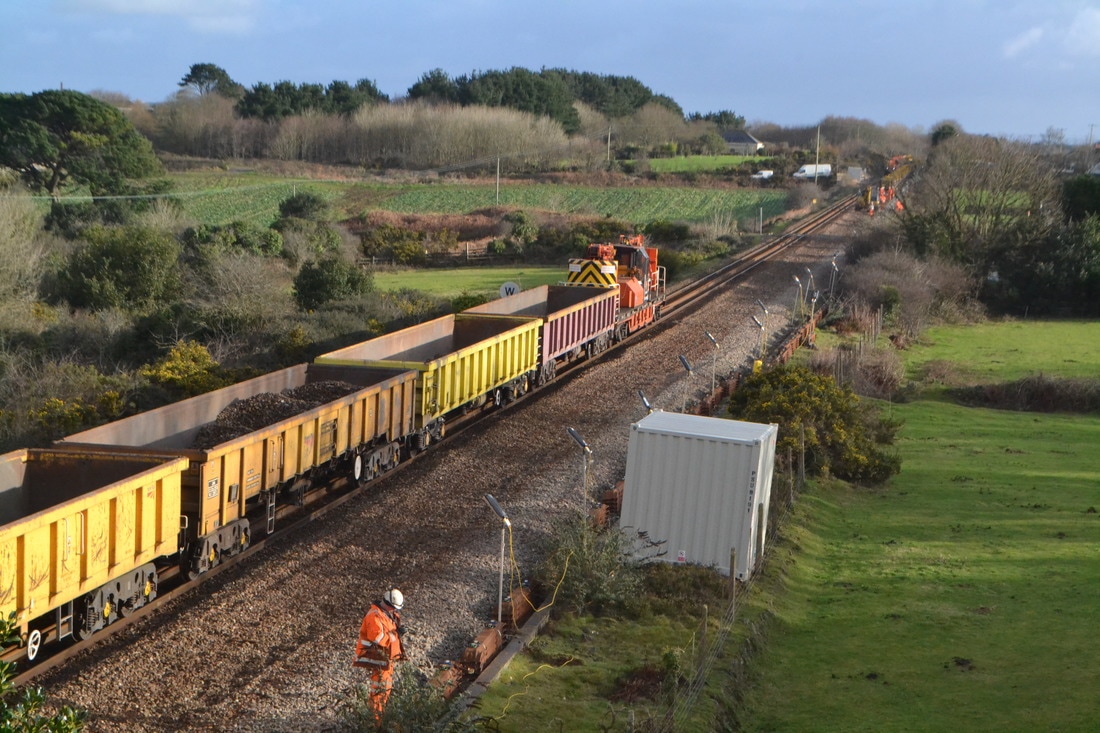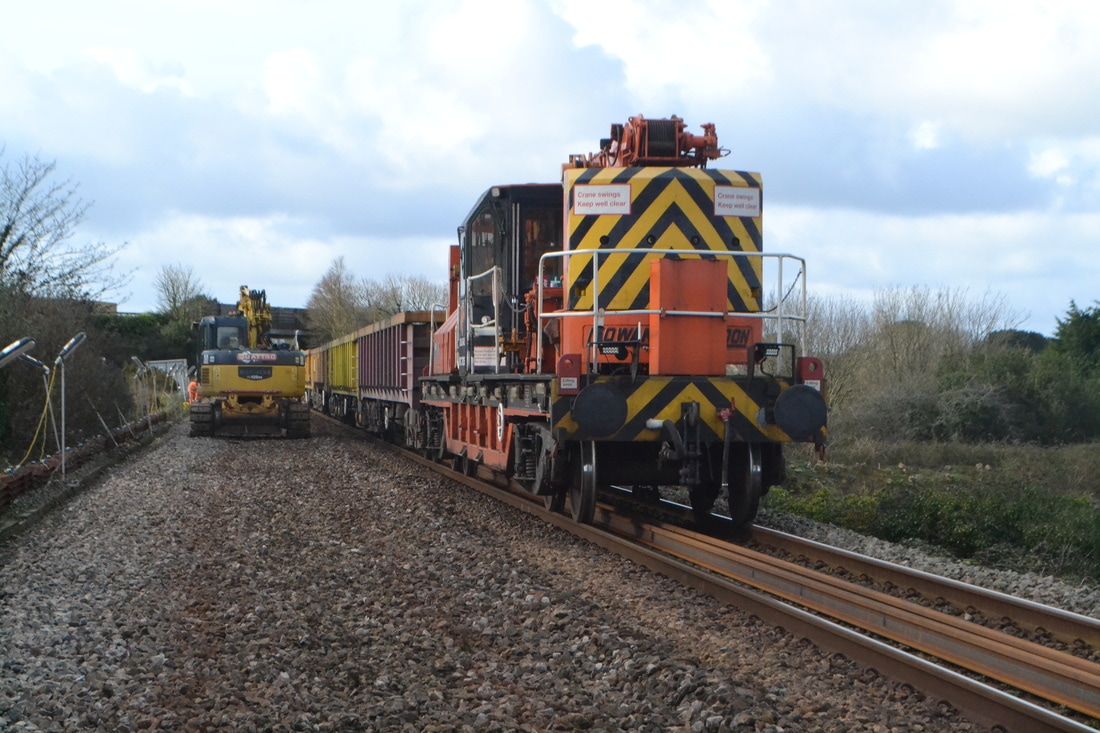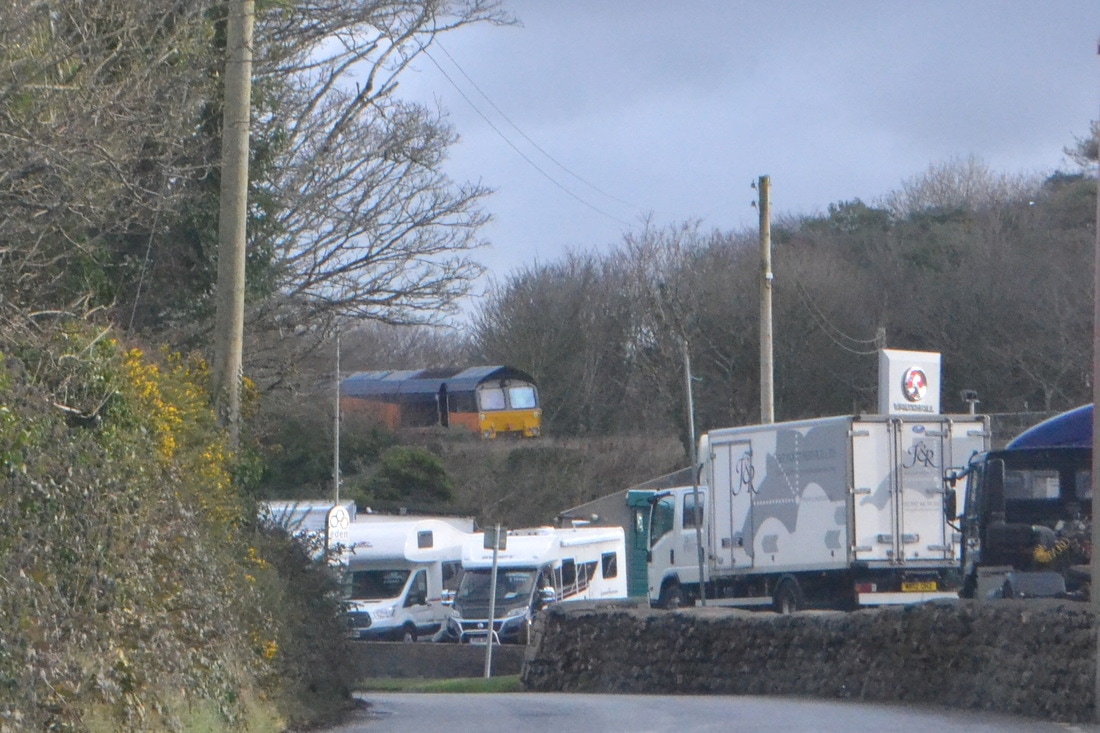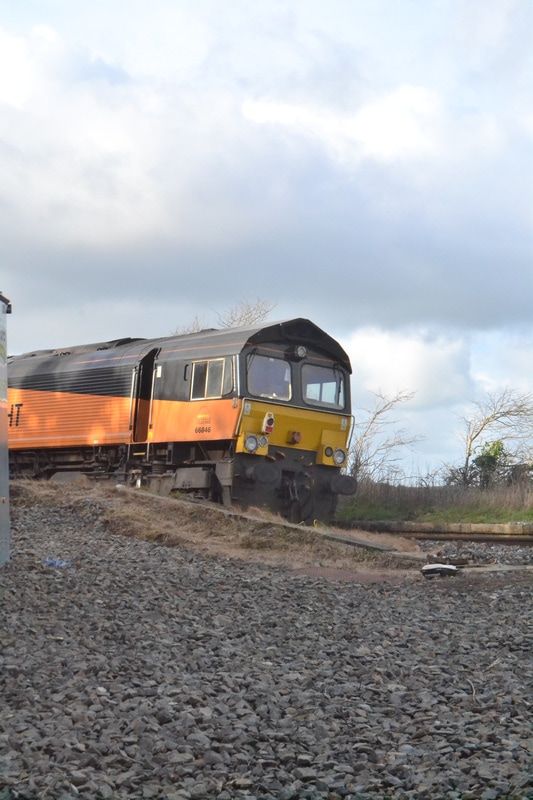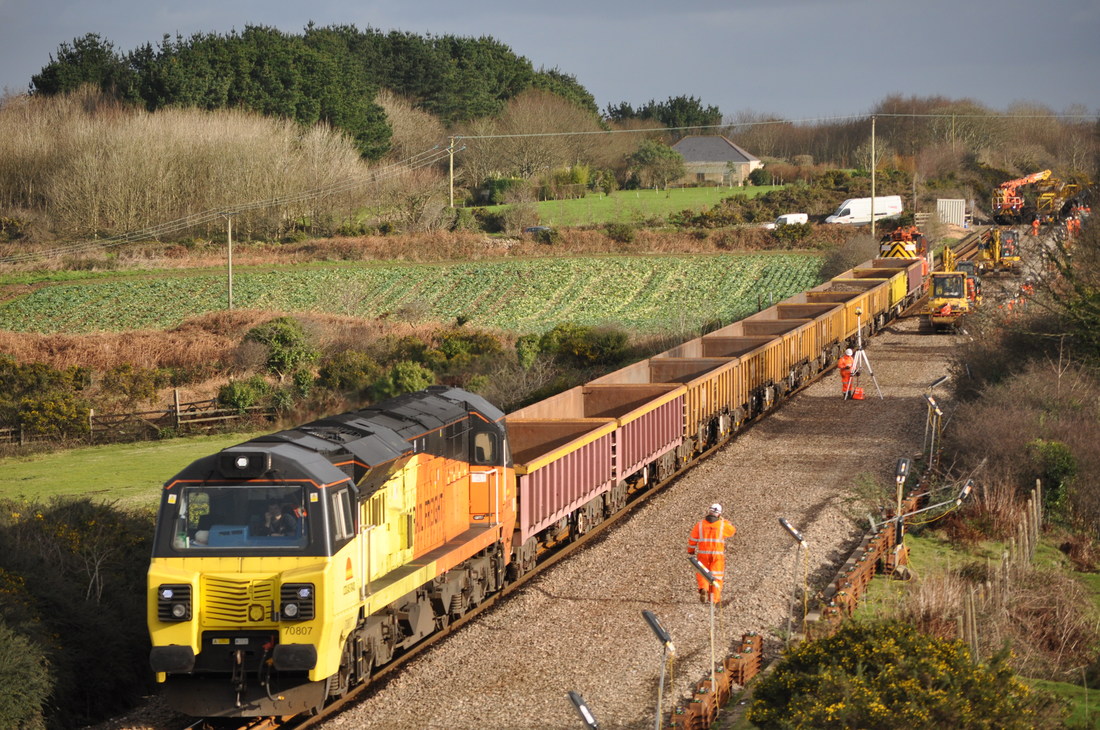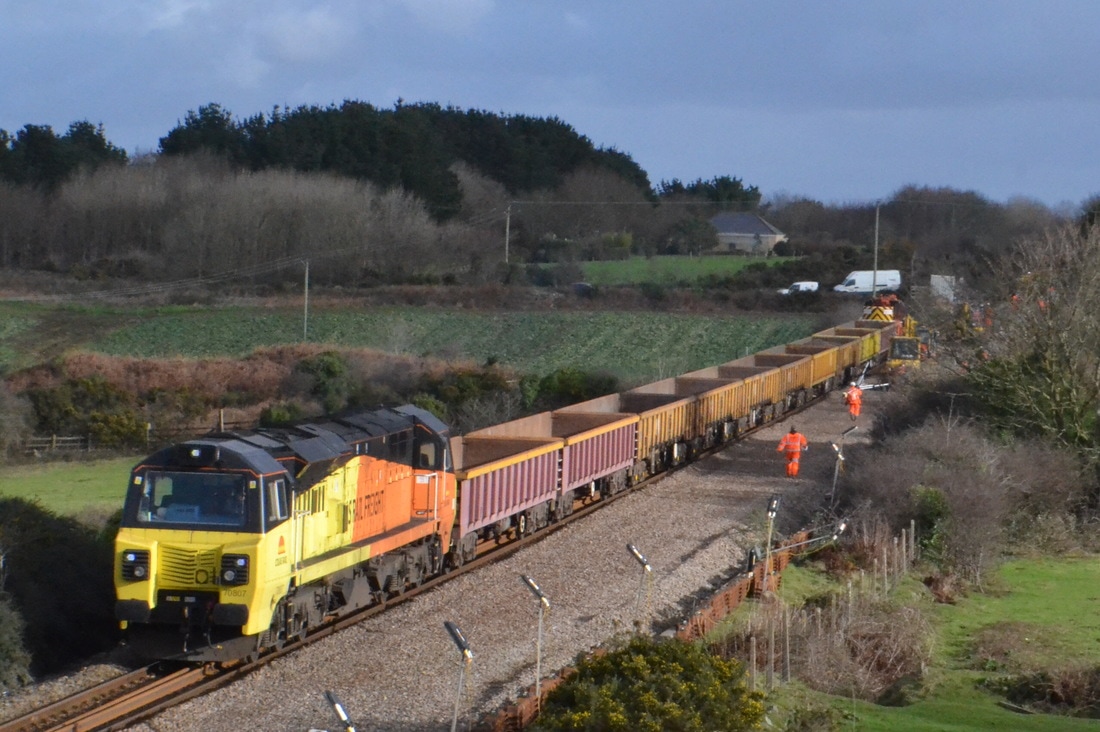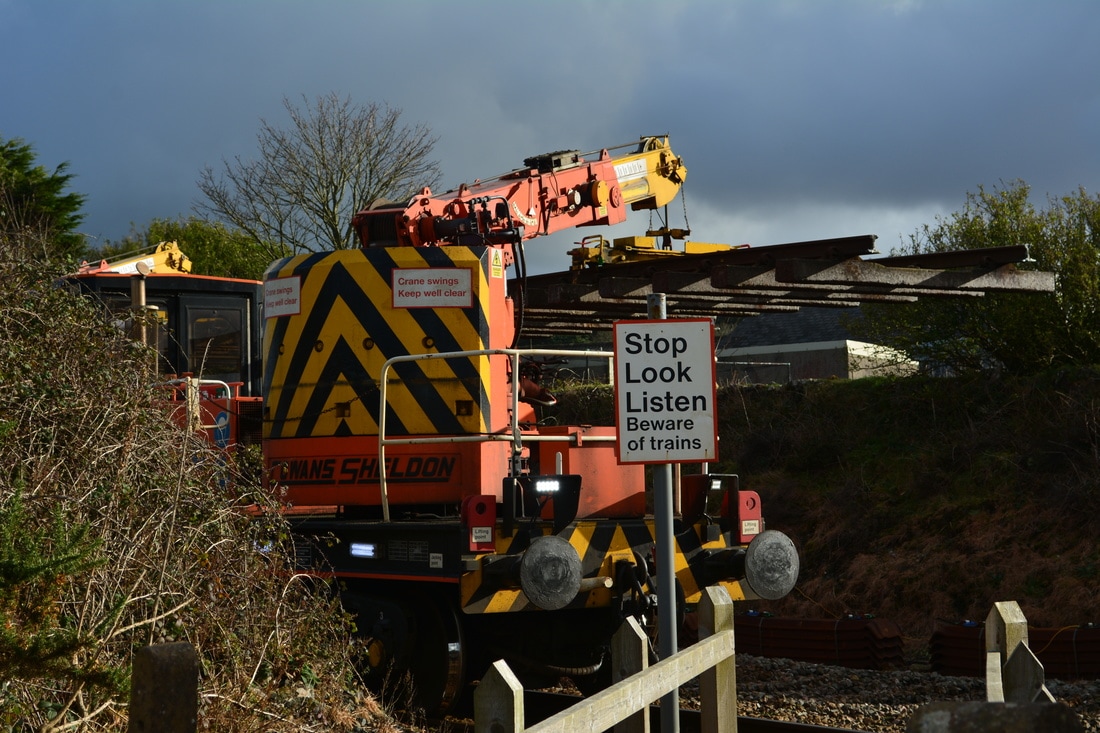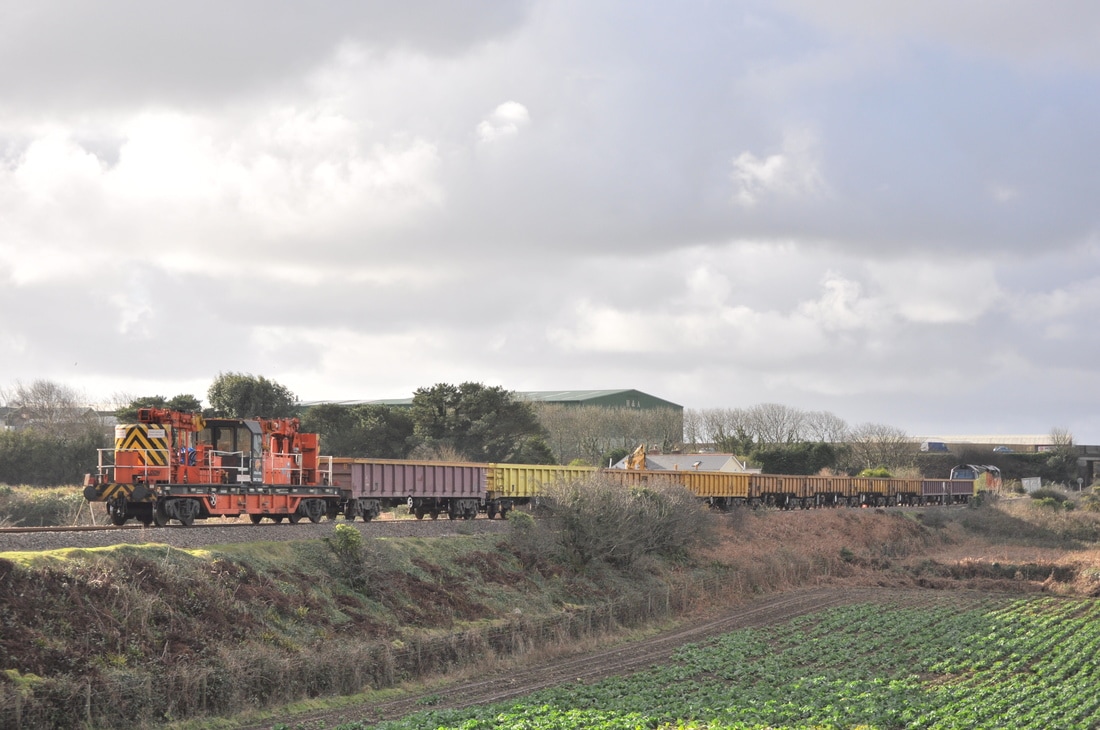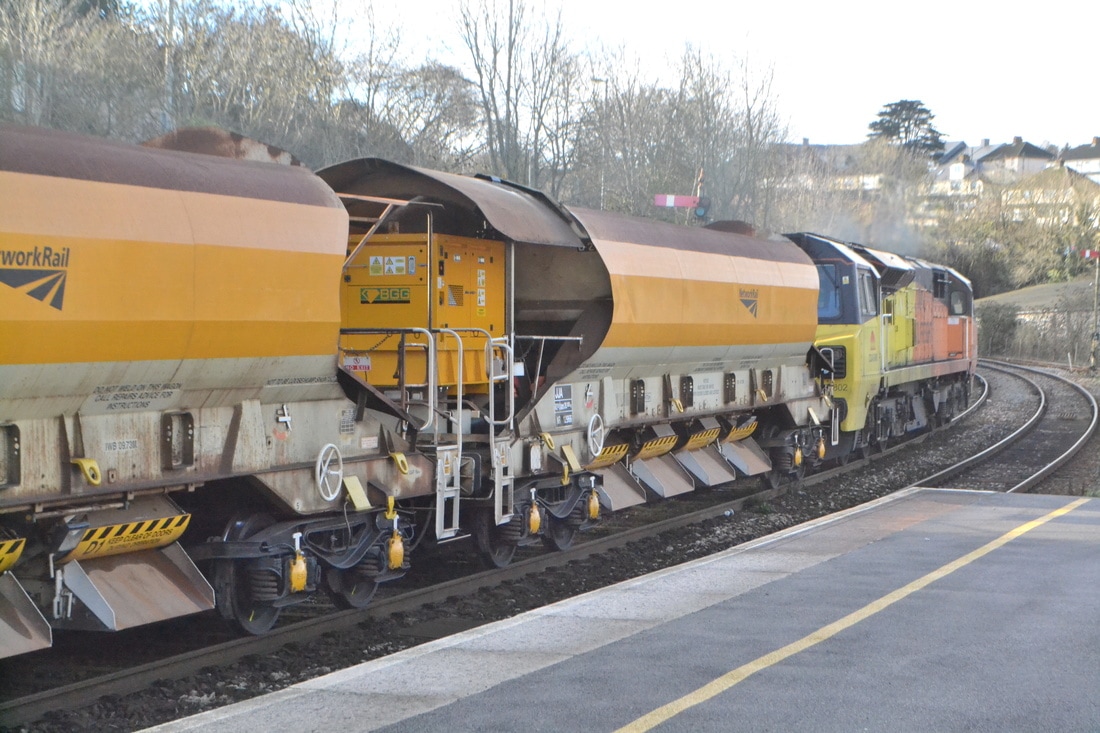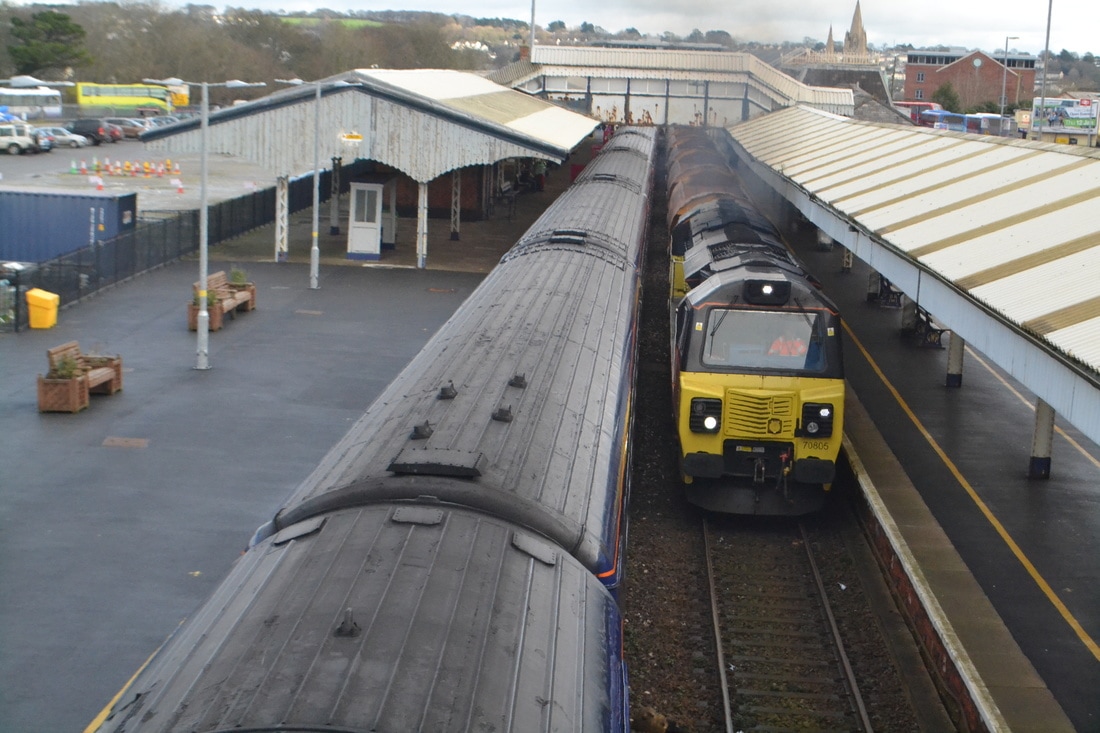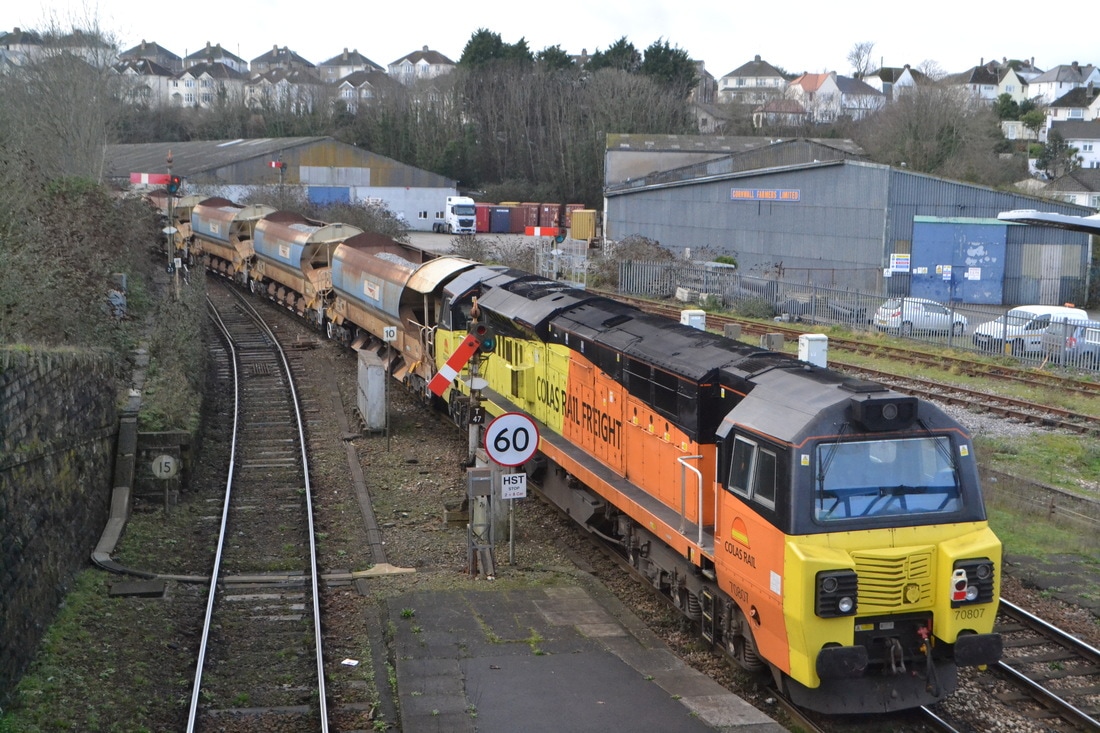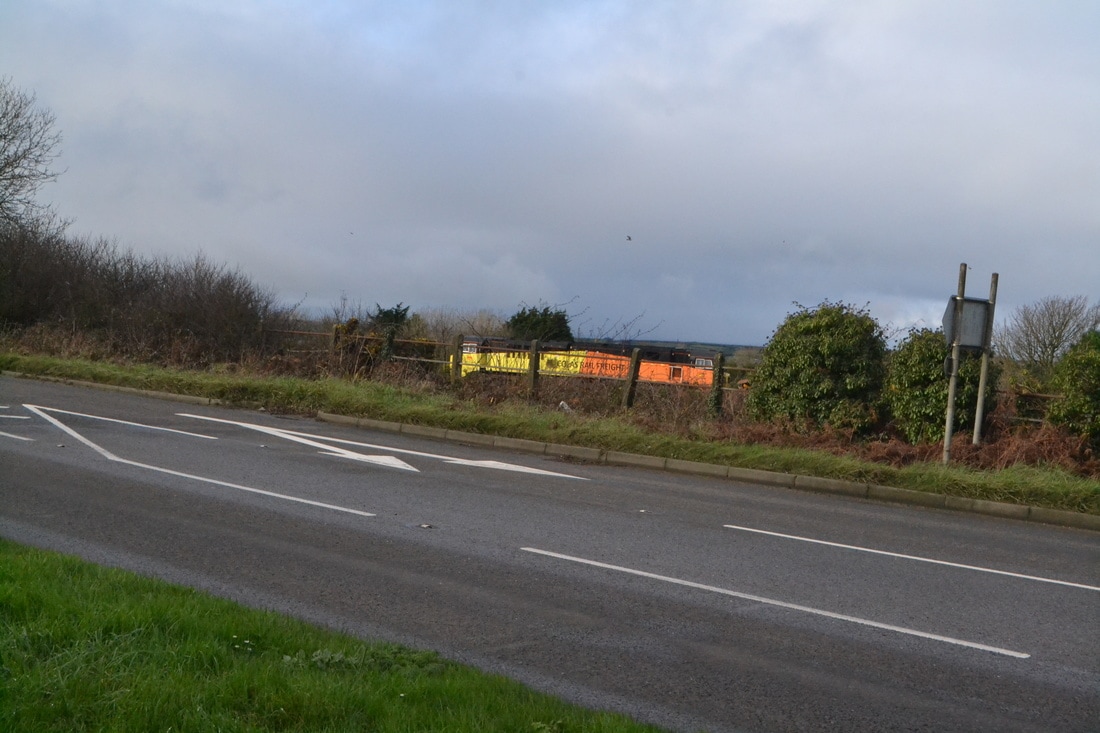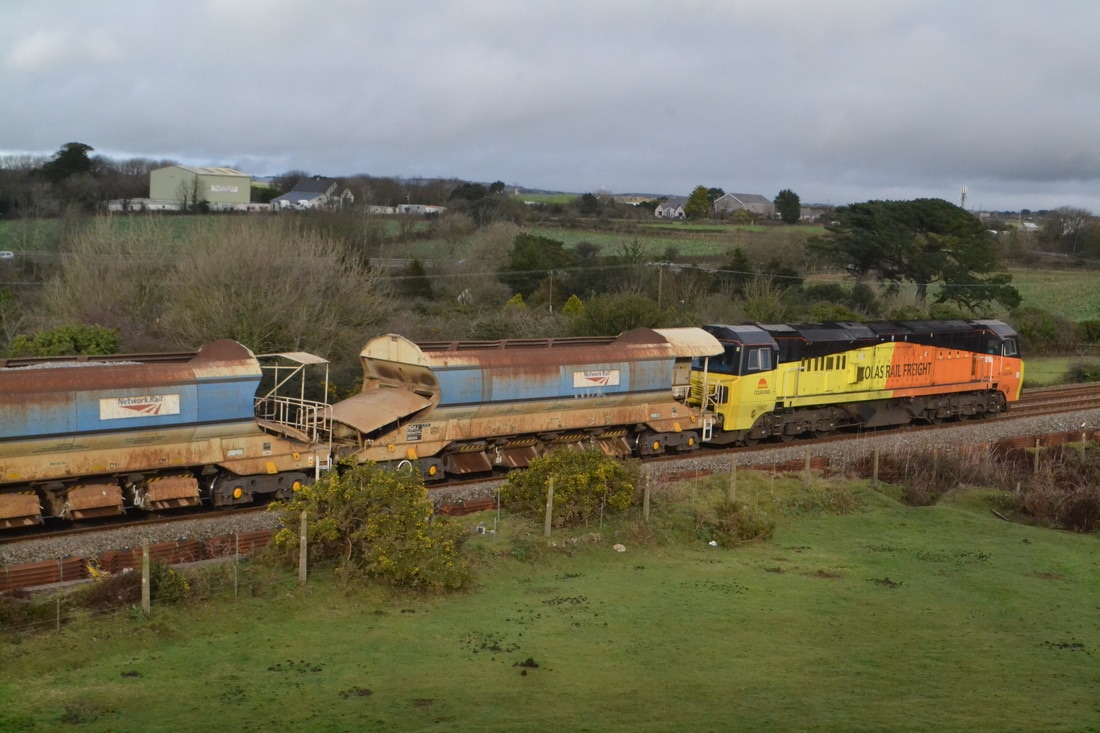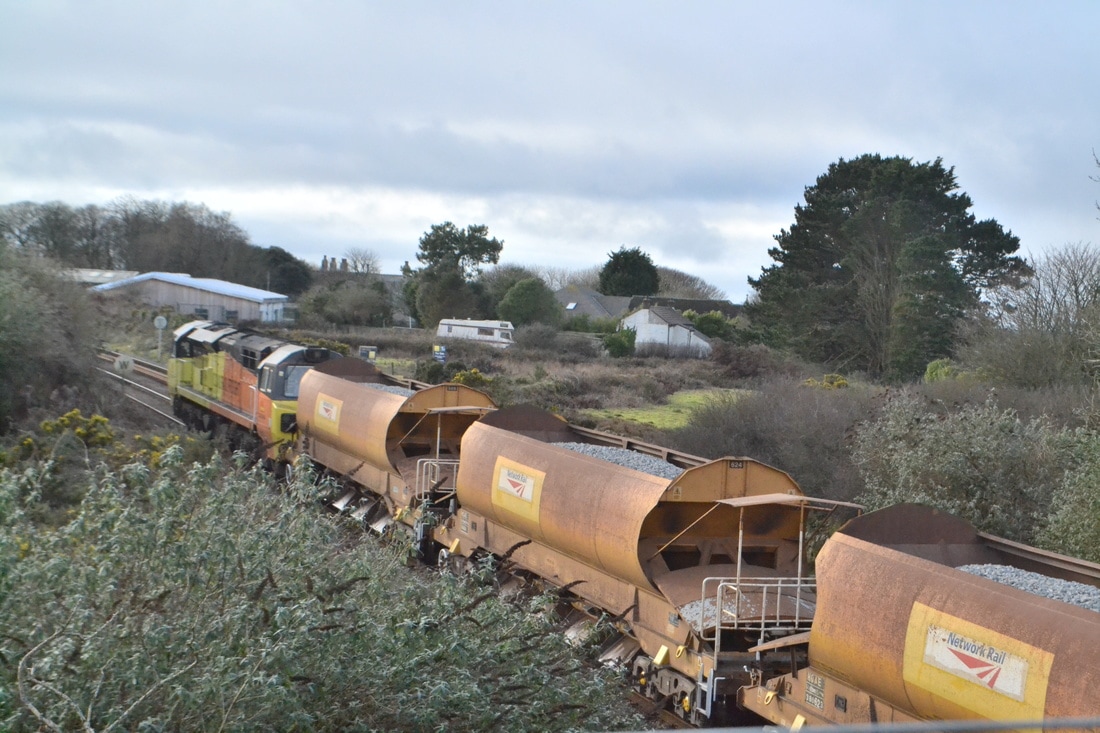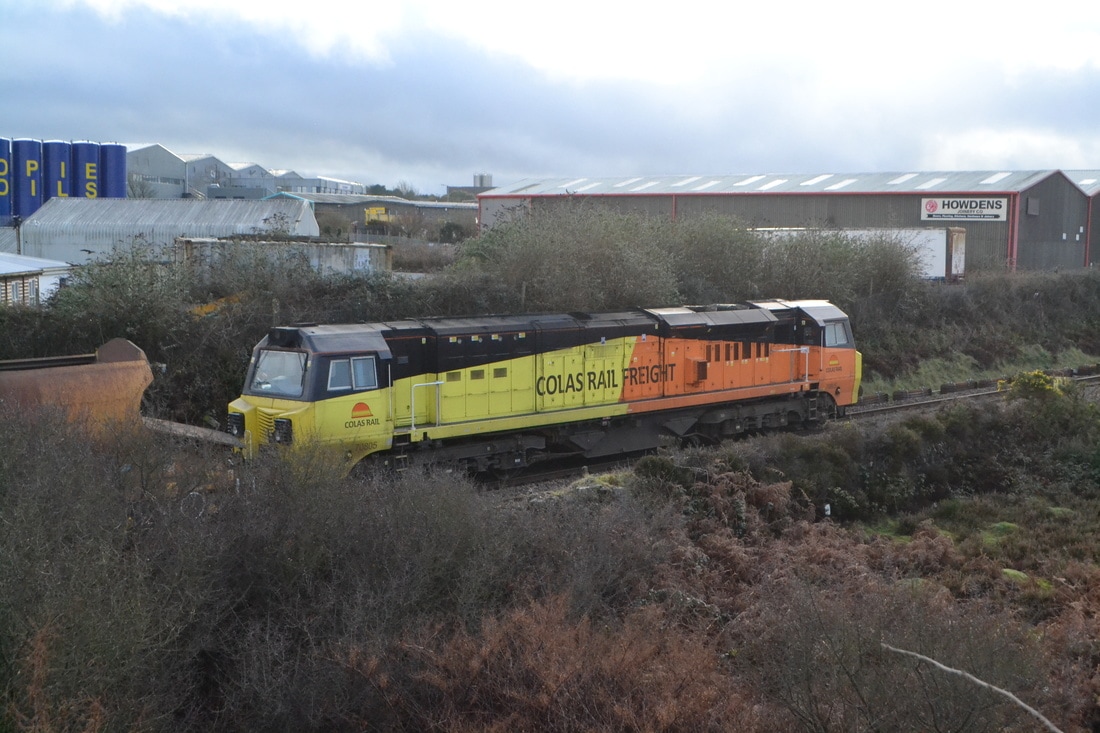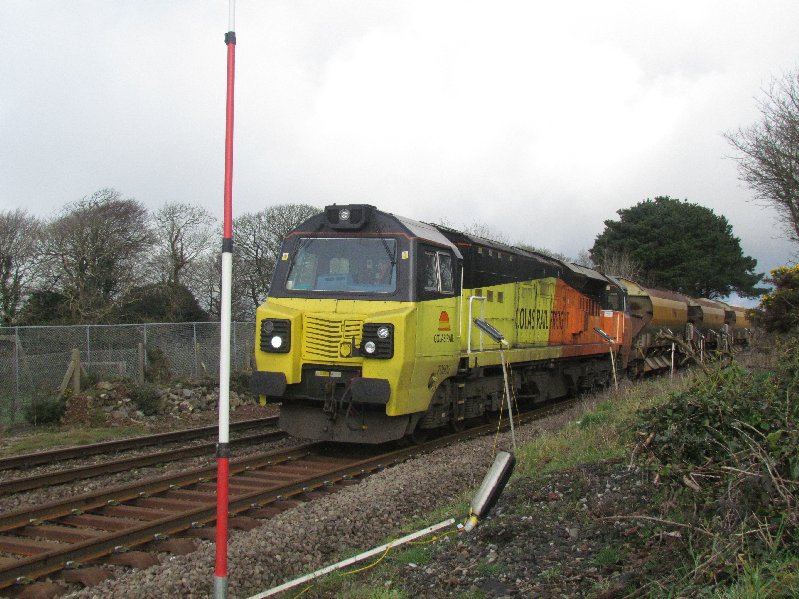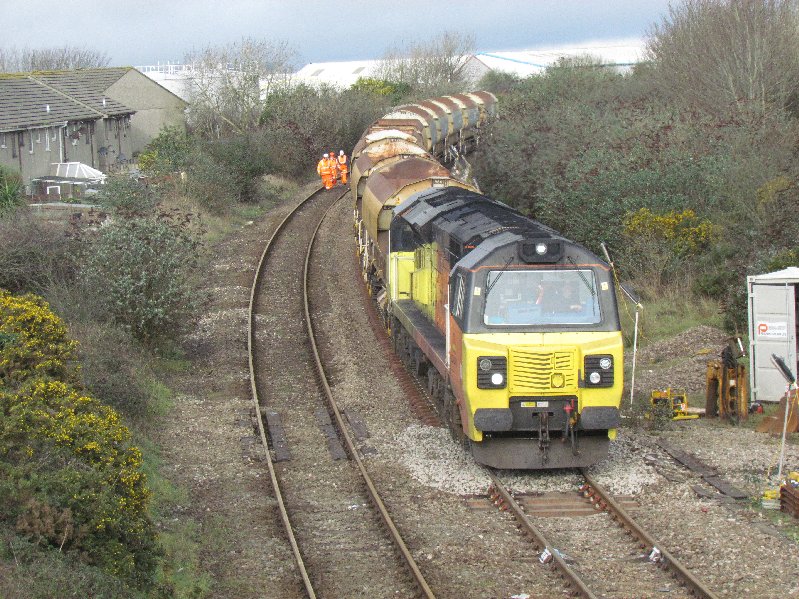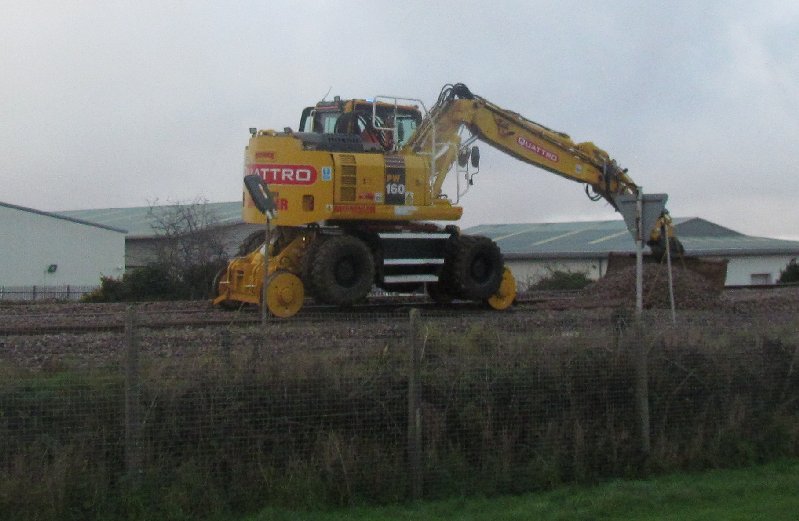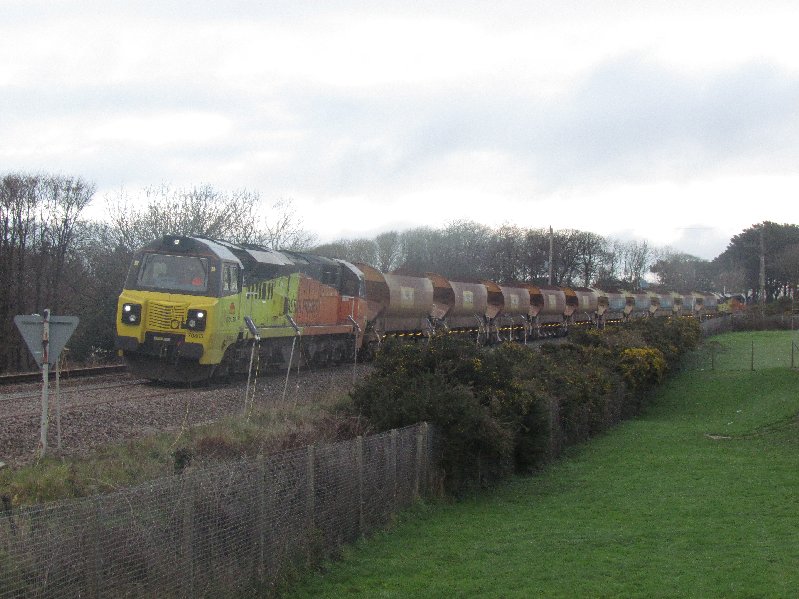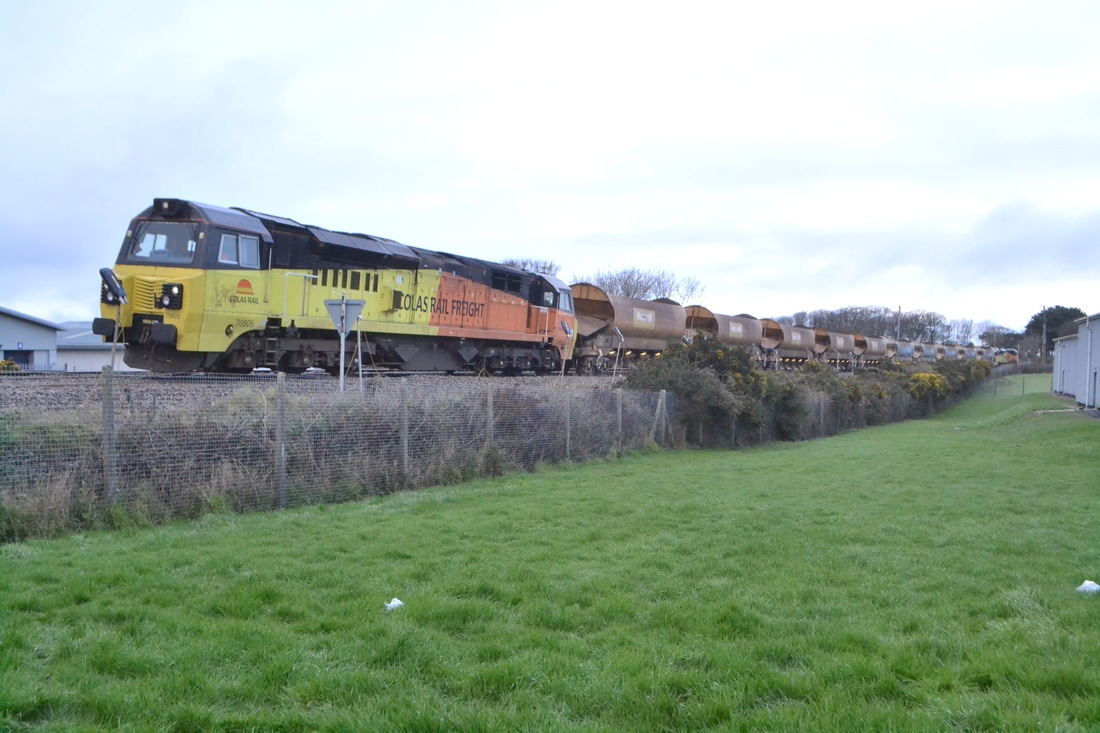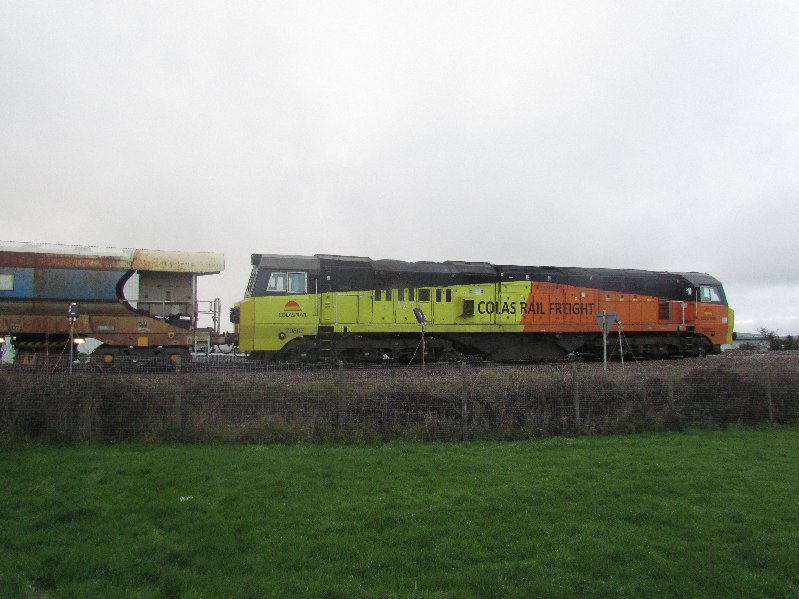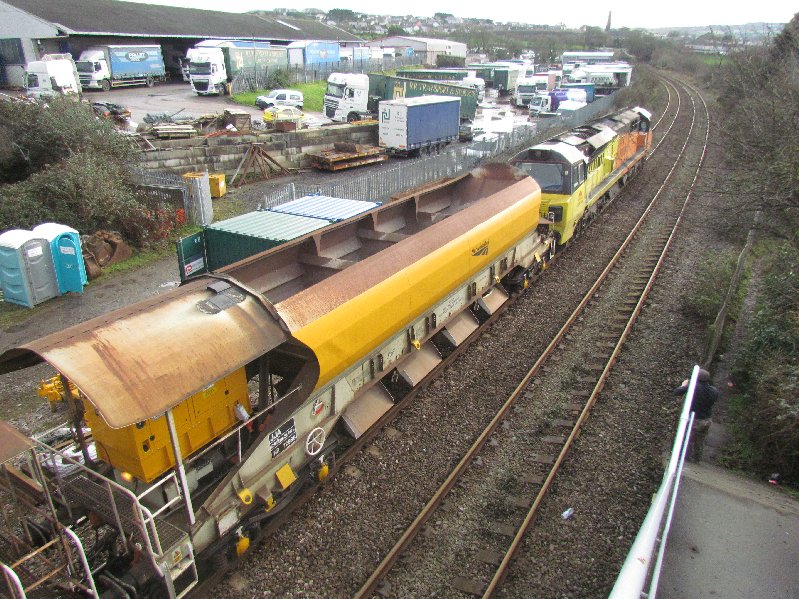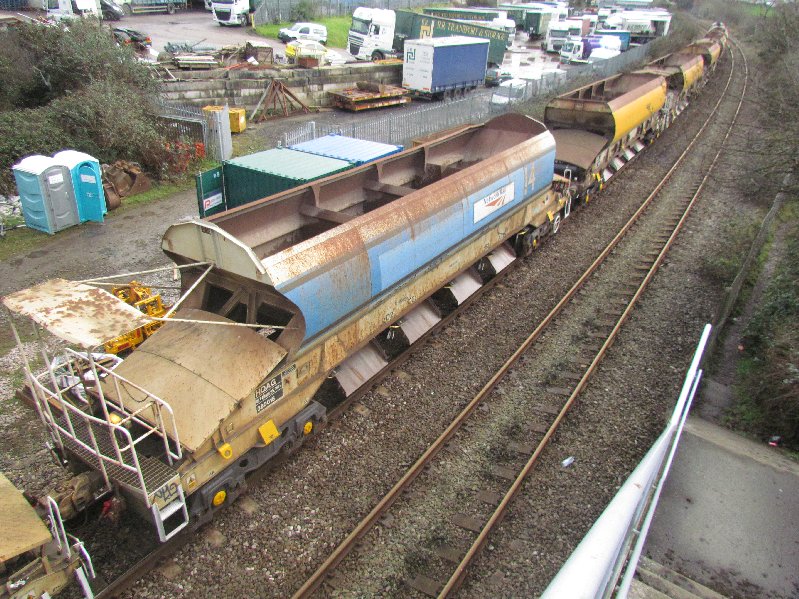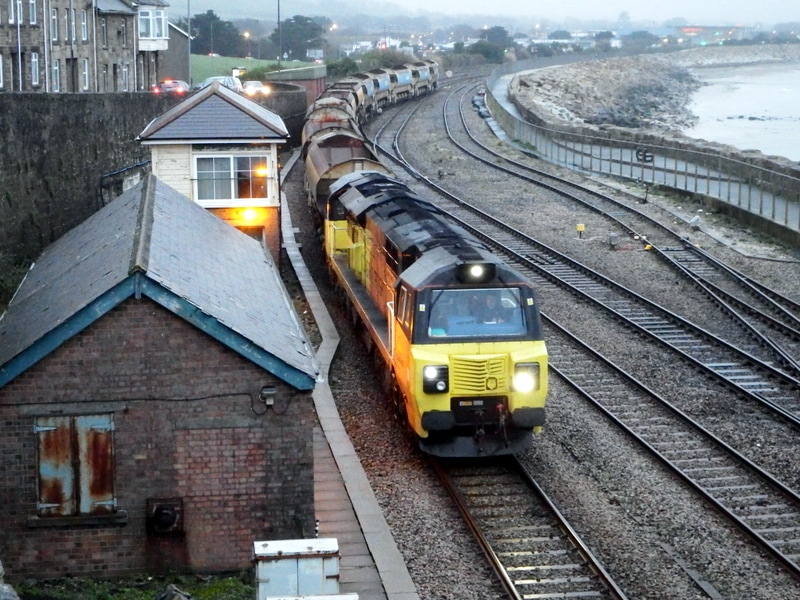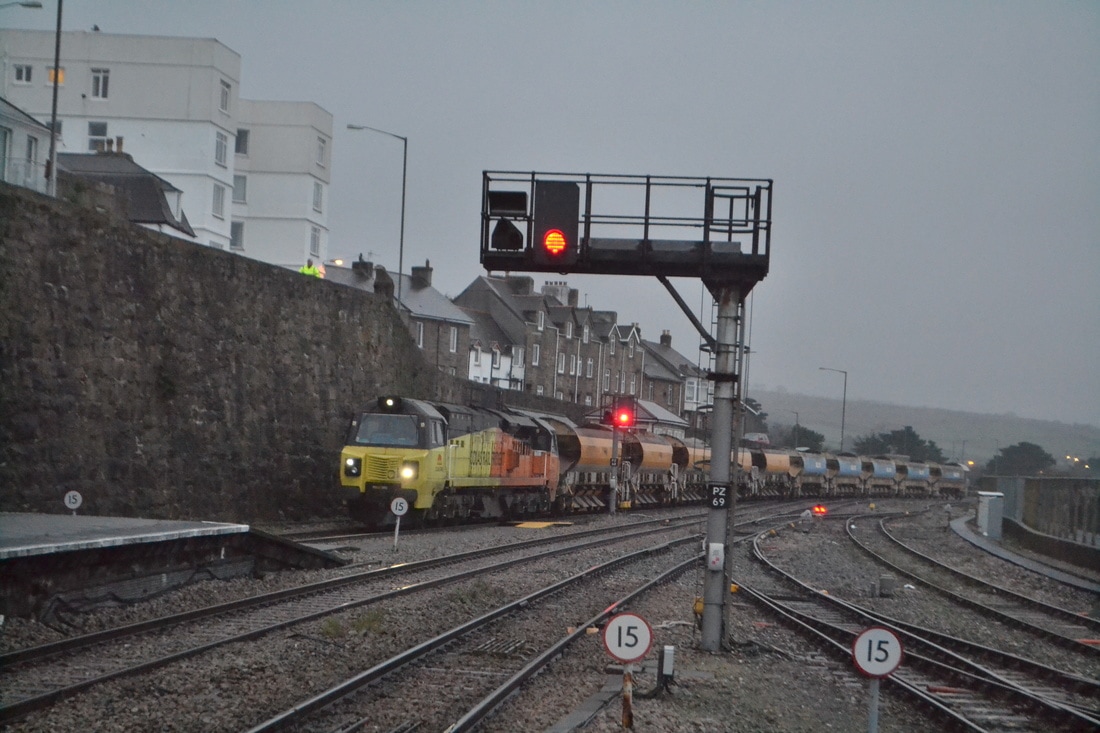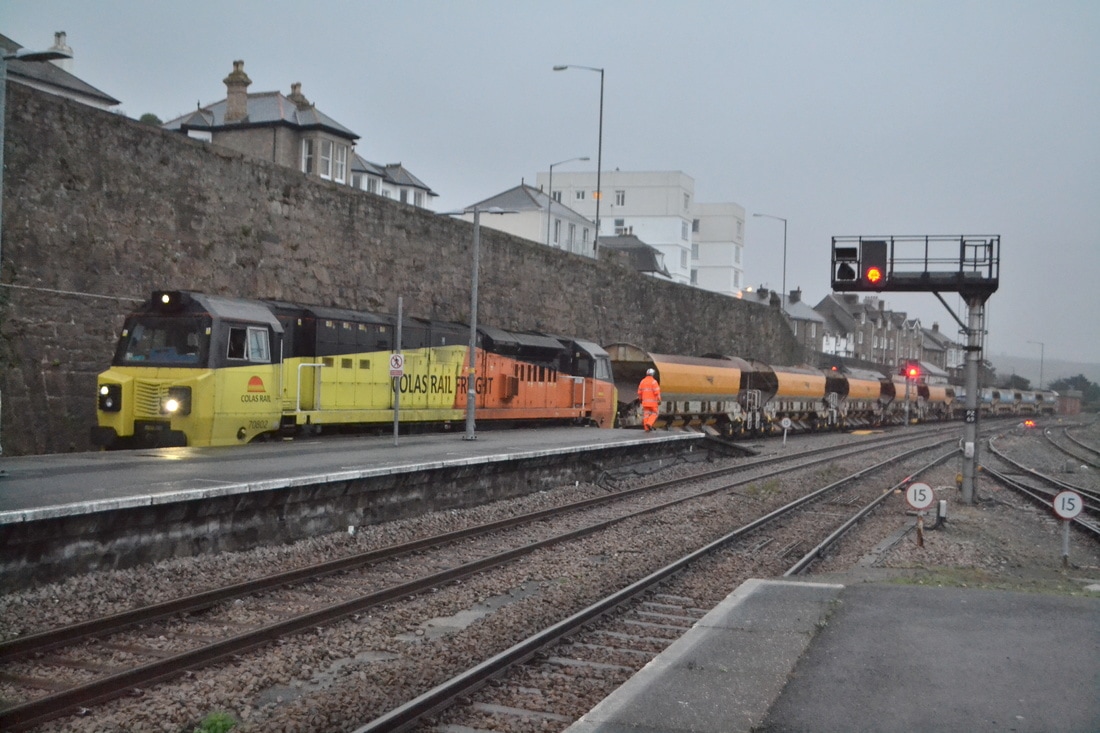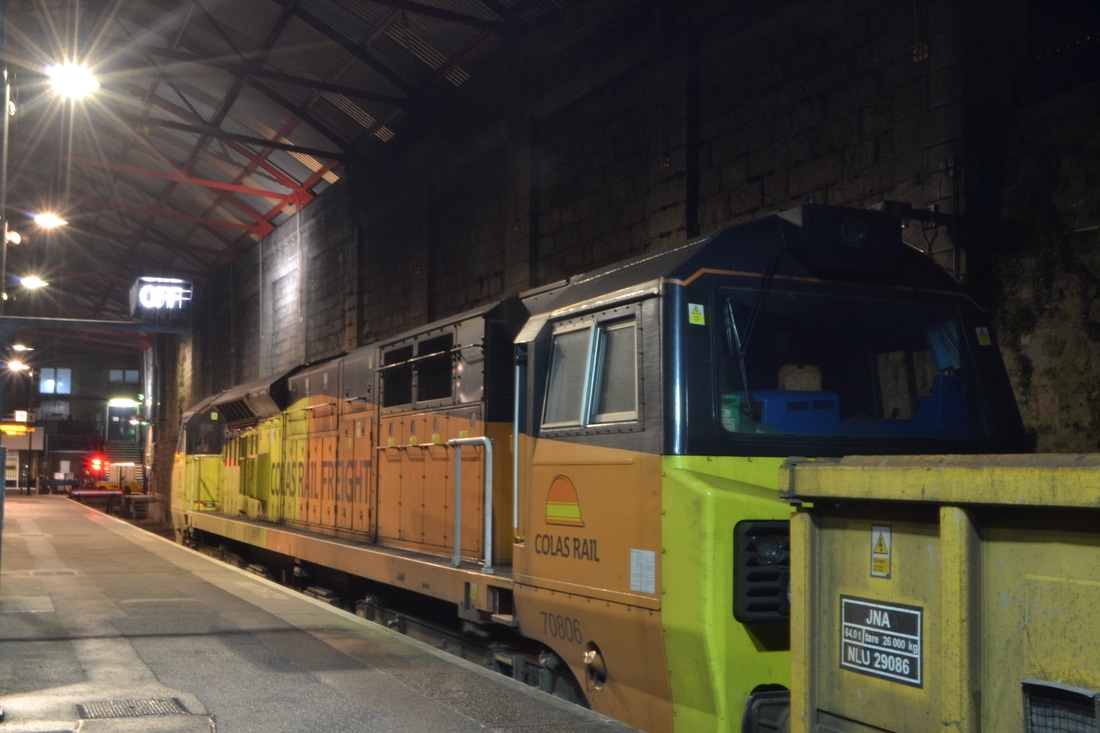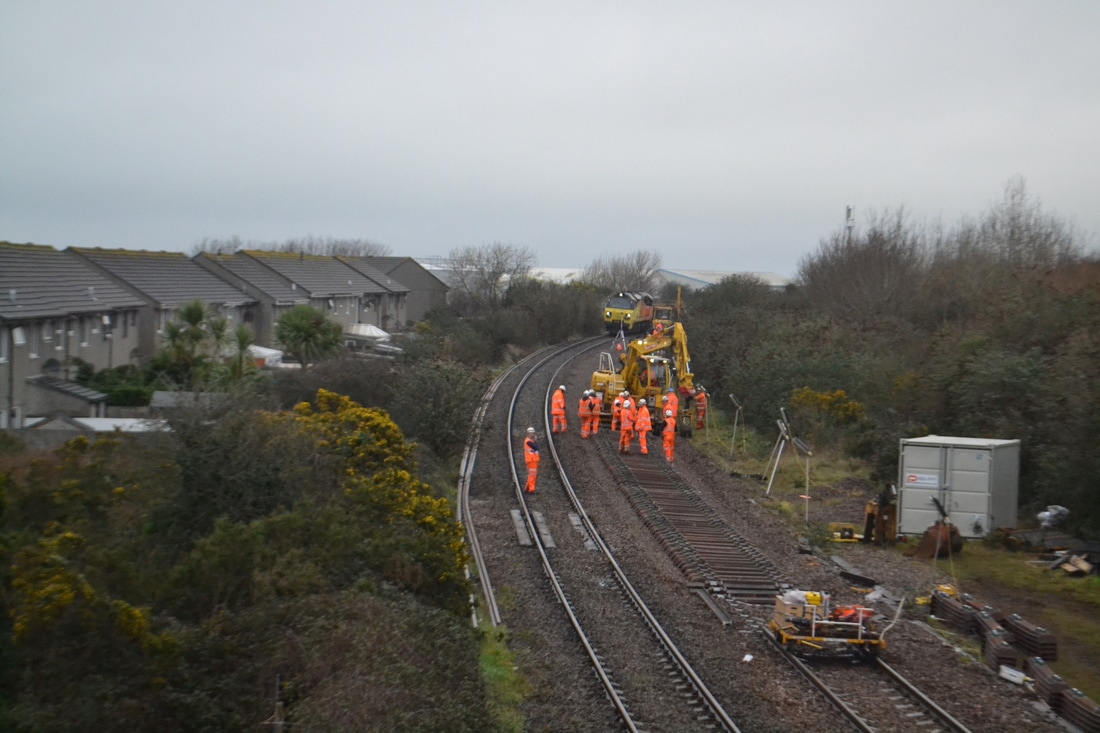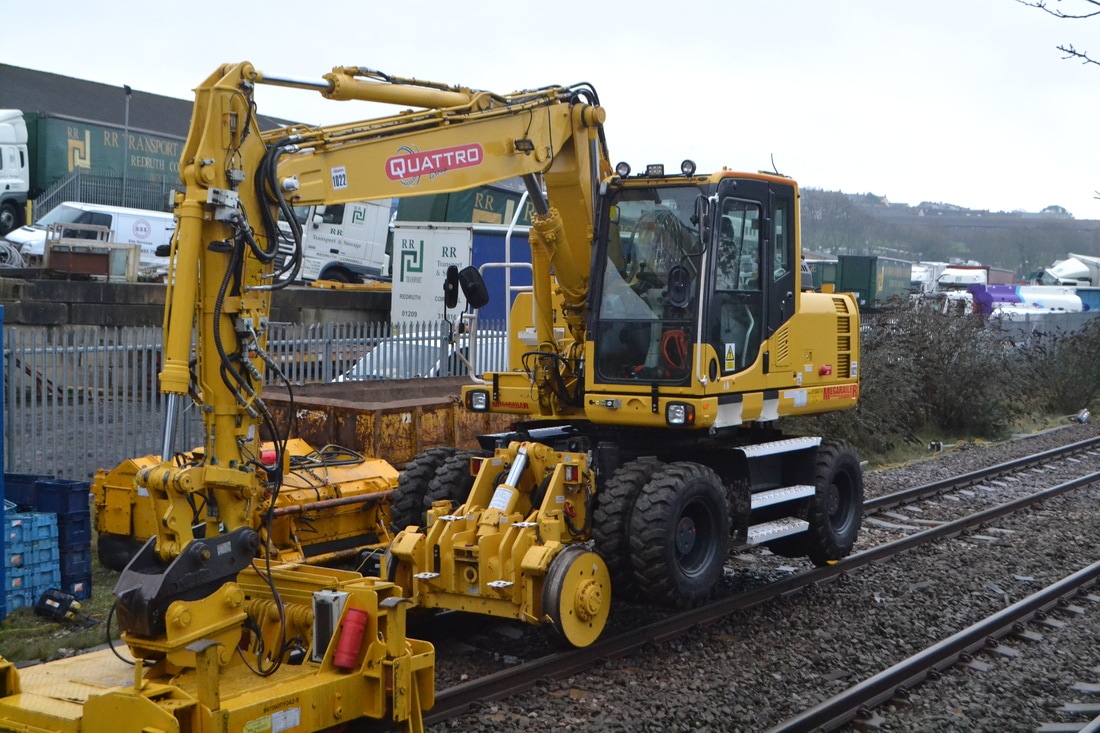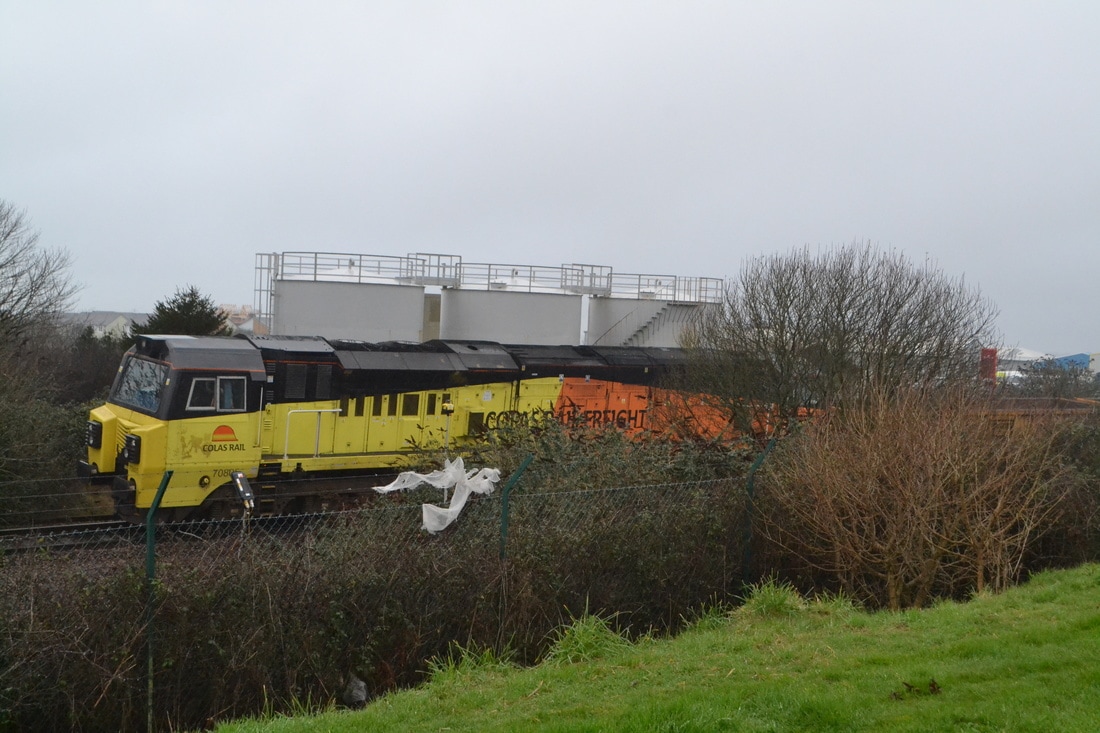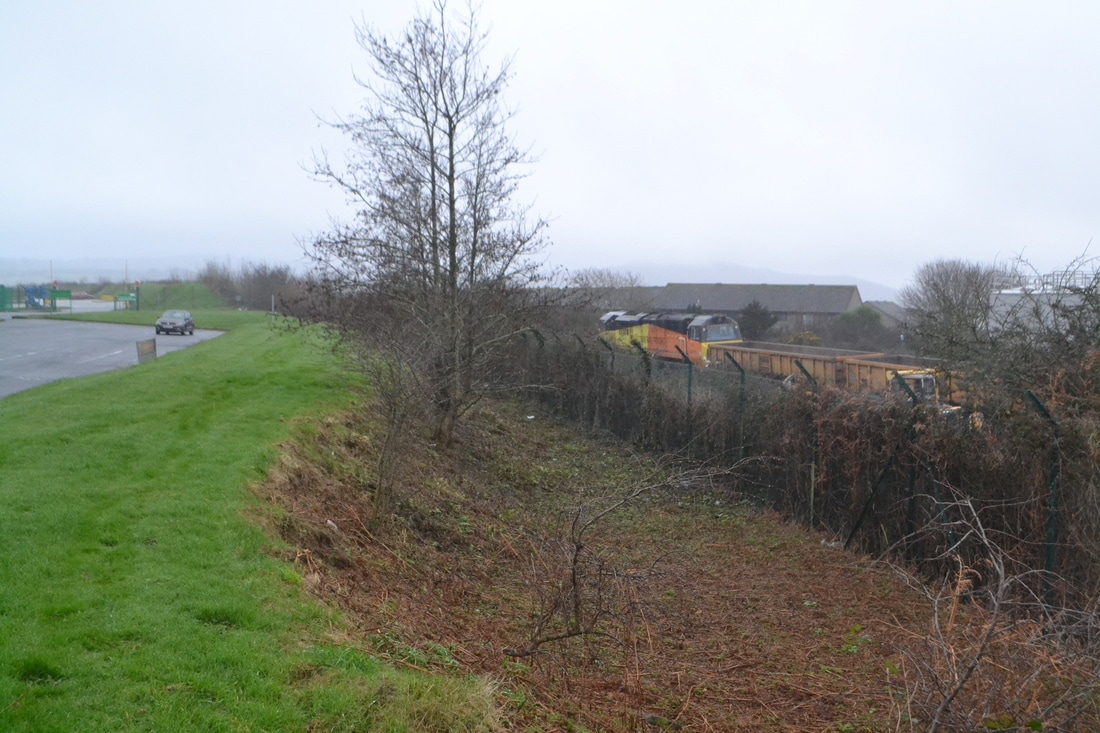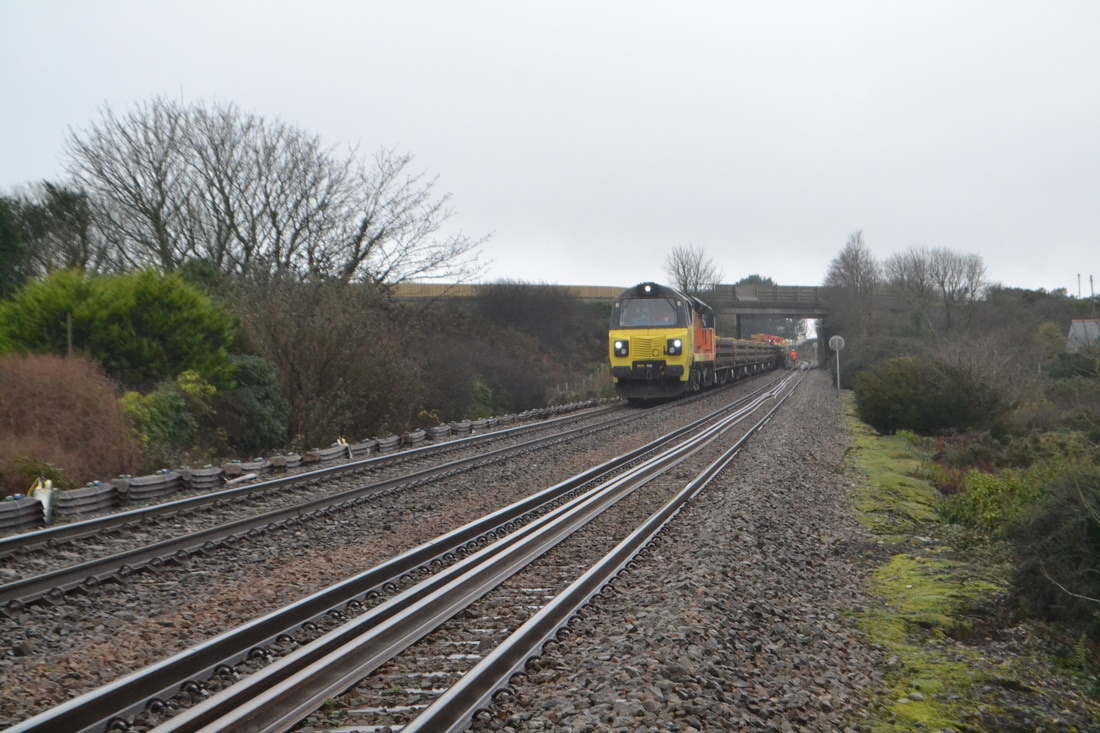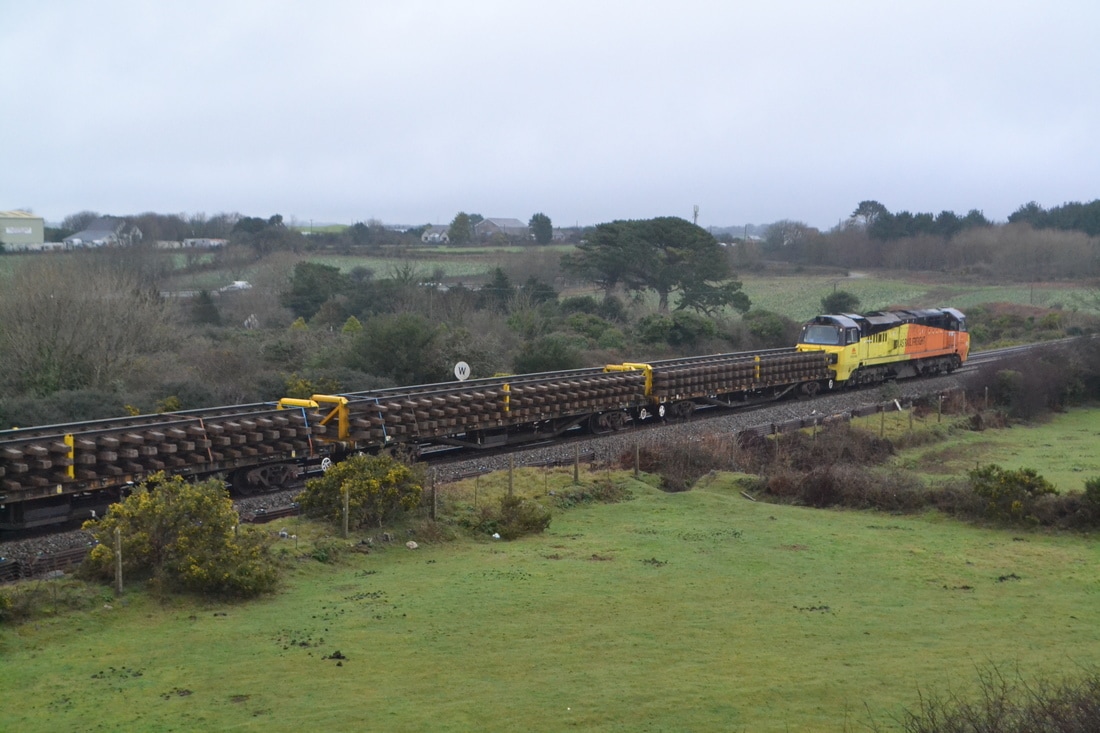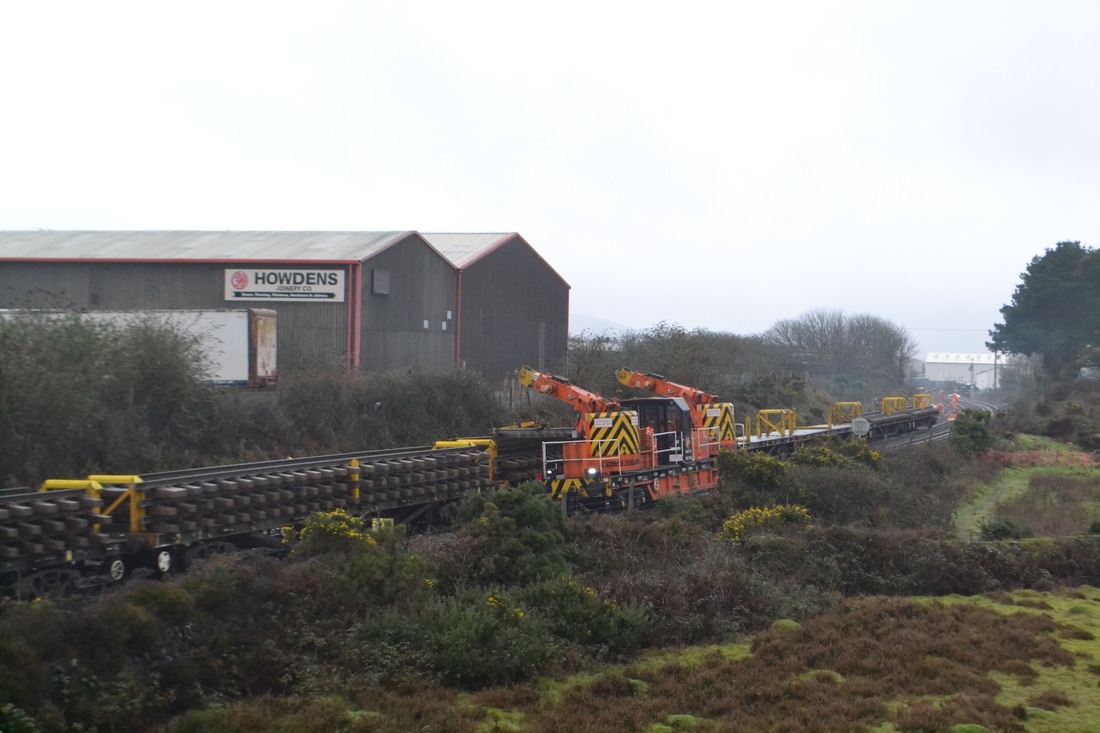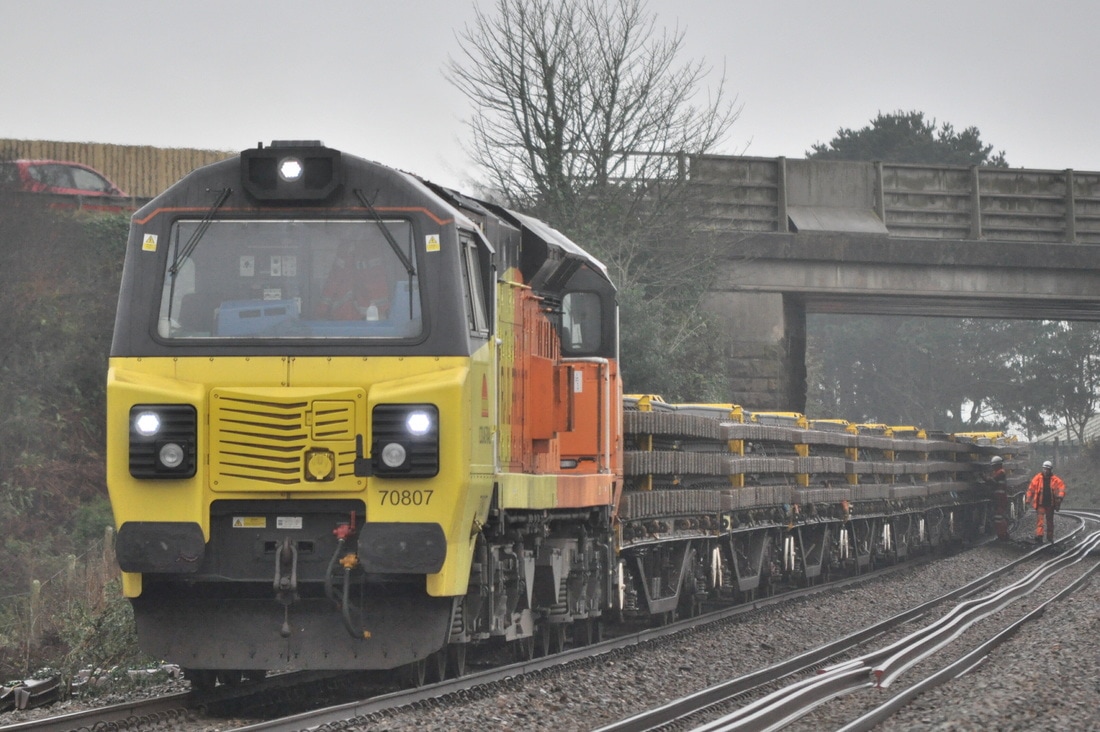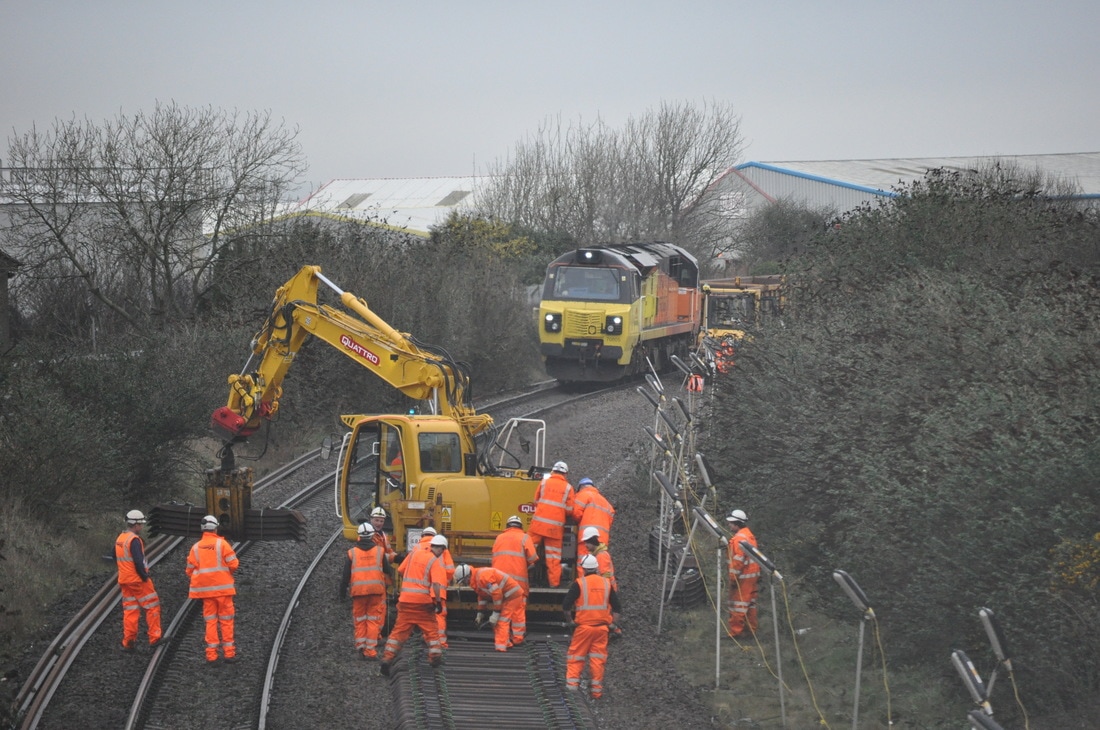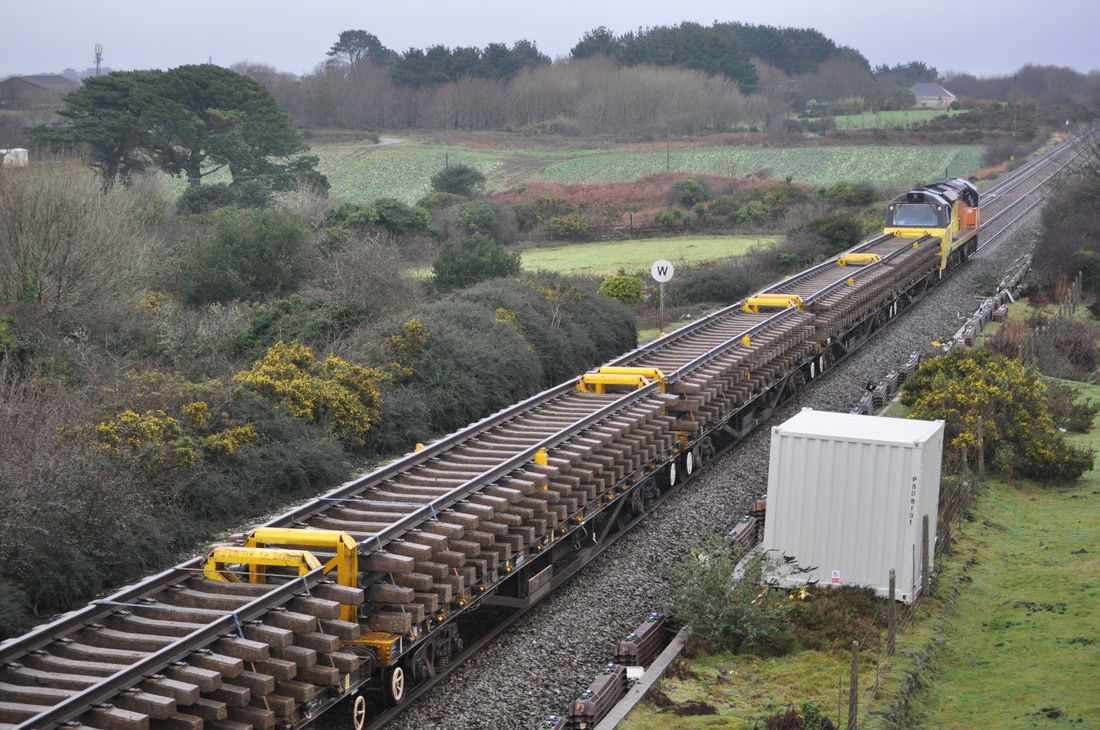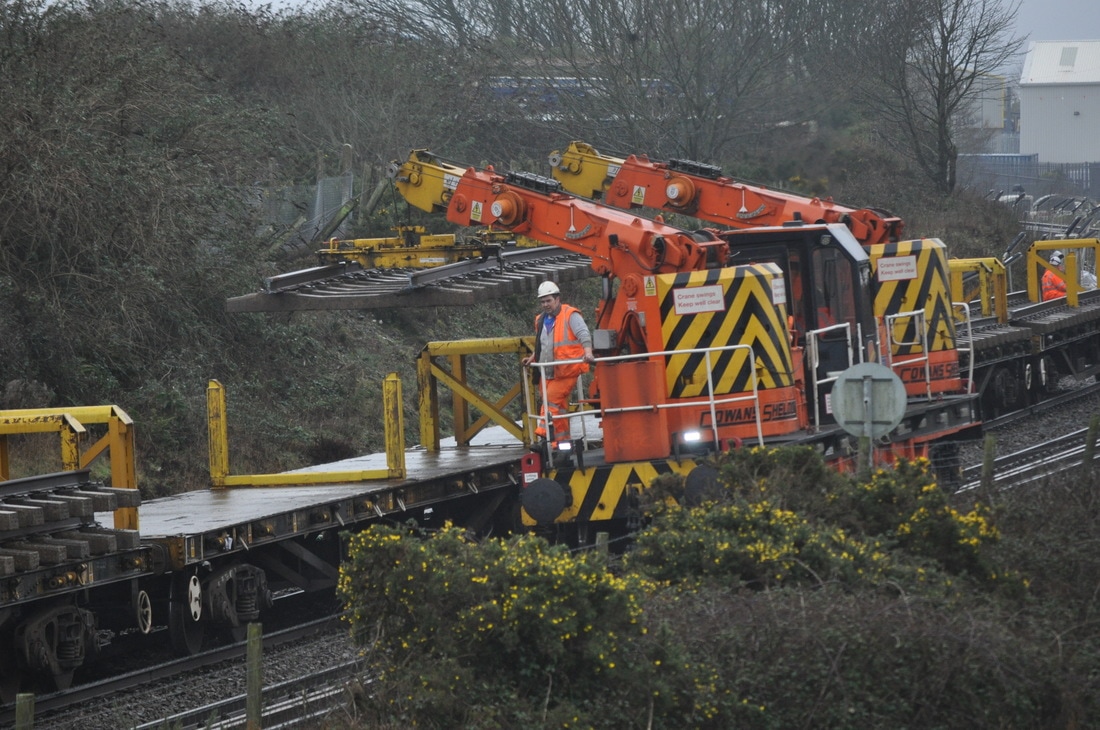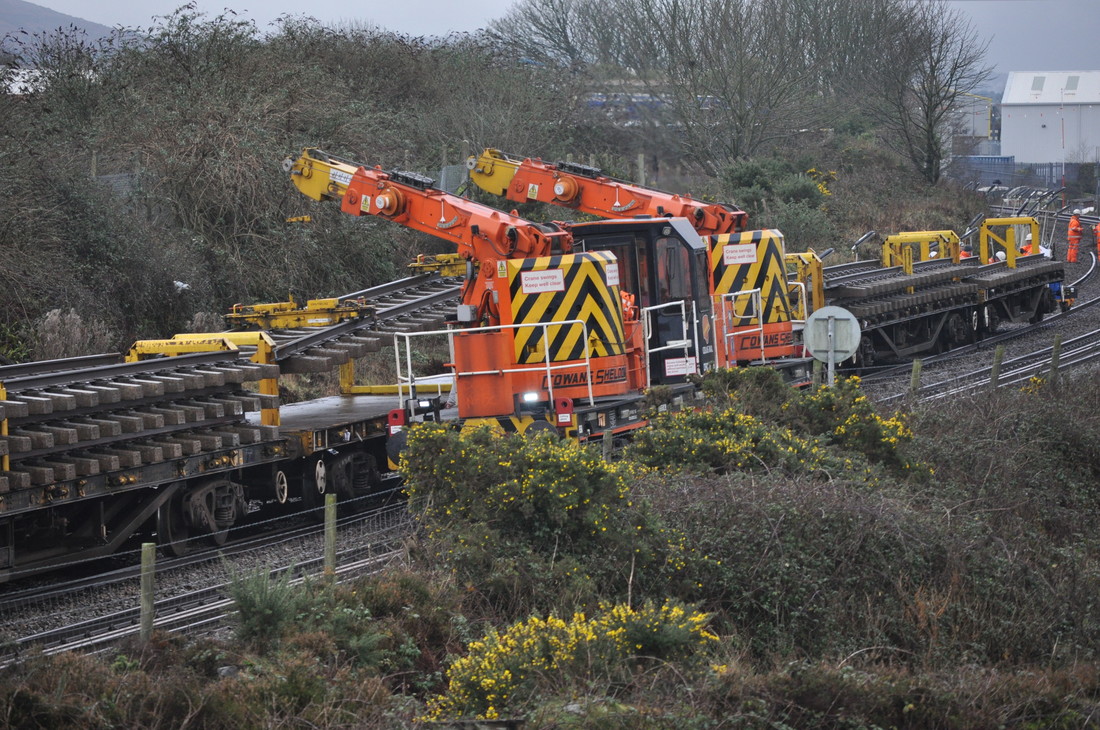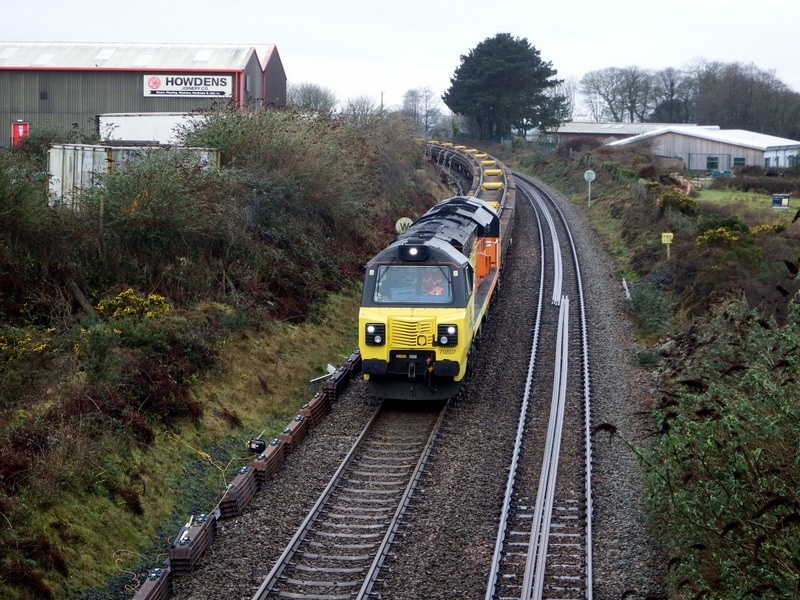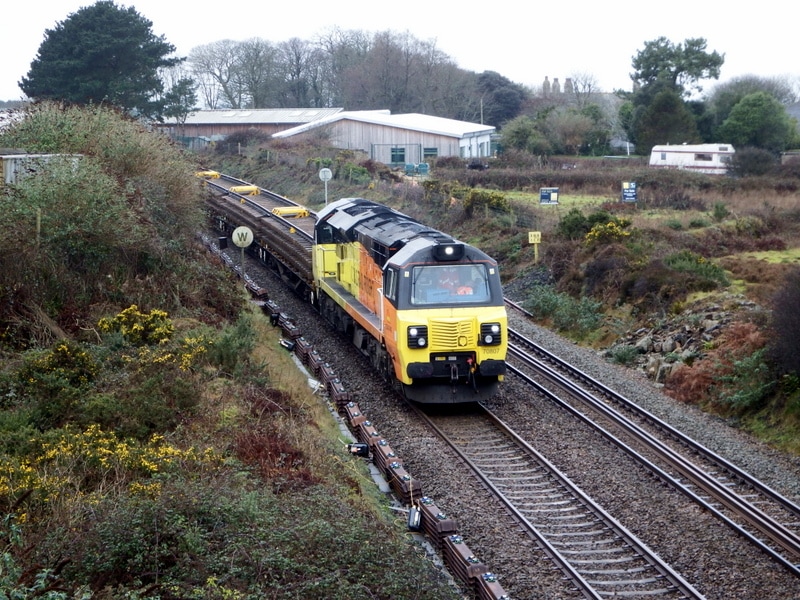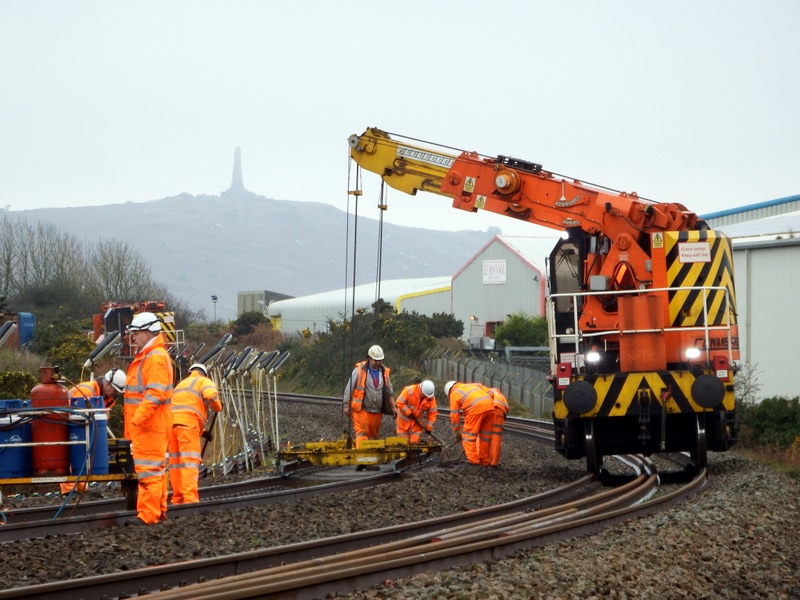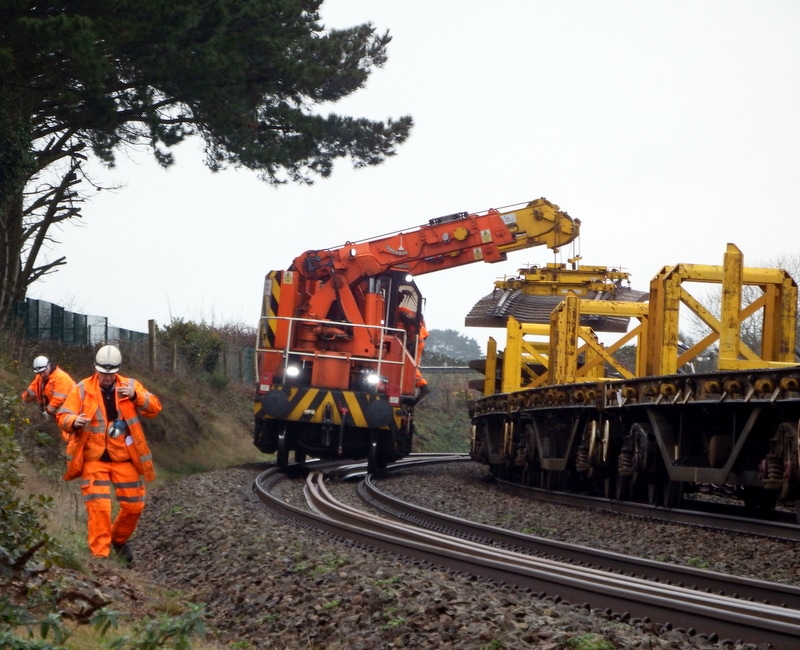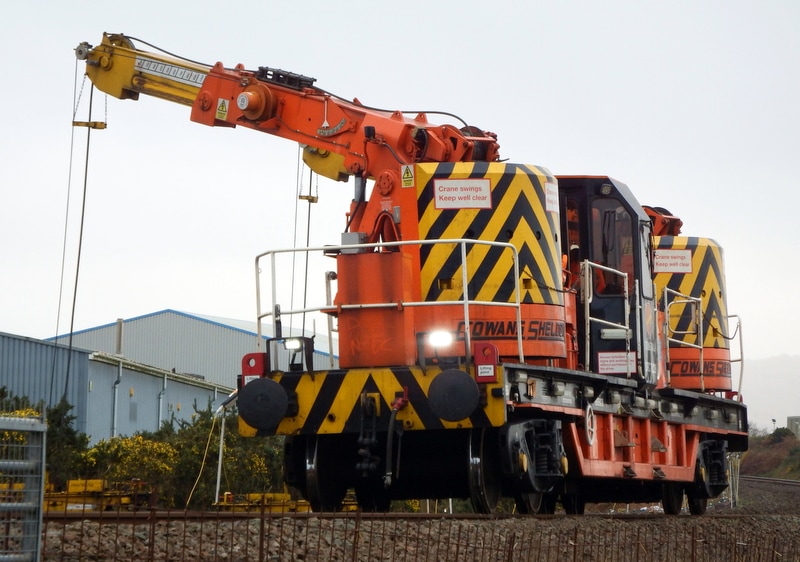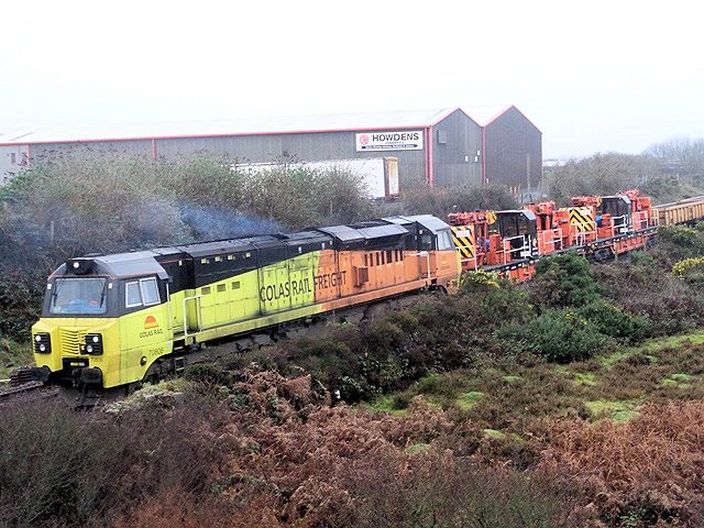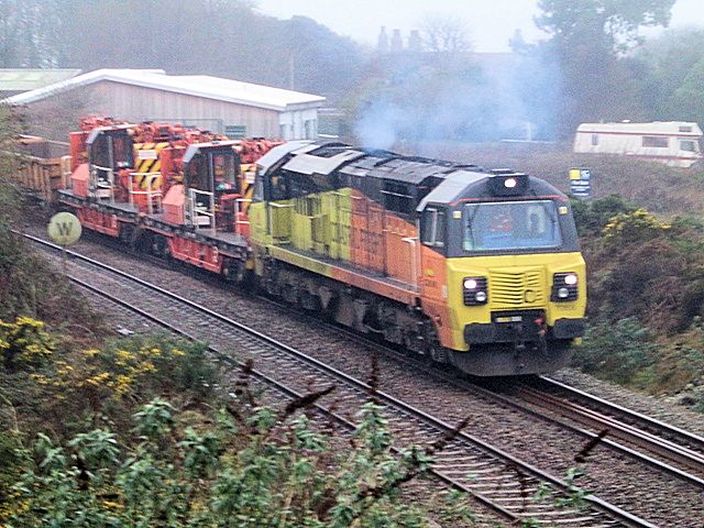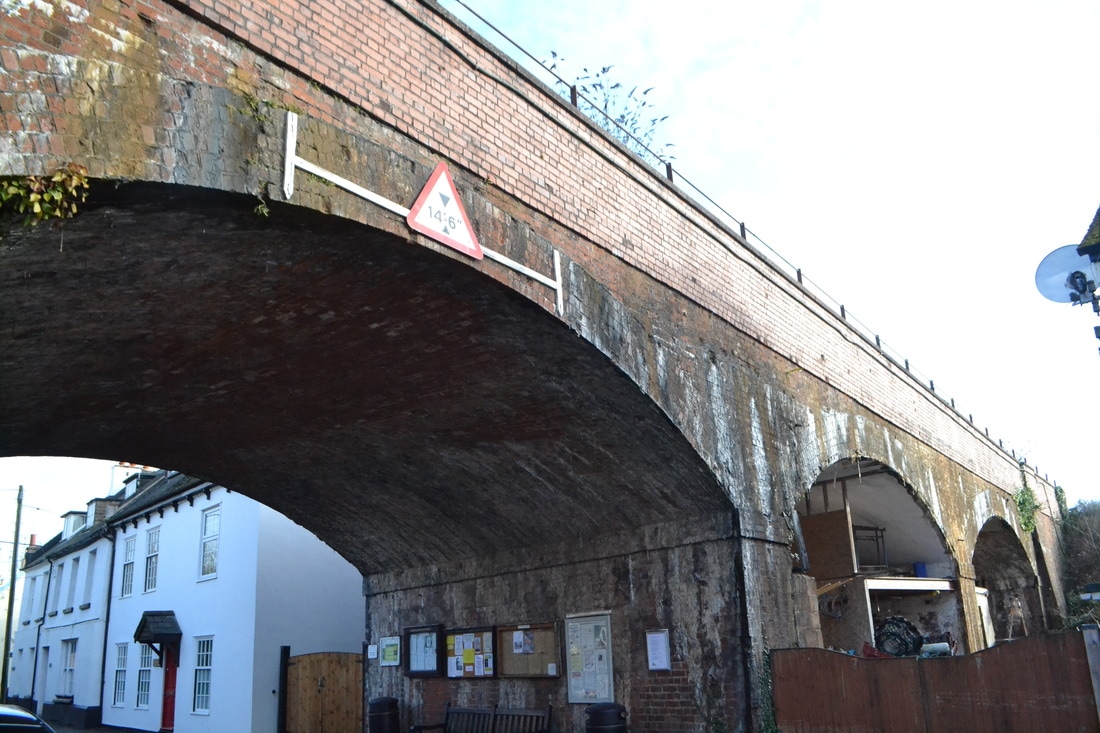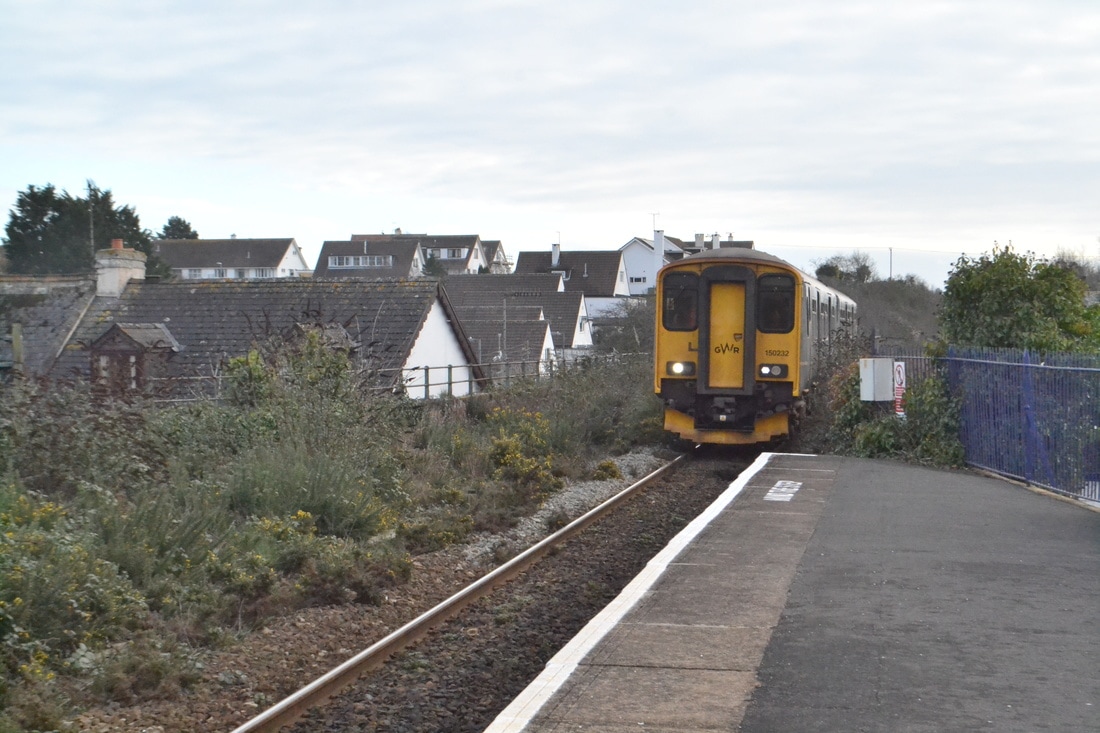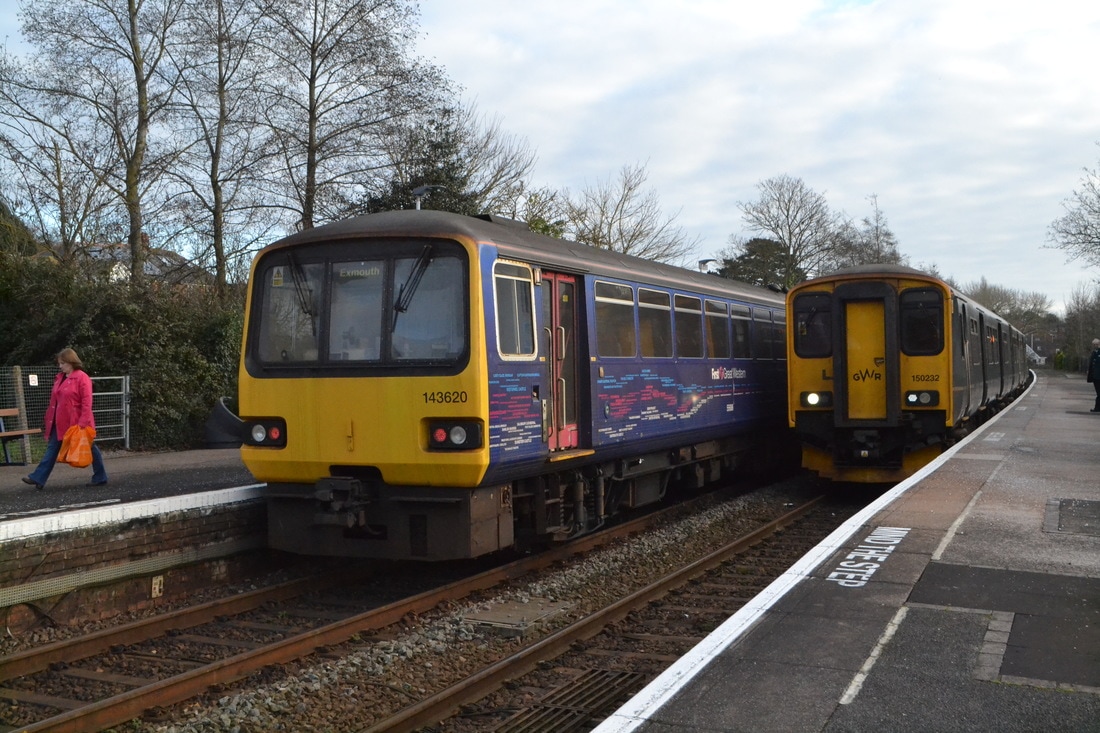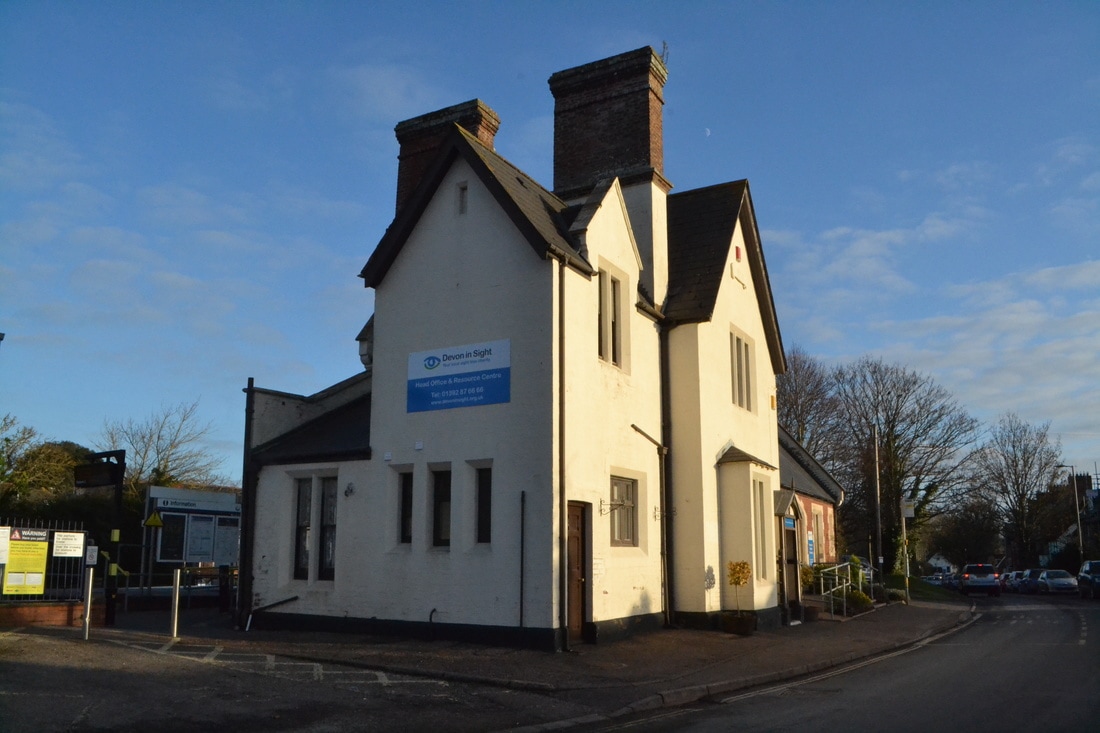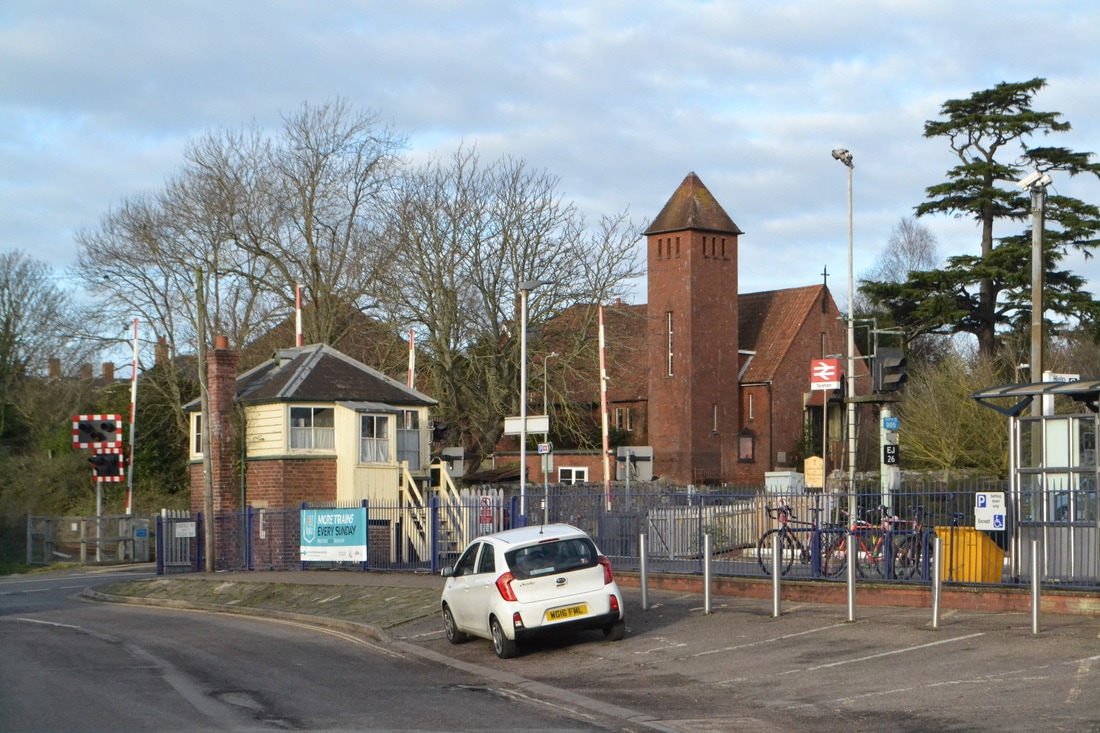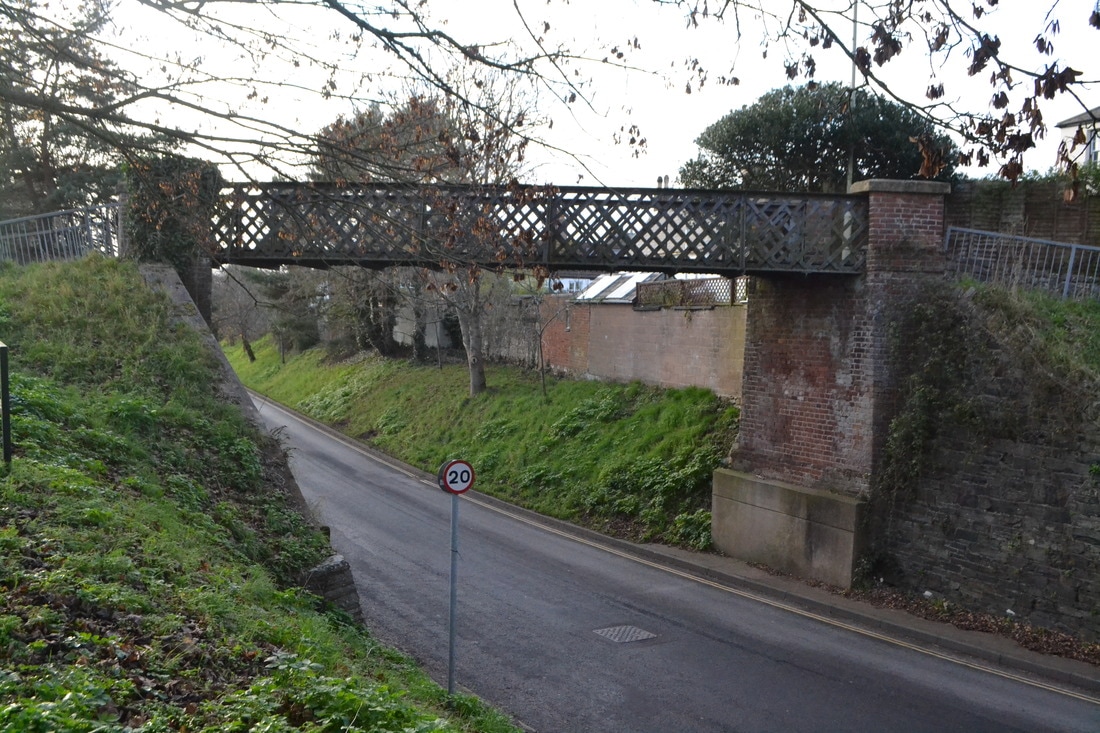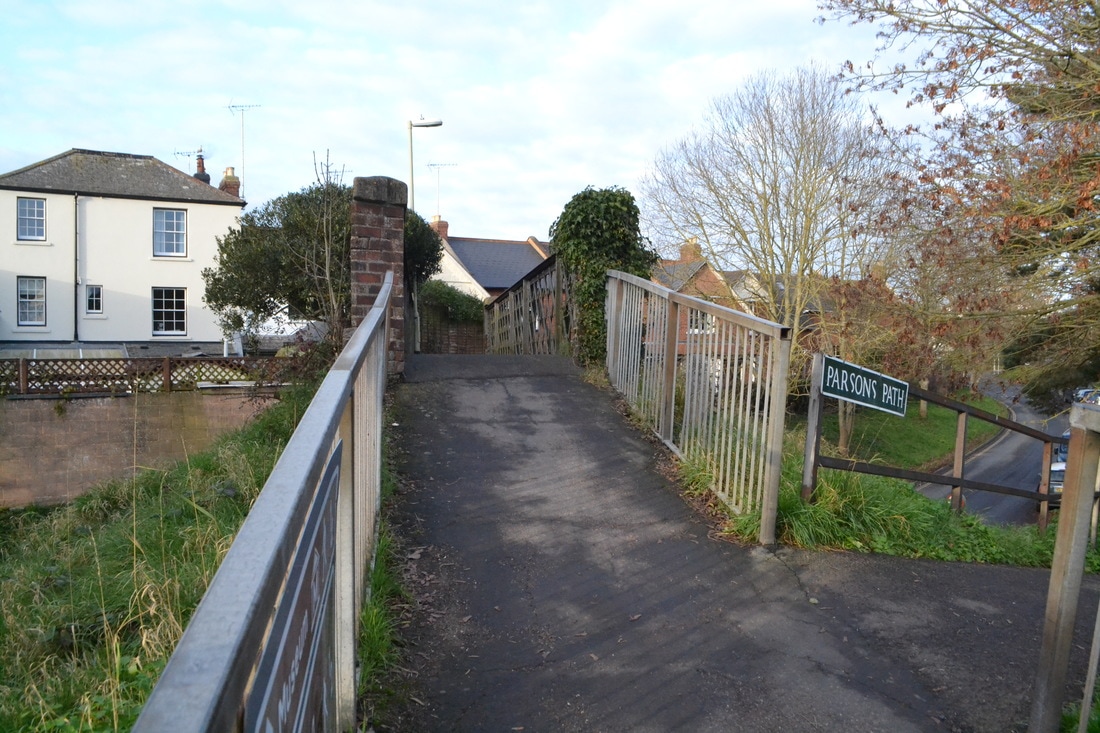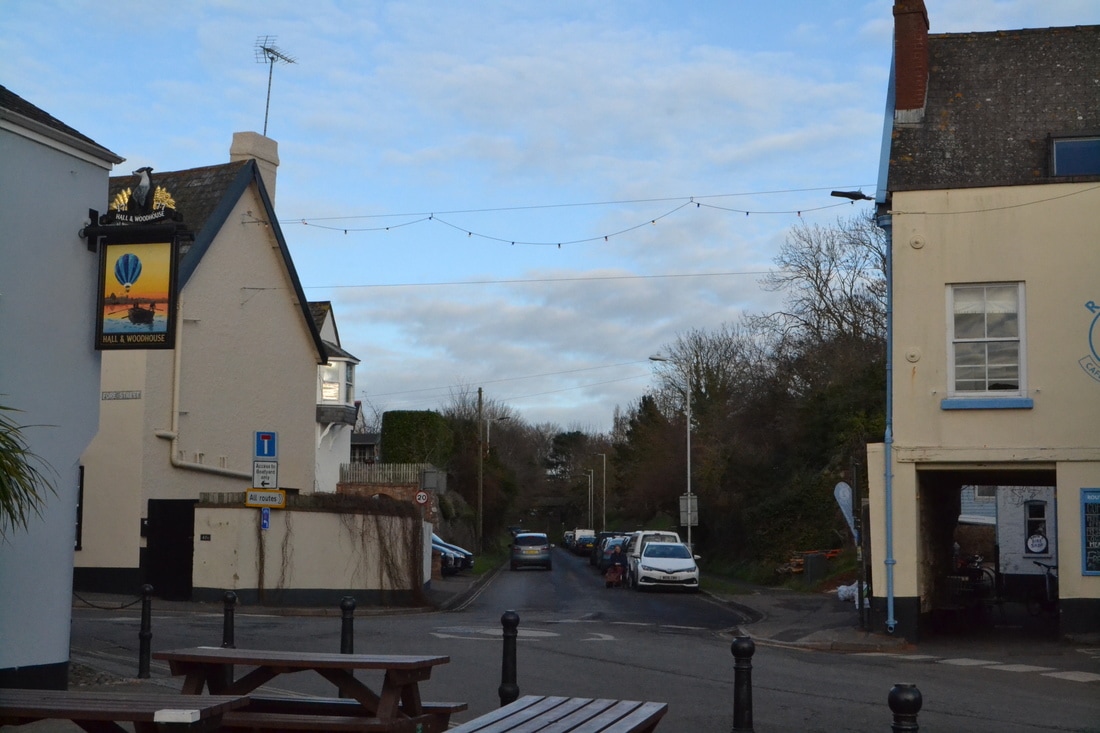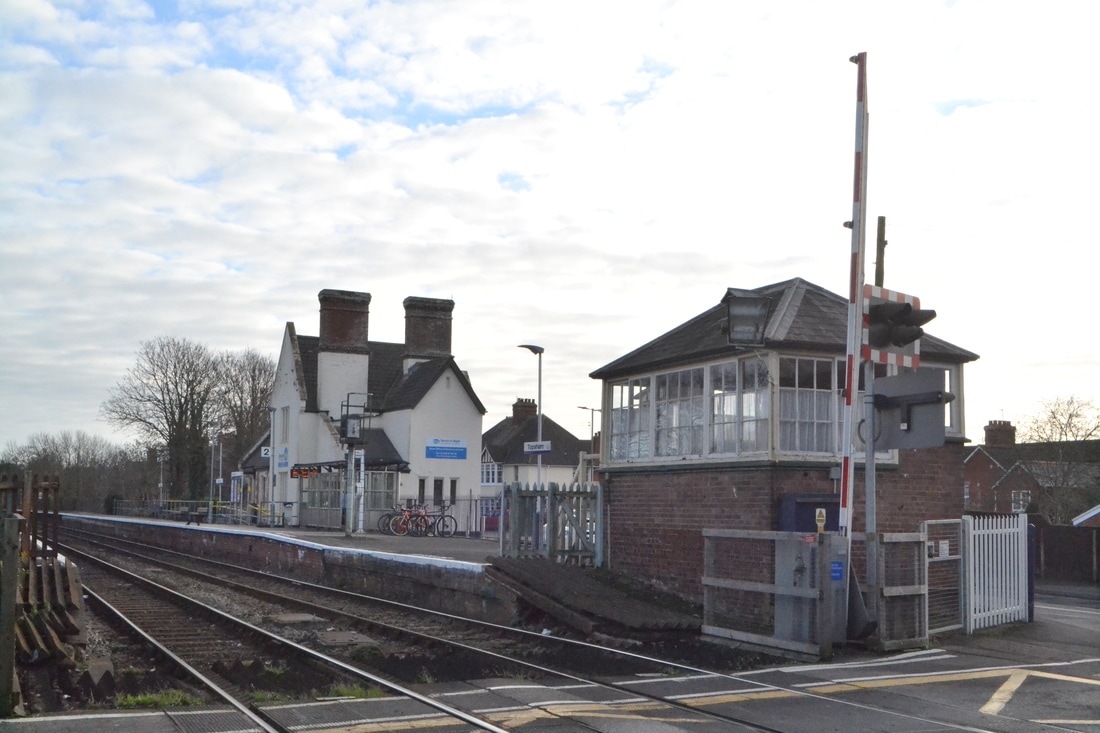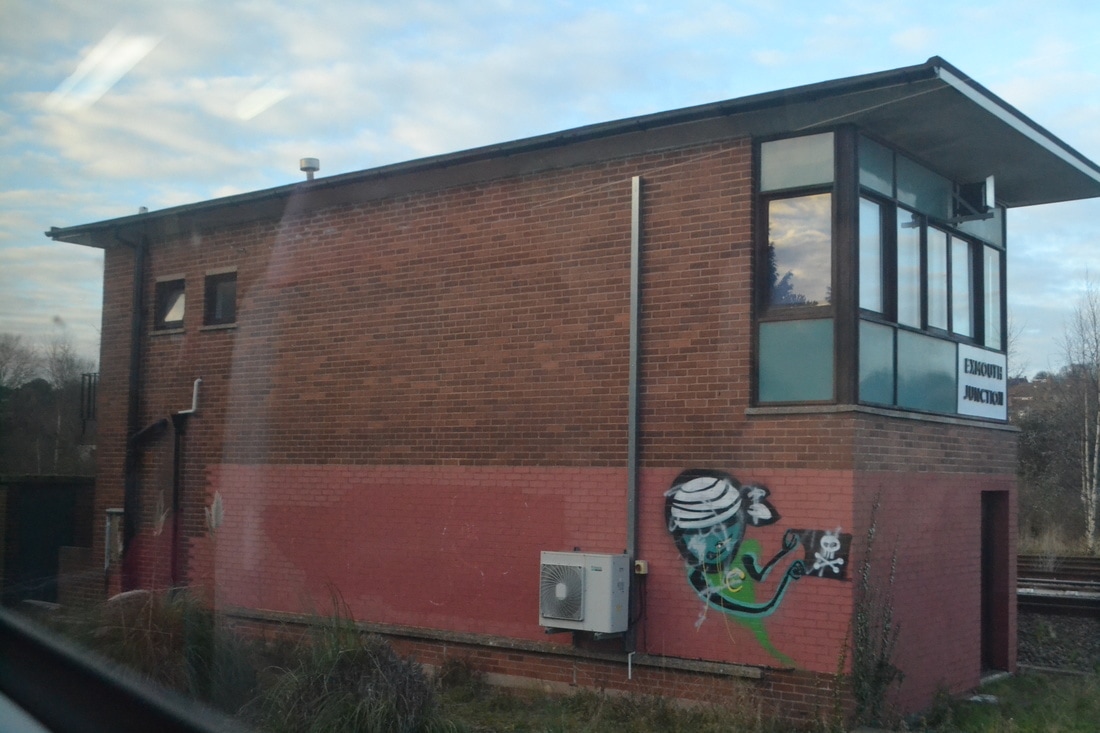Features page covering the period
January to Mid May 2017
January to Mid May 2017
Note Features are added at the top of this page i.e. The most recent comes first.
Articles in this section :-
More on 'All Change' at St Erth. Roger Winnen
More on the visit to Long Rock TMD by the Cornwall Railway Society
More on the Visit to the Gartell Railway 1st May 2017 by the CRS
The path to Yealmpton - updated - Andy Rigler
The British Belmond Pullman The Cornish Weekend
Great Britain Railtour X 6th & 7th May 2017
Porthmister viaduct - St Ives branch - reconstruction. By Laurence Hansford
The Steam Railmotor to Looe. Sunday 18th November, 2012 Peter Murnaghan & Roger Winnen
The Cornwall Railway Society Visit to the Launceston Steam Railway 13th April, 2017 Photographs by Sid Sponheimer and Roger Winnen
Swanage Spring Gala 2017 John Cornelius & Roger Salter
More on the Spring Visit to the Paignton & Dartmouth Railway 27th March 2017 Roger Winnen
Secret Tunnels at Box - the third portal. by Karl Hewlett
Ince Castle by Trevor and Barbara Tremethick
Taking a look at the proposed sea wall alignment at Teignmouth in March 2017 By Colin Burges
Hymek celebrates a 40th Anniversary - an article by Neil Phillips
Harry patch back in service - Guy Vincent
An unusual working Devonport Dockyard to Exeter Riverside via Penzance
The New Exeter (St Davids).
Western Tribute
The Westerns bow out 40 years ago an article by Neil Phillips
Dainton Tunnel Signal Box and Westbury Iron Works Guy Vincent
South Devon Steam Gala Saturday 18th February 2017
Removal of the Camborne Station Footbridge. Roger Winnen and Mick House
Celebrity 37057 stables at Bristol TM. 4th February 2017 Guy Vincent
Track renewals between Redruth and Truro.
Looking at Stations on the Exmouth Branch
More on 'All Change' at St Erth. Roger Winnen
More on the visit to Long Rock TMD by the Cornwall Railway Society
More on the Visit to the Gartell Railway 1st May 2017 by the CRS
The path to Yealmpton - updated - Andy Rigler
The British Belmond Pullman The Cornish Weekend
Great Britain Railtour X 6th & 7th May 2017
Porthmister viaduct - St Ives branch - reconstruction. By Laurence Hansford
The Steam Railmotor to Looe. Sunday 18th November, 2012 Peter Murnaghan & Roger Winnen
The Cornwall Railway Society Visit to the Launceston Steam Railway 13th April, 2017 Photographs by Sid Sponheimer and Roger Winnen
Swanage Spring Gala 2017 John Cornelius & Roger Salter
More on the Spring Visit to the Paignton & Dartmouth Railway 27th March 2017 Roger Winnen
Secret Tunnels at Box - the third portal. by Karl Hewlett
Ince Castle by Trevor and Barbara Tremethick
Taking a look at the proposed sea wall alignment at Teignmouth in March 2017 By Colin Burges
Hymek celebrates a 40th Anniversary - an article by Neil Phillips
Harry patch back in service - Guy Vincent
An unusual working Devonport Dockyard to Exeter Riverside via Penzance
The New Exeter (St Davids).
Western Tribute
The Westerns bow out 40 years ago an article by Neil Phillips
Dainton Tunnel Signal Box and Westbury Iron Works Guy Vincent
South Devon Steam Gala Saturday 18th February 2017
Removal of the Camborne Station Footbridge. Roger Winnen and Mick House
Celebrity 37057 stables at Bristol TM. 4th February 2017 Guy Vincent
Track renewals between Redruth and Truro.
Looking at Stations on the Exmouth Branch
More on 'All Change' at St Erth.
Roger Winnen
Roger Winnen
Visit to the Long Rock Train Maintenance on Saturday 13th May,2017 by the Cornwall Railway Society
Roger Winnen
Roger Winnen
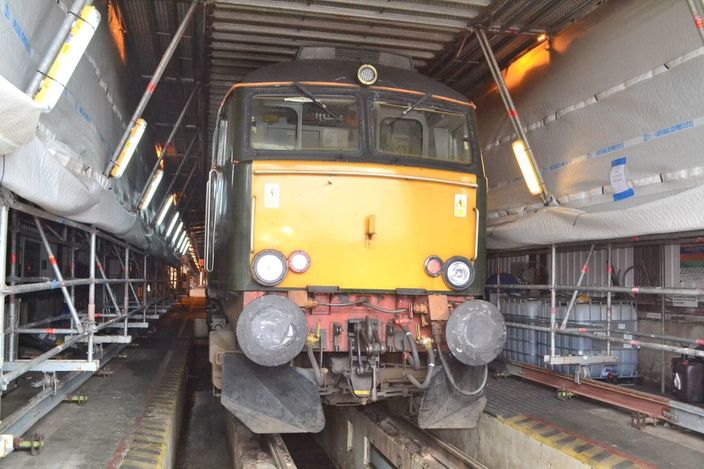
170513zda 57604 Pendennis Castle surrounded by a protection shield used for removing many tons of asbestos from the 40 year old building. Pipes situated to the right of this building, however not in view will be removed during the next week and replaced by stainless steel ones. Copyright Roger Winnen
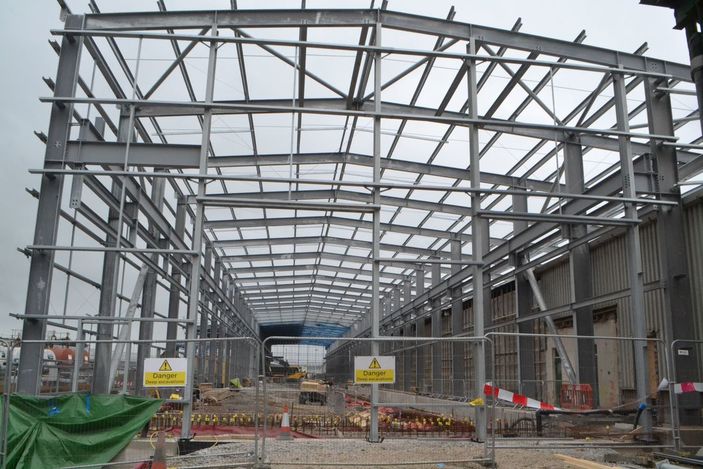
170513zfa We exit to the outside and see the new extension of two additional roads. To allow for overhead cranes to lift rolling stock for bogie changes etc this building has been designed with a higher roof level than the existing HST building. However this roof will be extended over to cover the existing HST building and when fully roofed over the existing roof of the present building will be removed giving an additional headroom inside and the raising of the sides of the depot. The whole building will be fully recladded. Copyright Roger Winnen
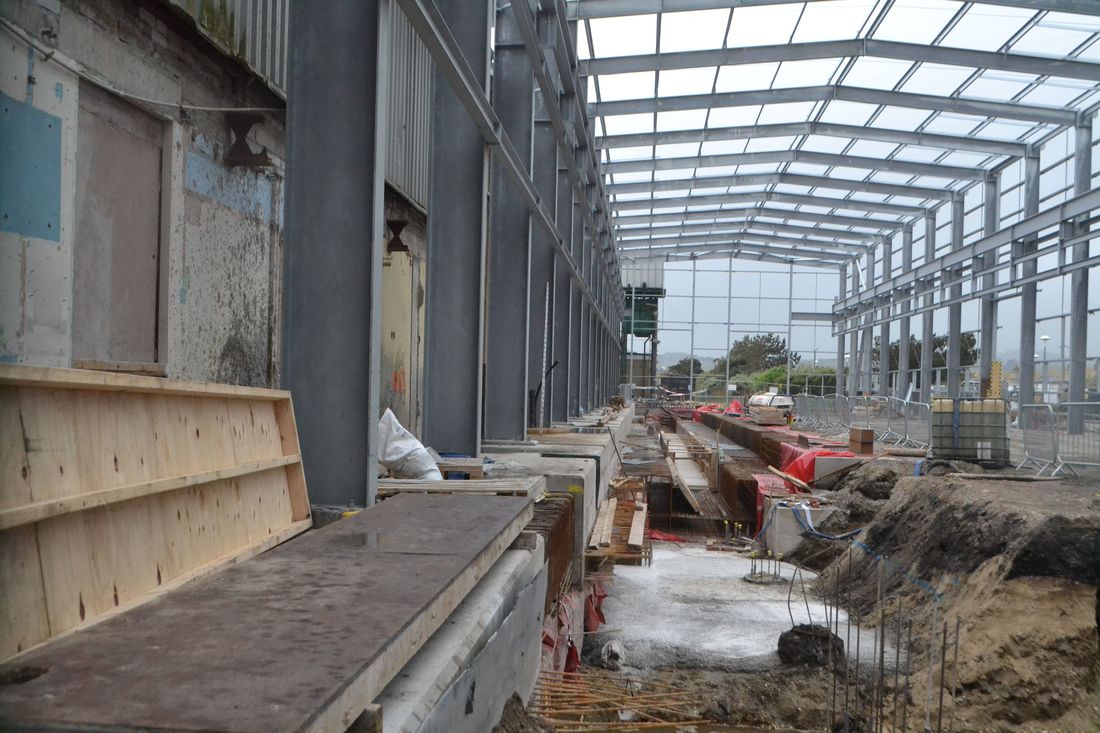
170513zja With its close proximity to The Eastern Green Beach, sea water penetrates this area of land, remedial work is underway to rectify the situation. The area from Marazion Station (Closed in 1964) through to the outskirts of Penzance was a marsh up until the late 1950s it was however filled in by the Borough of Penzance, used as the rubbish tip from the bin collection. Copyright Roger Winnen
Visit to the Gartell Railway at Templecombe Bank Holiday Monday 1st May 2017 Roger Winnen and the CRS
The path to Yealmpton
An update by Andy Rigler
An update by Andy Rigler
It is now possible to walk from the bridge over the Plym at Laira in the direction of Yealmpton to a point just beyond the bridge shown in the first image.From this point it is necessary to retrace your steps either back to the Plym crossing or to walk into the new housing estate being built on the old Blue Circle cement works. The sign at the end of the current path suggests an extension towards Billacombe due to open in Summer 2018. The trackbed to the site of Billacombe station is largely intact, although overgrown. From Billacombe the trackbed is largely lost due to quarrying activities in the area. The next station would have been Elburton but the site, although recognisable using the road which runs alongside as a reference, has been infilled and redeveloped for housing. A little further on from the station site the trackbed now forms part of Sustrans Route 28. While easily found (if you know where to look!) this route is little used as far as I can see, despite the work undertaken in rebuilding a bridge and paving the trackbed.
Route 28 takes you past Brixton station heading towards Steer Point but ends just past the garden centre by the station. From this point it is possible to follow the path some way towards Steer Point but a brickworks has obliterated the trackbed near to Steer Point itself. Once at Steer you can again pick up the route but the route to Yealmpton is interrupted by the missing bridge over a creek inlet. Over the years there have been suggestions of a new bridge and full cycle route back to Yealmpton itself but there have been issues around gaining the permission of the local landowner, as I understand it. Around Yealmpton there are reminders of the line, bridge abutments, embankments and cuttings but the station itself has been completely redeveloped into housing.
Route 28 takes you past Brixton station heading towards Steer Point but ends just past the garden centre by the station. From this point it is possible to follow the path some way towards Steer Point but a brickworks has obliterated the trackbed near to Steer Point itself. Once at Steer you can again pick up the route but the route to Yealmpton is interrupted by the missing bridge over a creek inlet. Over the years there have been suggestions of a new bridge and full cycle route back to Yealmpton itself but there have been issues around gaining the permission of the local landowner, as I understand it. Around Yealmpton there are reminders of the line, bridge abutments, embankments and cuttings but the station itself has been completely redeveloped into housing.
The British Belmond Pullman The Cornish Weekend
Andrew Triggs Craig Munday & Roger Winnen
Andrew Triggs Craig Munday & Roger Winnen
The Great Britain Railtour X
6th and 7th May 2017
Compiled from various sources many thanks to all .
6th and 7th May 2017
Compiled from various sources many thanks to all .
Saturday 6th May 2017
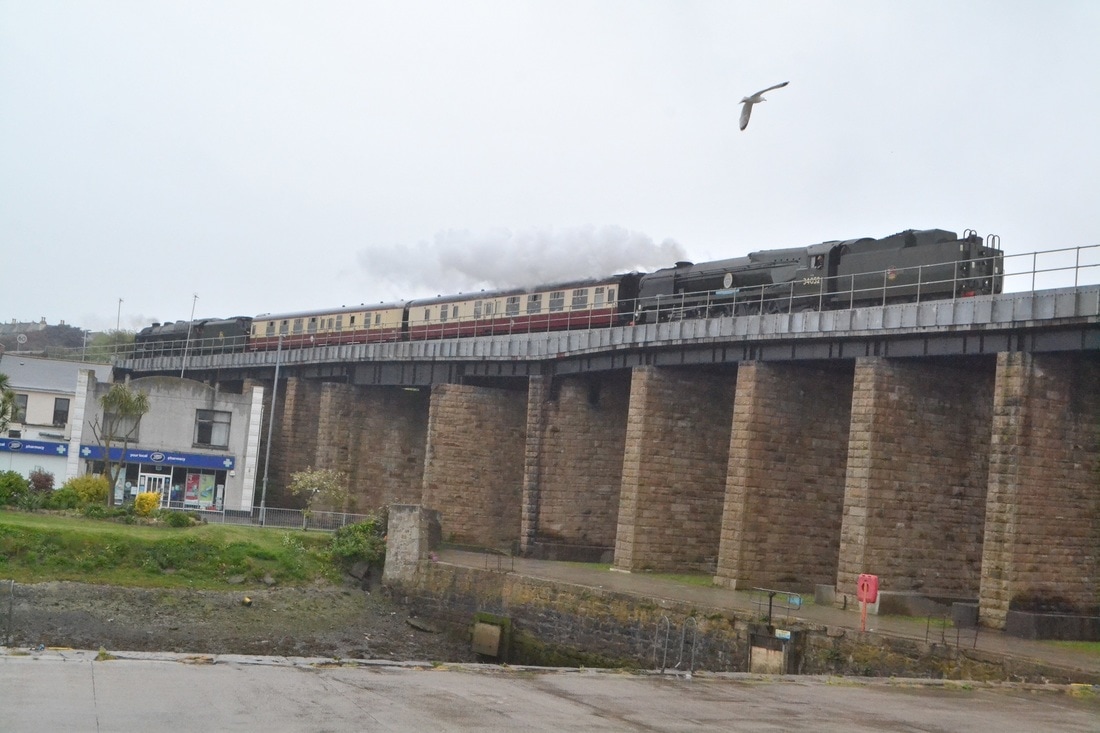
170506m The two engines with their support coaches cross Hayle Viaduct at 18.23 on route to Penzance. Luck was on my side at Hayle as a T1 Bus for Penzance arrived at Foundry Square at 18.28, passing St Erth the steam was held for the through St Ives to Penzance train. My arrival at Penzance was 15 minutes before the steam arrived. Copyright Roger Winnen -
Sunday 7th May 2017
Portminster Viaduct Reconstruction
A very detailed article by
Laurence Hansford.
A very detailed article by
Laurence Hansford.
Having told you about the end of signalling as well as the supply of loco water at St Ives, I thought I had better tell you about the viaduct just outside the station.
Today it consists of seven short spans bridged by longitudinal parallel pre-stressed reinforced concrete beams and three long spans of pairs of chunky steel “I” beams which support a reinforced concrete “trough” pre-cast in short sections. Reinforced concrete side walls are then continued across the short spans to complete this “trough”, which holds the ballast in place. Hand-rails were then grouted in from end to end on both sides and there are refuges “cast-in” at regular intervals. The three long spans are at the St Erth end.
The construction is more complicated than it appears because the whole thing is curved as well as being bell mouthed at the town end. This is because the points leading to the sea siding (the engine run- round in the station) were actually on the viaduct. Since all the concrete parts fit each other accurately a lot of effort must have gone on in the drawing office to work out how this was going to be achieved.
Now, you are probably wondering what was there before the era of reinforced concrete. The answer is a construction with a lot of similarities to the recently refurbished Hayle Viaduct; in other words timber and iron sitting on granite piers. As far as I am aware it was the original, dating from the opening of the line in 1877. Given the date, the iron work could have been steel or wrought-iron but my guess is that it was the latter as it was still in widespread use and probably cheaper.
Basically the bridge decking was big baulks of timber with the track laid on top. The seven short spans were all timber but the long spans, on the other hand, rested on longitudinal iron beams like in the “new” bridge, the difference being that, whilst they had larger overall dimensions, they were fabricated in a very flimsy trellis-work style, all riveted together. It was pretty obvious that these were puny by comparison with their replacements. All the granite piers extended upwards on each side of the viaduct as pillars which served as short walls to the refuges. Handrails were fitted between these on cast iron stanchions bolted to the timbers and that was about it. These granite pillars had to be removed during the reconstruction to make way for the concrete trough but you can still see what they were like as those on the abutments at each end were retained.
So, how do I know all this? Well, when I was 9 or 10 there was only one other child living on Draycott Terrace and he happened to be another boy of about the same age. We used to pool our pocket money and go and buy Woodbines but we then had to find somewhere “secret” to go and smoke them. The answer was to climb up the stone wall and up onto the bridge abutment from the Primrose Valley roadway where it passes under the viaduct (the end nearest the engine shed). With our feet on the ledge at the bottom of the “I” beam and clinging on to the trellis work, we could then clamber across either girder to the next pier, and the next, and the next. The two intermediate piers provided perfect hidey-holes from where we could see what was going on but not be seen.
This procedure was not without its risks. As far as we were concerned, the main one was that the iron-work was protected by a thick layer of bituminous paint and where engine oil had seeped through the timber this had turned into a black sticky goo. In the first place you had to be careful where you put your hands but, more importantly, it was wise to keep it off your clothes as it was the very devil to get off. This did not go down well with one’s mother! Fortunately you could always blame it on “tar” picked up on the beach, from which it was indistinguishable. (In those days it was common practice for large ships to steam clean the residues left in their empty oil bunkers many miles out at sea, where they were well out of sight, before entering port. Under certain tidal and storm conditions in the winter time this would end up being washed ashore by which time the volatile component had evaporated leaving big lumps of…evil black sticky goo.)
Although we were careful, the fact that we could fall off whilst in transit was thought about and promptly dismissed! As I said, we were just careful.
During the summer of 1954 I was surprised to find workmen digging deep holes alongside several of the granite piers. On enquiry I was told that they wanted to see if the piers were sitting on sand or bedrock. Having discovered bedrock, they filled their holes and disappeared. Clearly, something was going on. Asking around on the station, I discovered that the viaduct was to be re-built.
Then in early 1955 notices appeared on the station announcing that rail services on the branch would be suspended from Saturday 2nd of April until Monday 16th May; this was, indeed, because the viaduct was going to be re-built. In the meantime the service would be maintained working on a broadly similar time-table using buses. (So what’s new about bustitution?)
I was looking forward greatly to this exciting event. Come the day, calamity struck – I caught measles and was confined to bed for a fortnight and not allowed out of the house for another week. Because my parents ran a Guest House and it was out of season I was moved into a bedroom at the front of the house. At least I could see much of what was going on and, when nobody was around, I would sneak up to the windows on the top floor, from where I got a much better view.
Anyway, they replaced everything except the granite piers one span at a time, starting from the St Erth end using a pair of steam cranes, one of which was more or less “marooned” around the station. The one at the St Erth end was a proper breakdown crane whereas the other was a bit smaller and I believe came from the Civil Engineers Dept.
To start with they built a very substantial timber trestle over the Primrose Valley roadway, ultimately up between the two main girders. Whilst this was going on the track just over the span was removed, followed by the timber-decking, leaving the girders exposed. Then in unison the two cranes lifted the first girder out and placed it at an angle on the other girder and the temporary wooden structure. This was followed by hard work as the old girder was manhandled using crowbars until it was at right angles to the track & close to the abutment at the St Erth end from where it could be lifted out and placed on a waiting bogie waggon next to the breakdown crane. When the waggon was loaded it was taken away to St Erth by a waiting engine which later returned, pushing another waggon. Obviously a bit of re-arrangement of the wooden trestle was necessary before the second girder could be taken away but the procedure was basically the same. As soon as the girders were out, masons set-to to prepare the stonework to receive the new girders, presumably using quick setting cement.
At this point it is worth mentioning that throughout the rebuilding, several different activities would be going on at the same time –it had obviously been well planned.
When everything was ready, the new girders were put into position using a reversal of the process just described. However, being much heavier, it was much harder work and I seem to remember that the cranes were used to help drag them into a position from where the two cranes could lift them into their final resting place. I believe two cranes were necessary because one on its own was not man enough to dangle a girder over the centre of the span. I suppose they couldn’t let the crane get too close to the abyss, for fear it might topple in.
If my memory is correct, the next job was to lay the sections of concrete “trough” across the new girders on top of which a short length of temporary track was laid, allowing the breakdown crane to move forward and get at the next span. Hunks of timber were placed underneath the sleepers to bring the rails up to the correct height for coupling to the old track. The presence of the new concrete “trough” sections must have made life more difficult because it would have prevented the breakdown crane from slewing other than over a very restricted angle. This whole process was then repeated for the other two girder spans.
As for the 7 short spans I can’t now be sure that both cranes were involved and anyway most of it was annoyingly blocked from my view by the hotels then down Primrose Valley (Pothvale and Trevessa) but on balance I think they were. Certainly temporary track was laid, span by span, and a very temporary water pipe was run across the top of the piers so that the marooned crane could be replenished from the engine shed water tank.
The “bustitution” service was provided by Western National using their ubiquitous double-deckers, although I noted that they were using their oldest pre-war vehicles, rather than their shiny new ones. Of course they were all Bristols.
The buses actually drove down Station Road from the Malakoff and waited just by the station building from where I suppose passengers got their tickets. Of course they took the main road to St Erth but I am not sure if they deviated and made the awkward journeys to Carbis Bay and Lelant stations. As I said I don’t know, but on Friday, April 15th, 1955, the St Ives Times’ main front page headline read:
Trainless Eastertide, But Crowds Came By Road
HOTELS AND CAFES HAD BRIEF HARVEST
This is the relevant part of the article:
For the first time since the local railway station was opened in 1877, St Ives has had a Bank Holiday week-end without trains.
But while engineers were hard at work this week-end on their six-week task of rebuilding the viaduct at Porthminster Beach, Easter “week-enders” and day-trippers were streaming into the town by road.
Ten extra double-deck ‘buses on Easter Monday augmented the shuttle road service to bring train passengers into St Ives from the main line at St Erth and 15 ‘buses were available to take them back again.
By the time I could get out to see for myself at close quarters what was happening, the temporary track had been laid from end to end allowing rail access to the station once more and both steam cranes had gone home. In their place a pair of identical and archaic hand-cranked cranes complete with match trucks had appeared. To me they looked so ancient I presumed they were of Broad Gauge origin (does anybody know?). My recollection is that they were marked up in hand-painted script as belonging to Newton Abbot and being of 7 ½ ton capacity (but after 60 years I could very easily be wrong).
For a week or two these were employed in laboriously placing the concrete side walls on all seven of the short spans, starting from the station end. Unfortunately I can’t now be 100% certain of the precise procedure used – in my defence I was only 11 at the time. Anyway, it is pretty obvious that the temporary track would have to have been lifted at some stage, section by section, and replaced by the new track, with 60 ft. rails. I say ”new”, but, as you probably know, in those days less important branches were re-laid with new sleepers but the chairs and (bull-head) rails were normally second-hand but good condition recovered from main lines converted to flat bottom.
When everything was ready they ran a ballast train into the station, dropping ballast as it went, which was spread by a team of men with shovels. Somehow, they extracted the now unwanted timber from under the sleepers and levelled off the ballast.
Obviously, as well as the track, the three sets of points actually located on the viaduct had to be replaced. While they were at it, all the rusty old round point-rodding around the station was swept away and replaced by new square galvanised rods and out went most of the old GWR ground shunting signals which were replaced by the then current pattern.
The signal post with the bracket for the Engine Shed signal had to be put back on the outside of one of the granite piers. The old post was rotten and renewed and I did wonder why they didn’t use tubular steel but I think it was probably because of the way the timber was fixed to the granite; in other words it was lees trouble to simply shape the bottom of the new post to fit the existing iron hoops.
All the wooden signal-arms around the station were replaced by enamelled iron and worn-out components renewed although the timber posts were retained. I thought the replacement for the rather nice shunt signal with a big S screwed to its arm was now a bit on the boring side. Curiously, though, the fixed distant on the approach to St. Ives retained its wooden board and remained rather rickety; ironically it outlived all the others. (This, of course, was not in its current position but close to the footbridge on the St Ives side of Carbis Bay Viaduct.)
I don’t know exactly what they were up to in (or under)the Signal Box as I couldn’t see what went on except what was visible from the path behind, when the door was open. What I do know, because I could see it, is that the old and rather elegant floor-standing electric staff machine which stored its spare staffs up the slender pedestal was ripped out to be superseded by a comparatively utilitarian electric tablet machine.
Whilst I can be pretty adamant about what was done I can’t say the same about when the signalling work was done. In my mind’s eye it was all done as part of the same job. However, some of it must have been done over a prolonged period after normal traffic resumed because Roy Hart tells us that the electric staff machine went the following year, on 28th June 1956.
Now, looking back on it, the preparatory hole digging was probably to make sure that they couldn’t experience settlement like we now know was taking place on the Hayle Viaduct. Once bitten twice shy!
As for everything going to plan, well, it was better than that, as BR were able to reopen the line a couple of weeks earlier than expected as the following article on the front page of the St. Ives Times of Friday April 29th 1955 tells us:
LINE TO REOPEN A FORTNIGHT SOONER
By working from early morning until dusk, men of the engineering department of British Railways have cut down by a fortnight the time estimated for the reconstruction of the Porthminster Viaduct.
In consequence, the branch line from St. Erth to St. Ives will now be re-opened to traffic on Monday, instead of on May 16, as originally envisaged. Normal passenger and freight services will then be resumed to replace the shuttle ‘bus service which since April 2 has been taking rail passengers in and out of St. Ives and the road transport service that has been dealing with freightage and parcels.
SACRIFICED HOLIDAYS
Time allowed in the viaduct reconstruction programme for possible delays due to bad weather has not been required. This factor, coupled with the high pressure work put in by the men engaged on the viaduct, who sacrificed their Sundays and the whole of the Easter holiday period, has been responsible for cutting down so substantially the interval allowed for renewing the structure.
And then an article complete with photo of a steam crane (which I have scanned for you) in the St Ives Times of Friday May 6th celebrated the fact with the following:
‘ON THE RAILS’ AGAIN
Normal rail services were resumed to St. Ives this week, after the reconstruction of Porthminster Viaduct, one of the quickest large scale engineering jobs ever performed by British Railways. The line was re-opened a fortnight ahead of schedule and here engineers are seen re-laying the line on one of the final sections.
I think there may have been a spot of hyperbole here – I can believe that it might have been the quickest job ever performed by BR in Cornwall but in the whole country, I doubt! All the same, the finished structure looked really smart and business-like although it didn’t have the same “Emett like” rustic charm of the old one.
Undoubtedly it was a great deal more substantial than its predecessor and if one was underneath when a train went over, all that could be heard was a muted rumble, unlike the old one which creaked and groaned. In fact, if we happened to be in transit across one of the girders, not only could we feel the movement but we could actually see it flexing. Although it was somewhat unnerving, there didn’t appear to be any loose rivets or anything like that. I presume it was designed to allow for a certain amount of “give” within the elastic limits of the metal.
On asking around, I was told that the viaduct had been rebuilt to the latest standards and was now capable of taking any locomotive running in Cornwall. With hopeful anticipation I therefore kept an eye open for the appearance of something heavier than a 45XX; perhaps a 41XX larger prairie and I was even pretty certain that the Engine Shed head-shunt was long enough to water a Grange or a Manor but nothing ever came. Evidently a case of “plus ça change, plus c'est la même chose”.
Today it consists of seven short spans bridged by longitudinal parallel pre-stressed reinforced concrete beams and three long spans of pairs of chunky steel “I” beams which support a reinforced concrete “trough” pre-cast in short sections. Reinforced concrete side walls are then continued across the short spans to complete this “trough”, which holds the ballast in place. Hand-rails were then grouted in from end to end on both sides and there are refuges “cast-in” at regular intervals. The three long spans are at the St Erth end.
The construction is more complicated than it appears because the whole thing is curved as well as being bell mouthed at the town end. This is because the points leading to the sea siding (the engine run- round in the station) were actually on the viaduct. Since all the concrete parts fit each other accurately a lot of effort must have gone on in the drawing office to work out how this was going to be achieved.
Now, you are probably wondering what was there before the era of reinforced concrete. The answer is a construction with a lot of similarities to the recently refurbished Hayle Viaduct; in other words timber and iron sitting on granite piers. As far as I am aware it was the original, dating from the opening of the line in 1877. Given the date, the iron work could have been steel or wrought-iron but my guess is that it was the latter as it was still in widespread use and probably cheaper.
Basically the bridge decking was big baulks of timber with the track laid on top. The seven short spans were all timber but the long spans, on the other hand, rested on longitudinal iron beams like in the “new” bridge, the difference being that, whilst they had larger overall dimensions, they were fabricated in a very flimsy trellis-work style, all riveted together. It was pretty obvious that these were puny by comparison with their replacements. All the granite piers extended upwards on each side of the viaduct as pillars which served as short walls to the refuges. Handrails were fitted between these on cast iron stanchions bolted to the timbers and that was about it. These granite pillars had to be removed during the reconstruction to make way for the concrete trough but you can still see what they were like as those on the abutments at each end were retained.
So, how do I know all this? Well, when I was 9 or 10 there was only one other child living on Draycott Terrace and he happened to be another boy of about the same age. We used to pool our pocket money and go and buy Woodbines but we then had to find somewhere “secret” to go and smoke them. The answer was to climb up the stone wall and up onto the bridge abutment from the Primrose Valley roadway where it passes under the viaduct (the end nearest the engine shed). With our feet on the ledge at the bottom of the “I” beam and clinging on to the trellis work, we could then clamber across either girder to the next pier, and the next, and the next. The two intermediate piers provided perfect hidey-holes from where we could see what was going on but not be seen.
This procedure was not without its risks. As far as we were concerned, the main one was that the iron-work was protected by a thick layer of bituminous paint and where engine oil had seeped through the timber this had turned into a black sticky goo. In the first place you had to be careful where you put your hands but, more importantly, it was wise to keep it off your clothes as it was the very devil to get off. This did not go down well with one’s mother! Fortunately you could always blame it on “tar” picked up on the beach, from which it was indistinguishable. (In those days it was common practice for large ships to steam clean the residues left in their empty oil bunkers many miles out at sea, where they were well out of sight, before entering port. Under certain tidal and storm conditions in the winter time this would end up being washed ashore by which time the volatile component had evaporated leaving big lumps of…evil black sticky goo.)
Although we were careful, the fact that we could fall off whilst in transit was thought about and promptly dismissed! As I said, we were just careful.
During the summer of 1954 I was surprised to find workmen digging deep holes alongside several of the granite piers. On enquiry I was told that they wanted to see if the piers were sitting on sand or bedrock. Having discovered bedrock, they filled their holes and disappeared. Clearly, something was going on. Asking around on the station, I discovered that the viaduct was to be re-built.
Then in early 1955 notices appeared on the station announcing that rail services on the branch would be suspended from Saturday 2nd of April until Monday 16th May; this was, indeed, because the viaduct was going to be re-built. In the meantime the service would be maintained working on a broadly similar time-table using buses. (So what’s new about bustitution?)
I was looking forward greatly to this exciting event. Come the day, calamity struck – I caught measles and was confined to bed for a fortnight and not allowed out of the house for another week. Because my parents ran a Guest House and it was out of season I was moved into a bedroom at the front of the house. At least I could see much of what was going on and, when nobody was around, I would sneak up to the windows on the top floor, from where I got a much better view.
Anyway, they replaced everything except the granite piers one span at a time, starting from the St Erth end using a pair of steam cranes, one of which was more or less “marooned” around the station. The one at the St Erth end was a proper breakdown crane whereas the other was a bit smaller and I believe came from the Civil Engineers Dept.
To start with they built a very substantial timber trestle over the Primrose Valley roadway, ultimately up between the two main girders. Whilst this was going on the track just over the span was removed, followed by the timber-decking, leaving the girders exposed. Then in unison the two cranes lifted the first girder out and placed it at an angle on the other girder and the temporary wooden structure. This was followed by hard work as the old girder was manhandled using crowbars until it was at right angles to the track & close to the abutment at the St Erth end from where it could be lifted out and placed on a waiting bogie waggon next to the breakdown crane. When the waggon was loaded it was taken away to St Erth by a waiting engine which later returned, pushing another waggon. Obviously a bit of re-arrangement of the wooden trestle was necessary before the second girder could be taken away but the procedure was basically the same. As soon as the girders were out, masons set-to to prepare the stonework to receive the new girders, presumably using quick setting cement.
At this point it is worth mentioning that throughout the rebuilding, several different activities would be going on at the same time –it had obviously been well planned.
When everything was ready, the new girders were put into position using a reversal of the process just described. However, being much heavier, it was much harder work and I seem to remember that the cranes were used to help drag them into a position from where the two cranes could lift them into their final resting place. I believe two cranes were necessary because one on its own was not man enough to dangle a girder over the centre of the span. I suppose they couldn’t let the crane get too close to the abyss, for fear it might topple in.
If my memory is correct, the next job was to lay the sections of concrete “trough” across the new girders on top of which a short length of temporary track was laid, allowing the breakdown crane to move forward and get at the next span. Hunks of timber were placed underneath the sleepers to bring the rails up to the correct height for coupling to the old track. The presence of the new concrete “trough” sections must have made life more difficult because it would have prevented the breakdown crane from slewing other than over a very restricted angle. This whole process was then repeated for the other two girder spans.
As for the 7 short spans I can’t now be sure that both cranes were involved and anyway most of it was annoyingly blocked from my view by the hotels then down Primrose Valley (Pothvale and Trevessa) but on balance I think they were. Certainly temporary track was laid, span by span, and a very temporary water pipe was run across the top of the piers so that the marooned crane could be replenished from the engine shed water tank.
The “bustitution” service was provided by Western National using their ubiquitous double-deckers, although I noted that they were using their oldest pre-war vehicles, rather than their shiny new ones. Of course they were all Bristols.
The buses actually drove down Station Road from the Malakoff and waited just by the station building from where I suppose passengers got their tickets. Of course they took the main road to St Erth but I am not sure if they deviated and made the awkward journeys to Carbis Bay and Lelant stations. As I said I don’t know, but on Friday, April 15th, 1955, the St Ives Times’ main front page headline read:
Trainless Eastertide, But Crowds Came By Road
HOTELS AND CAFES HAD BRIEF HARVEST
This is the relevant part of the article:
For the first time since the local railway station was opened in 1877, St Ives has had a Bank Holiday week-end without trains.
But while engineers were hard at work this week-end on their six-week task of rebuilding the viaduct at Porthminster Beach, Easter “week-enders” and day-trippers were streaming into the town by road.
Ten extra double-deck ‘buses on Easter Monday augmented the shuttle road service to bring train passengers into St Ives from the main line at St Erth and 15 ‘buses were available to take them back again.
By the time I could get out to see for myself at close quarters what was happening, the temporary track had been laid from end to end allowing rail access to the station once more and both steam cranes had gone home. In their place a pair of identical and archaic hand-cranked cranes complete with match trucks had appeared. To me they looked so ancient I presumed they were of Broad Gauge origin (does anybody know?). My recollection is that they were marked up in hand-painted script as belonging to Newton Abbot and being of 7 ½ ton capacity (but after 60 years I could very easily be wrong).
For a week or two these were employed in laboriously placing the concrete side walls on all seven of the short spans, starting from the station end. Unfortunately I can’t now be 100% certain of the precise procedure used – in my defence I was only 11 at the time. Anyway, it is pretty obvious that the temporary track would have to have been lifted at some stage, section by section, and replaced by the new track, with 60 ft. rails. I say ”new”, but, as you probably know, in those days less important branches were re-laid with new sleepers but the chairs and (bull-head) rails were normally second-hand but good condition recovered from main lines converted to flat bottom.
When everything was ready they ran a ballast train into the station, dropping ballast as it went, which was spread by a team of men with shovels. Somehow, they extracted the now unwanted timber from under the sleepers and levelled off the ballast.
Obviously, as well as the track, the three sets of points actually located on the viaduct had to be replaced. While they were at it, all the rusty old round point-rodding around the station was swept away and replaced by new square galvanised rods and out went most of the old GWR ground shunting signals which were replaced by the then current pattern.
The signal post with the bracket for the Engine Shed signal had to be put back on the outside of one of the granite piers. The old post was rotten and renewed and I did wonder why they didn’t use tubular steel but I think it was probably because of the way the timber was fixed to the granite; in other words it was lees trouble to simply shape the bottom of the new post to fit the existing iron hoops.
All the wooden signal-arms around the station were replaced by enamelled iron and worn-out components renewed although the timber posts were retained. I thought the replacement for the rather nice shunt signal with a big S screwed to its arm was now a bit on the boring side. Curiously, though, the fixed distant on the approach to St. Ives retained its wooden board and remained rather rickety; ironically it outlived all the others. (This, of course, was not in its current position but close to the footbridge on the St Ives side of Carbis Bay Viaduct.)
I don’t know exactly what they were up to in (or under)the Signal Box as I couldn’t see what went on except what was visible from the path behind, when the door was open. What I do know, because I could see it, is that the old and rather elegant floor-standing electric staff machine which stored its spare staffs up the slender pedestal was ripped out to be superseded by a comparatively utilitarian electric tablet machine.
Whilst I can be pretty adamant about what was done I can’t say the same about when the signalling work was done. In my mind’s eye it was all done as part of the same job. However, some of it must have been done over a prolonged period after normal traffic resumed because Roy Hart tells us that the electric staff machine went the following year, on 28th June 1956.
Now, looking back on it, the preparatory hole digging was probably to make sure that they couldn’t experience settlement like we now know was taking place on the Hayle Viaduct. Once bitten twice shy!
As for everything going to plan, well, it was better than that, as BR were able to reopen the line a couple of weeks earlier than expected as the following article on the front page of the St. Ives Times of Friday April 29th 1955 tells us:
LINE TO REOPEN A FORTNIGHT SOONER
By working from early morning until dusk, men of the engineering department of British Railways have cut down by a fortnight the time estimated for the reconstruction of the Porthminster Viaduct.
In consequence, the branch line from St. Erth to St. Ives will now be re-opened to traffic on Monday, instead of on May 16, as originally envisaged. Normal passenger and freight services will then be resumed to replace the shuttle ‘bus service which since April 2 has been taking rail passengers in and out of St. Ives and the road transport service that has been dealing with freightage and parcels.
SACRIFICED HOLIDAYS
Time allowed in the viaduct reconstruction programme for possible delays due to bad weather has not been required. This factor, coupled with the high pressure work put in by the men engaged on the viaduct, who sacrificed their Sundays and the whole of the Easter holiday period, has been responsible for cutting down so substantially the interval allowed for renewing the structure.
And then an article complete with photo of a steam crane (which I have scanned for you) in the St Ives Times of Friday May 6th celebrated the fact with the following:
‘ON THE RAILS’ AGAIN
Normal rail services were resumed to St. Ives this week, after the reconstruction of Porthminster Viaduct, one of the quickest large scale engineering jobs ever performed by British Railways. The line was re-opened a fortnight ahead of schedule and here engineers are seen re-laying the line on one of the final sections.
I think there may have been a spot of hyperbole here – I can believe that it might have been the quickest job ever performed by BR in Cornwall but in the whole country, I doubt! All the same, the finished structure looked really smart and business-like although it didn’t have the same “Emett like” rustic charm of the old one.
Undoubtedly it was a great deal more substantial than its predecessor and if one was underneath when a train went over, all that could be heard was a muted rumble, unlike the old one which creaked and groaned. In fact, if we happened to be in transit across one of the girders, not only could we feel the movement but we could actually see it flexing. Although it was somewhat unnerving, there didn’t appear to be any loose rivets or anything like that. I presume it was designed to allow for a certain amount of “give” within the elastic limits of the metal.
On asking around, I was told that the viaduct had been rebuilt to the latest standards and was now capable of taking any locomotive running in Cornwall. With hopeful anticipation I therefore kept an eye open for the appearance of something heavier than a 45XX; perhaps a 41XX larger prairie and I was even pretty certain that the Engine Shed head-shunt was long enough to water a Grange or a Manor but nothing ever came. Evidently a case of “plus ça change, plus c'est la même chose”.
More photographs on the Steam Railmotor to Looe
Peter Murnaghan Roger Winnen
Peter Murnaghan Roger Winnen
More on the Cornwall Railway Society visit to the Launceston Steam Railway on
13th April 2017
Photographs by
Sid Sponheimer and Roger Winnen
13th April 2017
Photographs by
Sid Sponheimer and Roger Winnen
Swanage Railway Spring Gala March & April 2017
Pictures by John Cornelius & Roger Salter
Pictures by John Cornelius & Roger Salter
Many thanks John & Roger
A Spring Visit to the Paignton & Dartmouth Railway 27th March, 2017
The Secret Tunnels at Box
Links that lead to very valuable information.
By Karl Hewlett.
Links that lead to very valuable information.
By Karl Hewlett.
Dear Keith.
Regarding the article on the myth of Box Tunnel and its secret railway, here are some links for the underground bunker the third tunnel at Box goes to, each are certainly worth a look:
http://www.angelfire.com/mn2/Oubliette/Boxhill.html
http://www.bbc.co.uk/wiltshire/content/articles/2005/12/14/burlington_nuclear_bunker_feature.shtml
https://www.28dayslater.co.uk/box-tunnel-east-portal-sidings-to-tunnel-quarry-and-cad-wiltshire-february-2015.t94218
http://www.nettleden.com/venues/box-tunnel/
http://www.burlingtonbunker.co.uk/emergency-wartime-broadcasting-service/
The link bellow is an rare image of steam locomotive shunting at the third portal which the caption states it was taken in 1979, I am not sure if this date is correct? I first thought the loco was a J94, but looking at the image again I am beginning to wonder now if it is a Peckett? Certainly not any GWR, 8F or BR standard loco as rumored to be in there, if any other CRS member can identify at least the manufacturer? But a very interesting image indeed if proven untouched by any digital trickery:
http://4.bp.blogspot.com/-0hvUhl4wUU4/VfAWUJgOepI/AAAAAAAABjo/EBL32QfK46c/s640/box-tunnel.jpg
Onto the some images of the stone shute when the tunnel was used for quarrying:
http://s1371.photobucket.com/user/kevinr6665/media/Tunnel%20Quarry/sc_cad1_war_157_zps84d19e47.jpg.html
http://s1371.photobucket.com/user/kevinr6665/media/Tunnel%20Quarry/Box-Bath-Stone-Mine-Archive-Album-001_zps8b452a77.jpg.html
Now to Corsham, the bellow is a link for Corsham Signal Box diagram:
http://www.s-r-s.org.uk/html/gwb/S571.htm
Kind Regards Karl (Friends of Penmere).
With very many thanks to Karl for his considerable effort in researching the information and links above.
Regarding the article on the myth of Box Tunnel and its secret railway, here are some links for the underground bunker the third tunnel at Box goes to, each are certainly worth a look:
http://www.angelfire.com/mn2/Oubliette/Boxhill.html
http://www.bbc.co.uk/wiltshire/content/articles/2005/12/14/burlington_nuclear_bunker_feature.shtml
https://www.28dayslater.co.uk/box-tunnel-east-portal-sidings-to-tunnel-quarry-and-cad-wiltshire-february-2015.t94218
http://www.nettleden.com/venues/box-tunnel/
http://www.burlingtonbunker.co.uk/emergency-wartime-broadcasting-service/
The link bellow is an rare image of steam locomotive shunting at the third portal which the caption states it was taken in 1979, I am not sure if this date is correct? I first thought the loco was a J94, but looking at the image again I am beginning to wonder now if it is a Peckett? Certainly not any GWR, 8F or BR standard loco as rumored to be in there, if any other CRS member can identify at least the manufacturer? But a very interesting image indeed if proven untouched by any digital trickery:
http://4.bp.blogspot.com/-0hvUhl4wUU4/VfAWUJgOepI/AAAAAAAABjo/EBL32QfK46c/s640/box-tunnel.jpg
Onto the some images of the stone shute when the tunnel was used for quarrying:
http://s1371.photobucket.com/user/kevinr6665/media/Tunnel%20Quarry/sc_cad1_war_157_zps84d19e47.jpg.html
http://s1371.photobucket.com/user/kevinr6665/media/Tunnel%20Quarry/Box-Bath-Stone-Mine-Archive-Album-001_zps8b452a77.jpg.html
Now to Corsham, the bellow is a link for Corsham Signal Box diagram:
http://www.s-r-s.org.uk/html/gwb/S571.htm
Kind Regards Karl (Friends of Penmere).
With very many thanks to Karl for his considerable effort in researching the information and links above.
Ince Castle
by Trevor Tremethick
by Trevor Tremethick
As it happens I was about to email you because we went to Ince Castle today (second visit in a few months - it is only open three or four times a year). Ince Castle is owned by Viscount and Lady Boyd. As you will know, Ince and Trematon castles are quite close to each other near the River Lynher and both are the names of 'Castle' 4-6-0s that worked in Cornwall. 'Trematon Castle' (5020) was a Laira and then Penzance engine (I travelled behind her a couple of times) and 'Ince Castle' (7034) was a Bristol engine, although I am reliably assured that she was seen in Cornwall.
I was fortunate to purchase, many years ago, a cabside numberplate from 'Ince Castle' (not for sale before anyone asks!) and I attach a photo of the plate mounted on my bookcase. I was surprised to find one of 7034's nameplates bolted onto an outbuilding at Ince Castle (see my picture). I asked Viscount Boyd about the history of the nameplate and he confirmed that it is an original from 7034, bought directly from BR. Although it has suffered a little from being in the open, it is shielded from the prevailing winds in its current position.
When I mentioned to Lord Boyd that I have the numberplate, he went into the house and gave me a large stamp (my third picture) showing 7034 on the 'Bristolian', evidently taken from a Don Breckon original. Location looks like Box Tunnel. When we went back today I took with me a picture of my numberplate and showed it to Lord Boyd.
I would recommend Ince Castle as a thoroughly nice day out, especially if you like beautiful gardens. In this case, there is the added attraction of being able to view a locomotive nameplate as well!
Many thanks Trevor for this fine article and pictures - check for open days on Google before visiting.
I was fortunate to purchase, many years ago, a cabside numberplate from 'Ince Castle' (not for sale before anyone asks!) and I attach a photo of the plate mounted on my bookcase. I was surprised to find one of 7034's nameplates bolted onto an outbuilding at Ince Castle (see my picture). I asked Viscount Boyd about the history of the nameplate and he confirmed that it is an original from 7034, bought directly from BR. Although it has suffered a little from being in the open, it is shielded from the prevailing winds in its current position.
When I mentioned to Lord Boyd that I have the numberplate, he went into the house and gave me a large stamp (my third picture) showing 7034 on the 'Bristolian', evidently taken from a Don Breckon original. Location looks like Box Tunnel. When we went back today I took with me a picture of my numberplate and showed it to Lord Boyd.
I would recommend Ince Castle as a thoroughly nice day out, especially if you like beautiful gardens. In this case, there is the added attraction of being able to view a locomotive nameplate as well!
Many thanks Trevor for this fine article and pictures - check for open days on Google before visiting.
For the location of Ince Castle as shown on an 1895-1902 OS map courtesy National Library of Scotland click below http://maps.nls.uk/geo/explore/#zoom=15&lat=50.3889&lon=-4.2555&layers=168&b=1
Taking a look at the proposed sea wall alignment at
Teignmouth in March 2017
By Colin Burges
Teignmouth in March 2017
By Colin Burges
It wasn't the best weather for a refresher on the sea wall but I wanted a grey day when there wouldn't be many people about. I had planned to catch the 1109 stopper from Starcross but I missed it by ten seconds (my bike clock was three minutes slow) so instead of starting at Teignmouth and working up, I dropped down from the main road at Smugglers' Lane and walked in the other direction.
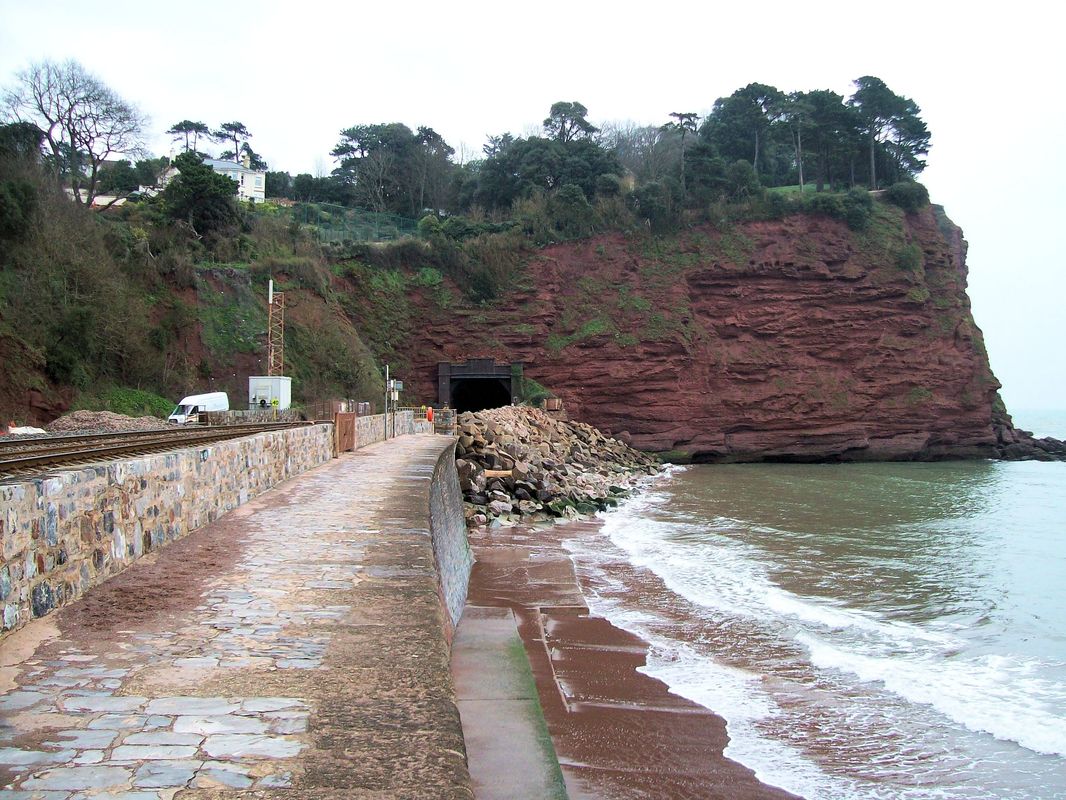
One of the solutions proposed by Network Rail along the length of line where the cliffs are seen to be the greatest threat is a new alignment further out on the foreshore. This would diverge from the existing within Parson's Tunnel and emerge from the cliff seaward of the present portal. It would then run above a new sea wall of modern design. 23rd March 2017 Copyright Colin Burges
Hymek celebrates a 40th Anniversary
- an article by Neil Phillips
Another week, another anniversary! I was (am!) a big Hymek fan so when a group announced it was planning to preserve one I had to join. Nice to think my donations helped save it…..from memory it cost the DEG £3,510.
Being a member of the Diesel & Electric Group at the time (since renamed Diesel & Electric Preservation Group) I was invited to the West Somerset Railway to participate in Hymek D7017’s first passenger train working in preservation on 19th March 1977 – 40 years ago this Sunday. D7017 has now spent over three times longer in preservation than it did in BR service! It was also the first ex-BR diesel locomotive saved for preservation by a group. For reasons now not entirely clear I travelled from Swindon to Taunton via Reading, this took me past Didcot Railway Centre (on still almost-new HST set 253001) where I noted classmate and now shedmate D7018 standing outside the depot. Unfortunately the bright and sunny conditions which had greeted the ‘Western Tribute’ final special 3 weeks earlier had long gone, but at least the rain just about held off.
Should I try to make this more relevant to Cornwall? OK, here goes….. Although D7017 has paid at least one visit to the Bodmin & Wenford Railway since preservation, it is known to have visited Cornwall on two occasions while in BR service – one day in autumn 1967 I discovered it parked in Truro’s bay platform (I was surprised, I’d expected either D7029 or D7088 – again!), and it powered the Kensington Olympia – St Austell Motorail service on 12th June 1971 (this was the closest Hymeks ever got to regular diagramming in Cornwall, for peak Summer Saturdays 1970 & 1971, with the loco stabled at St Blazey all day). Also, after being secured for preservation D7017 was towed to Taunton on 31st July 1975 via the Berks & Hants line by 25152 - as D7502 this Class 25 was used for crew training on the type between Penzance and Truro in January 1972 (as per my photo in ‘Truro – Gallery 2’). OK, I admit that’s a more tenuous link…..!
Best regards, Neil Phillips Many thanks Neil
- an article by Neil Phillips
Another week, another anniversary! I was (am!) a big Hymek fan so when a group announced it was planning to preserve one I had to join. Nice to think my donations helped save it…..from memory it cost the DEG £3,510.
Being a member of the Diesel & Electric Group at the time (since renamed Diesel & Electric Preservation Group) I was invited to the West Somerset Railway to participate in Hymek D7017’s first passenger train working in preservation on 19th March 1977 – 40 years ago this Sunday. D7017 has now spent over three times longer in preservation than it did in BR service! It was also the first ex-BR diesel locomotive saved for preservation by a group. For reasons now not entirely clear I travelled from Swindon to Taunton via Reading, this took me past Didcot Railway Centre (on still almost-new HST set 253001) where I noted classmate and now shedmate D7018 standing outside the depot. Unfortunately the bright and sunny conditions which had greeted the ‘Western Tribute’ final special 3 weeks earlier had long gone, but at least the rain just about held off.
Should I try to make this more relevant to Cornwall? OK, here goes….. Although D7017 has paid at least one visit to the Bodmin & Wenford Railway since preservation, it is known to have visited Cornwall on two occasions while in BR service – one day in autumn 1967 I discovered it parked in Truro’s bay platform (I was surprised, I’d expected either D7029 or D7088 – again!), and it powered the Kensington Olympia – St Austell Motorail service on 12th June 1971 (this was the closest Hymeks ever got to regular diagramming in Cornwall, for peak Summer Saturdays 1970 & 1971, with the loco stabled at St Blazey all day). Also, after being secured for preservation D7017 was towed to Taunton on 31st July 1975 via the Berks & Hants line by 25152 - as D7502 this Class 25 was used for crew training on the type between Penzance and Truro in January 1972 (as per my photo in ‘Truro – Gallery 2’). OK, I admit that’s a more tenuous link…..!
Best regards, Neil Phillips Many thanks Neil
Harry patch back in service.
Guy Vincent
Guy Vincent
43172 'Harry Patch' was quickly repaired at Laira following it's extended stay at Castle Cary in February. The power car was moved up to Westbury with a pair of wheelskates applied at a maximum speed of 10mph on the night of 14th, Colas loco 70809 being used. By 10am on 15th 'Harry' had been loaded onto an Allelys low-loader and was removed via the A350, M4 and M5 to Laira depot where the necessary work was quickly undertaken. 43172 returned to normal traffic on Monday morning, February 20th and has performed well ever since. On the murky morning of March 16th it called at Westbury atop 1C74 0706 Paddington-Penzance, running exactly to time.
An unusual working Devonport Dockyard to Exeter Riverside via Penzance
Roger Salter Andrew Triggs Roger Winnen
Roger Salter Andrew Triggs Roger Winnen
The NEW
EXETER (St Davids)
EXETER (St Davids)
Press release Friday 24 February
New £40 million rail depot planned for Exeter
Planning consent for a new rail depot at Exeter has been submitted by Network Rail on behalf of GWR [today]. This submission forms part of a wider programme of rail improvements to increase rail capacity in the South West, including new and refreshed trains and station improvements.
The train operator GWR is looking to improve the existing Exeter Olds View Depot train maintenance facility in Exeter to accommodate an increase in fleet size in the Devon and Cornwall area which will lead to more seats, and more frequent services.
GWR Regional Development Manager West, Dan Okey explains:
“With brand new electric trains coming to suburban London services and bi-mode Intercity Express Trains on the mainline in Devon and Cornwall, this will allow us to move part of our existing regional fleet to Exeter - providing more carriages, and more frequent services to the area.”
The new depot is situated alongside existing facilities next to Exeter St.Davids station and will provide enhanced modern servicing, cleaning and maintenance facilities necessary to support these trains. The plans include office and welfare facilities for staff and the depot is designed to provide improved facilities for train maintenance.
GWR is seeking to begin the new depot, subject to planning consent being secured, in Spring 2018 and will complete in mid 2019.
New electric trains in London and Thames Valley area, and new Intercity Express Trains across the GWR mainline network will enable GWR to provide significant improvements in capacity on mainline, regional and local suburban services.
These changes are part of the wider franchise improvements that GWR is delivering and is one of the largest fleet upgrades that the Great Western network will see in a generation.
Notes to editors
Great Western Railway (GWR) provides high speed, commuter, regional and branch line train services. We help over 100 million passengers reach their destinations every year - across South Wales, the West Country, the Cotswolds, and large parts of Southern England.
We’re currently seeing the biggest investment in the network since Brunel so we can offer more trains, more seats, and shorter, more frequent journeys and continue the network’s heritage of helping connect more businesses to new and prosperous markets. Through a series of initiatives we aim to be a good neighbour to the communities we serve and are committed to making a positive social impact in those regions. Learn how we're Building a Greater West at GWR.com. GWR is a FirstGroup company.
James Davis | Media Relations Manager | Great Western Railway
External Communications | Milford House | 1 Milford Street | Swindon | SN1 1HL
E: [email protected] | T: 0845 410 4444 | M: 07703 890 711
New £40 million rail depot planned for Exeter
Planning consent for a new rail depot at Exeter has been submitted by Network Rail on behalf of GWR [today]. This submission forms part of a wider programme of rail improvements to increase rail capacity in the South West, including new and refreshed trains and station improvements.
The train operator GWR is looking to improve the existing Exeter Olds View Depot train maintenance facility in Exeter to accommodate an increase in fleet size in the Devon and Cornwall area which will lead to more seats, and more frequent services.
GWR Regional Development Manager West, Dan Okey explains:
“With brand new electric trains coming to suburban London services and bi-mode Intercity Express Trains on the mainline in Devon and Cornwall, this will allow us to move part of our existing regional fleet to Exeter - providing more carriages, and more frequent services to the area.”
The new depot is situated alongside existing facilities next to Exeter St.Davids station and will provide enhanced modern servicing, cleaning and maintenance facilities necessary to support these trains. The plans include office and welfare facilities for staff and the depot is designed to provide improved facilities for train maintenance.
GWR is seeking to begin the new depot, subject to planning consent being secured, in Spring 2018 and will complete in mid 2019.
New electric trains in London and Thames Valley area, and new Intercity Express Trains across the GWR mainline network will enable GWR to provide significant improvements in capacity on mainline, regional and local suburban services.
These changes are part of the wider franchise improvements that GWR is delivering and is one of the largest fleet upgrades that the Great Western network will see in a generation.
Notes to editors
Great Western Railway (GWR) provides high speed, commuter, regional and branch line train services. We help over 100 million passengers reach their destinations every year - across South Wales, the West Country, the Cotswolds, and large parts of Southern England.
We’re currently seeing the biggest investment in the network since Brunel so we can offer more trains, more seats, and shorter, more frequent journeys and continue the network’s heritage of helping connect more businesses to new and prosperous markets. Through a series of initiatives we aim to be a good neighbour to the communities we serve and are committed to making a positive social impact in those regions. Learn how we're Building a Greater West at GWR.com. GWR is a FirstGroup company.
James Davis | Media Relations Manager | Great Western Railway
External Communications | Milford House | 1 Milford Street | Swindon | SN1 1HL
E: [email protected] | T: 0845 410 4444 | M: 07703 890 711
The above picture was first shown to CRS Members at the meeting held on Saturday 11th February 2017 in a detailed presentation given by John Saville Fleet Manager West for GWR.
Western Tribute
Roger Aston, John Cornelius, and Roger Winnen
Roger Aston, John Cornelius, and Roger Winnen
READING
Good Morning Keith, I went on the 'western tribute railtour' on 26-2-1977. My goodness how time flies.
I travelled up to London on the overnight train from Taunton. The trip was superb throughout with sunshine all day until it got dark. i managed to grab a couple of pics at Paddington before we started and few at Swansea. Not wishing to have a second overnight trip travelling back from London,I left the tour at Taunton on the way back, when it stopped to change crews.
I stood for a while on the platform listening to the two locos as they powered away into the distance, sheer magic. cheers JOHN C.
I travelled up to London on the overnight train from Taunton. The trip was superb throughout with sunshine all day until it got dark. i managed to grab a couple of pics at Paddington before we started and few at Swansea. Not wishing to have a second overnight trip travelling back from London,I left the tour at Taunton on the way back, when it stopped to change crews.
I stood for a while on the platform listening to the two locos as they powered away into the distance, sheer magic. cheers JOHN C.
SWANSEA
EXETER
PLYMOUTH
The WESTERNS BOW OUT
40 years ago today 26th February 1977
- an article by Neil Phillips
40 years ago today 26th February 1977
- an article by Neil Phillips
Any diesel-hydraulic fanatic worthy of the title will know that this Sunday, 26th February, marks 40 years since the end of the Western Class 52s and also, of course, the Western Region’s 19-year diesel-hydraulic era. The final day saw D1013 + D1023 haul the Paddington – Swansea – Plymouth – Paddington ‘Western Tribute’ special throughout, with D1010 + D1048 shadowing the tour partway as back-up. All four survive in preservation.
The photos show the first two legs of the tour - it was dark by the time the train was on the third and final leg although I was in position on the surviving footbridge at the site of the former Patney & Chirton station on the Berks & Hants line to witness its passing. The day had thankfully been bright and sunny, although by 22.15 it was bitterly cold! Vision may have been impaired by then but the still clear night air meant the sound of 4 Maybachs working flat out could be heard for miles in both directions.
The photos show the first two legs of the tour - it was dark by the time the train was on the third and final leg although I was in position on the surviving footbridge at the site of the former Patney & Chirton station on the Berks & Hants line to witness its passing. The day had thankfully been bright and sunny, although by 22.15 it was bitterly cold! Vision may have been impaired by then but the still clear night air meant the sound of 4 Maybachs working flat out could be heard for miles in both directions.
Turning the clock back eight months to the day, bitter cold was certainly not an issue as the great heatwave of 1976 had just arrived and Cornwall was still all go on the Western front! I was only a visitor to Cornwall by then but I managed to pick the week the heat started. Of all my Western photos this one of D1072 blasting out of Truro westbound with the driver clearly enjoying himself is my favourite. Western Glory indeed! By the time D1072 was on its return run I had decamped to Tomperrow (we knew it as Hugus) and this photo would be my very last one of a Western in Cornwall. Well, until 9th August 2003 anyway…… This location was magic on Summer Saturday afternoons when the Warships were still in traffic, as they had to work harder than the Westerns to lift 12 coaches uphill from Penwithers Junction. Happy days!
Dainton Tunnel Signal Box and Westbury Iron Works
- an article by Guy Vincent
Dainton Tunnel Signal Box was a later pattern BR (WR) timber box and it was commissioned on 14.02.1965. Some may be aware that following closure on 02.05.1987 the box was not destroyed but instead carefully dismantled and removed to Westbury in Wiltshire where it is used by West Wilts Youth Sailing Club as a club recreational facility and store. Until the woodwork was repainted a couple of years ago the outline of the original name board was clearly visible. One change from BR days is that the external staircase is now at the opposite end. Similar 'Plywood Wonders' were located in Devon at Eggesford and Exeter City Basin. The Dainton 'box is just off Station Road in Westbury at the bottom of Station Approach and opposite the Railway Inn, next to a large lake. The lake came about due to the digging of a large pit in the later part of the 19th century for the extraction of iron ore. Iron ore was discovered during the building of the Wilts Somerset and Weymouth Railway in 1847-8 and the Westbury Iron Co. started production in 1857. The ore was used at the Westbury Ironworks which stood adjacent to Westbury station (where the large car auction site is today) until the late 1930s. Once ore extraction ceased the 'minehole' was allowed to fill with water and is one of three close to the railway. Demolition of the works was completed by 1939.
G Vincent 15.02.2017 Many thanks indeed for your article and pictures
G Vincent 15.02.2017 Many thanks indeed for your article and pictures
Westbury
Go to maps http://maps.nls.uk/geo/explore
Type in ‘Westbury’ and Select OS Map 25” 1892 – 1905
On the North West side of the station you will find the Iron Works.
Note the sidings and in addition a tramway extending about a mile to the south west, the far end of the tramway passing under the main line into Westbury. The tramway also extends to the north east, one leg passing under the main Westbury – Trowbridge line.
At this time there is no Westbury avoiding line – this wasn’t opened between Fairwood and Heywood Road Junction until 1933. Note that the current main line east of Westbury is shown as ‘under construction. There is no chord line between Hawkerbridge Junction and Westbury East junction, this wasn’t opened until 1942.
Note the large Minehole Lake. The open cast mining left the lakes below the Ham known as the mineholes and tunnels for the tramway under Station Road and Hawkeridge Road. How the current boating lake, one time quarry was connected to the Iron Works on the far side of the station is not known.
Go to maps http://maps.nls.uk/geo/explore
Type in ‘Westbury’ and Select OS Map 25” 1892 – 1905
On the North West side of the station you will find the Iron Works.
Note the sidings and in addition a tramway extending about a mile to the south west, the far end of the tramway passing under the main line into Westbury. The tramway also extends to the north east, one leg passing under the main Westbury – Trowbridge line.
At this time there is no Westbury avoiding line – this wasn’t opened between Fairwood and Heywood Road Junction until 1933. Note that the current main line east of Westbury is shown as ‘under construction. There is no chord line between Hawkerbridge Junction and Westbury East junction, this wasn’t opened until 1942.
Note the large Minehole Lake. The open cast mining left the lakes below the Ham known as the mineholes and tunnels for the tramway under Station Road and Hawkeridge Road. How the current boating lake, one time quarry was connected to the Iron Works on the far side of the station is not known.
MORE INFORMATION ON THE TRAMWAY CONNECTION FROM THE IRON WORKS TO THE MINEHOLE.
Hello Keith,
Thanks for your interest in the photos of Westbury Minehole and the ex Dainton signal box. Having never given much thought to the layout of the Ironworks tramway system I had a look in several of my books but was unable to find anything pre 1920. As you know, Westbury station was completely rebuilt in 1898-99 prior to the opening of the direct line to Patney and I think this provides the answer. Try www.old maps.co.uk and you will see on the OS County Series for Wiltshire 1890 that the Minehole in front of the station was indeed connected by a tramway that passed under the station approach road and main line just to the west of the bridge carrying Station Road. At a guess I would suggest by 1898 that particular pit was no longer being worked so the tramway was removed/infilled and other pits as shown on later maps were used instead.
A book I have on Westbury states that limestone was also dug out locally for use at the Ironworks, water was extracted from the juvenile River Biss and coke was brought up by rail from the North Somerset Coalfield around Radstock.
There is another mystery about Westbury I have pondered over for many years. The large iron bridge at the end of the station was built in 1899 but on the town side of that is/was another bridge made of stone and similar in appearance to those between Thingley and Frome and built between 1846 and 1850. This bridge was at completely the wrong angle for the original line out towards Trowbridge, too far over and of the wrong era to serve the Stert extension. Post-1899 it took the road over a couple of sidings leading into a small yard that was closed c1968. It is my belief that when the line was first built this bridge was located approximately where the iron bridge is today and then in 1898-9 it was dismantled and rebuilt in the later position. In the late 1960s the road was widened and realigned as the bridge had a 'dog-leg' alignment and today only the station-side parapet wall is visible in the embankment, the remainder having been completely infilled/demolished. I'll send some pics at a later date on this subject.
Cheers for now, Guy.
PS I've been enjoying the Bridport branch feature recently. I remember seeing the closure notice for the line being posted up on one of the large blue British Transport Advertising boards at Bradford-on-Avon station in the spring of 1975, just as I was getting into the hobby that has been both a delight and a right pain at times ever since!
Many thanks Guy - it's amazing what interest the Bridport branch has created - it's with many thanks to our contributors that the lines history is recorded for all to see.
With regard to the tramway extension from the Iron Works and under the main line and station approach road it is suggested that you consult the 25" map of Westbury. There was one line running the length of the 'Minehole' with a short siding.
Hello Keith,
Thanks for your interest in the photos of Westbury Minehole and the ex Dainton signal box. Having never given much thought to the layout of the Ironworks tramway system I had a look in several of my books but was unable to find anything pre 1920. As you know, Westbury station was completely rebuilt in 1898-99 prior to the opening of the direct line to Patney and I think this provides the answer. Try www.old maps.co.uk and you will see on the OS County Series for Wiltshire 1890 that the Minehole in front of the station was indeed connected by a tramway that passed under the station approach road and main line just to the west of the bridge carrying Station Road. At a guess I would suggest by 1898 that particular pit was no longer being worked so the tramway was removed/infilled and other pits as shown on later maps were used instead.
A book I have on Westbury states that limestone was also dug out locally for use at the Ironworks, water was extracted from the juvenile River Biss and coke was brought up by rail from the North Somerset Coalfield around Radstock.
There is another mystery about Westbury I have pondered over for many years. The large iron bridge at the end of the station was built in 1899 but on the town side of that is/was another bridge made of stone and similar in appearance to those between Thingley and Frome and built between 1846 and 1850. This bridge was at completely the wrong angle for the original line out towards Trowbridge, too far over and of the wrong era to serve the Stert extension. Post-1899 it took the road over a couple of sidings leading into a small yard that was closed c1968. It is my belief that when the line was first built this bridge was located approximately where the iron bridge is today and then in 1898-9 it was dismantled and rebuilt in the later position. In the late 1960s the road was widened and realigned as the bridge had a 'dog-leg' alignment and today only the station-side parapet wall is visible in the embankment, the remainder having been completely infilled/demolished. I'll send some pics at a later date on this subject.
Cheers for now, Guy.
PS I've been enjoying the Bridport branch feature recently. I remember seeing the closure notice for the line being posted up on one of the large blue British Transport Advertising boards at Bradford-on-Avon station in the spring of 1975, just as I was getting into the hobby that has been both a delight and a right pain at times ever since!
Many thanks Guy - it's amazing what interest the Bridport branch has created - it's with many thanks to our contributors that the lines history is recorded for all to see.
With regard to the tramway extension from the Iron Works and under the main line and station approach road it is suggested that you consult the 25" map of Westbury. There was one line running the length of the 'Minehole' with a short siding.
The South Devon Steam Gala
Saturday 18th February 2017
Roger Salter David Tozer & Roger Winnen
Saturday 18th February 2017
Roger Salter David Tozer & Roger Winnen
Celebrity 37057 stables
at Bristol Temple Meads.
4th February 2017
at Bristol Temple Meads.
4th February 2017
Evening Keith,
While at Bristol Temple Meads yesterday I was fortunate enough to be able to take a few shots of Colas Rail's 'retro' class 37 no 37057 resplendent in it's original British Railways green livery. The loco is obviously very well cared for with clean paintwork and absolutely no signs of rust anywhere! Particularly nice touches are the working headcode boxes and authentic builders plates on each cabside (4 in total). Also notice the frost protection grilles over the radiators.
You will be interested to know that 37057 with it's structure gauging train consisting of coaches 9708 977985 and 977986 is due to cover lines in Devon and Cornwall this coming week.
With best regards
Guy V
While at Bristol Temple Meads yesterday I was fortunate enough to be able to take a few shots of Colas Rail's 'retro' class 37 no 37057 resplendent in it's original British Railways green livery. The loco is obviously very well cared for with clean paintwork and absolutely no signs of rust anywhere! Particularly nice touches are the working headcode boxes and authentic builders plates on each cabside (4 in total). Also notice the frost protection grilles over the radiators.
You will be interested to know that 37057 with it's structure gauging train consisting of coaches 9708 977985 and 977986 is due to cover lines in Devon and Cornwall this coming week.
With best regards
Guy V
Many thanks to Guy Vincent for his detailed coverage - four more pictures on the 'Latest News' for the 4th February 2017.
50 Years Ago today 28th January, 1967 the final timetabled services ran from Bodmin Road to Wadebridge and Padstow
Roger Winnen
Roger Winnen
Major Work in Wiltshire January 2017
Avoncliff tracks being refettled
Guy Vincent
Avoncliff tracks being refettled
Guy Vincent
Avoncliff Relaying Job 22.01.2017 (Week one of two)
nb This is the main email on this subject, email 2 contains a further 9 images.
Today (22nd) Network Rail contractors were engaged in a 28 hour possession, the first of two, removing contaminated ballast and installing a liner on the Up Trowbridge line through Avoncliff Aqueduct and Halt on the Bath-Westbury line, a distance of around 100 yards. New ballast was laid, the previously used steel sleepers (about 20 years old) were relaid and new rails put in place including a pre-assembled IBJ for signalling purposes. A fair amount of preparatory work was necessary prior to this work so here is a brief account.
1. New long welded rails and a pair of insulated block joints were dropped off at the site some while ago.
2. Considerable vegetation clearance was undertaken on both sides of the line around the site and beyond, this was done Nov 2016-Jan 2017.
3. Smaller items of equipment necessary for the job were delivered to the site January 2017 together with materials. Larger equipment, machinery etc was delivered to Bradford-on-Avon station car park 1.25 miles away and moved to the site by rail at the start of the possession (all large machinery being road-rail equipped).
4. Due to very limited parking at Avoncliff some of the 'Orange Army' workers were moved to and from Bradford on a rail-mounted caged trolley hauled by one of the site excavators.
An engineers train consisting of approximately 20 empty spoil wagons and 20 loaded with ballast, top and tailed by DBS locos 66019 and 66030 arrived from Westbury on the down line and was split into two portions. The spoil wagons were positioned beyond the aqueduct towards Freshford and the loaded ballast wagons on the Bradford side of Avoncliff Mill user worked crossing.
Due to the constraints of the site (platform clearance and narrow, single bores of the aqueduct bores) it was necessary to remove the spent ballast into small road-rail wagons hauled by road-rail excavators and then move it down to the spoil wagons, here a second excavator was in position with another empty road-rail wagon and the spoil was transferred into this before final unloading into the JNA wagons for disposal.
Once the old ballast was out and the ground levelled off a 'tracktex' liner was rolled out with a mesh layer then placed immediately on top of it. Fresh ballast was brought down in the road-rail wagons, unloaded by excavators and levelled off by bulldozer.
With the ballast in place (and after darkness had descended) the previously used steel sleepers were put back down and the old cut rails removed. The new rails were then installed and temporarily fixed into position with fishplates, tamping then taking place overnight prior to reopening to traffic at 0510hrs on Monday morning. The spoil and empty ballast wagons left the site around 0500hrs this morning (23rd) for Hinksey, Oxford.
Next Sunday should see a further short stretch similarly treated from the platform end towards Bradford. The work is necessary as when the last relaying was done around 1997 a liner wasn't used and the ballast has degraded with 'wet beds' starting to form. The gradient changes here with the line rising towards Bradford so hopefully the work done now will ensure it is many years before any further attention is needed.
Very many thanks to Guy Vincent for this detailed coverage.
nb This is the main email on this subject, email 2 contains a further 9 images.
Today (22nd) Network Rail contractors were engaged in a 28 hour possession, the first of two, removing contaminated ballast and installing a liner on the Up Trowbridge line through Avoncliff Aqueduct and Halt on the Bath-Westbury line, a distance of around 100 yards. New ballast was laid, the previously used steel sleepers (about 20 years old) were relaid and new rails put in place including a pre-assembled IBJ for signalling purposes. A fair amount of preparatory work was necessary prior to this work so here is a brief account.
1. New long welded rails and a pair of insulated block joints were dropped off at the site some while ago.
2. Considerable vegetation clearance was undertaken on both sides of the line around the site and beyond, this was done Nov 2016-Jan 2017.
3. Smaller items of equipment necessary for the job were delivered to the site January 2017 together with materials. Larger equipment, machinery etc was delivered to Bradford-on-Avon station car park 1.25 miles away and moved to the site by rail at the start of the possession (all large machinery being road-rail equipped).
4. Due to very limited parking at Avoncliff some of the 'Orange Army' workers were moved to and from Bradford on a rail-mounted caged trolley hauled by one of the site excavators.
An engineers train consisting of approximately 20 empty spoil wagons and 20 loaded with ballast, top and tailed by DBS locos 66019 and 66030 arrived from Westbury on the down line and was split into two portions. The spoil wagons were positioned beyond the aqueduct towards Freshford and the loaded ballast wagons on the Bradford side of Avoncliff Mill user worked crossing.
Due to the constraints of the site (platform clearance and narrow, single bores of the aqueduct bores) it was necessary to remove the spent ballast into small road-rail wagons hauled by road-rail excavators and then move it down to the spoil wagons, here a second excavator was in position with another empty road-rail wagon and the spoil was transferred into this before final unloading into the JNA wagons for disposal.
Once the old ballast was out and the ground levelled off a 'tracktex' liner was rolled out with a mesh layer then placed immediately on top of it. Fresh ballast was brought down in the road-rail wagons, unloaded by excavators and levelled off by bulldozer.
With the ballast in place (and after darkness had descended) the previously used steel sleepers were put back down and the old cut rails removed. The new rails were then installed and temporarily fixed into position with fishplates, tamping then taking place overnight prior to reopening to traffic at 0510hrs on Monday morning. The spoil and empty ballast wagons left the site around 0500hrs this morning (23rd) for Hinksey, Oxford.
Next Sunday should see a further short stretch similarly treated from the platform end towards Bradford. The work is necessary as when the last relaying was done around 1997 a liner wasn't used and the ballast has degraded with 'wet beds' starting to form. The gradient changes here with the line rising towards Bradford so hopefully the work done now will ensure it is many years before any further attention is needed.
Very many thanks to Guy Vincent for this detailed coverage.
The next day - 23rd January 2017
Avoncliff as seen around 1400 hrs on 23rd. Only 24 hours before these pictures were taken there had been no track in place but a full service was reinstated as planned from 0510 hours this morning. Engineering equipment remains in place for next week's job with some clamped rail joints in evidence and a 20 mph temporary speed restriction in force. Follow-up work will include joining, stretching and welding the rails into continuous lengths so that the 60mph / 70mph Sprinter line speed can be re-applied once the job is completed.
Many thanks to Guy Vincent for this extensive coverage of a very good days work by Network Rail.
More on the Removal of the Camborne Station Footbridge
Roger Winnen and Mick House
Roger Winnen and Mick House
The final day of track renewals between Redruth and Truro.
Week three, day two of work between Wheal Bois and Scorrier 22/01/2017.
By Mick House.
Photos will be added when they come in.
Visual access to the public is very poor on this part of the work site unless we are fortunate in getting some official photos.
Track renewals between Redruth to Truro.
Week three, days one and two, work is moving on and we are between Wheal Bois and Scorrier 21 & 22/01/2017.
By Mick House, Alan Peters and
Graham Mann, Andrew Triggs & Roger Winnen.
Photos will be added when they come in.
The slide show above depicts 70 805 with its VKA Salmon wagons of track panels advancing over the A3047 rail bridge at Scorrier. Copyright Mick House
In the above slide show, 70 805 crawls past the old site of Scorrier Station with its track panel train; you can clearly see part of the old platform in some of the shots.
Copyright Mick House
Copyright Mick House
Above is a sequence of shots showing 70 805 with its train approaching Wheal Busy Crossing and coming to a stand next to 66 846.
Copyright Mick House
Copyright Mick House
Sorry but 70 805 has taken most of the limelight today
Track renewals between Redruth & Truro.
Week two, day two between Cardrew and Wheal Bois 15/01/2017.
By Mick House.
Week two, day two between Cardrew and Wheal Bois 15/01/2017.
By Mick House.
Photos will be added when they come in.
Track renewals between Redruth & Truro.
Week two, day one between Cardrew and Wheal Bois 14/01/2017.
By Mick House Roger Salter & Roger Winnen.
Last week was the start of a number of weeks of Network Rail renewing track between Redruth and Truro.
Today we are heading from Cardrew under the A3047 road bridge near Treleigh Community Primary School towards Wheal Bois.
Today we are heading from Cardrew under the A3047 road bridge near Treleigh Community Primary School towards Wheal Bois.
Again as last week we have Two class 70s this time 804 & 807 and a selection of plant and machinery including two twin jib rail cranes and an assortment of road rail excavators with various attachments are in the possession area stretching from Truro to St Erth.
70807 arrived last night with an empty spoil train and the two twin jib rail cranes, this was followed by 70804 and a train of empty wagons to remove track panels. Words & Photos by Mick House.
70807 arrived last night with an empty spoil train and the two twin jib rail cranes, this was followed by 70804 and a train of empty wagons to remove track panels. Words & Photos by Mick House.
The sequence photos above depicts DRC 78226 Loading a track panel on to the train and moving off.
All photos Copyright Mick House.
All photos Copyright Mick House.
The sequence of photographs below are from the Roger Salter & Roger Winnen collection
Track renewals between Redruth and Truro.
Day two at Cardrew 08/01/2017.
Mike House, Andrew Triggs, and Roger Winnen
Yesterday we had the concreted track being removed and a top layer of the old ballast, then over night new steel sleepers and Continous Welded Rail (CWR).
Today we have two trains of Ballast, the first hauled by 70 802 and the second top and tailed by 70 805 & 70 807
Photos By Mick House and Roger Winnen.
Today we have two trains of Ballast, the first hauled by 70 802 and the second top and tailed by 70 805 & 70 807
Photos By Mick House and Roger Winnen.
Track renewals between Redruth and Truro. Day one 07/01/2017.
Mike House, Roger Salter, Andrew Triggs, Roger Aston, and Roger Winnen.
Mike House, Roger Salter, Andrew Triggs, Roger Aston, and Roger Winnen.
Looking at Stations on the Exmouth Branch
5th January 2017
Roger Winnen
5th January 2017
Roger Winnen
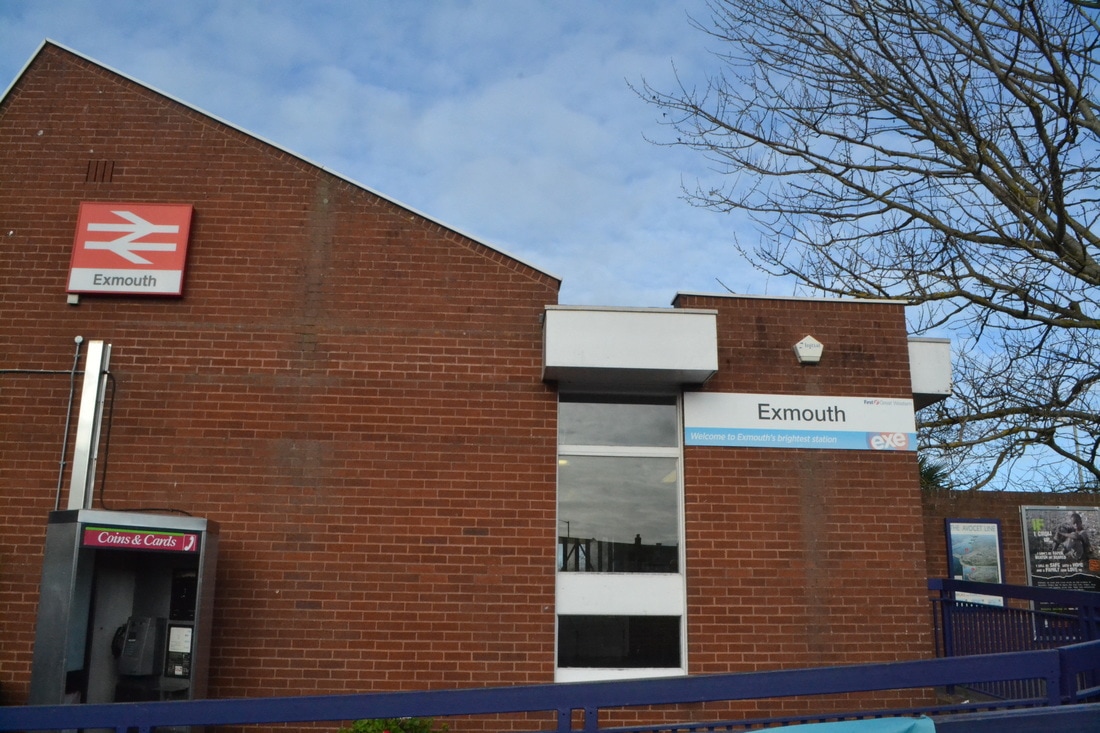
170105aa Exmouth Station was reconstructed and opened on 2nd May, 1986. A former 4 Platform Station was reduced in size to one single platform ultilising part of the former Platform 2. Alongside Exmouth Station was the Stagecoach Bus Garage which has recently been demolished, in its place a large building is under construction. Copyright Roger Winnen
